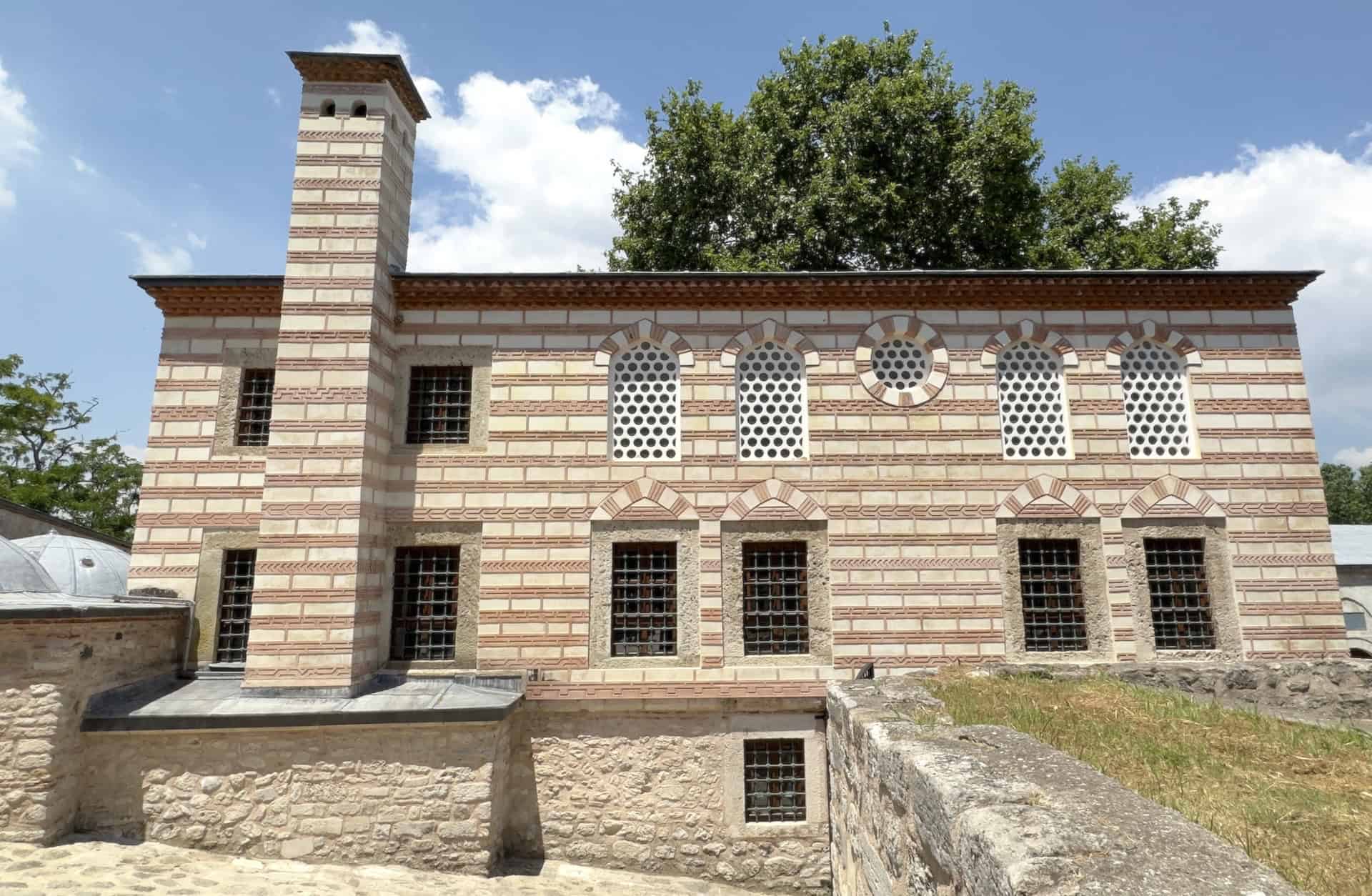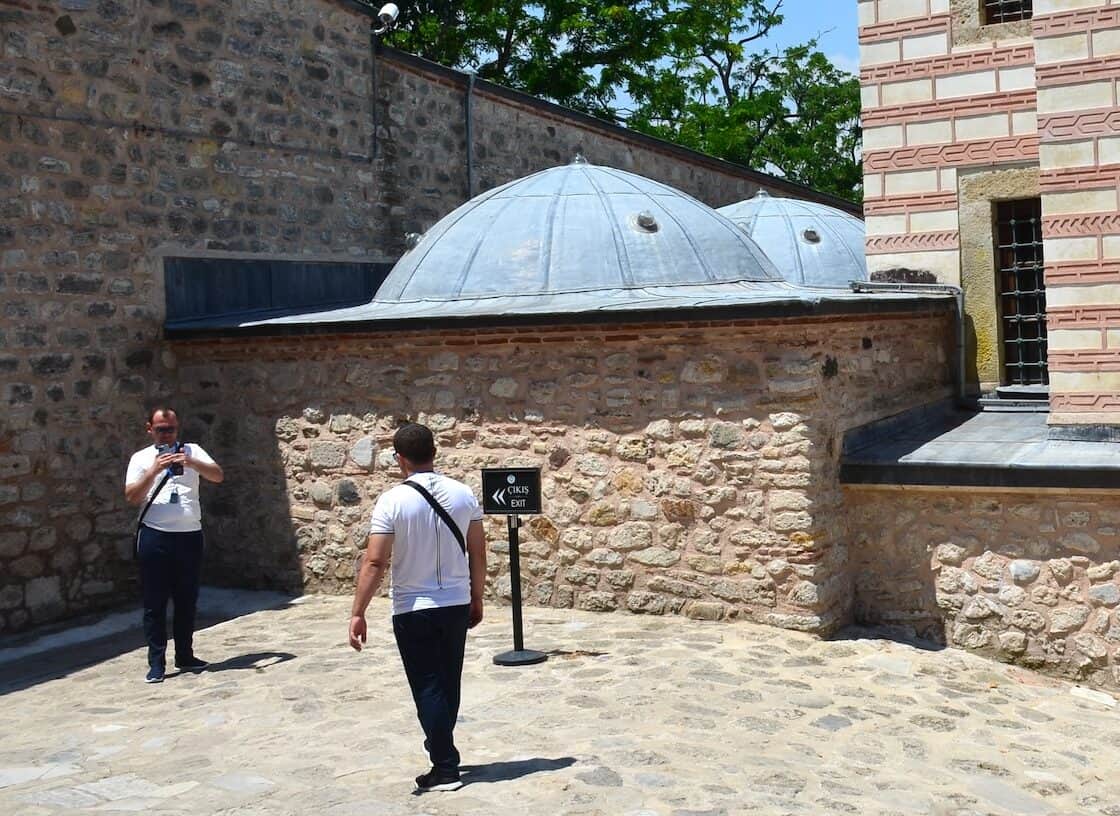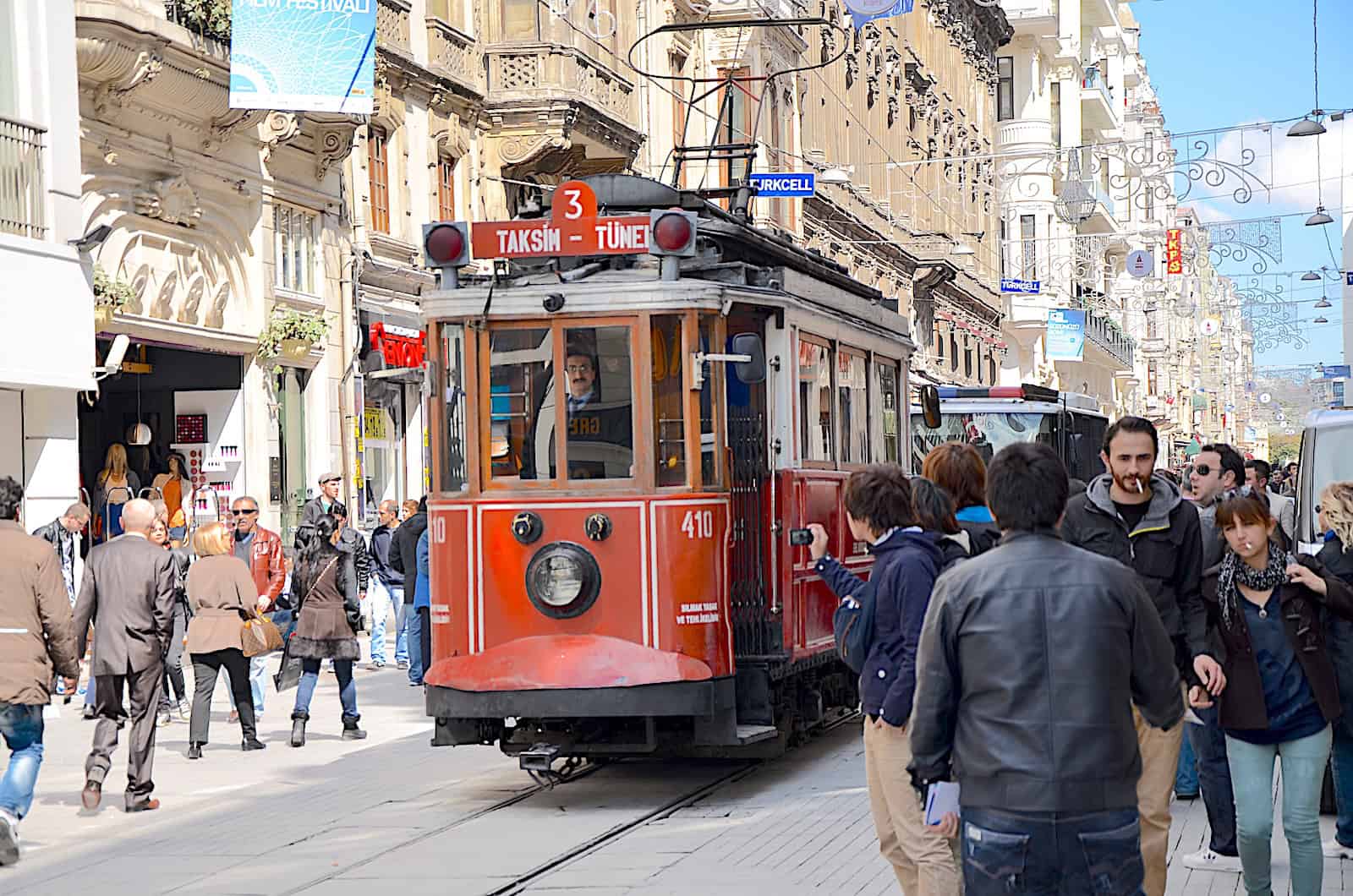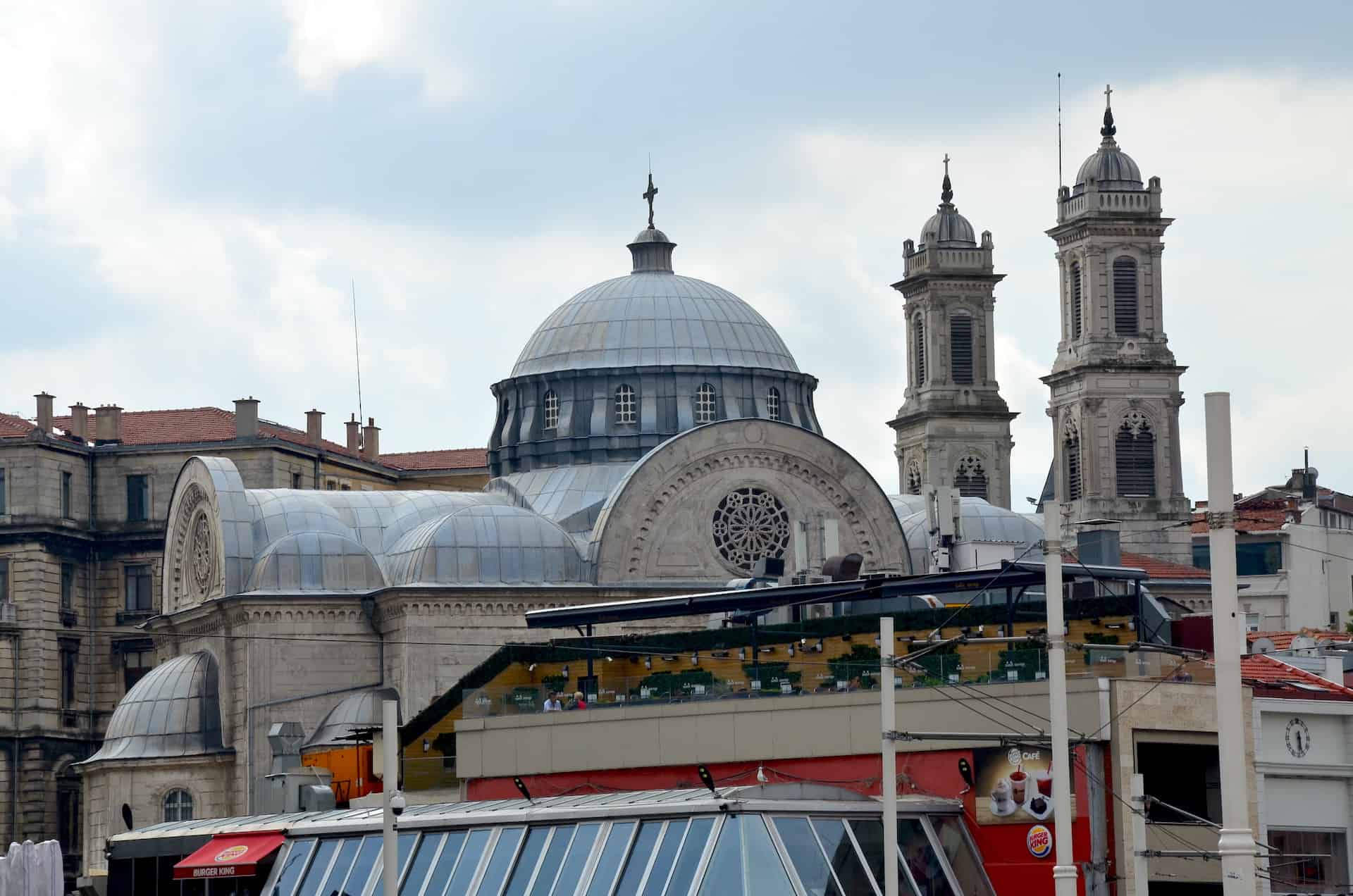Last updated on .
Topkapi Palace (Topkapı Sarayı) was the home of the Ottoman sultans for nearly 400 years. It’s located in the historic city and is part of the UNESCO World Heritage listing for Istanbul.
Brief History of Topkapi Palace
Construction on the palace started in 1459 but it was expanded and renovated over the years, including after a 1509 earthquake and a 1665 fire. The palace was originally referred to as the Imperial New Palace (Saray-ı Cedîd-i Âmire) or New Palace (Yeni Saray) to distinguish it from the first palace at Beyazıt Square.
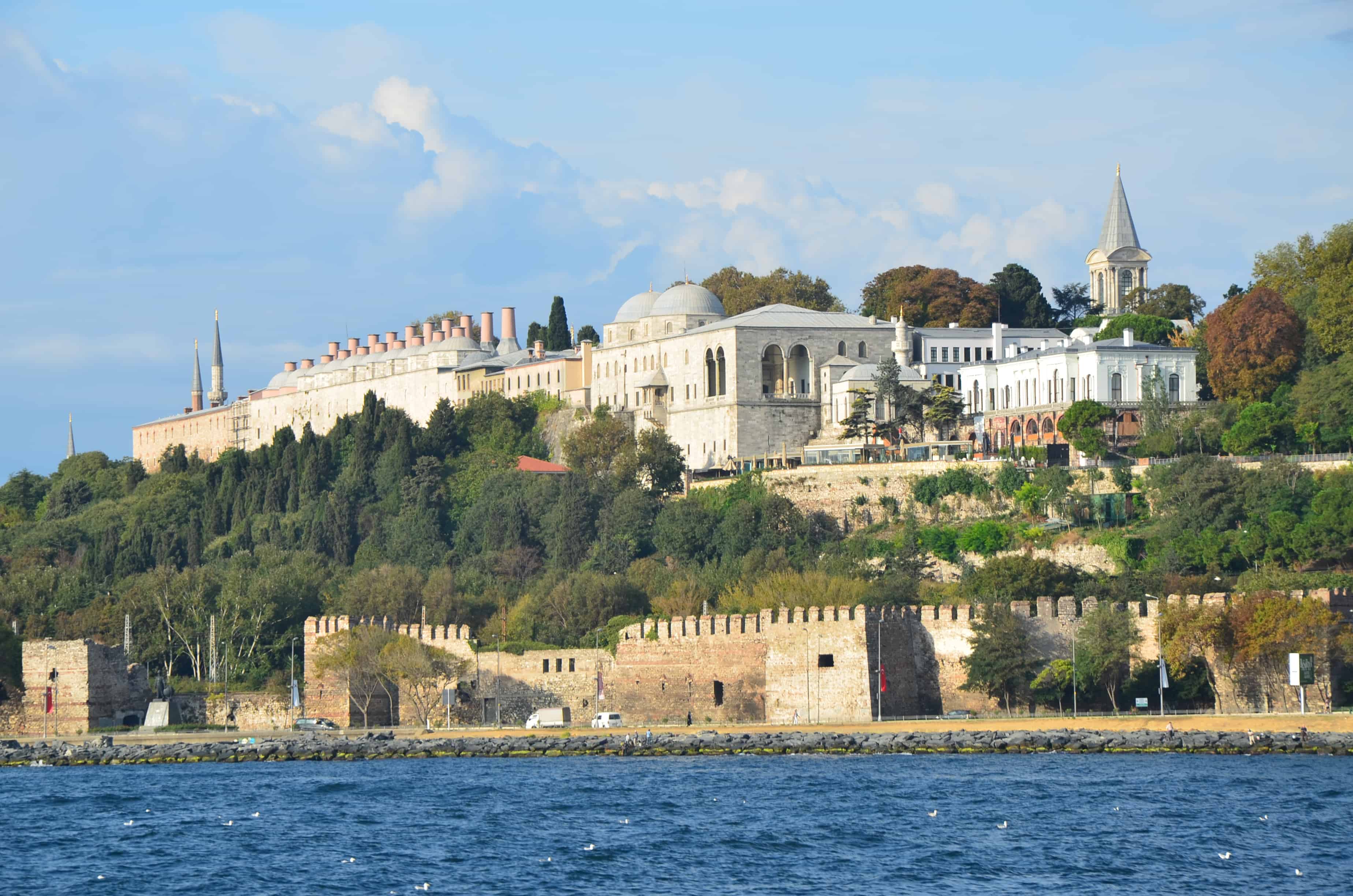
The palace didn’t acquire the name Topkapi (Cannon Gate) until the reign of Mahmud I in the mid-17th century. At its height, it was home to over 4,000 people. Topkapi lost favor with the sultans over the years, and in 1856, the modern Dolmabahçe Palace became the main palace.
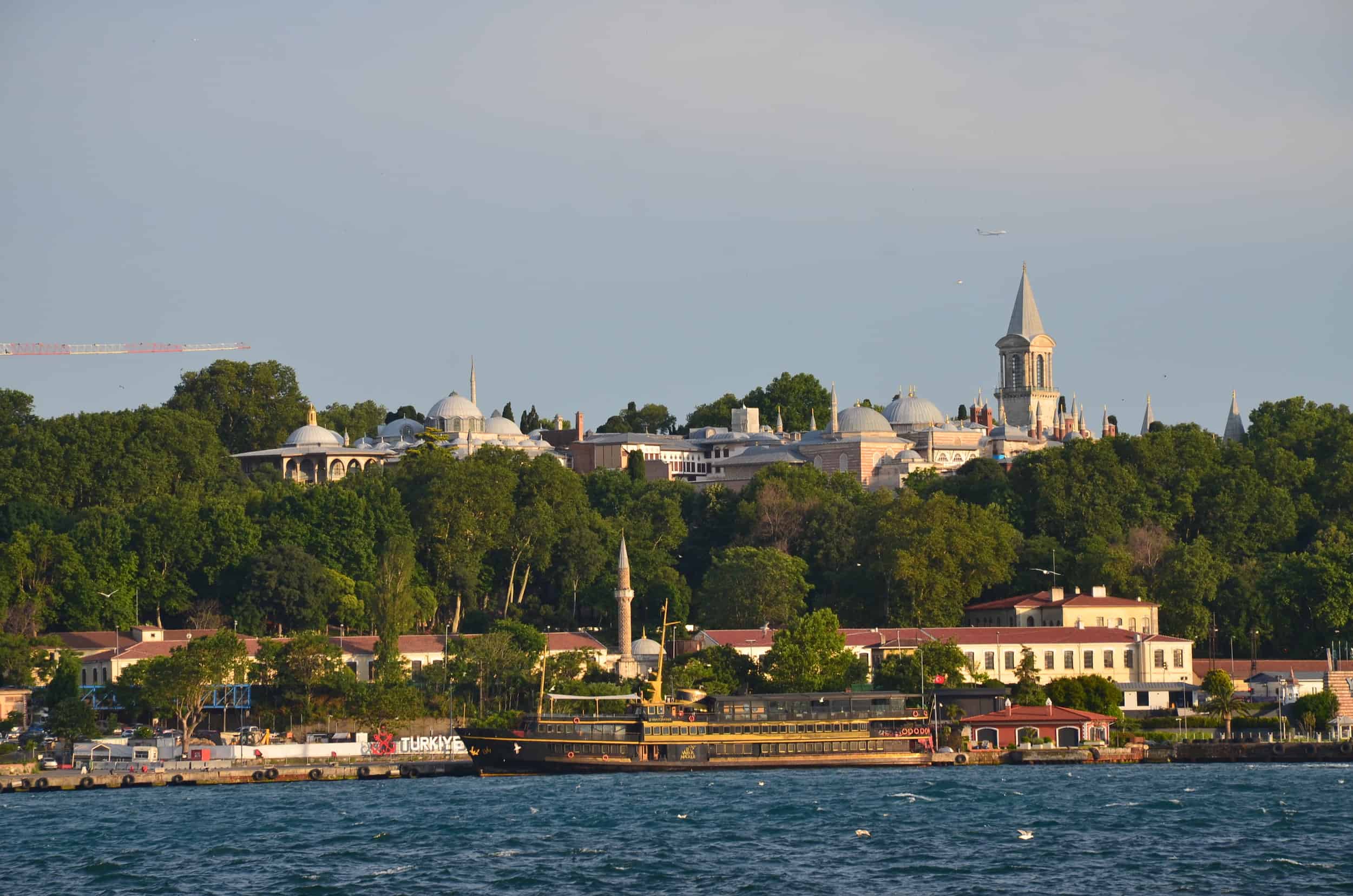
Visiting Topkapi Palace
Admission for foreigners is 2,000₺ for adults, or free with a Museum Pass Istanbul (as of March 2025). Tickets include admission to the Imperial Harem and Hagia Eirine. It’s open every day except Tuesdays. Visit the official website for more info.
There’s a lot to see at Topkapi Palace. Take your time and be patient with the crowds. At least a half day is recommended for a thorough visit to the palace. Audioguides are available to enhance your visit, but I never use them. The interpretive panels are very good.
Konyalı Restaurant
If you’re feeling hungry during a visit to Topkapi Palace, you’re in luck! You’ll find Konyalı in the 1st Courtyard next to Hagia Eirine. They’ve been serving visitors to the palace since 1969.
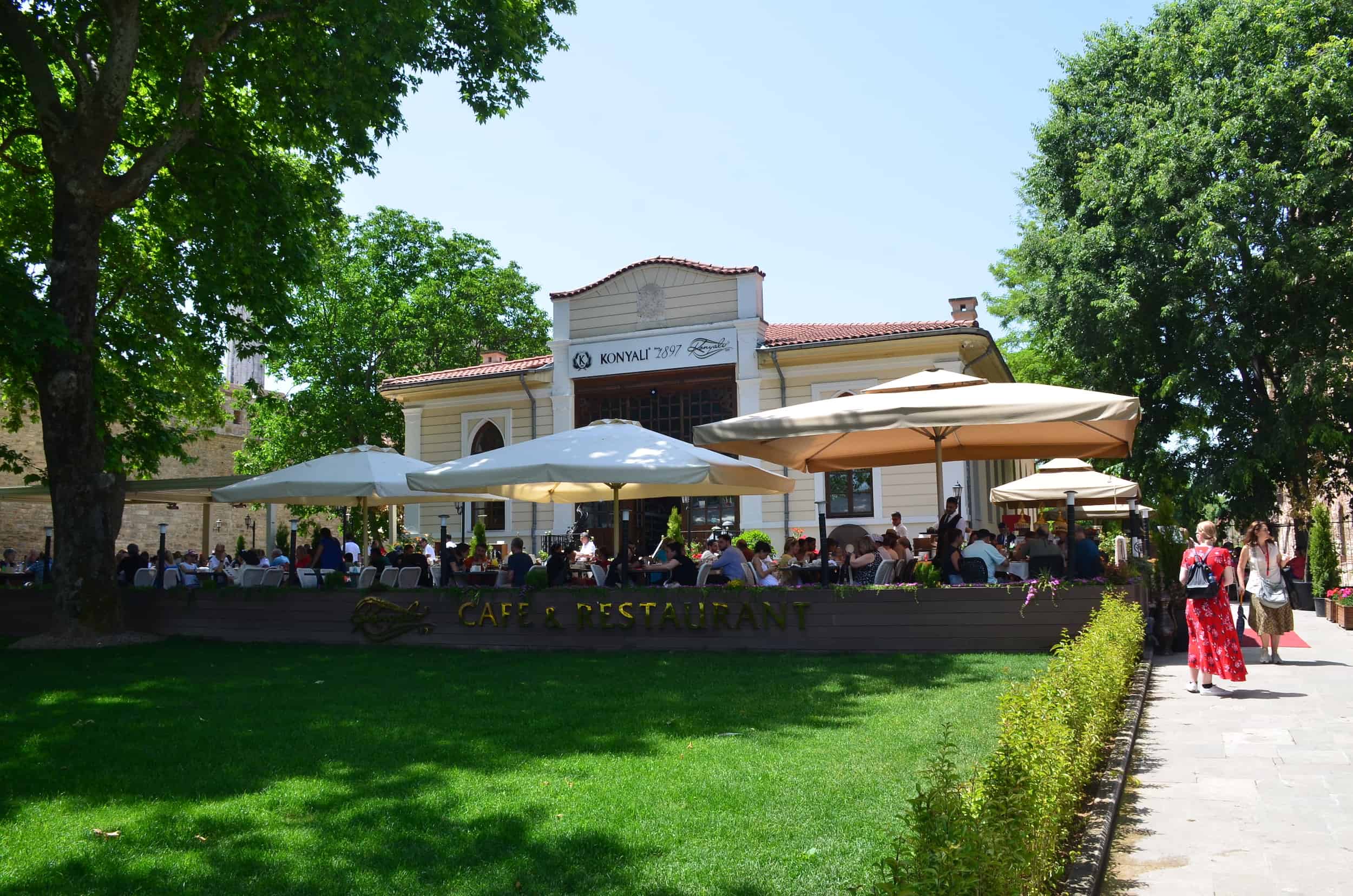
Due to its location within a major tourist attraction, it’s a little pricier than many other restaurants in the city, but the food is very good. They offer a good variety of traditional Turkish dishes.
On my first visit I had the beğendili kebab, which is meat served over a bed of eggplant mash. On my second visitI had the Konyalı yoğurtlusu, which is a kebab with yogurt. It’s basically an İskender kebab. Both were very good.
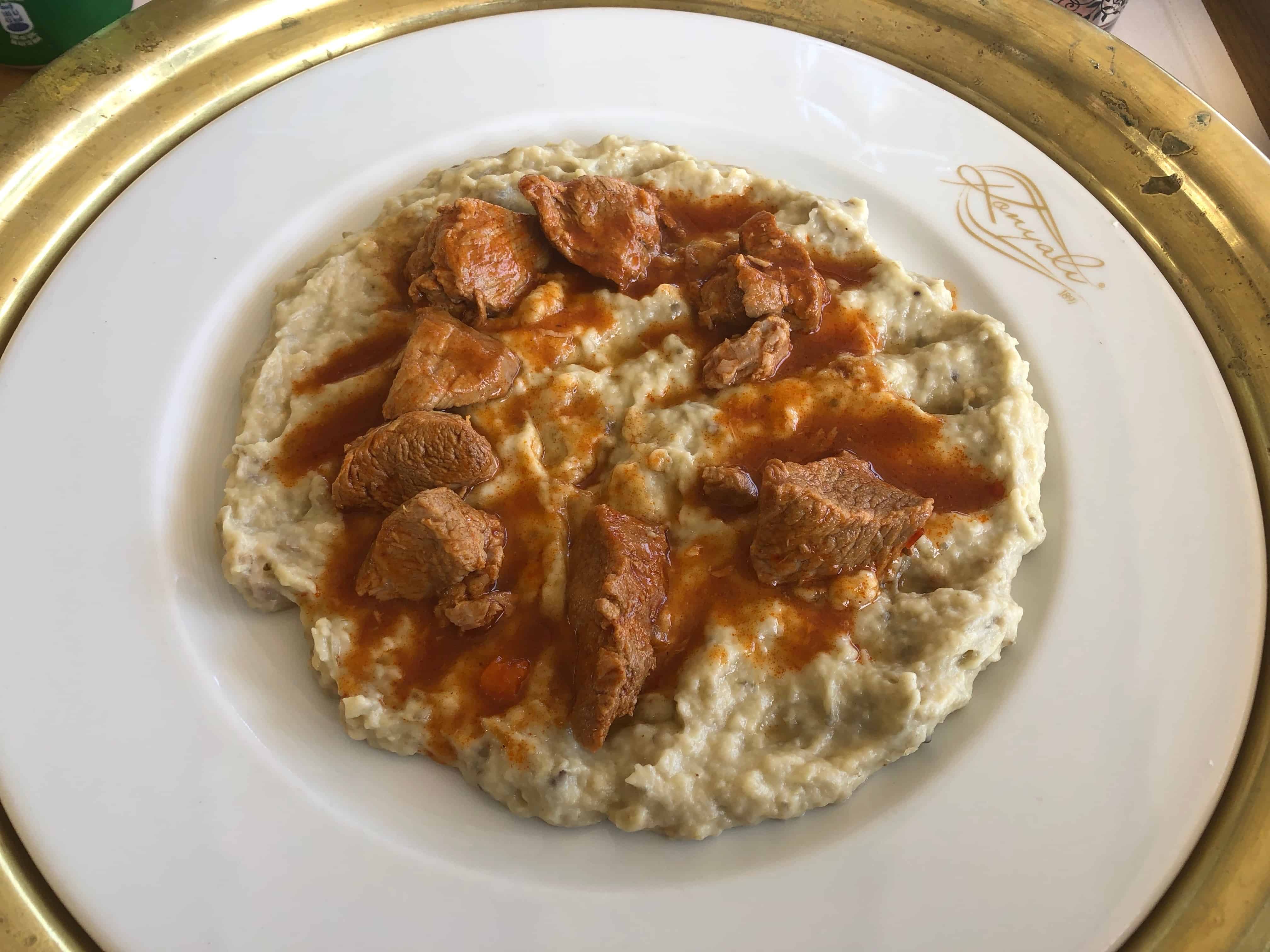
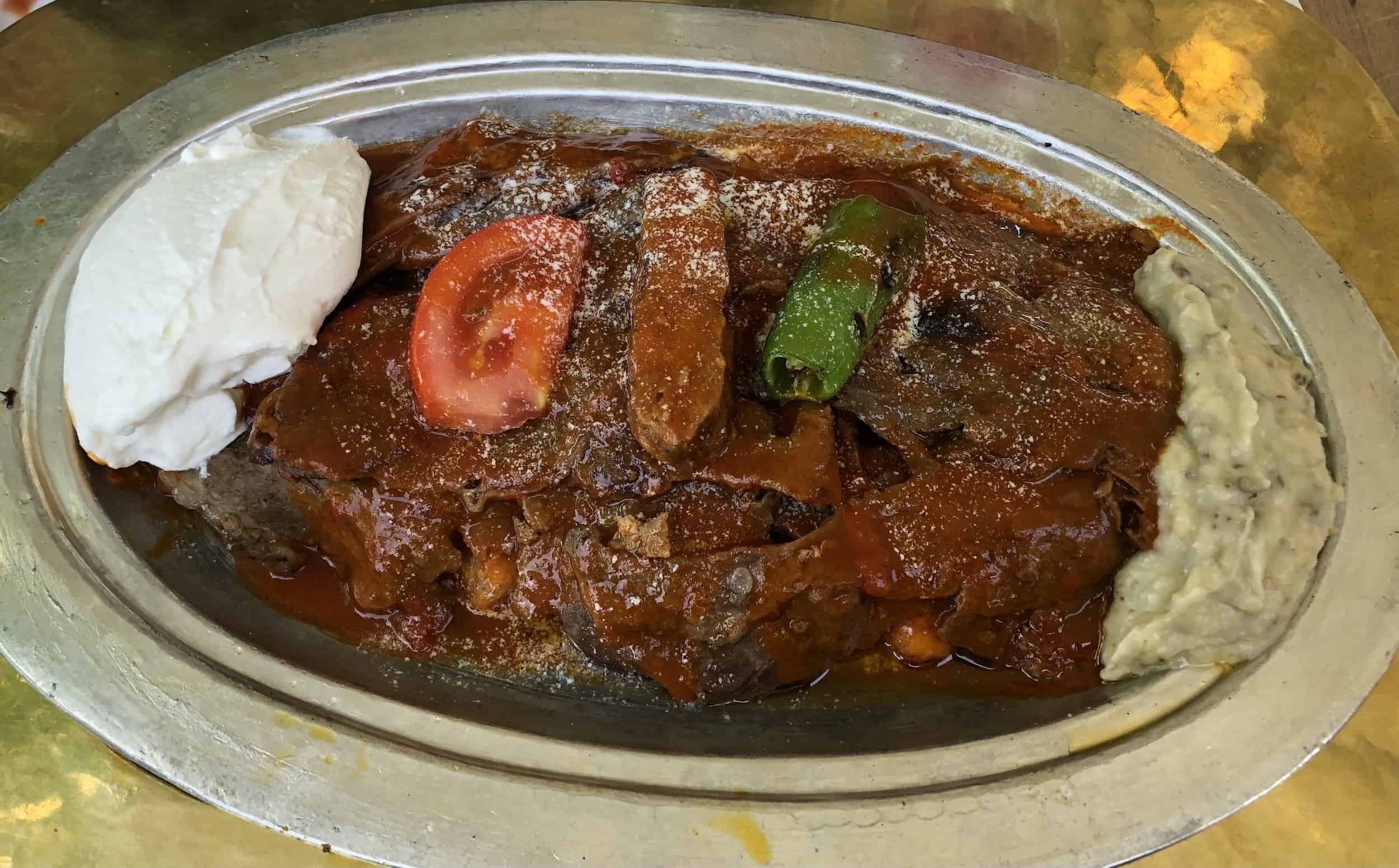
Konyalı used to be located in the 4th Courtyard down the stairs behind the Mecidiye Pavilion but it moved in 2021. I preferred the older location because of the beautiful view of the sea, but it’s for the better as far as conservation of the palace.
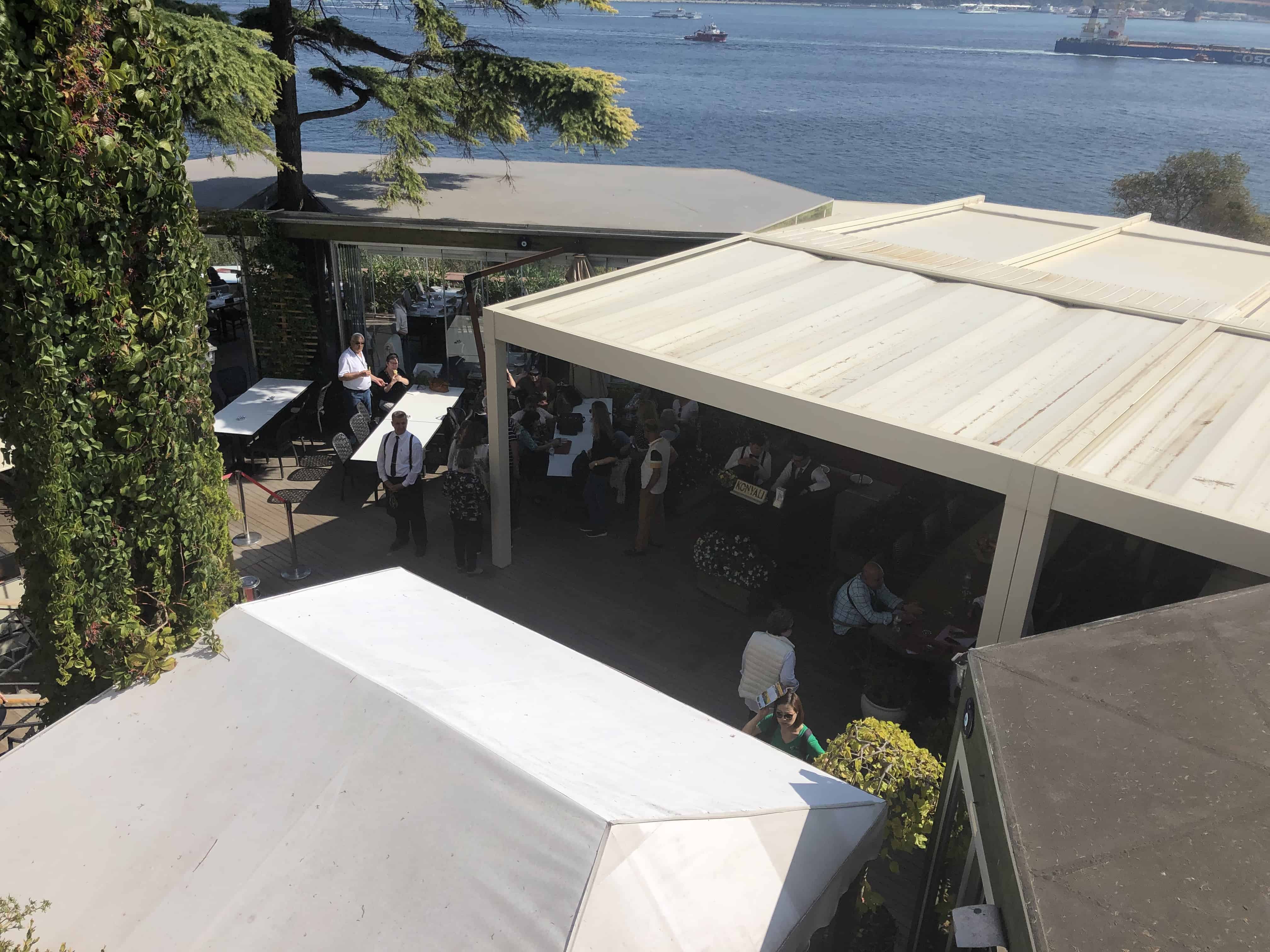
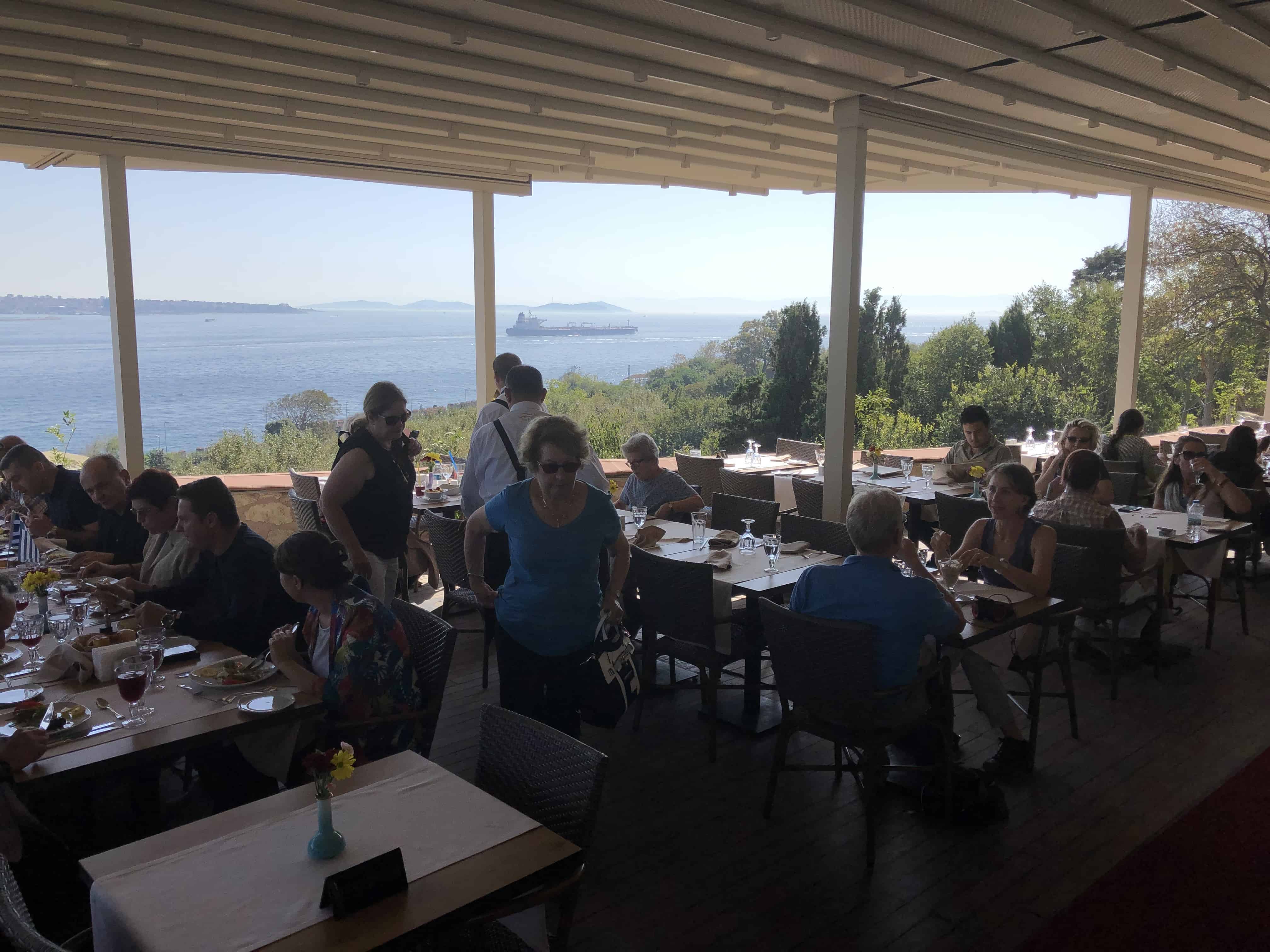
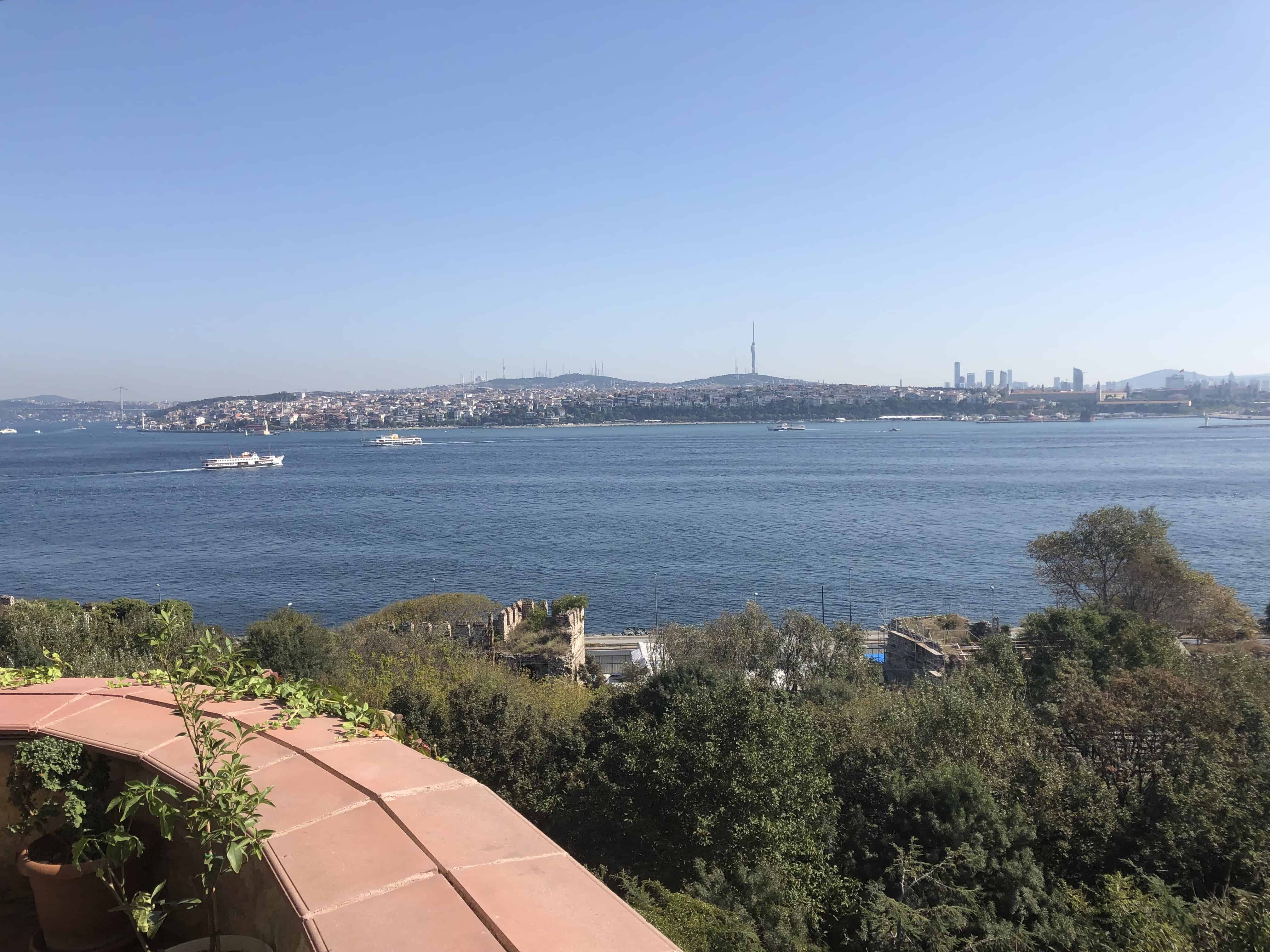
Imperial Gate
The Imperial Gate (Bâb-ı Hümâyûn) is the main entrance to Topkapi Palace and the first of three ceremonial gates. It was commissioned by Mehmed the Conqueror (Mehmed II) in 1478. The marble covering dates back to a reconstruction in 1867 under Sultan Abdülaziz I.
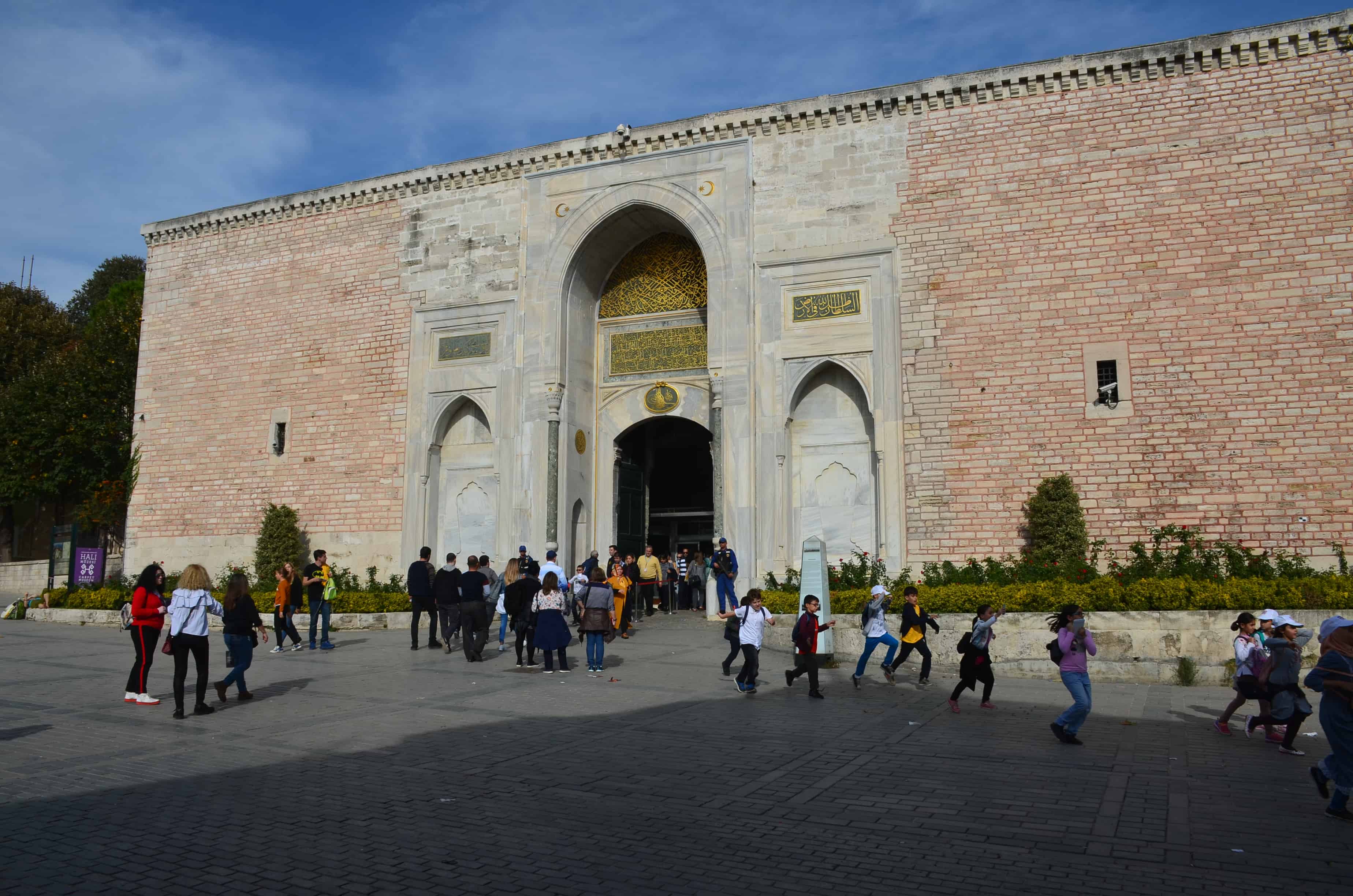
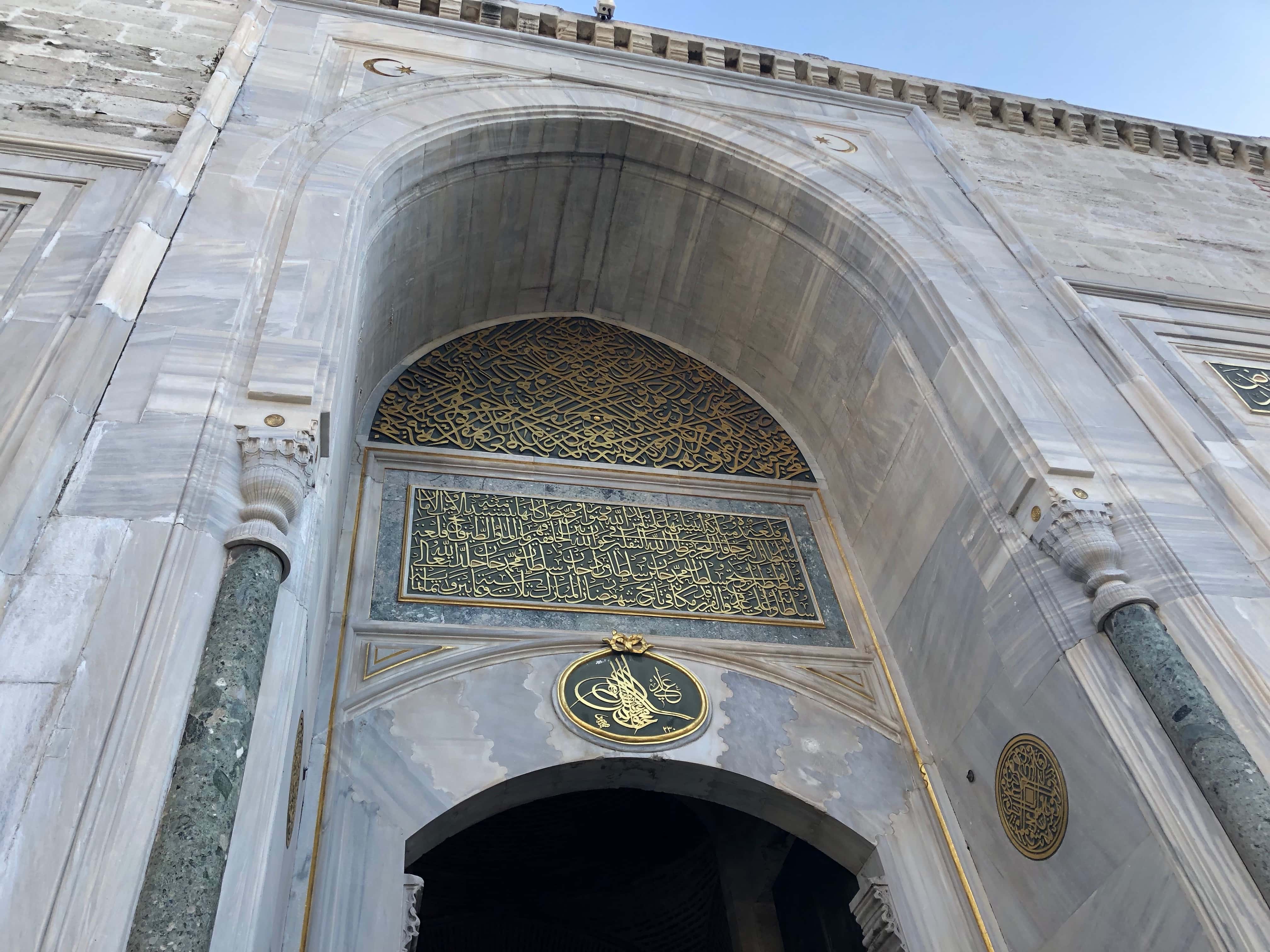
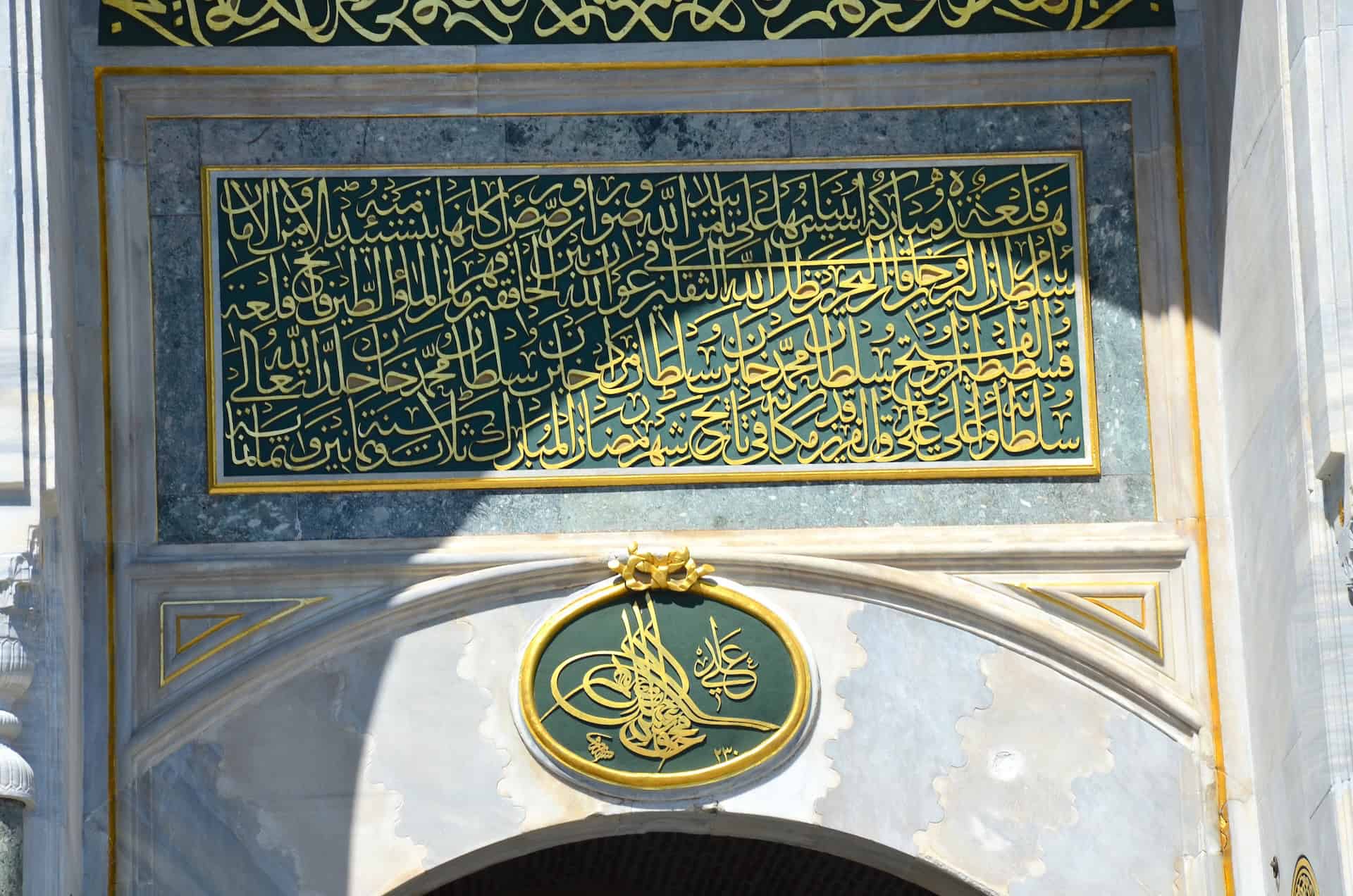
The Imperial Gate originally had a wooden pavilion at the top used by Mehmed II and sometimes the ladies of the Imperial Harem to observe special occasions. It was also used as a depository for property of those who died in the palace without heirs and a receiving department for the treasury. Another name for the gate was the Sultan’s Gate (Saltanat Kapısı).
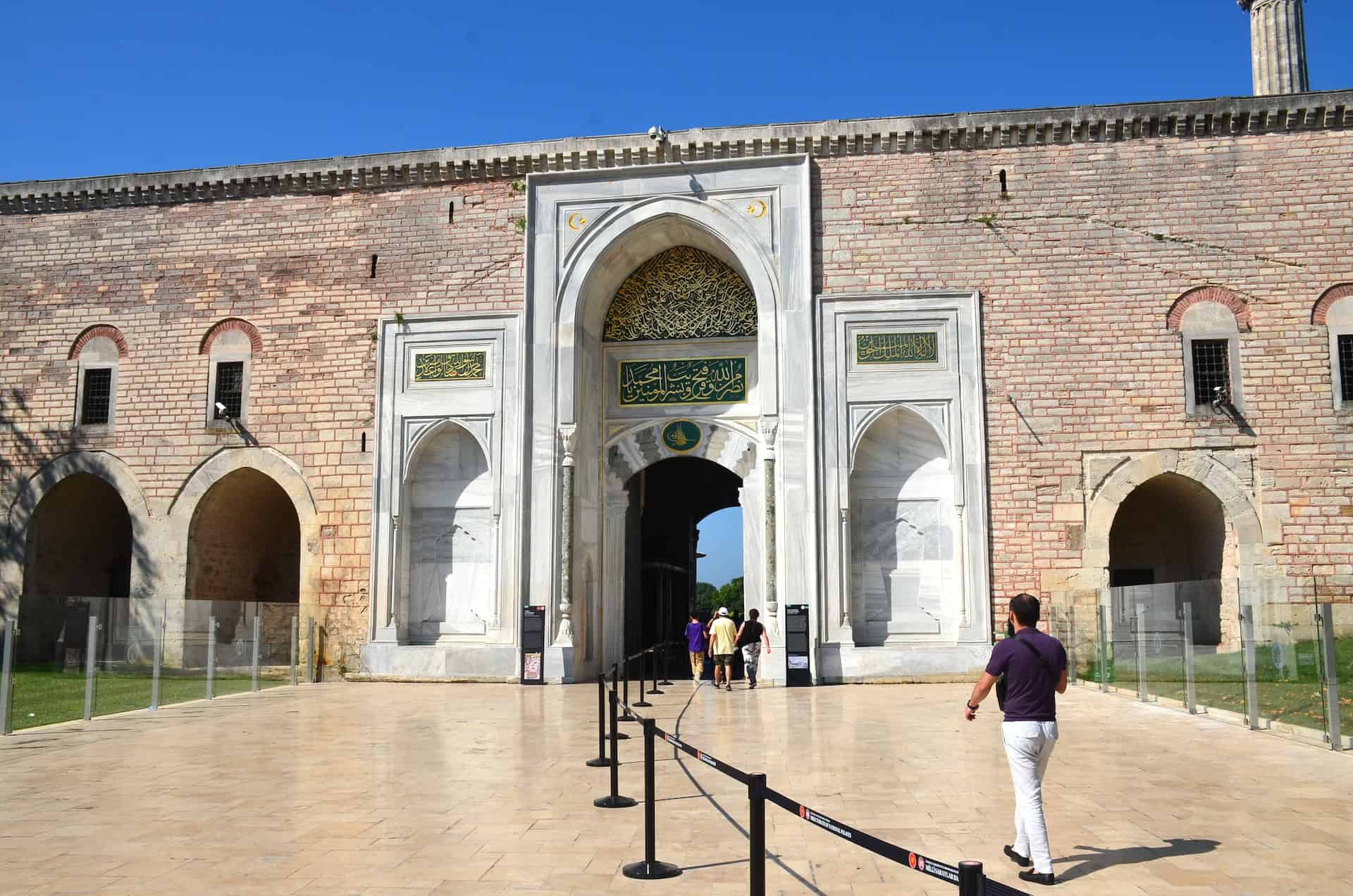
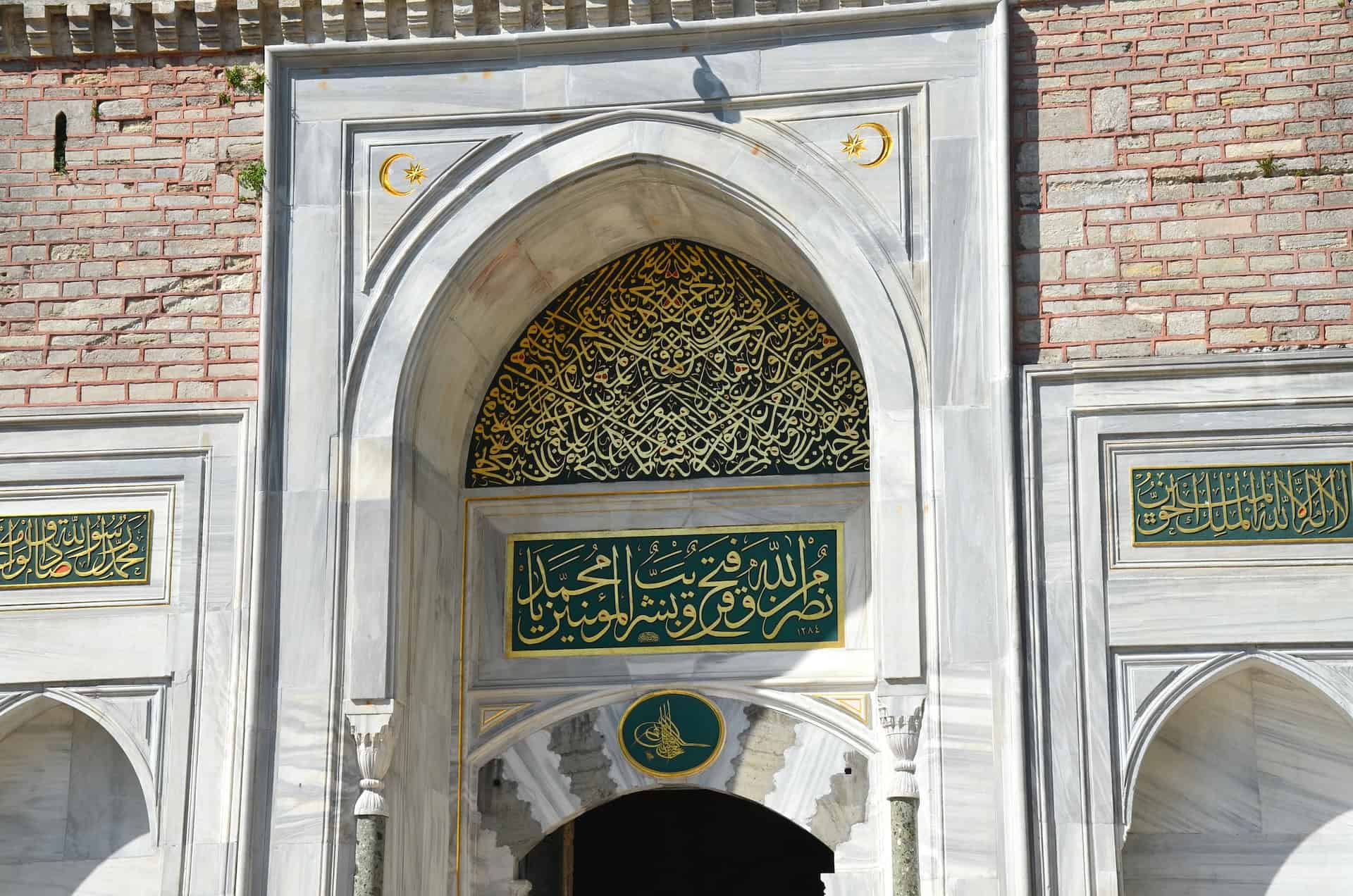
On both sides of the Imperial Gate is the tughra of Sultan Abdülaziz and an inscription written in 1478 by Ali bin Yahya es-Süfi. According to an interpretive panel in front of the gate, the inscription reads:
By the grace and assent of Allah, may Allah make the sovereign of Mehmed the Conquerer, the Sultan of two continents, the Khan of two seas, the shadow of Allah in this world and afterworld, Allah’s favorite in the East and in the West, the ruler of the lands and seas, the conqueror of Constantinople Castle, the son of Sultan Mehmed Khan’s son Sultan Murad, eternal and exalt his authority above the highest stars in the firmament. This auspicious citadel was erected in the blessed month of Ramadan in the year 383 (November-December 1478) by the order of Mehmed the Conquerer, the Father of Conquests, and built strongly with the aim of establishing peace and tranquility.
After passing through the Imperial Gate, visitors to Topkapi Palace go through a security checkpoint. Once that’s complete, they’re free to explore the 1st Courtyard and continue to the rest of the palace.

1st Courtyard of Topkapi Palace
The 1st Courtyard (I. Avlu) of Topkapi Palace was the only section of the palace open to the public during Ottoman times. Many of the buildings were used for management of the palace, including a bakery and a small hospital, but they no longer exist. The 1st Courtyard is the largest courtyard at the palace.
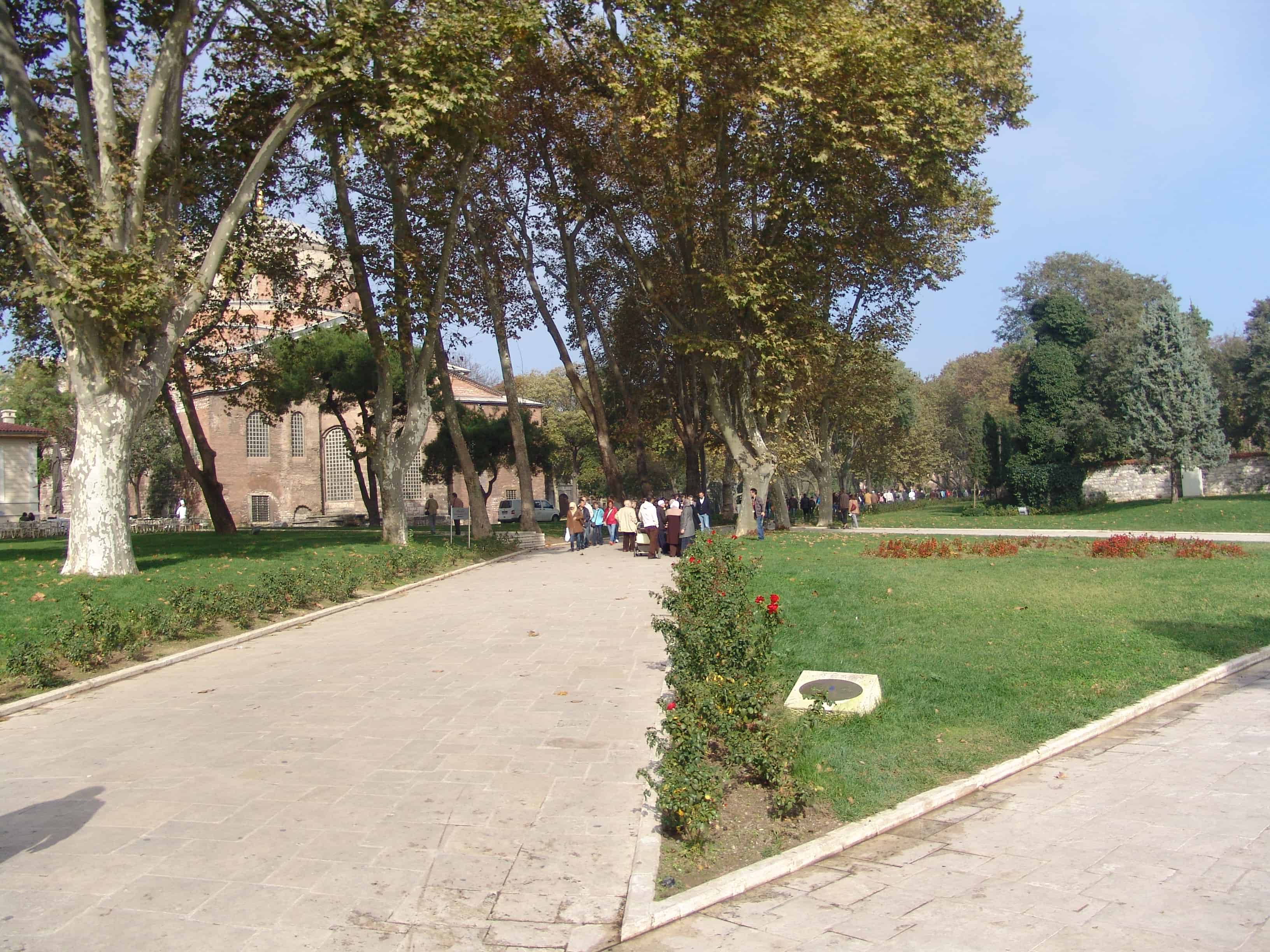

Hagia Eirine
Two important buildings remain in the courtyard. The first is Hagia Eirine (Ἁγία Εἰρήνη / Aya İrini), which was the very first church built in Constantinople. Closed to the public for many years except for concerts or with special permission, it opened as a museum in January 2014.
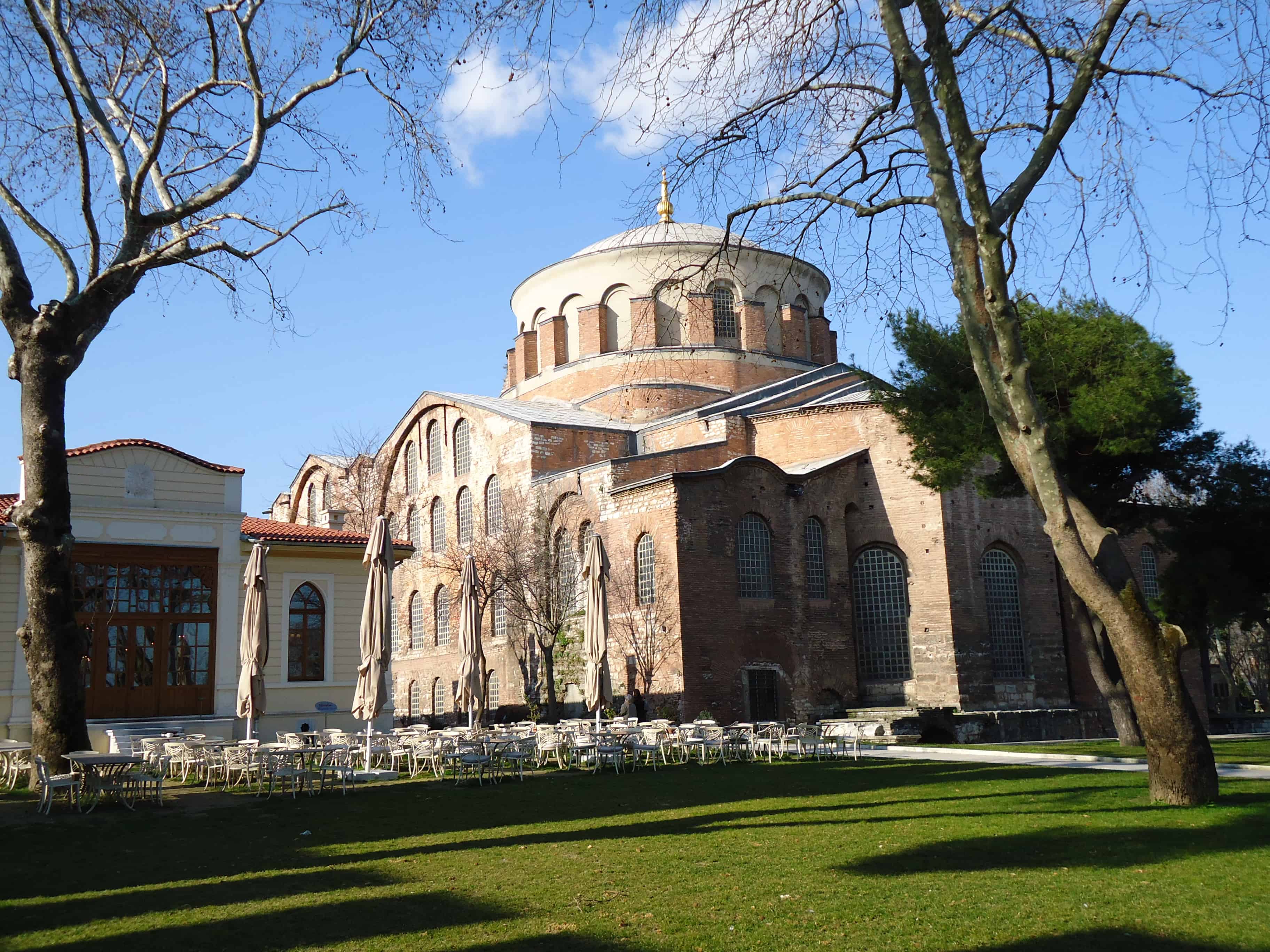
Imperial Mint
The other is the Imperial Mint (Darphane-i Âmire), built in 1727. The mint was originally located at Simkeşhane on Beyazıt Square before it was transferred to Topkapi Palace.
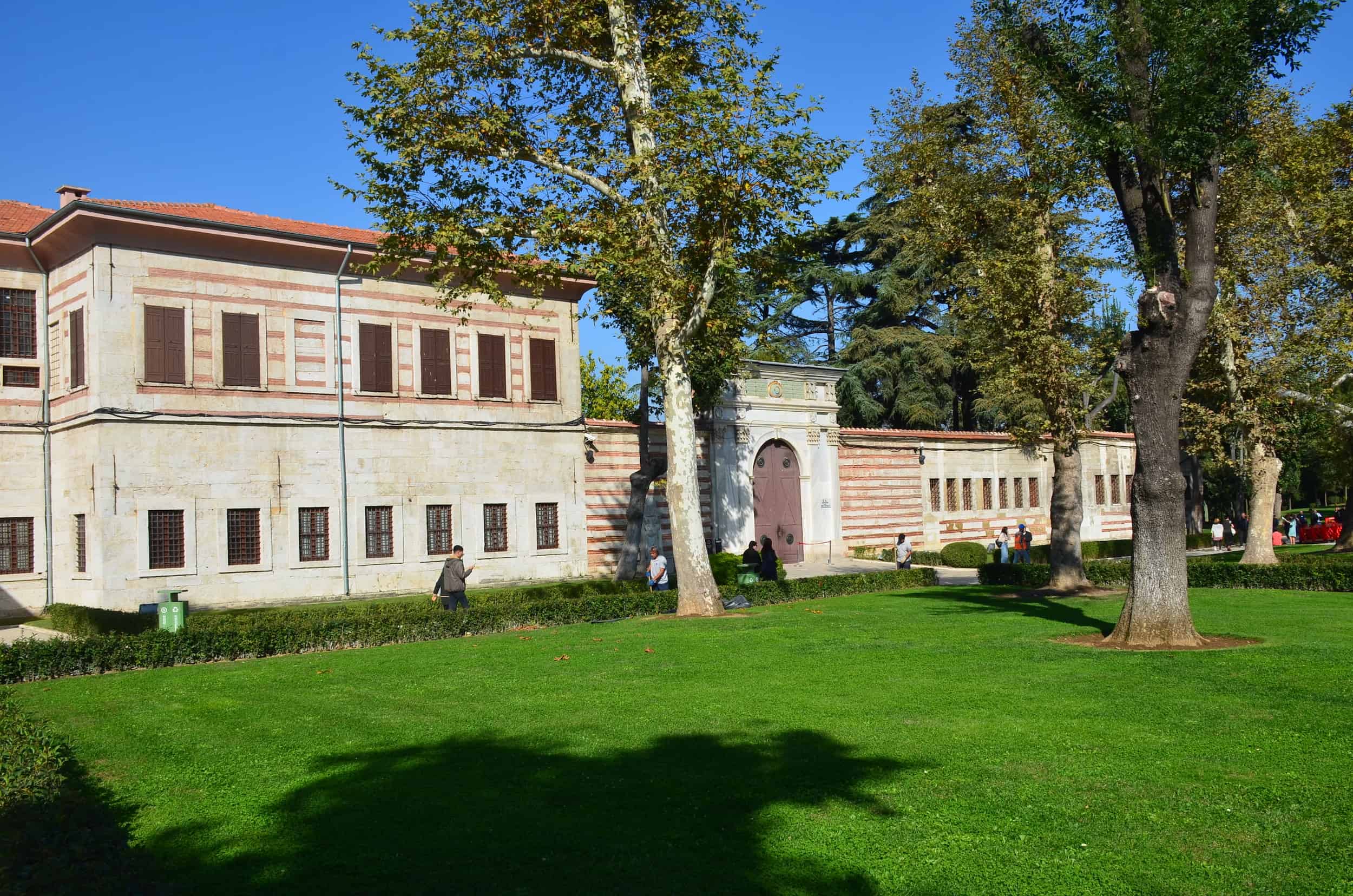


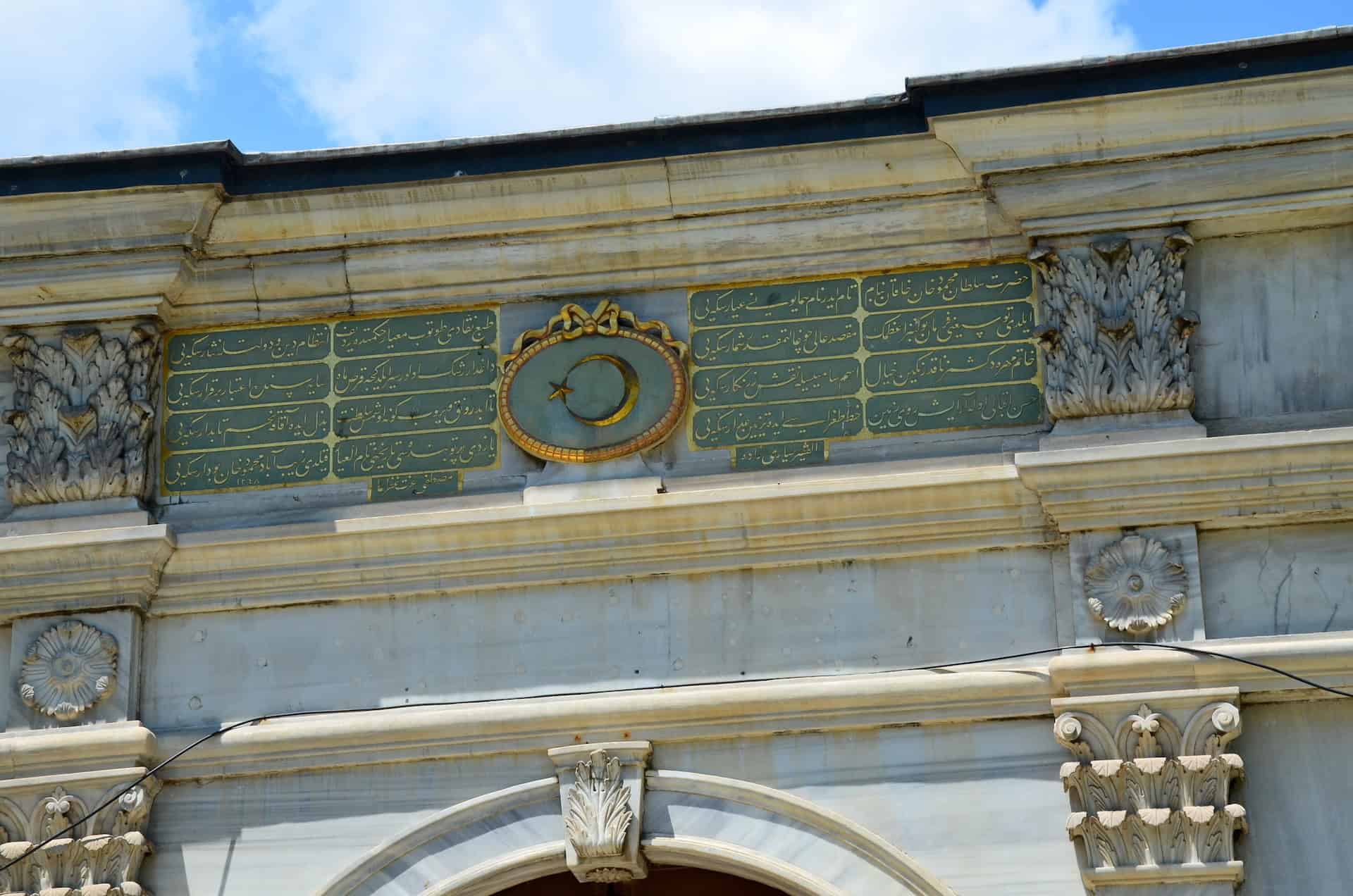
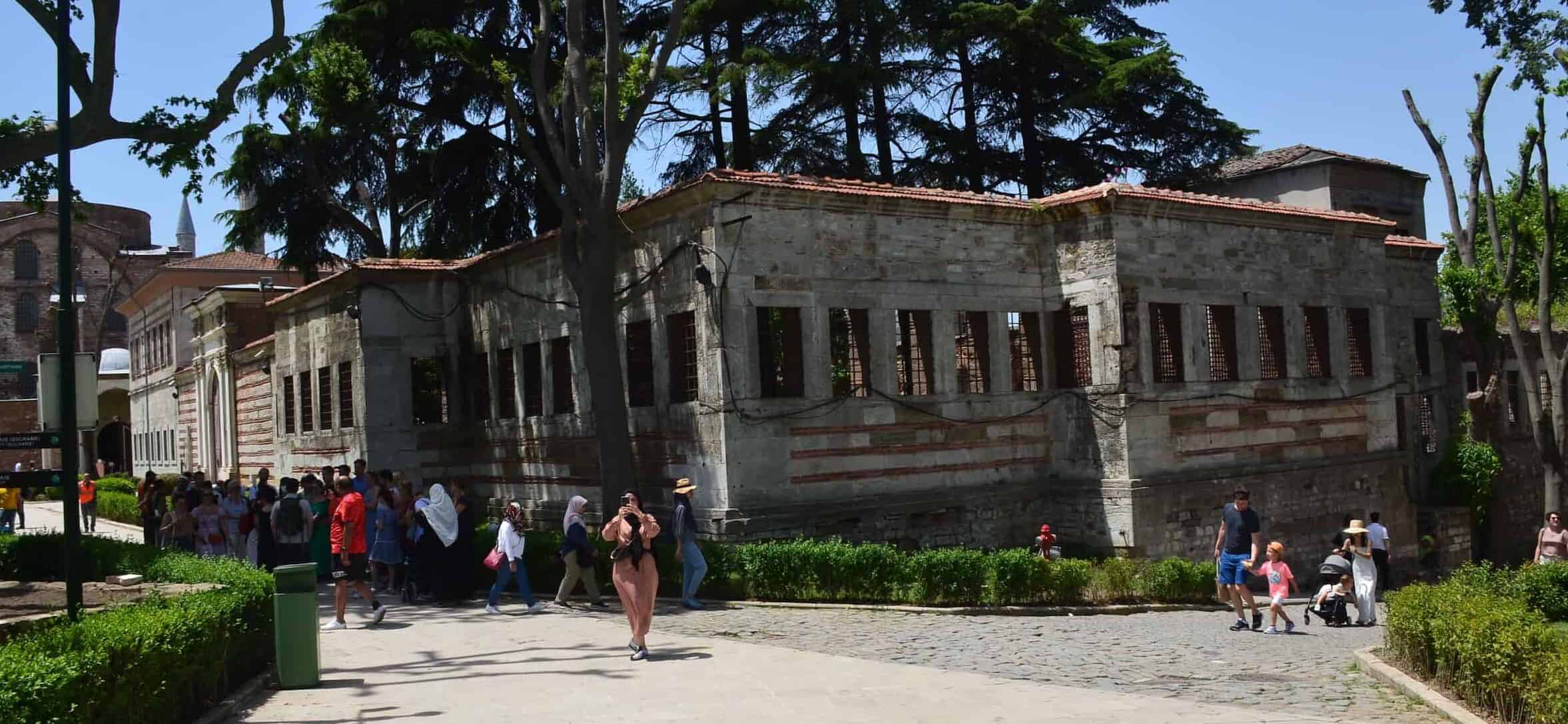
Topkapi Palace Ticket Booth
Tickets to Topkapi Palace are purchased in the 1st Courtyard. Visitors need a ticket to pass through to the 2nd Courtyard. The ticket booth also contains a gift shop, café, and restrooms.
2nd Courtyard of Topkapi Palace
The 2nd Courtyard (II. Avlu) of Topkapi Palace is where you can find the entrance to the Harem and other several important buildings.
Gate of Salutation
Passing through the ceremonial Gate of Salutation (Bâb-üs Selâm) leads from the 1st Courtyard to the 2nd Courtyard of the palace. It isn’t clear when the gate was built, but an inscription above the door is dated 1542. It’s possible that it was constructed by Mehmed the Conqueror (Mehmed II) in 1468, with a design that was probably influenced by Byzantine architecture.

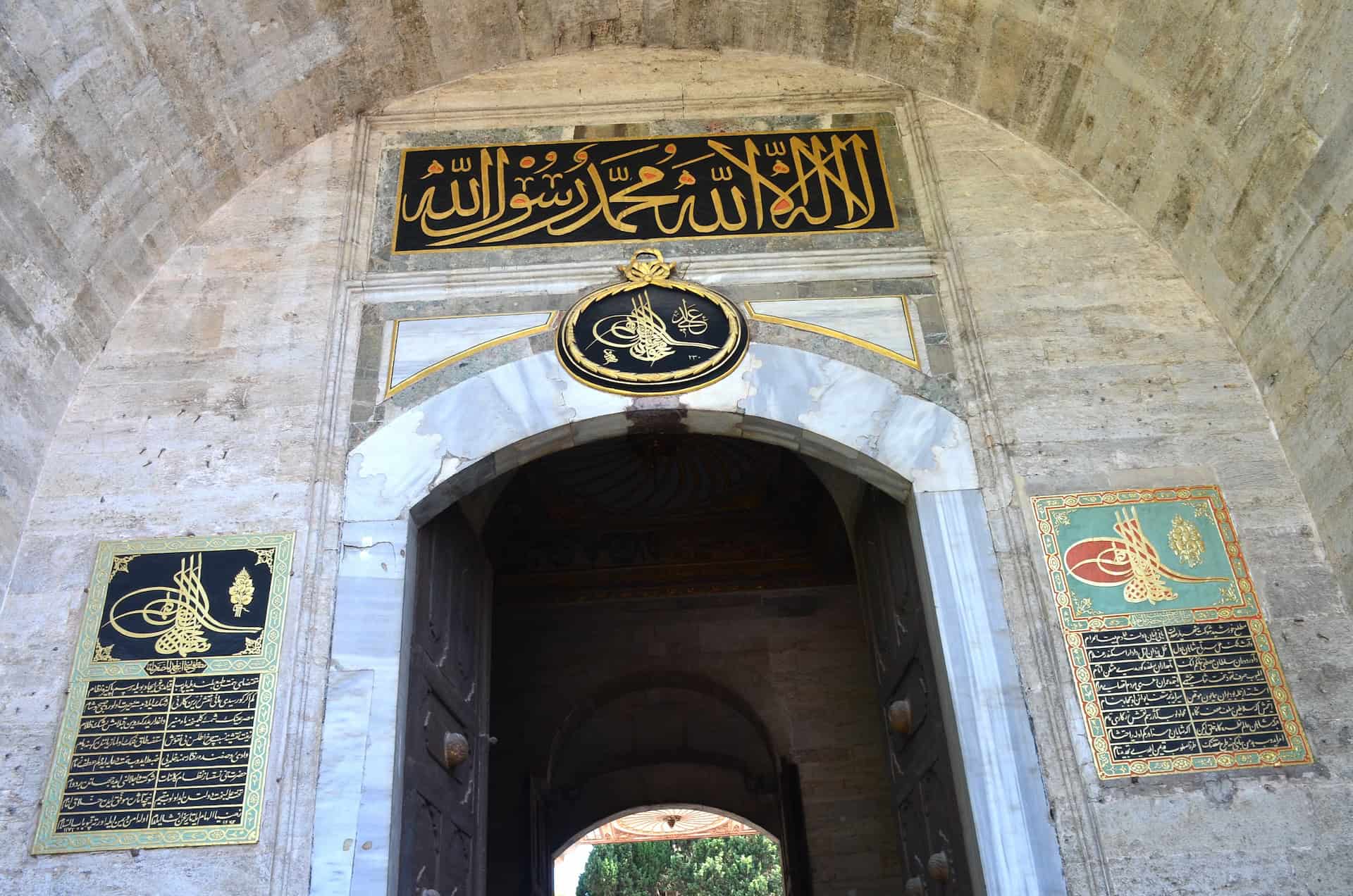

Since the Gate of Salutation was the entrance to the heart of the palace, only the Sultan was allowed to enter on horseback while all others had to dismount. This was a tradition taken from the Great Palace of the Byzantine Emperors. Government officials and foreign dignitaries were the only ones allowed to enter the palace through this gate.
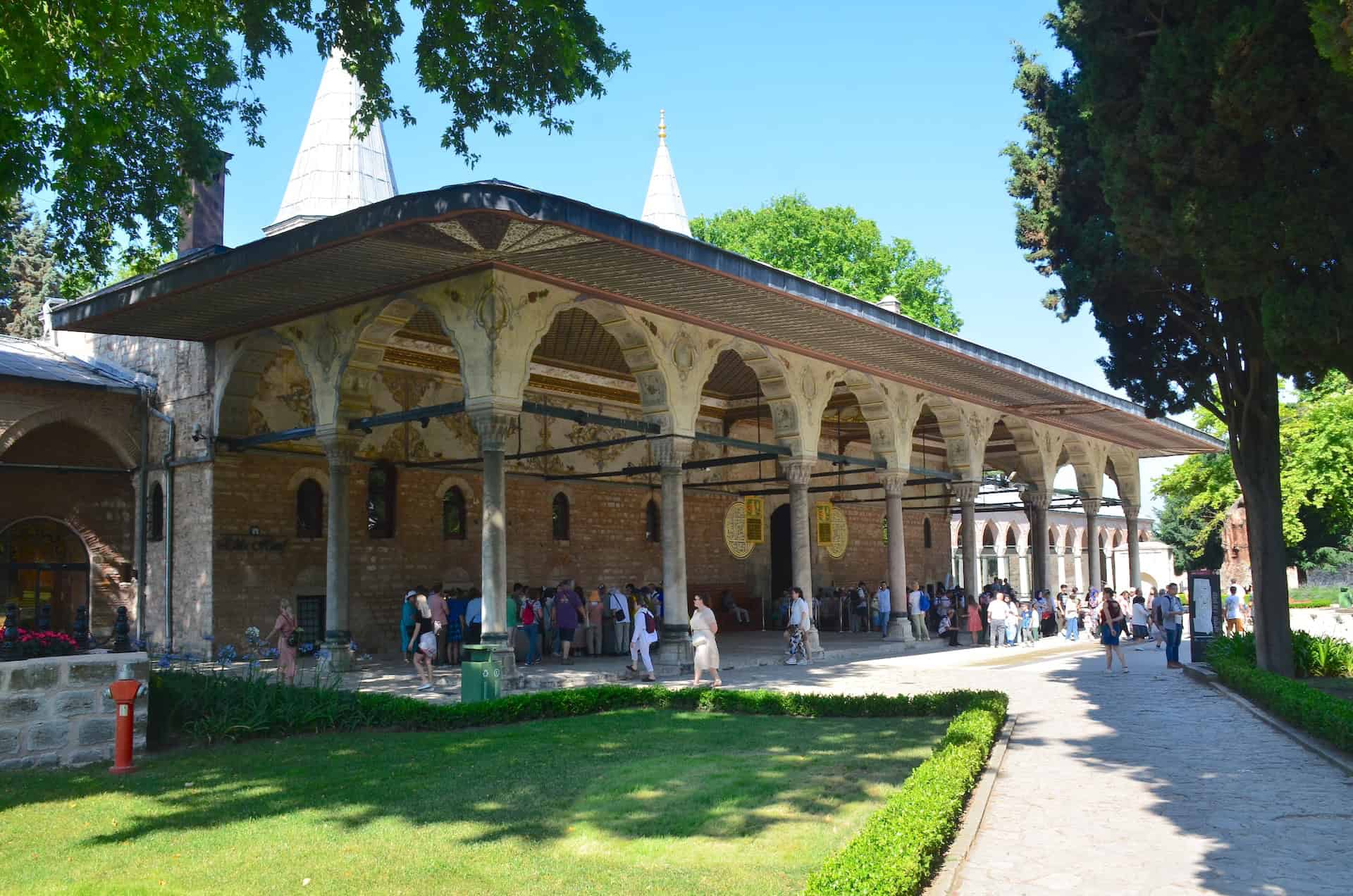
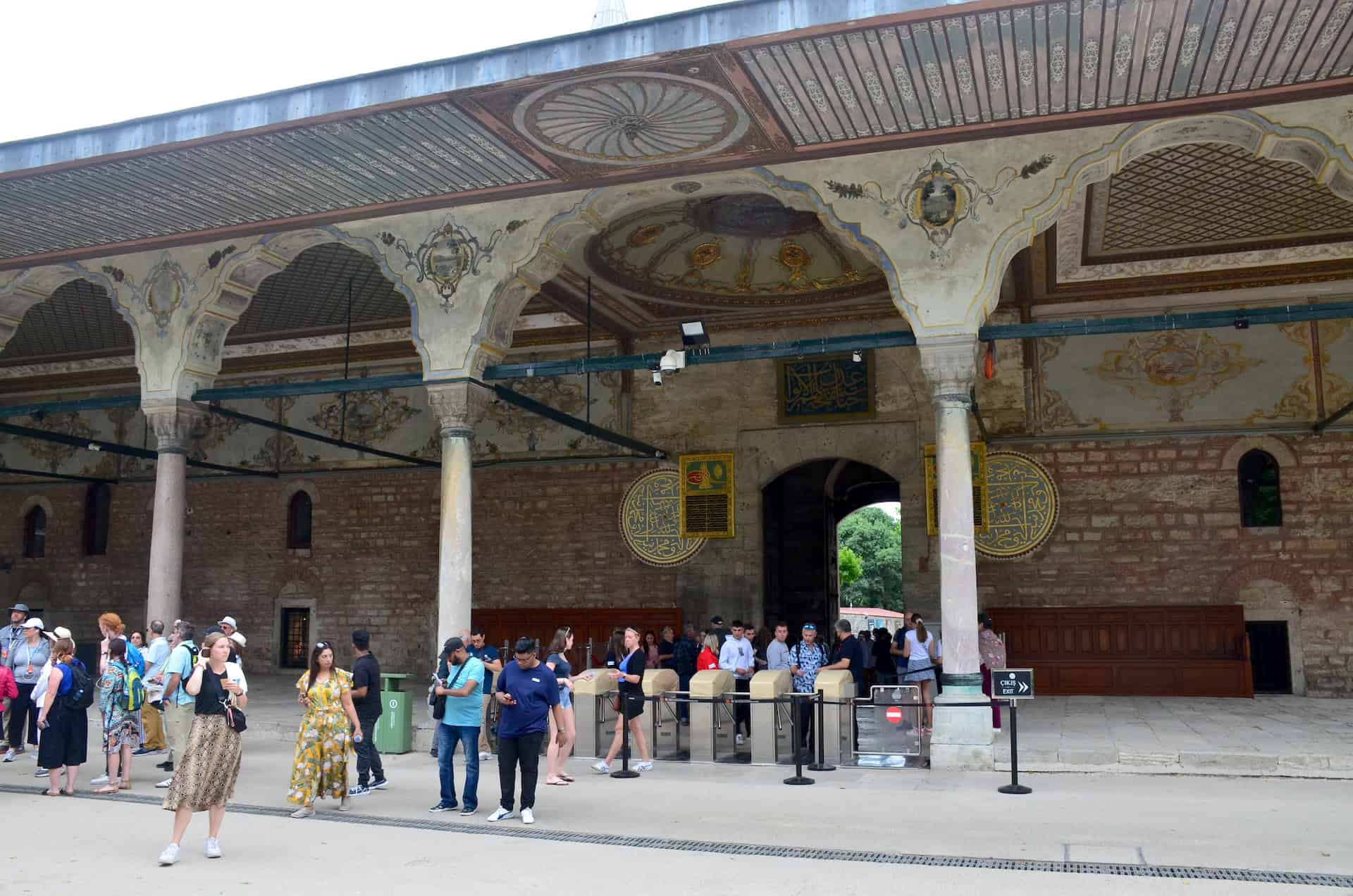
The inside of the Gate of Salutation is decorated with tughras of Ottoman sultans, religious inscriptions, and fine frescoes.
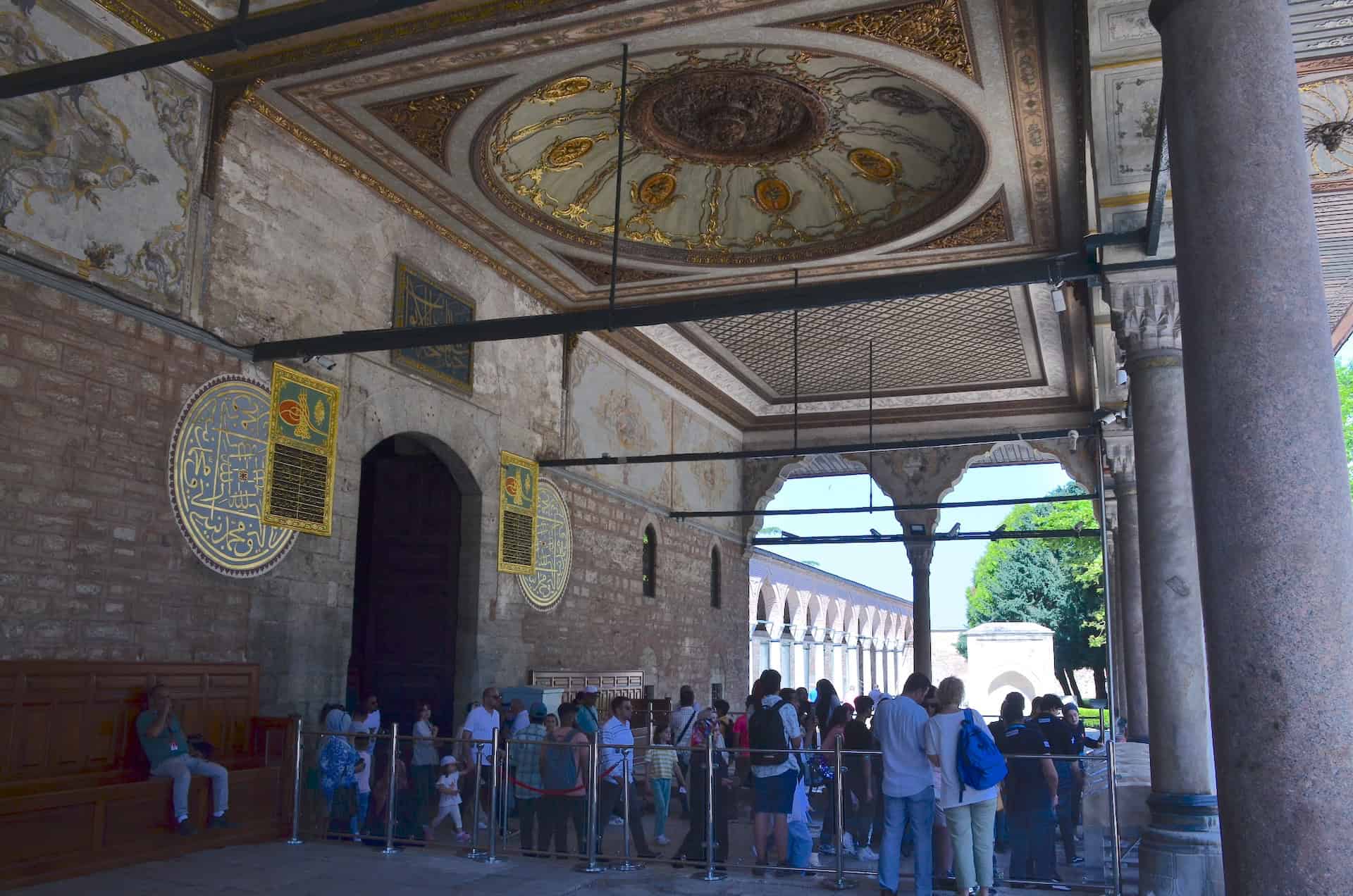
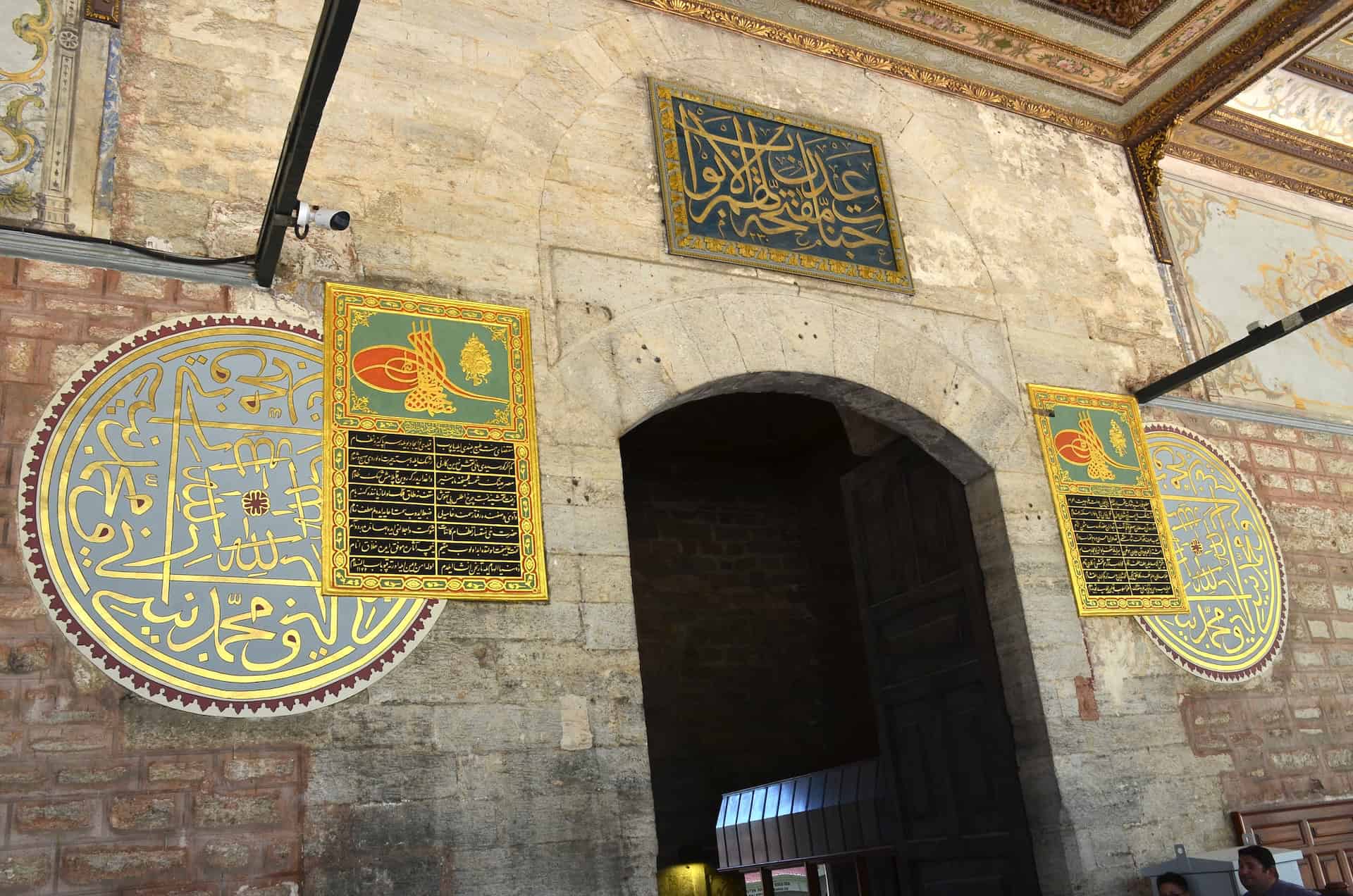
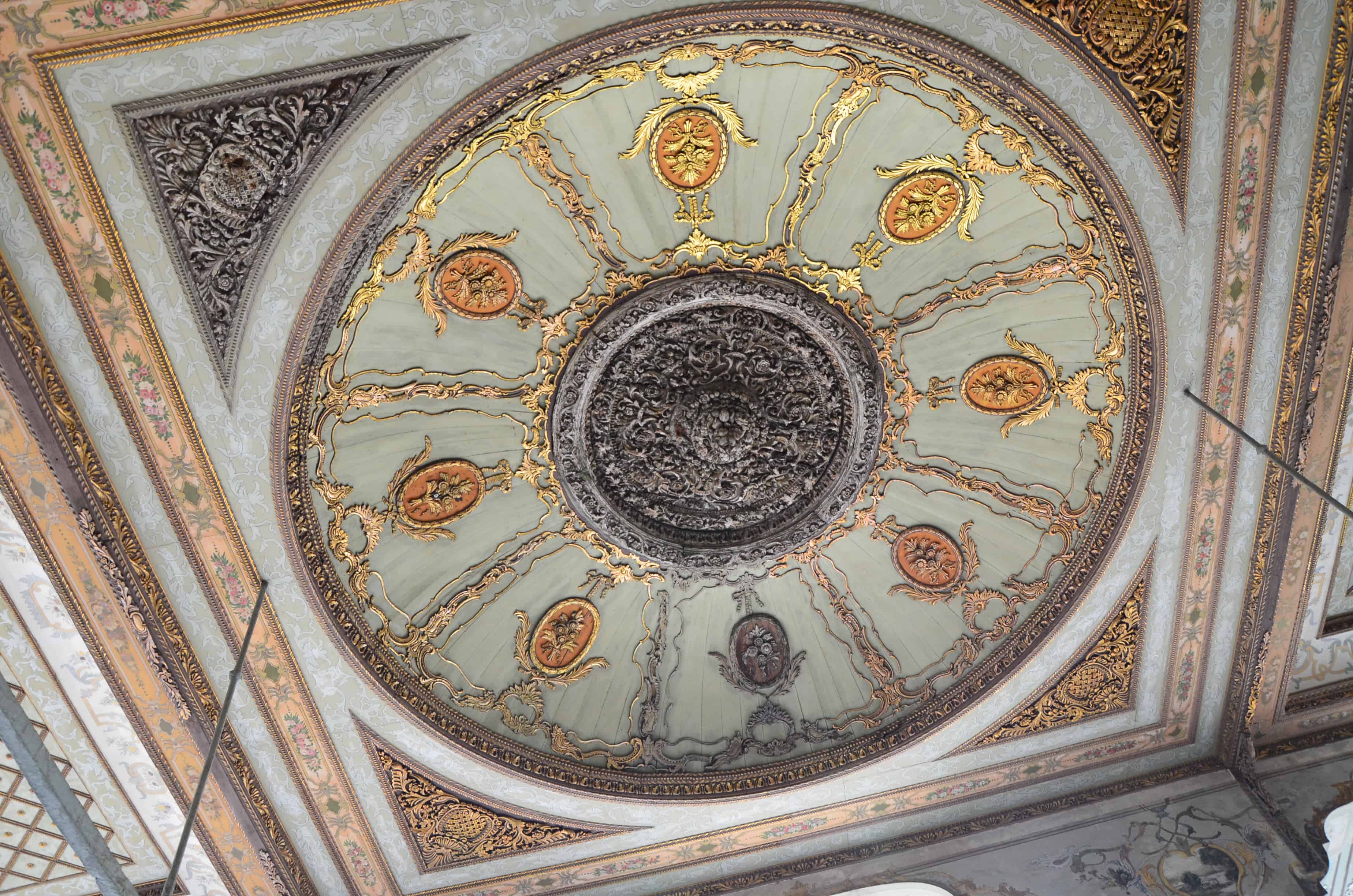
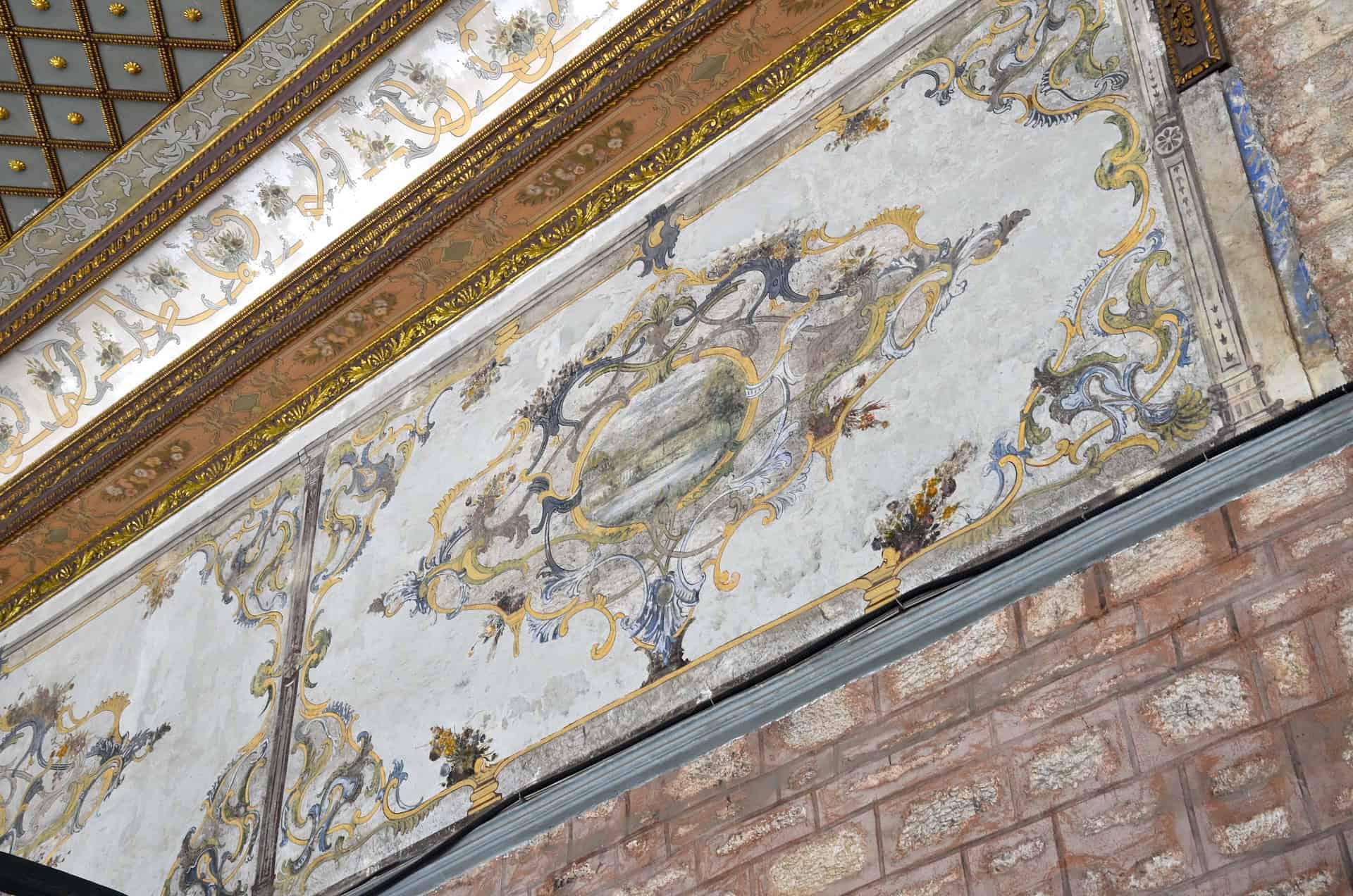

Scale Models of Topkapi Palace
Passing through the gate requires a ticket, which can be purchased in the 1st Courtyard. Once through, it’s possible to see some scale models of the palace at the Gate of Salutation.
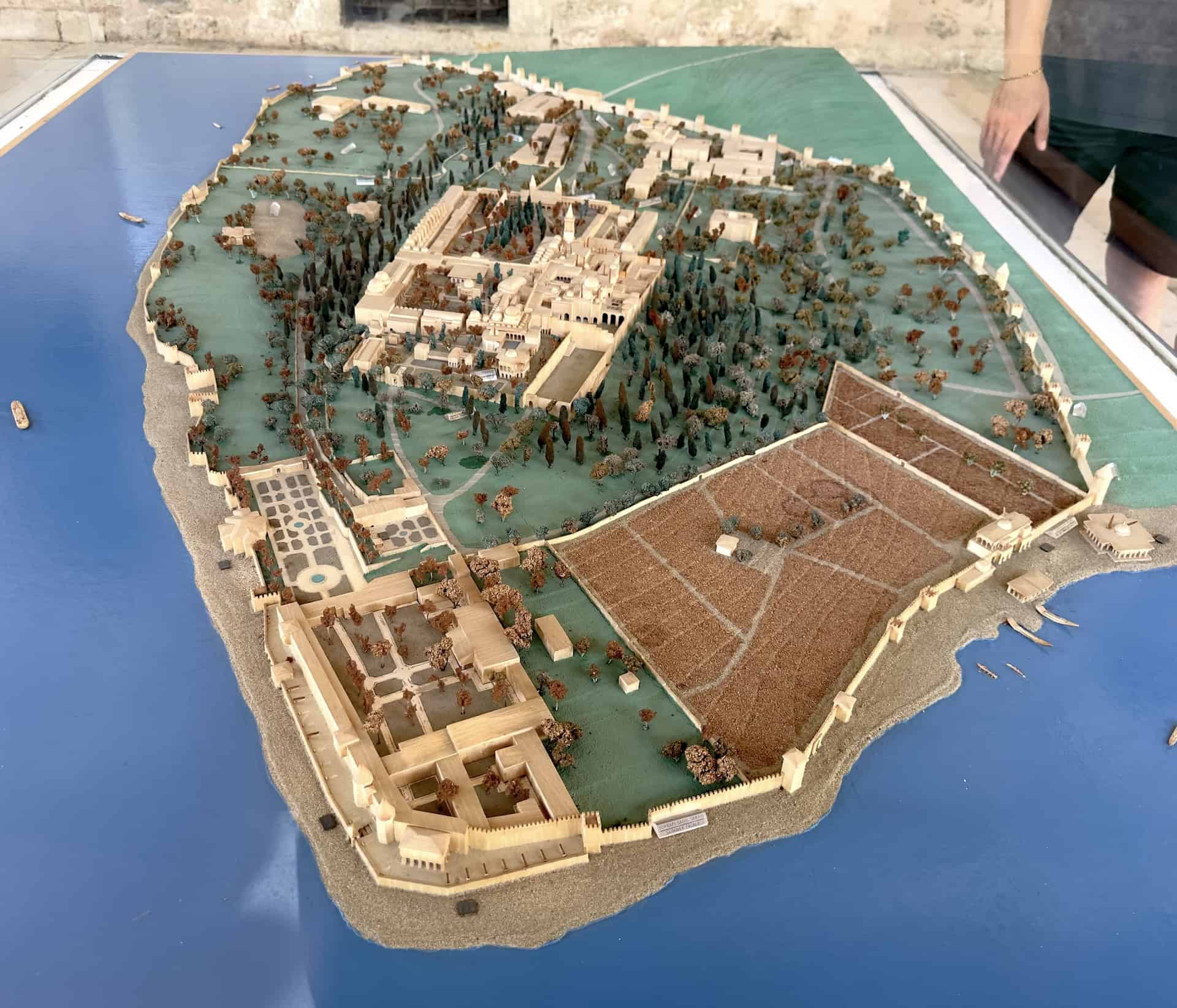
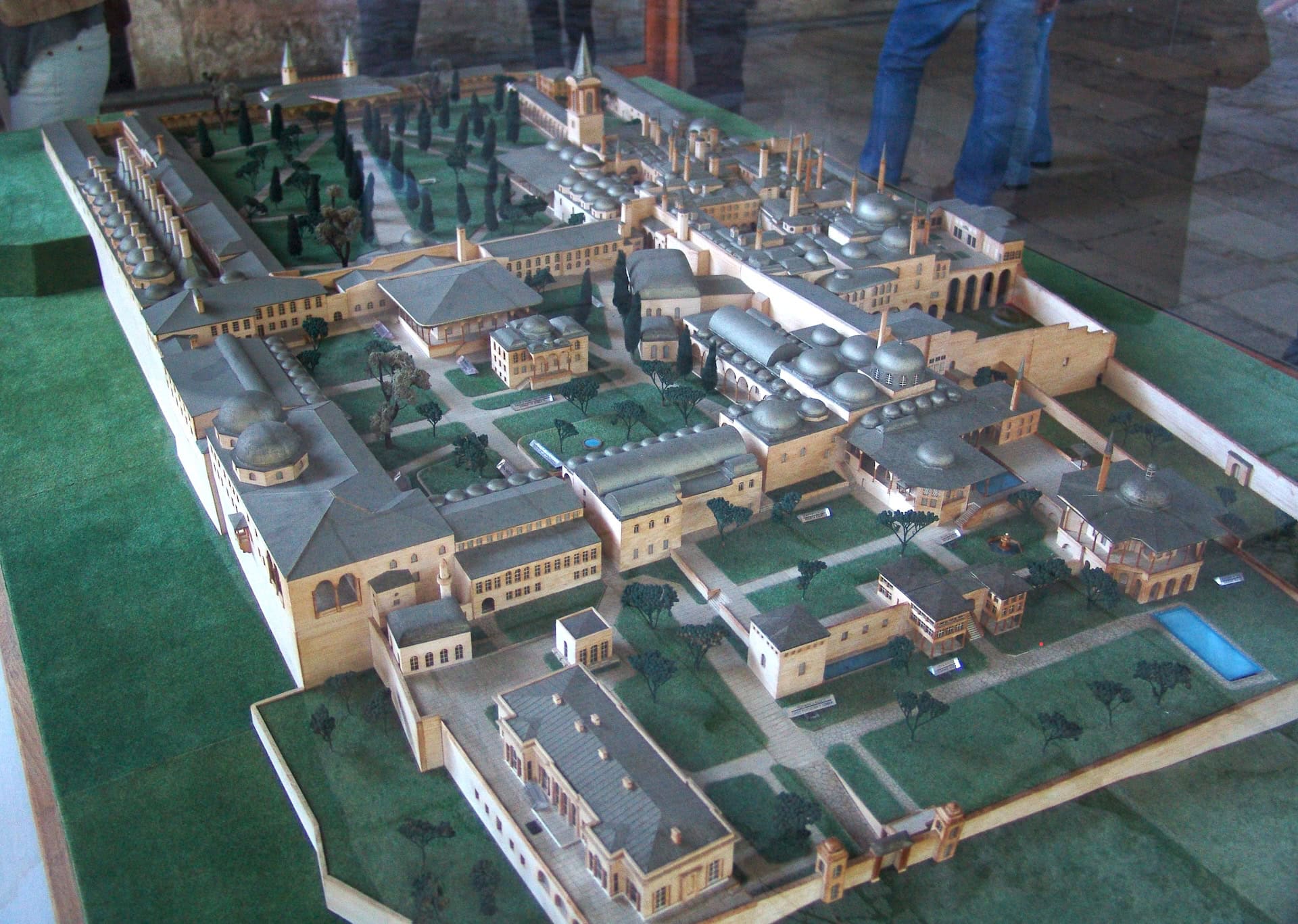
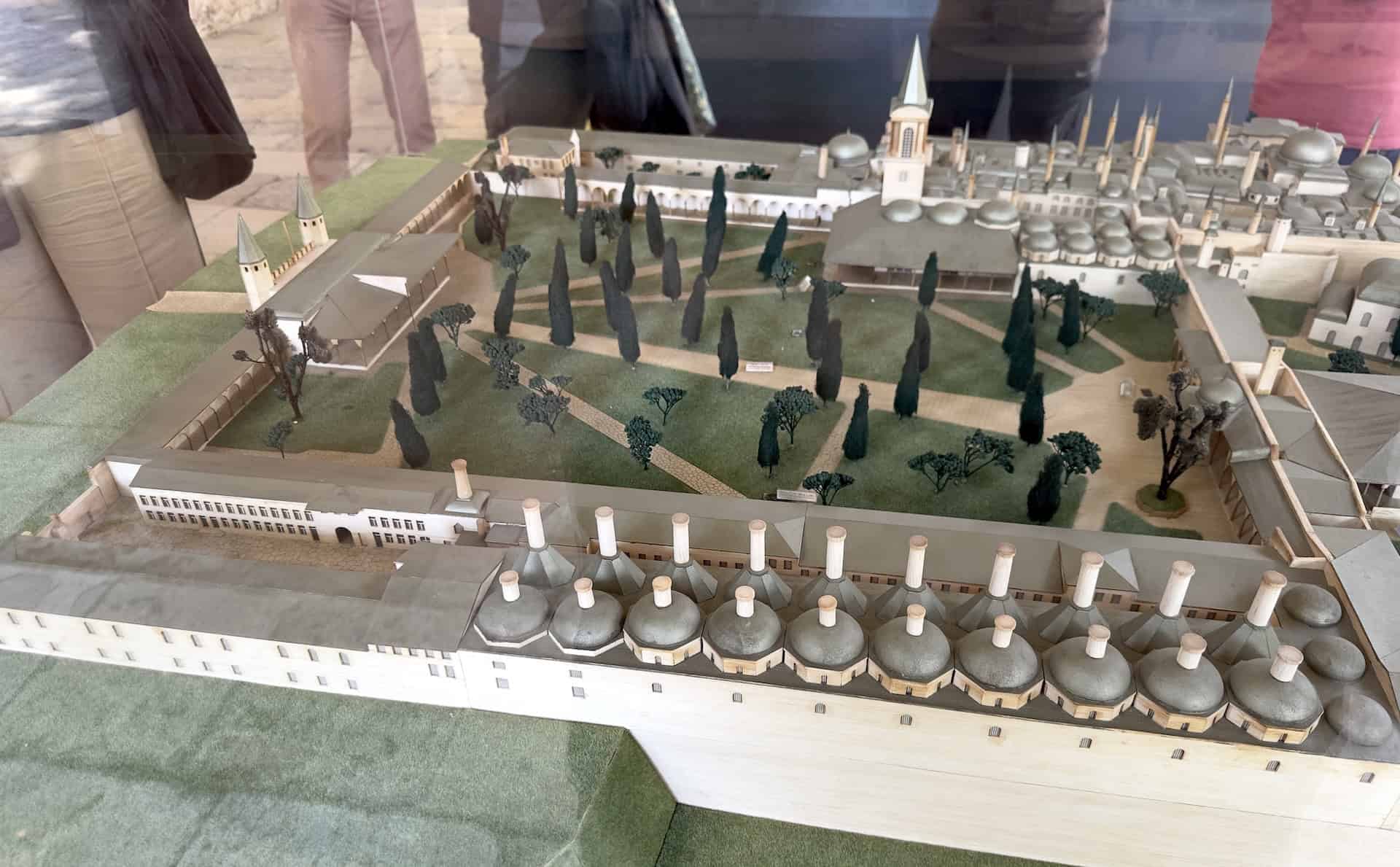
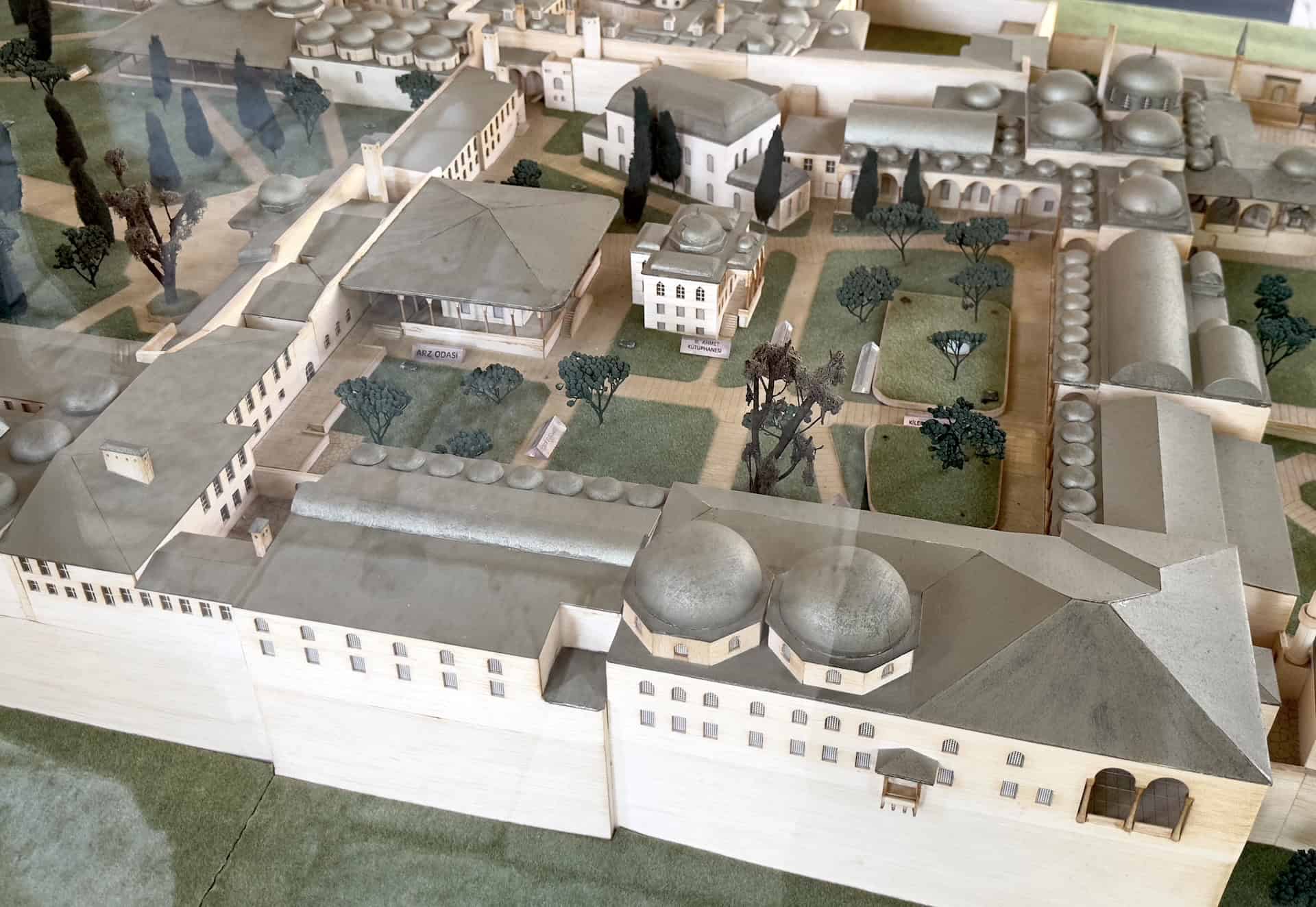


Entrance to the Imperial Harem at Topkapi Palace
After passing through the Gate of Salutation, the entrance to the Imperial Harem is a short walk to the left. No visit to Topkapi Palace is complete without seeing it. The Imperial Harem is covered in a separate post.

Imperial Council
The Imperial Council (Dîvân-ı Hümâyûn) is the most important building in the 2nd Courtyard at Topkapi Palace. It’s where the Imperial Council and the viziers of the Ottoman Empire met to discuss state affairs.
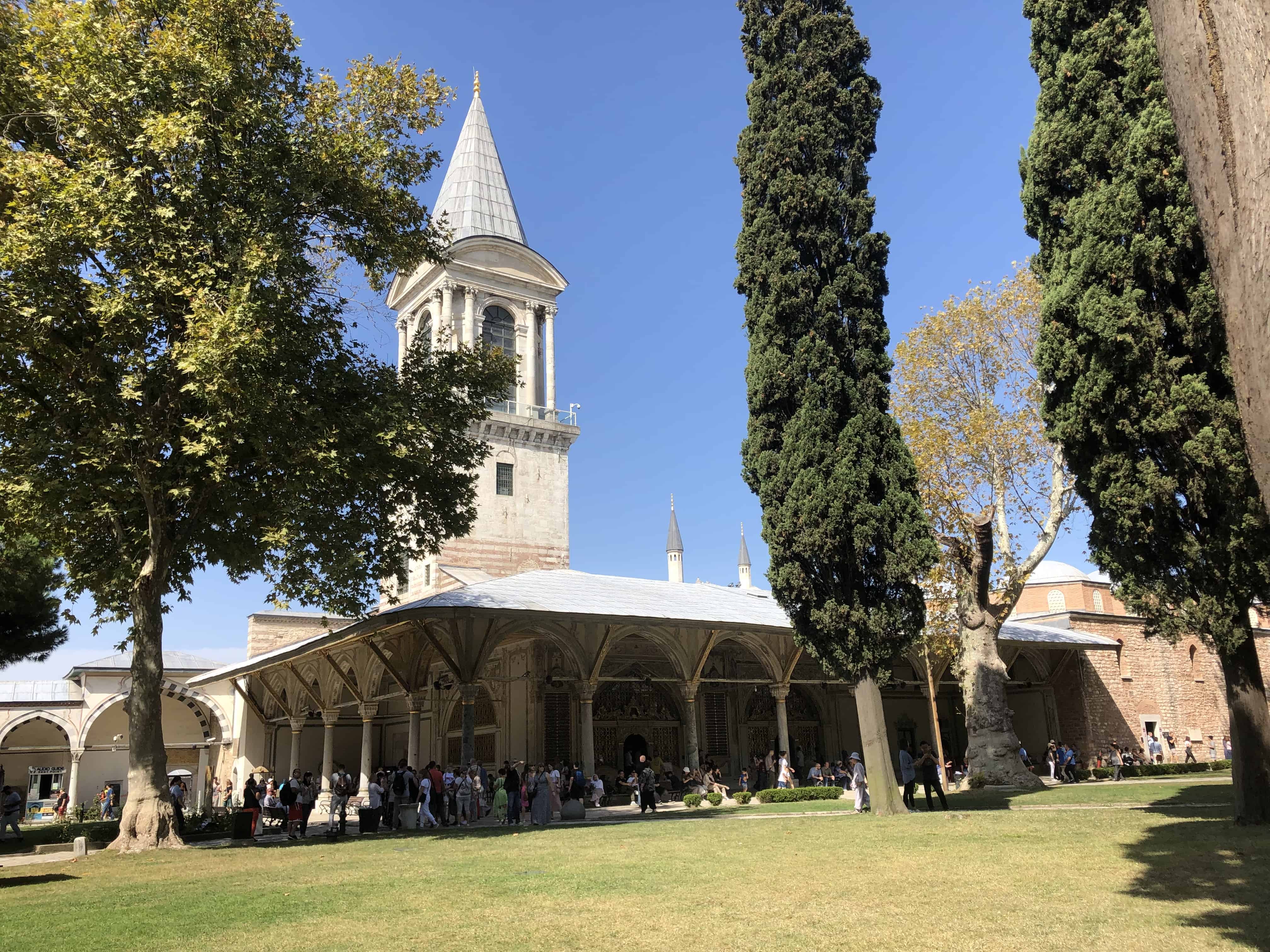
The Imperial Council was the cabinet of the Ottoman Empire that met to discuss state affairs. It was chaired by the Grand Vizier (Sadrazam) and made up of other viziers, judges, treasurers, military officials, and sometimes religious officials. The council initially met daily but it was down to four days a week by the 16th century. If the Sultan was traveling, the Imperial Council would travel with him.
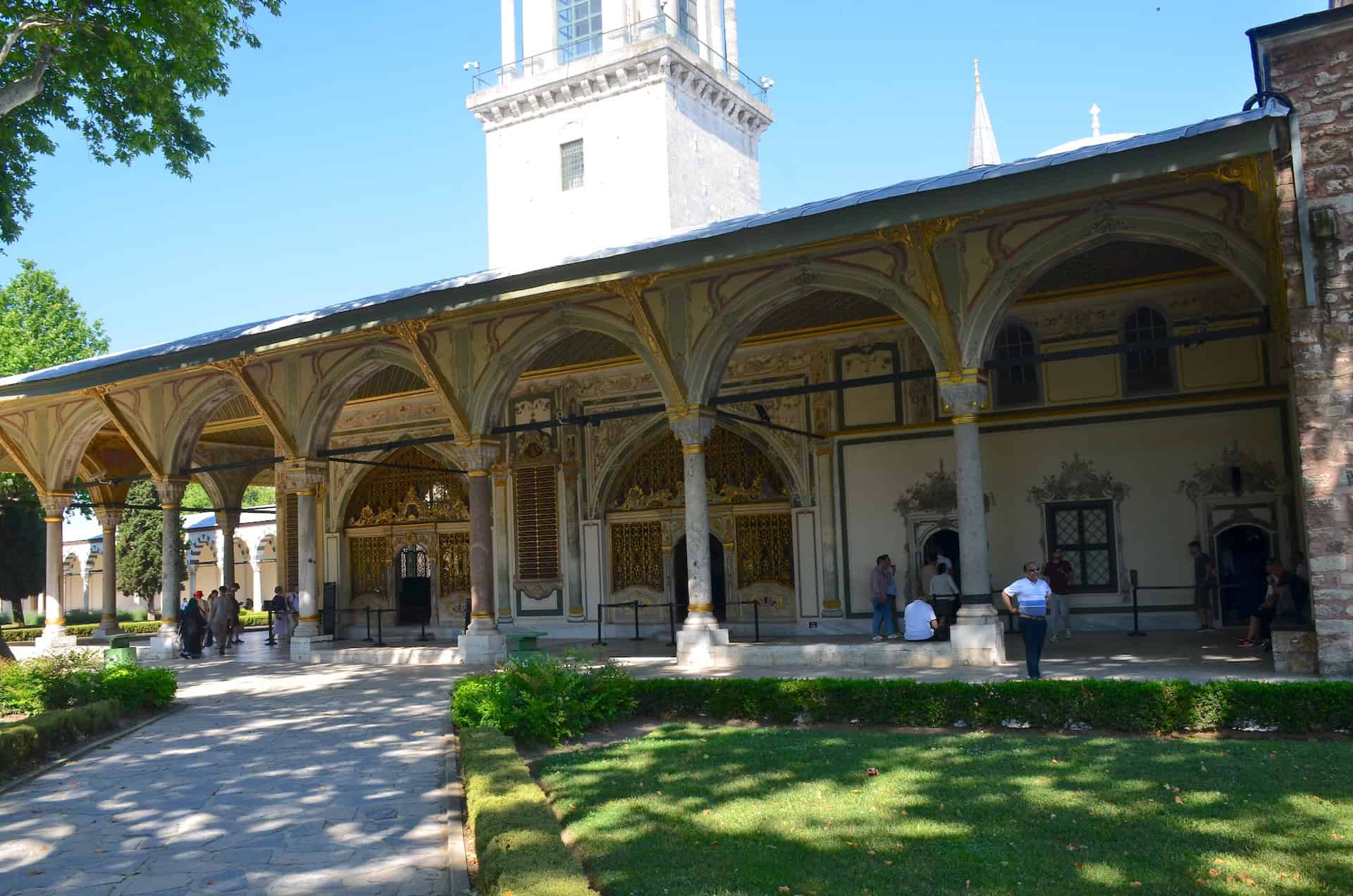
In the 19th century, the Imperial Council was dissolved and replaced by a Western-style cabinet government. The last meeting of the Imperial Council at Topkapi Palace took place on August 30, 1876, to discuss the future of Sultan Murad V. He was deposed the next day after only a 93-day reign because of supposed mental instability.
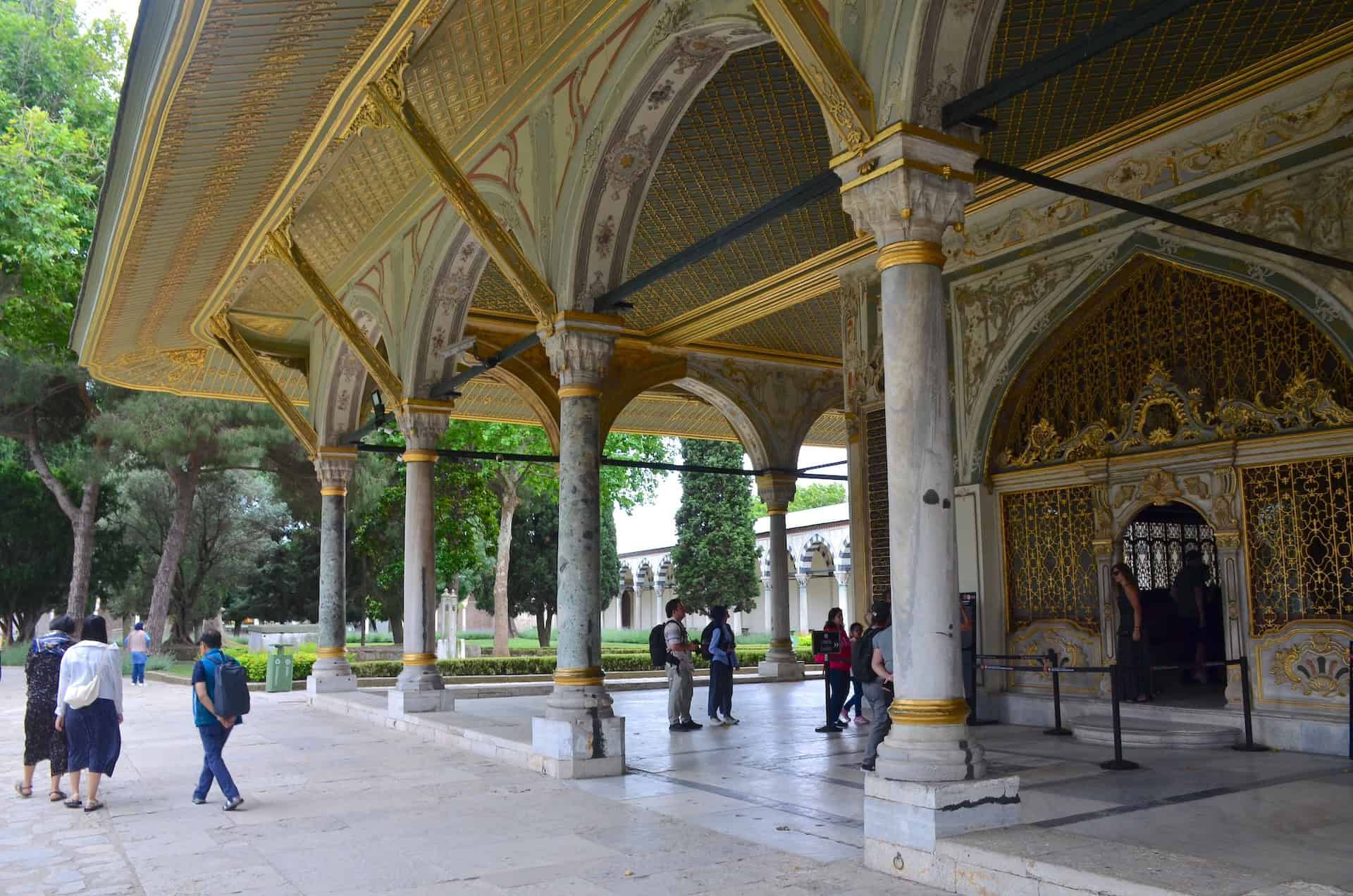
The first Imperial Council building was a simple wooden structure constructed under Mehmed the Conqueror. The present building was built between 1527 and 1529 under Süleyman the Magnificent. The architect was Alaeddin. Renovations took place under Selim III in 1792 and again under Mahmud II in 1819. The Rococo decorations inside date from these renovations.
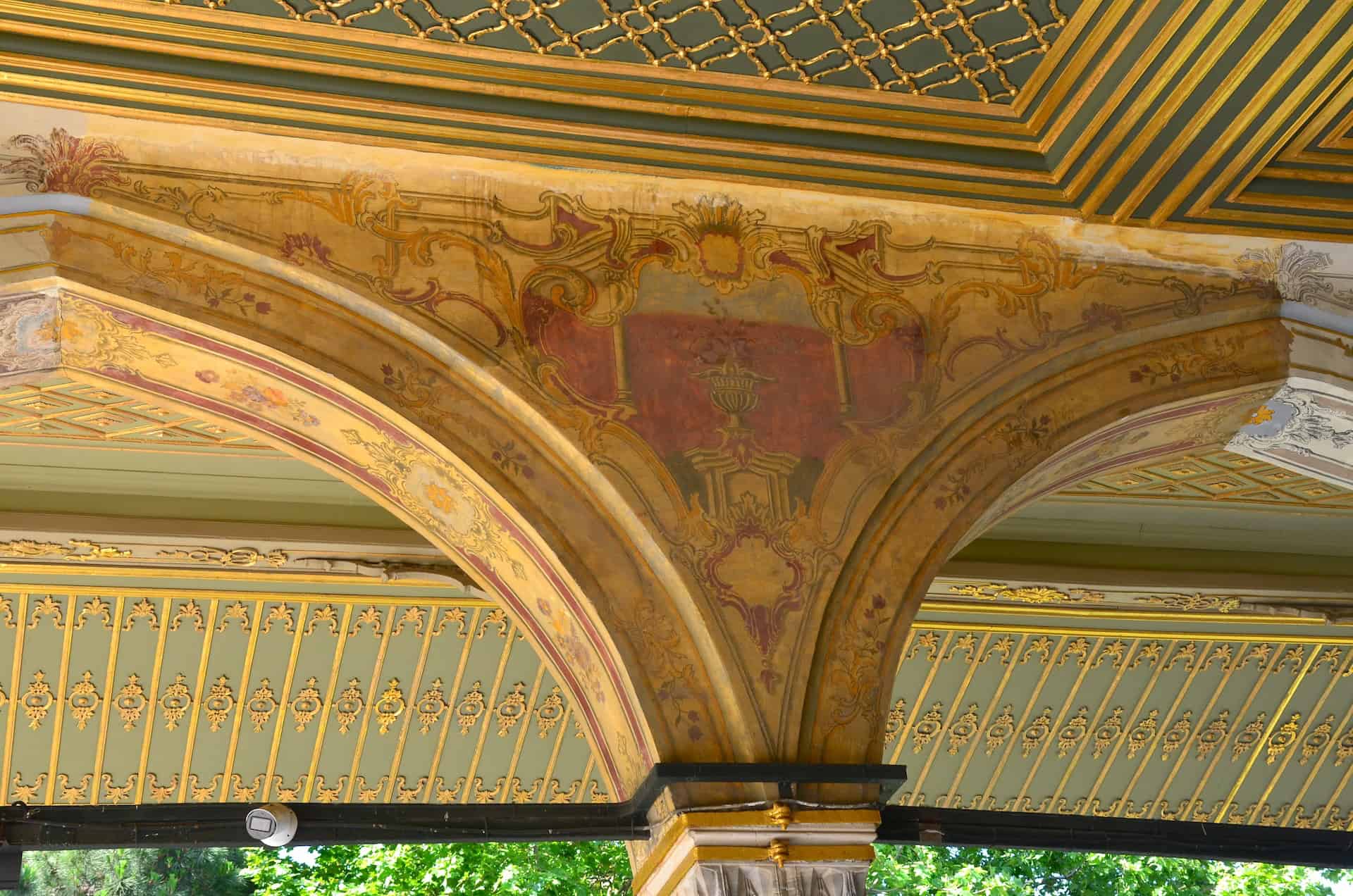
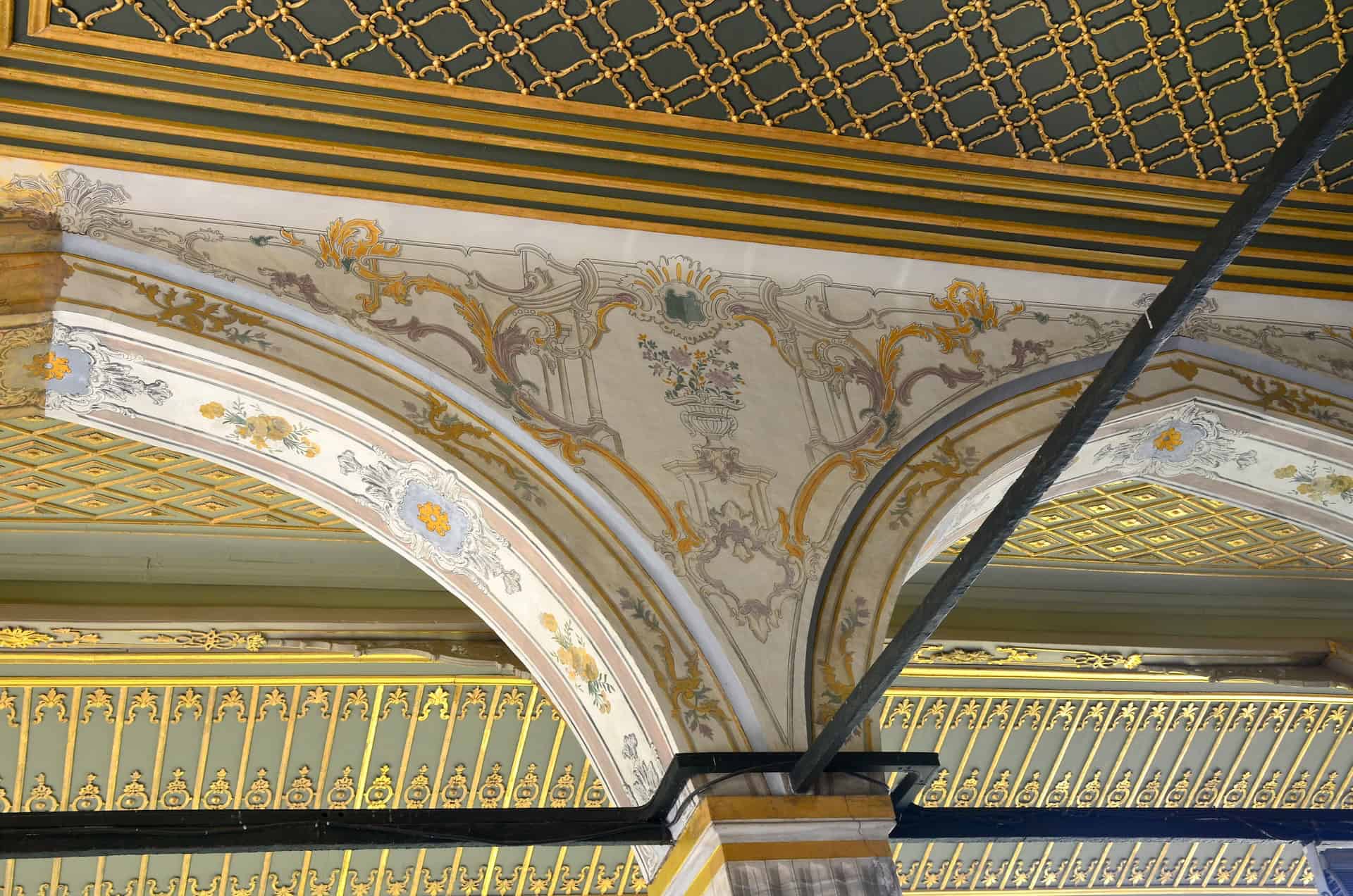
The entrances to the building sit under a porch consisting of marble and porphyry pillars. Rococo-style gilded grills allow in natural light. There are three chambers inside.
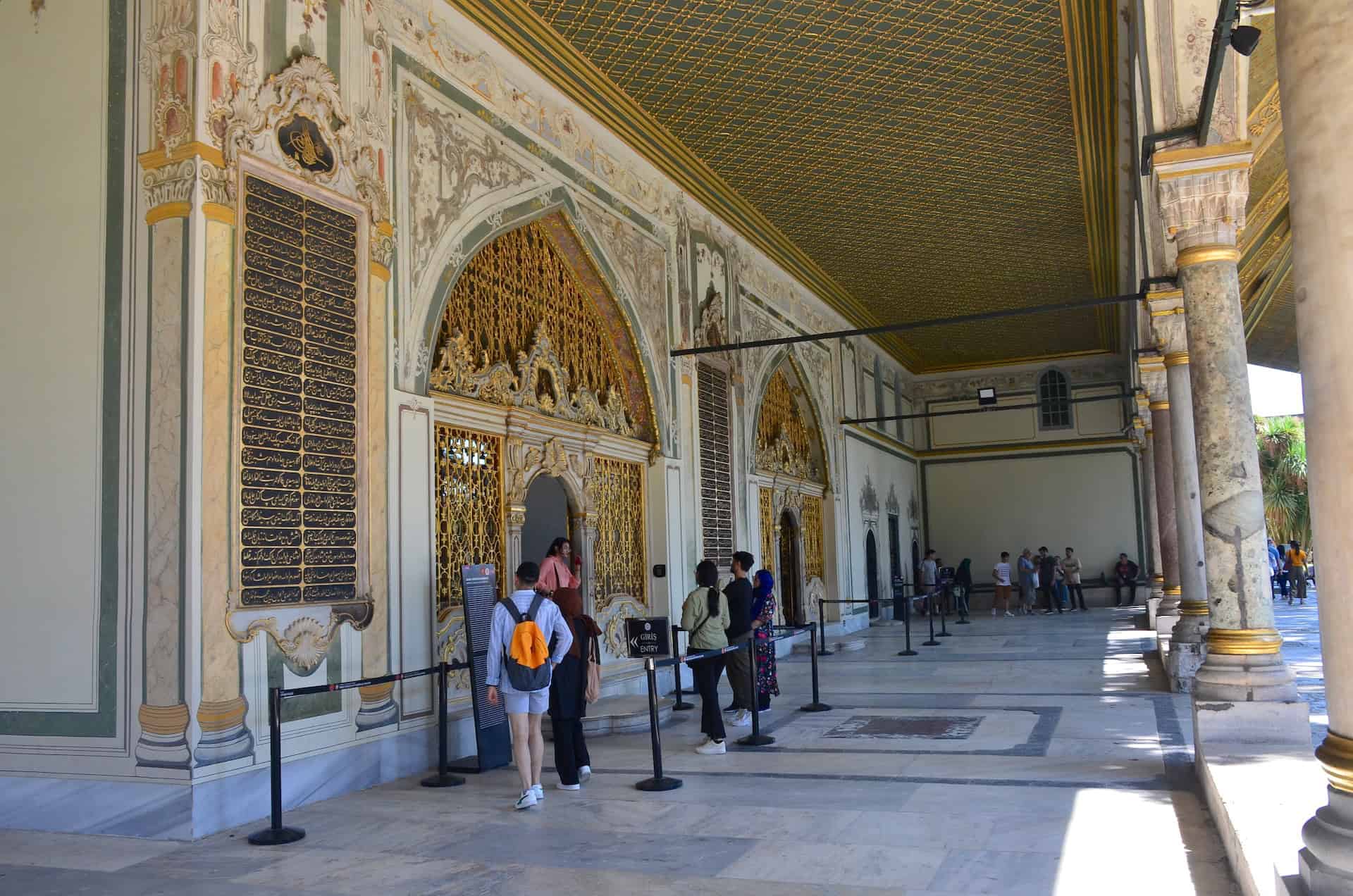
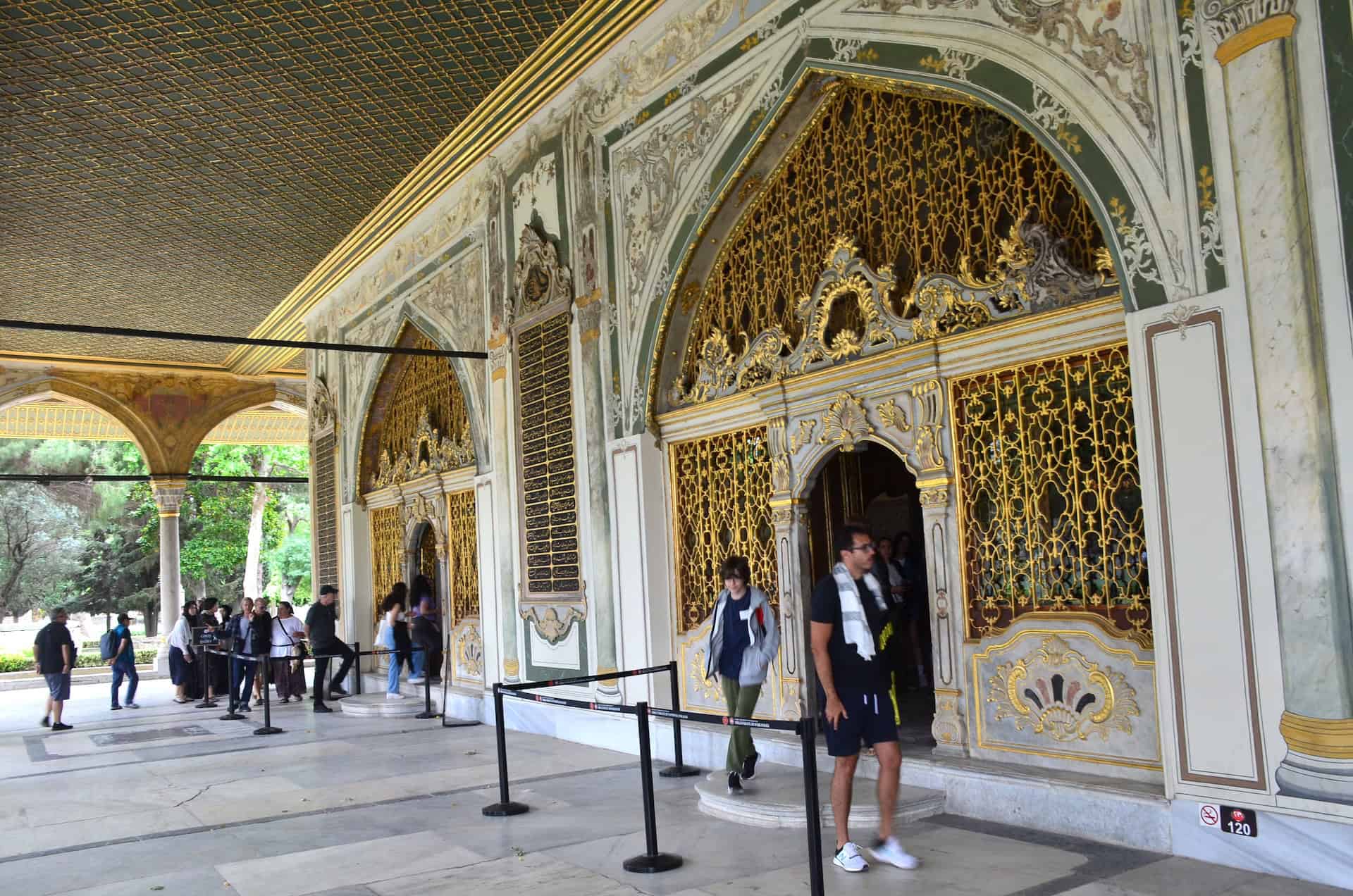
Tower of Justice
The Imperial Council is crowned by the Tower of Justice (Adalet Kulesi), which is the tallest structure at Topkapi Palace. The tower was meant to symbolize the Sultan’s ever-vigilant presence against injustice in his empire. Ottoman citizens could see the tower from afar, reminding them that the Sultan sees all.
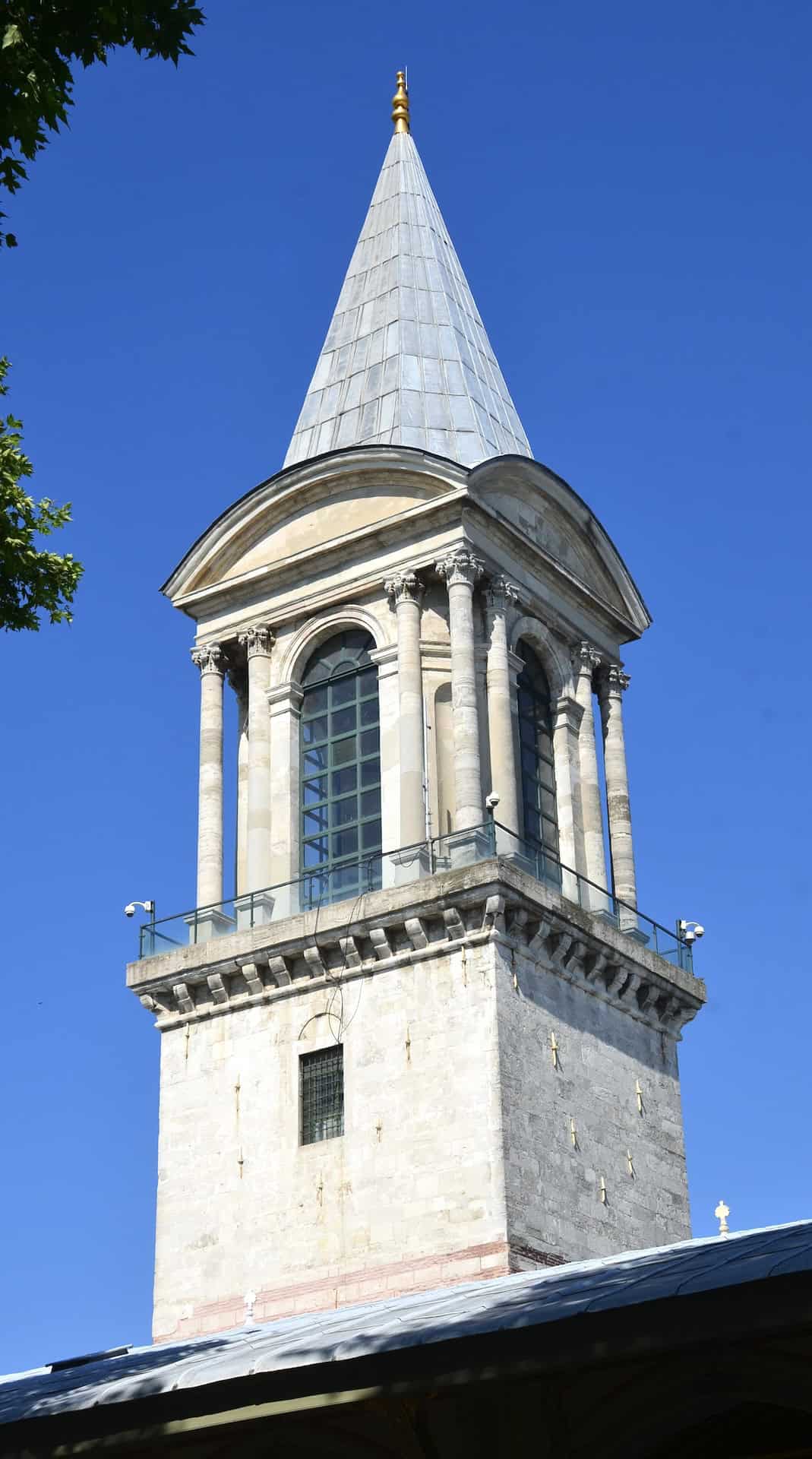
The Tower of Justice was originally built by Mehmed the Conqueror and then rebuilt and enlarged by Süleyman the Magnificent between 1527 and 1529. Sultan Mahmud II rebuilt the top of the tower in the Palladian style in 1825.
Council Hall
The Imperial Council would meet in the Council Hall, also known as the Kubbealtı (Under the Dome). It sits to the left and is entered through a beautiful Baroque doorway.

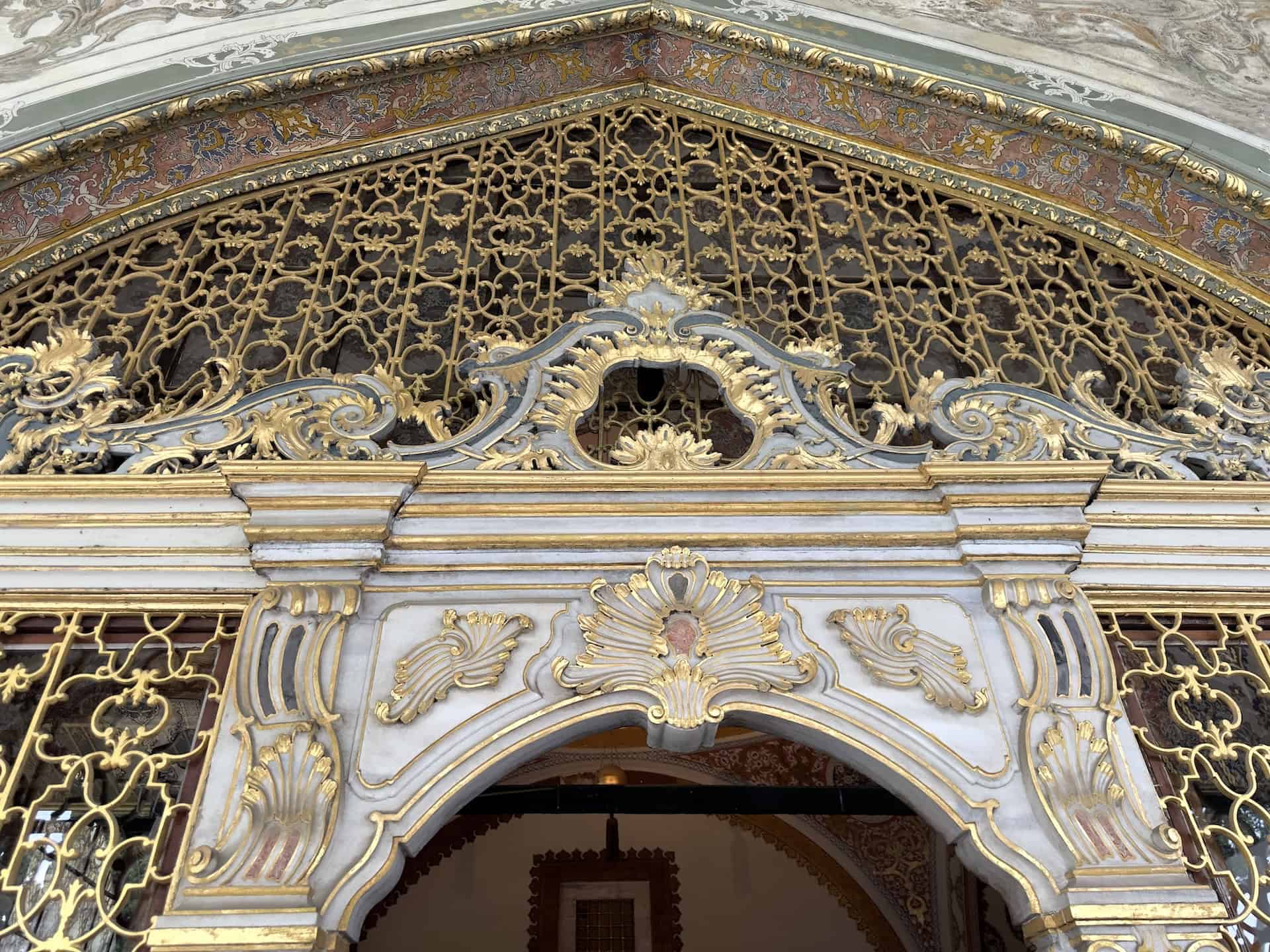
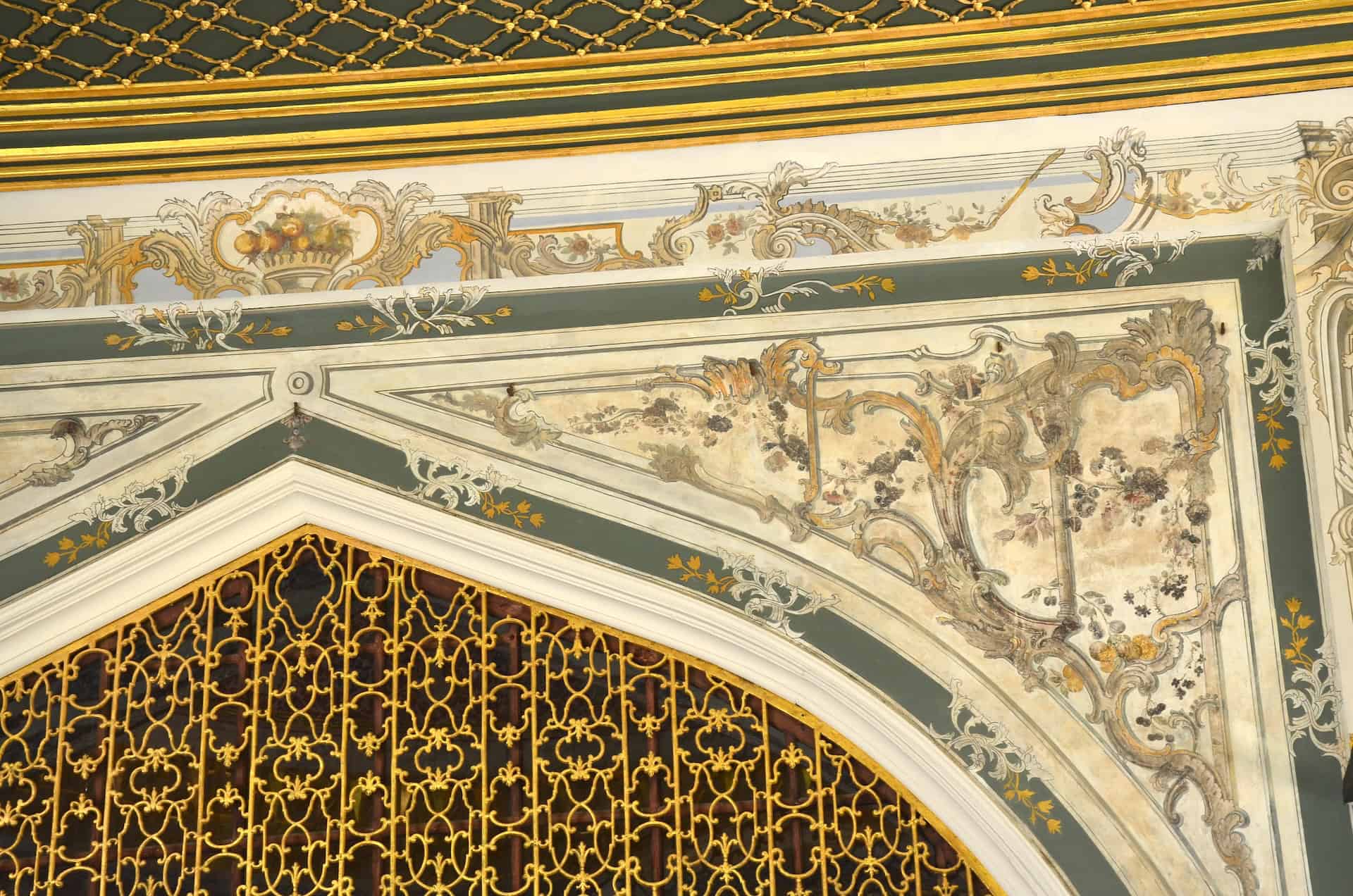
The Sultan and Queen Mother (Valide Sultan) would often attend Imperial Council meetings discretely from behind a window with a golden grill. When the Sultan would draw the curtain on the window or rap on the grill, it signaled that the meeting was over. The viziers would then have to meet with him one by one in private at the Audience Chamber in the 3rd Courtyard. The golden window is accessible from the Tower of Justice. The Council Hall is decorated with Kütahya tiles.

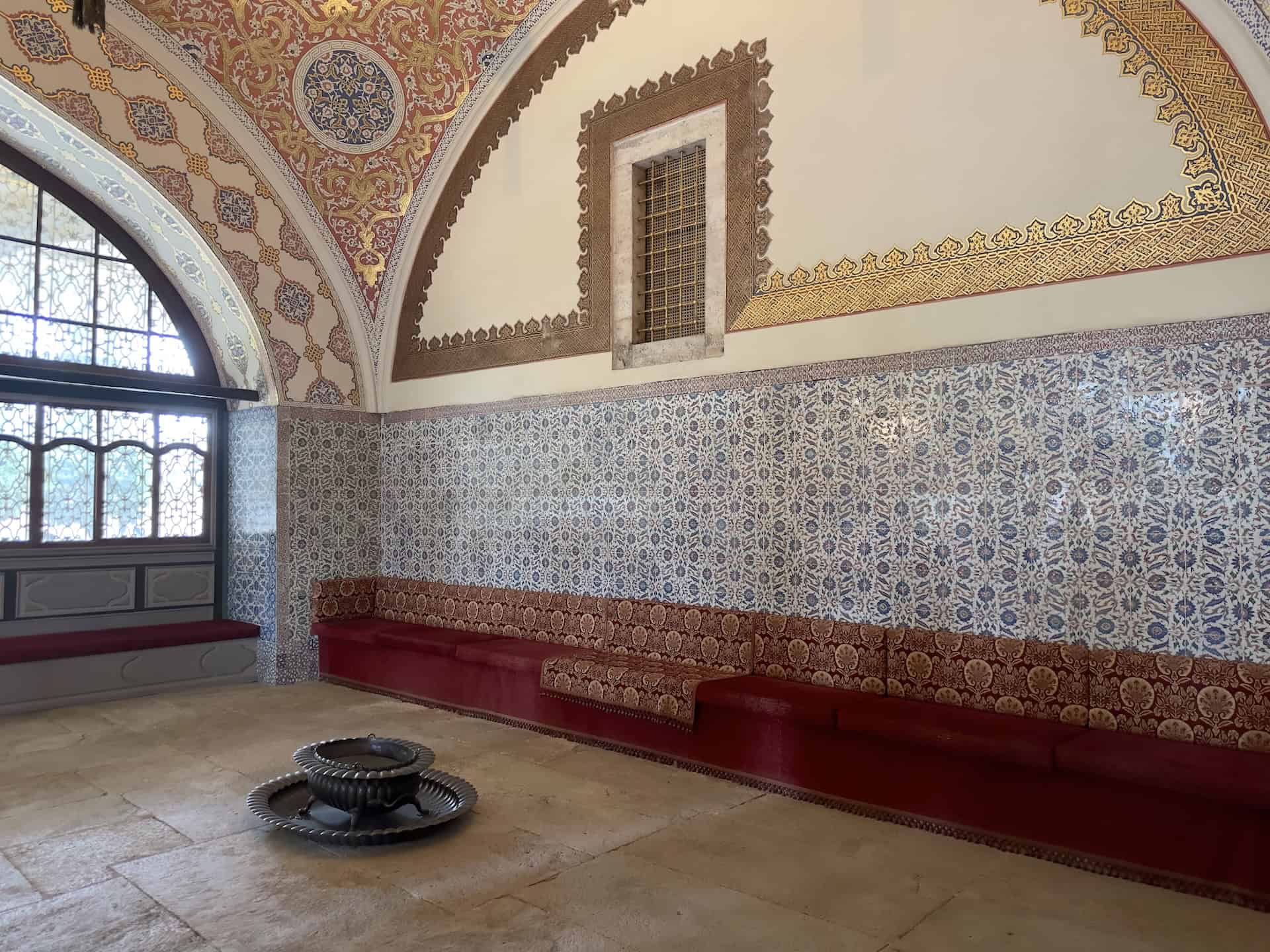
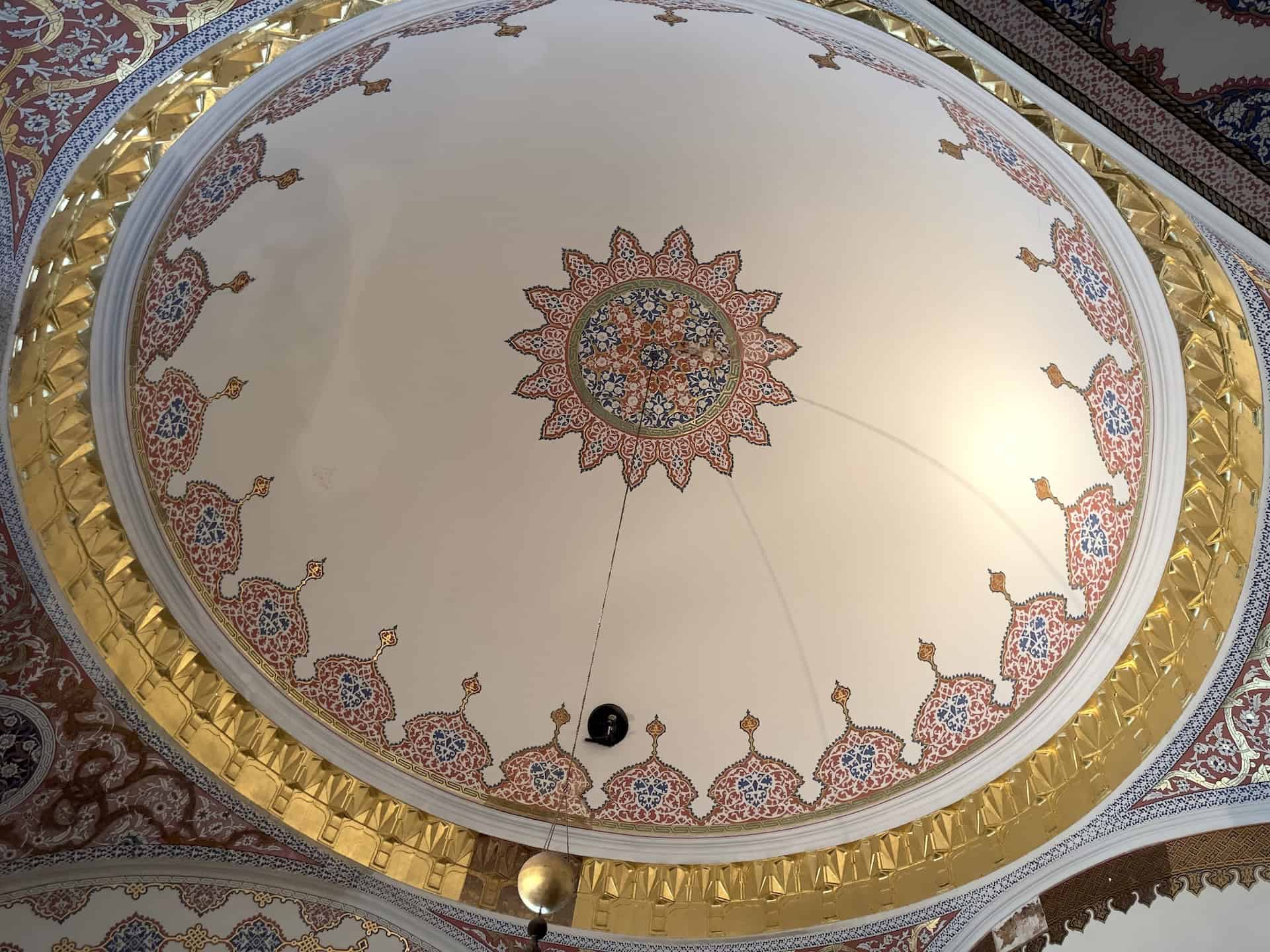
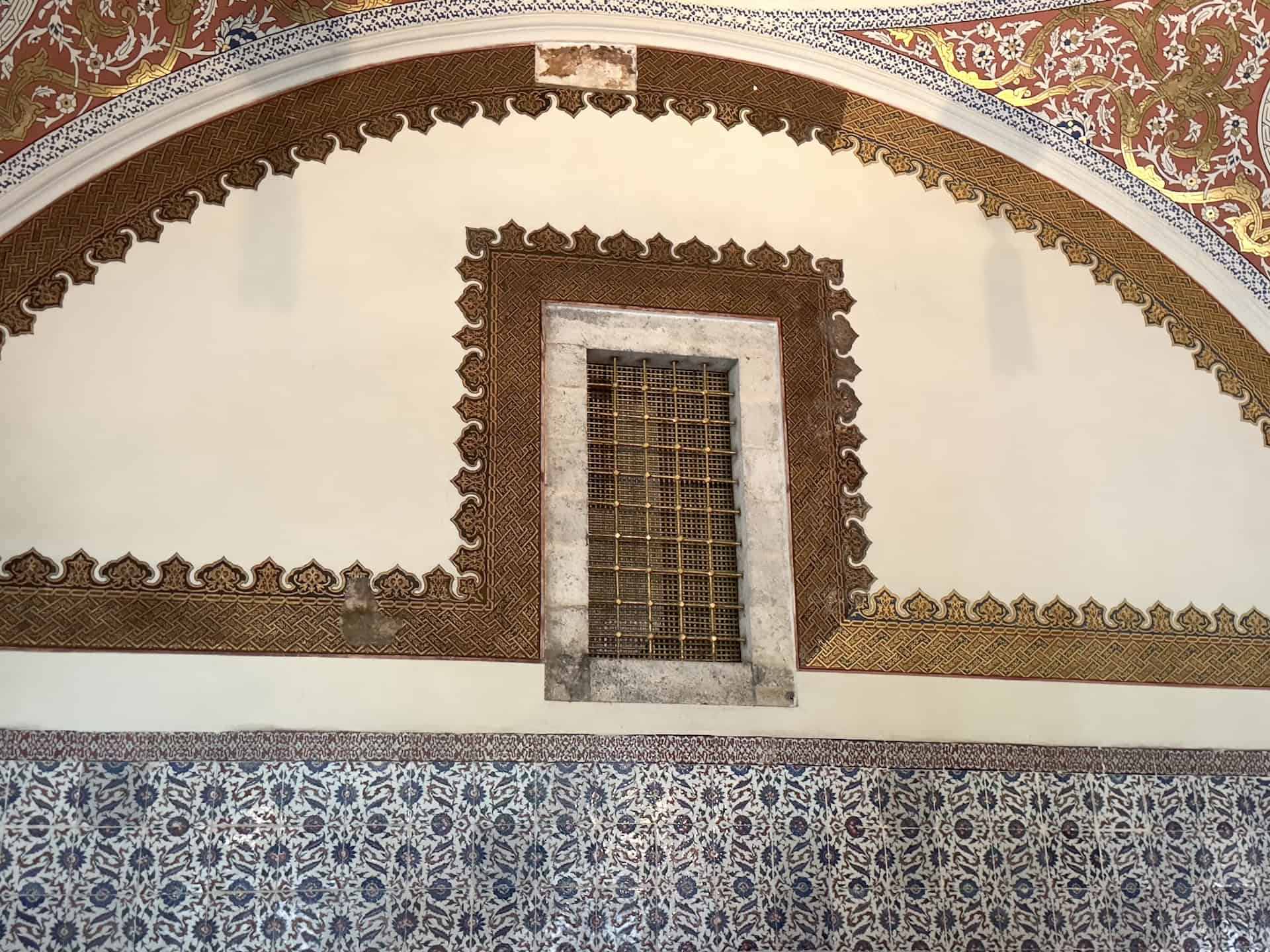
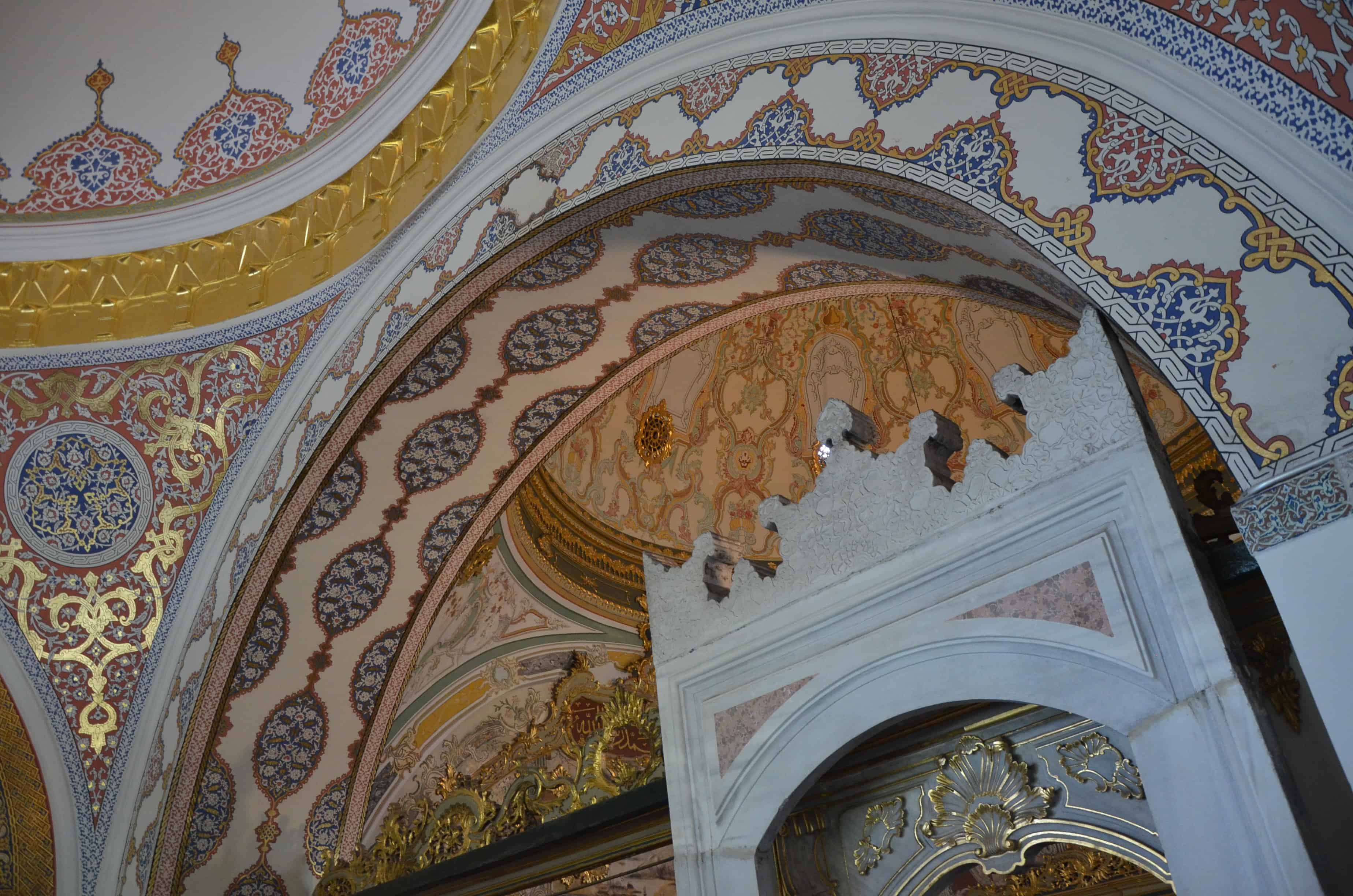
Second Chamber
The second chamber was occupied by the secretarial staff of the viziers. They would record what was discussed during the meetings. The wall bears the tughra (monogram) of Sultan Mustafa III.
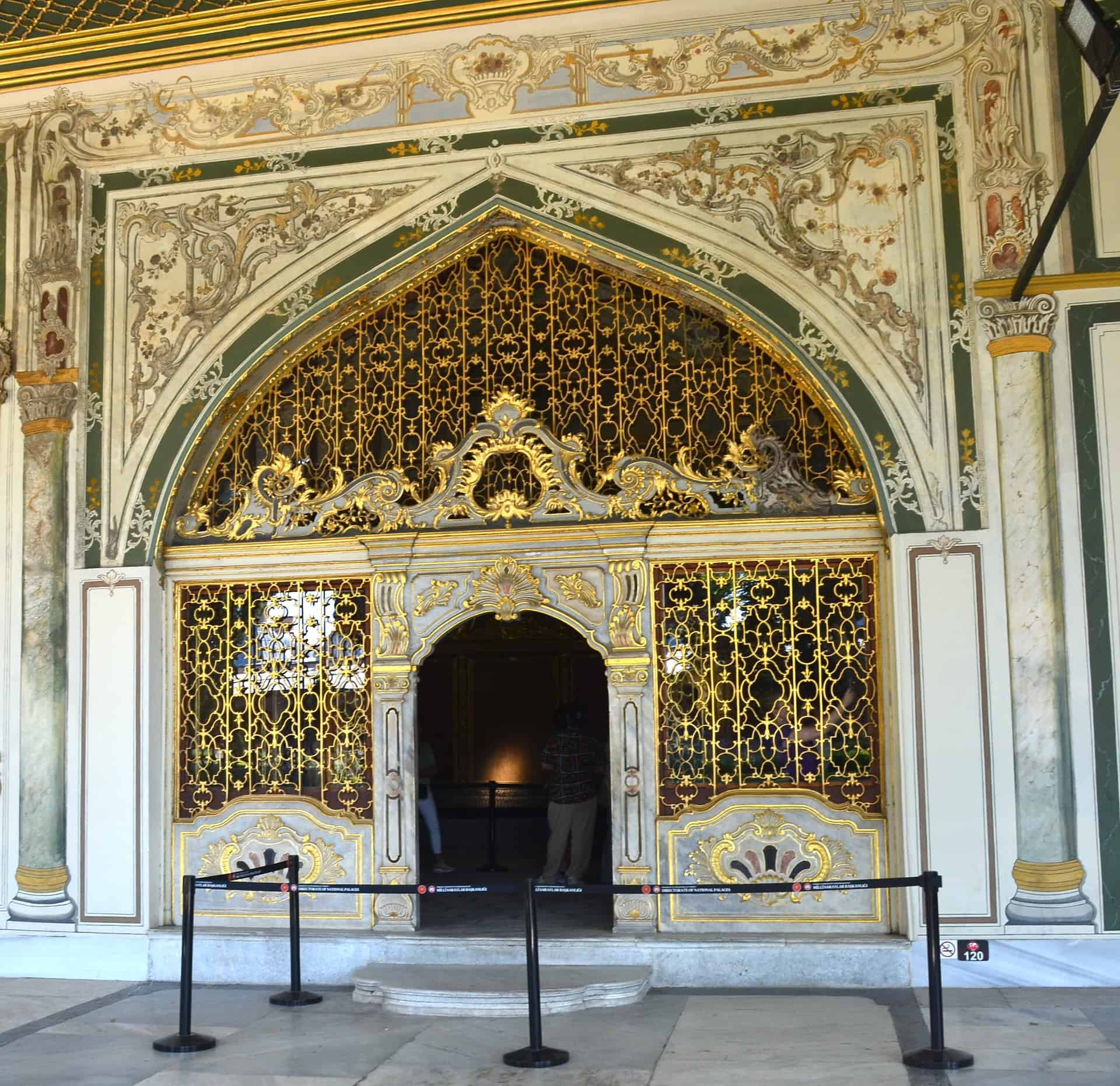
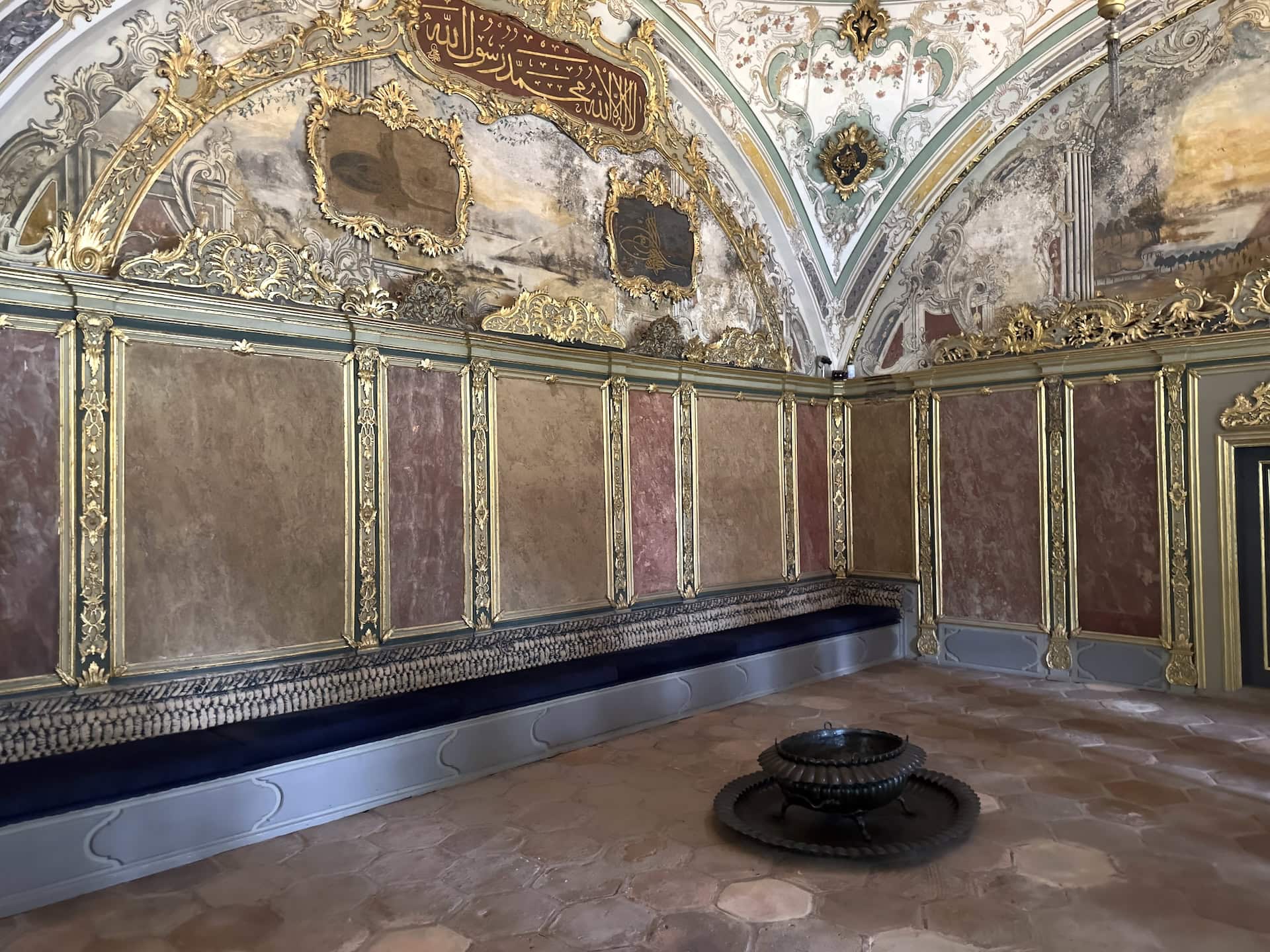
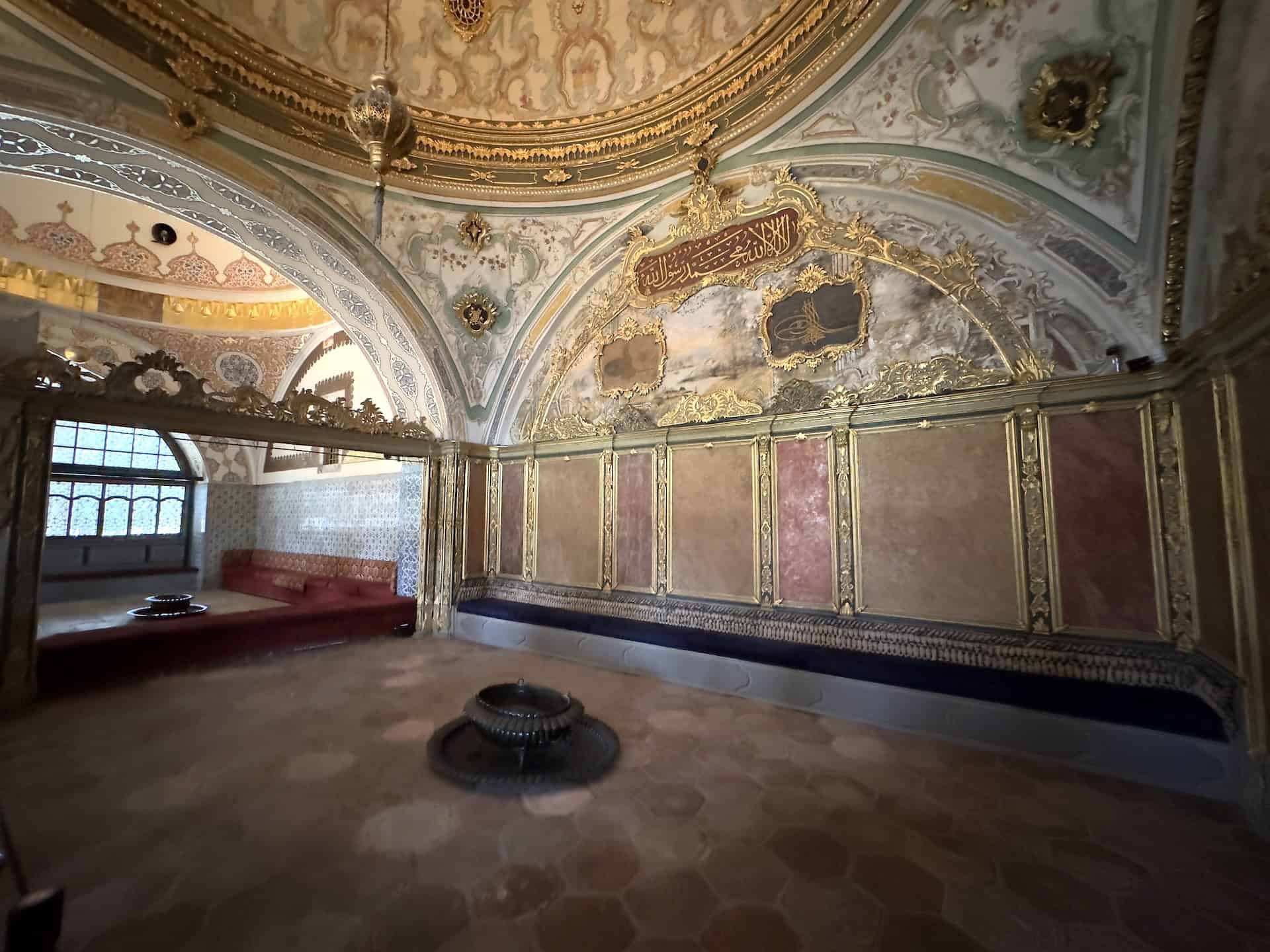
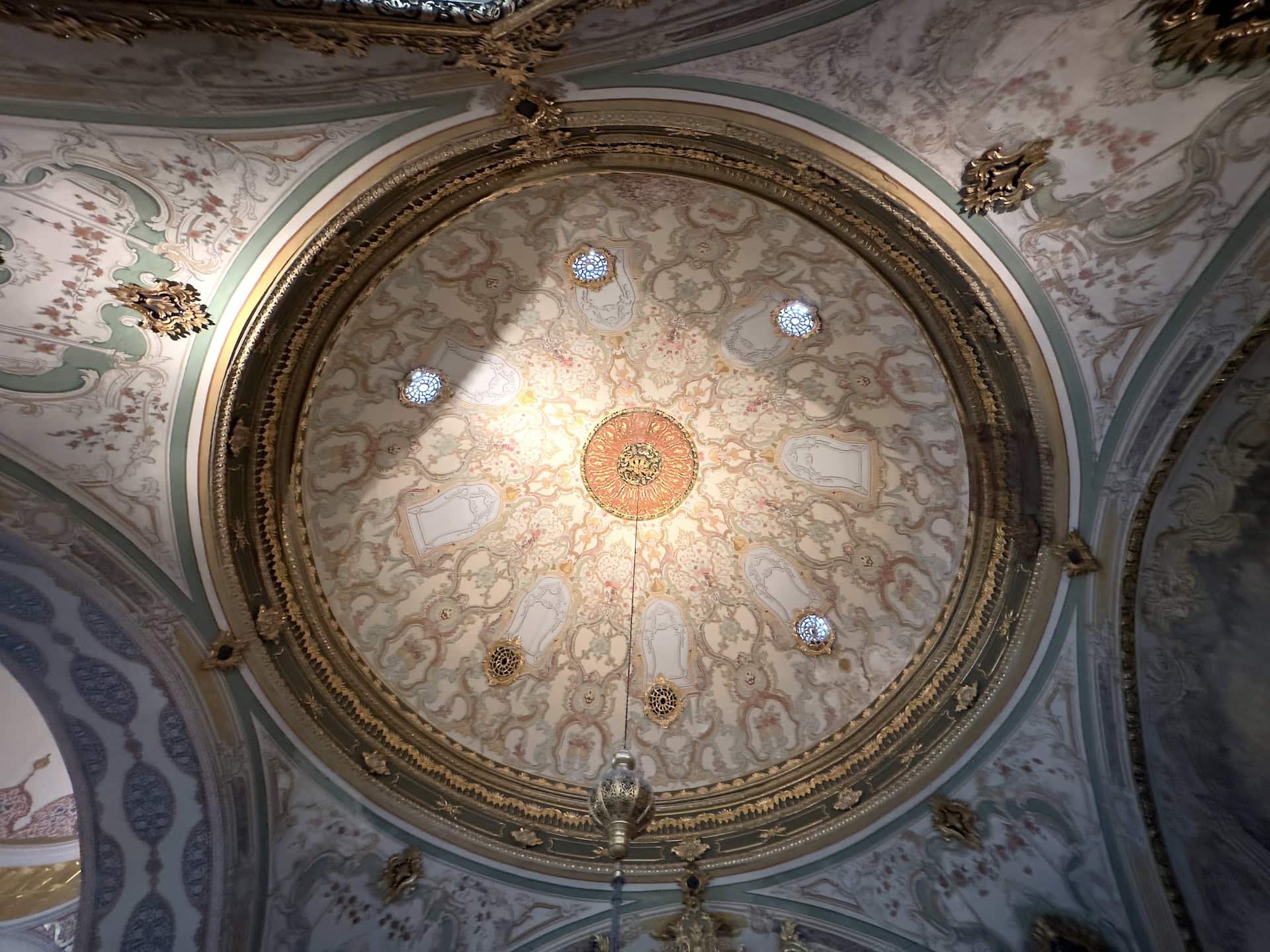

Inkwell Chamber
The third chamber to the right is the Inkwell Chamber (Divit Odası). Inside, scribes would write letters carrying state secrets as well as official documents. Today, it serves as a small museum of clocks.
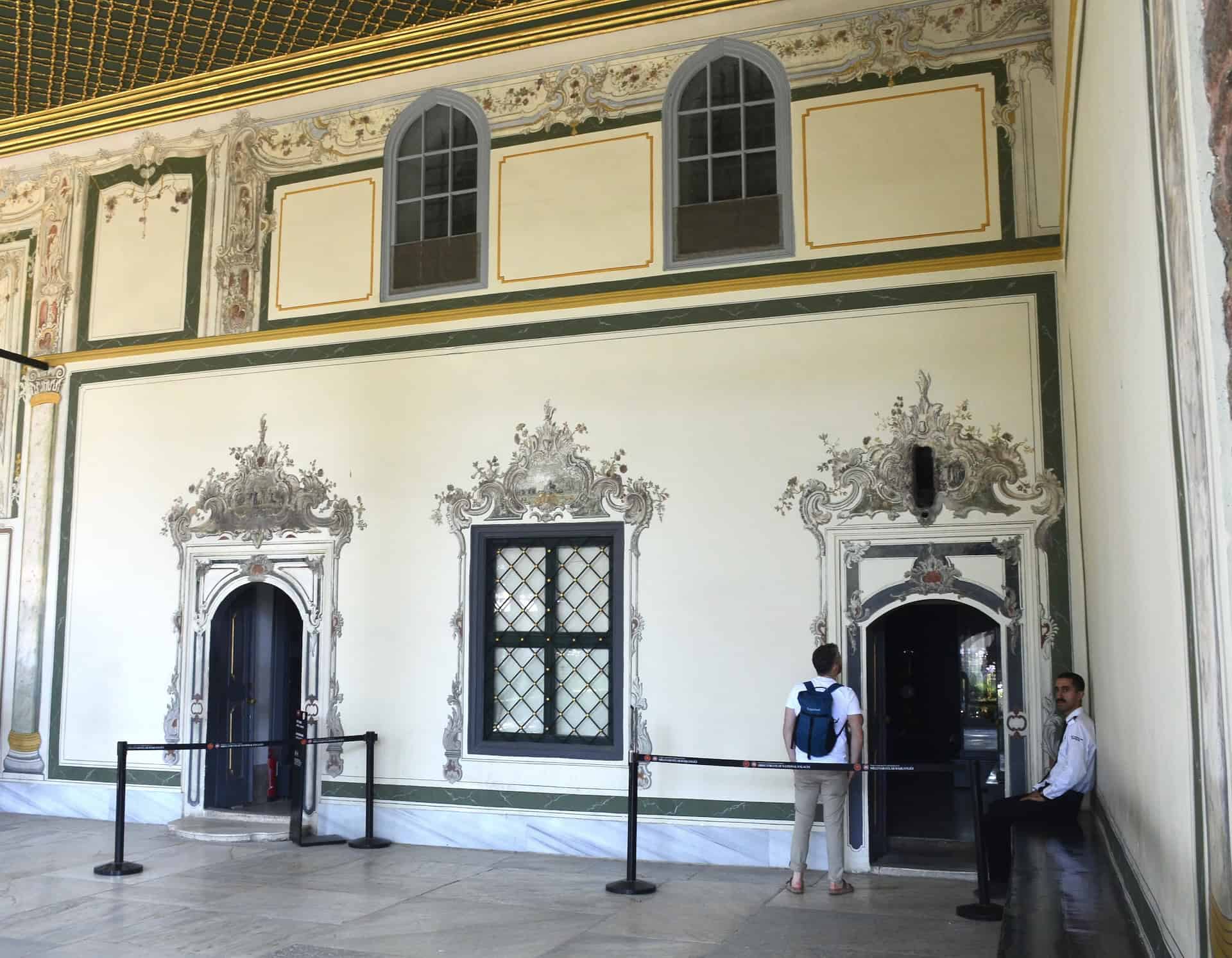

Clock Collection at Topkapi Palace
The clock collection at Topkapi Palace is worth popping in to see. It contains 380 rare mechanical clocks that were produced during a 400 year period. The exhibition opened in 2012 and is divided into three sections: Ottoman clocks, European clocks, and pocket watches.
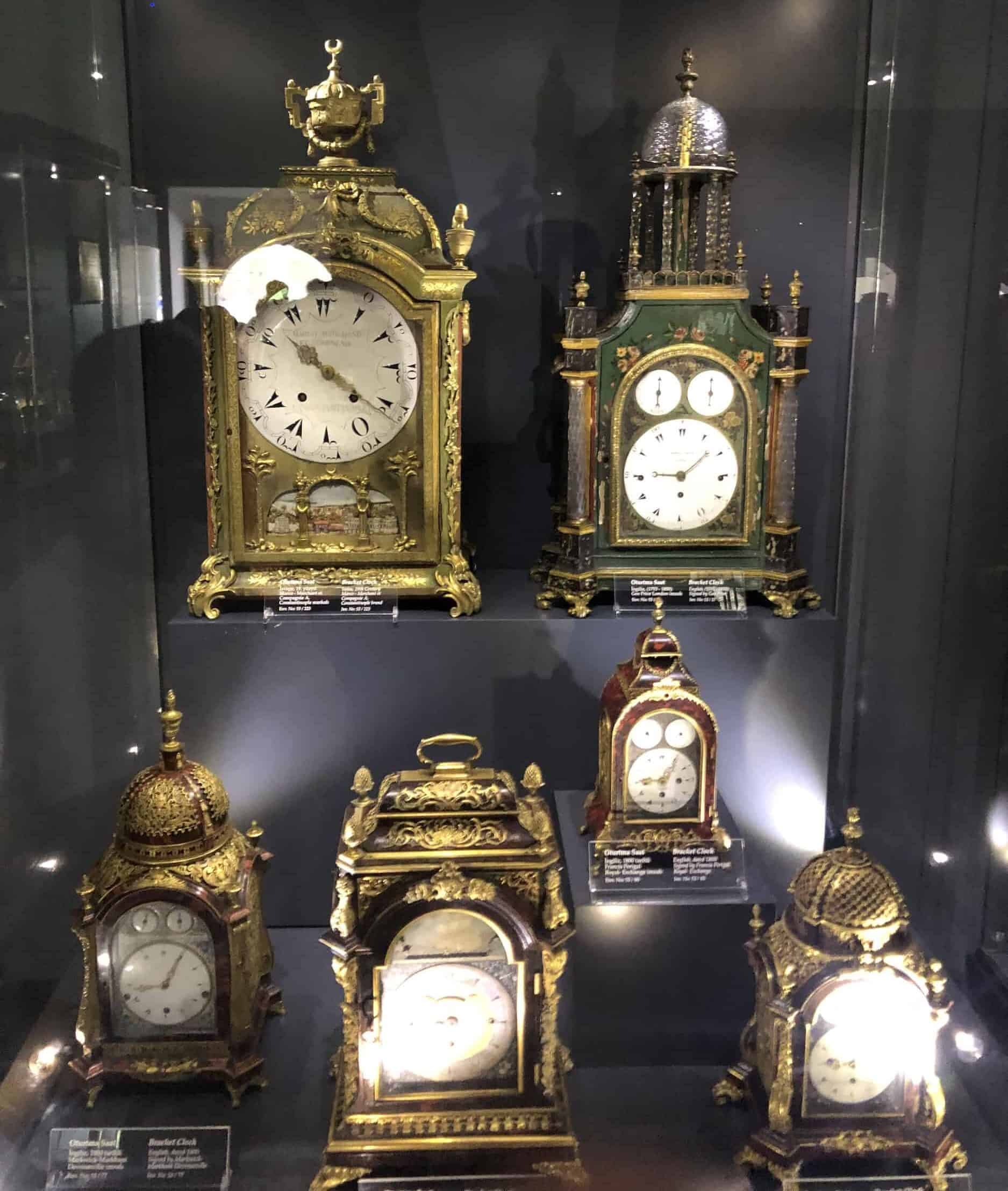
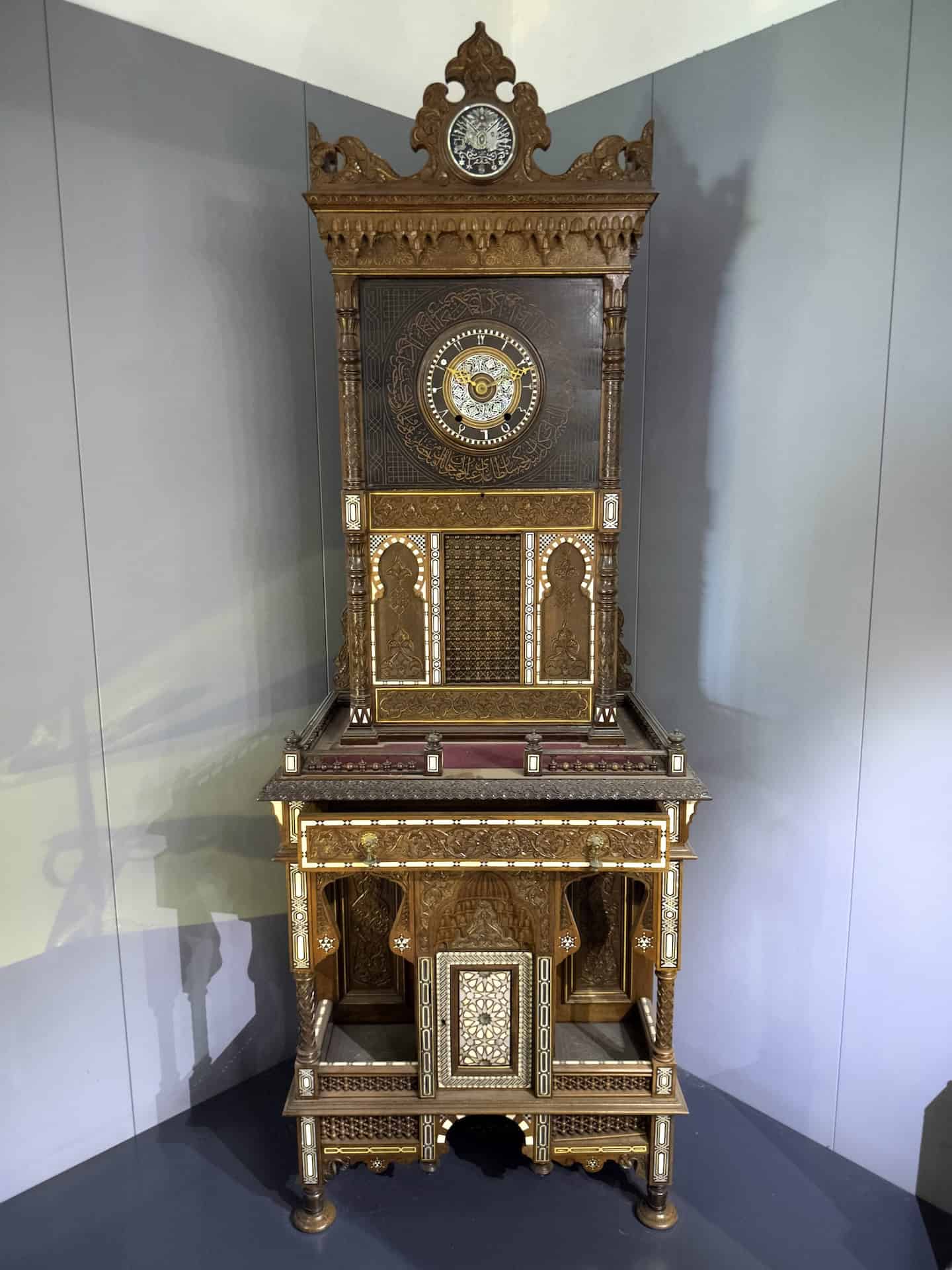
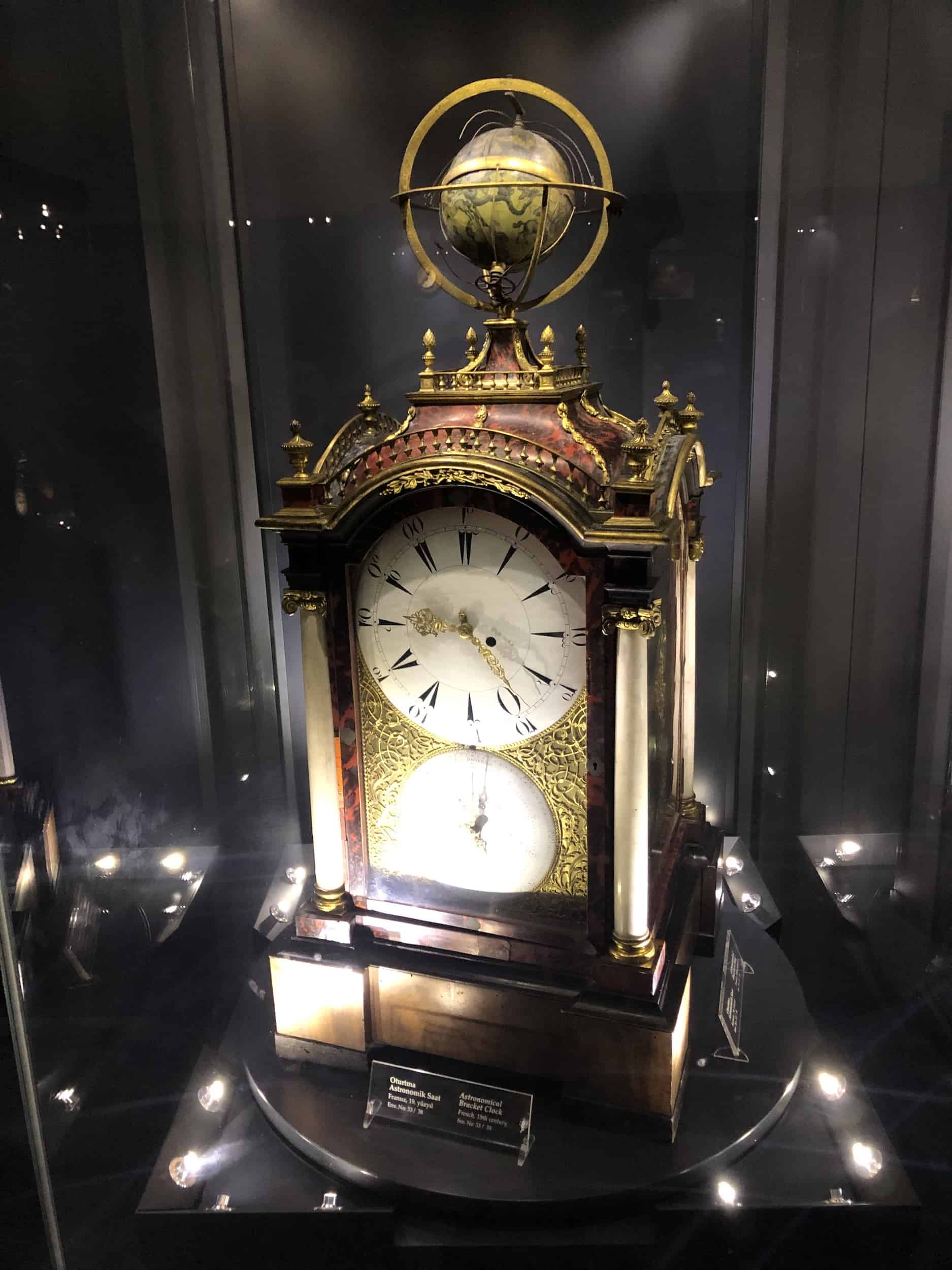
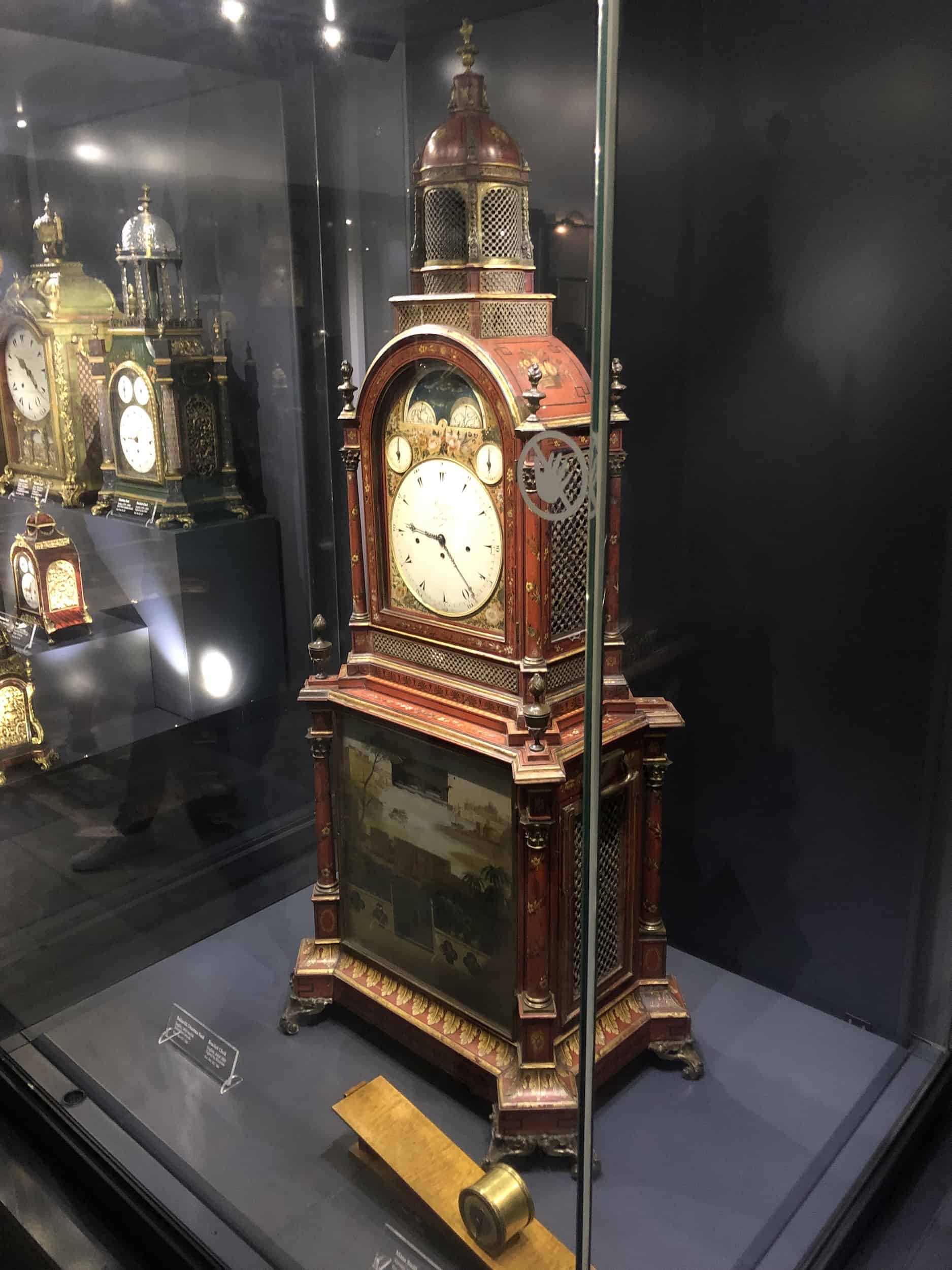
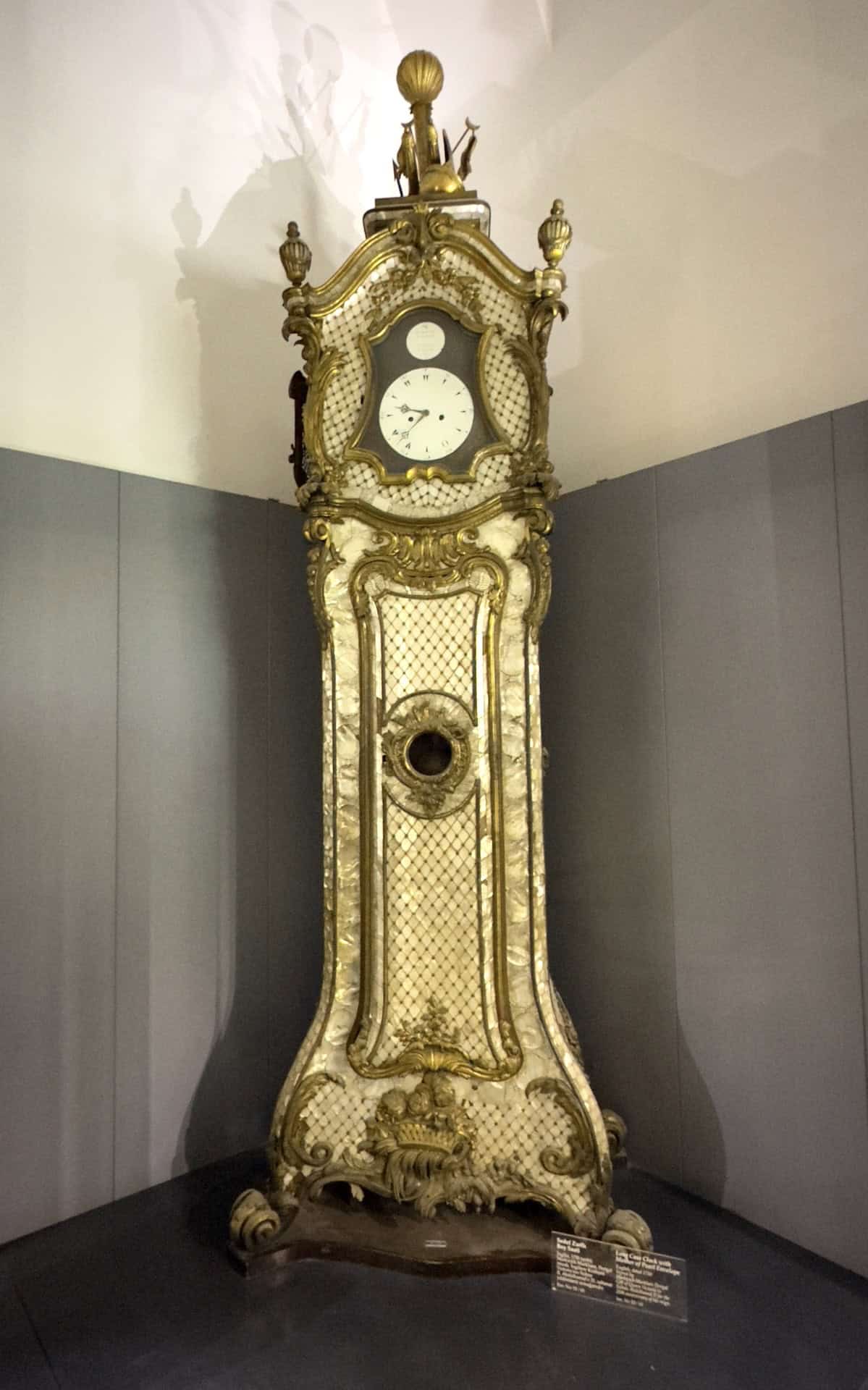
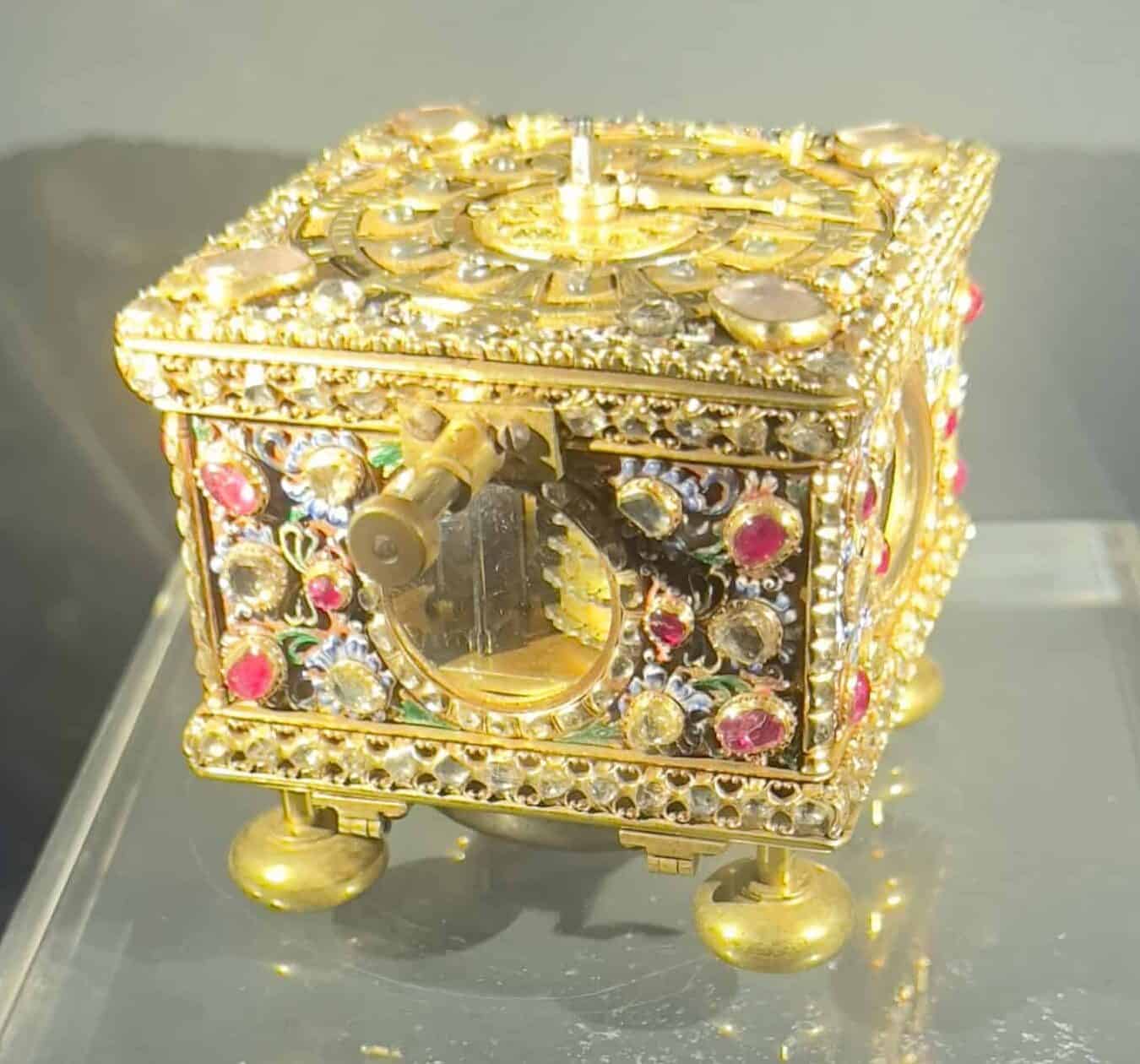
Outer Treasury
The building next to the Imperial Council is the Outer Treasury (Dış Hazine), built between 1526 and 1528 by Süleyman the Magnificent. The salaries of the Janissaries and civil servants were distributed from there, and taxes collected from Ottoman provinces were kept there. It also held gifts to be bestowed upon foreign ambassadors. The building functioned as a treasury until the mid-19th century and now houses an impressive collection of weapons and armor.
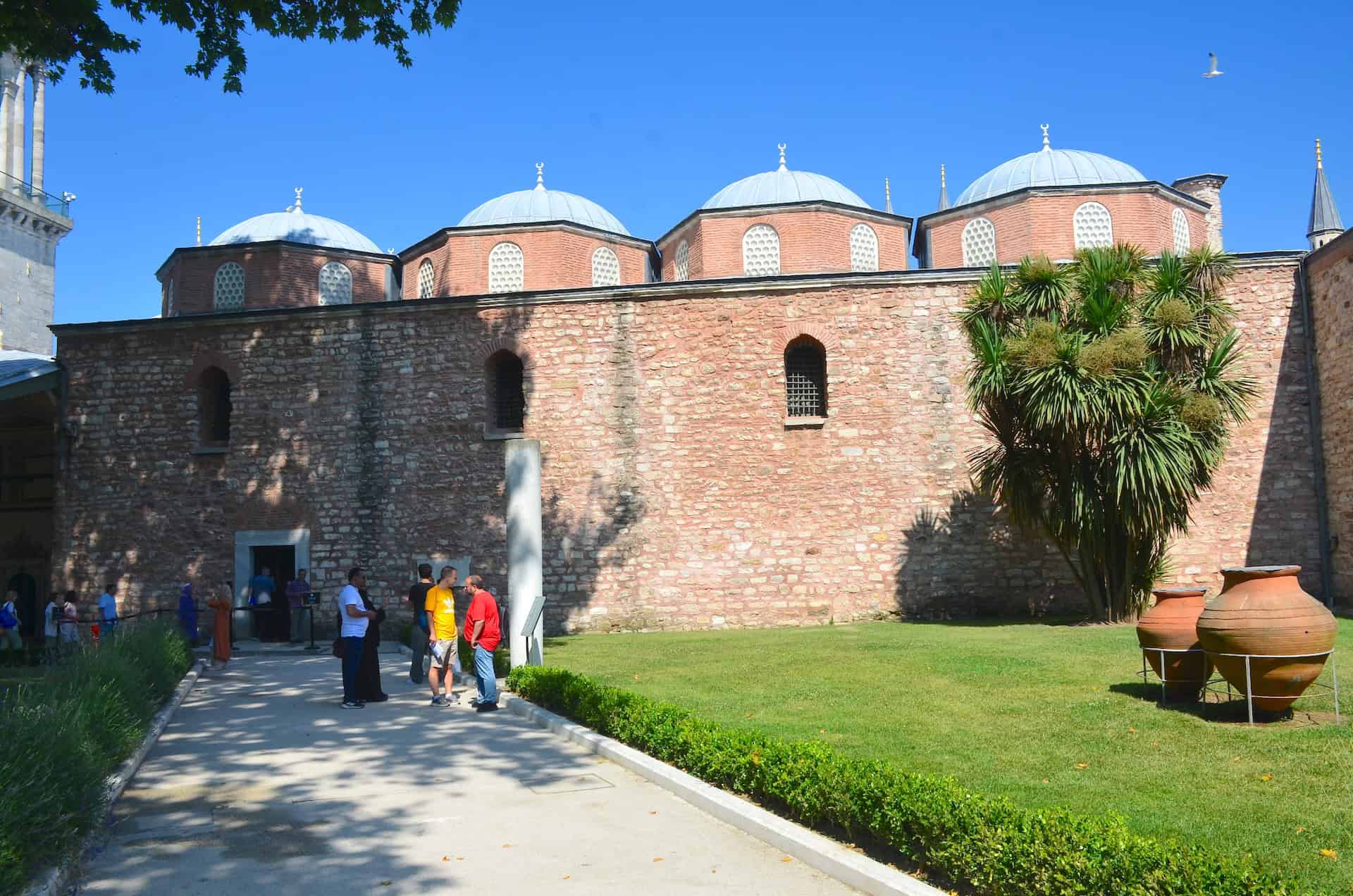
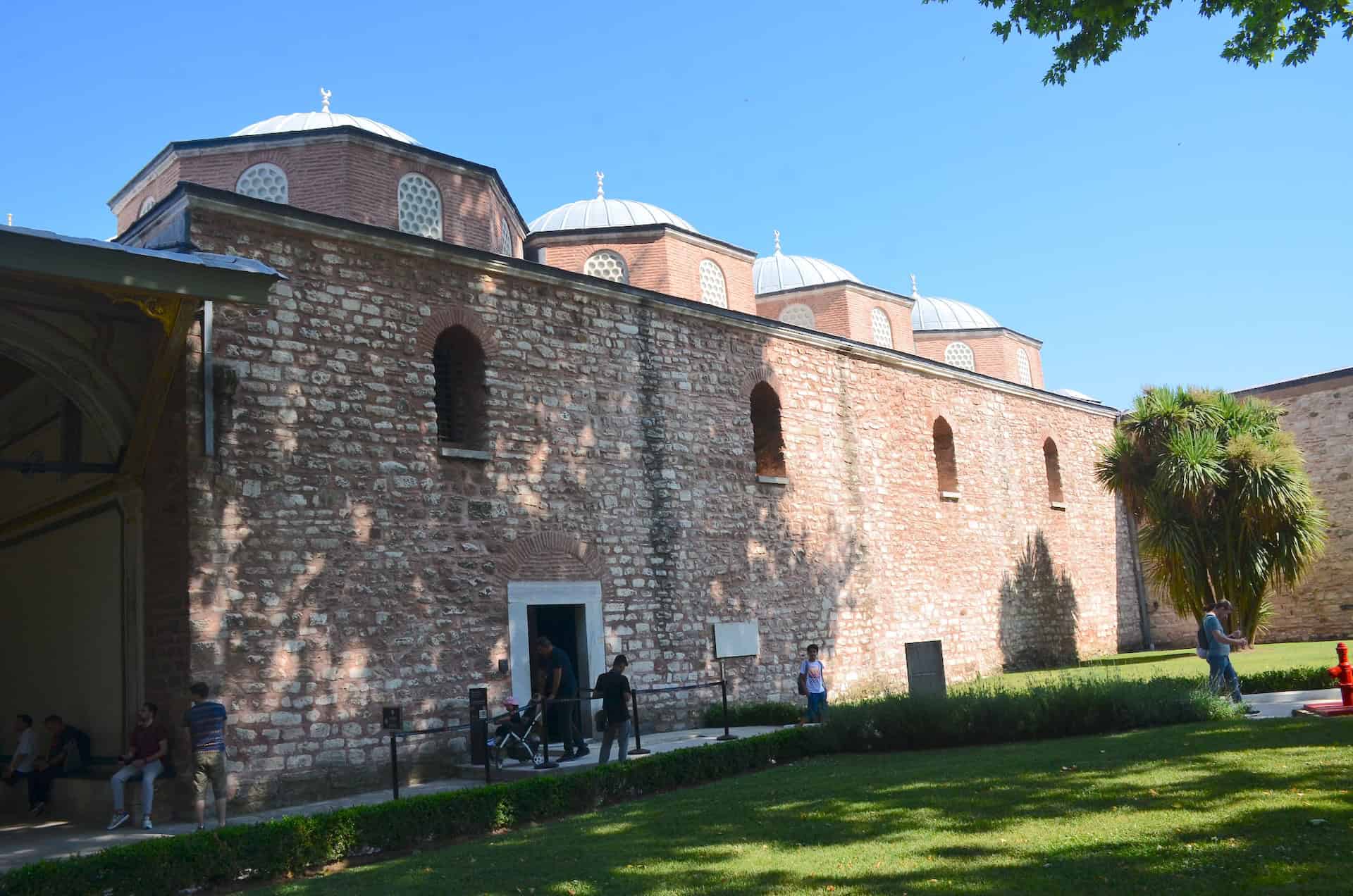
Weapons Collection at Topkapi Palace
Topkapi Palace features one of the finest collection of weapons in the world. It spans 1,300 years from the 7th to 20th centuries. The collection is made up of over 33,000 pieces, including swords, armor, shields, helmets, axes, pistols, daggers, and more. There are about 400 weapons on display at any one time.

Ottoman Weapons
The first section of the exhibit displays Ottoman weapons. It includes items related to archery, such as bows and arrows; swords and sheaths; helmets and chainmail; and pistols.
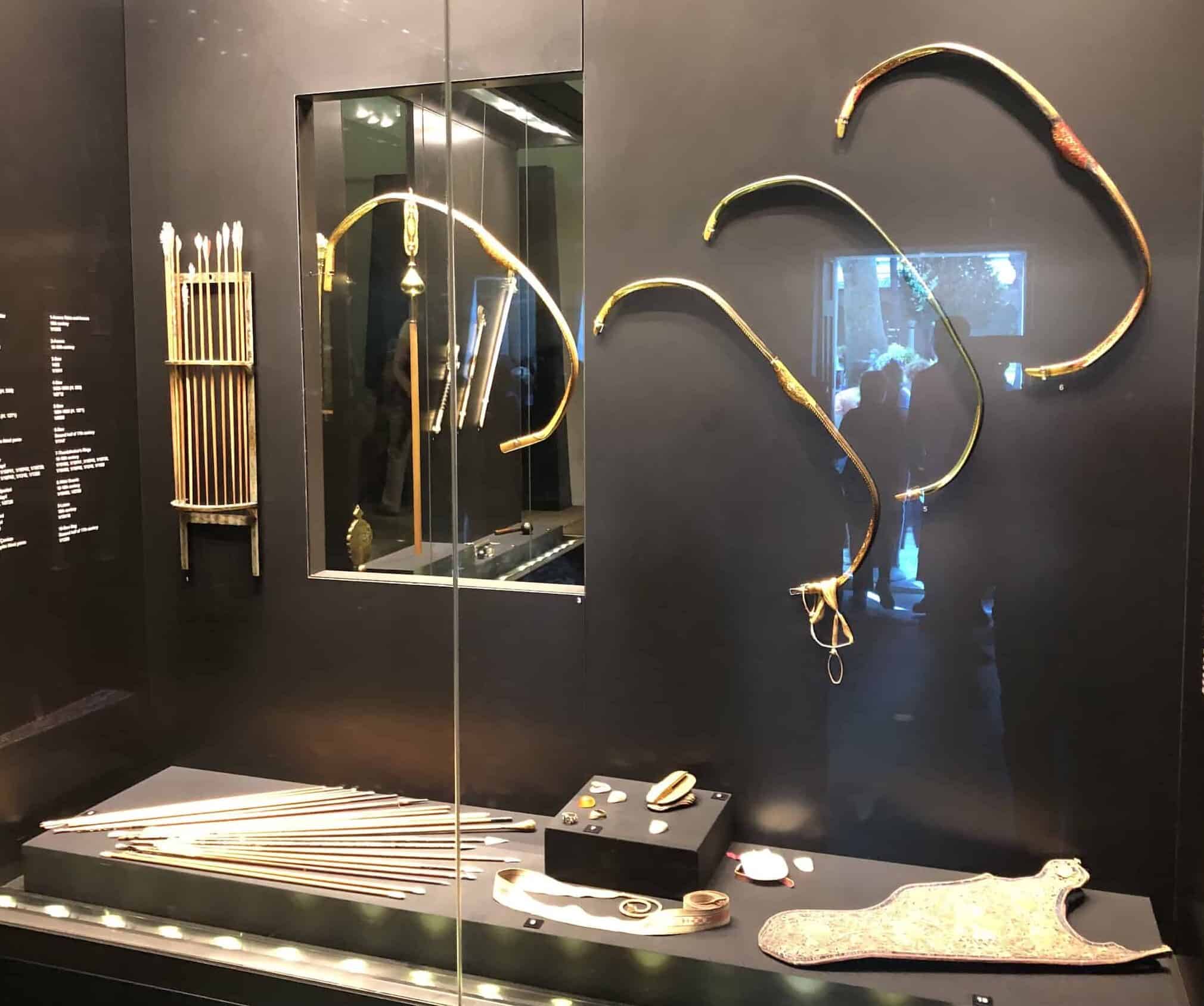
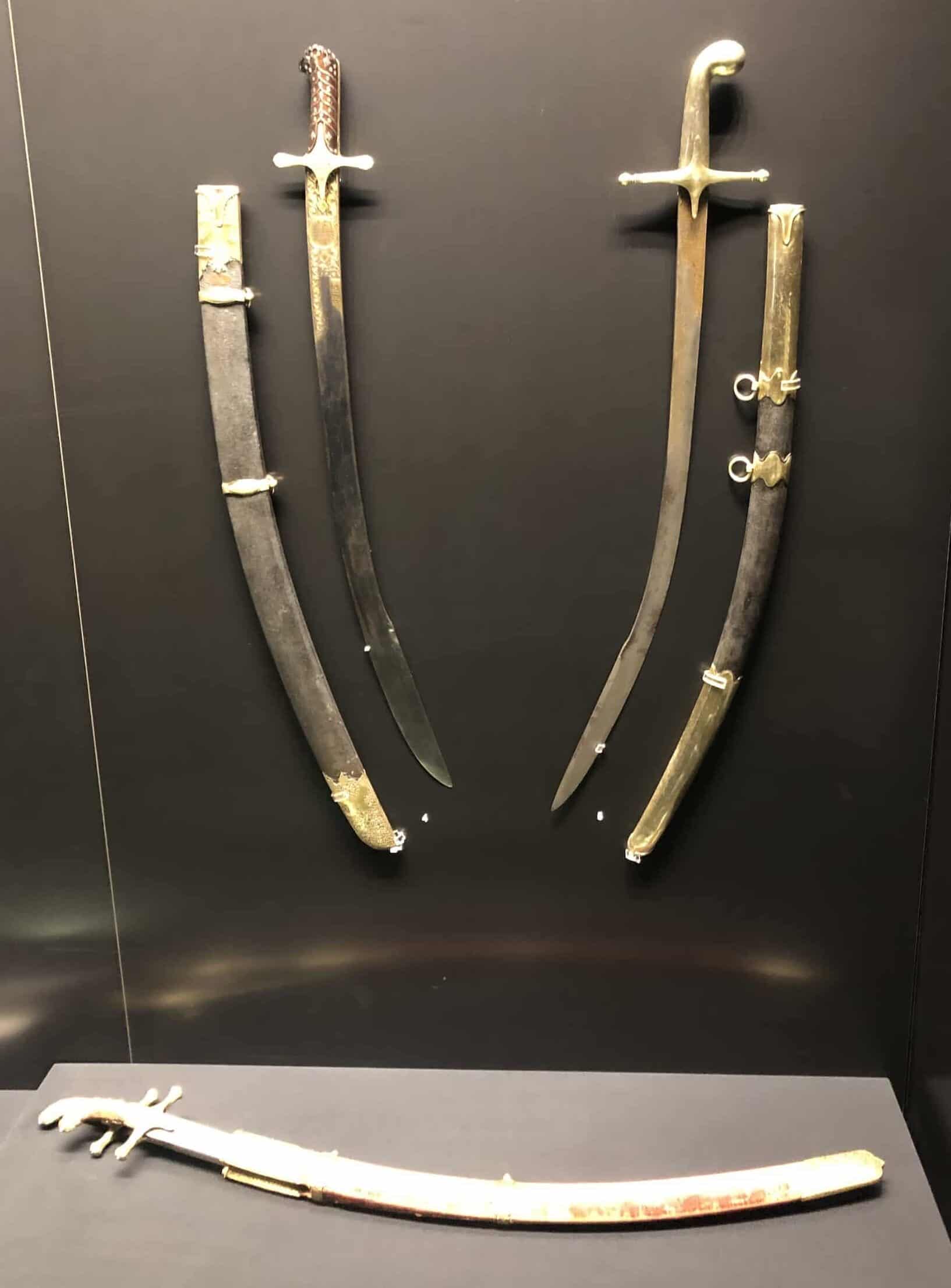
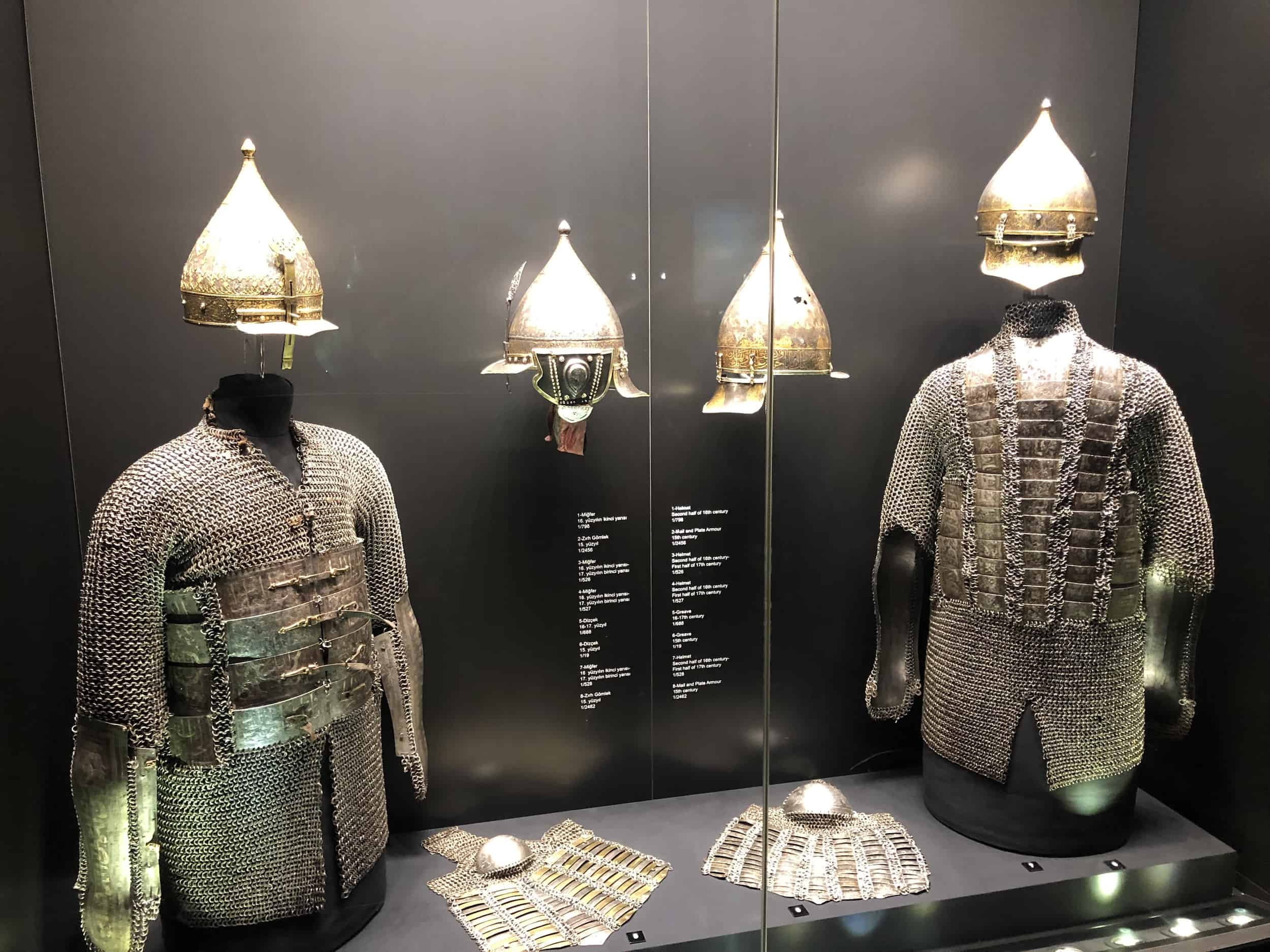
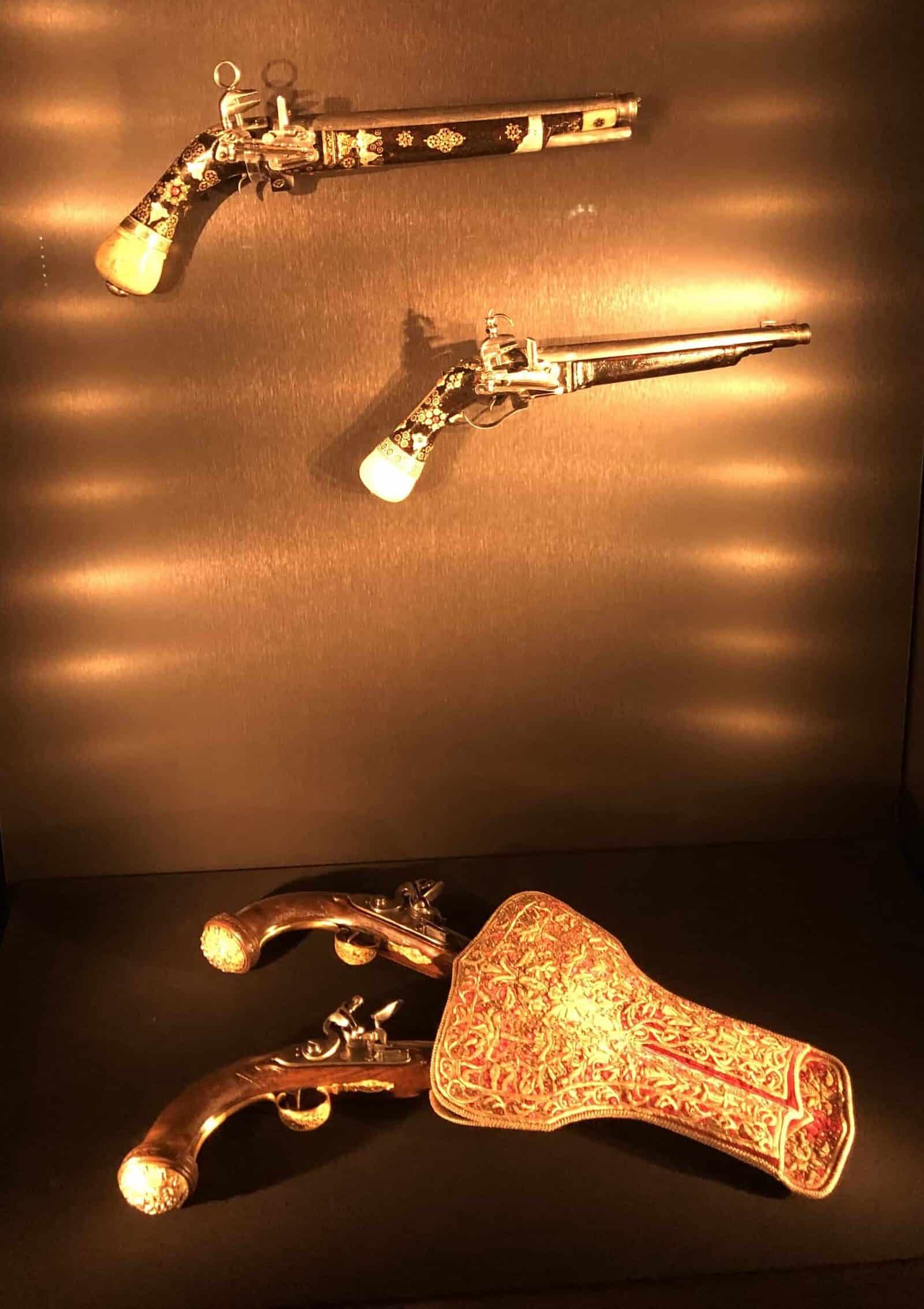
Gifts and Prizes
Turning the corner is the Gifts and Prizes section. These weapons were gathered from the battlefield or given as gifts to the Sultan. The majority belonged to the Umayyads, Abbasids, Mamluks, and Persians, while a smaller percentage of European and Asian weapons are also included.
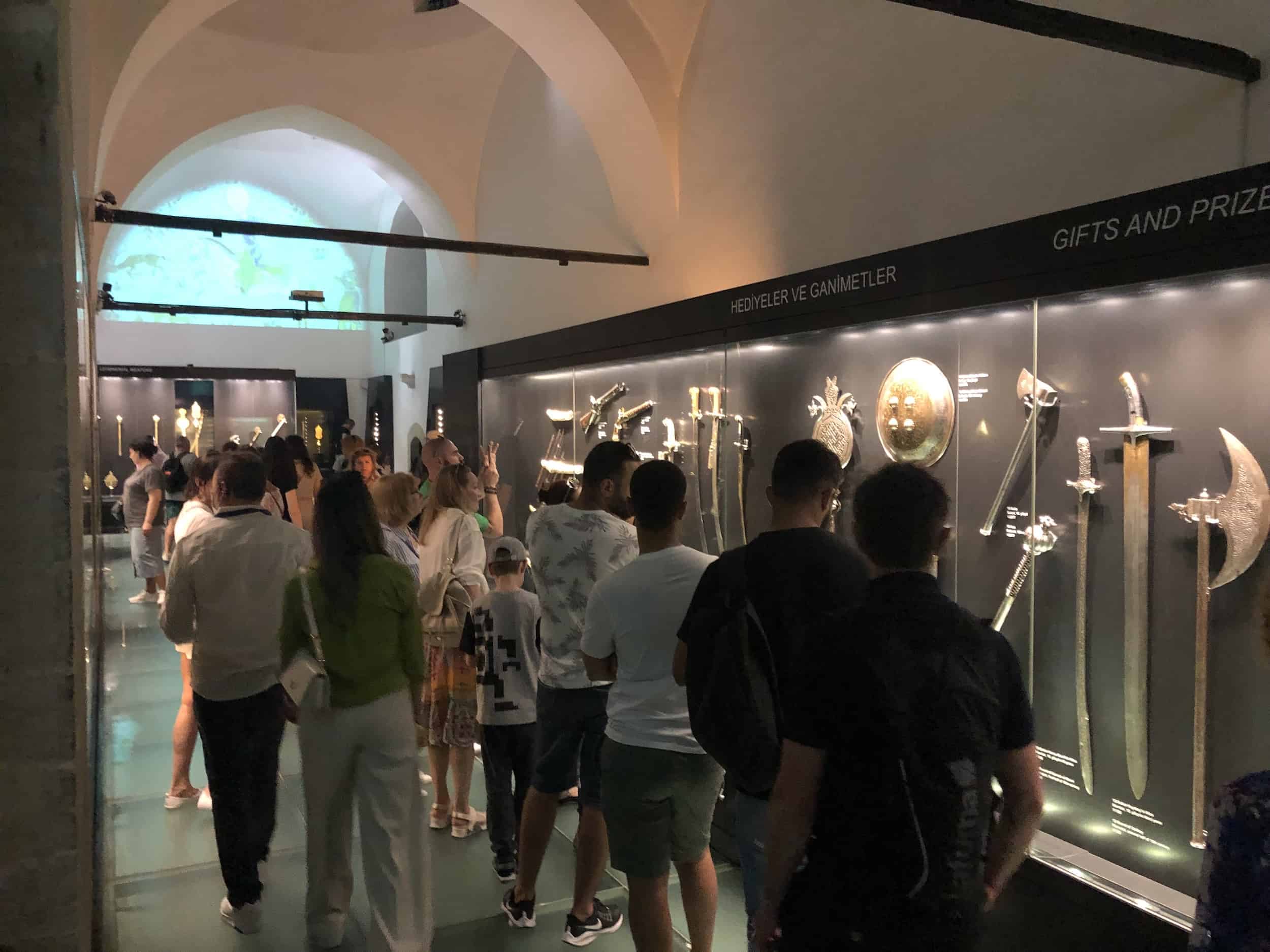
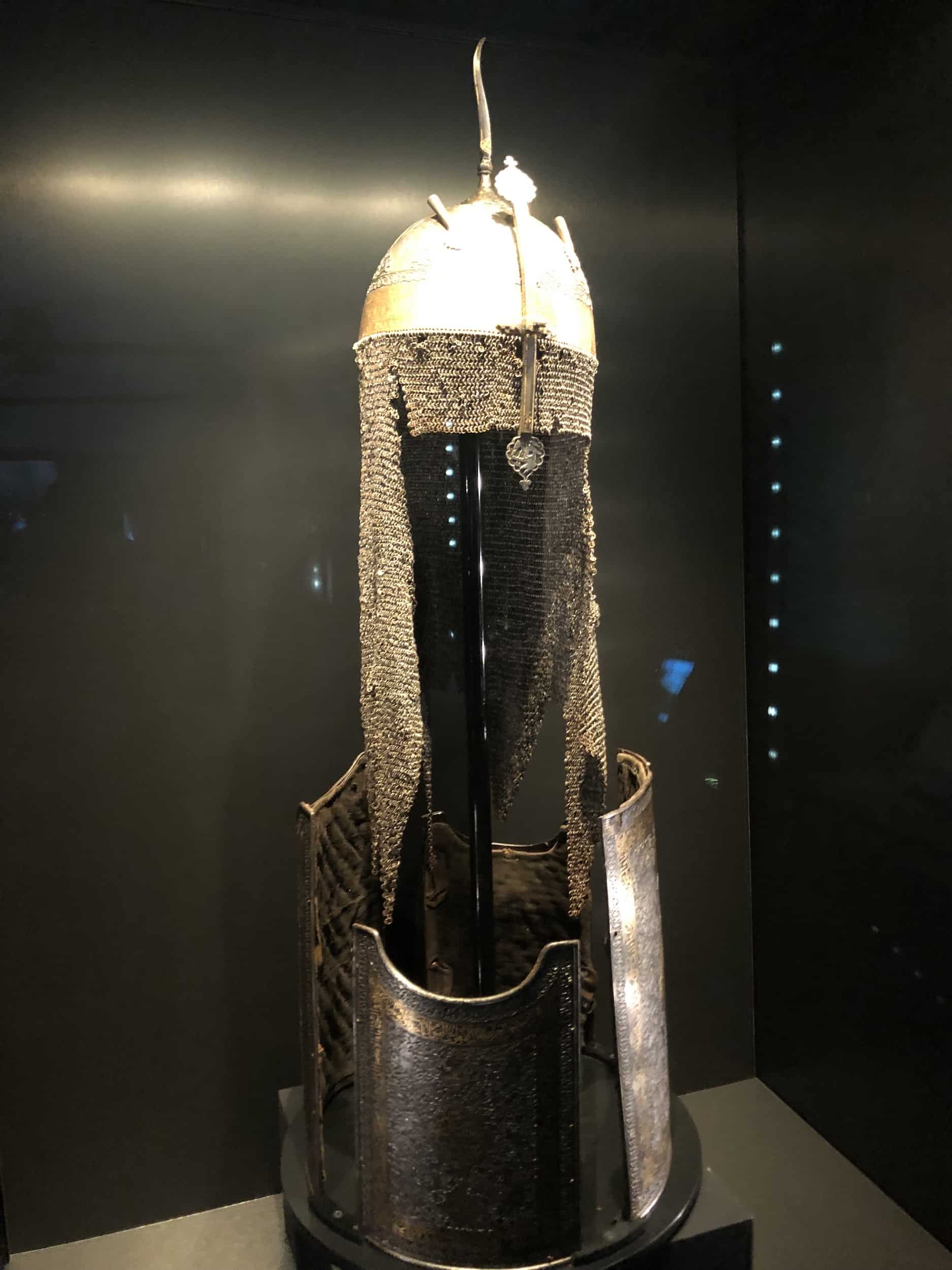
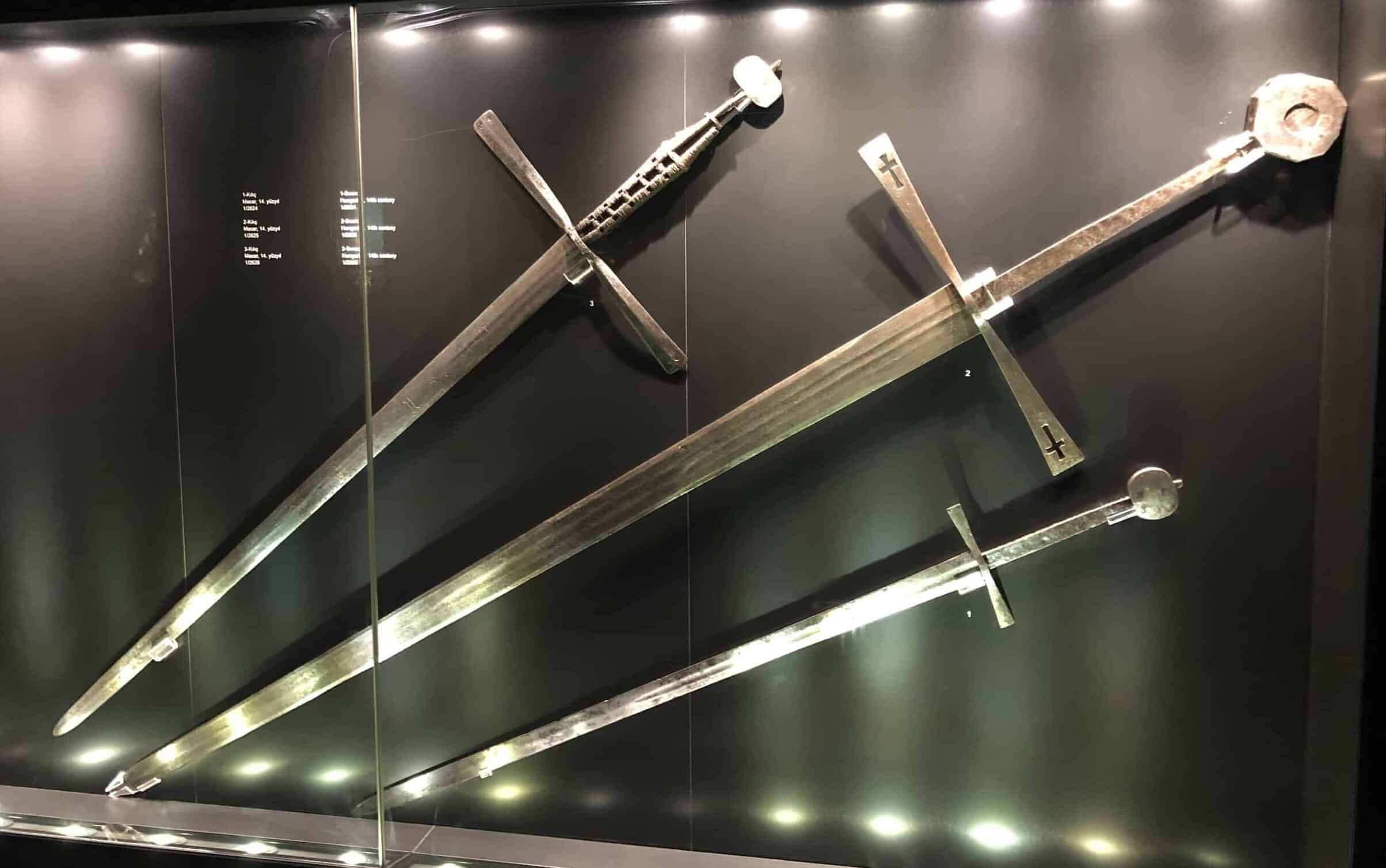
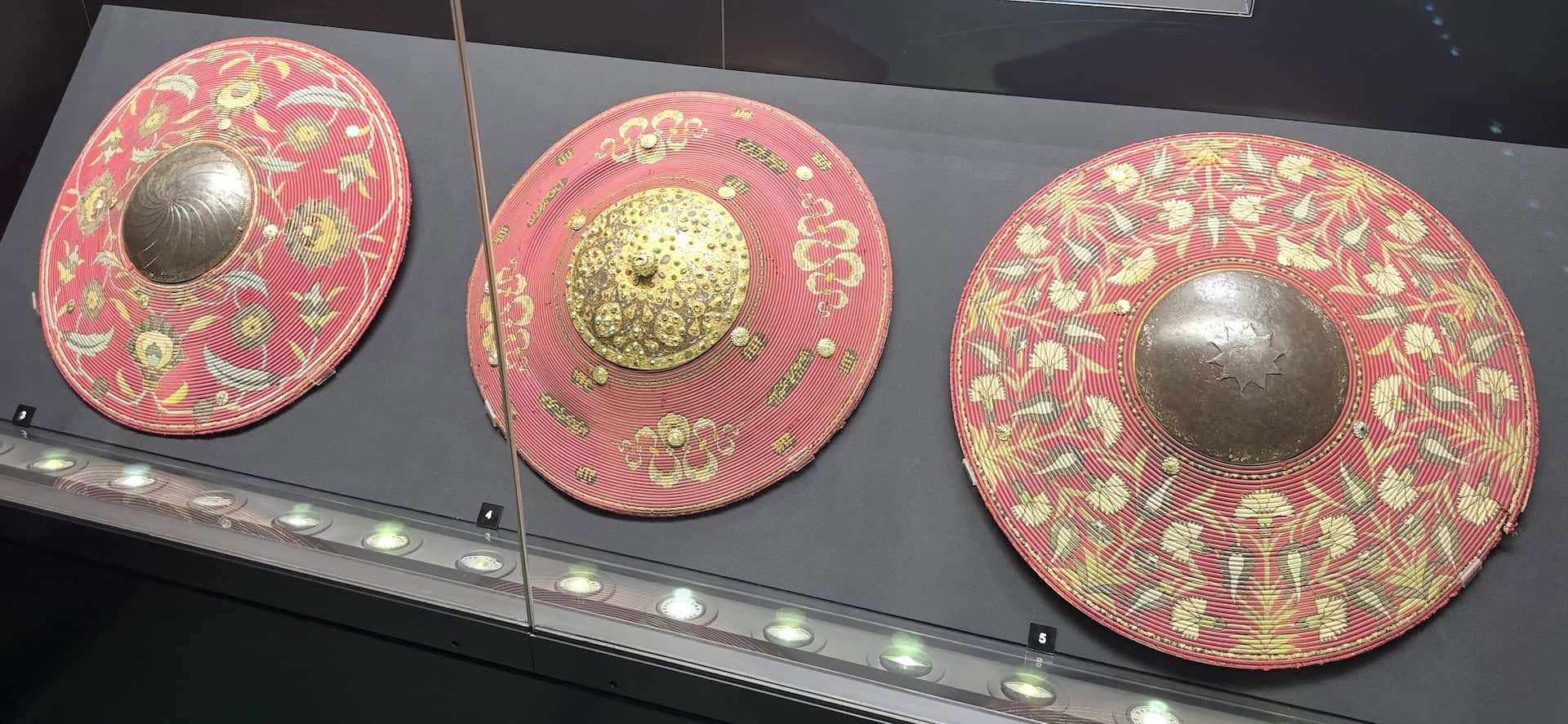
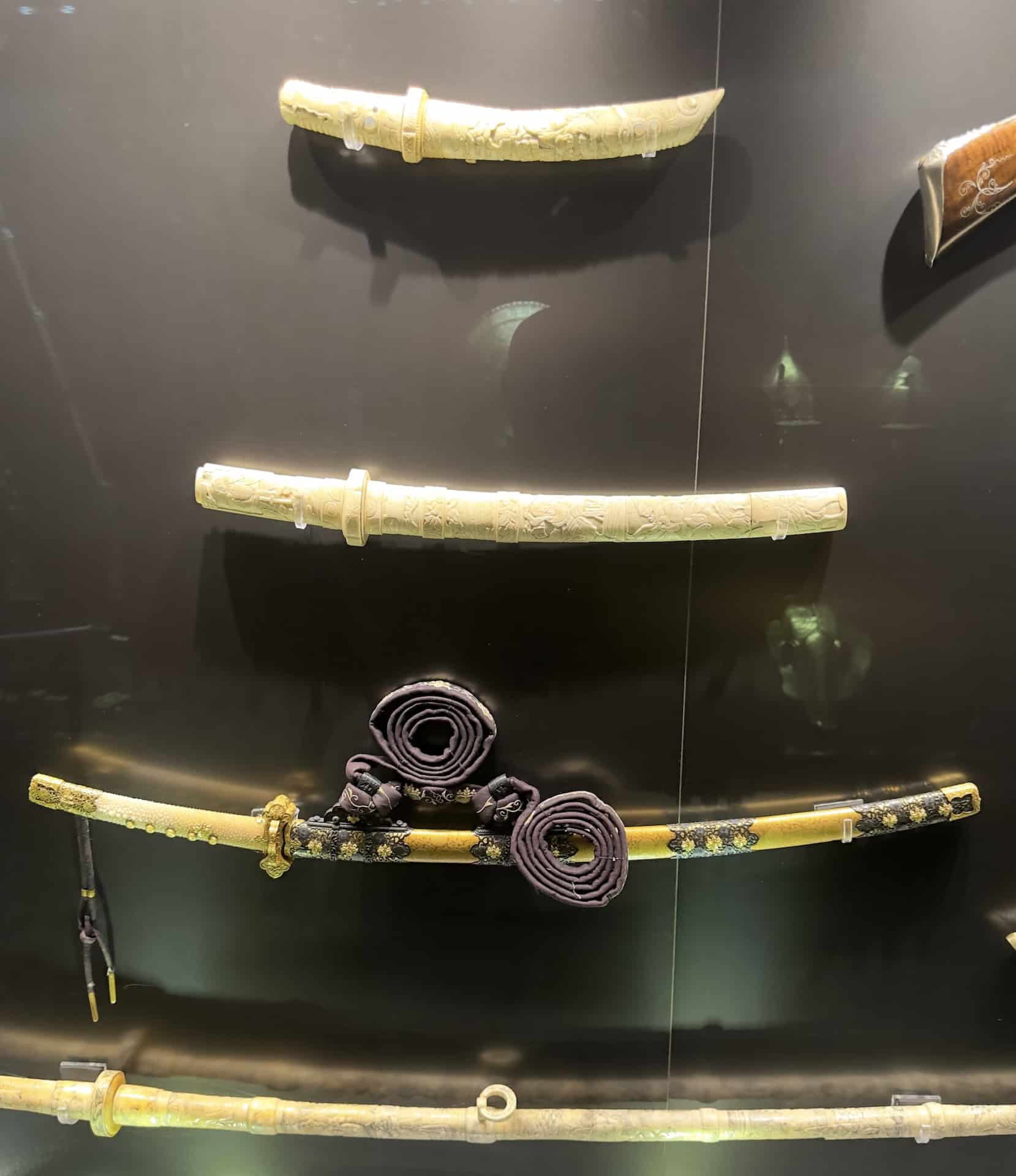
Weapons of the Sultans
Finally, several items belonging to the Sultans round out the weapons collection at Topkapi Palace. Of particular interest is the sword belonging to Mehmed the Conqueror, which features an inscription from the Quran. Swords and armor belonging to other Sultans follow.
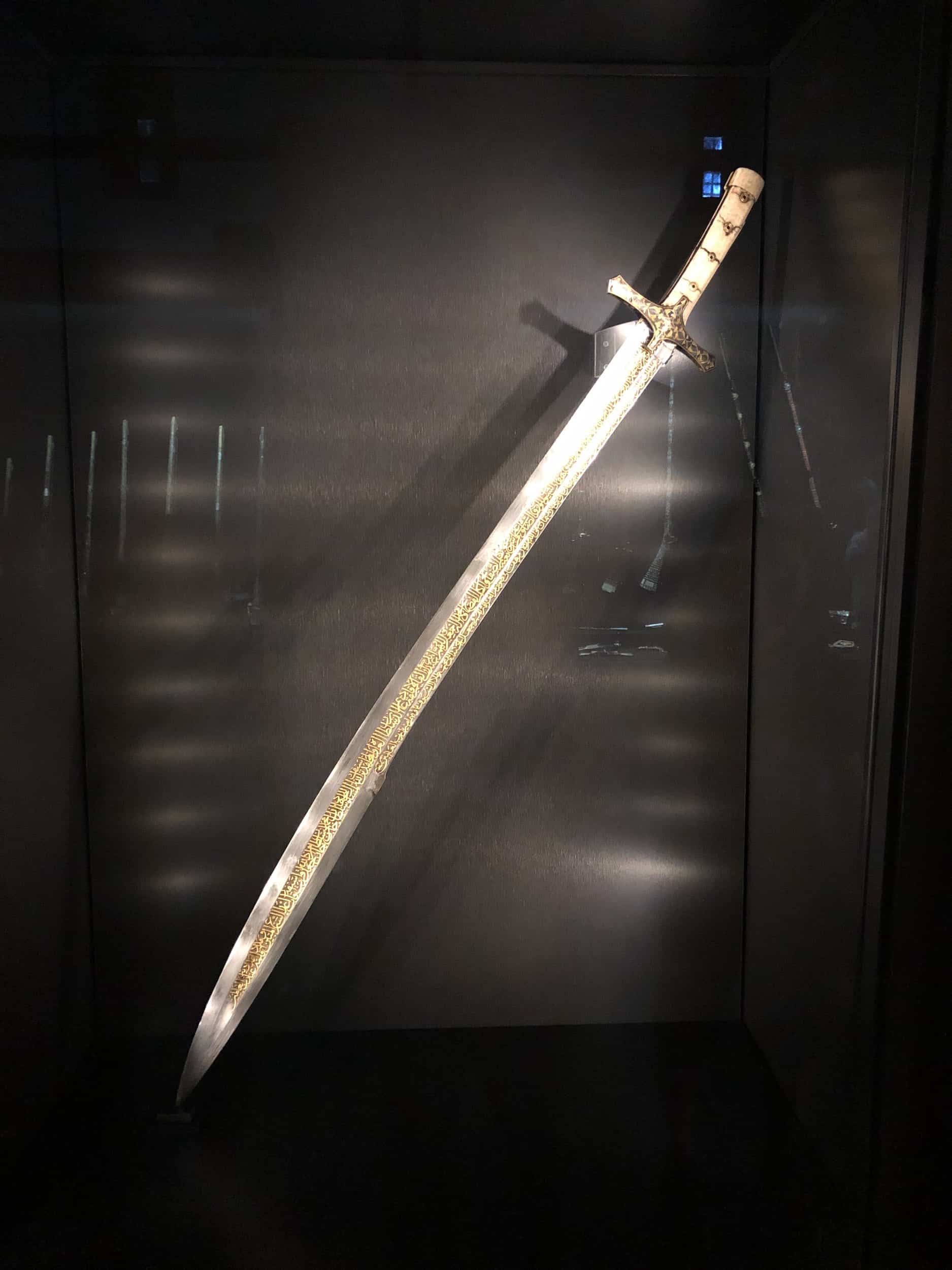
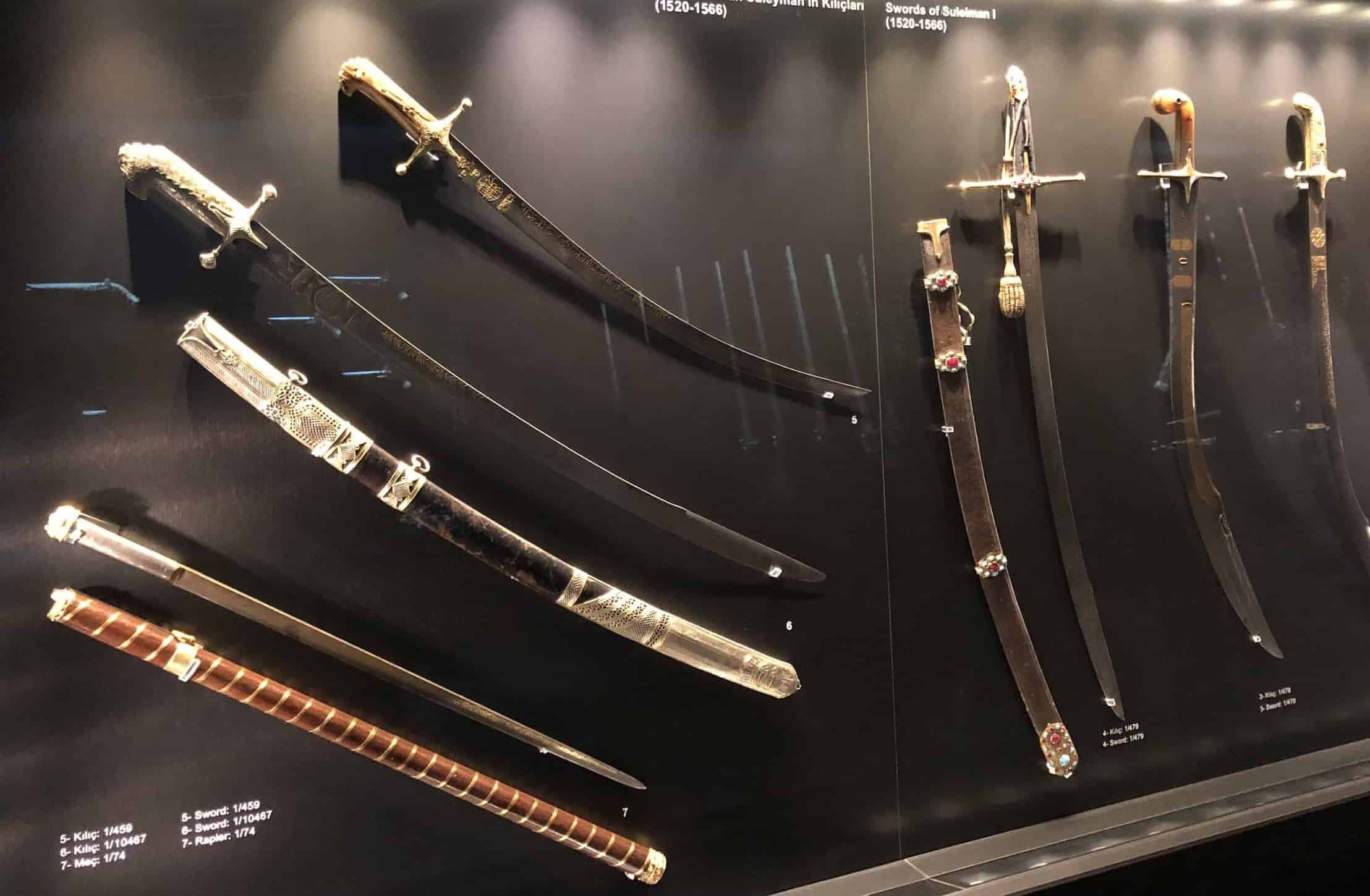
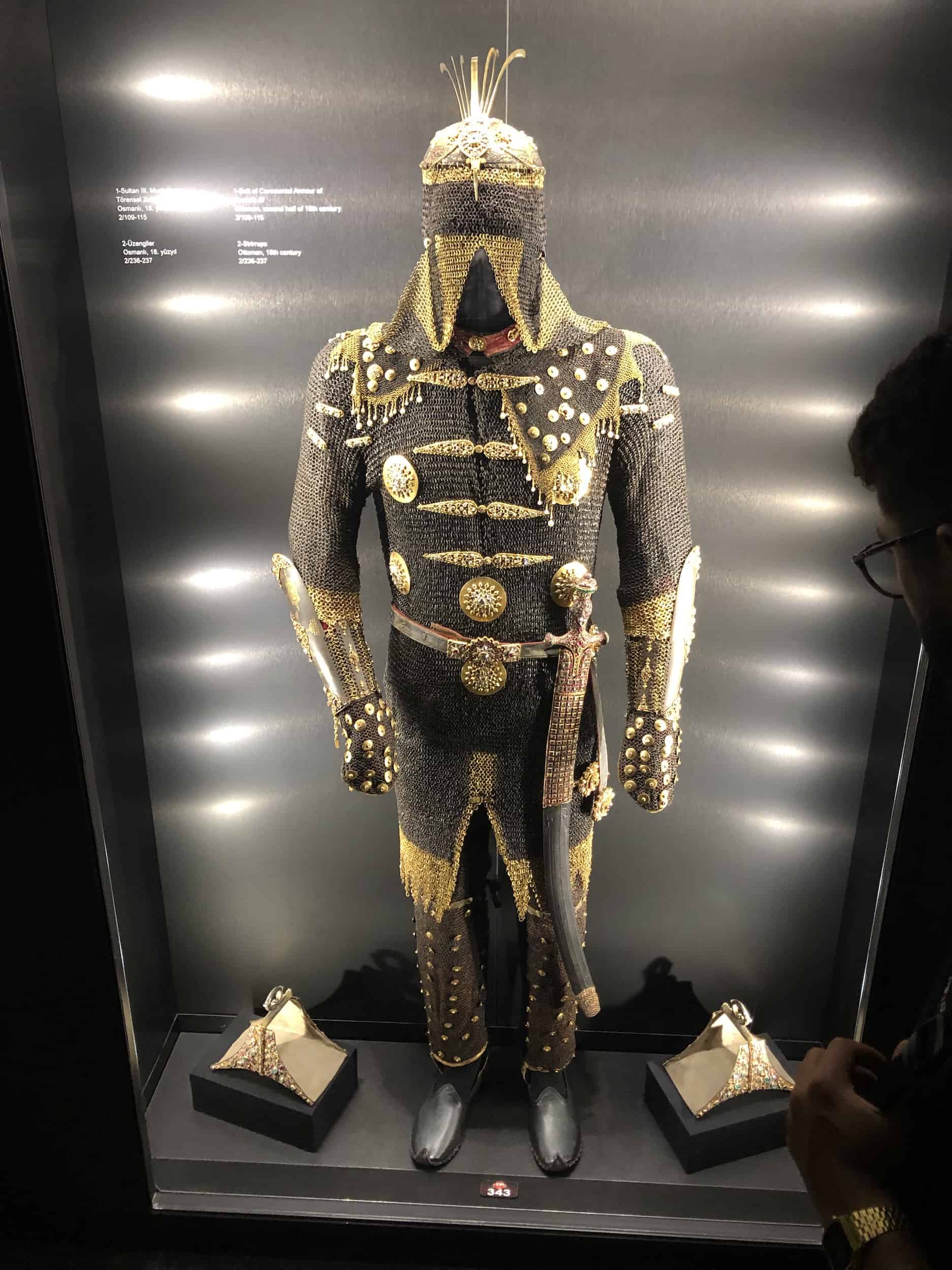
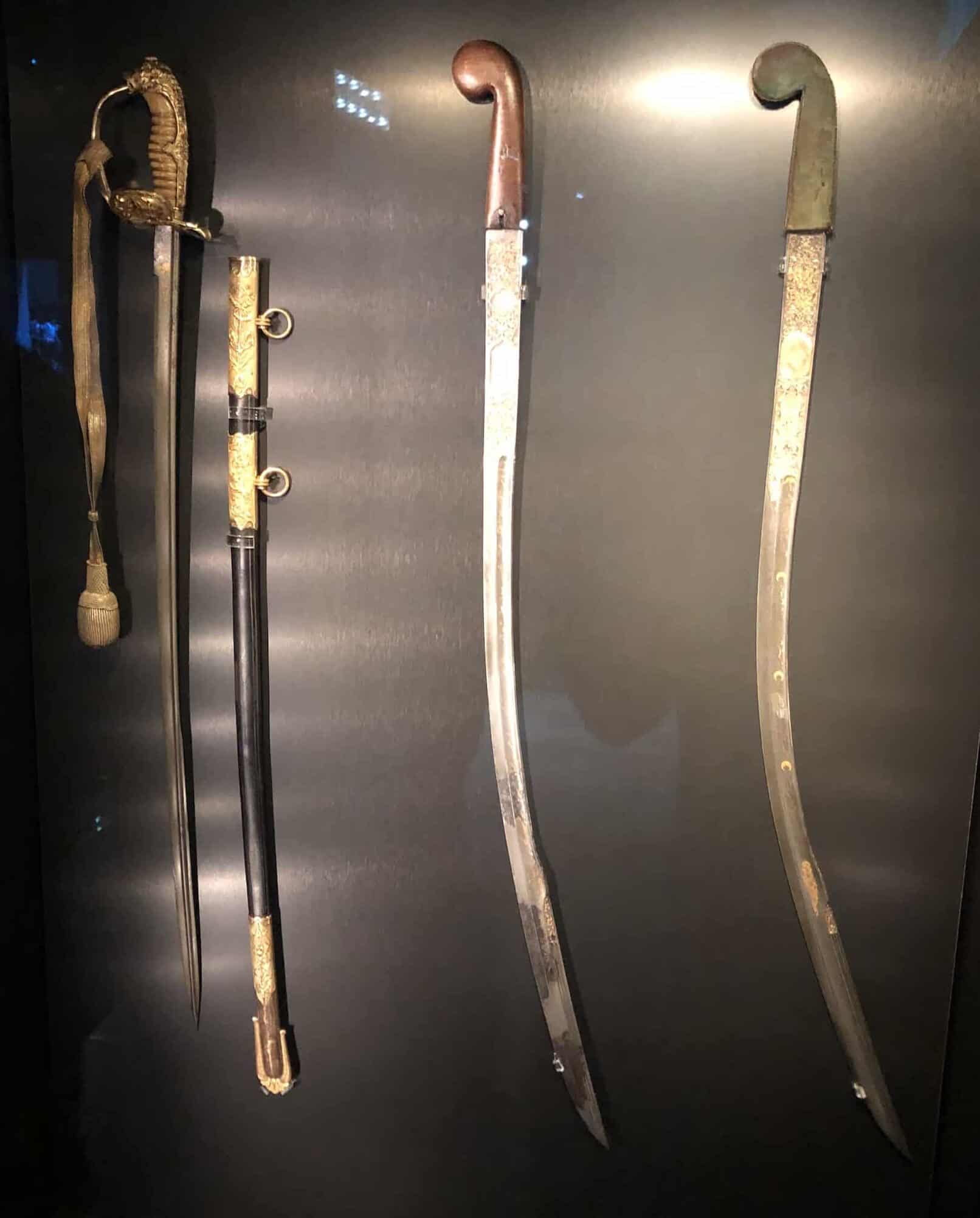
Topkapi Palace Kitchens
Across the courtyard from the Imperial Council are the Palace Kitchens (Matbah-ı Âmire). The largest kitchens in the Ottoman Empire, they were originally built in the 15th century and enlarged under Süleyman the Magnificent. They were modeled after the palace kitchens at Edirne Palace in Edirne.
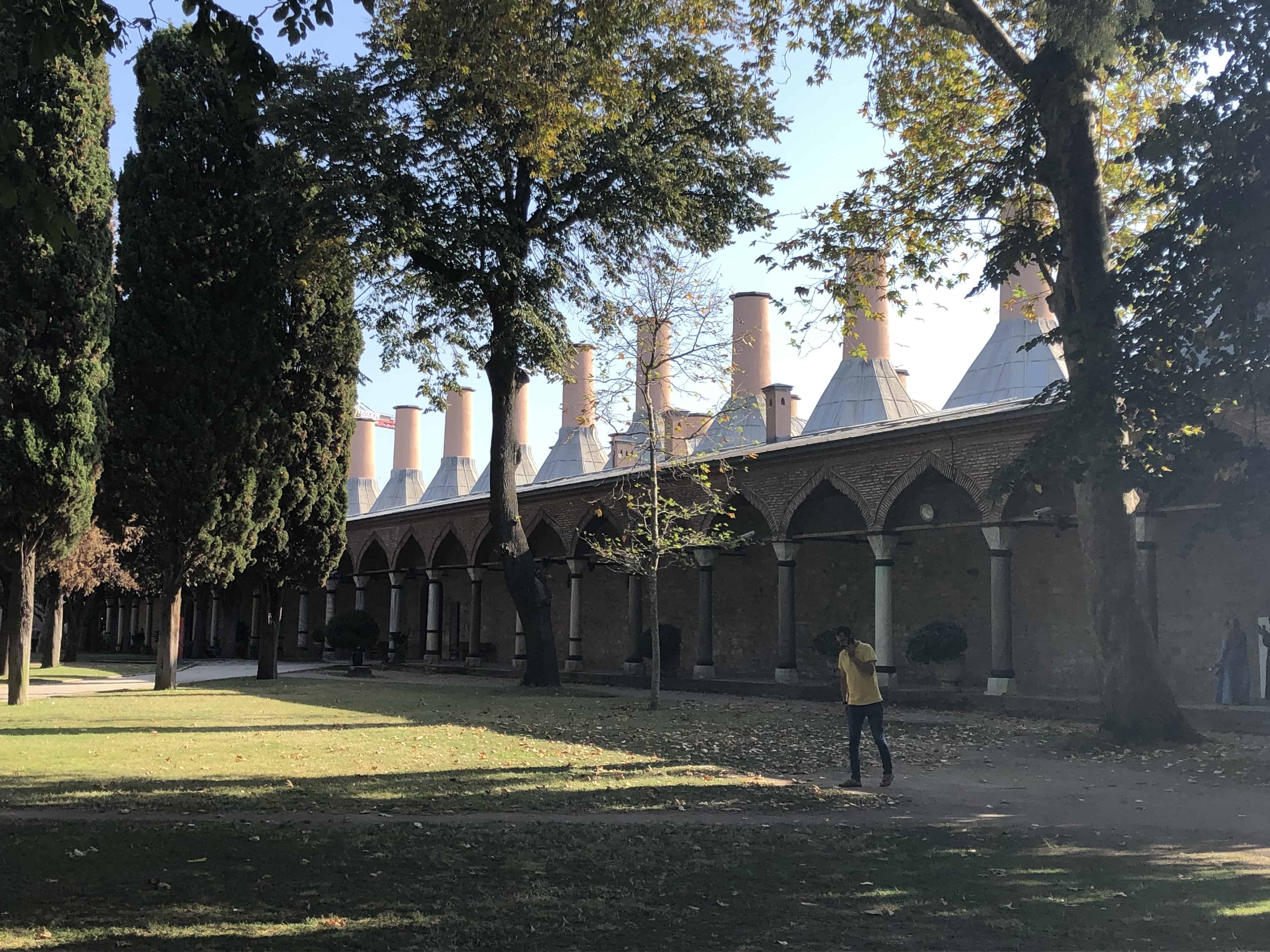
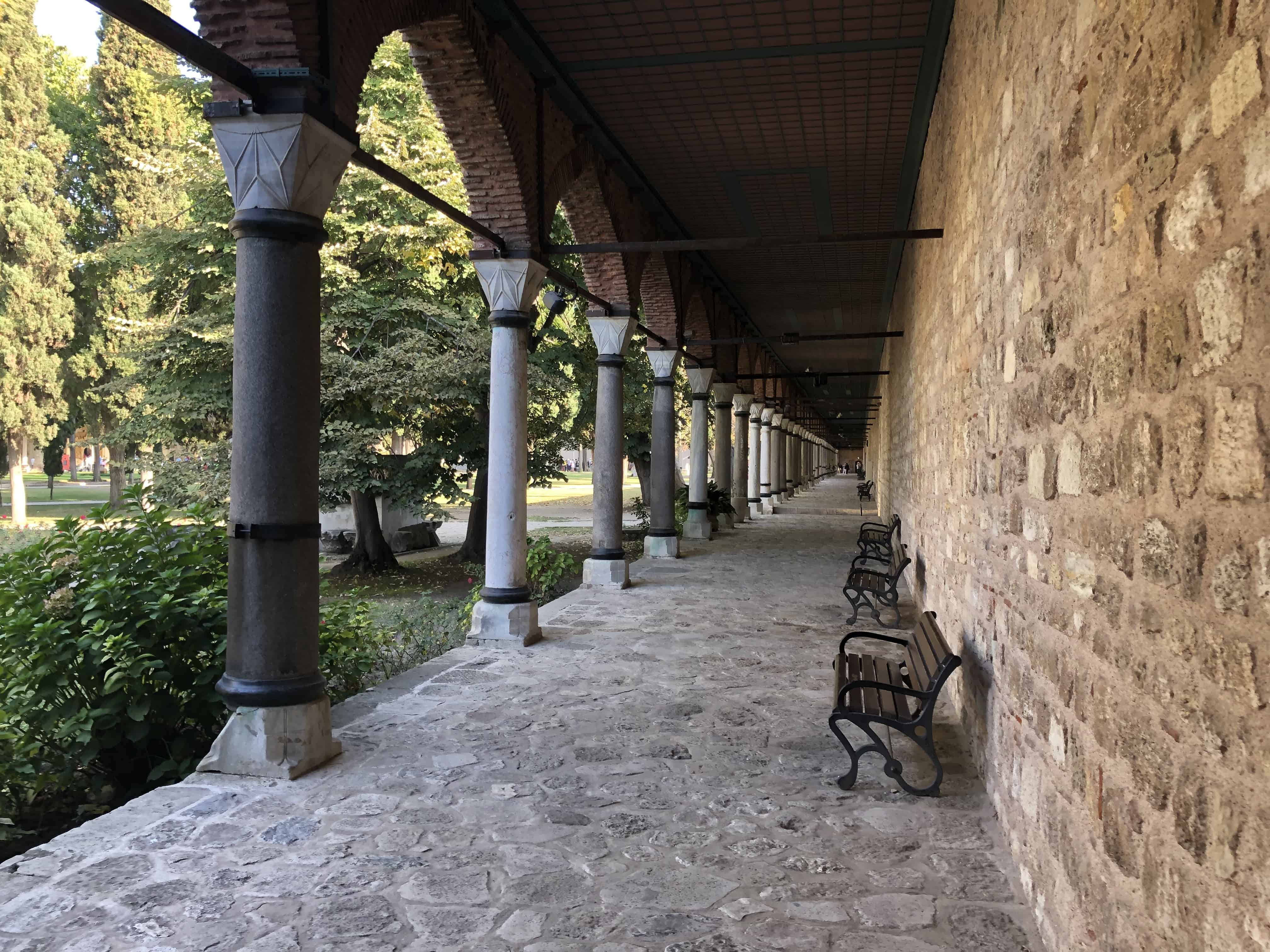
The kitchens were damaged by fire in 1574 and promptly restored by legendary Ottoman architect Mimar Sinan (1490-1588). He redesigned them in 2 rows with 20 chimneys. There were four gates to the kitchen complex of which two are accessible today.
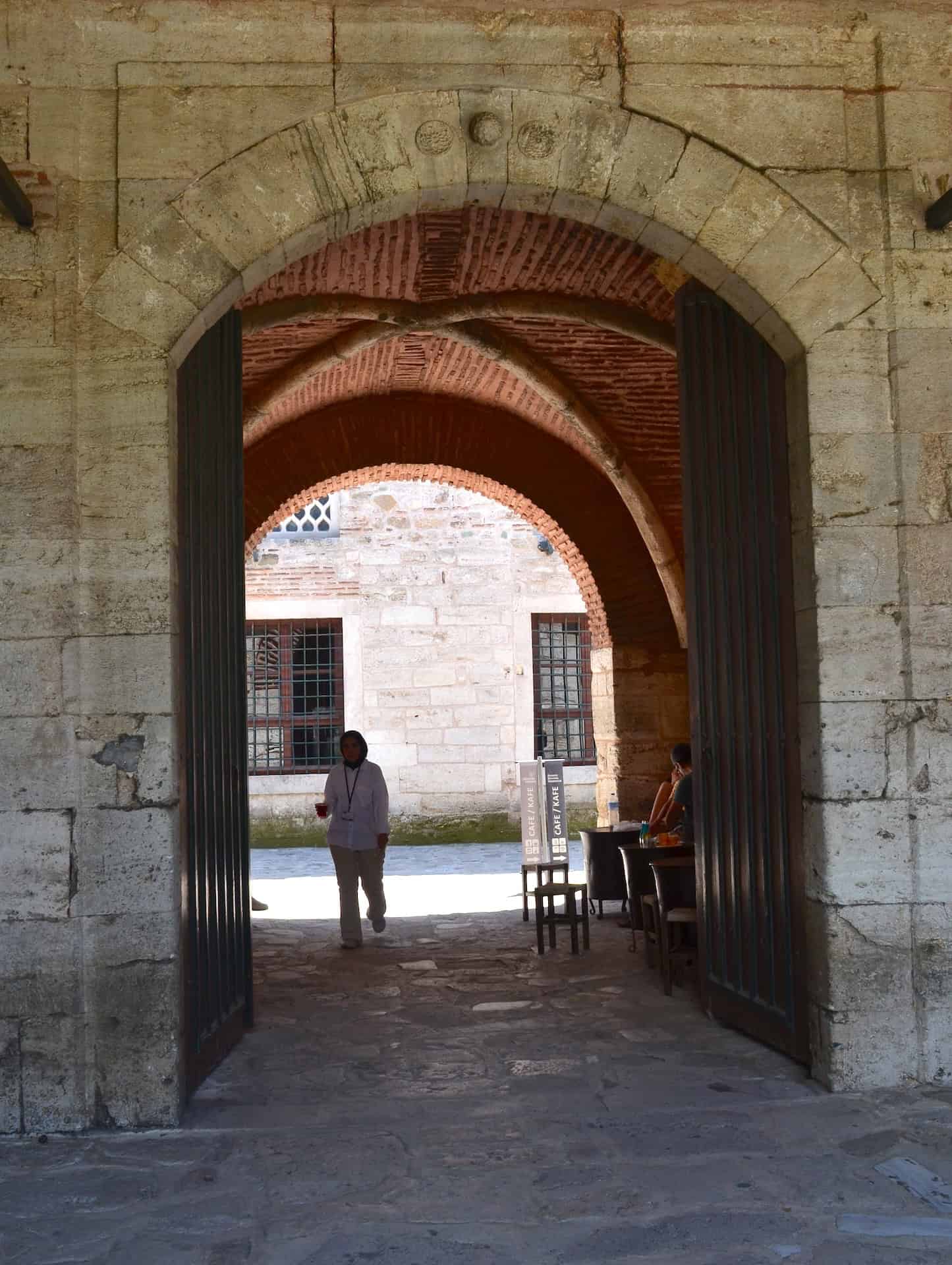
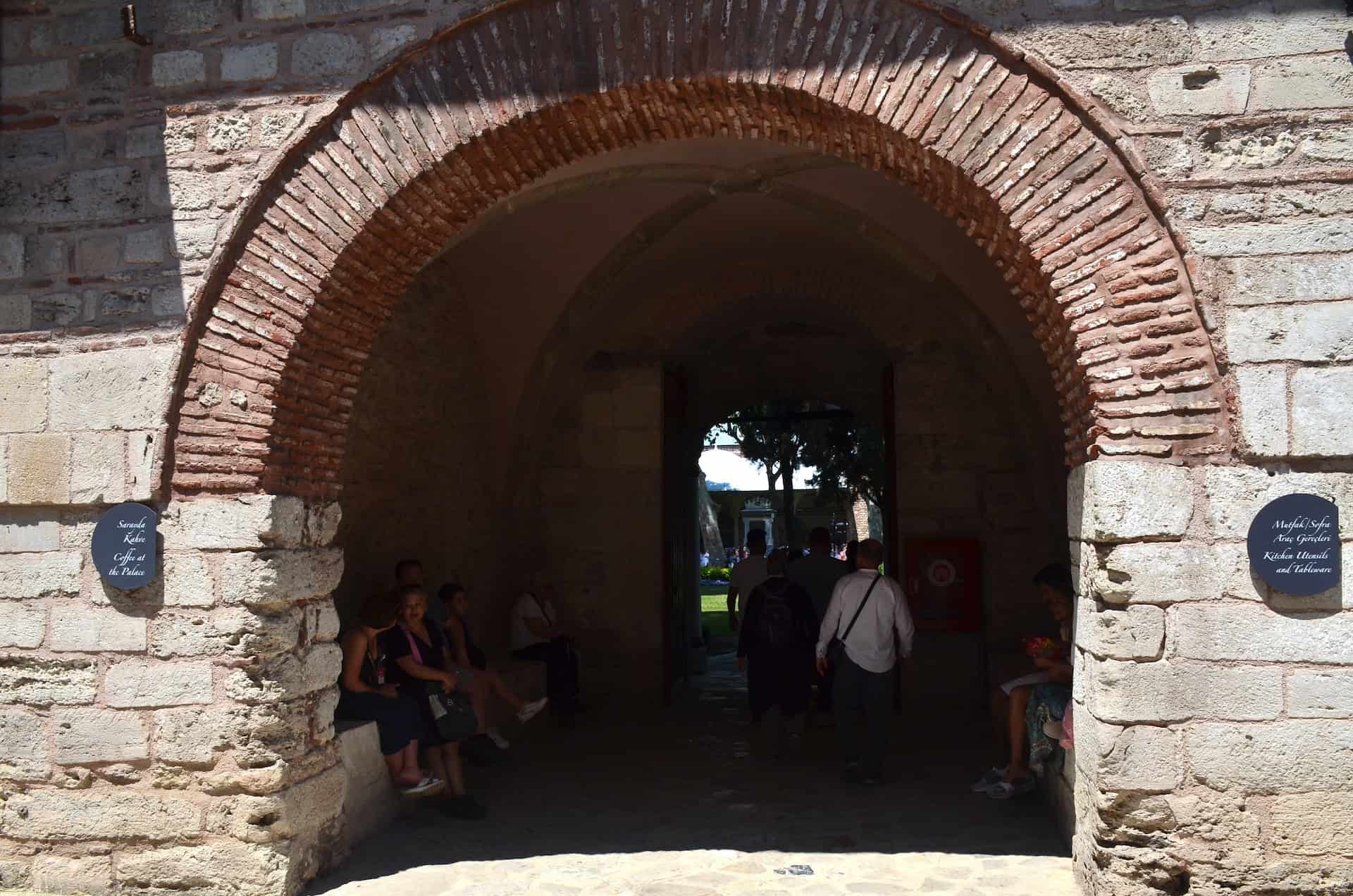
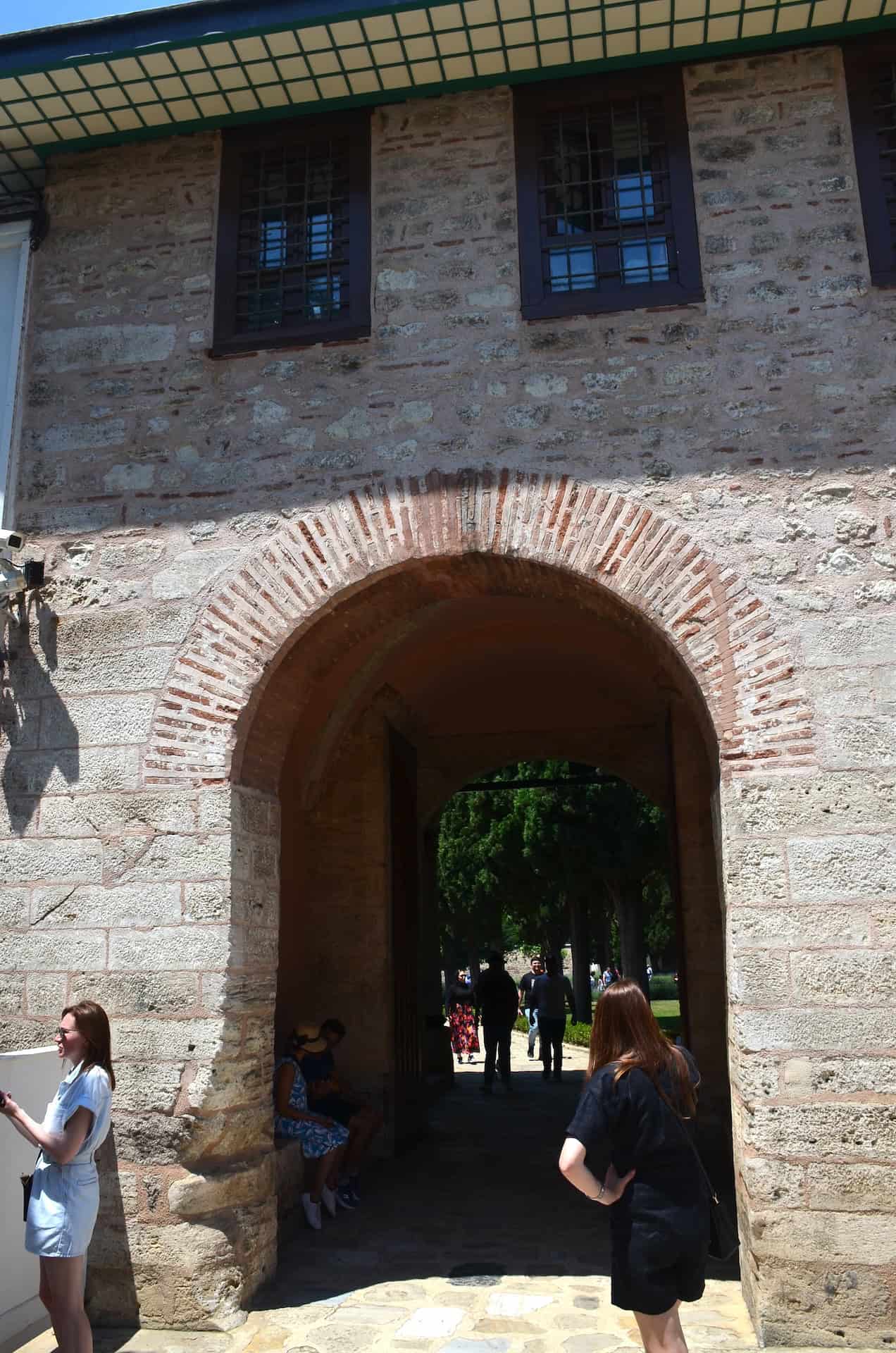
The Palace Kitchens contained 10 domed buildings divided by an internal street. They fed up to 4,000 people a day with a capacity to feed up to 6,000. Kitchen staff numbered over 800 people, and the complex included dormitories, a hamam, and a mosque. Some of the buildings have not survived to this day.
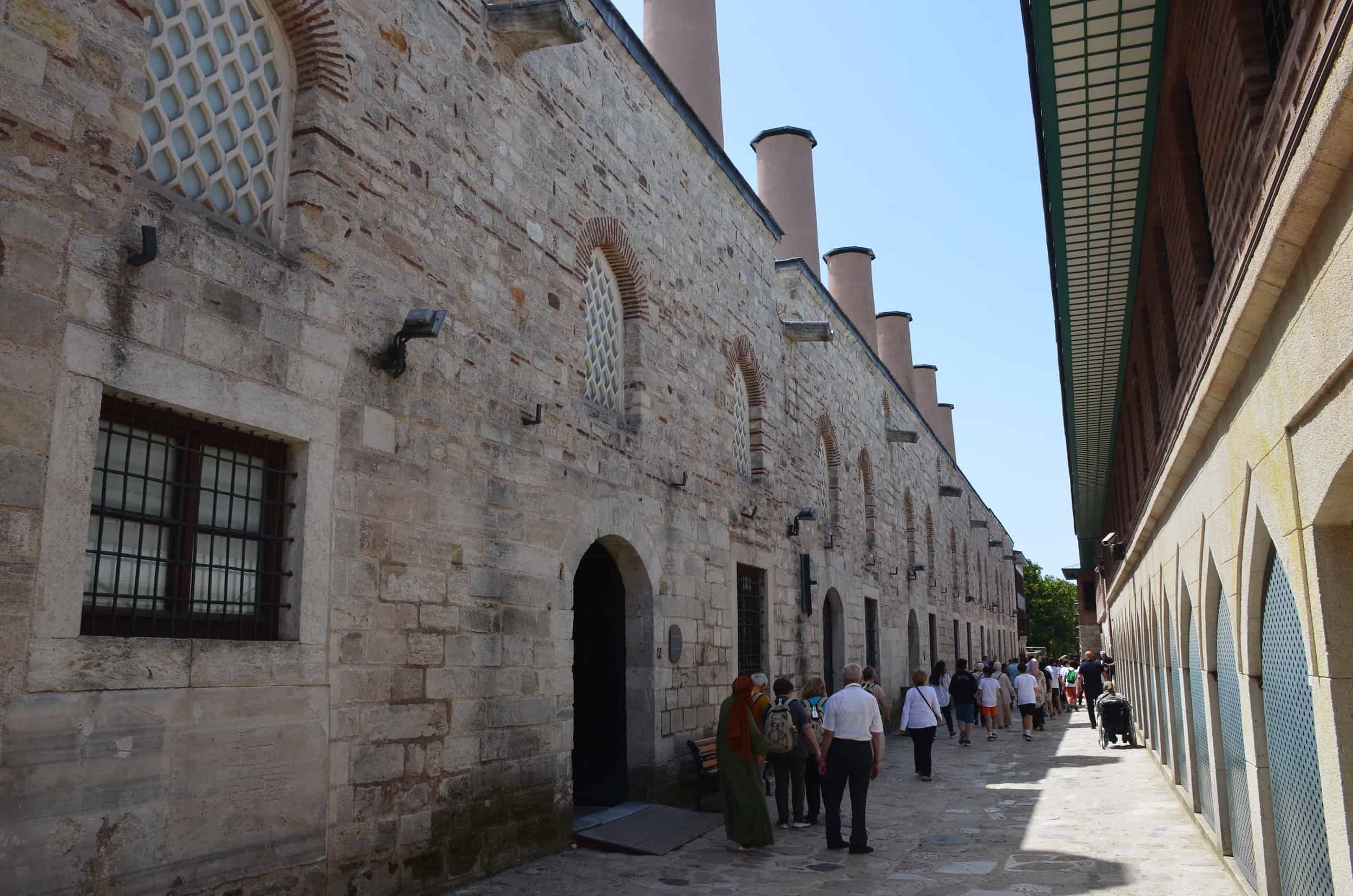
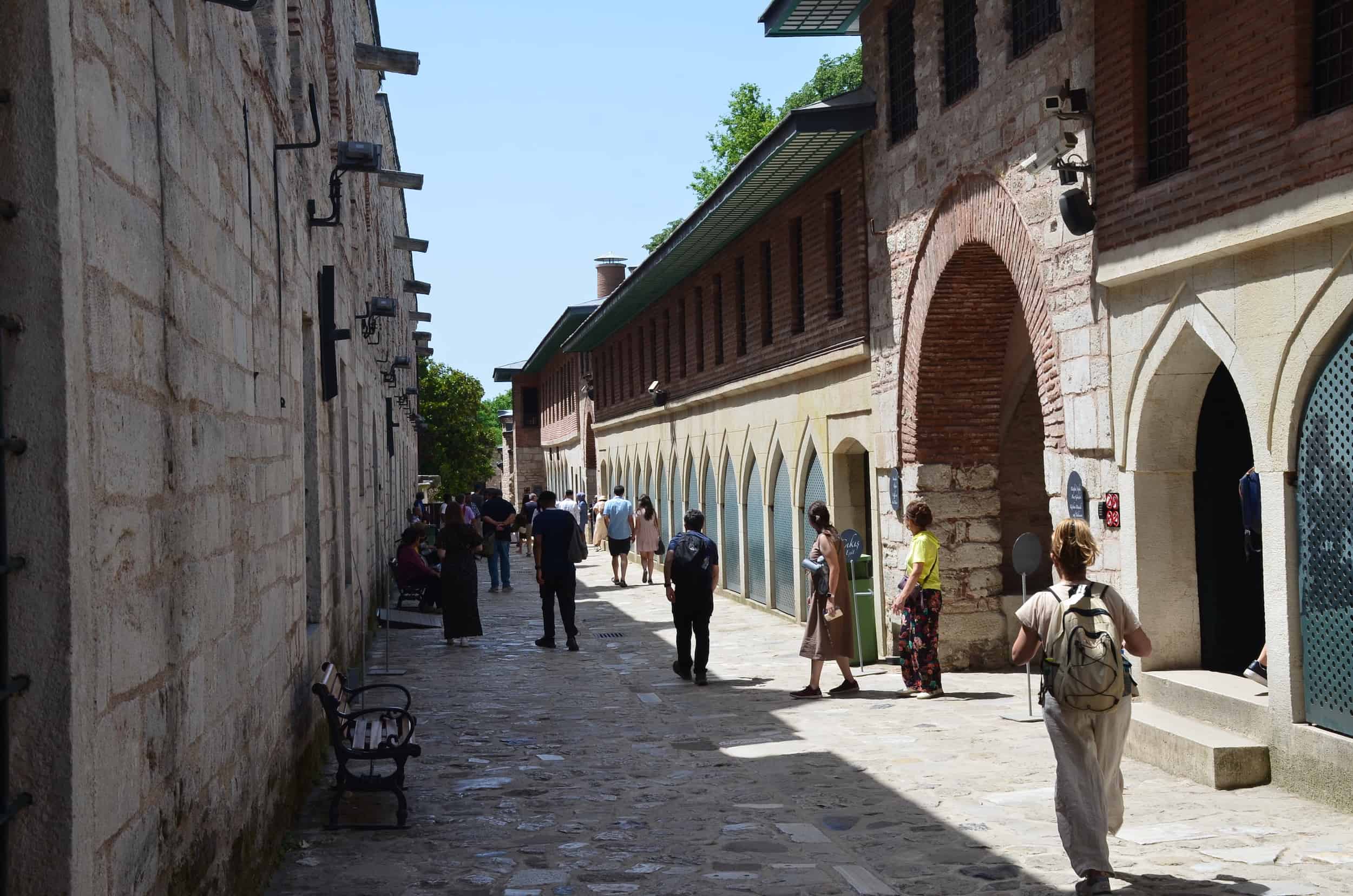
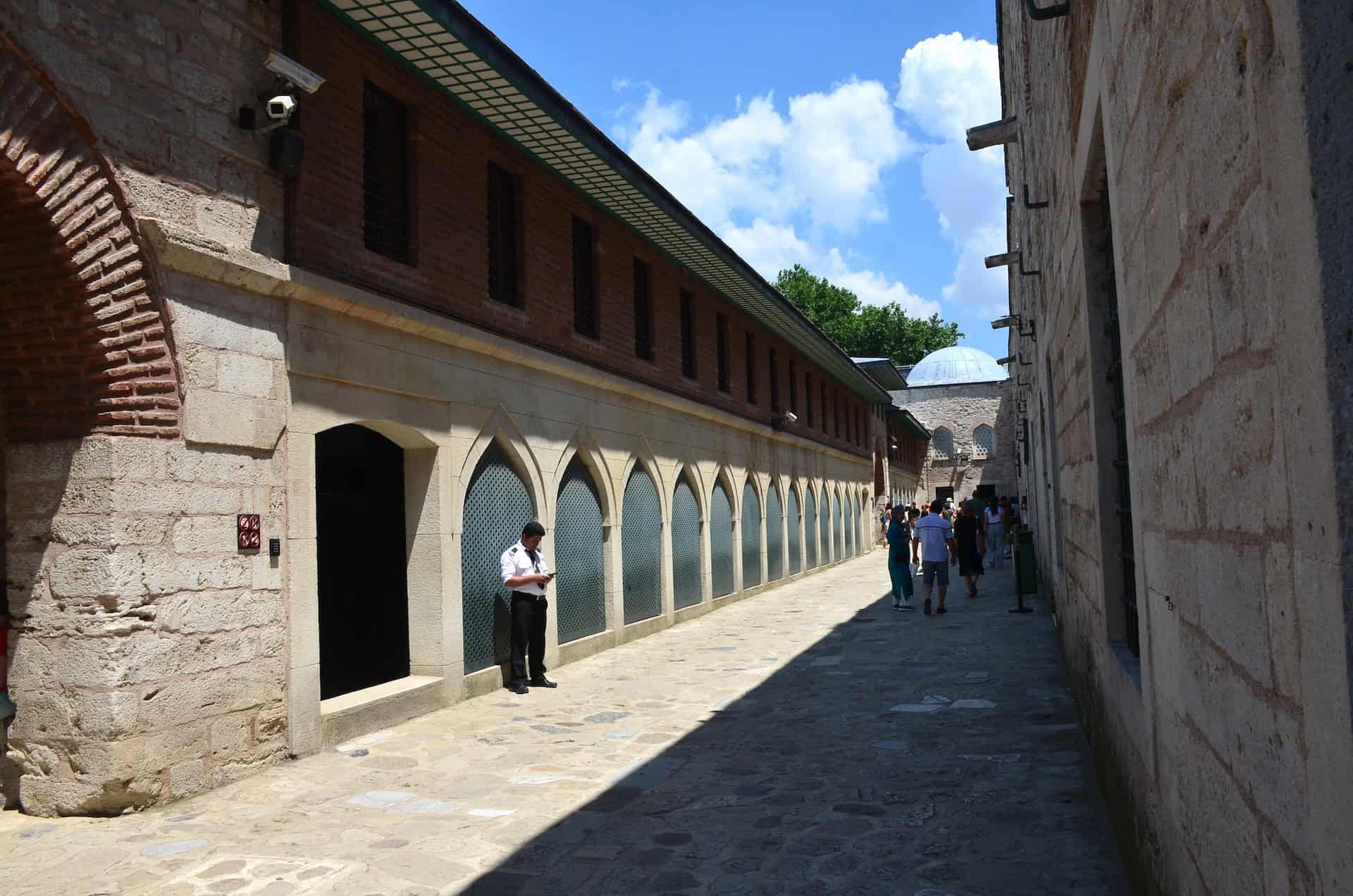
Today, the Palace Kitchens display a collection of kitchen utensils, dishes, trays, and other items. It’s spread out over four buildings on the east side of the street and broken down into two sections.
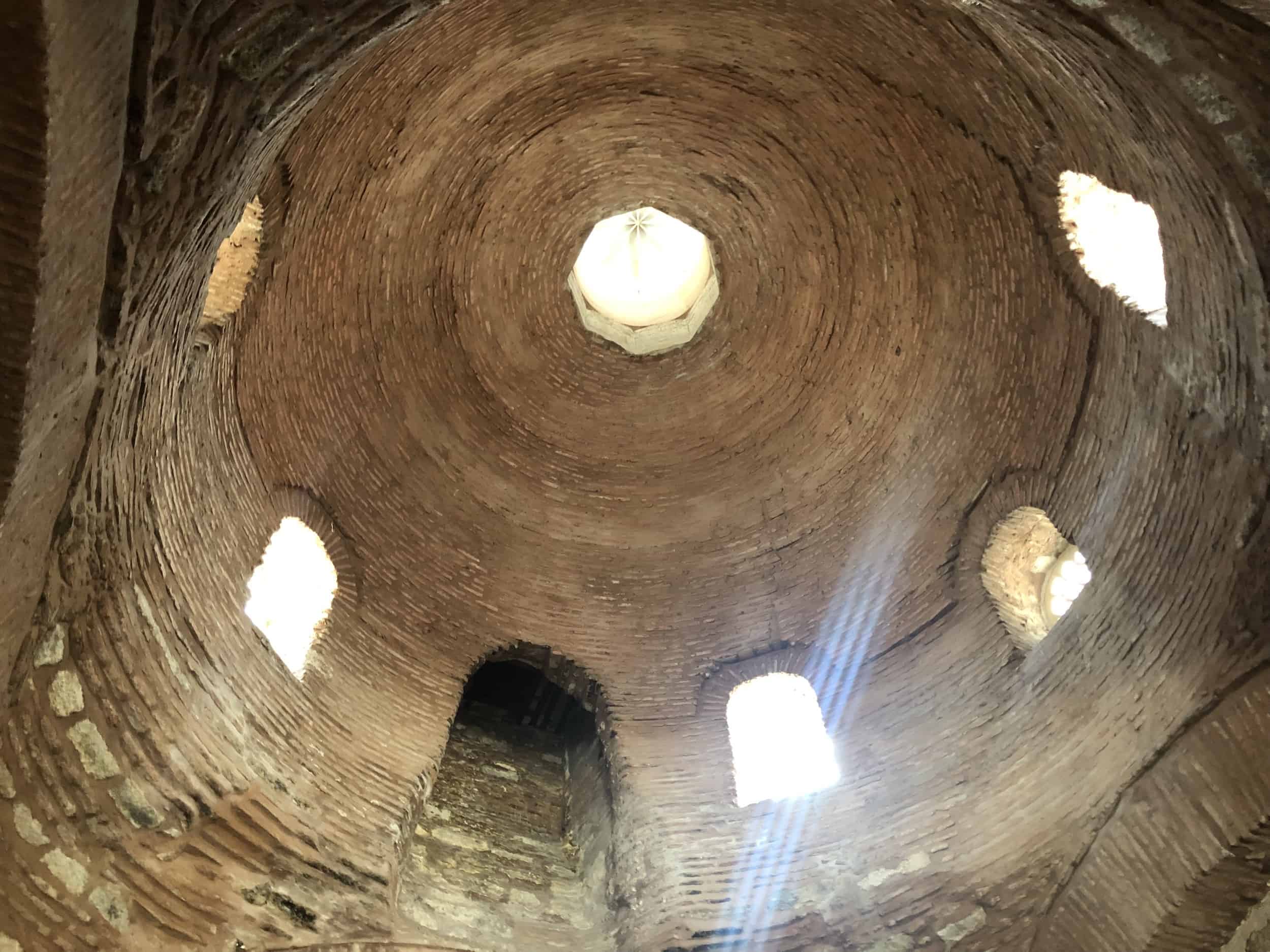
Kitchenware Exhibition
The first section focuses on wares from the 15th through 18th centuries and takes up three buildings. The rest of the collection focuses on the 19th century and occupies one building.
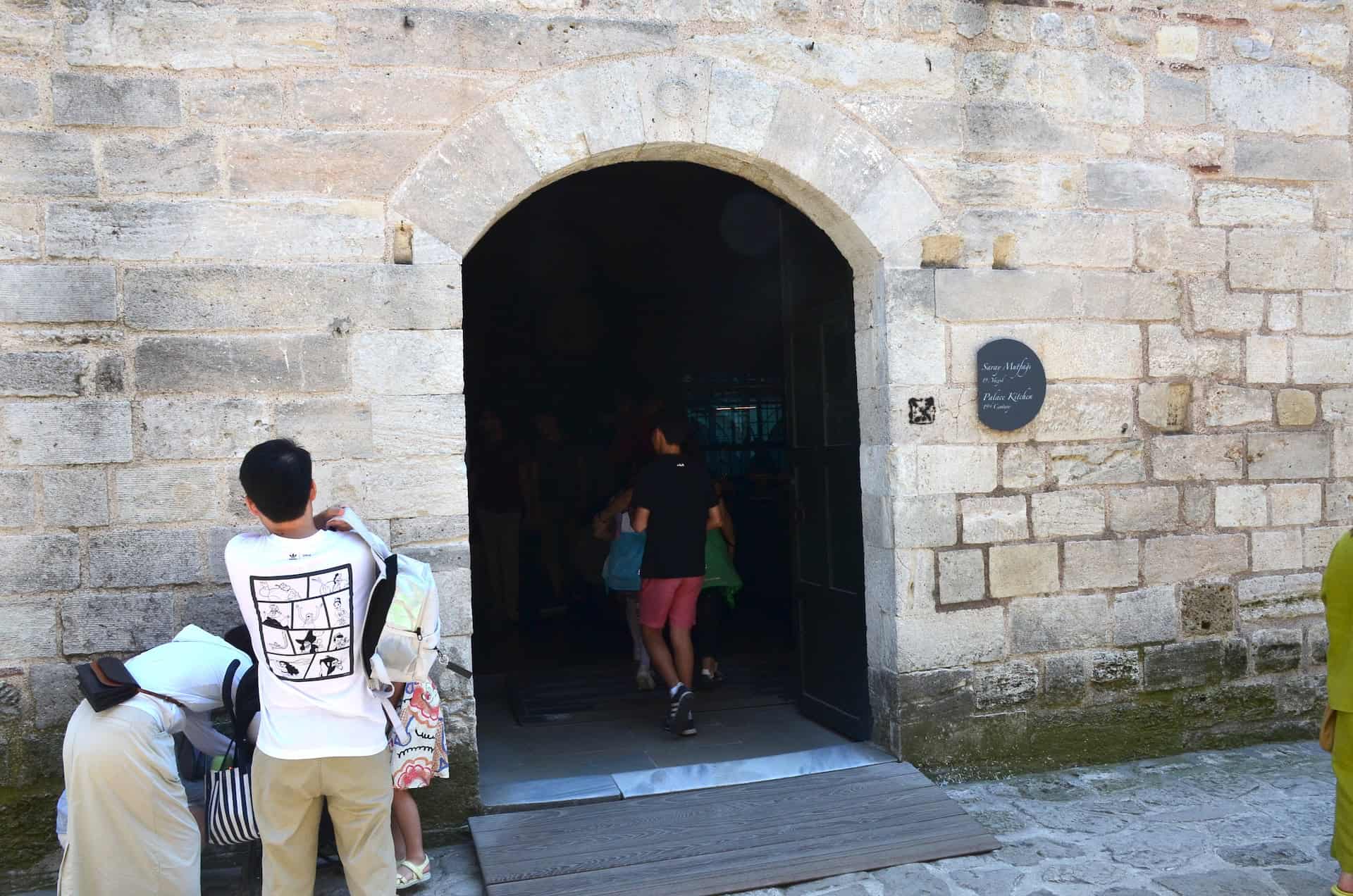
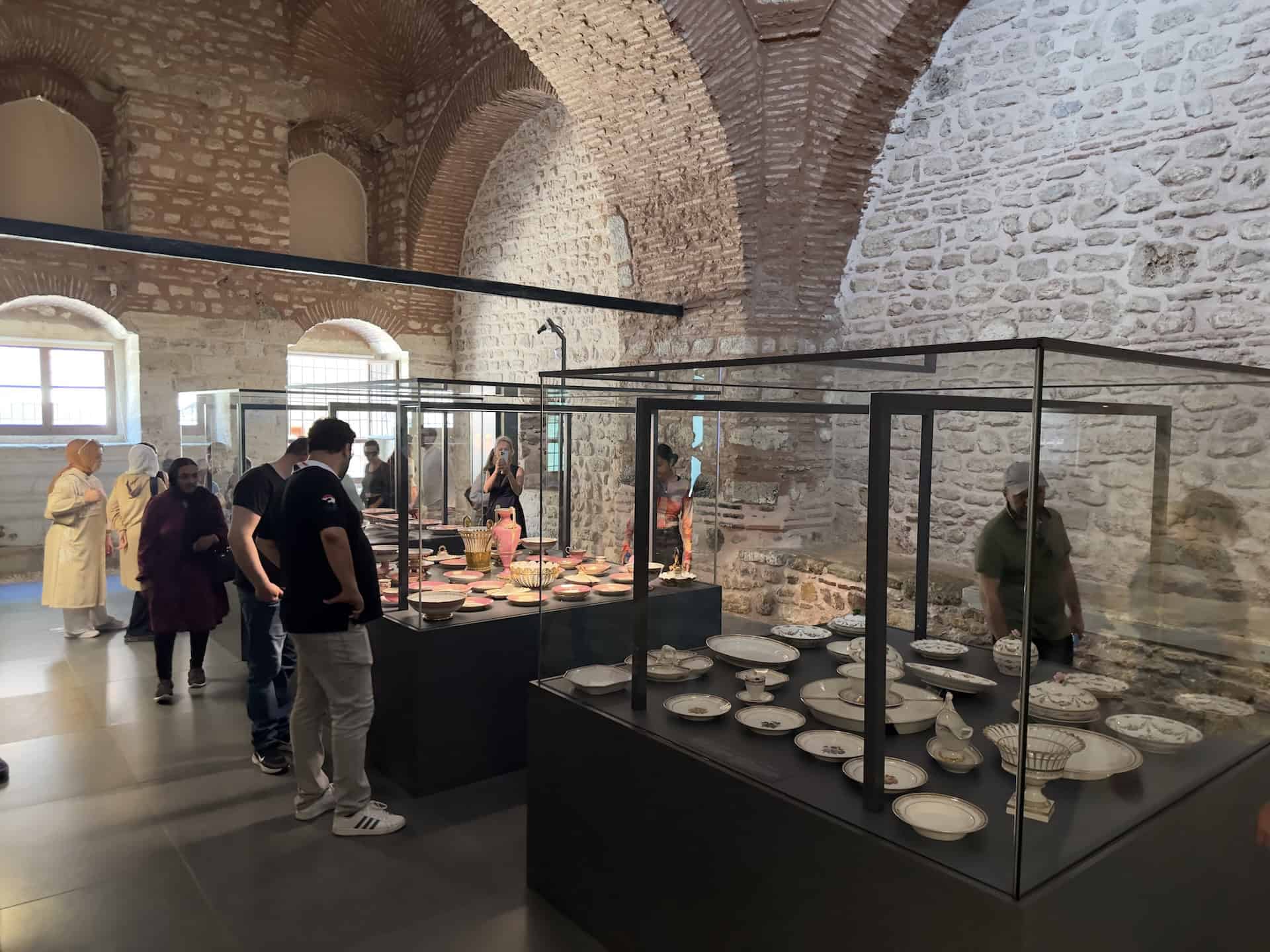


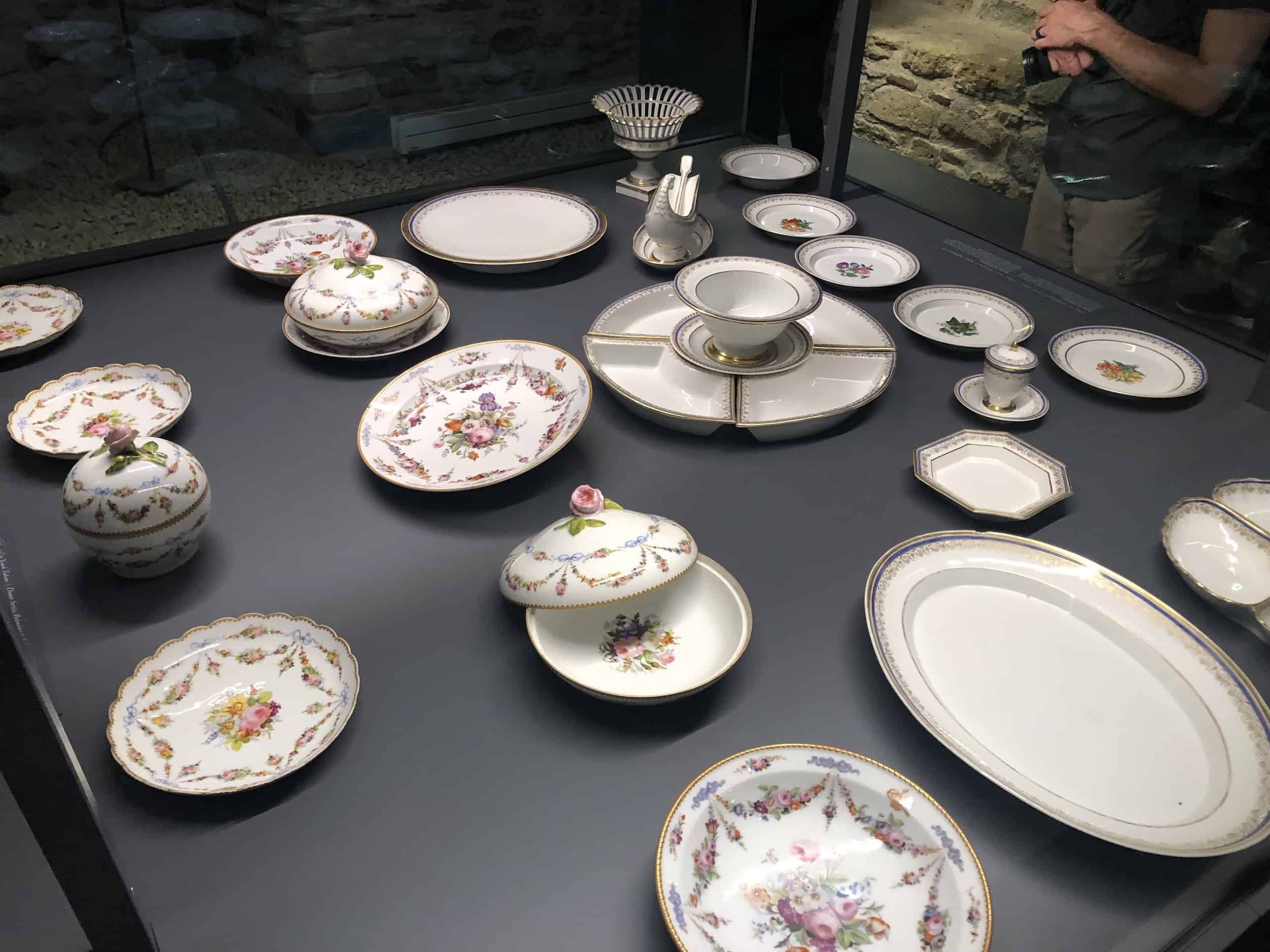
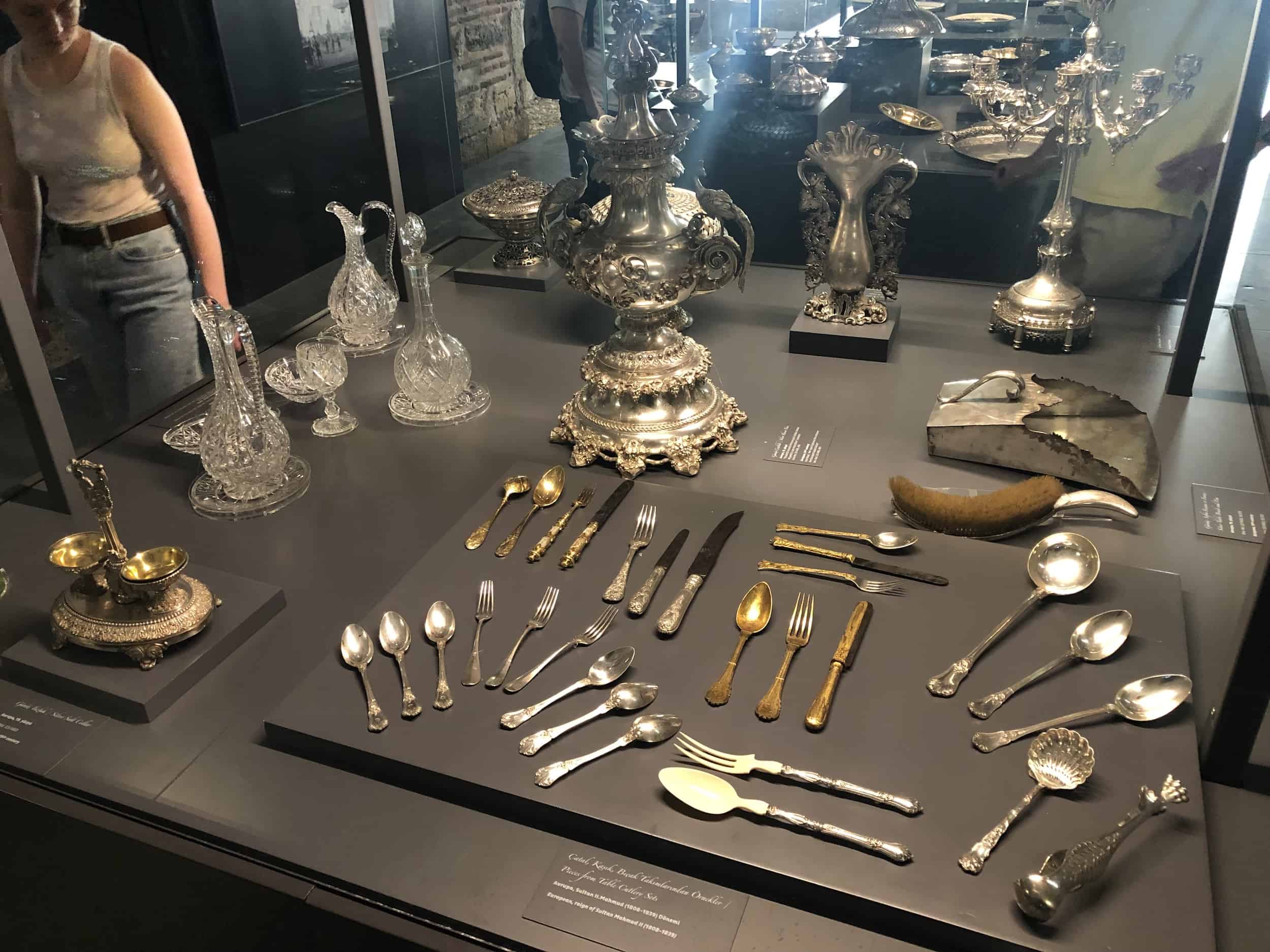
Confectionary Kitchen
The Confectionary Kitchen (Helvahane) sits on the east side of the street on the north side of the complex. It was built by Mimar Sinan during the kitchen expansion under Süleyman the Magnificent and consists of two sections topped by four domes.
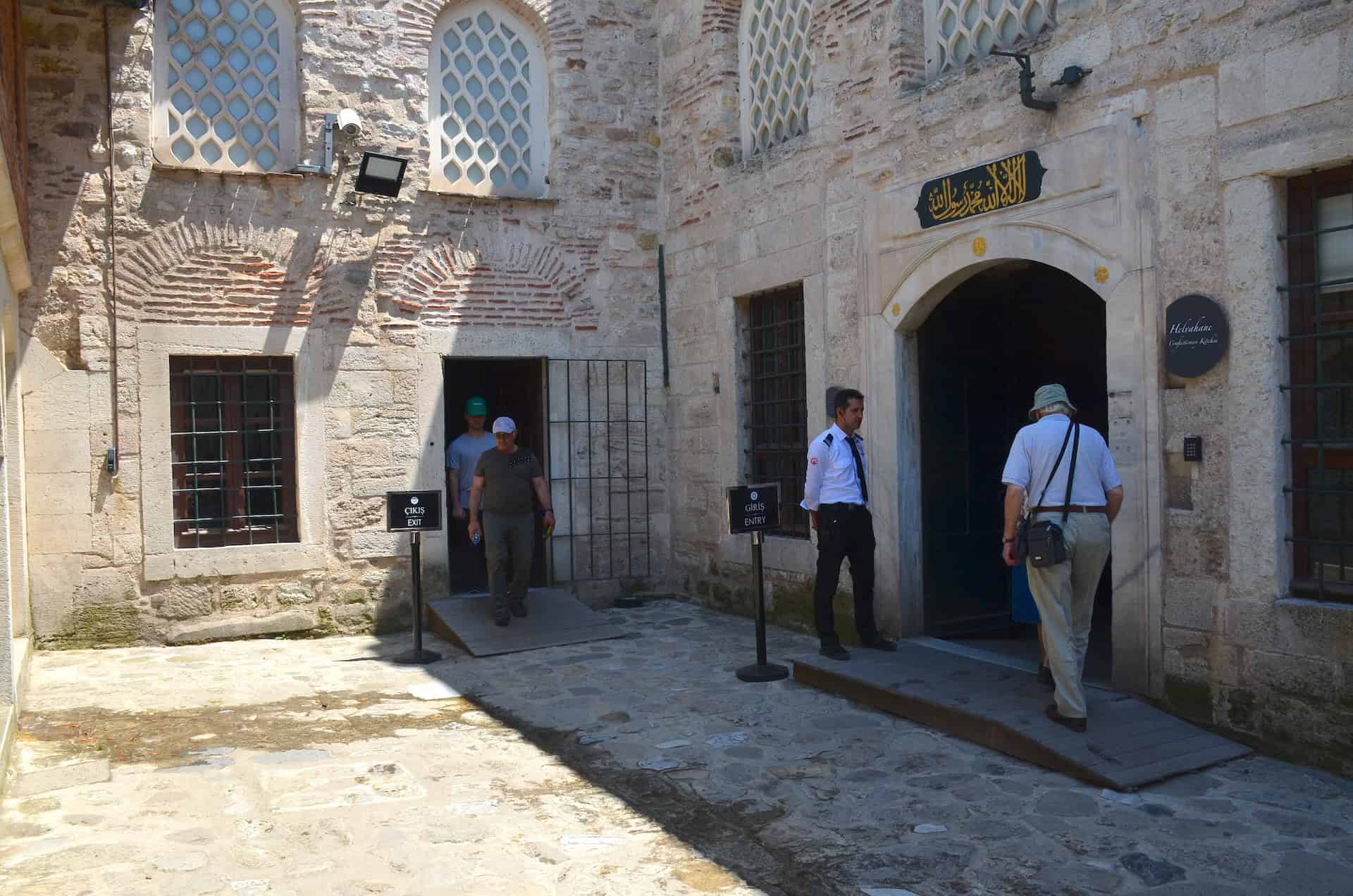
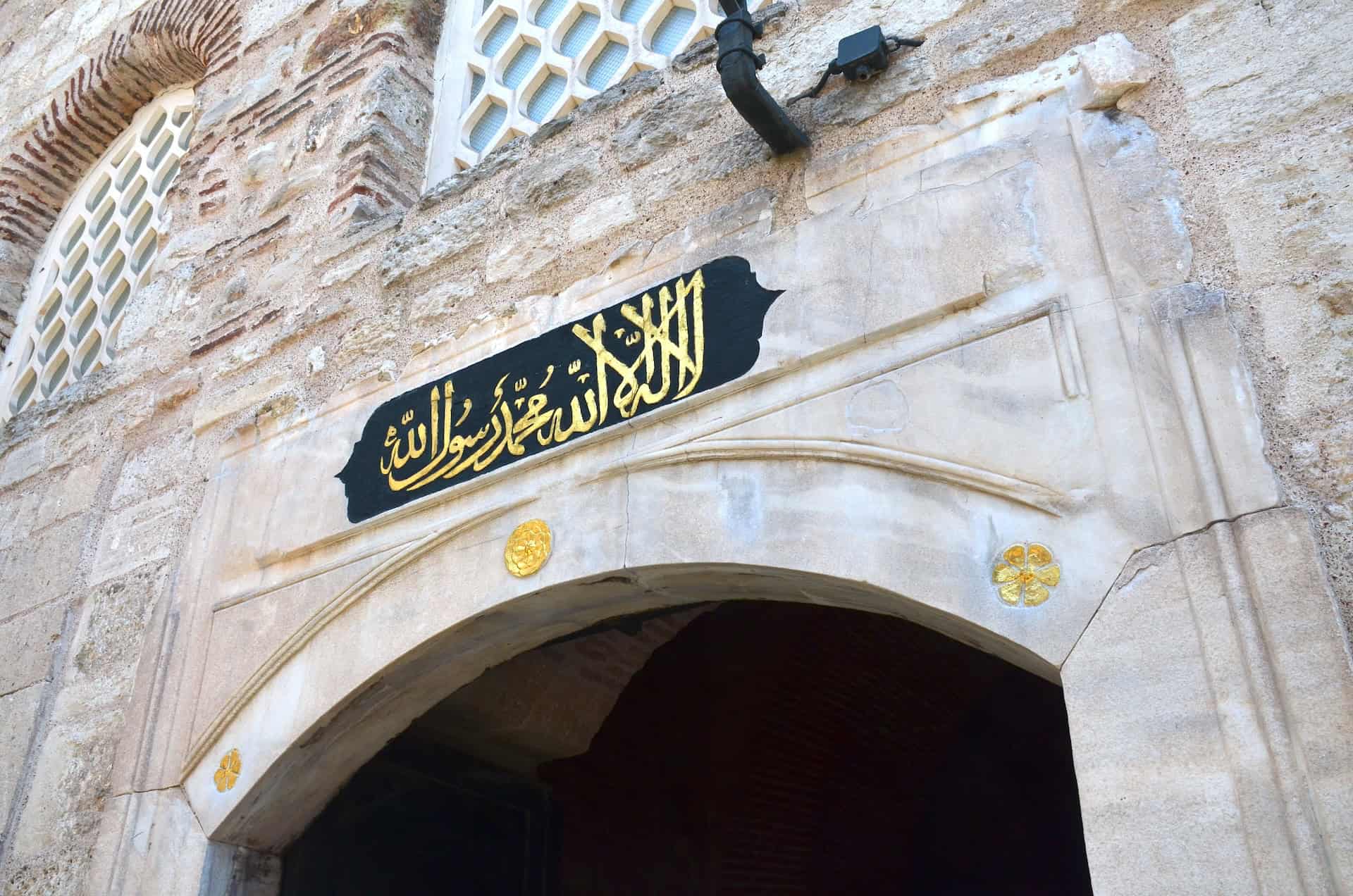
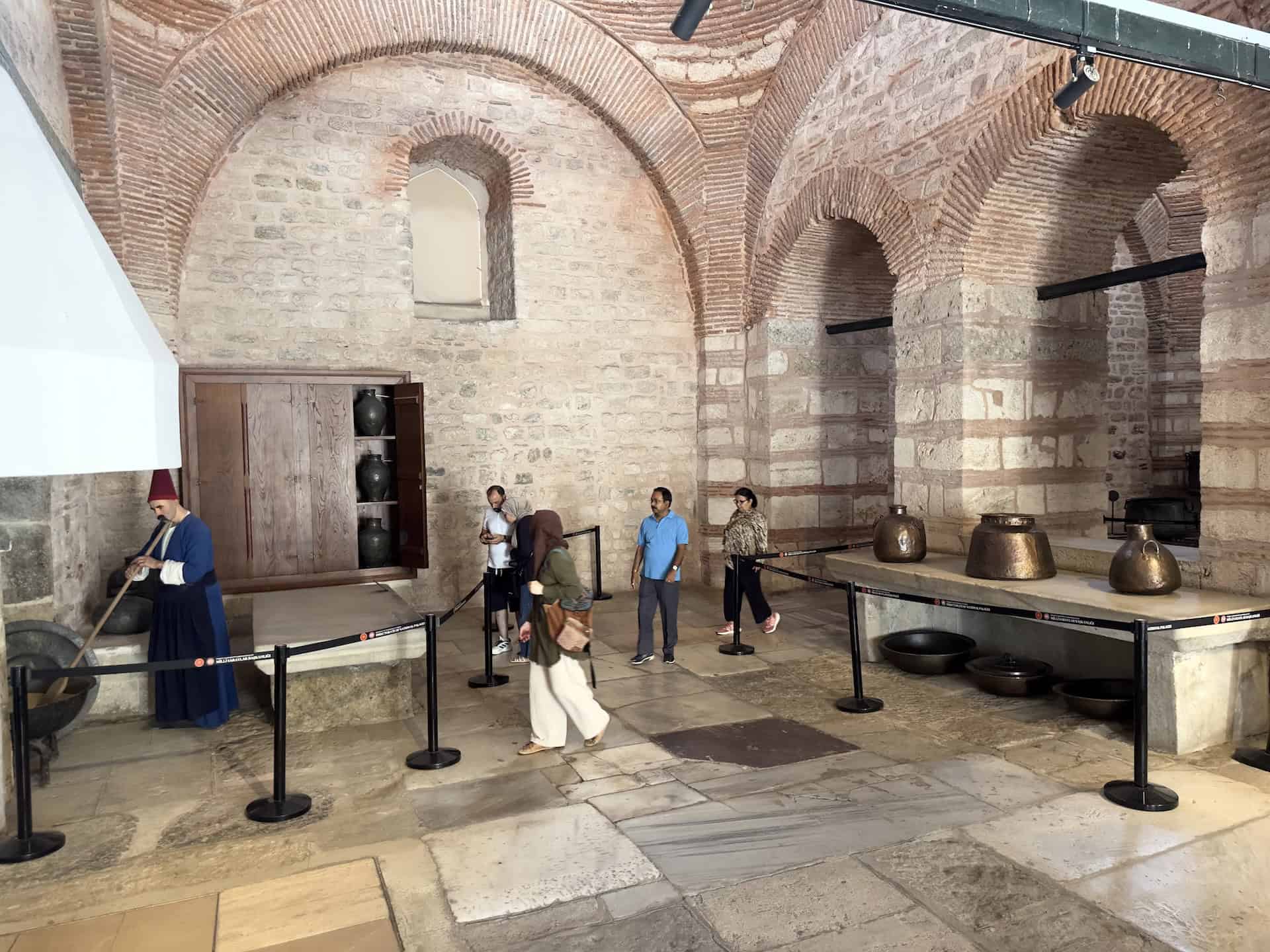
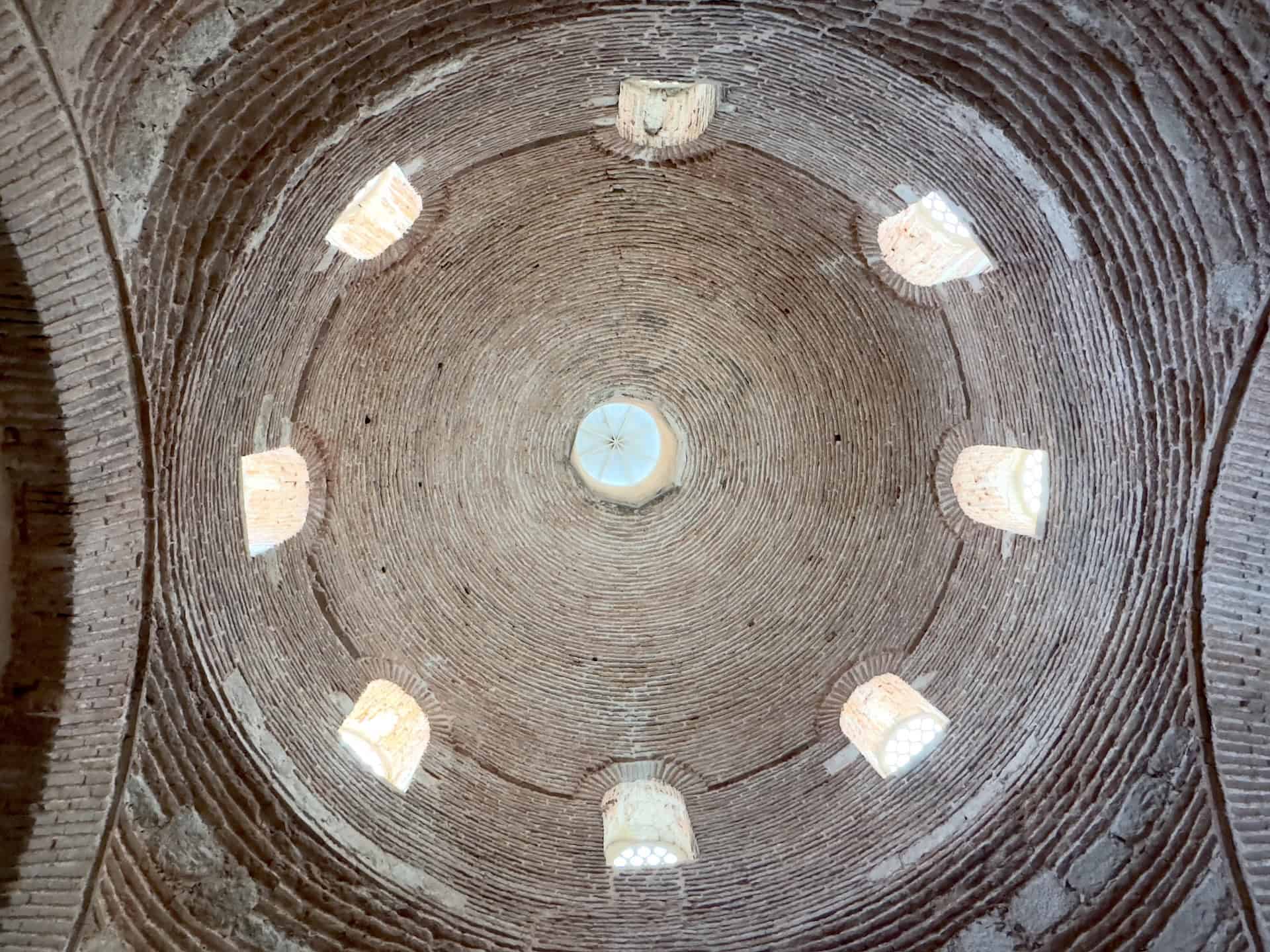
The Confectionary Kitchen was supervised by the Chief Royal Confectioner (Helvacıbaşı), who worked under the Kitchen Comptroller (Mutfak Emini) and the Commissarriat (Kilercibaşı). His staff was responsible for preparing desserts such as halva (helva), baklava, lokma, fruit preserves, sherbet, and other sweets. They also made medicines under the supervision of the Chief Physician, candles, and soaps. There were typically 6 chefs and over 100 apprentices.
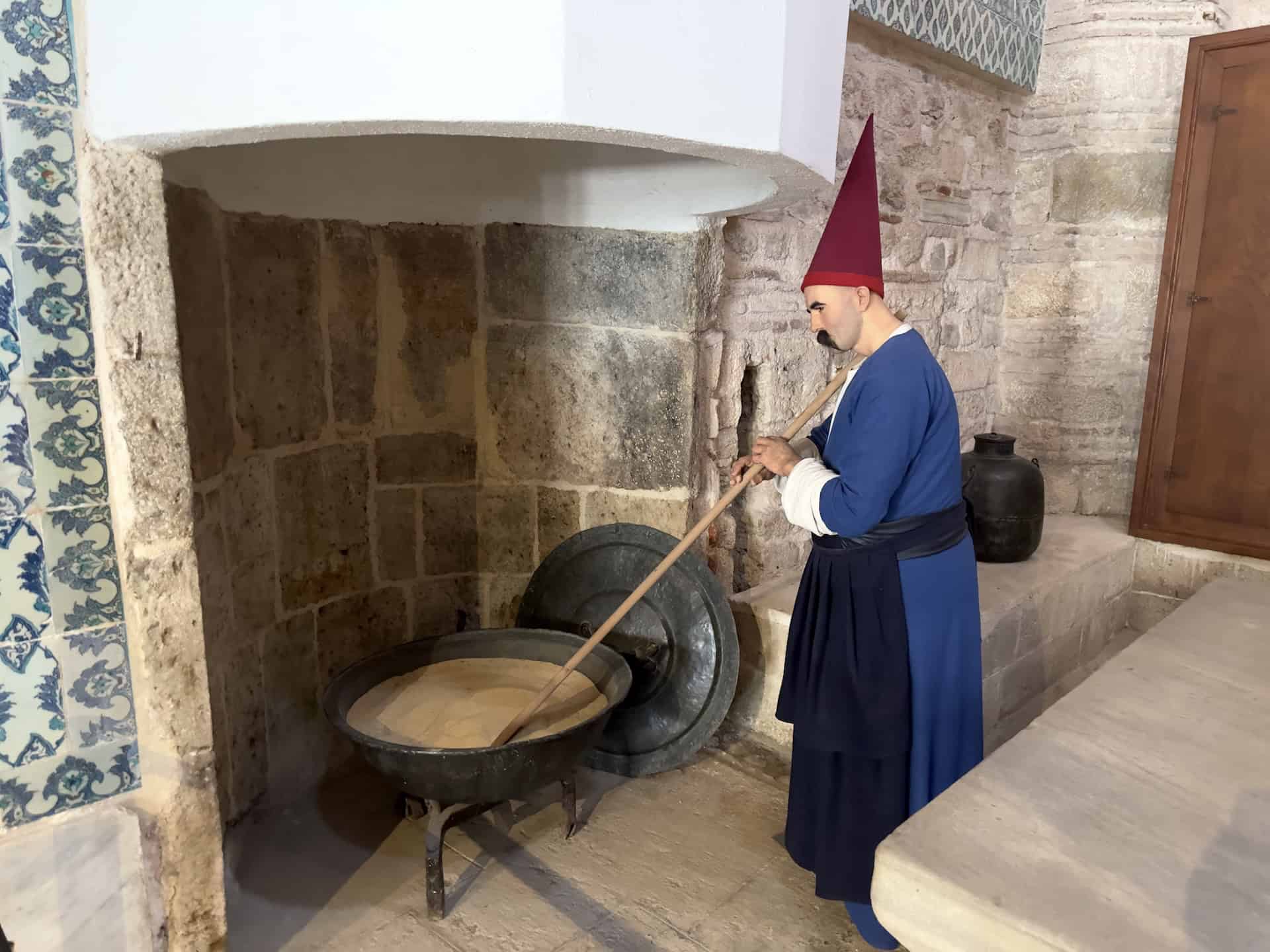

On display in the two rooms of the Confectionary Kitchen are some of the items the chefs would use to create the desserts. They include utensils, vessels, and vats.
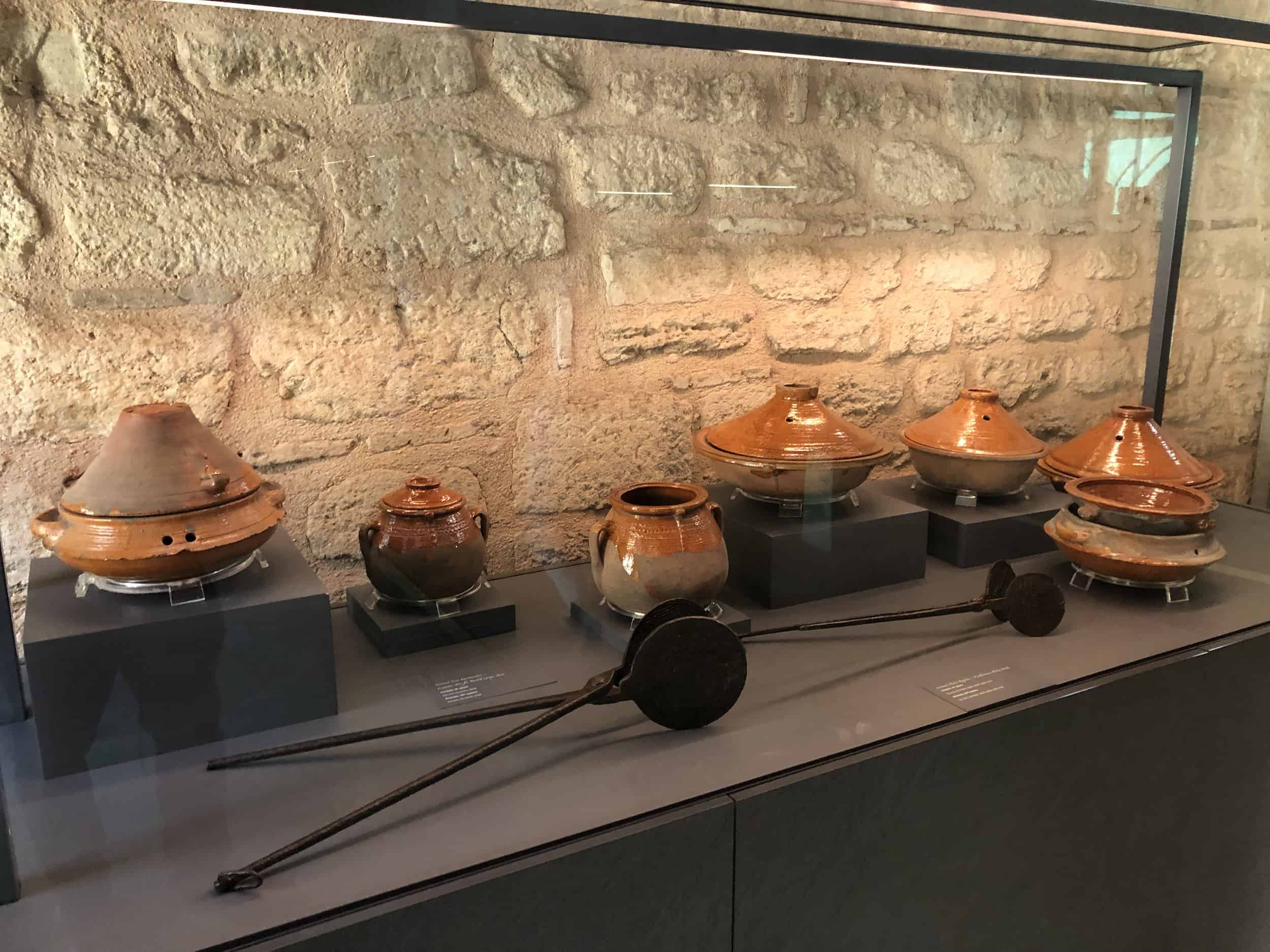
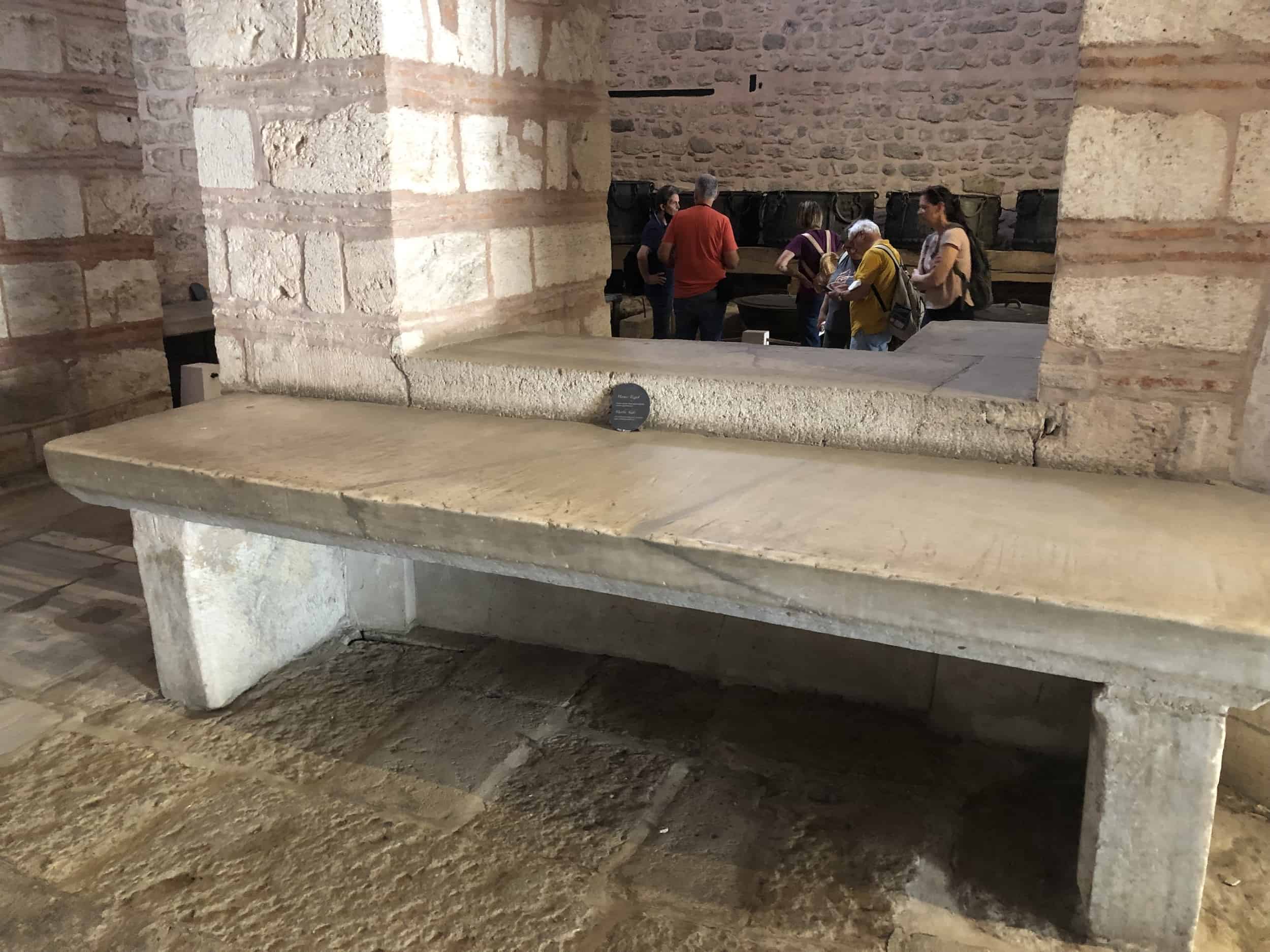
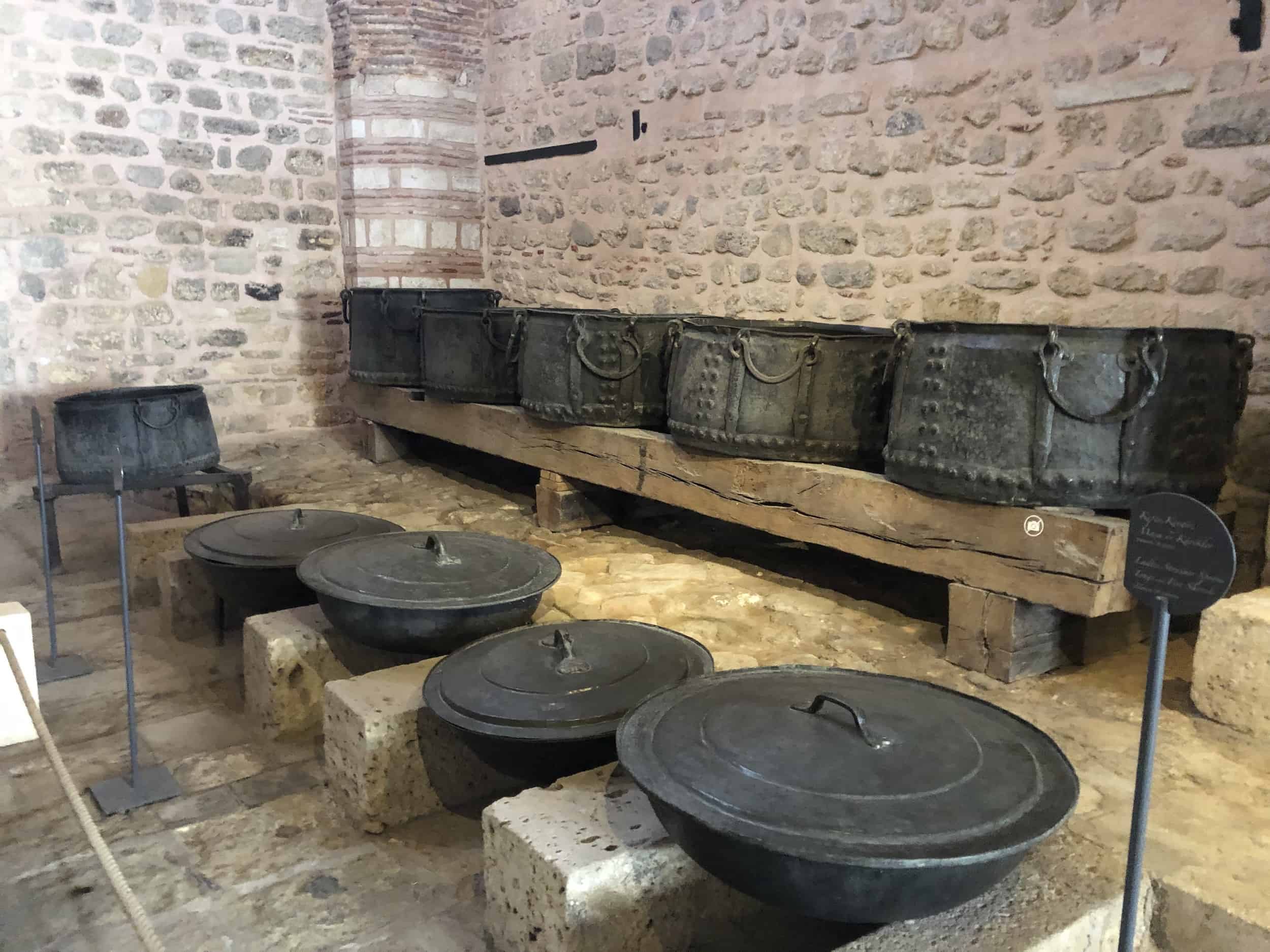
Sherbet Room
The Confectioner’s Mosque and Sherbet Room (Şerbethane) are connected to the Confectionary Kitchen. They sit at the northern end of the complex.
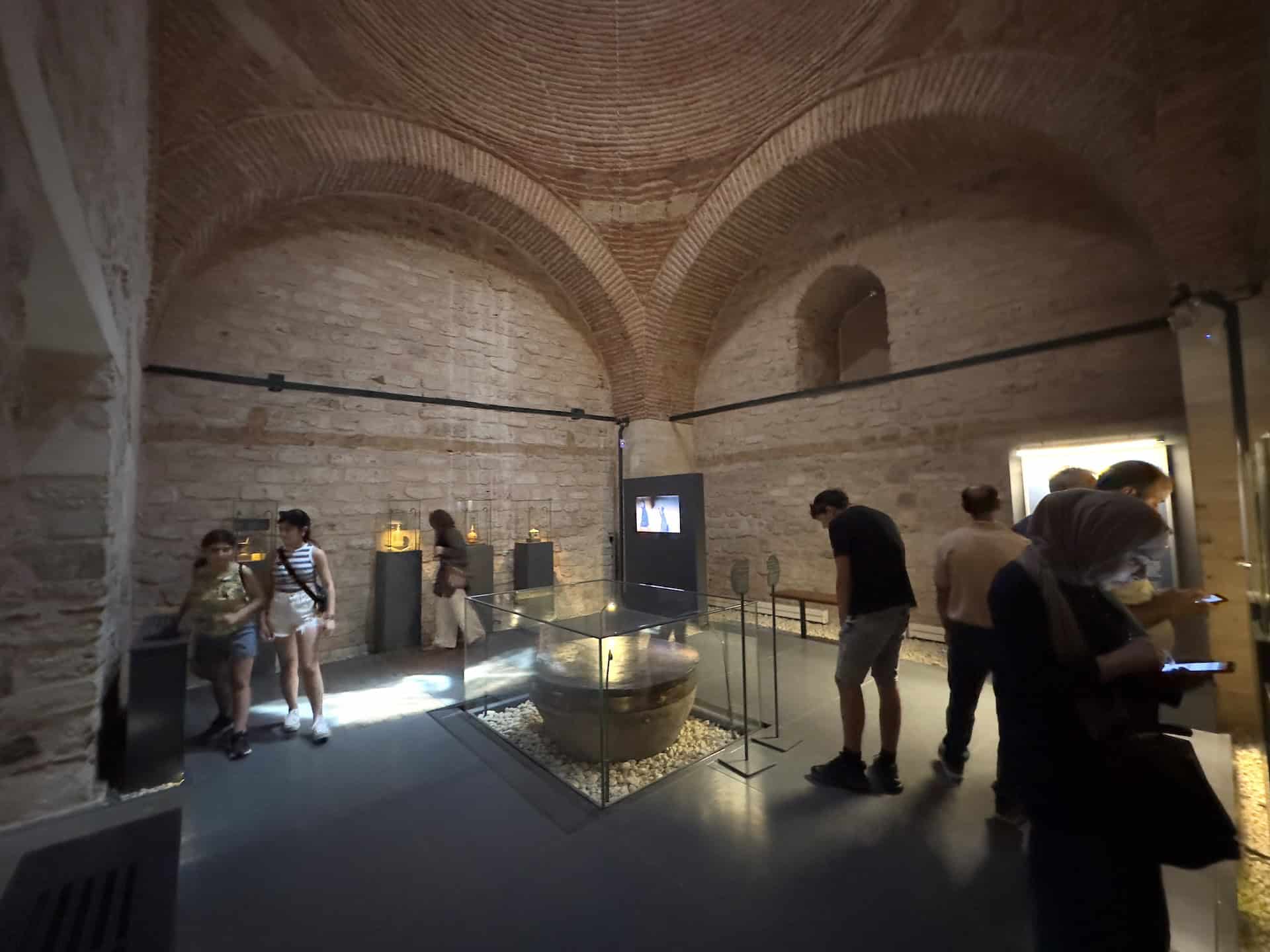
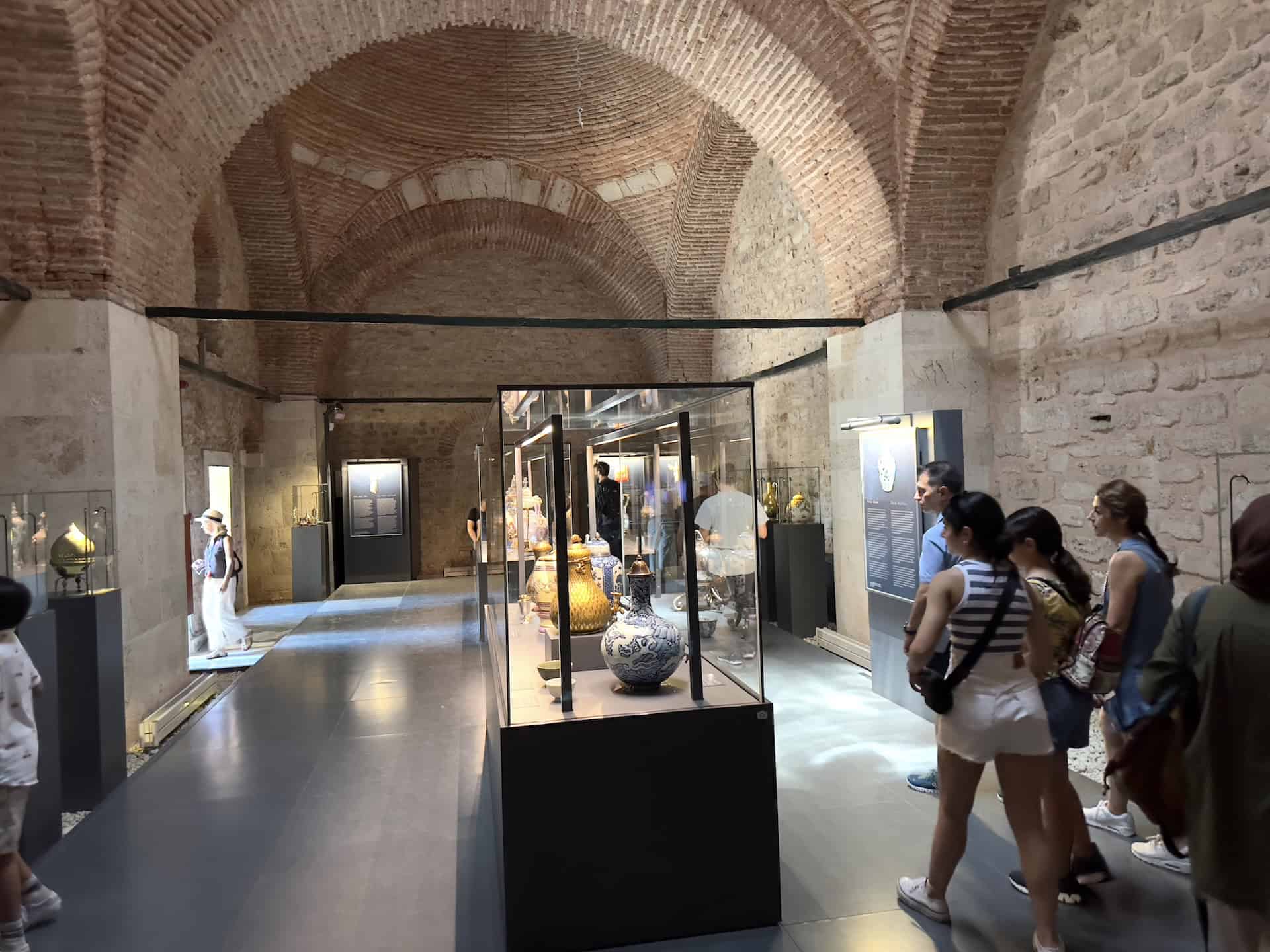
Today, both rooms displays an impressive collection of porcelain and glass serving jugs, perfume bottles, and cups.
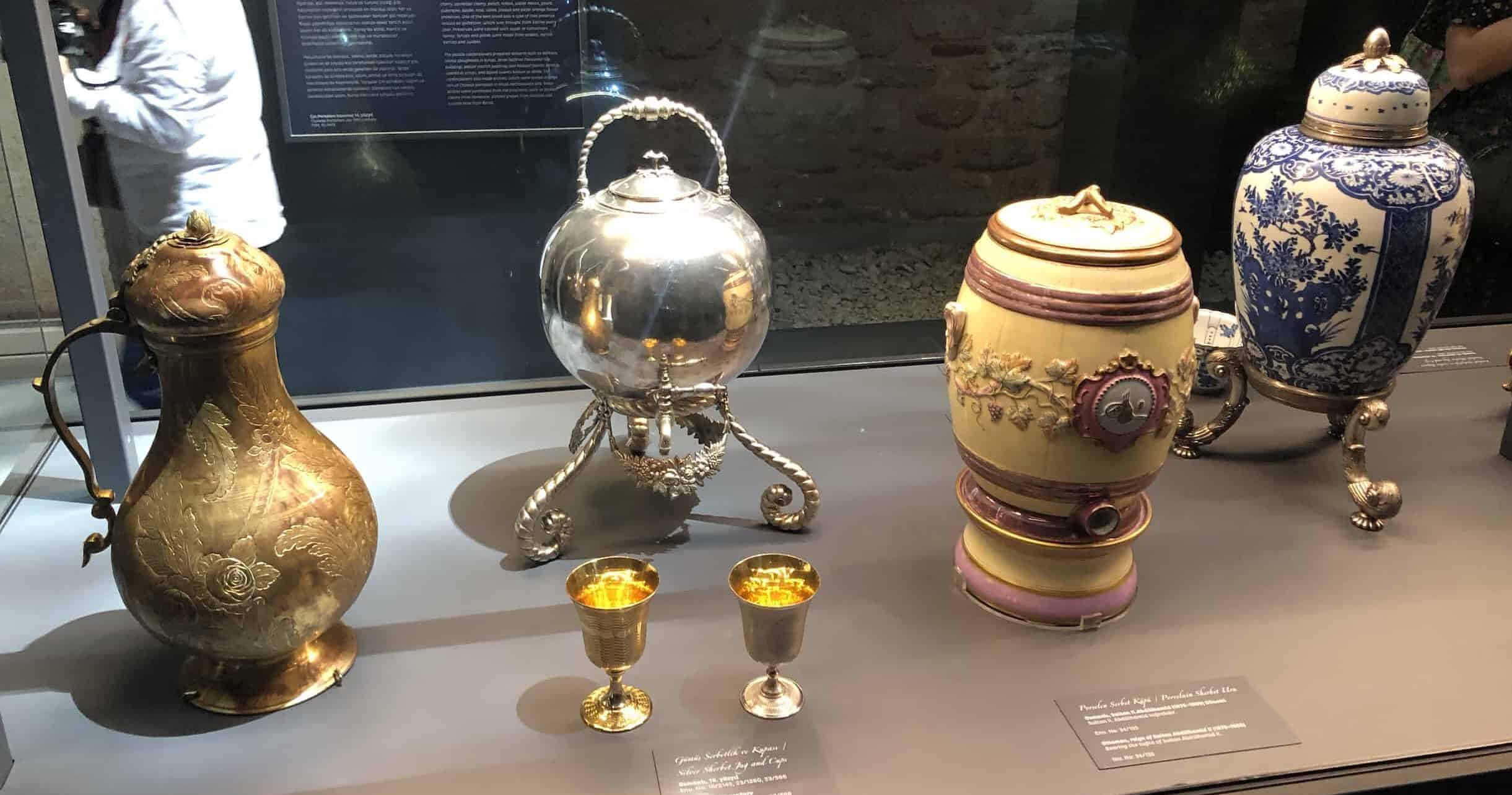
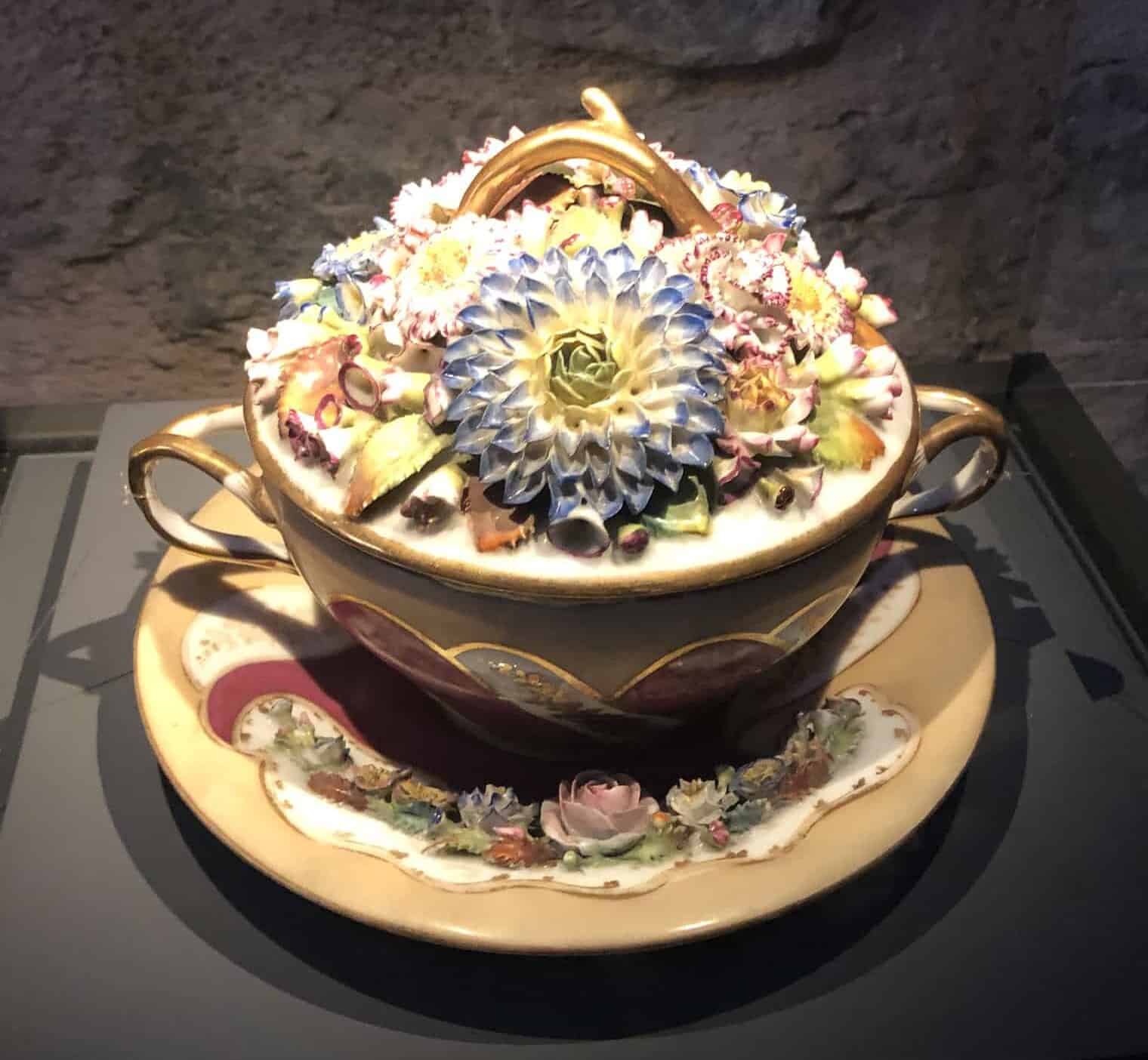
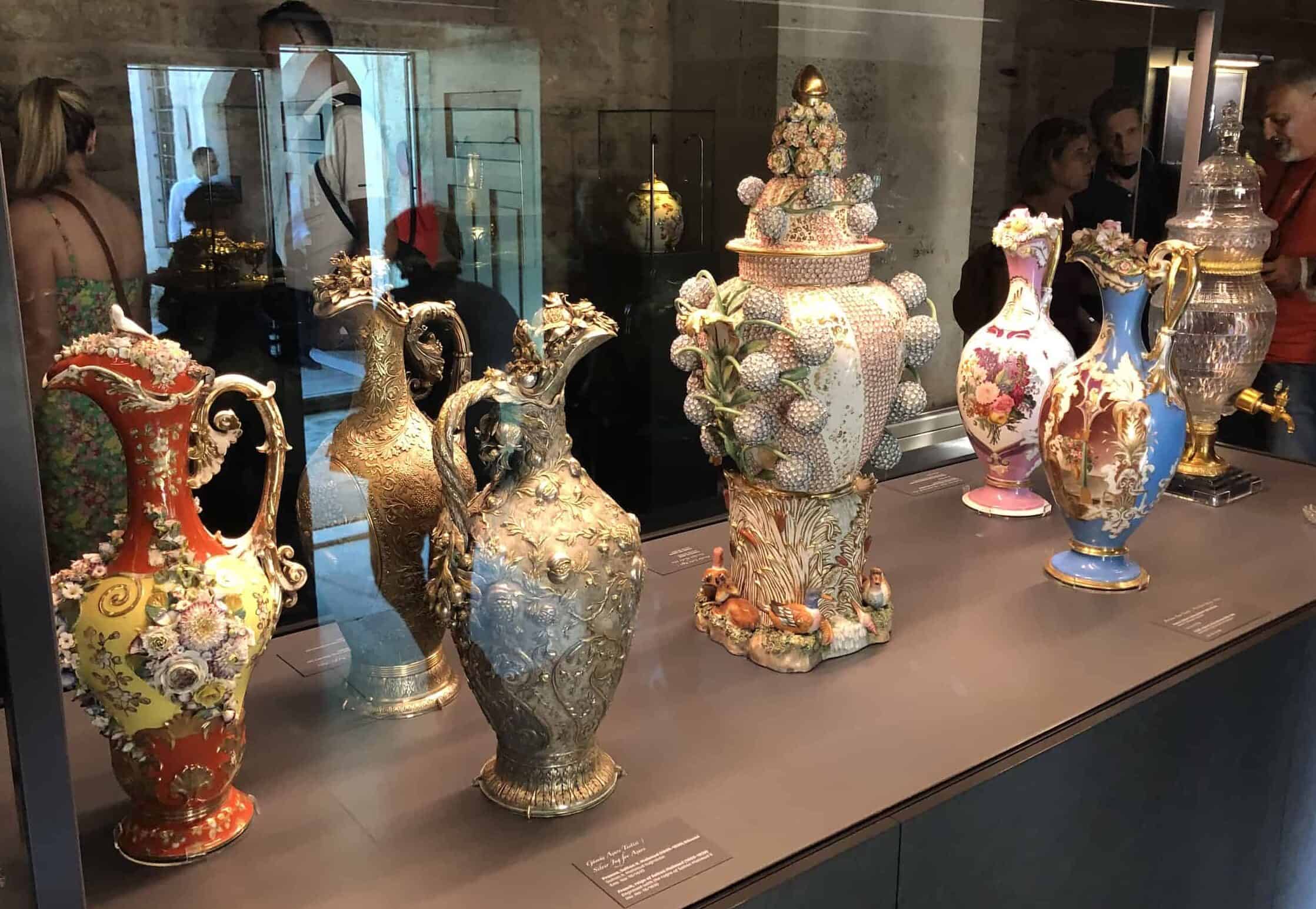
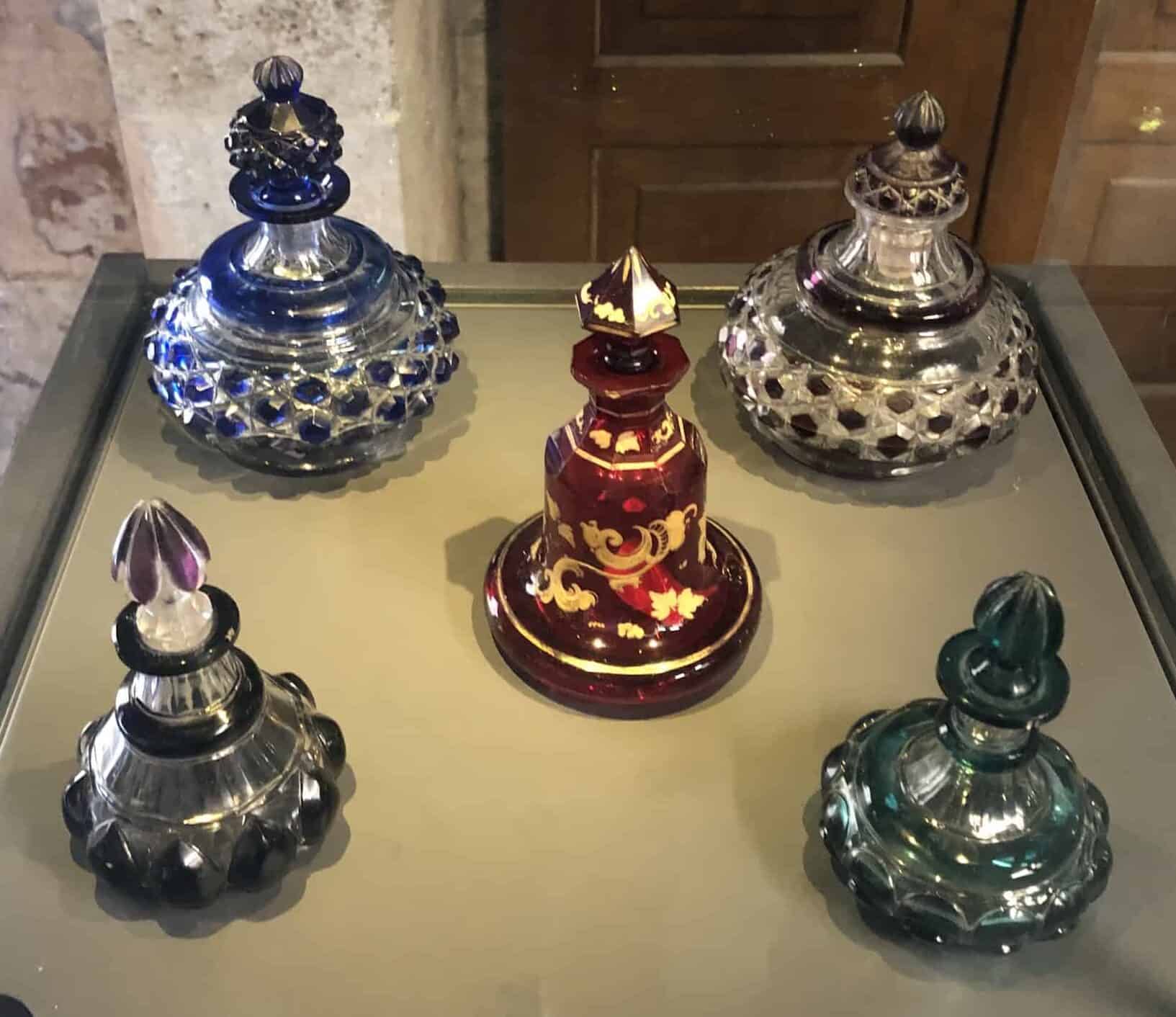
Kitchen Utensils
Rounding the corner is another room displaying kitchen utensils. On display are knives, cleavers, ladles, grinders, tray cloths, and dining mats.

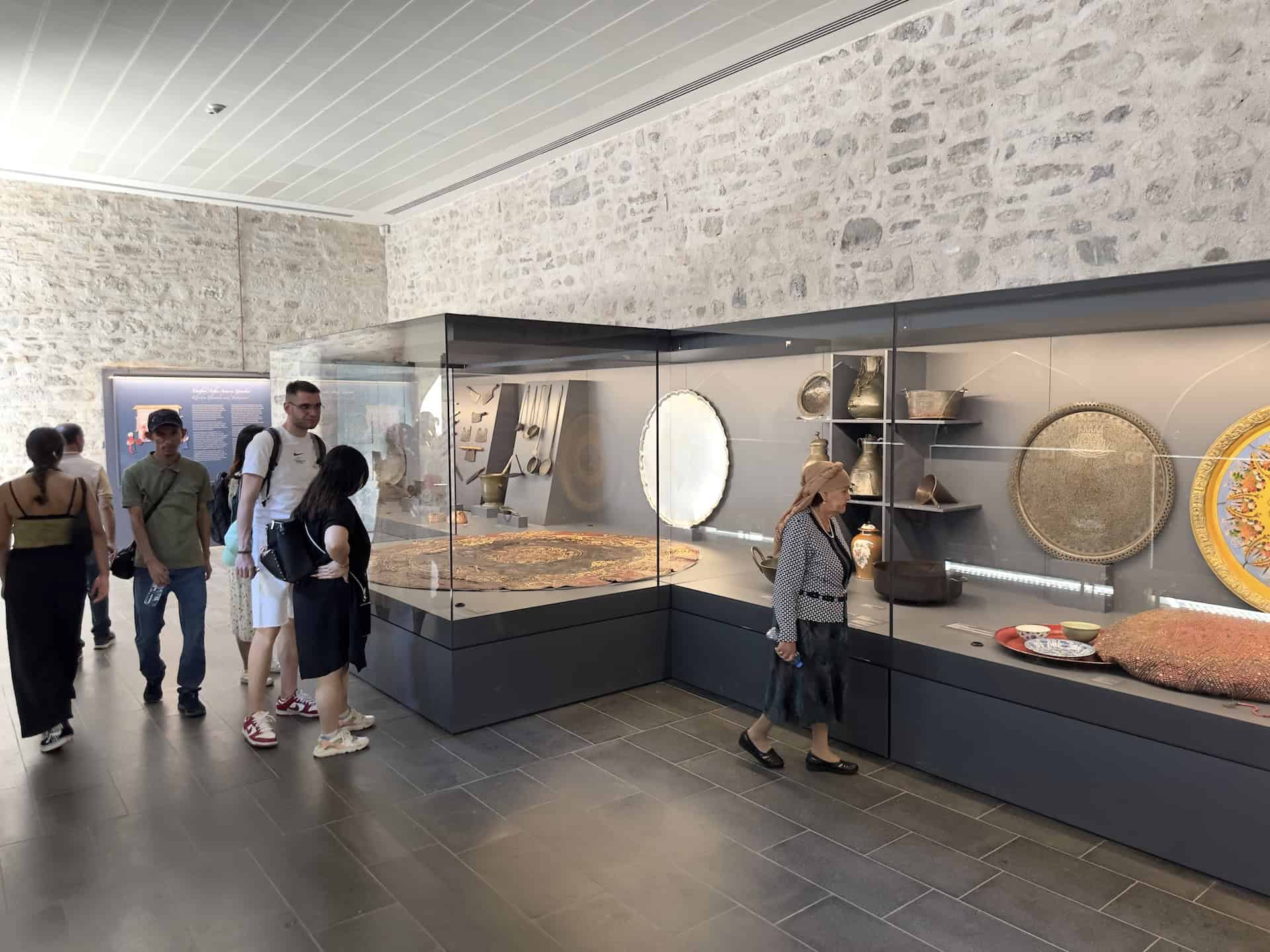

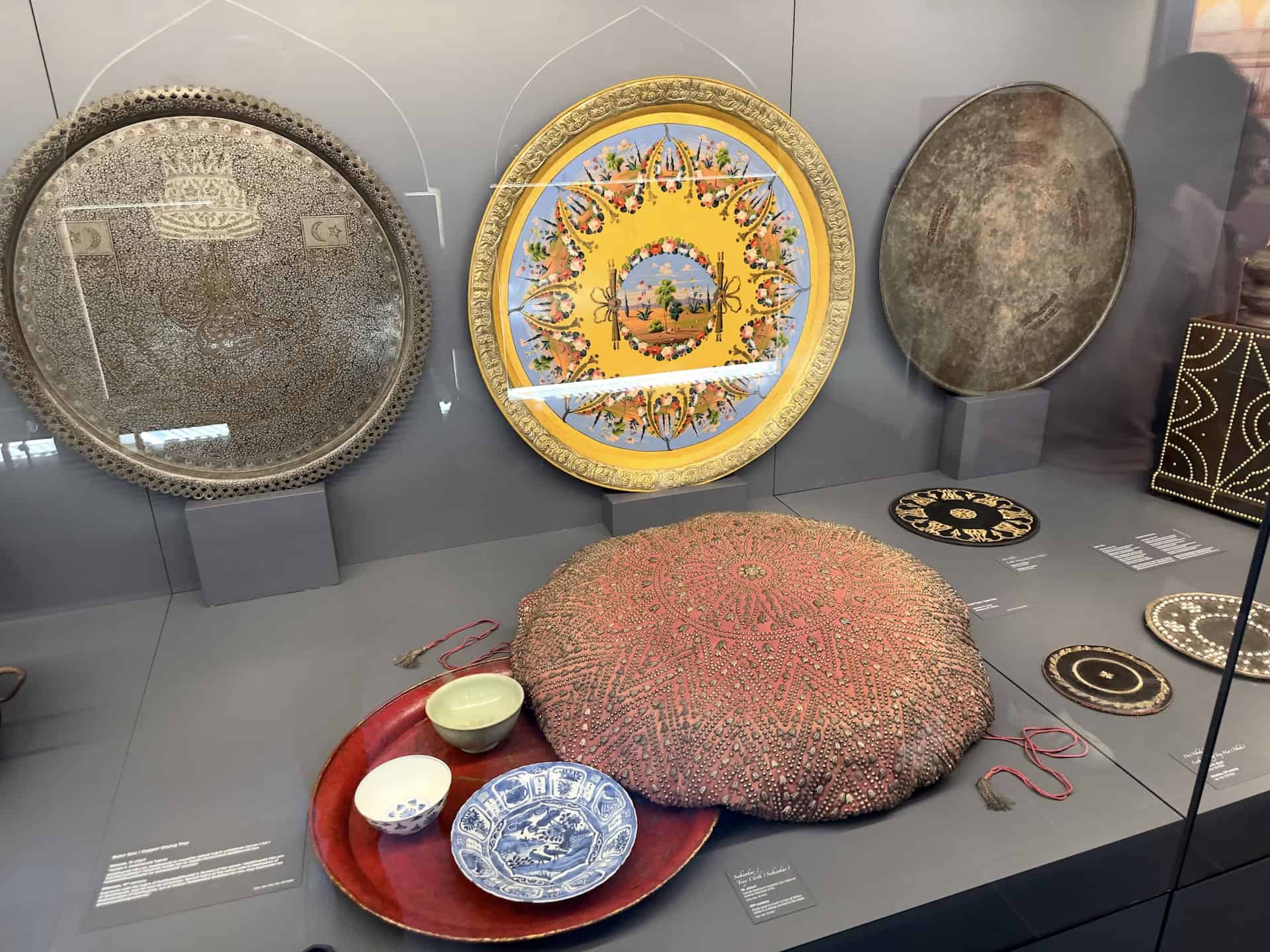

Hamam
The hamam at the Palace Kitchens were built in 1722 by Grand Vizier Nevşehirli Damat Ibrahim Pasha (c. 1662-1730) during the reign of Ahmed III. It consists of two square rooms topped by a dome set with small skylights. There’s a dressing room as well as a tepidarium and private washing area, and it had an underfloor heating system.
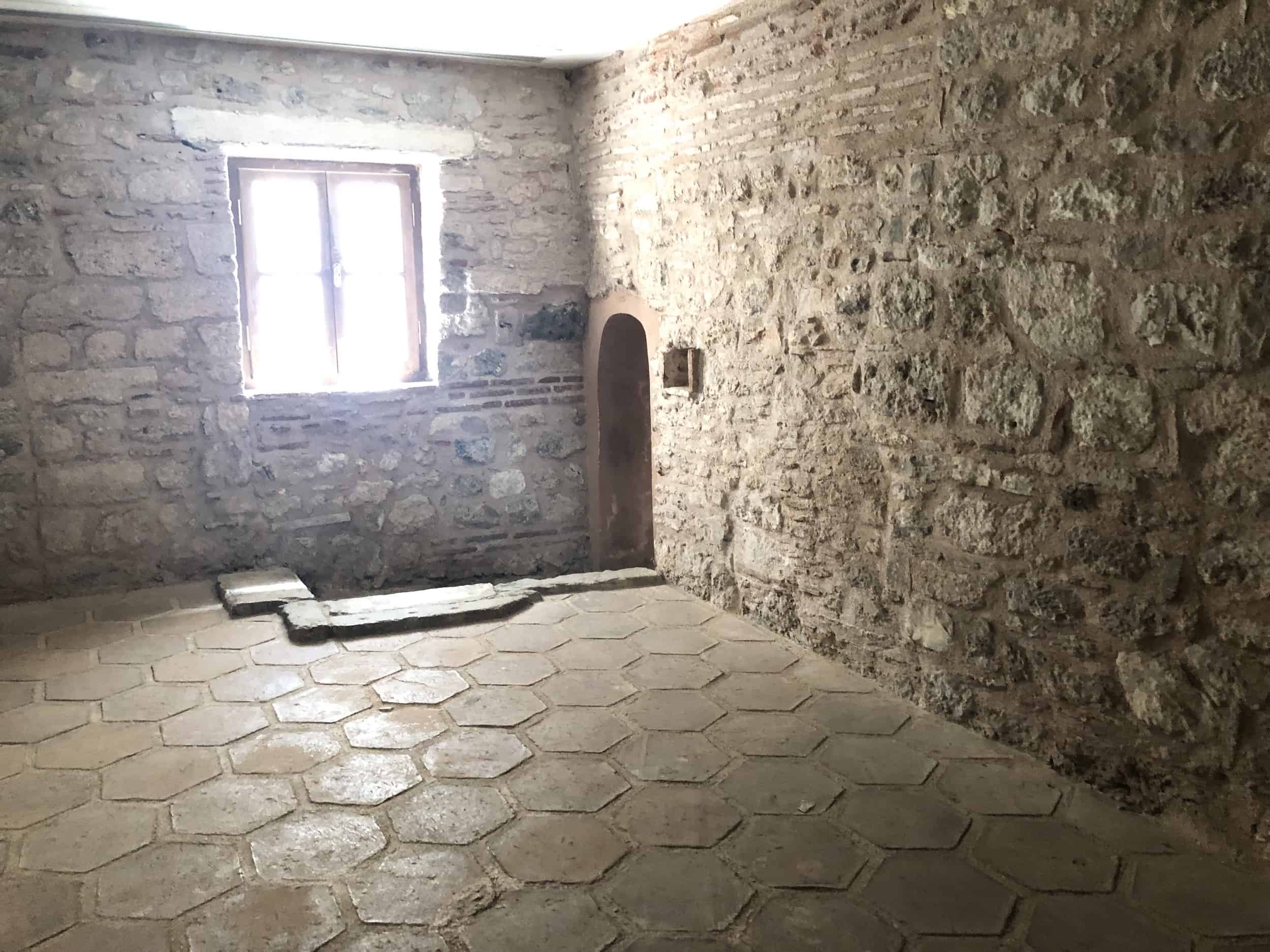
Pantry
The hamam is attached to the Pantry (Kiler), which consists of two levels. The first level displays scales and meathooks, while the second level has a priceless collection of porcelain and the odd trunk.
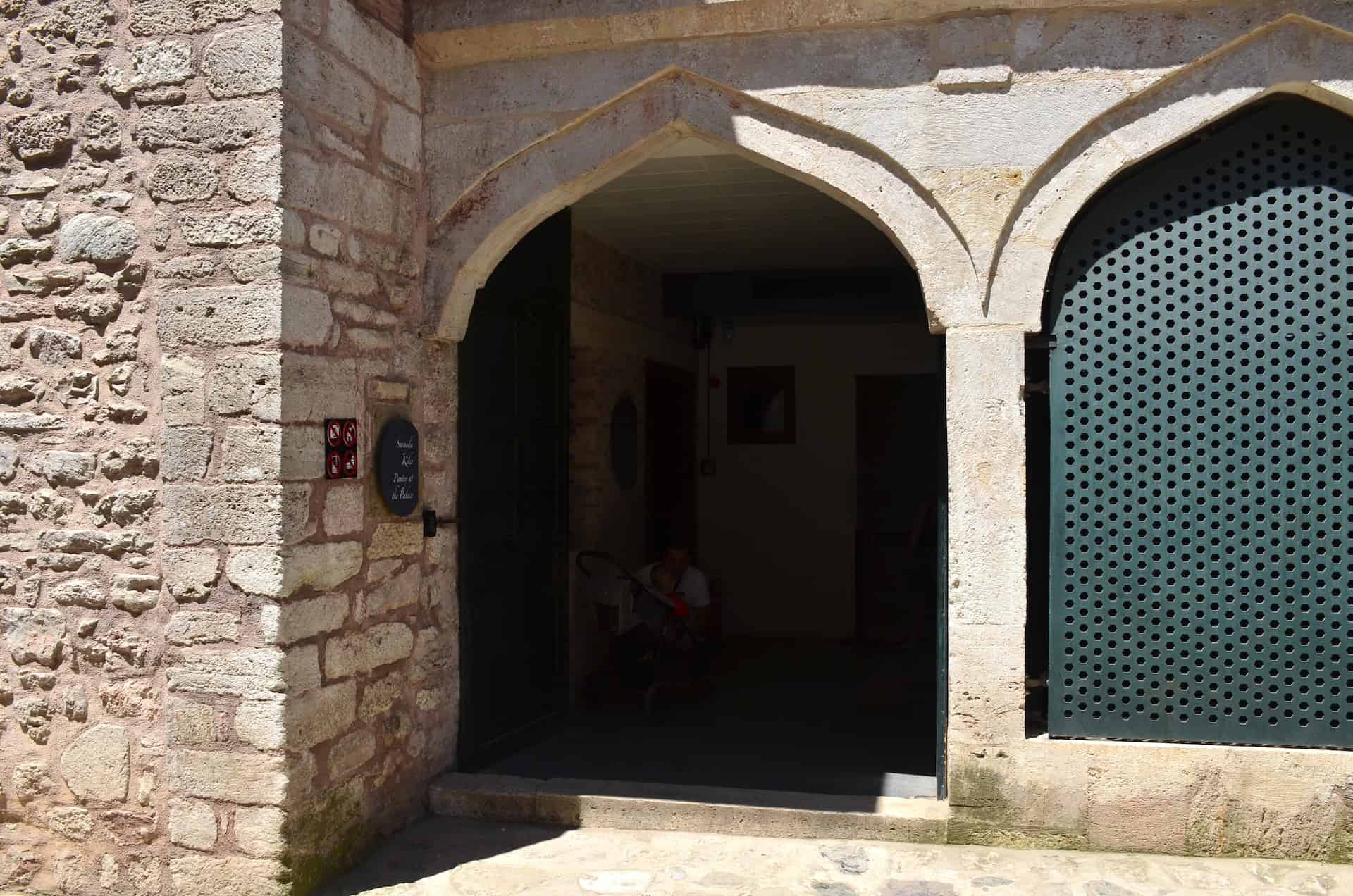
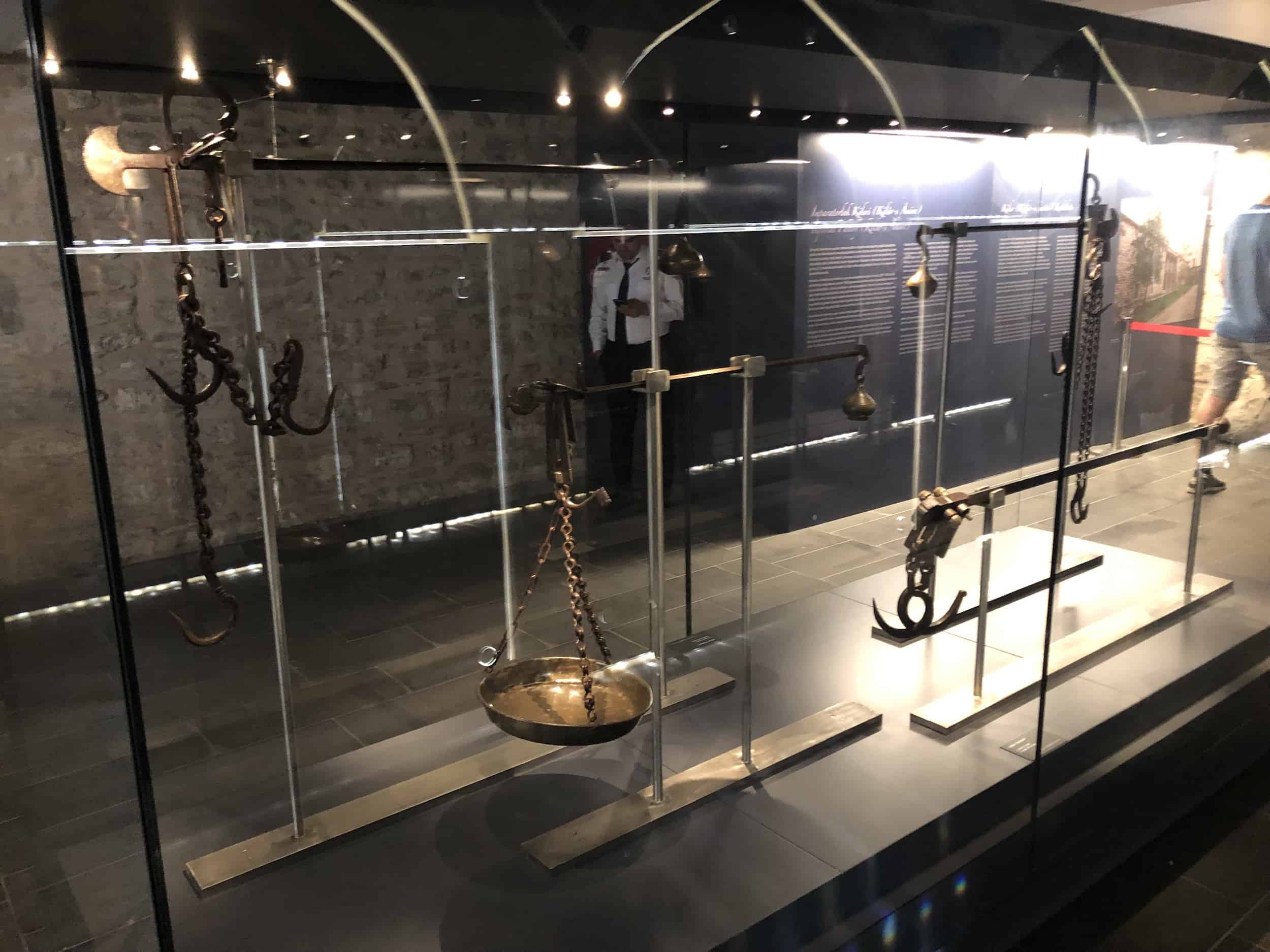

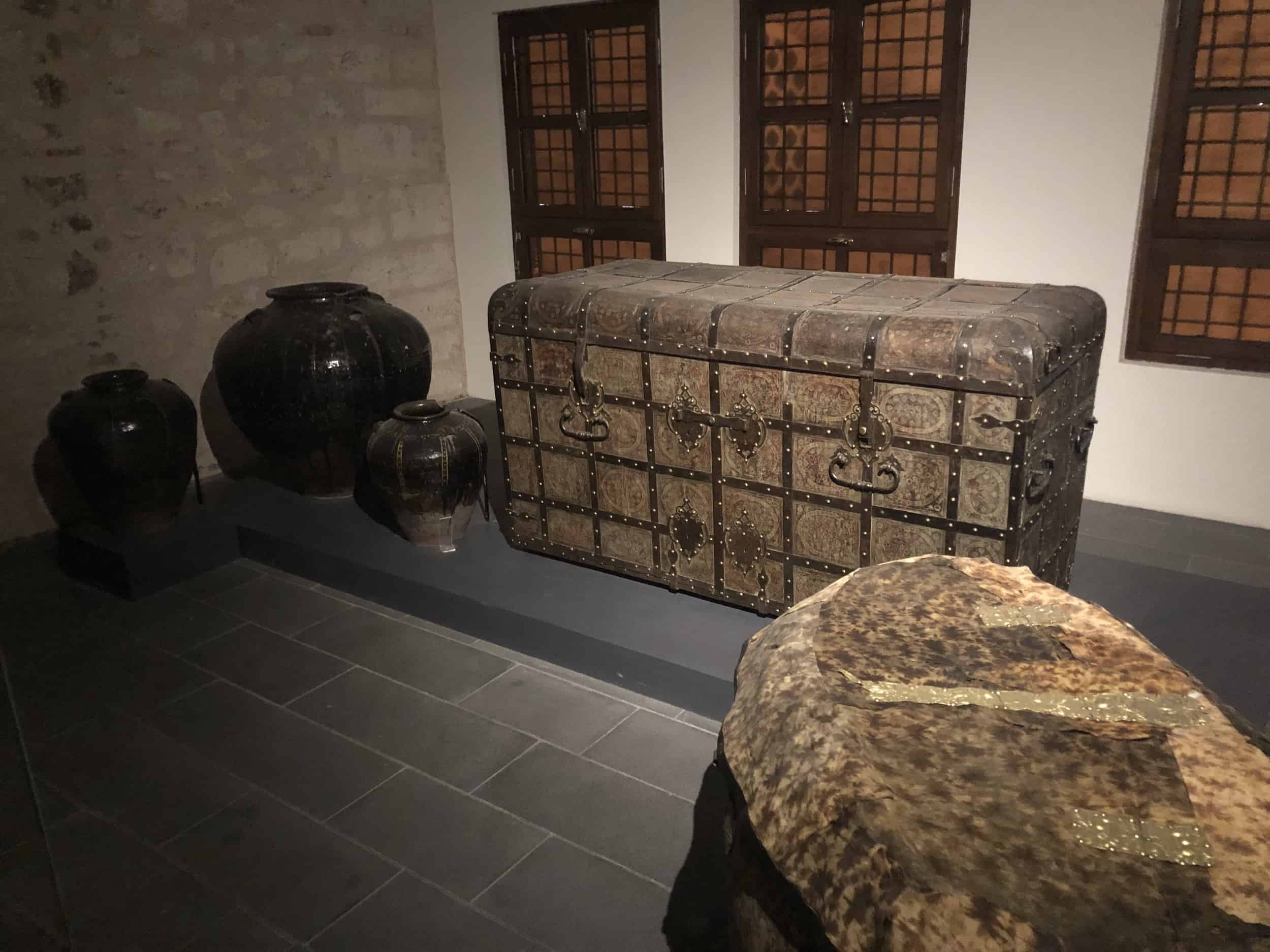
The Chinese porcelain collection at Topkapi Palace is among the finest in the world. It contains over 10,000 pieces and ranges from the late Song Dynasty (960-1279) and the Yuan Dynasty (1280–1368), through the Ming Dynasty (1368–1644) to the Qing Dynasty (1644–1911). 17th to 19th century Japanese pieces as well as over 5,000 European pieces round out the collection.

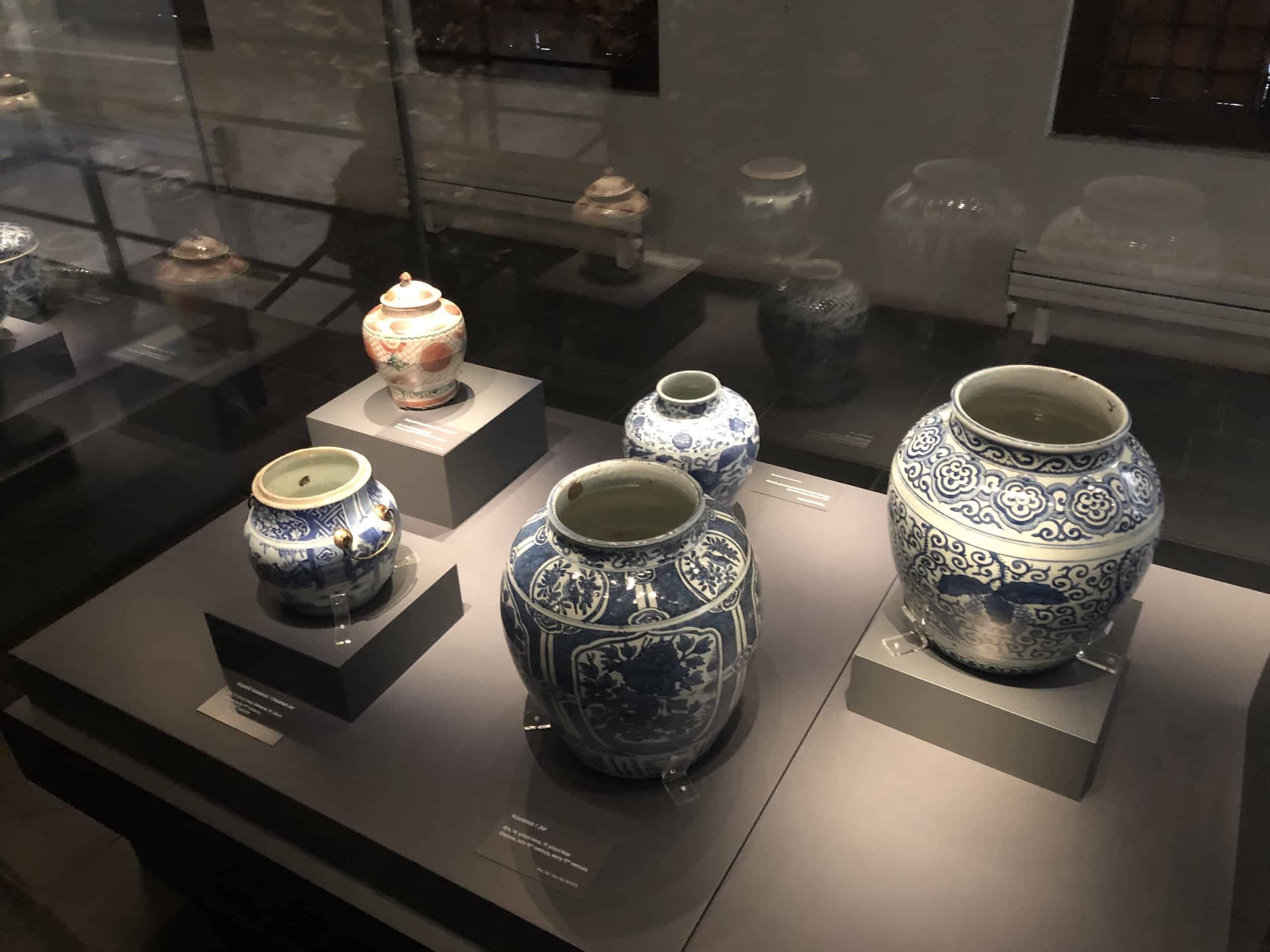
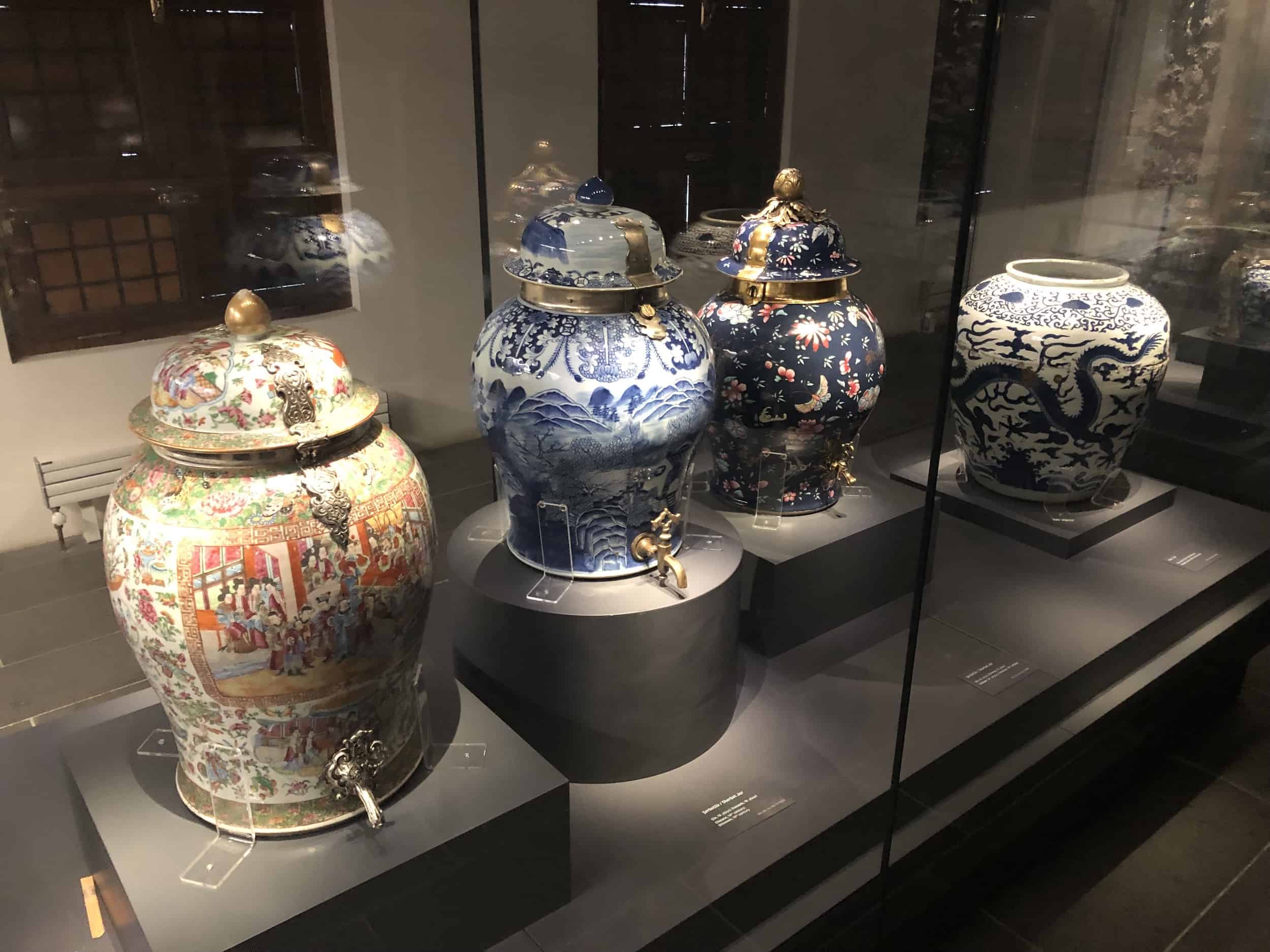
Mosque of the Cooks
At the southern end of the Palace Kitchens is the Mosque of the Cooks (Aşçılar Mescidi). It’s a two-story structure made of wood. The mosque was built in 1626 and the second story was added in the 18th century.

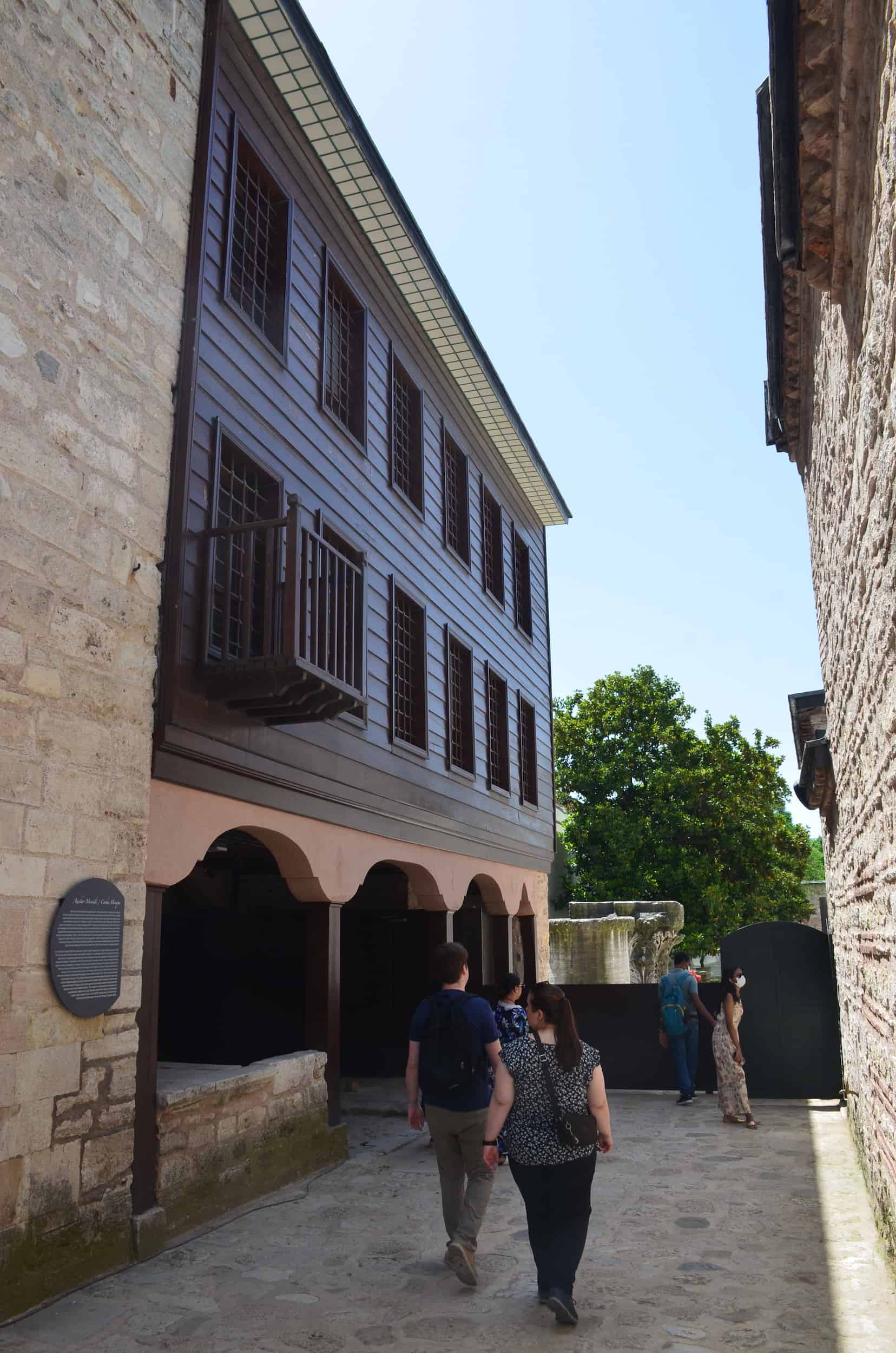
The Palace Kitchens had two other mosques, one for the pantrymen and another for the confectioners. The Confectioner’s Mosque is used as a small exhibition gallery connected to the Sherbet Room while the Pantrymen’s Mosque no longer exists.
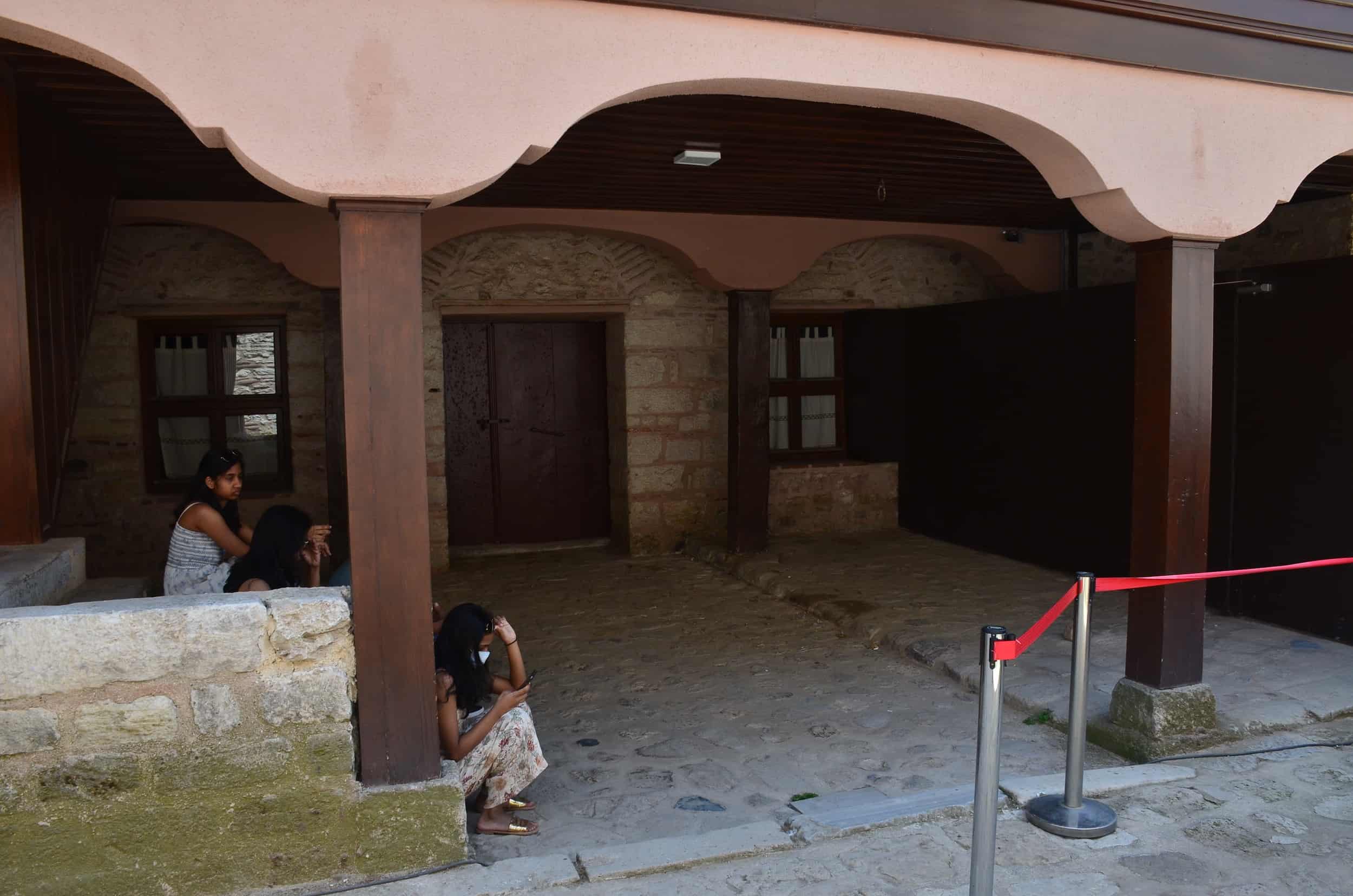
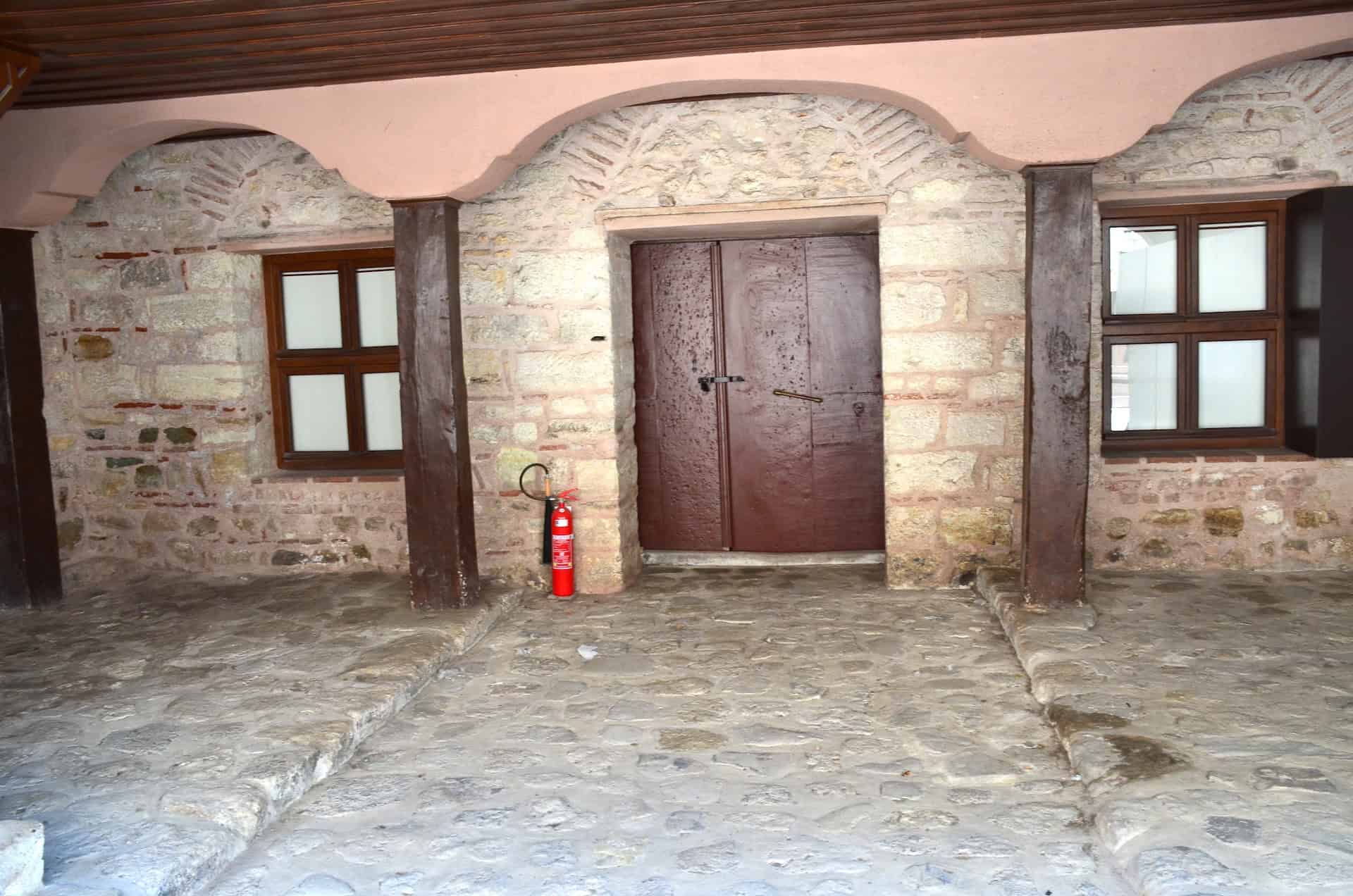
Tinning Shop
Finally, across from the Mosque of the Cooks is the Tinning Shop (Kalayhane). In the early years of Topkapi Palace, copper vessels and utensils were tinned outside the palace. From the second quarter of the 16th century onwards, however, most of the tinning was done at the Palace Kitchens.
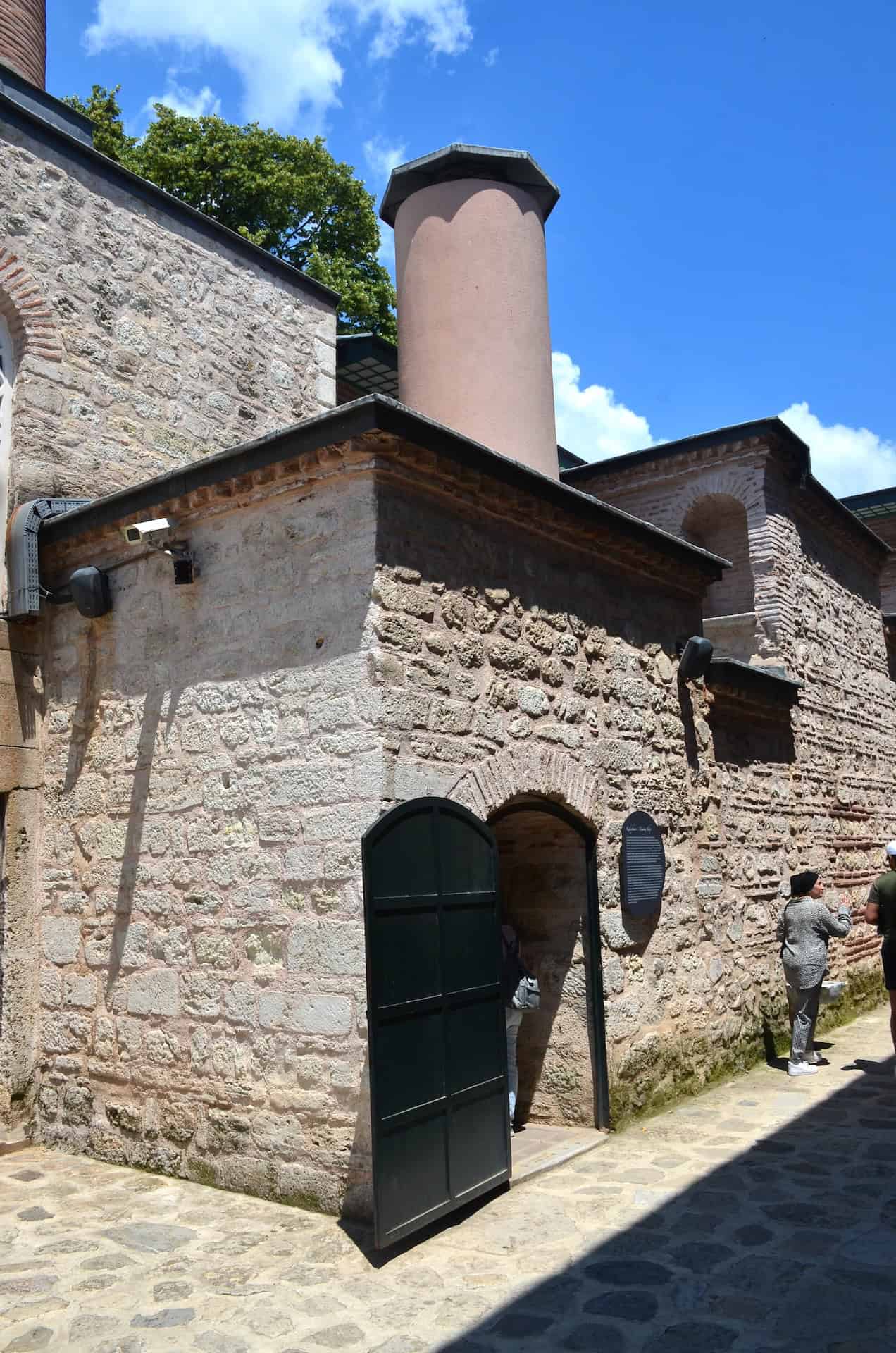
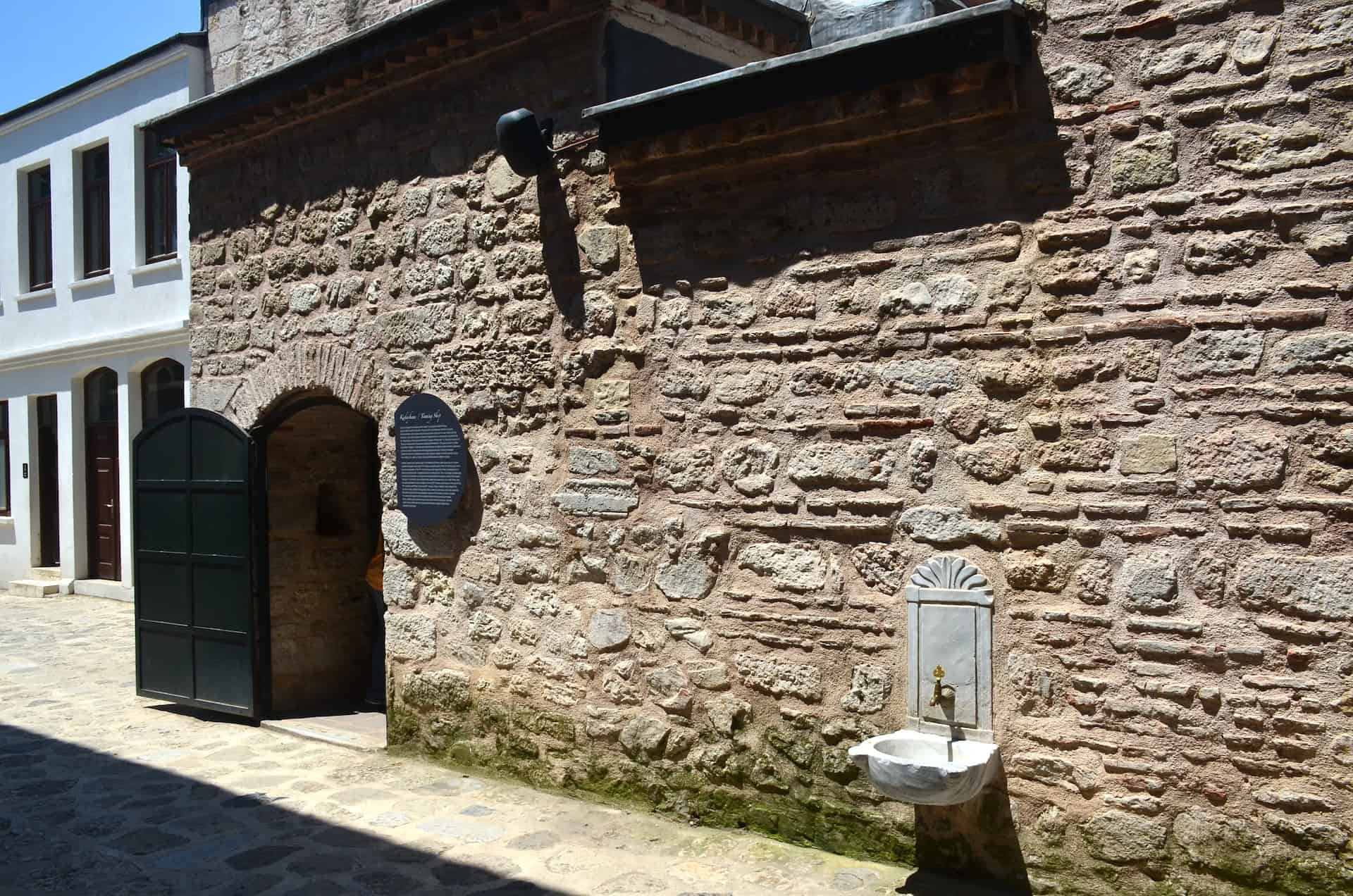
There were roughly 8 to 15 tinners working at the palace under the supervision of the Chief Tinner. The actual Tinning Shop no longer exists, but the room on display was known to be used for tinning. A register entry dated 1573 mentions this small tinning shop attached to the hamam furnace.
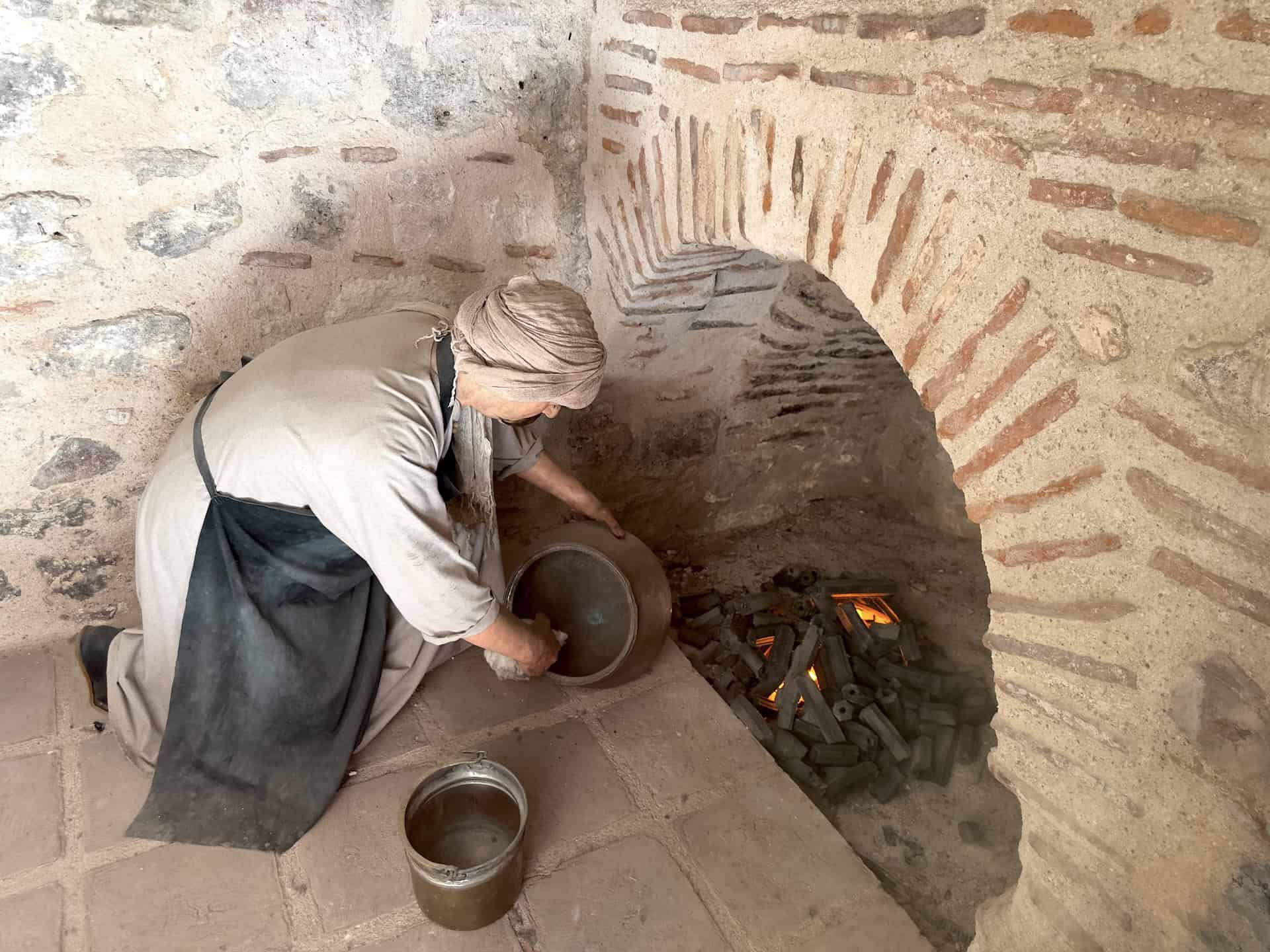
Byzantine Cistern
Back in the middle of the 2nd Courtyard, you might notice a few interesting things. One is a Byzantine cistern dated to the 5th century.
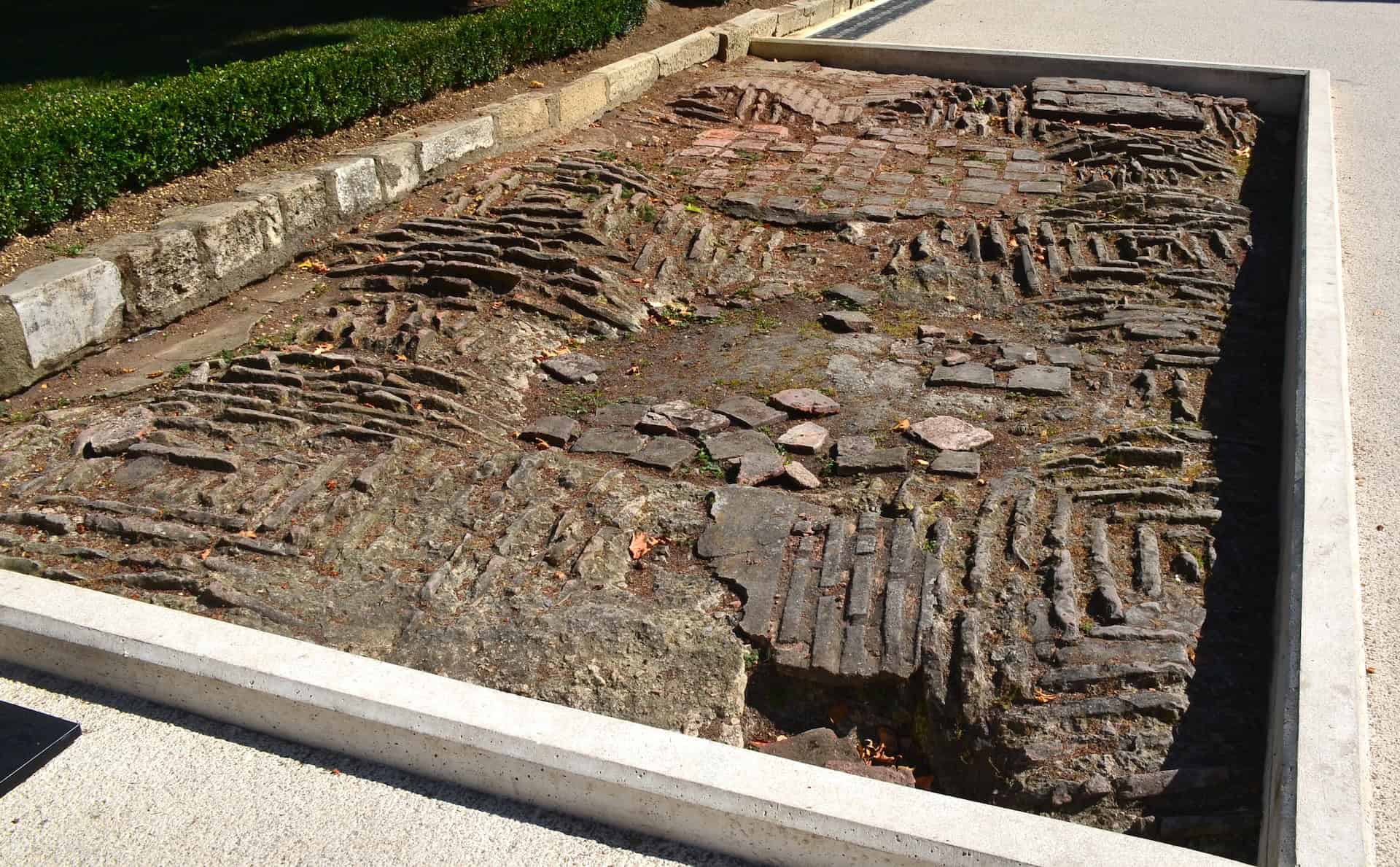
Sokhumi Fortress Inscription
Another is a monument from the Fortress of Sokhumi in present-day Georgia (actually in the breakaway republic of Abkhazia). It originally belonged to a fortress built during the reign of Ahmed III and was brought to Topkapi Palace by Abdülhamid II in 1877 during the Ottoman-Russian War. Above the inscription is the tughra of Abdülhamid II dated 1877.

Target Column
Nearby is a target column erected in 1791. It commemorates a rifle shot of Selim III hitting a jug from 898 meters away. The column was brought to Topkapi Palace Museum from the Levend Farm (Levent Çiftliği), which is now the Levent neighborhood of Beşiktaş. It was the training ground of the Nizam-i Cedid forces. The column is inscribed with a 10-couplet poem by Ibrahim Naşid Bey describing the Sultan’s shooting skills.
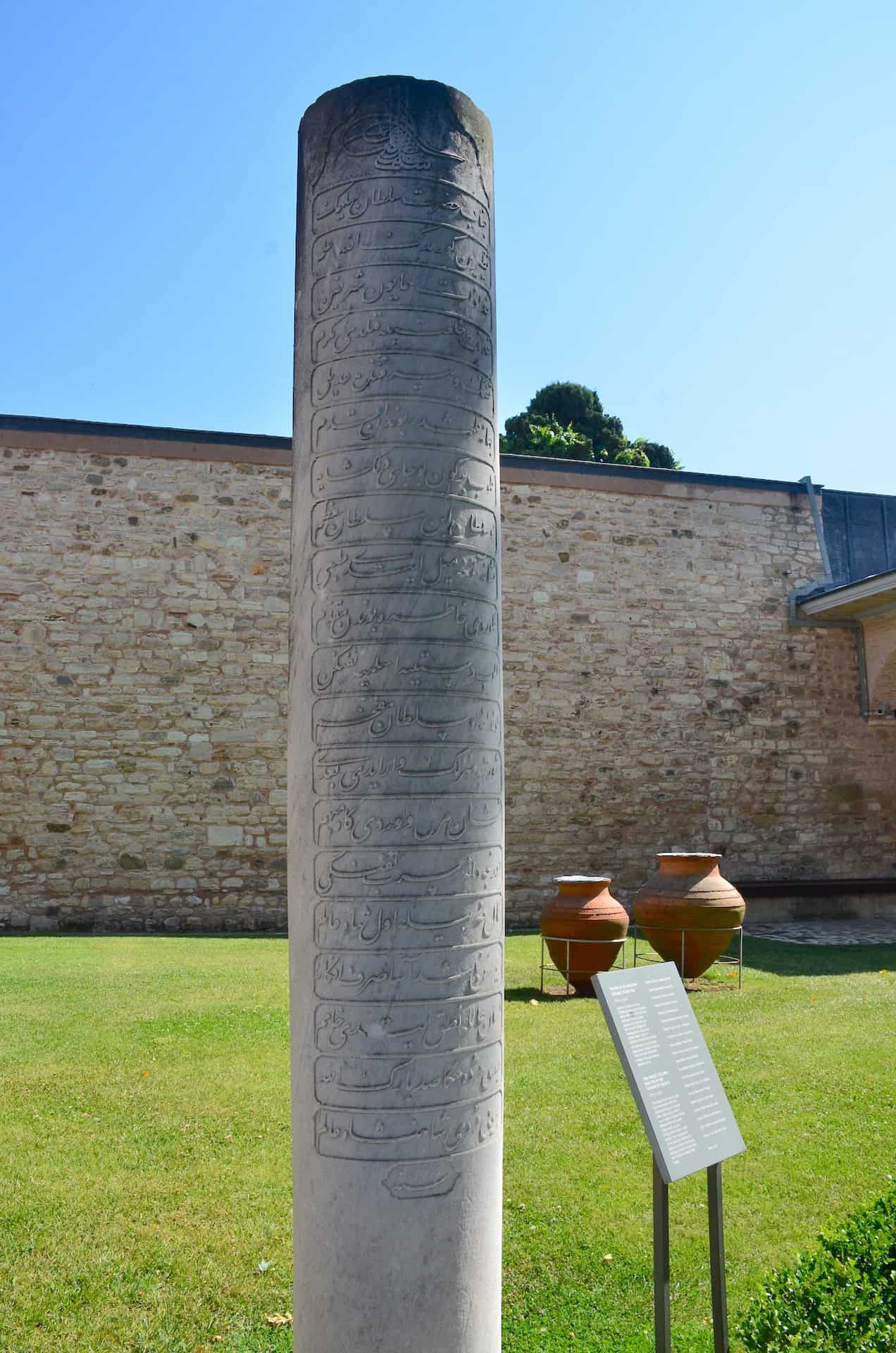
Fountain
Back near the Gate of Salutation is a fountain built during the reign of Mehmed the Conqueror. The inscription commemorates the repair during the reign of Sultan Ahmed III.
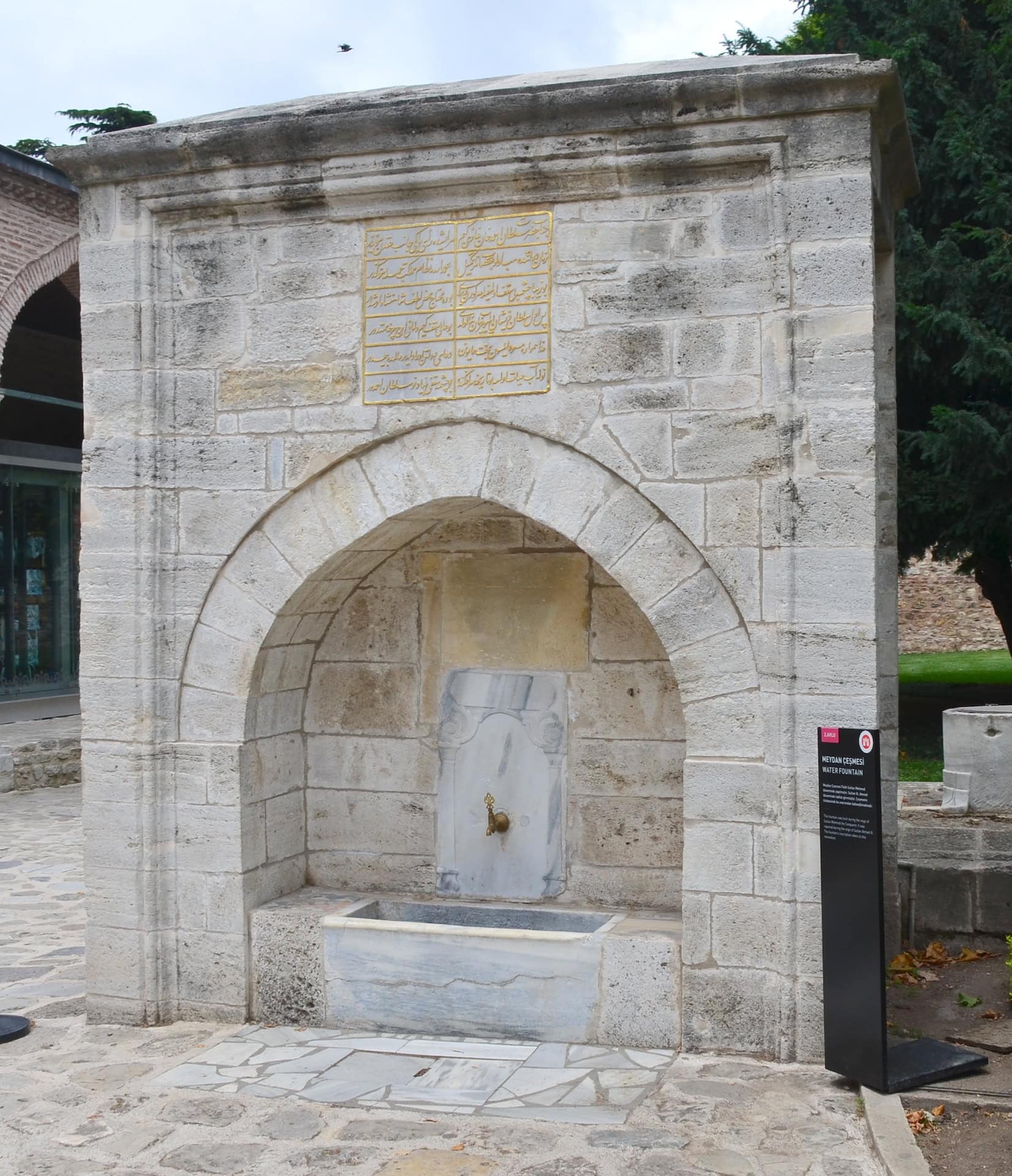
3rd Courtyard of Topkapi Palace
The 3rd Courtyard (III. Avlu) of Topkapi Palace, also known as the Innermost (Enderûn), was where the Sultan spent most of his time outside the Harem. It was reserved for the Sultan, members of his family, servants, and approved visitors.
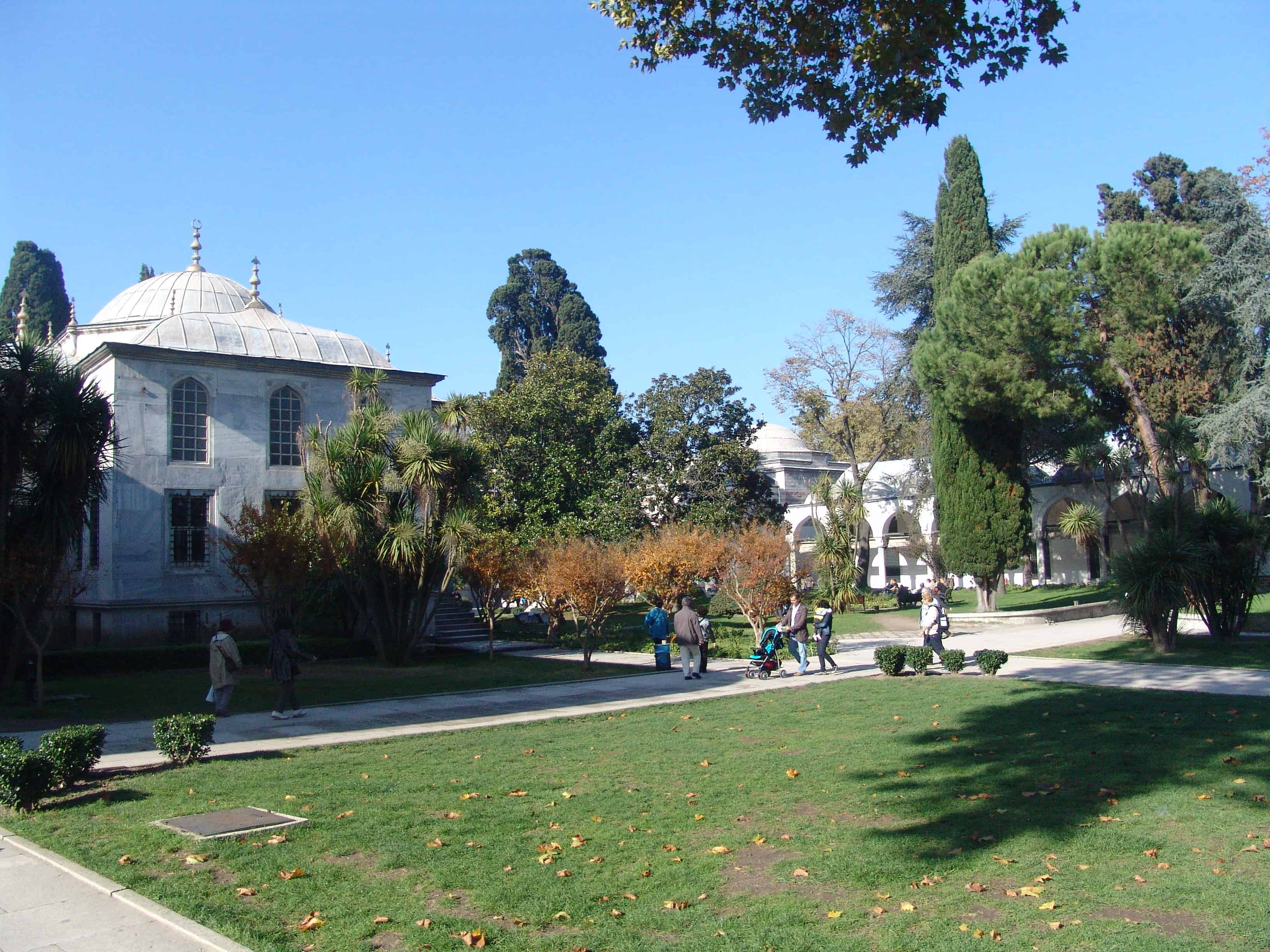
Visitors were only allowed as far as the Audience Chamber and were expected to follow strict rules. They were forbidden from making eye contact or speaking directly to the Sultan. They had to lower their heads and keep their gaze downward, speaking only to the Sultan’s interpreter.

Gate of Felicity
The 3rd Courtyard of Topkapi Palace is accessible either from the tourist exit of the Imperial Harem or by passing through the Gate of Felicity (Bab-üs Saâdet) from the 2nd Courtyard. The gate was originally built by Mehmed the Conqueror, and was renovated by Sultans Abdülhamid I, Selim III, and Mahmud II. Nobody was allowed through without special permission from the Sultan.
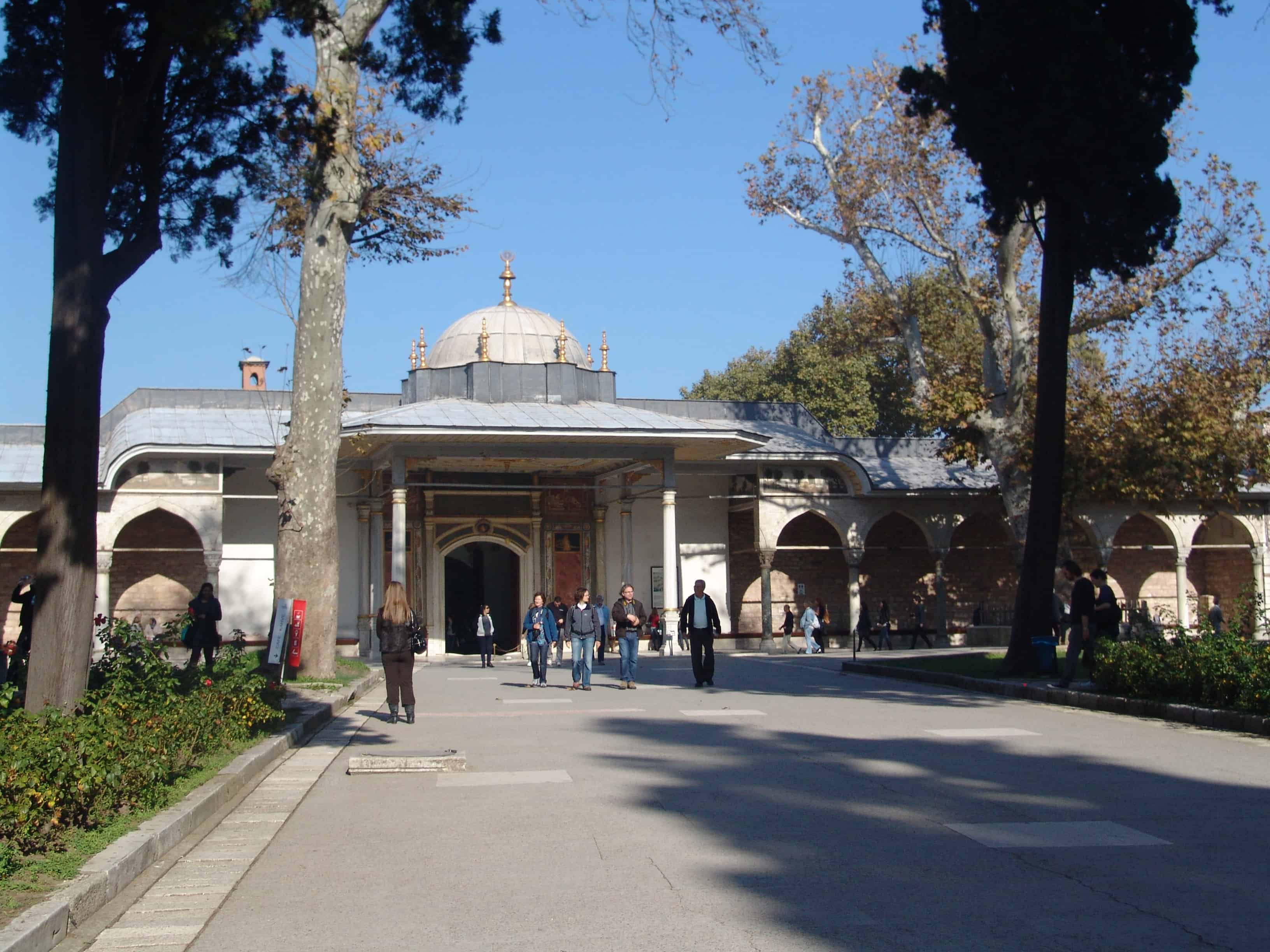

The area in front of the gate was used for special occasions such as the accession of a new sultan, religious holidays, and the presentation of the Holy Banner to the commander-in-chief of the army before military campaigns.
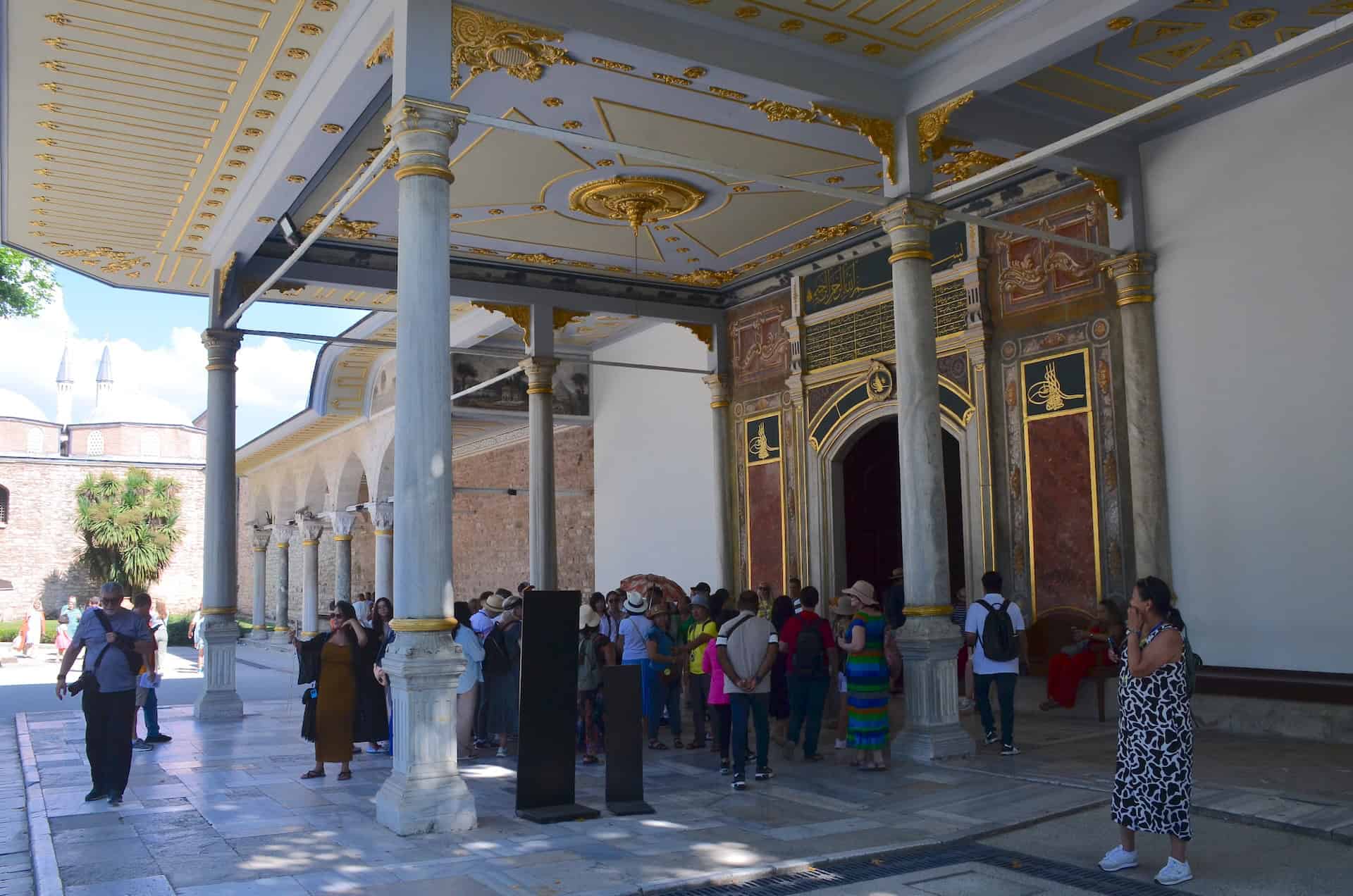
The elaborate Rococo decorations of the Gate of Felicity, including the gilded entryway, date to the 18th century during the reigns of Sultans Abdülhamid I and Selim III.
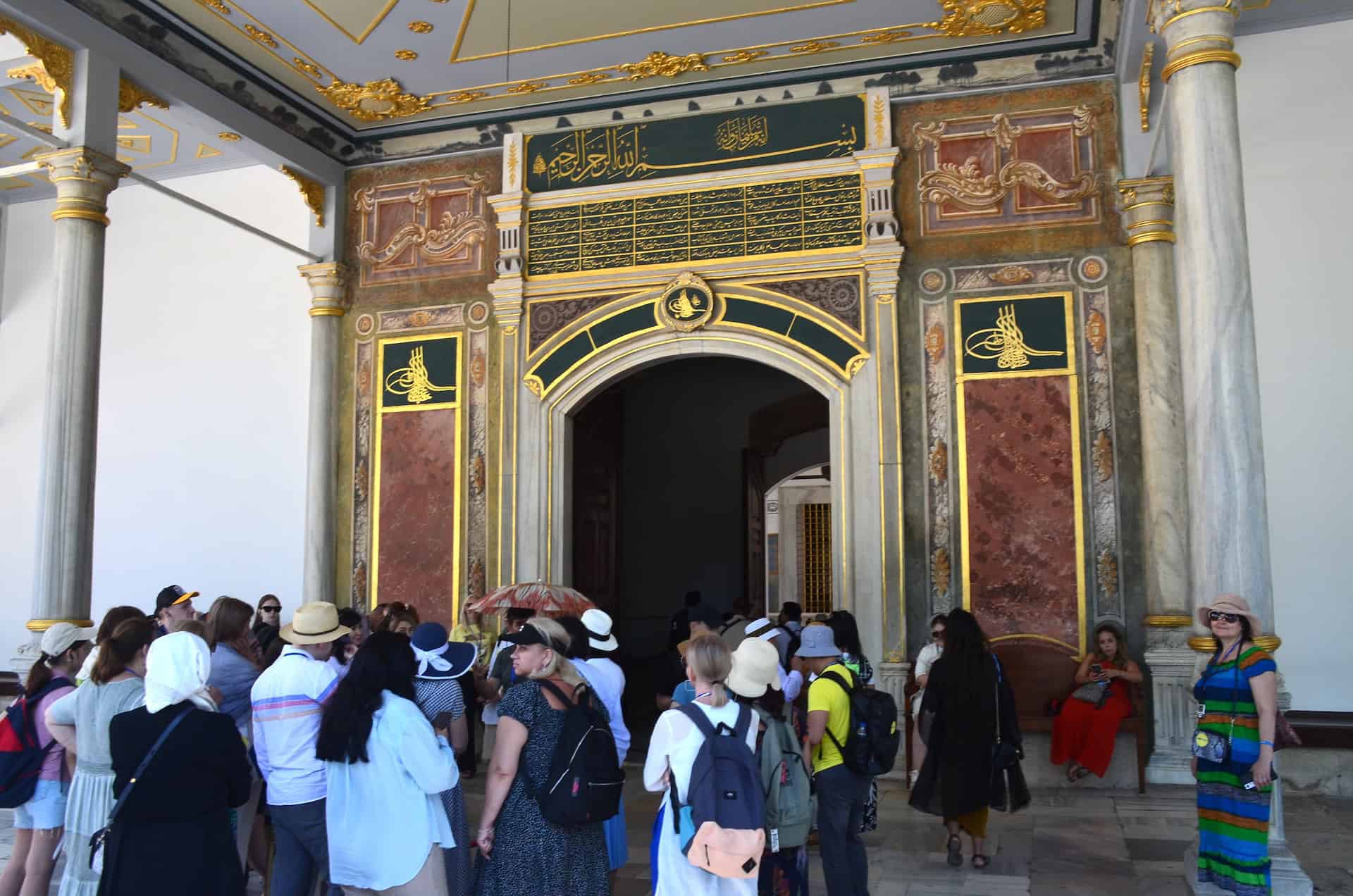
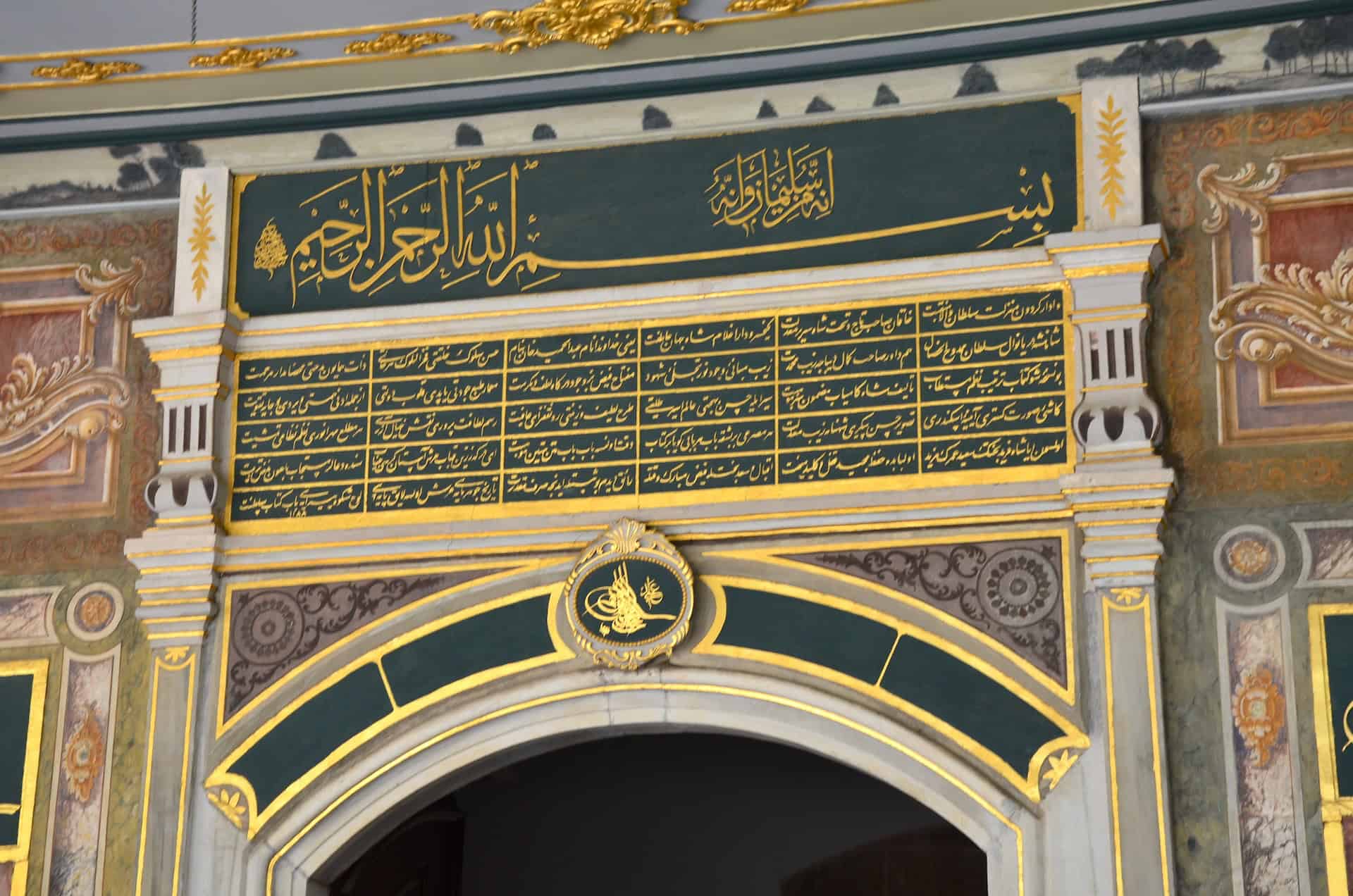
The architrave is adorned with beautiful frescoes depicting landscape scenes. They were added in the early 19th century during the reign of Mahmud II.
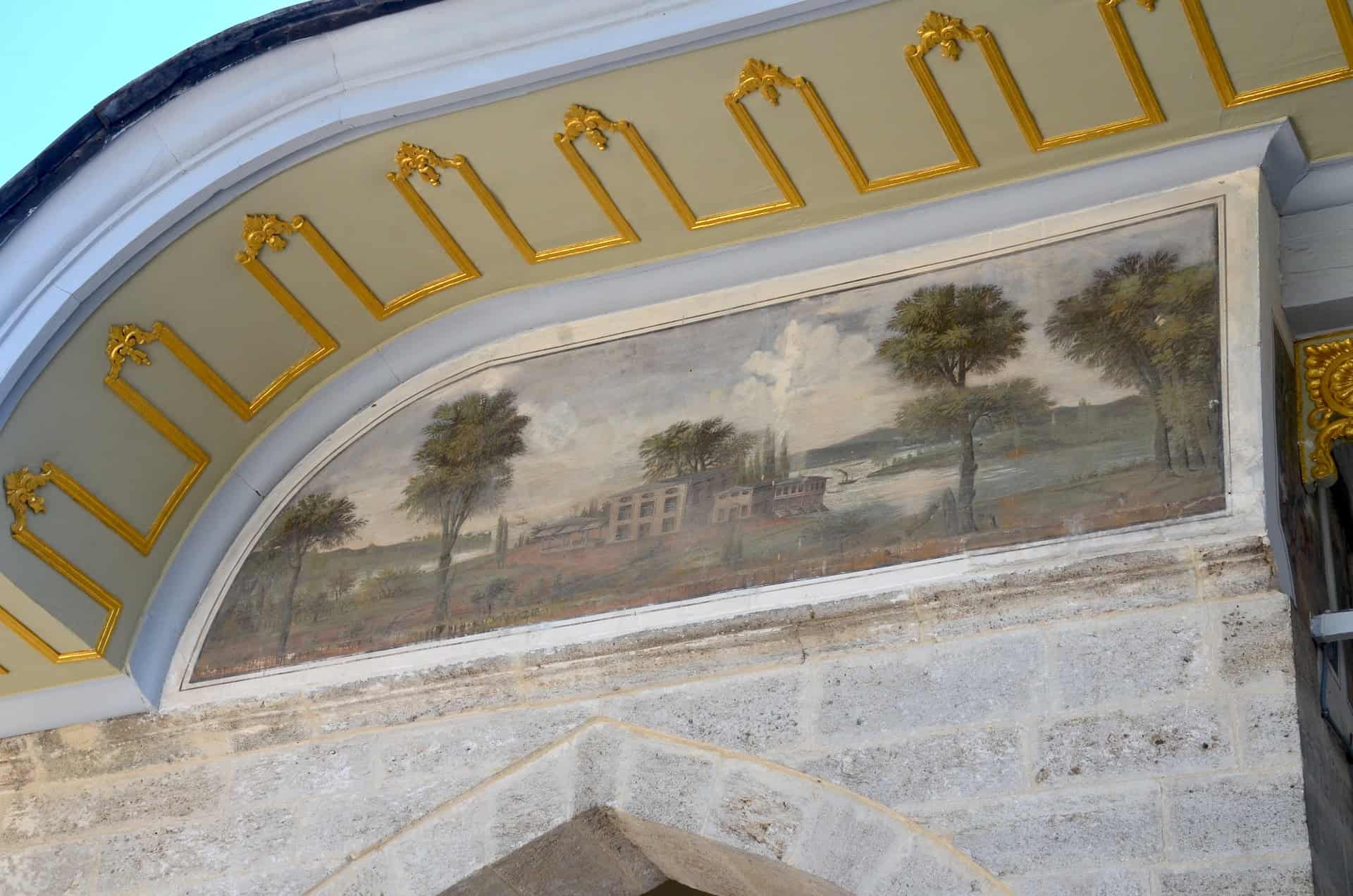
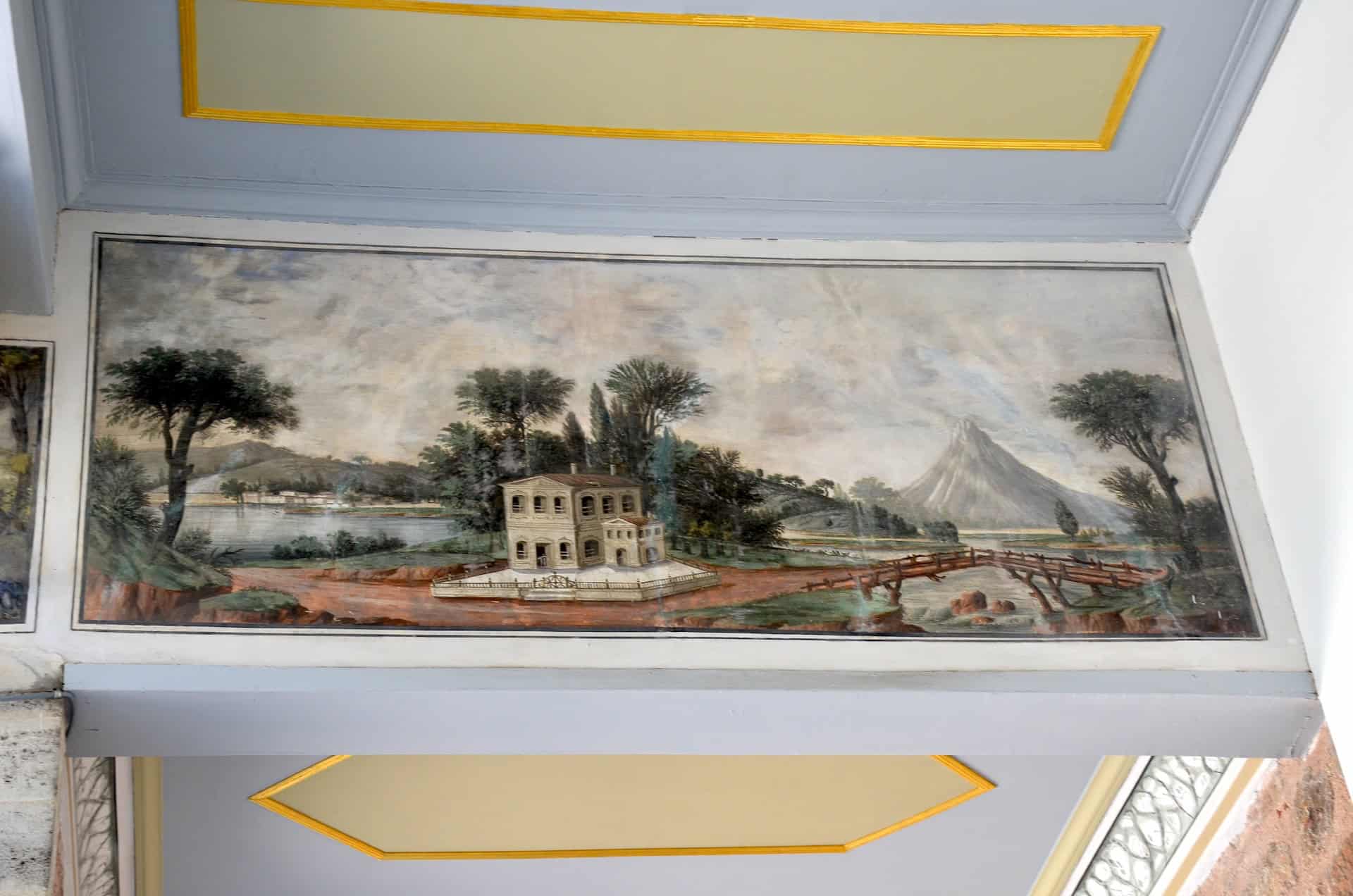
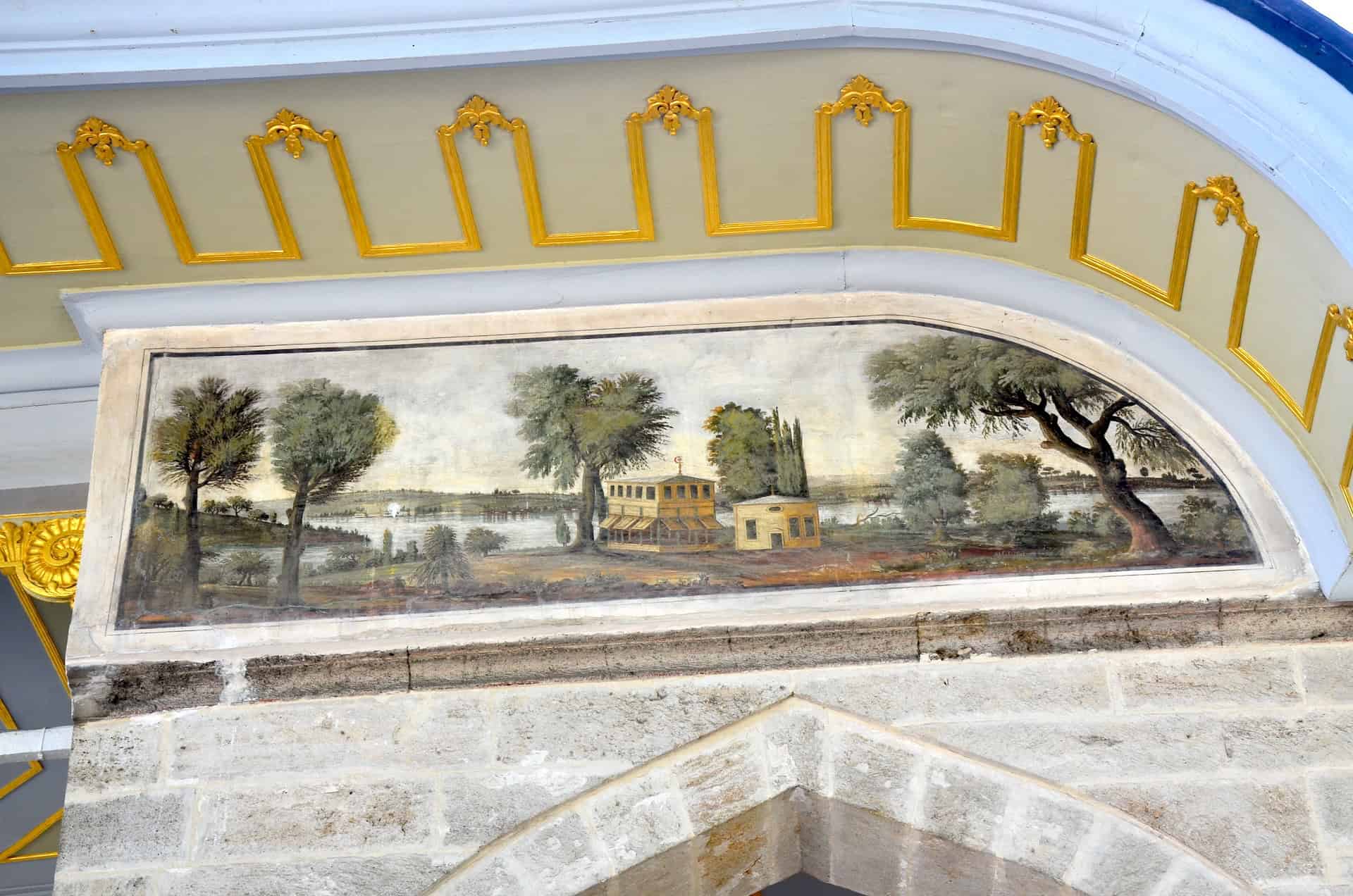

The inside of the Gate of Felicity directly opens to the Audience Chamber. It’s decorated with tughras on either side and religious inscriptions above.
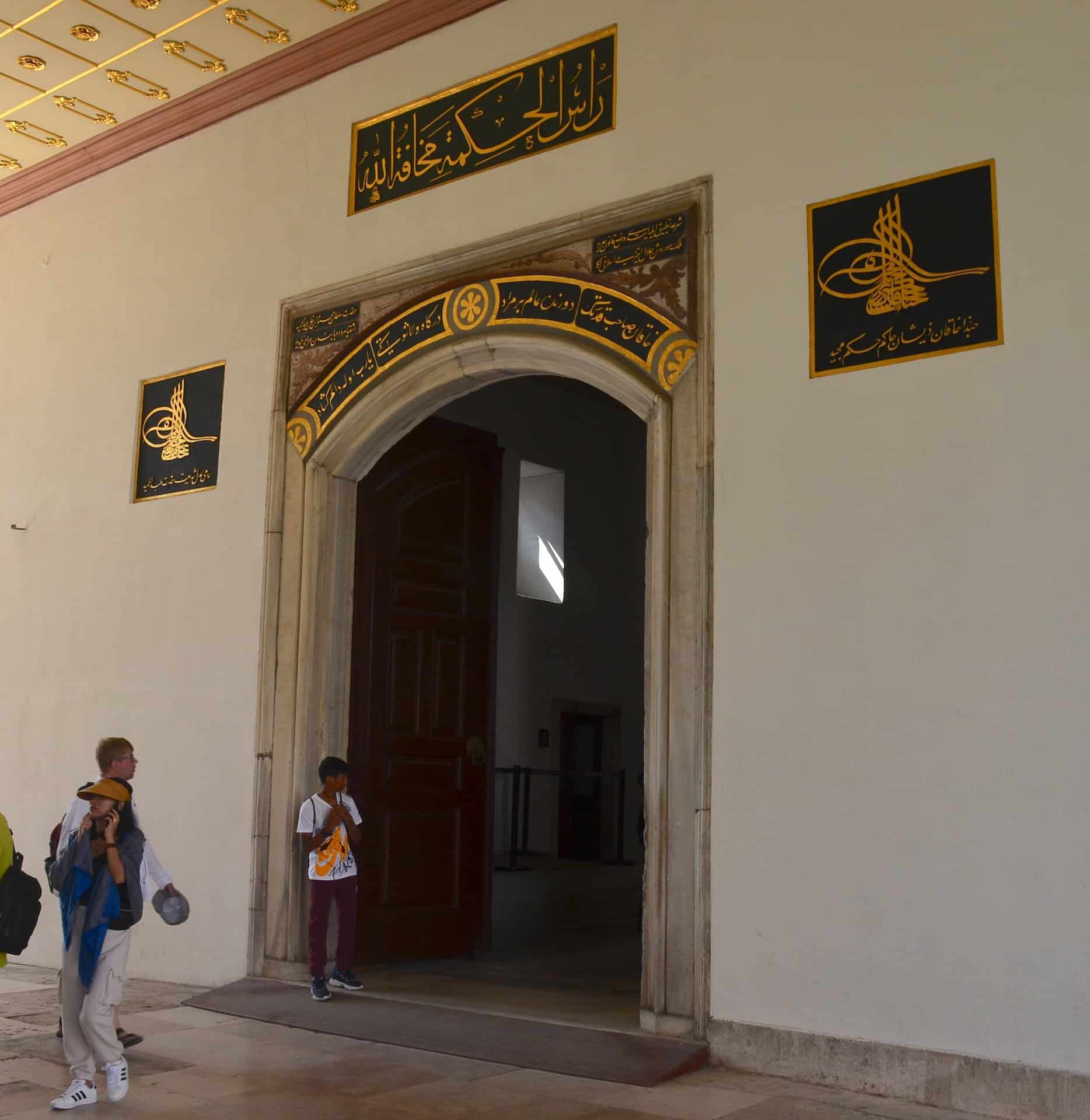
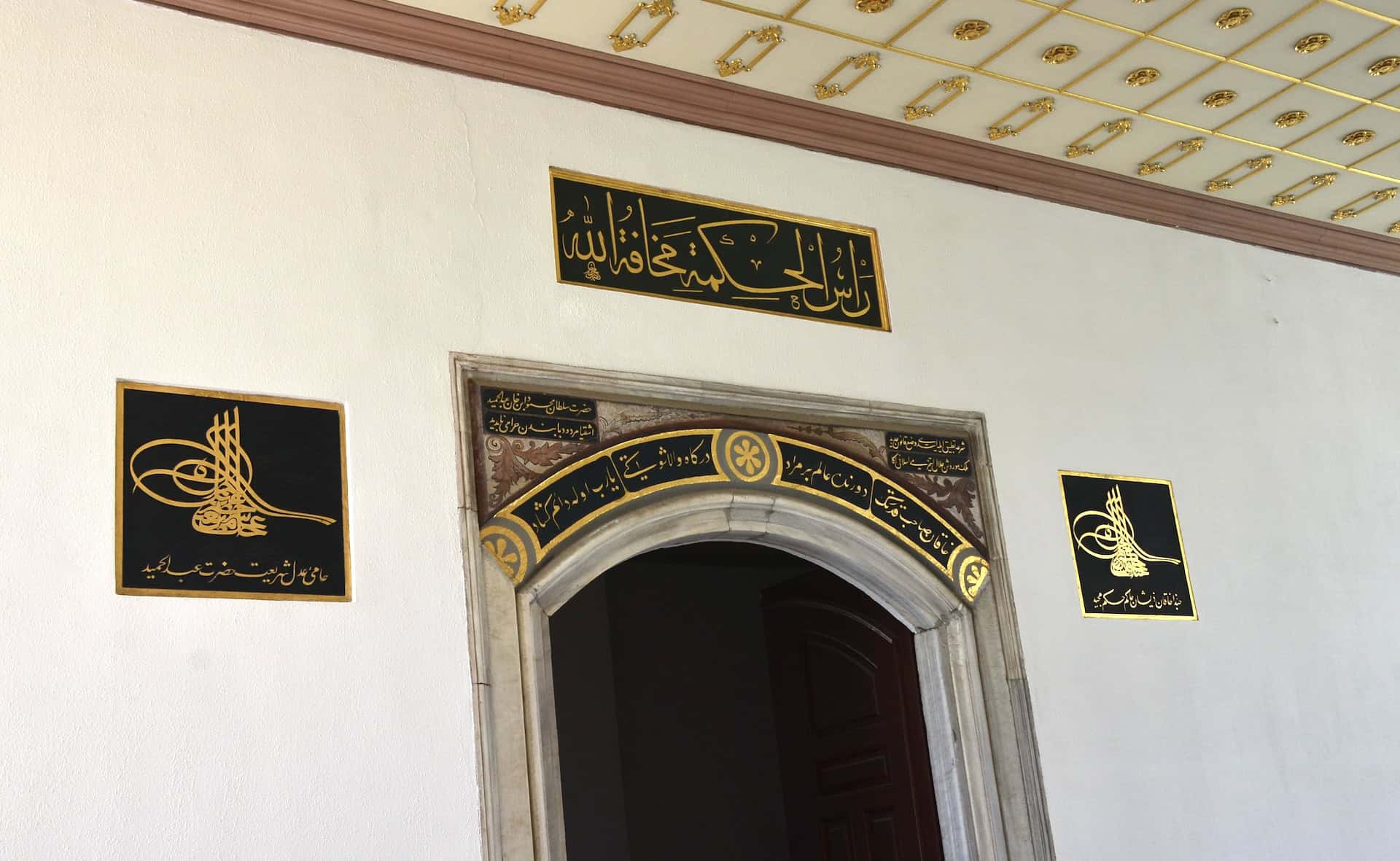
White Eunuchs
The Gate of Felicity was under the control of the Chief Eunuch of the Sultan’s Harem (Bâbü’s-saâde Ağası) and his staff. The eunuchs kept the gate closed at all times. Trying to enter without proper authorization was seen as a direct challenge to the Sultan’s power and was treated as the most serious crime. The quarters of the Chief Eunuch and the White Eunuchs (Akağalar) were on either side of the gate.
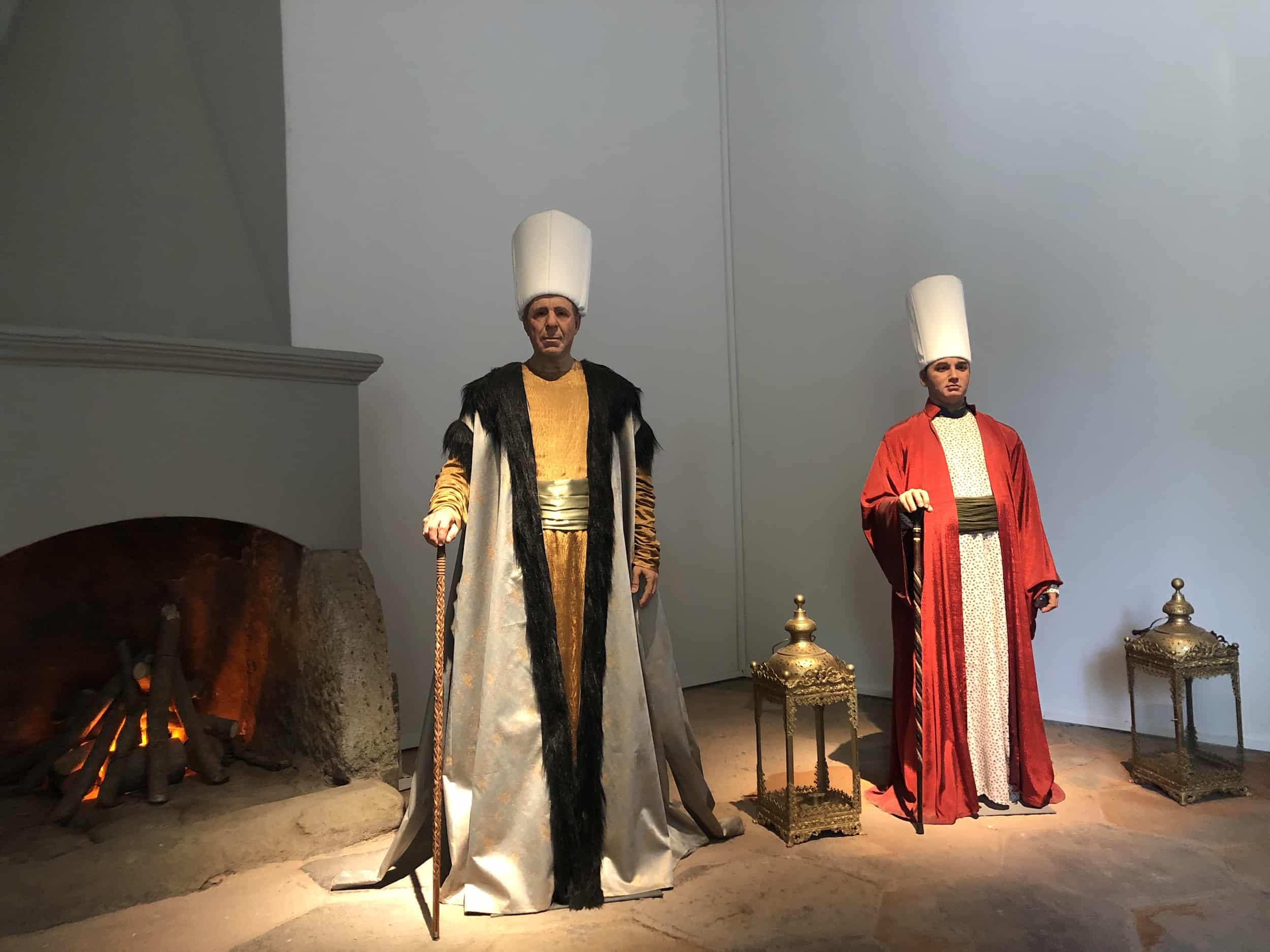

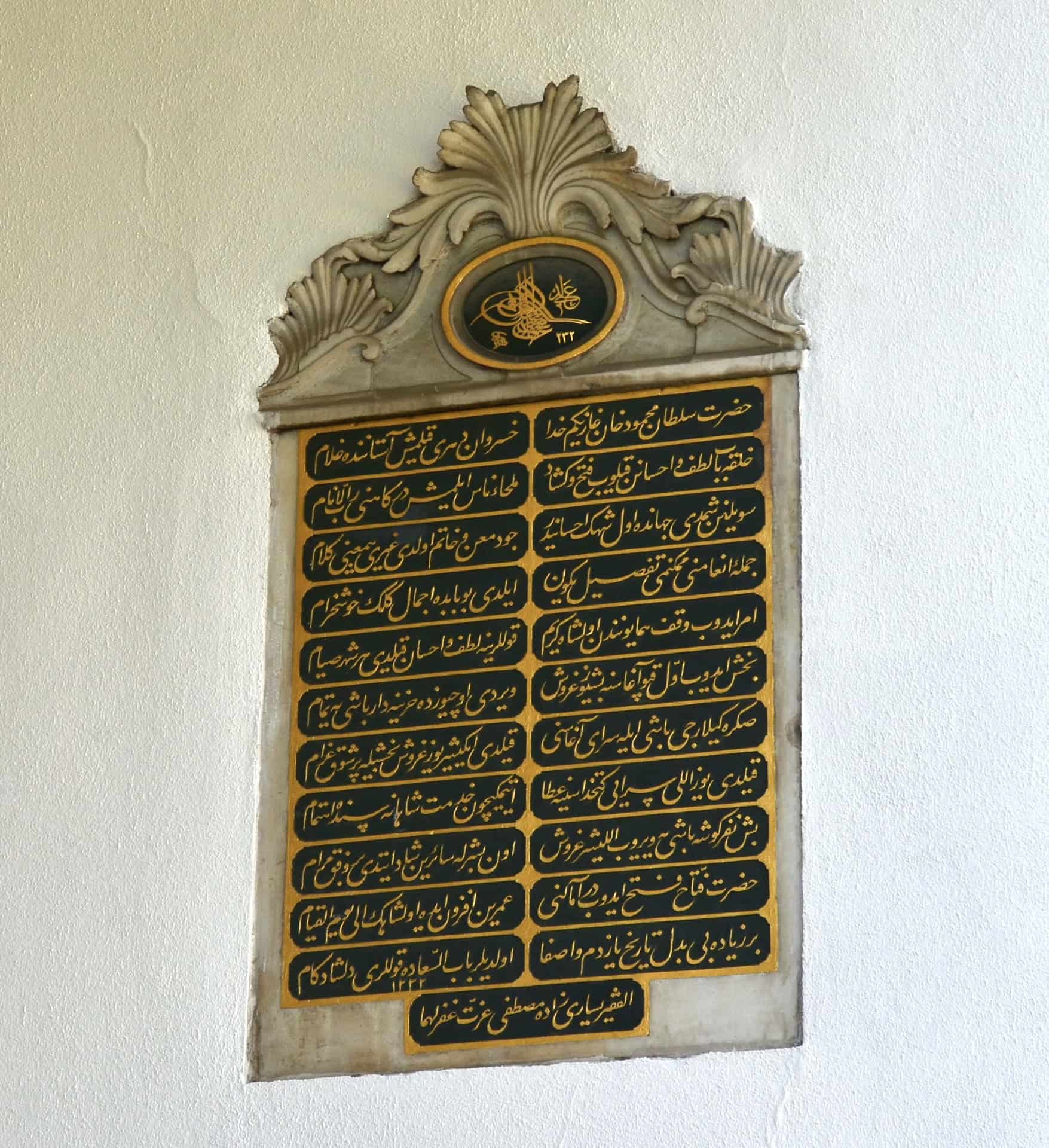
Audience Chamber
The Gate of Felicity opens directly to the Audience Chamber (Arz Odası). In this building, the Sultan would receive foreign ambassadors as well as have private meetings with members of the Imperial Council and other state officials. Often, a Grand Vizier or state official would enter the Audience Chamber without knowing if he would come out alive.
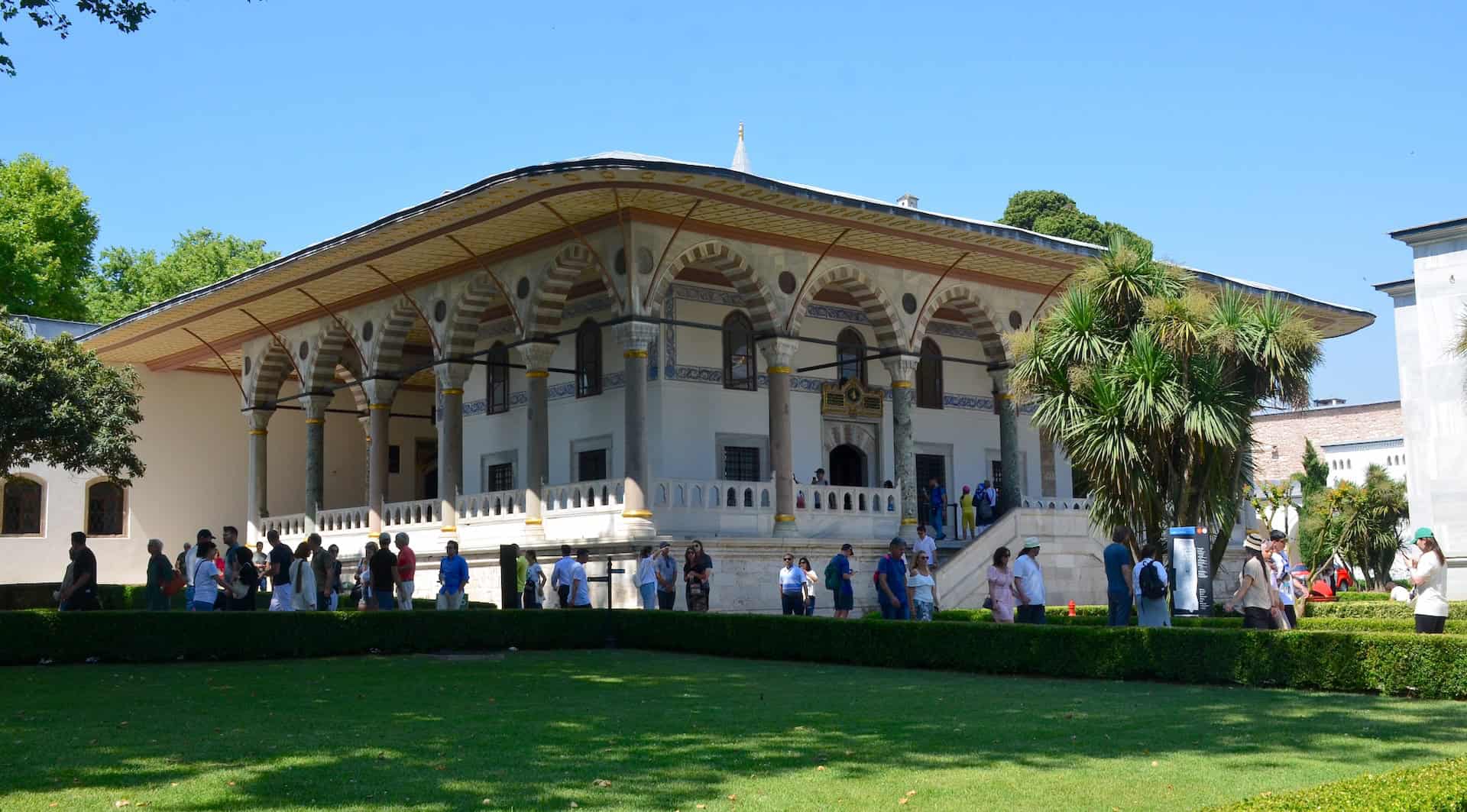
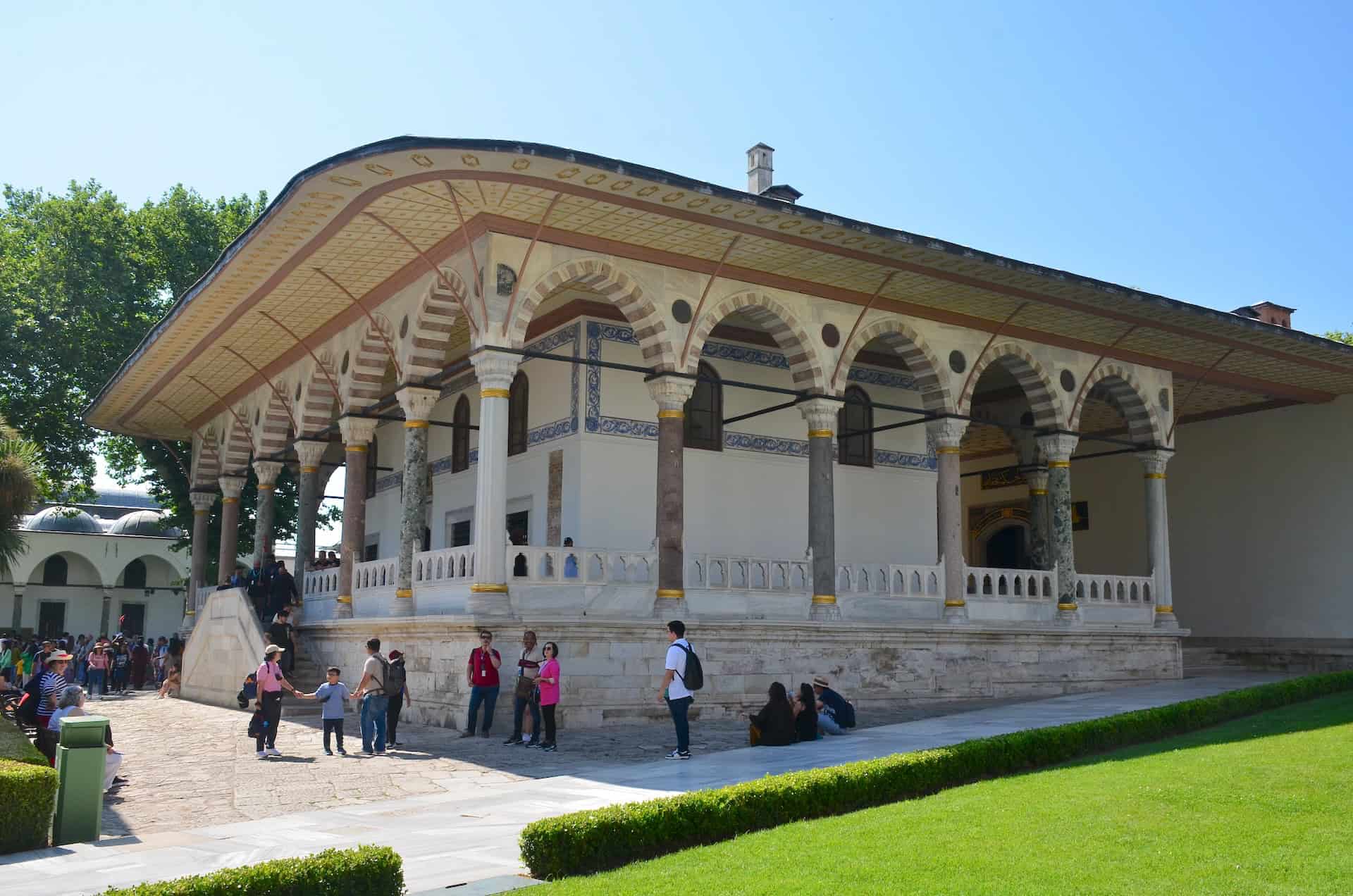
The Audience Chamber dates back to the reign of Mehmed the Conqueror. When it was completely renovated by Süleyman the Magnificent, he placed a small fountain by the entrance that was used not only for drinking water but also to prevent eavesdroppers from listening in on important conversations.
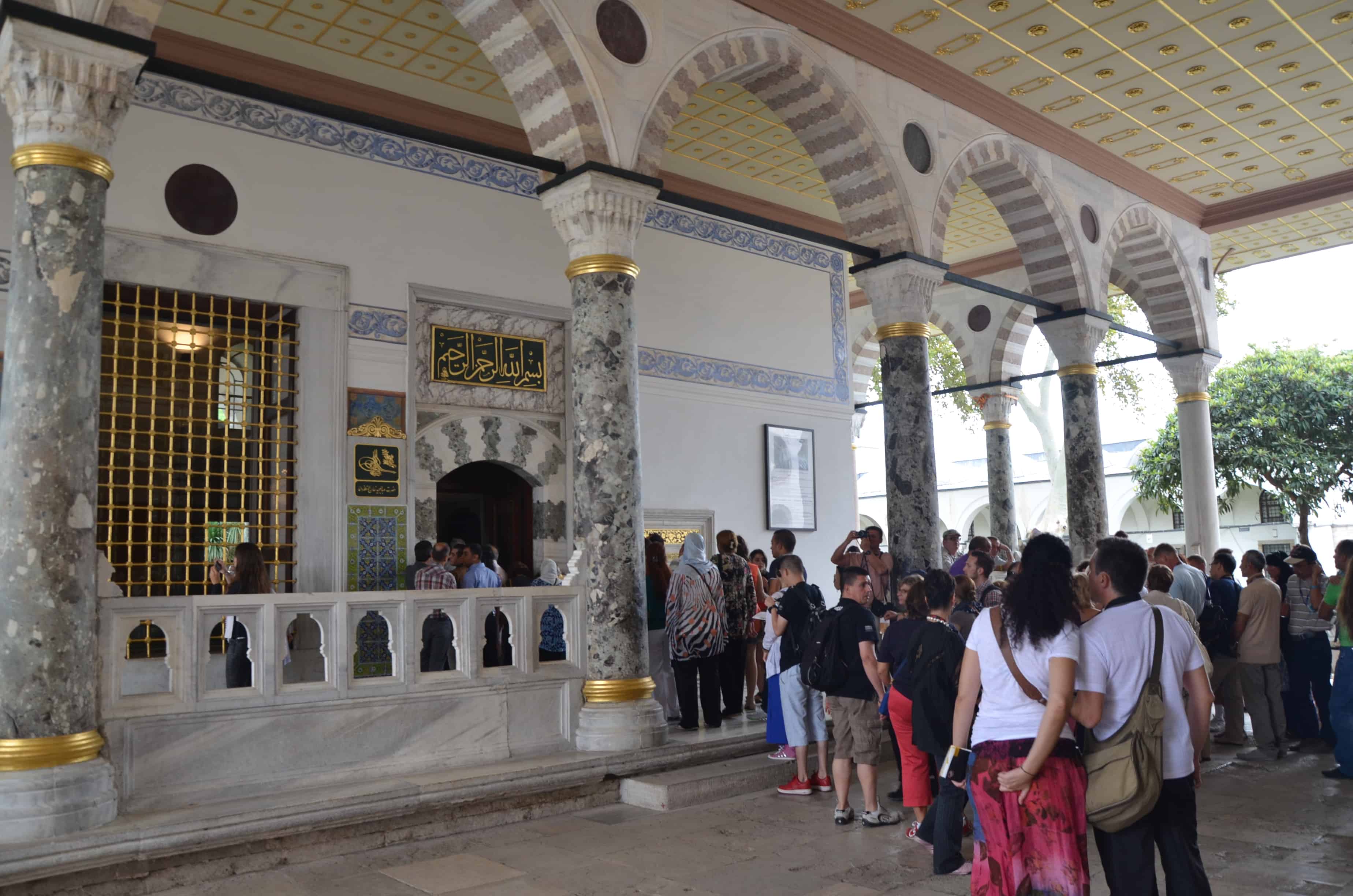
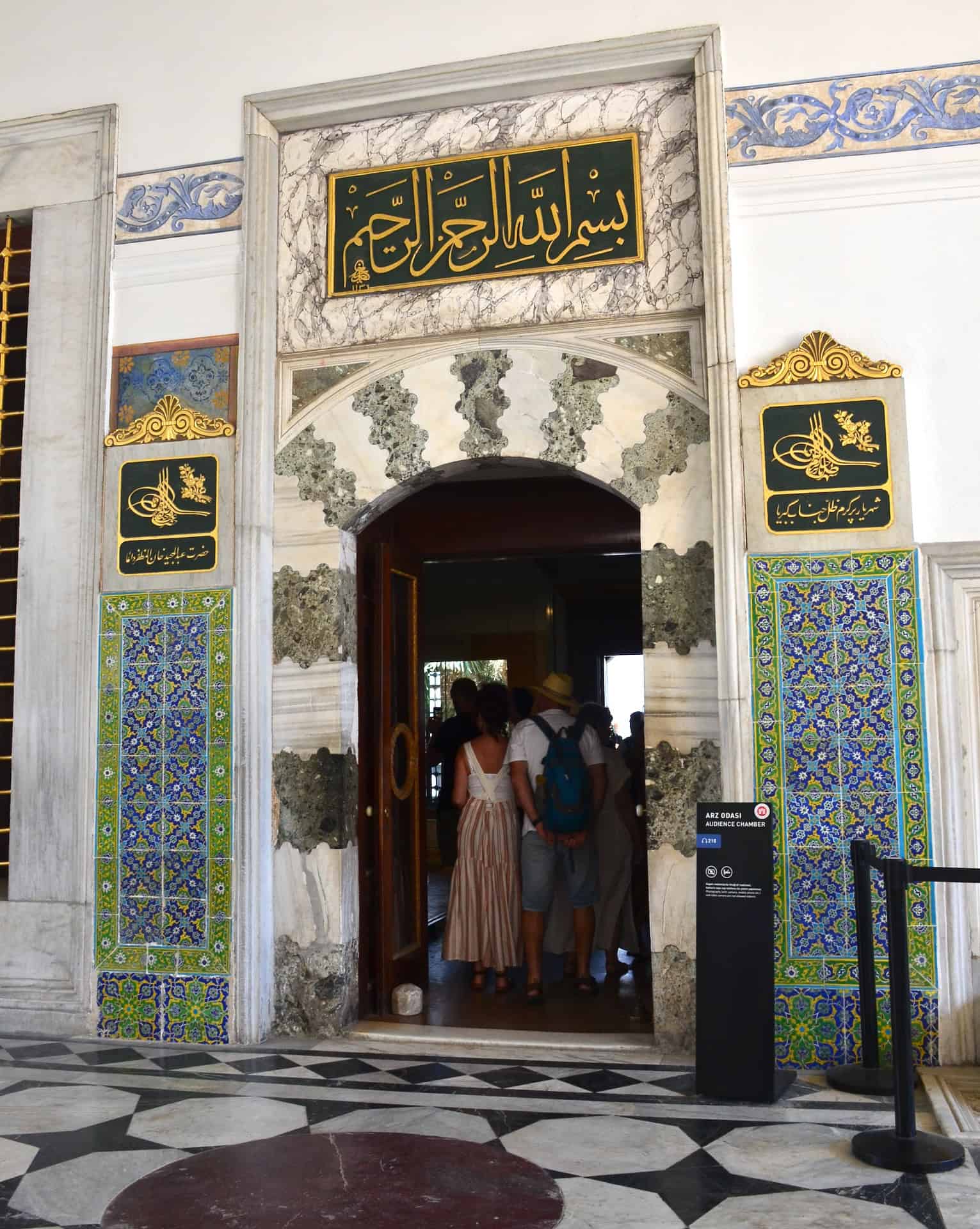
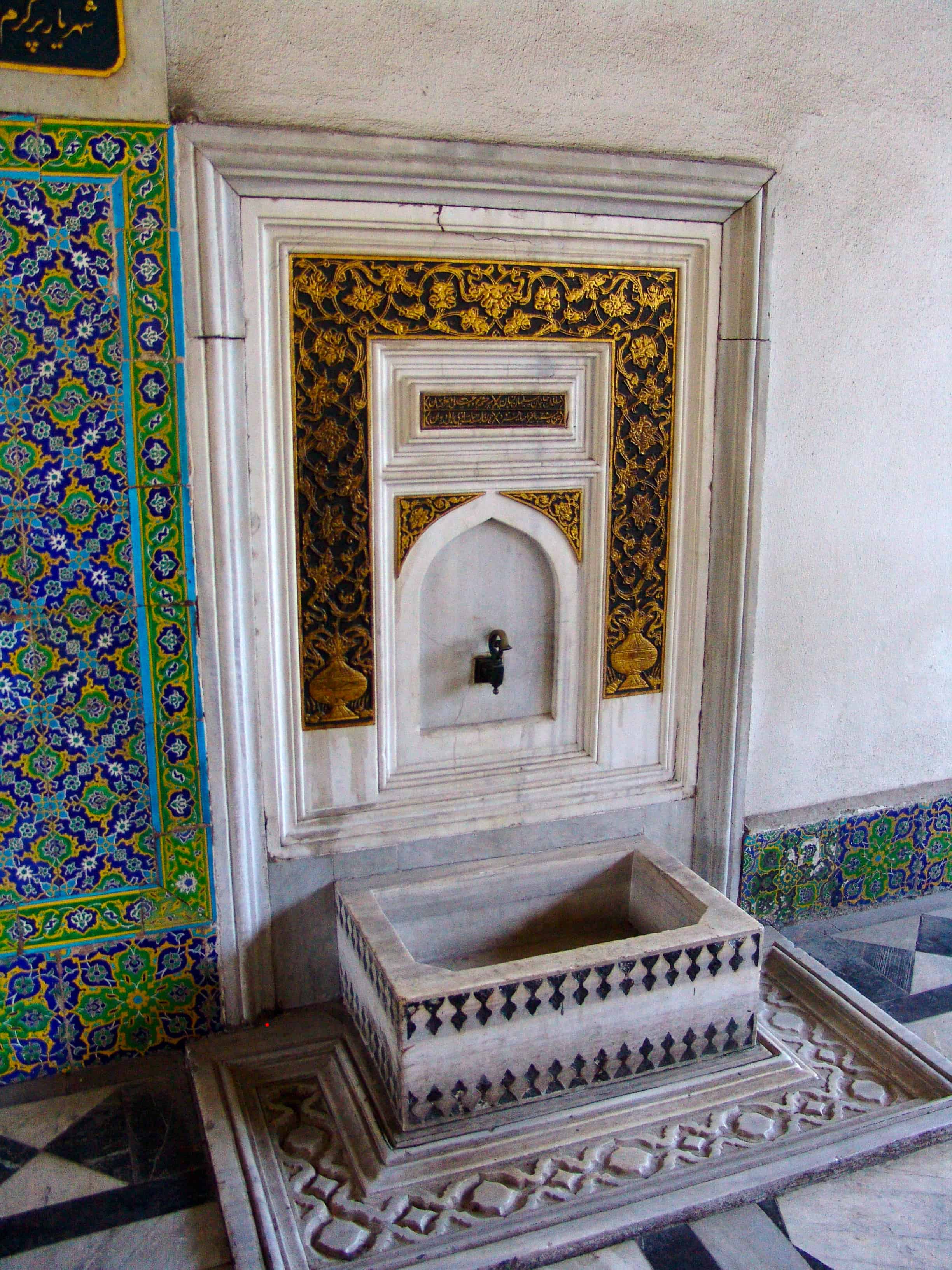
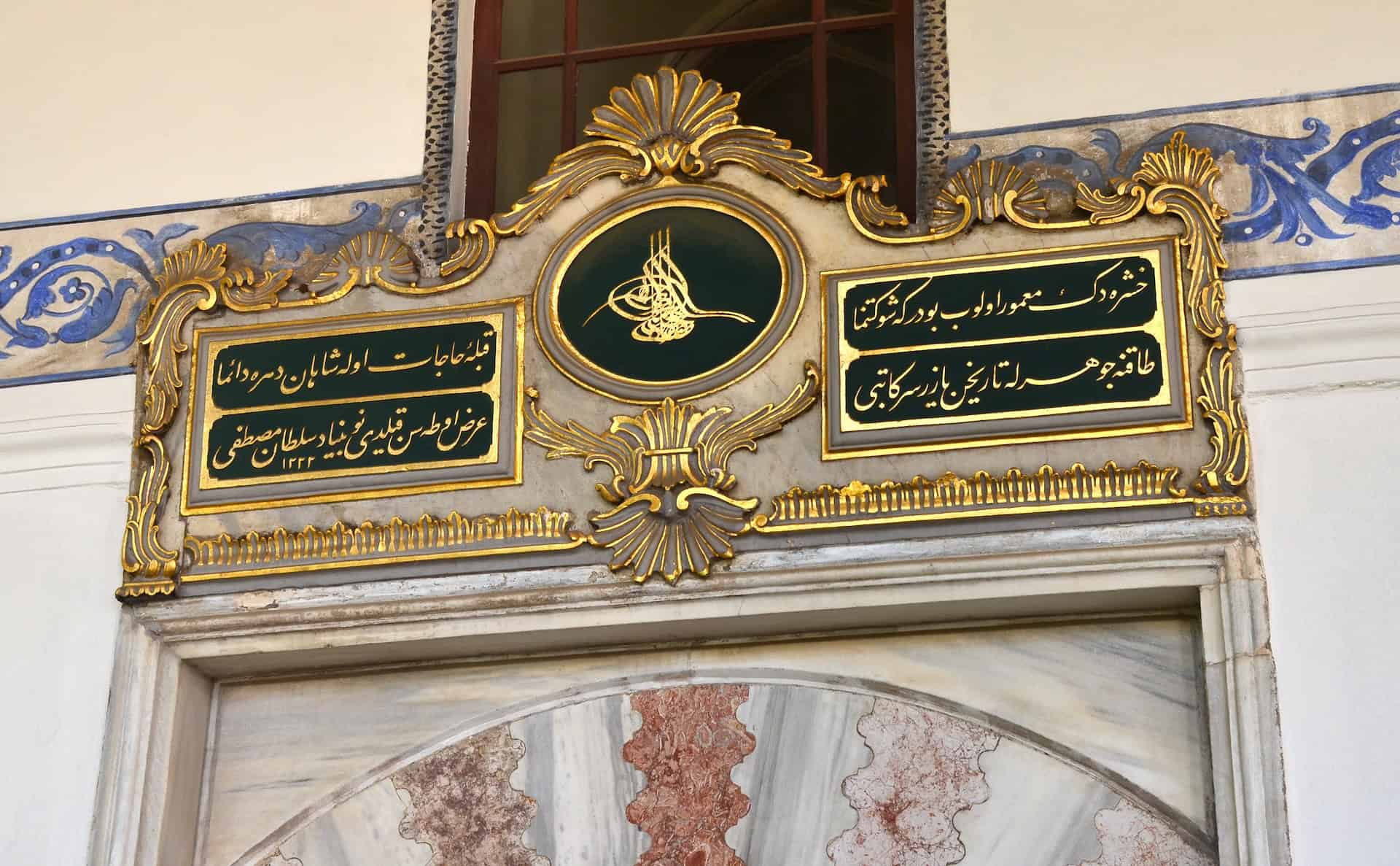
Inside is the throne that the Sultan would sit on while meeting with his guests. The Audience Chamber was once filled with tiles, fine carpets, pillows, and other ornate decorations, but they were destroyed by a terrible fire in 1856. Only the throne was saved almost completely intact.
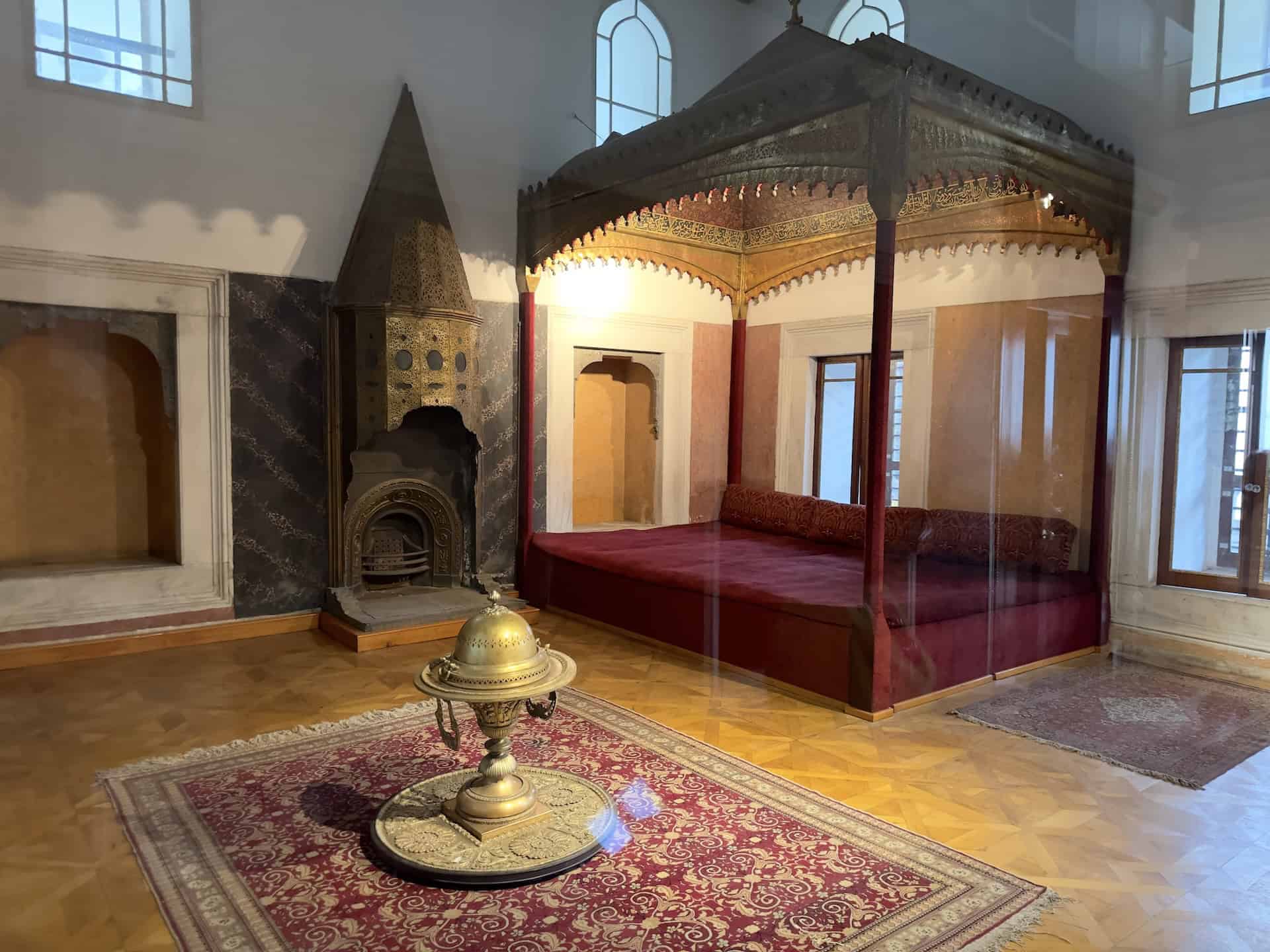
Enderûn Library
Behind the Audience Chamber and directly in the center of the courtyard is the Enderûn Library (Enderûn Kütüphanesi). It was built by Sultan Ahmed III, who personally attended the groundbreaking ceremony on February 17, 1719, and the library opened on November 23.
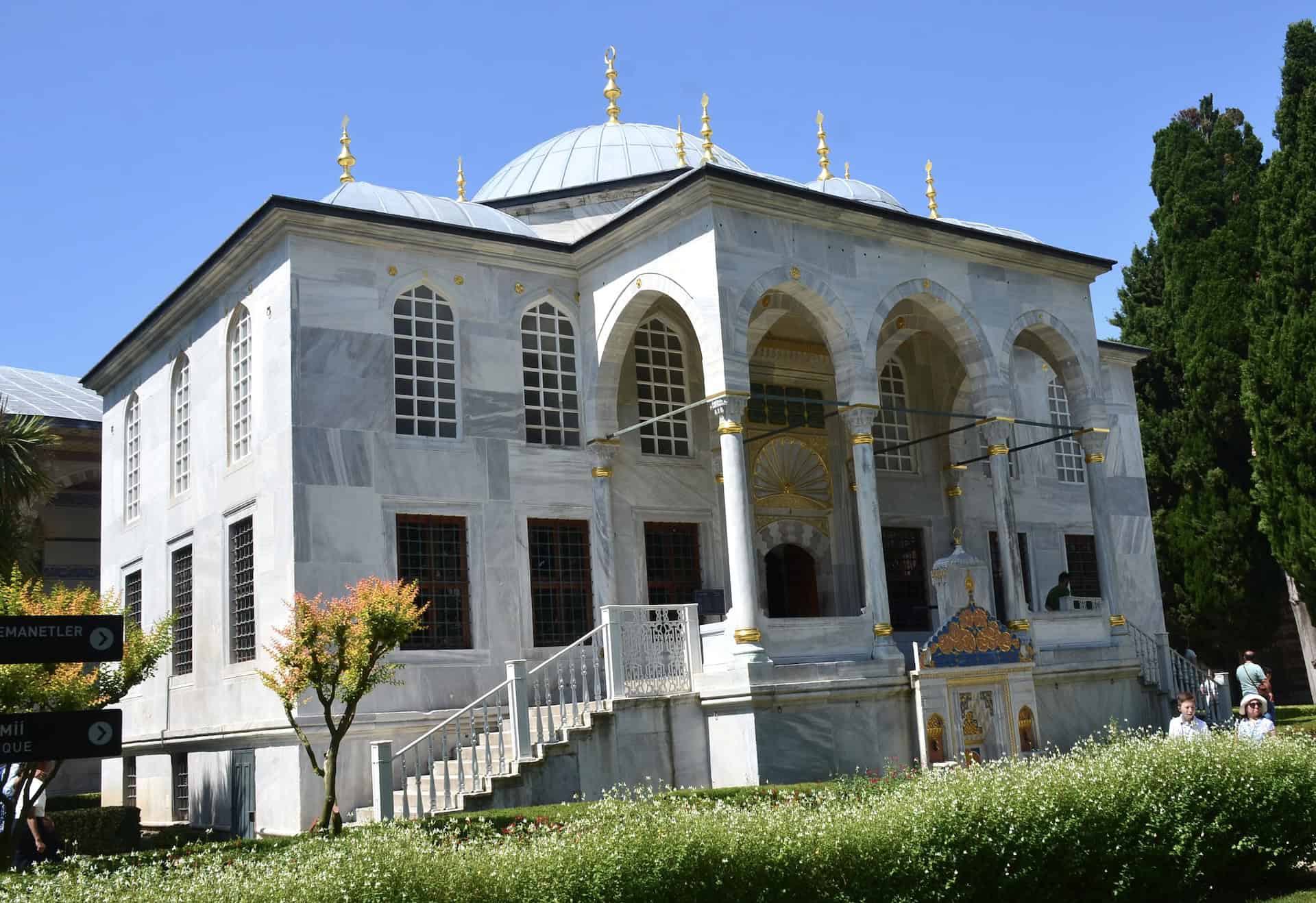
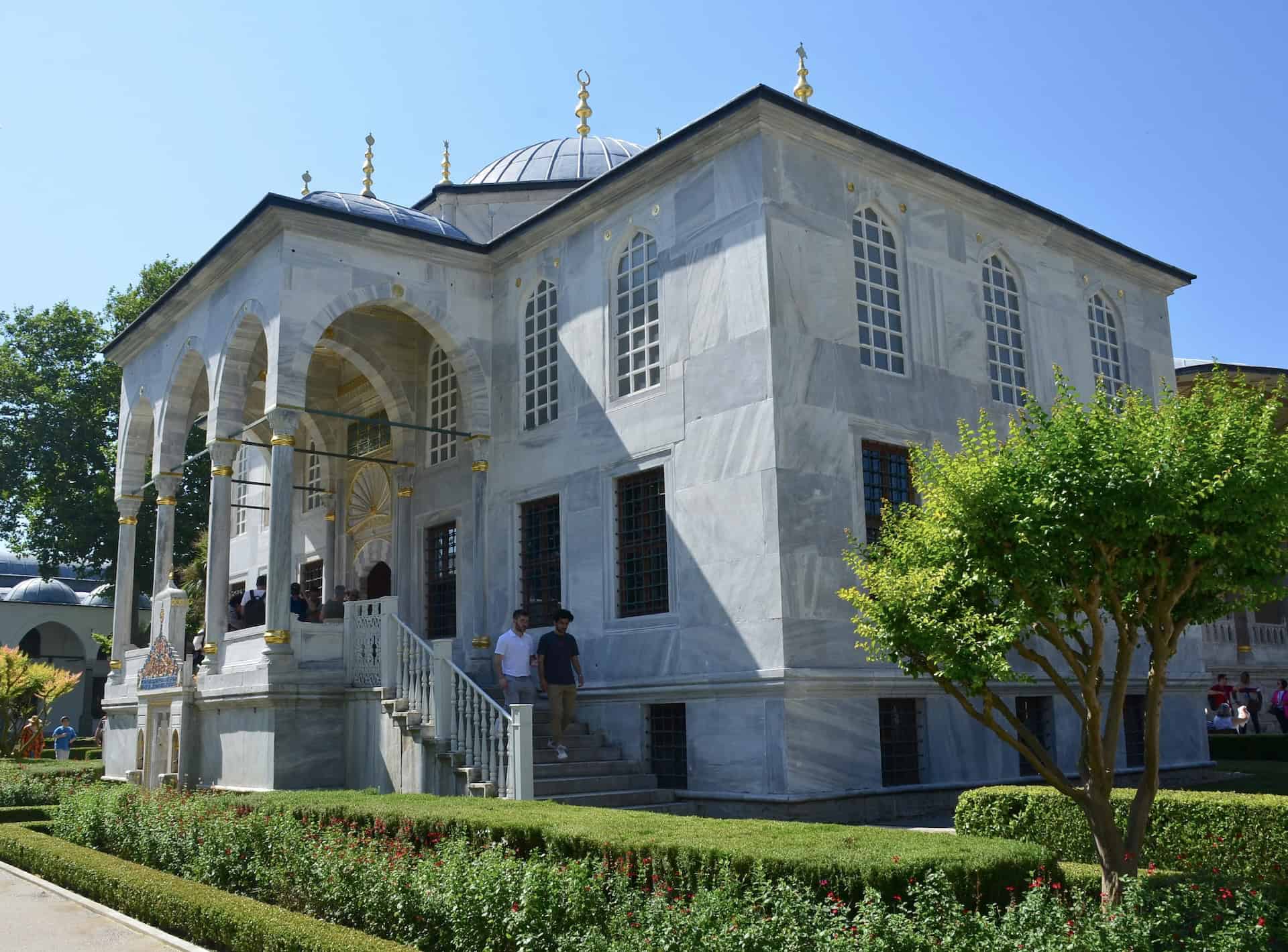
The Enderûn Library was the first free-standing library on the palace grounds and sits on the site of the Pool Pavilion built by Sultan Selim II. The endowment deed states “the days the library could be used, the qualifications sought in library staff, and that it is forbidden to remove books from the building”.
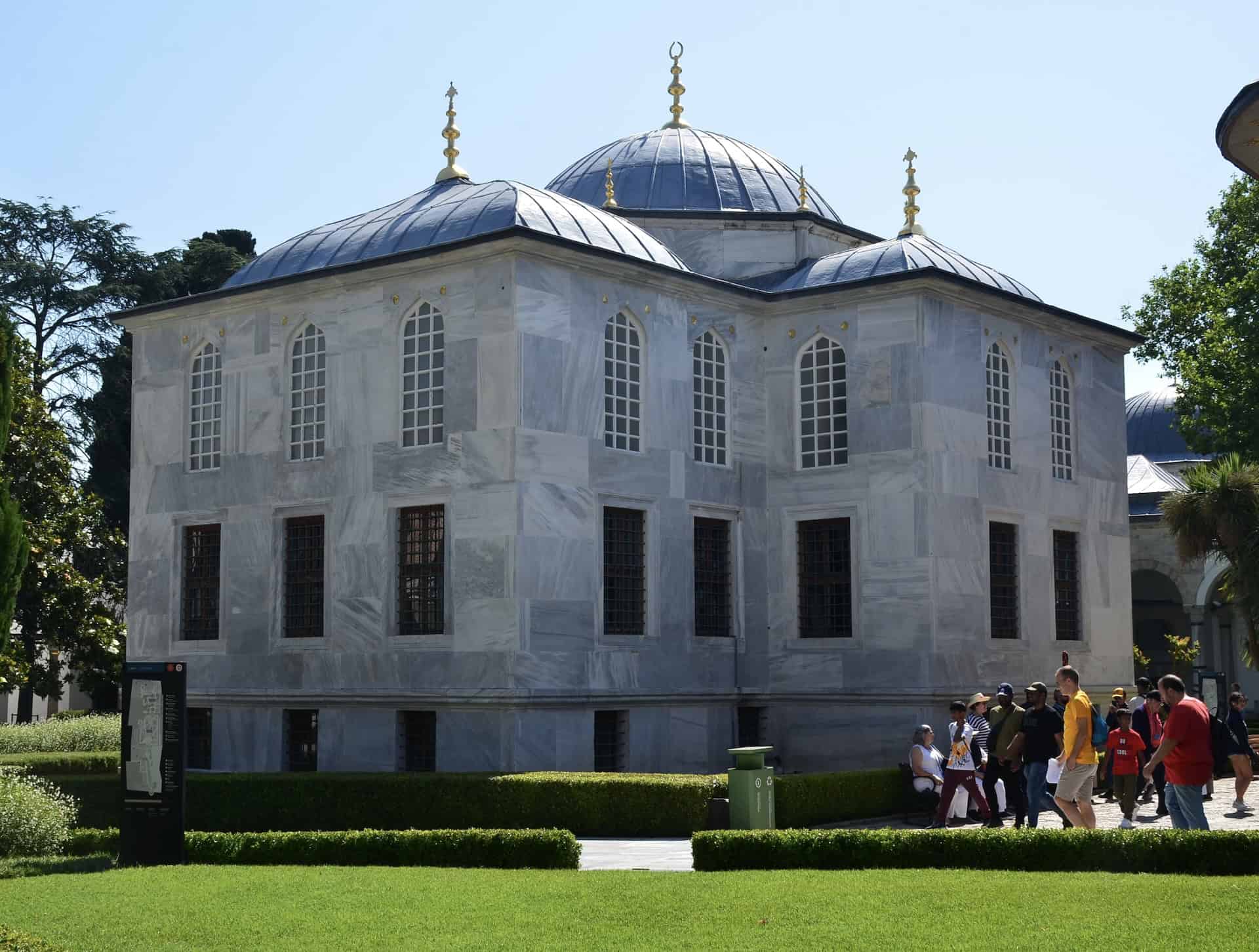
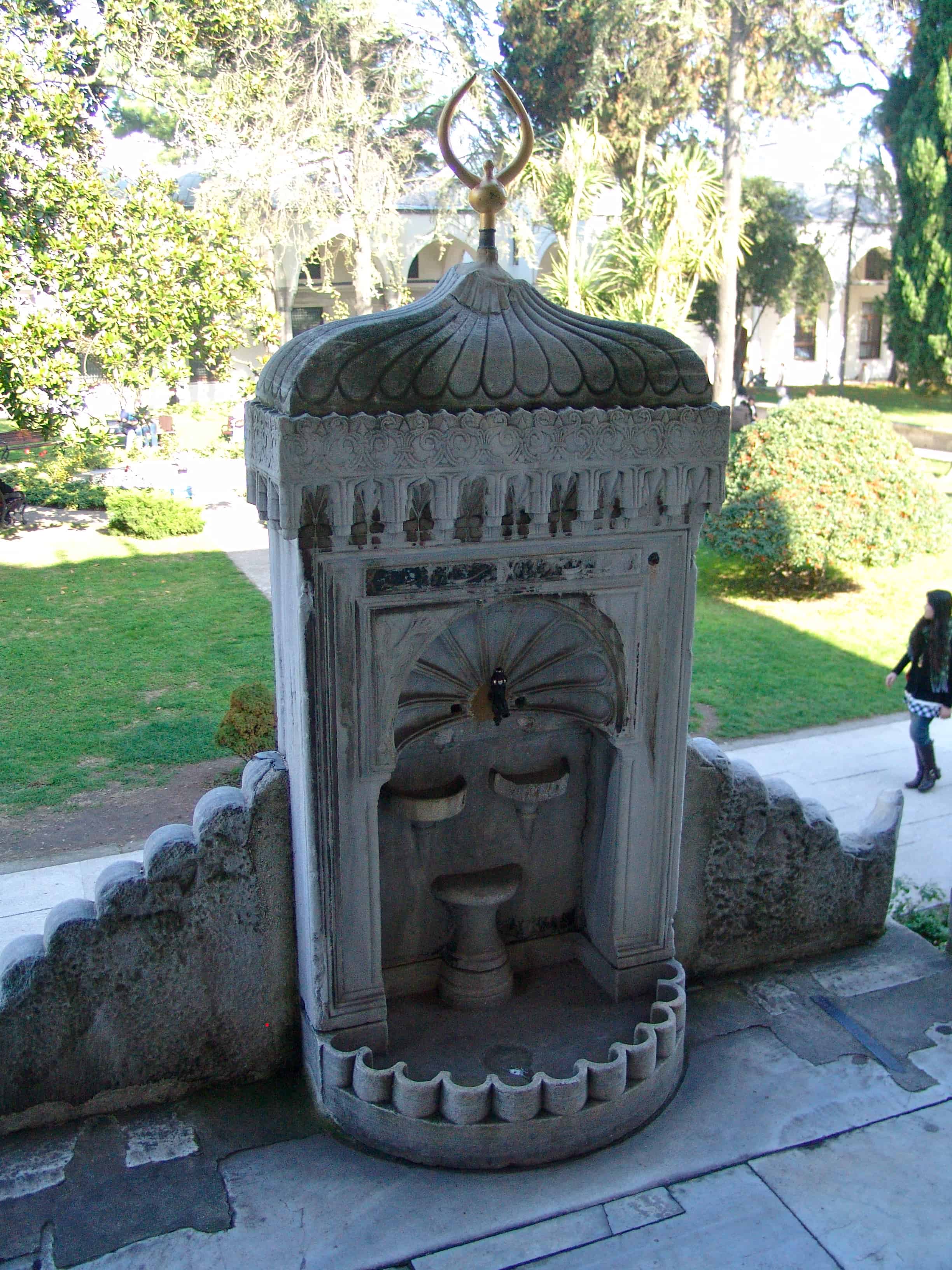
The collection included major works of Islamic theology, literature, history, and sciences. Manuscripts and books written in European languages, which had been collected since the reign of Mehmed the Conqueror, were also kept there. The personal libraries of Sultans Abdülhamid I and Selim III were later aded. In 1966, the books were moved to the library set up in the Mosque of the Ağas for better preservation.
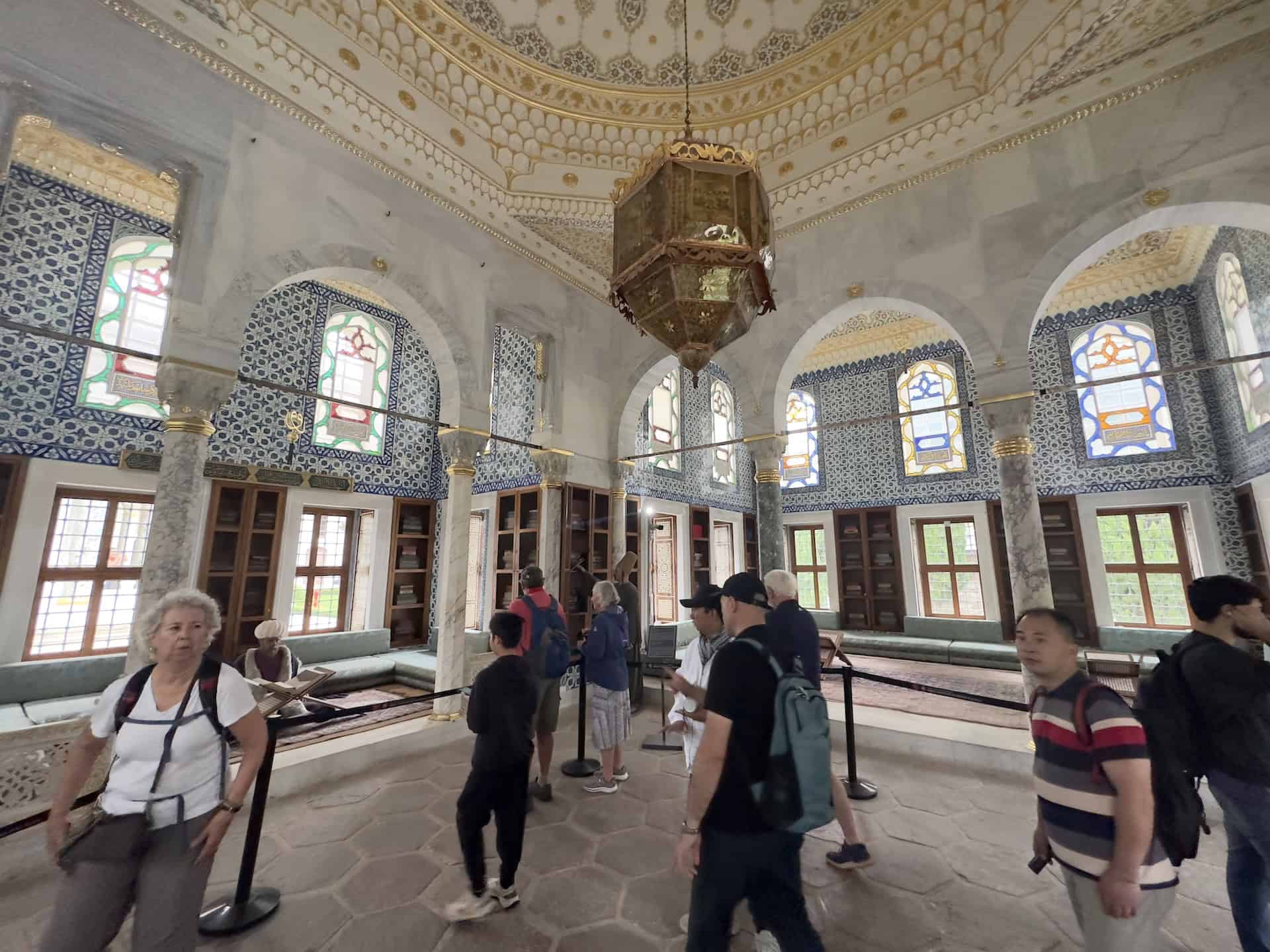
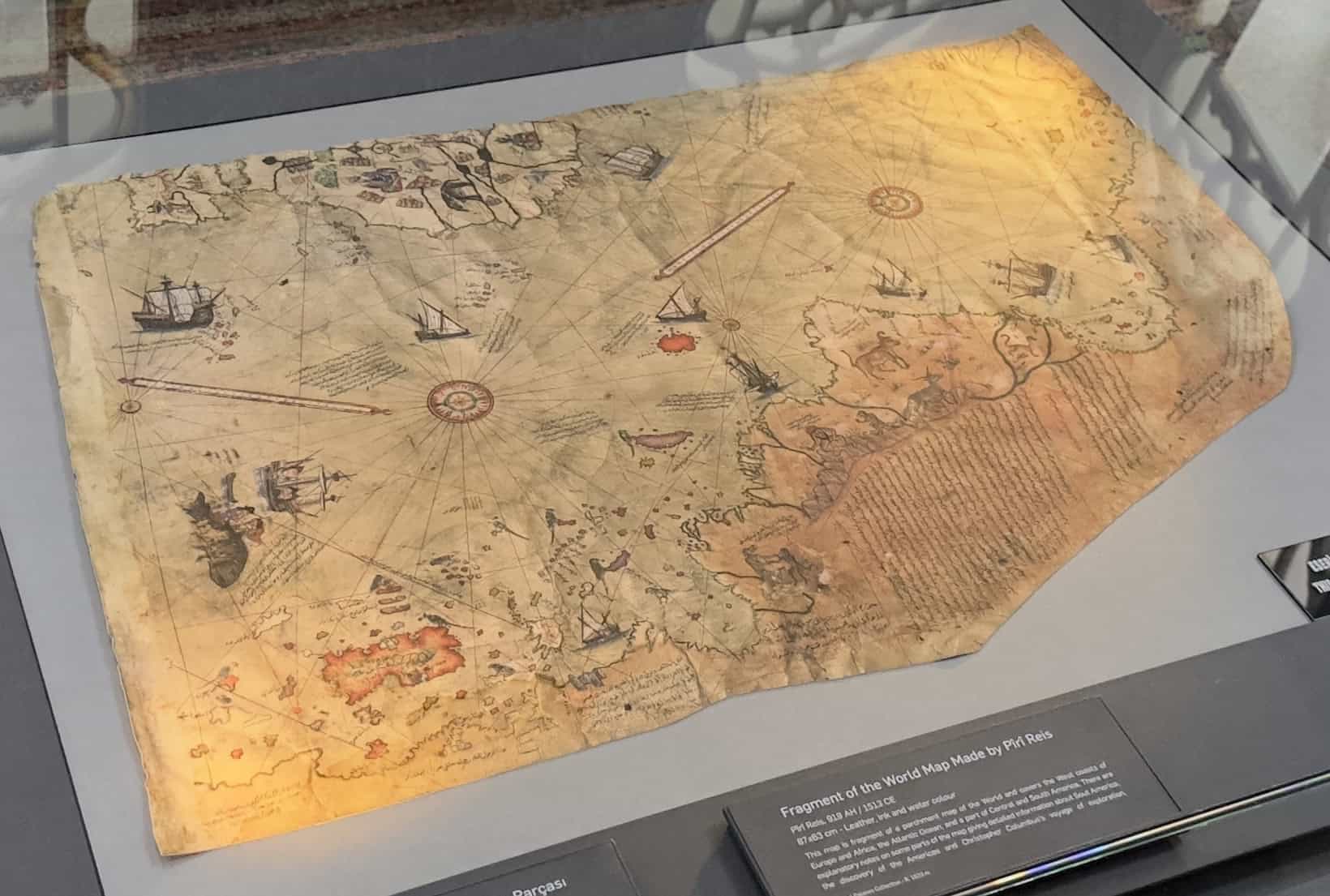
The Enderûn Library features arched alcoves surrounding a central domed space on three sides. It was built over a vaulted basement with windows to prevent the books from being damaged by humidity. The interior walls are decorated with 16th century Iznik tiles taken from other royal pavilions and a waterfront mansion in Emirgan.
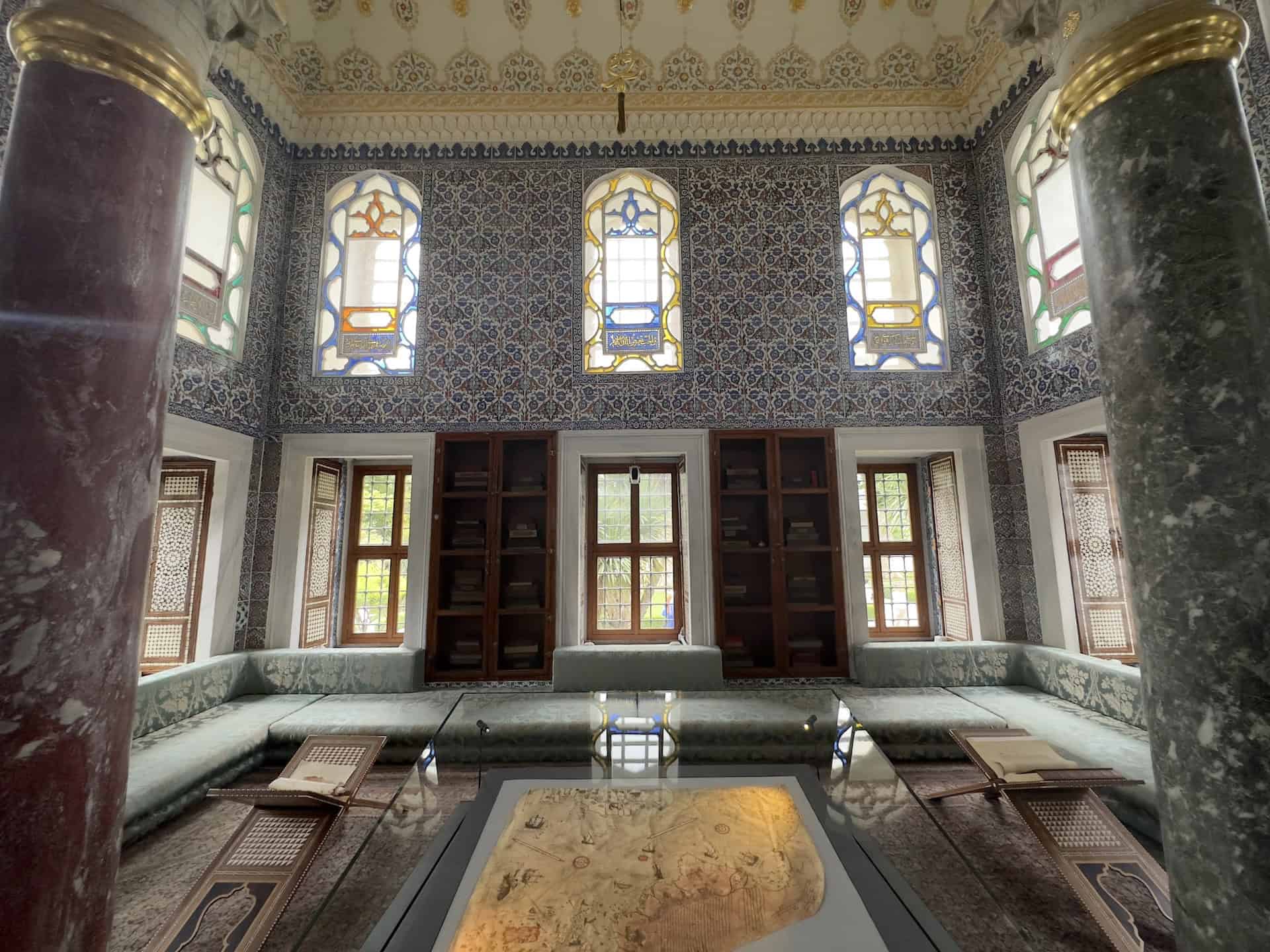

The window and door jambs are faced with 17th century tiles while the shutters contain geometric designs in ivory inlay. The cupboards are inscribed with subject headings and faced with lattices of silver wire. There are also gilded calligraphic inscriptions.
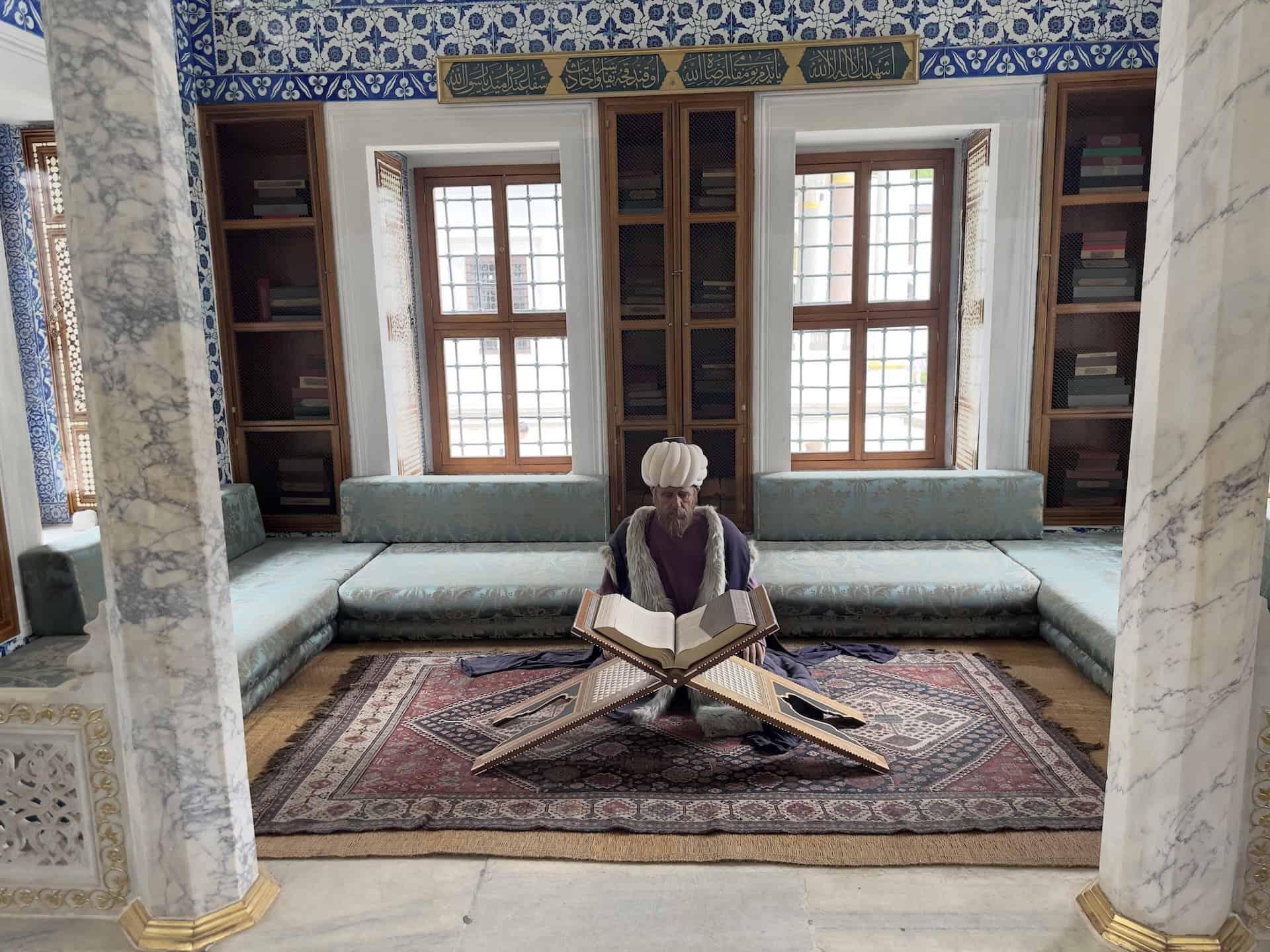
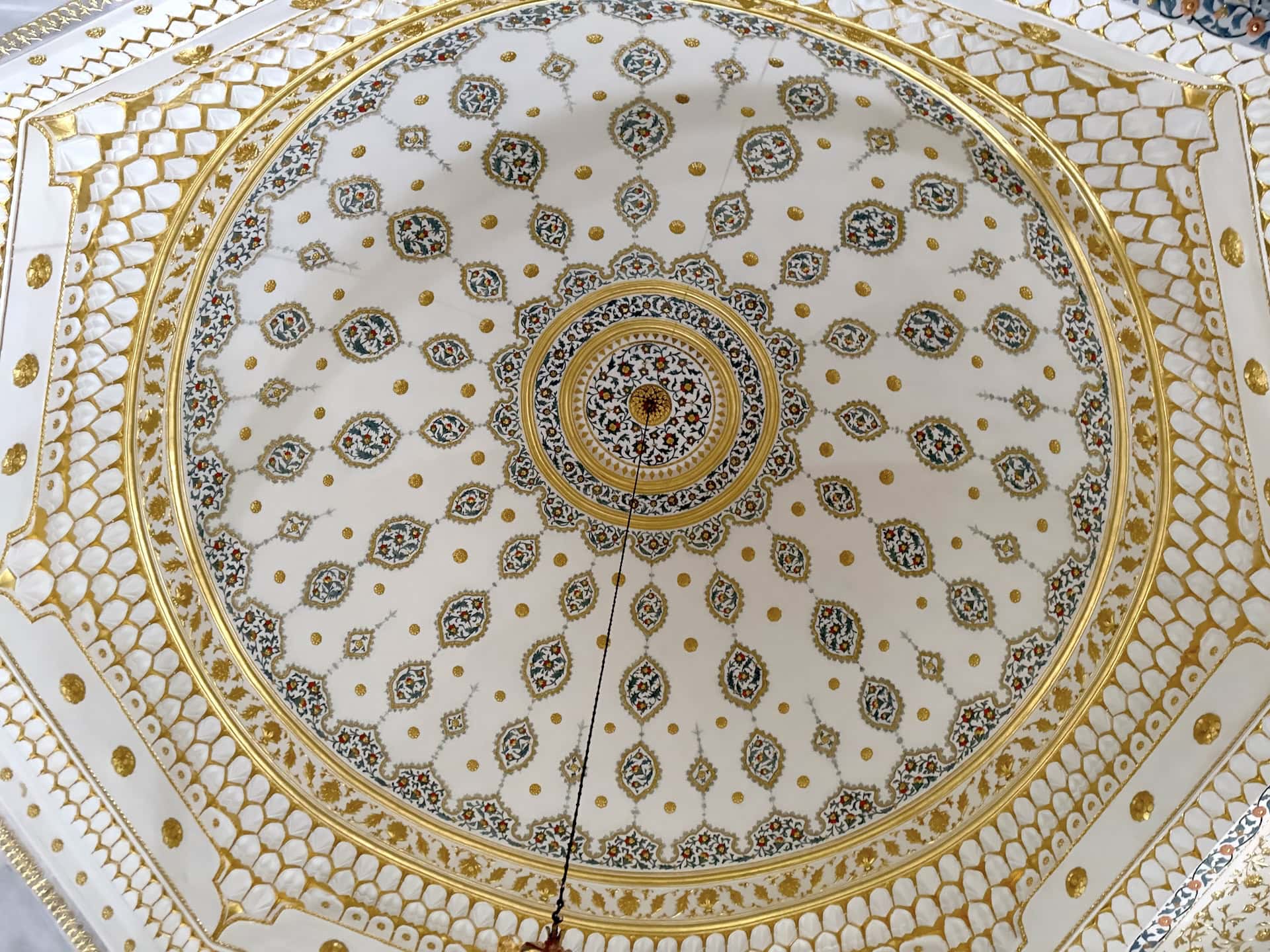
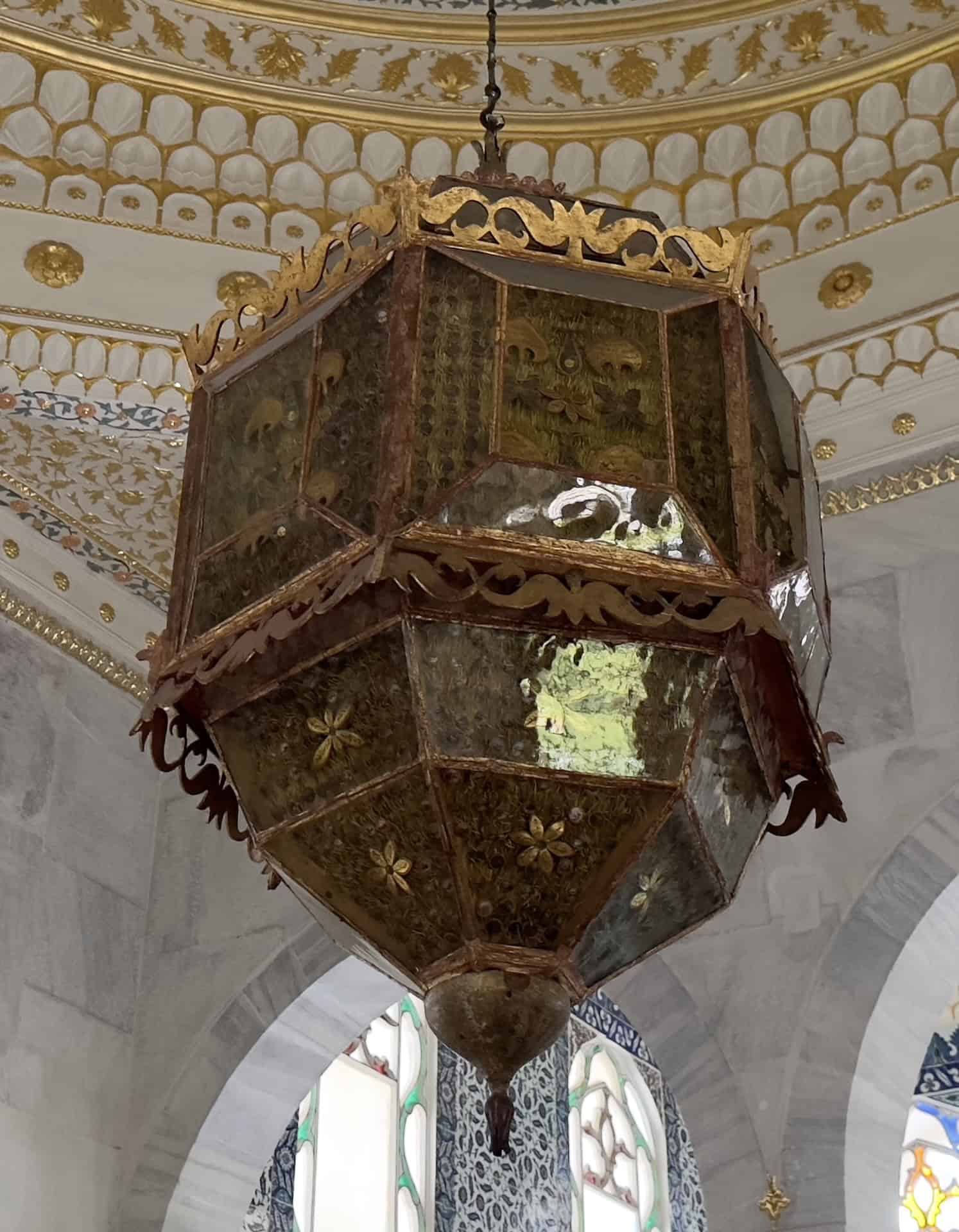
Dormitory of the Small and Large Chambers
The Dormitory of the Large Chamber (Büyük Oda Koğuşu) and Dormitory of the Small Chamber (Küçük Oda Koğuşu) sit on either side of the Gate of Felicity. The Dormitory of the Large Chamber is on the left and the Dormitory of the Small Chamber is on the right. They were used for the education of the brightest and most talented boys of the devşirme system. The devşirme was a system in which Christian boys were taken from their parents as a tax. The boys were forced to convert to Islam, learn Turkish, and serve the empire as loyal subjects.
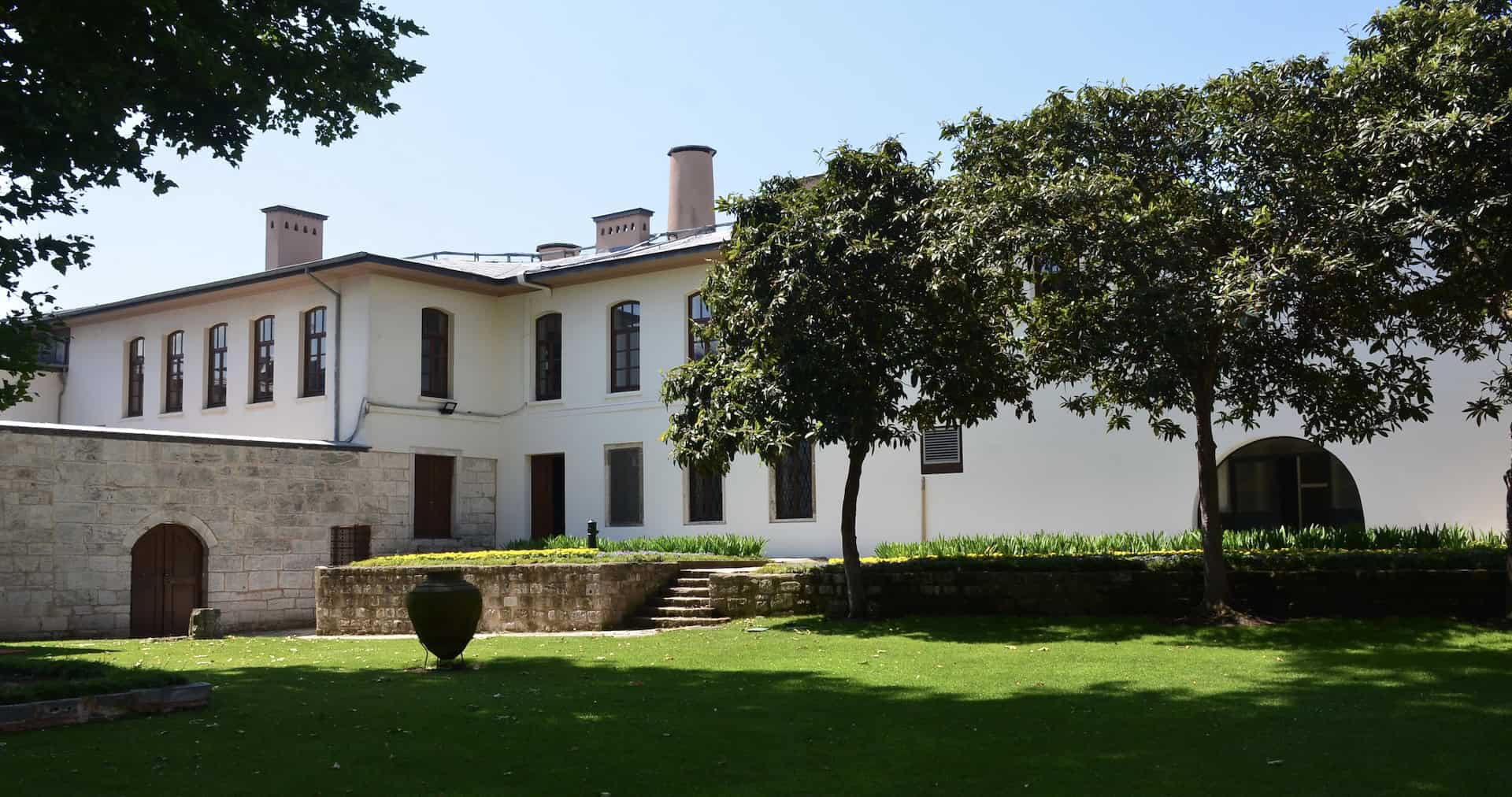
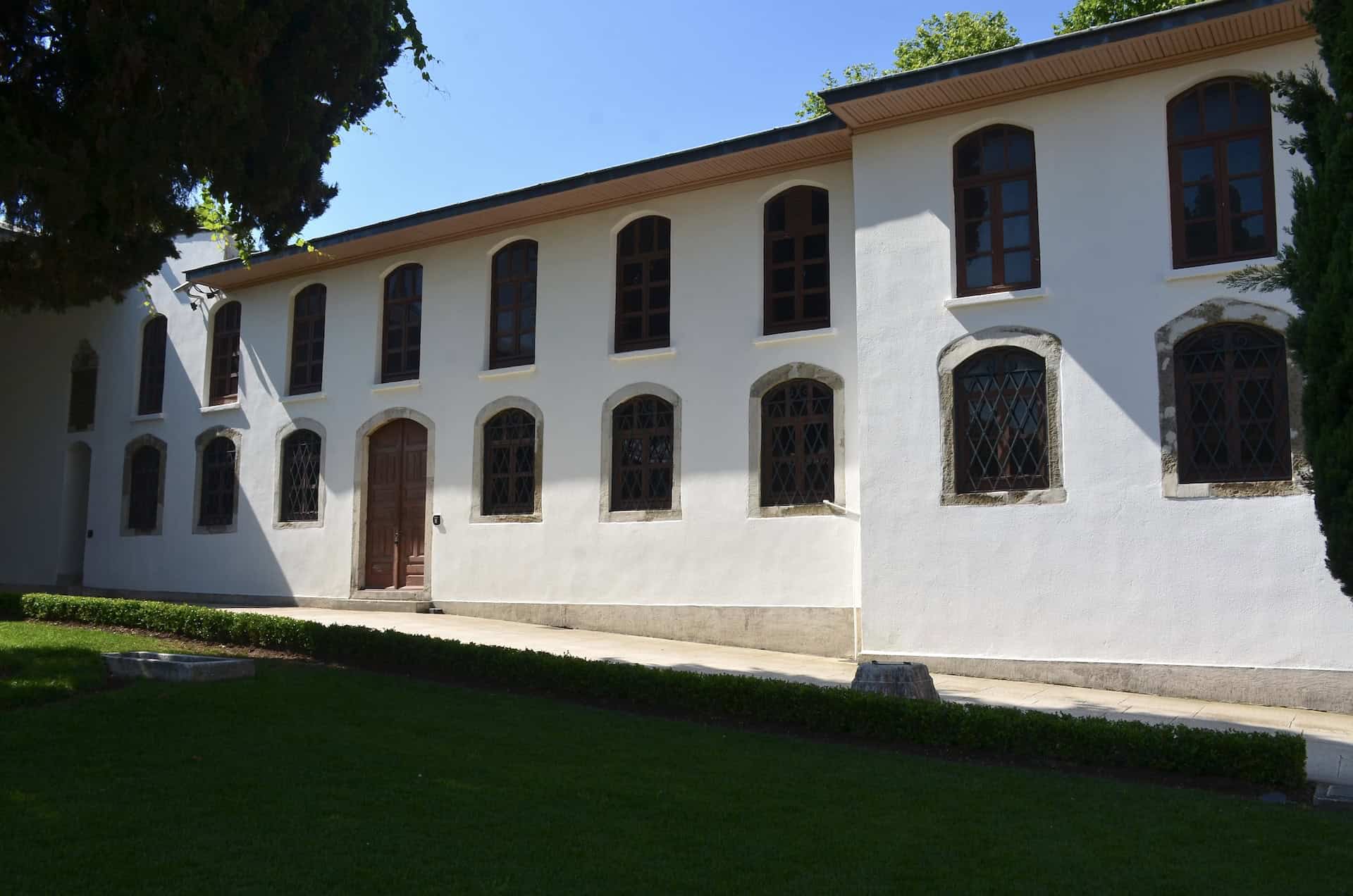
Mosque of the Ağas
The Mosque of the Ağas of the Inner Palace (Enderûn Ağalar Câmii), on the west side of the 3rd Courtyard, was the largest mosque in the Topkapi Palace complex. It was built in the 15th century under Mehmed the Conqueror and was used by the palace squires and pages as well as the sultans and their mothers. The mosque is the first building visitors see after exiting the Harem.
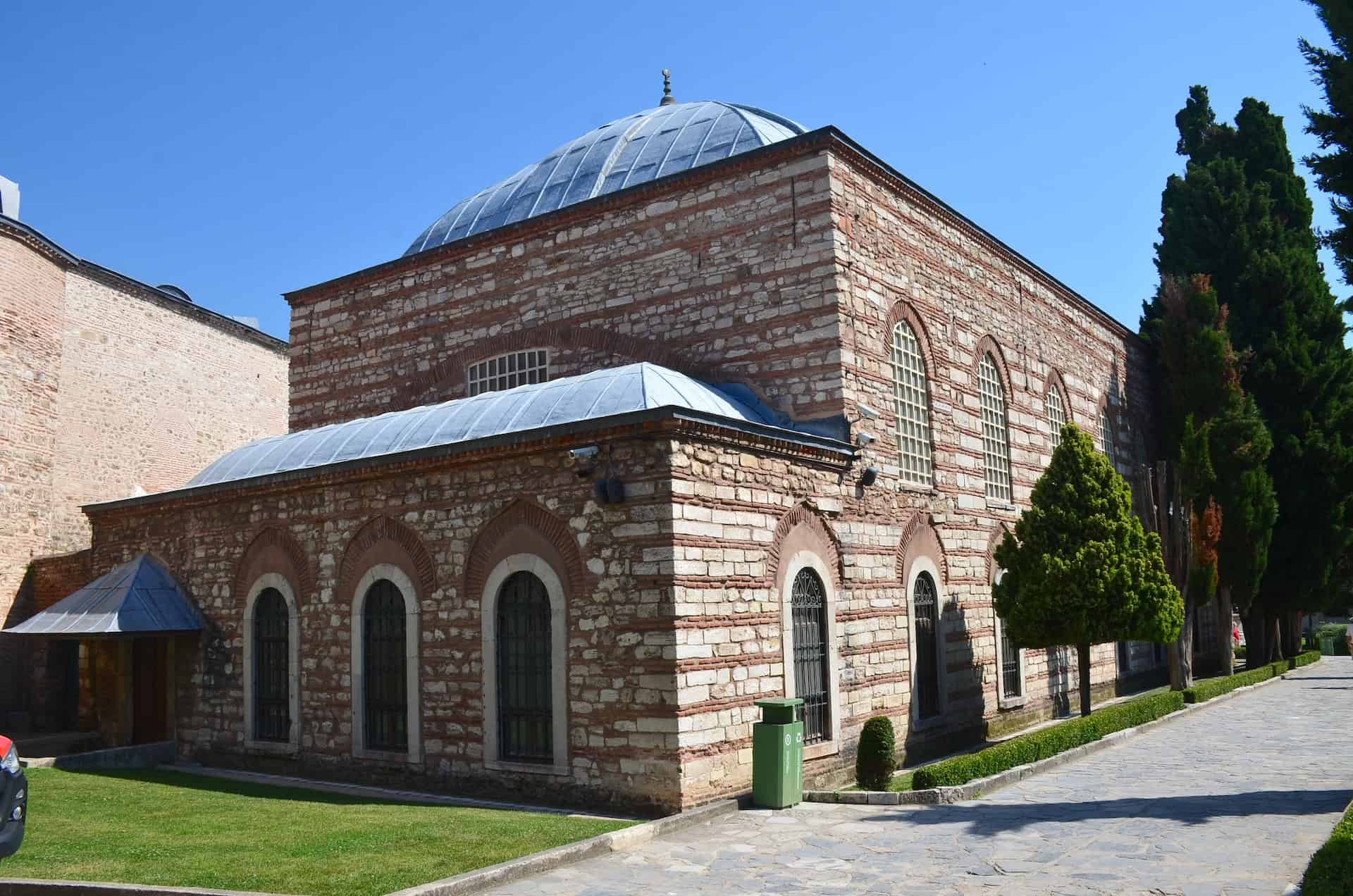
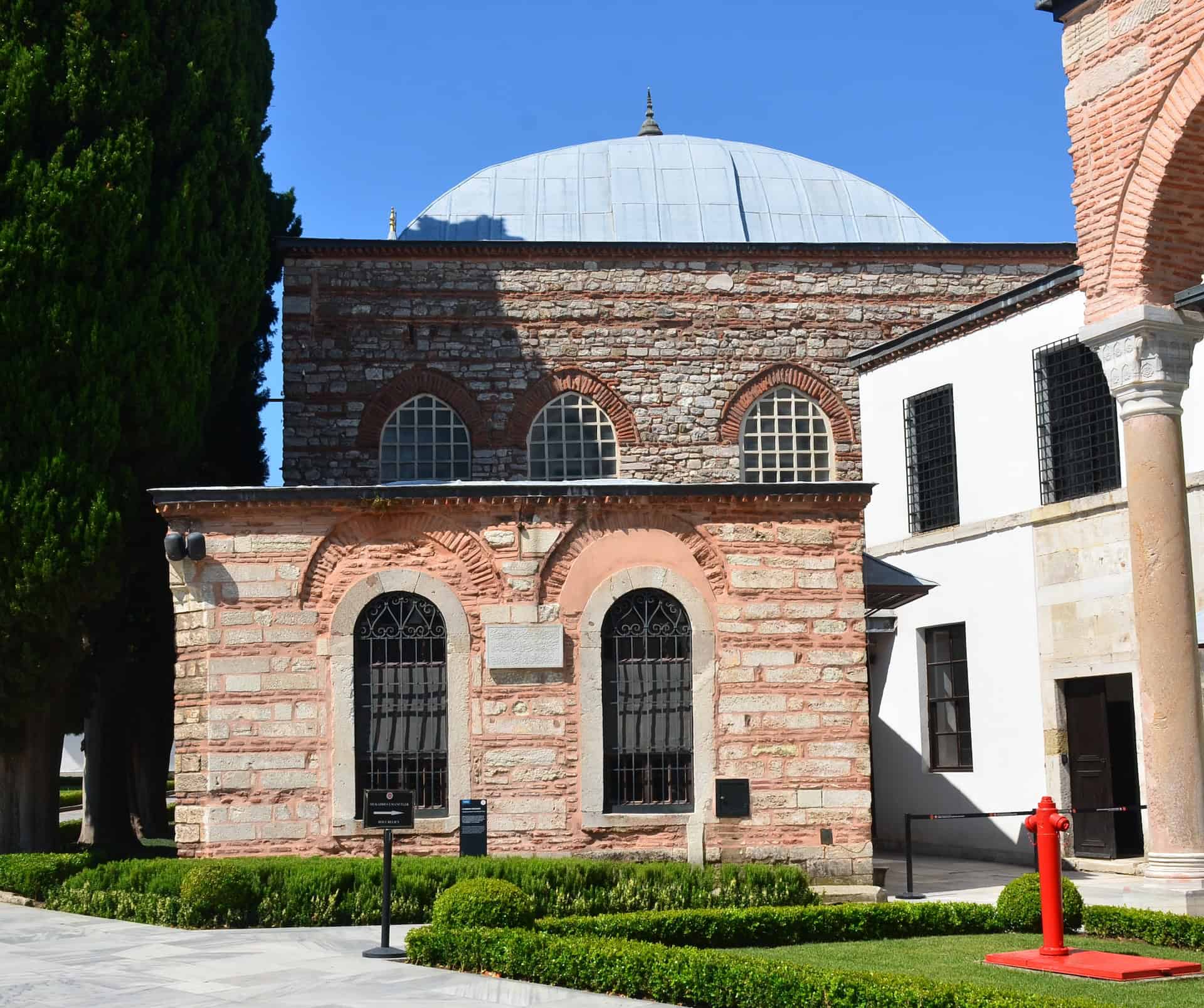
The Mosque of the Ağas was converted to a library in 1966. It now holds over 13,500 books from the Enderûn Library and all other libraries in the palace. An inscription on the north side of the building commemorates a renovation that took place in 1925.
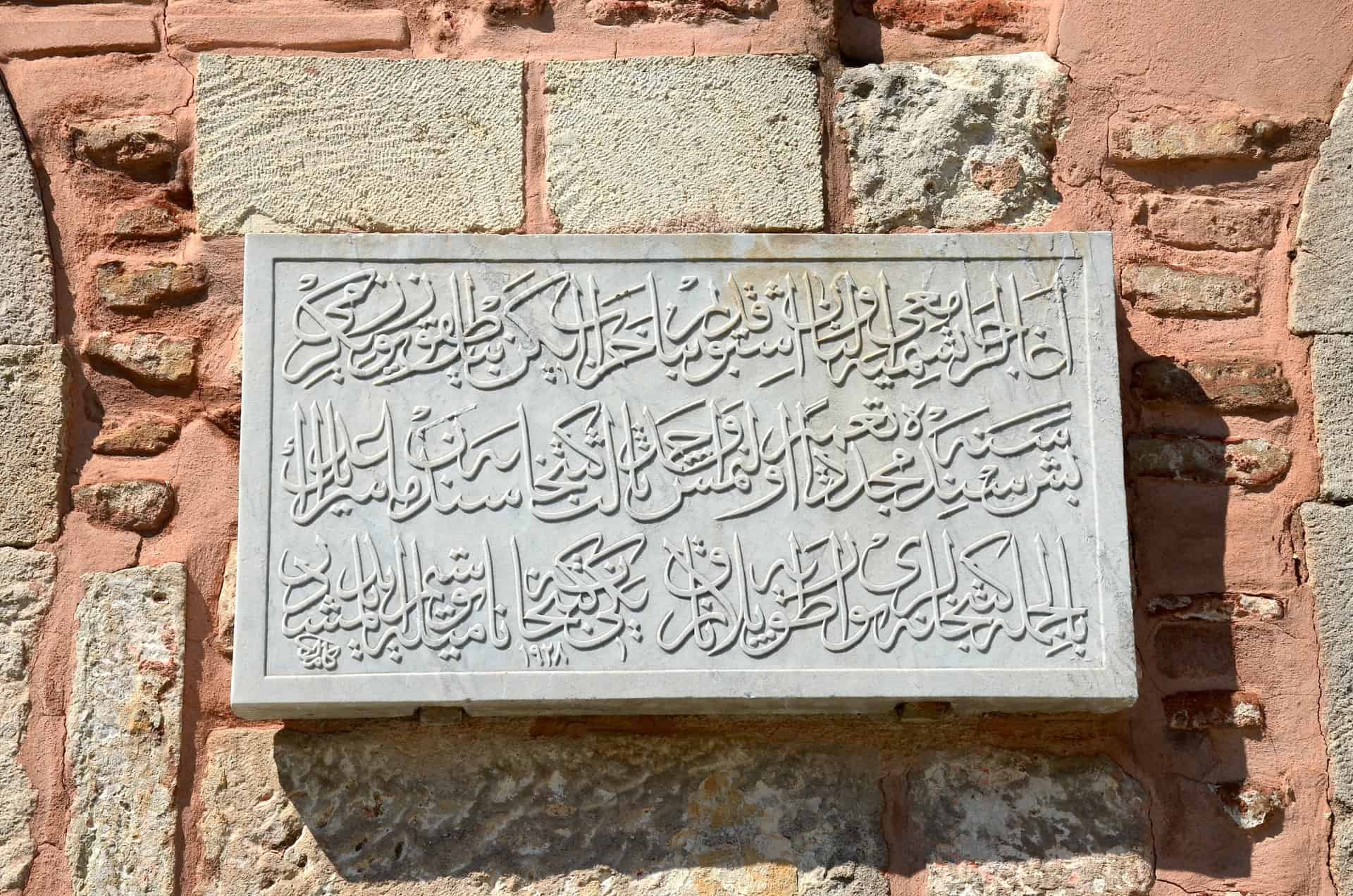
Dormitory of the Privy Chamber
Continuing clockwise around the courtyard is the Dormitory of the Privy Chamber (Has Oda Koğuşu). It was reserved for the best and brightest students from the palace school. They would spend nearly all their time in the presence or proximity of the Sultan and were responsible for the maintenance and preservation of the Sacred Relics.
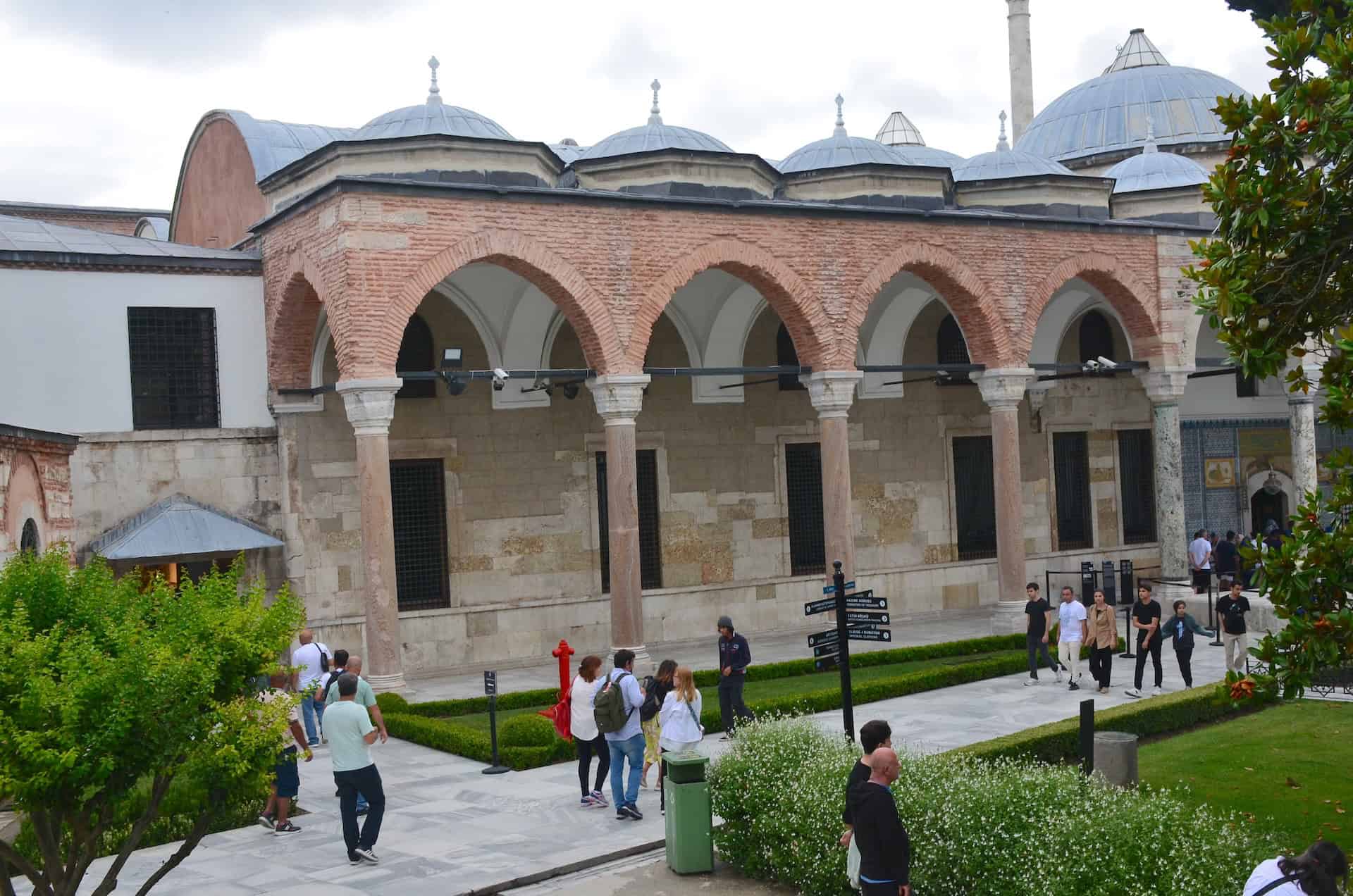
Privy Chamber / Chamber of the Sacred Relics
Next door is the Privy Chamber (Has Oda). It was built during the reign of Mehmed the Conqueror and served as the living quarters of the Sultan as well as where he prayed and carried out official business. Rooms of the Privy Chamber include the Audience Chamber, the Şadırvanlı Sofa, and the Destimal Chamber.
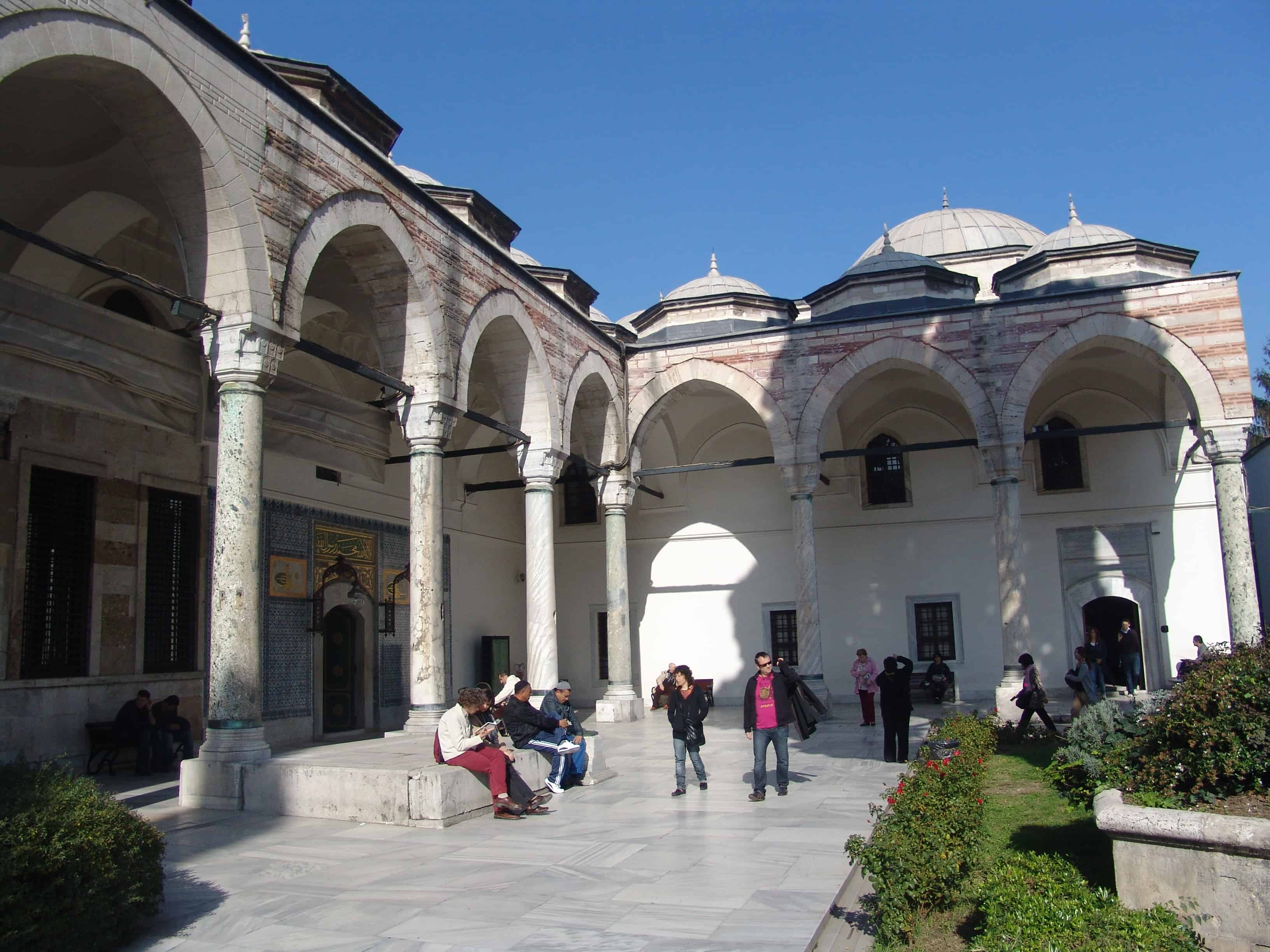

In the 19th century, Mahmud II had the building converted to the Chamber of the Sacred Relics (Kutsal Emanetler Dairesi), which holds some of the most important relics of the Islamic world. They were acquired by the Sultans between the 16th and 19th centuries, starting with Selim I. He brought back several Islamic relics and had them stored in the Privy Chamber after returning from the Egypt Campaign in 1517. Visitors are expected to dress respectfully as if entering a mosque, but this policy is not strictly enforced by security.
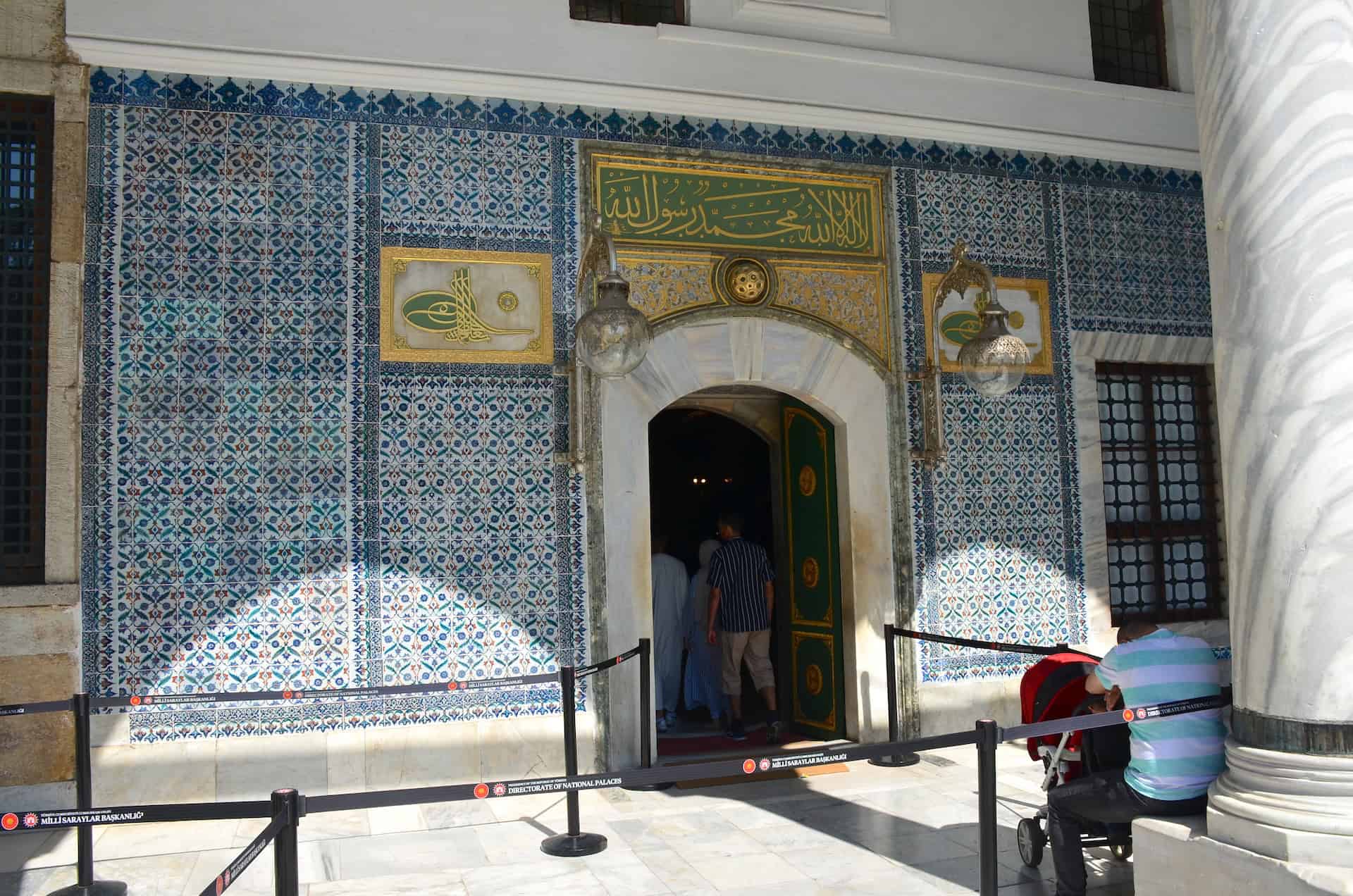
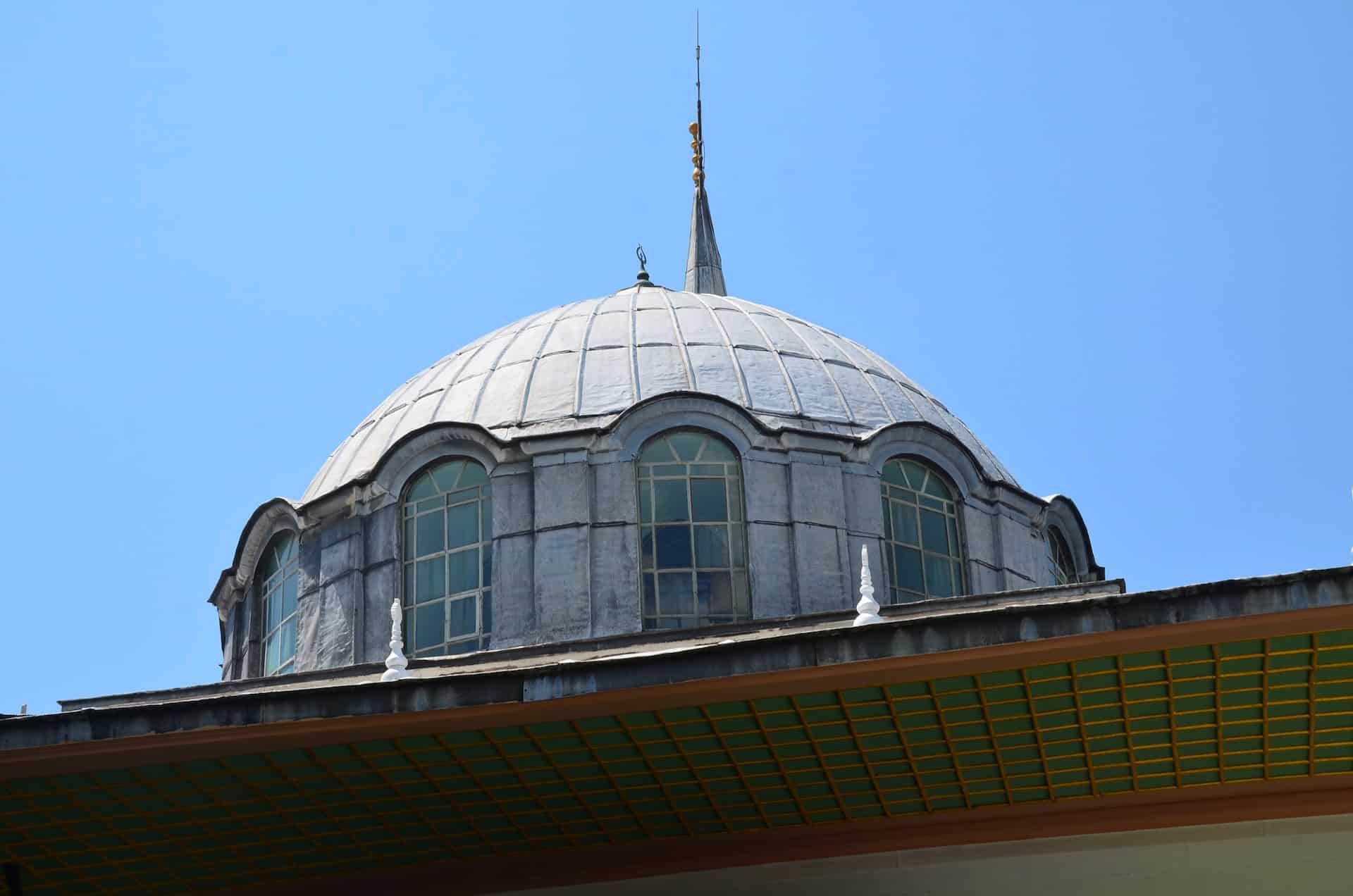
Şadırvanlı Sofa
The room inside the entrance is the Şadırvanlı Sofa, which is named for the fountain in the center. It displays the keys to the Kaaba, the casing of the Black Stone, swords of Muhammad’s companions, and a mufti recites verses from the Quran 24 hours a day.
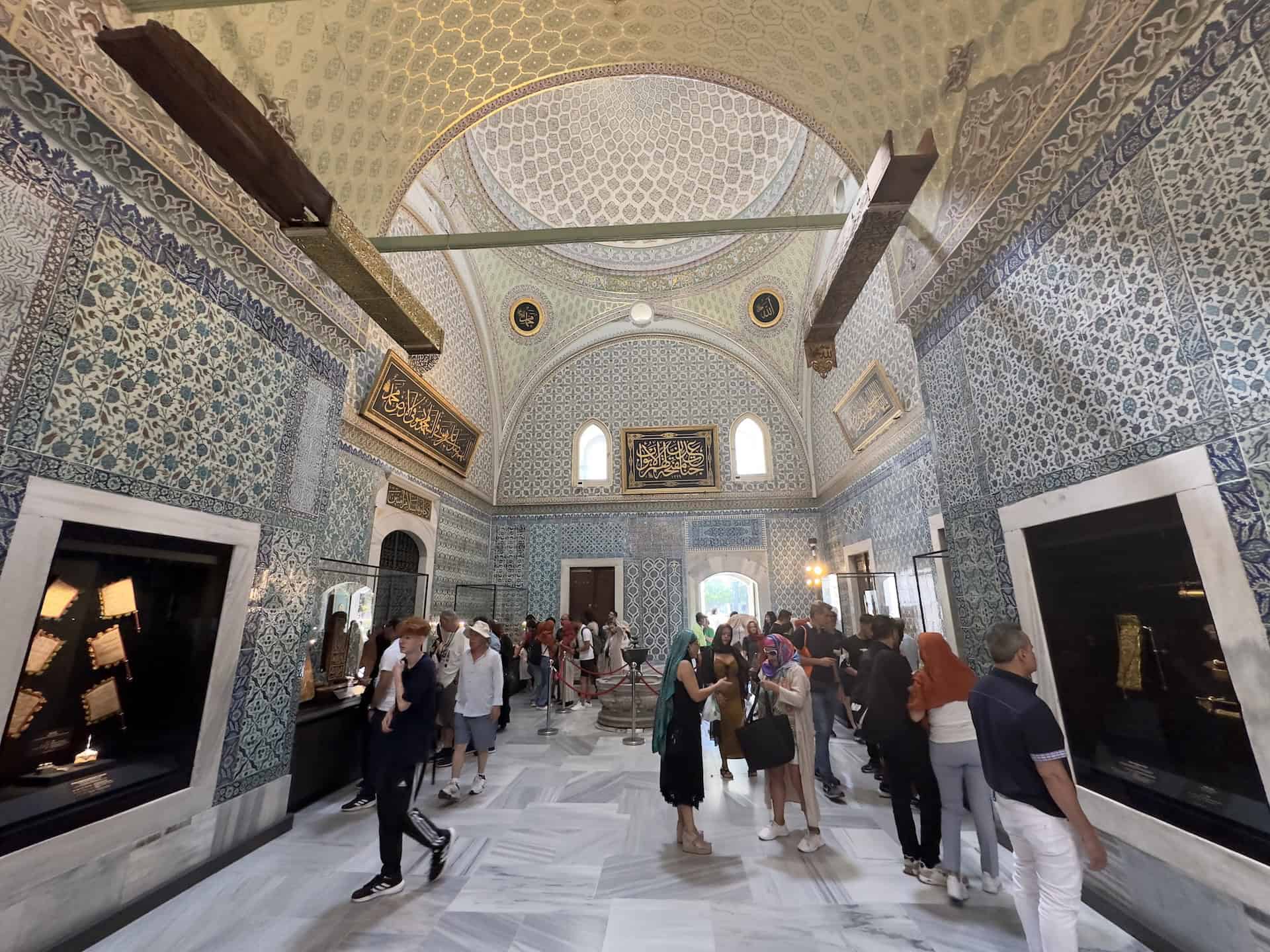
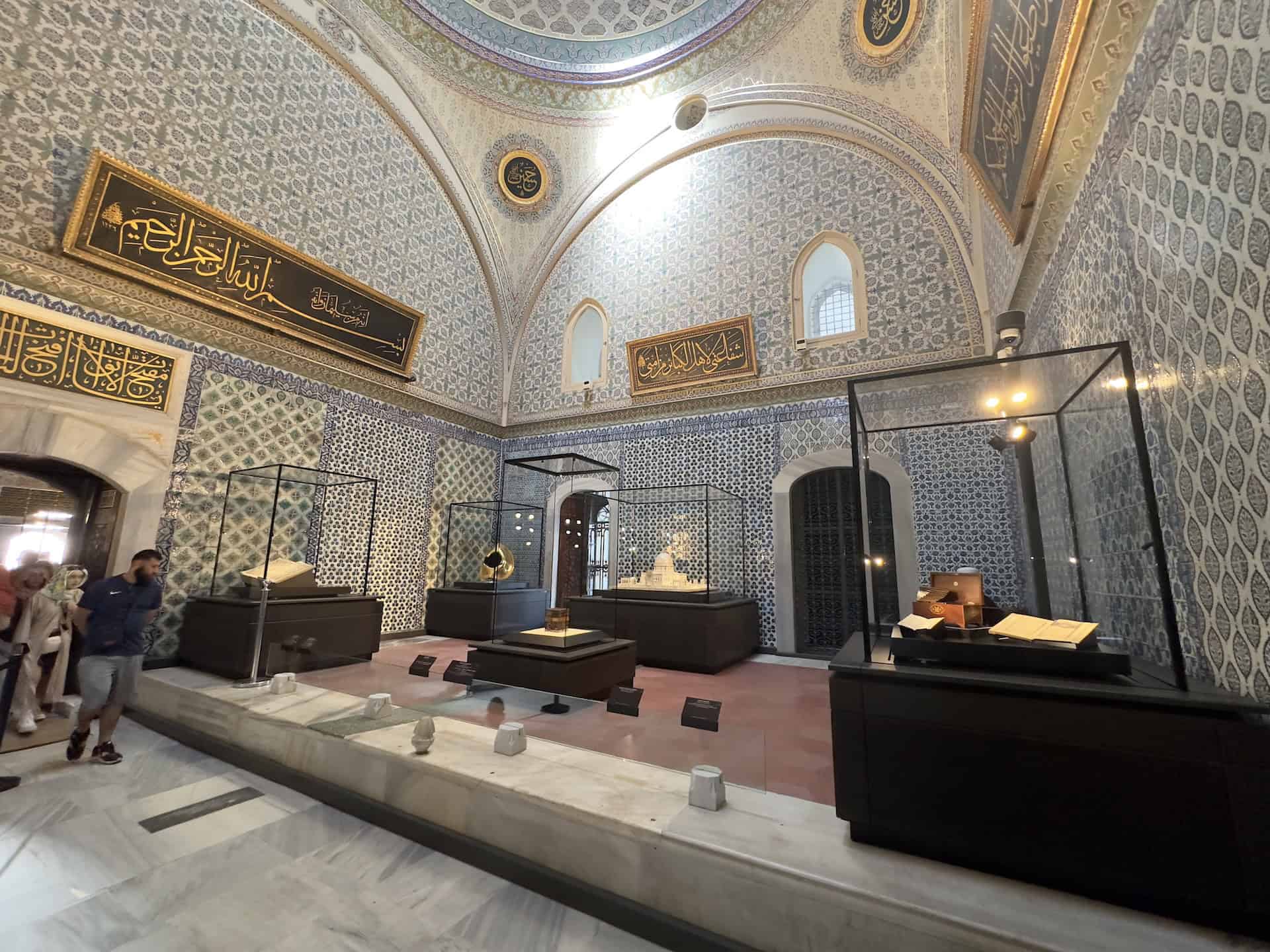
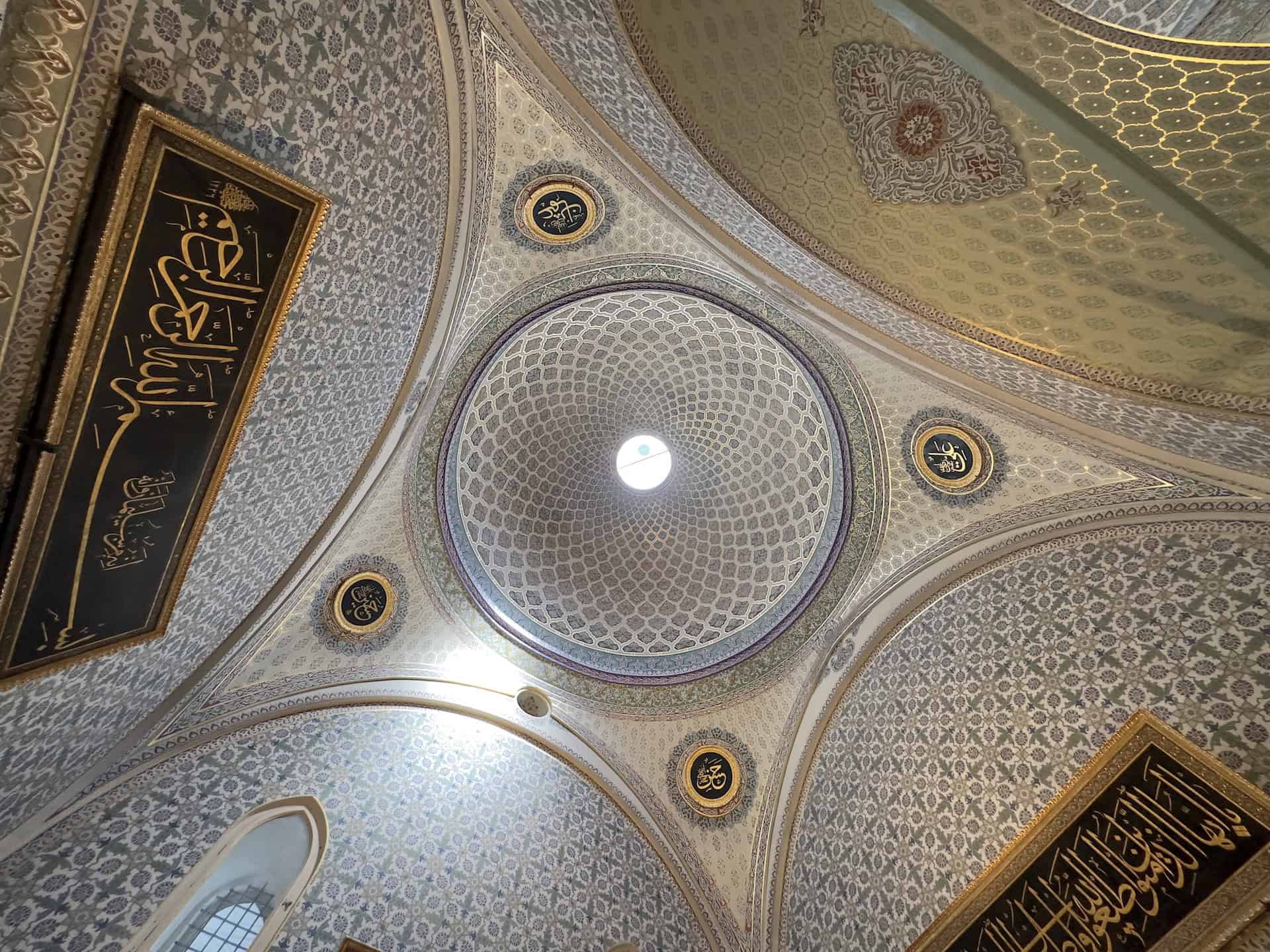
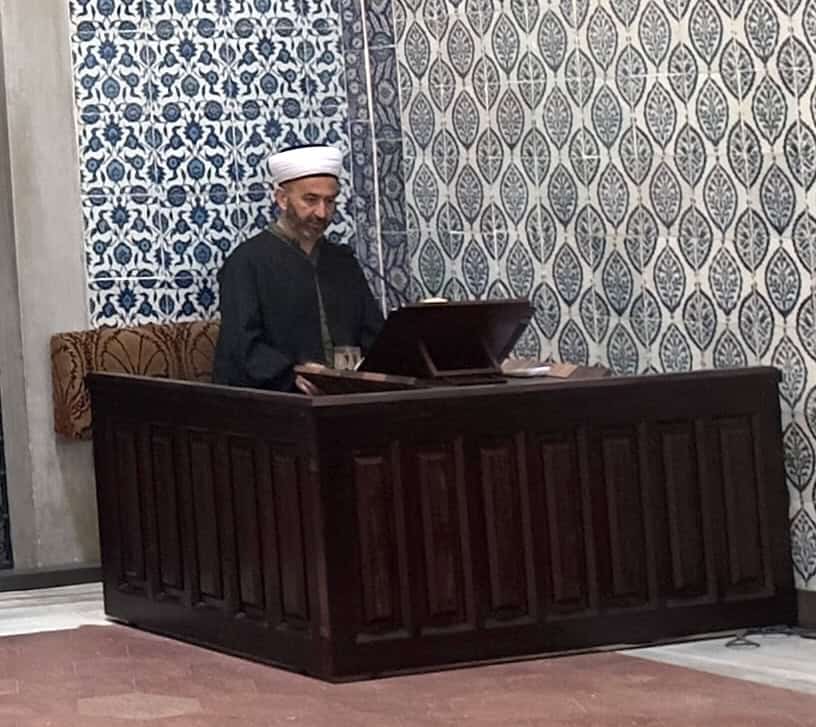
Destimal Chamber
The room to the left is the Destimal Chamber. On display are footprints of Muhammad, a stone pot belonging to Abraham, the Staff of Moses, the sword of David, fragments of the arm and skull of John the Baptist.
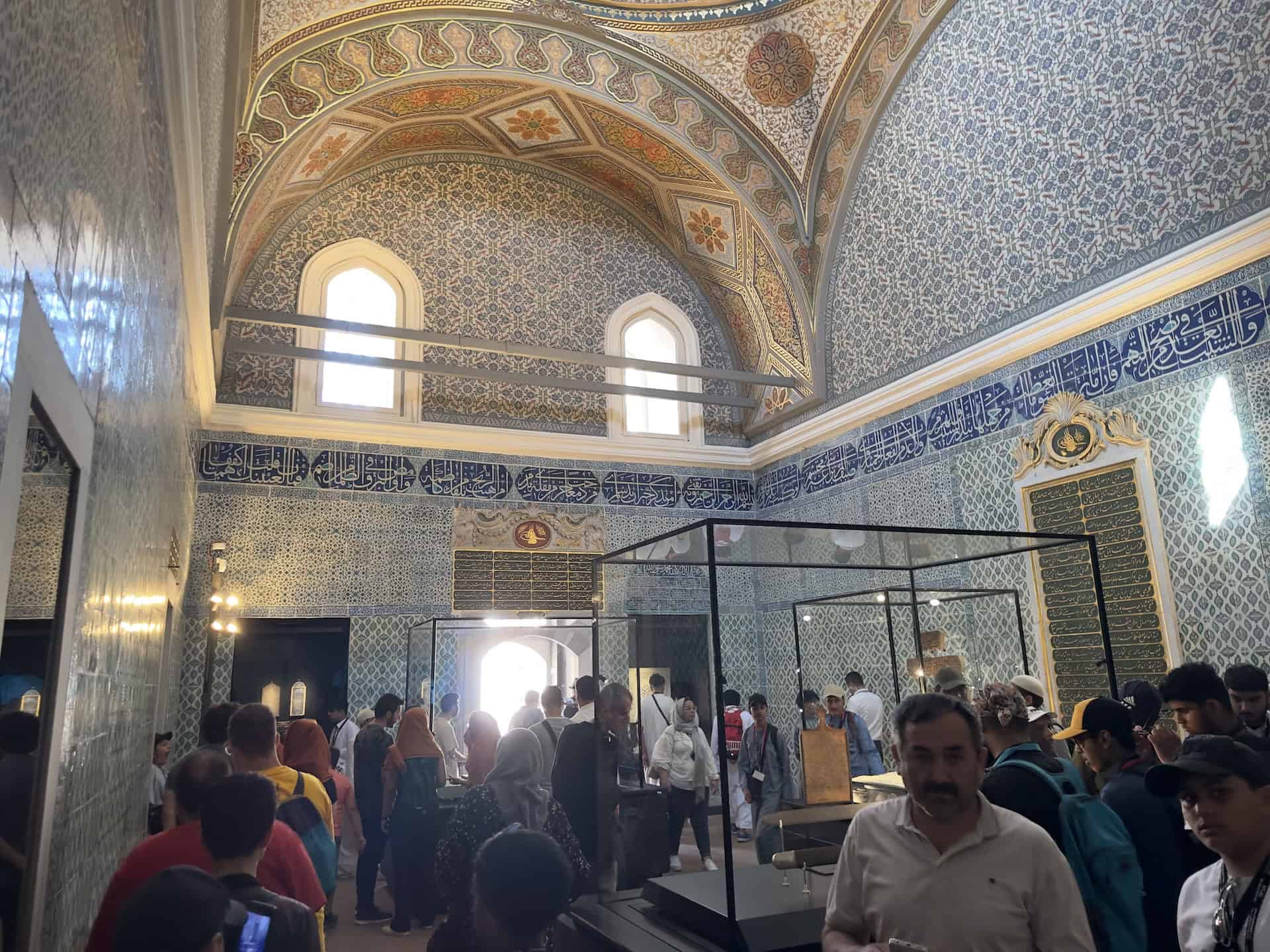

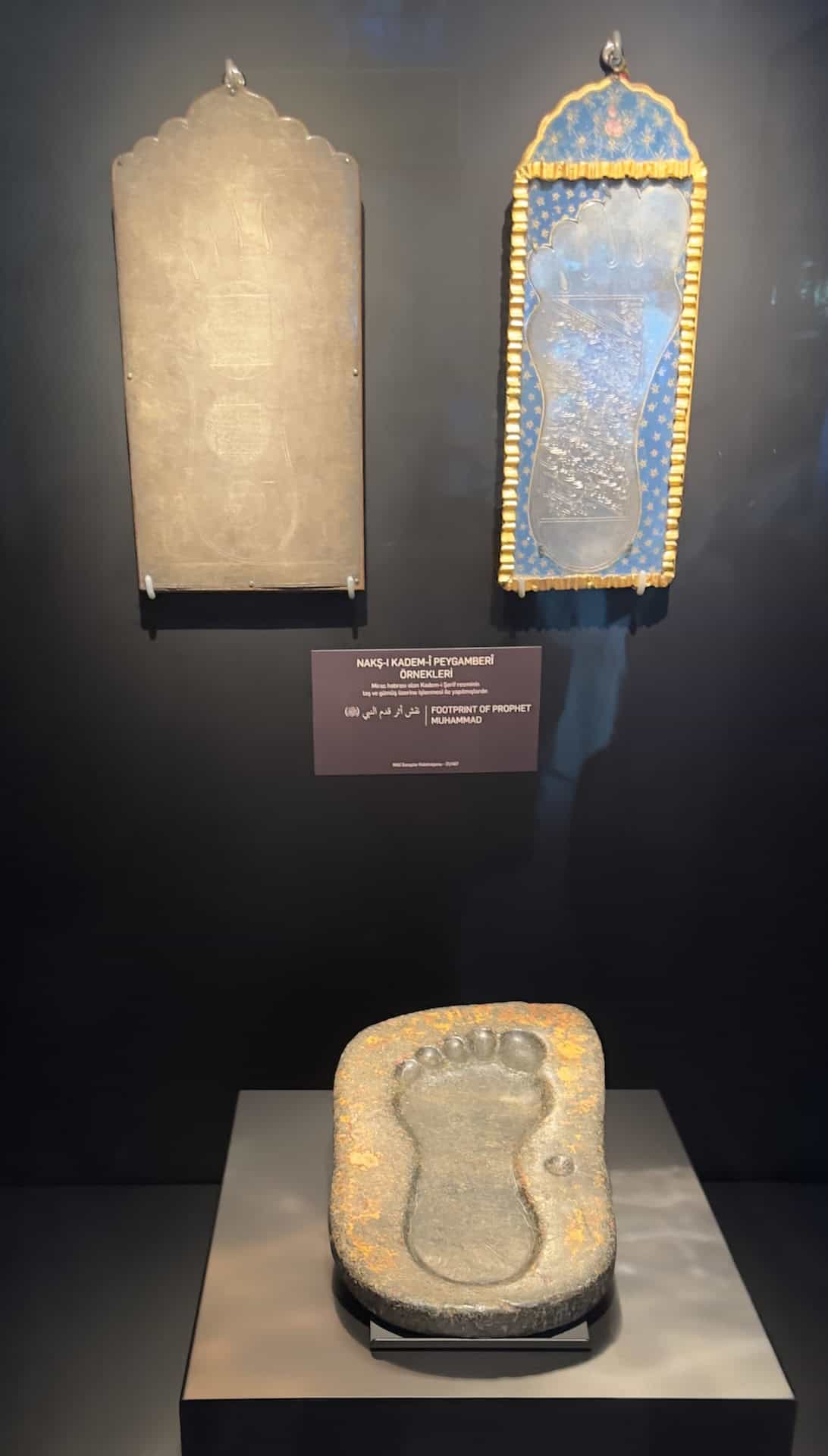
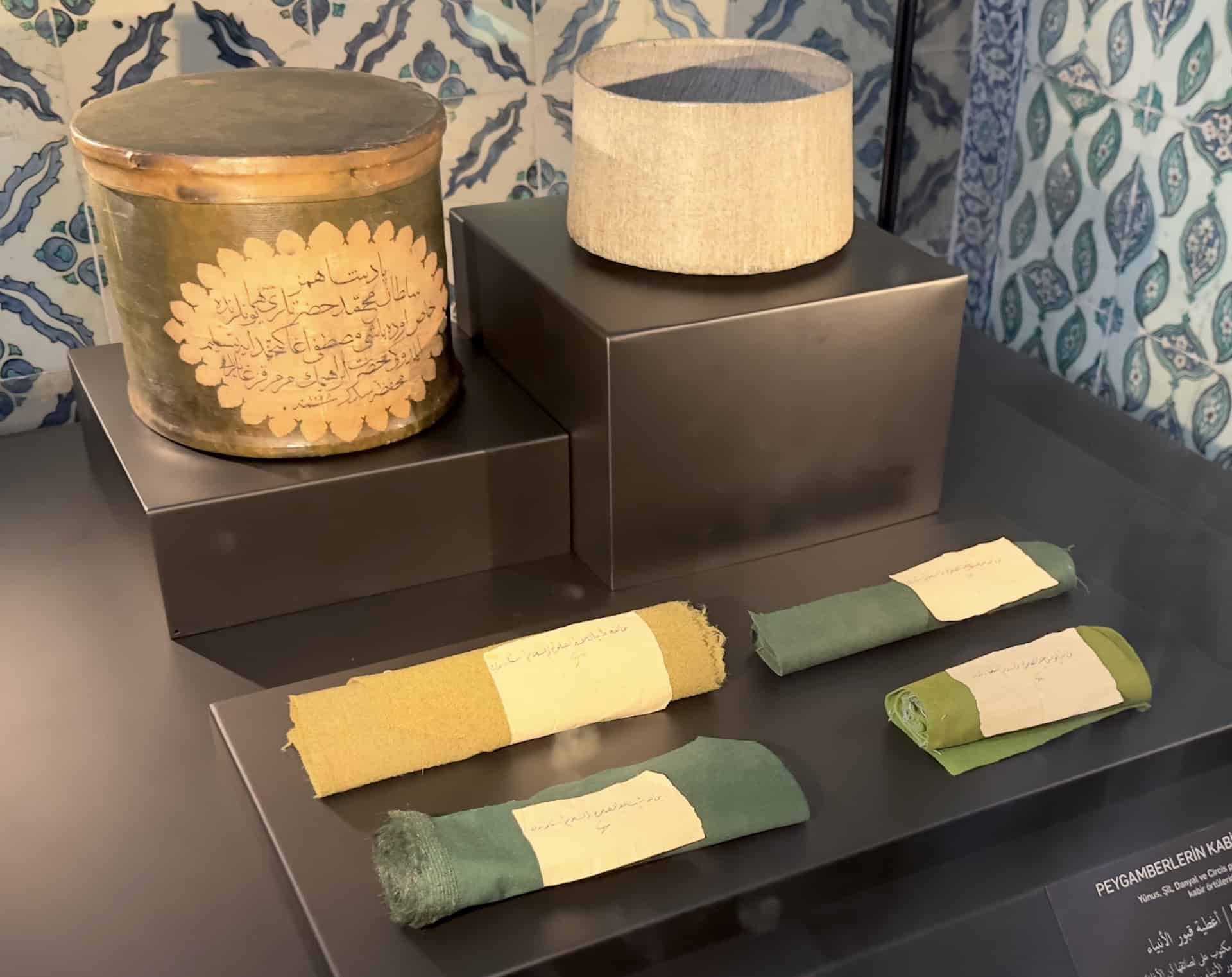
The sword of David contains symbols representing the battle between David and Goliath. It’s inscribed with the names of David, Solomon, Moses, Joshua, Zechariah, John the Baptist, Jesus, and Muhammad. Ottoman sultans would often use it during sword-girding ceremonies. The fragments of St. John the Baptist are kept in Byzantine reliquaries.
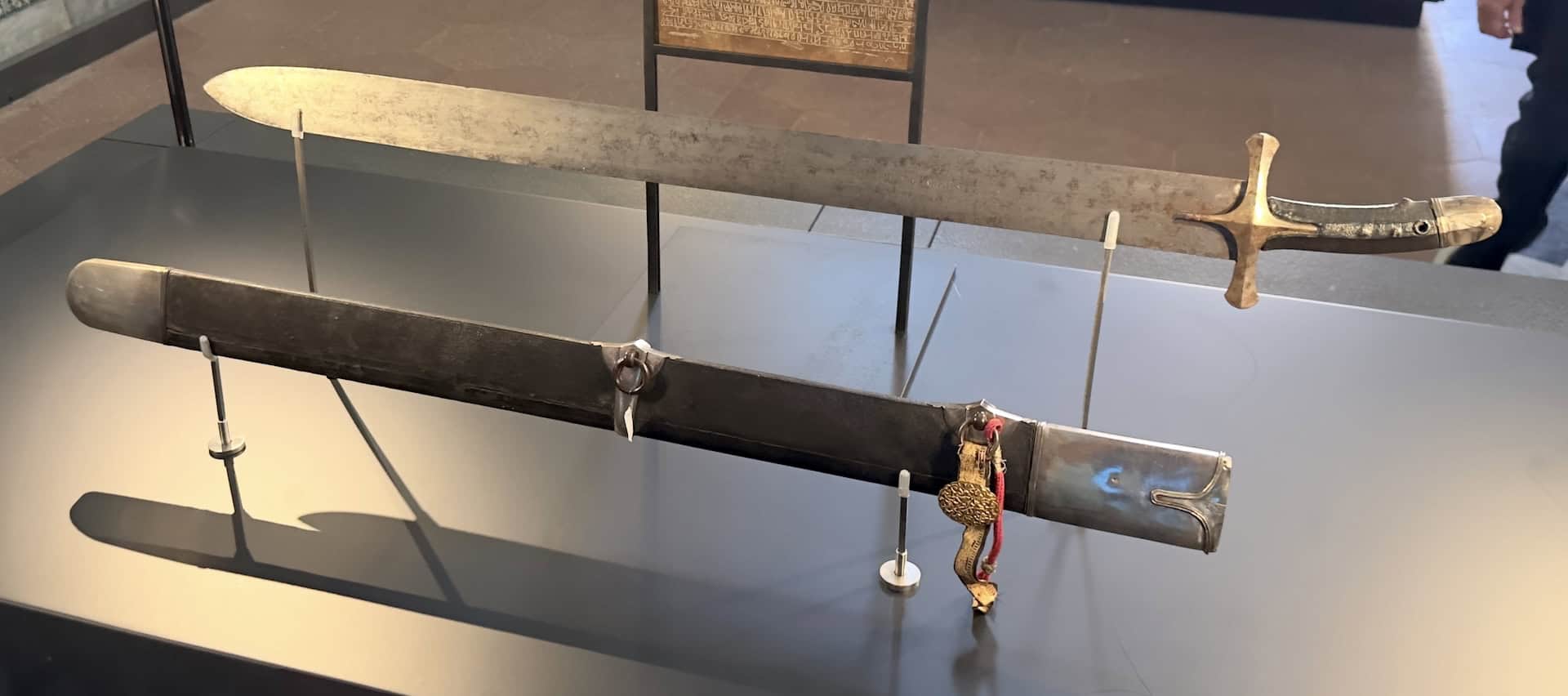
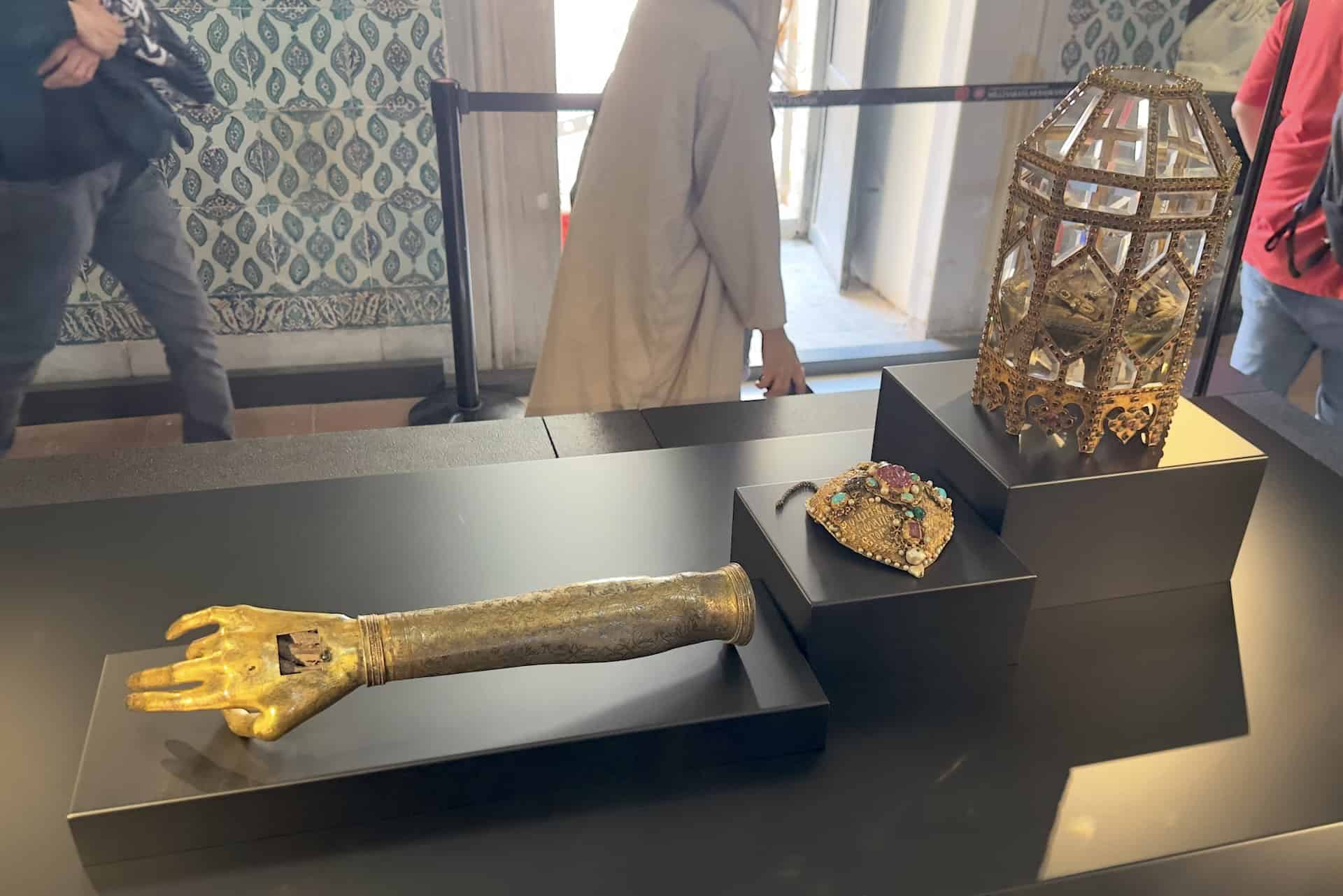
Chamber of the Blessed Mantle
To the right of the Şadırvanlı Sofa is the Chamber of the Blessed Mantle. It contains a latticed silver canopy where the Blessed Mantle and the Holy Banner of Muhammad are kept in golden chests.
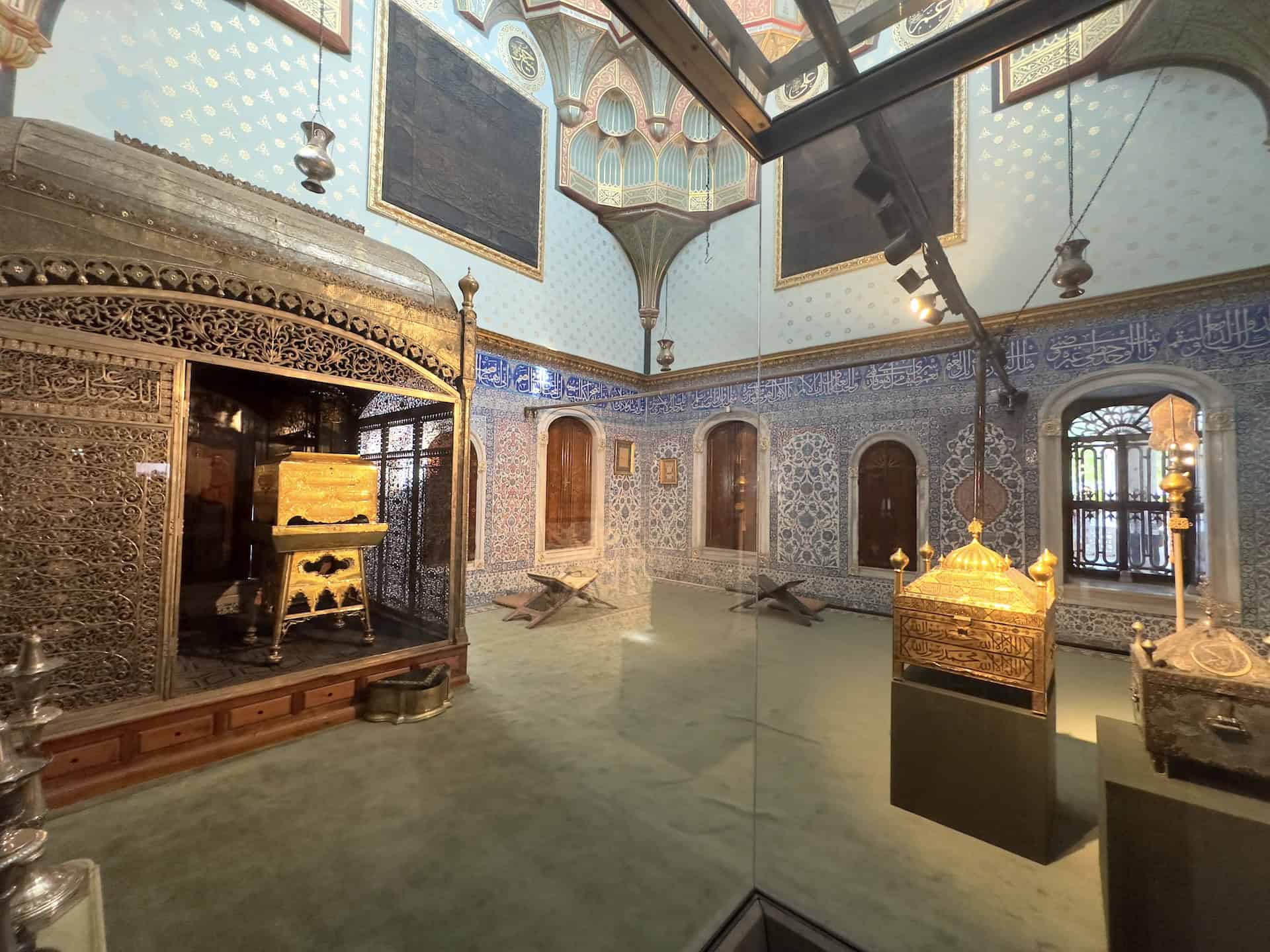
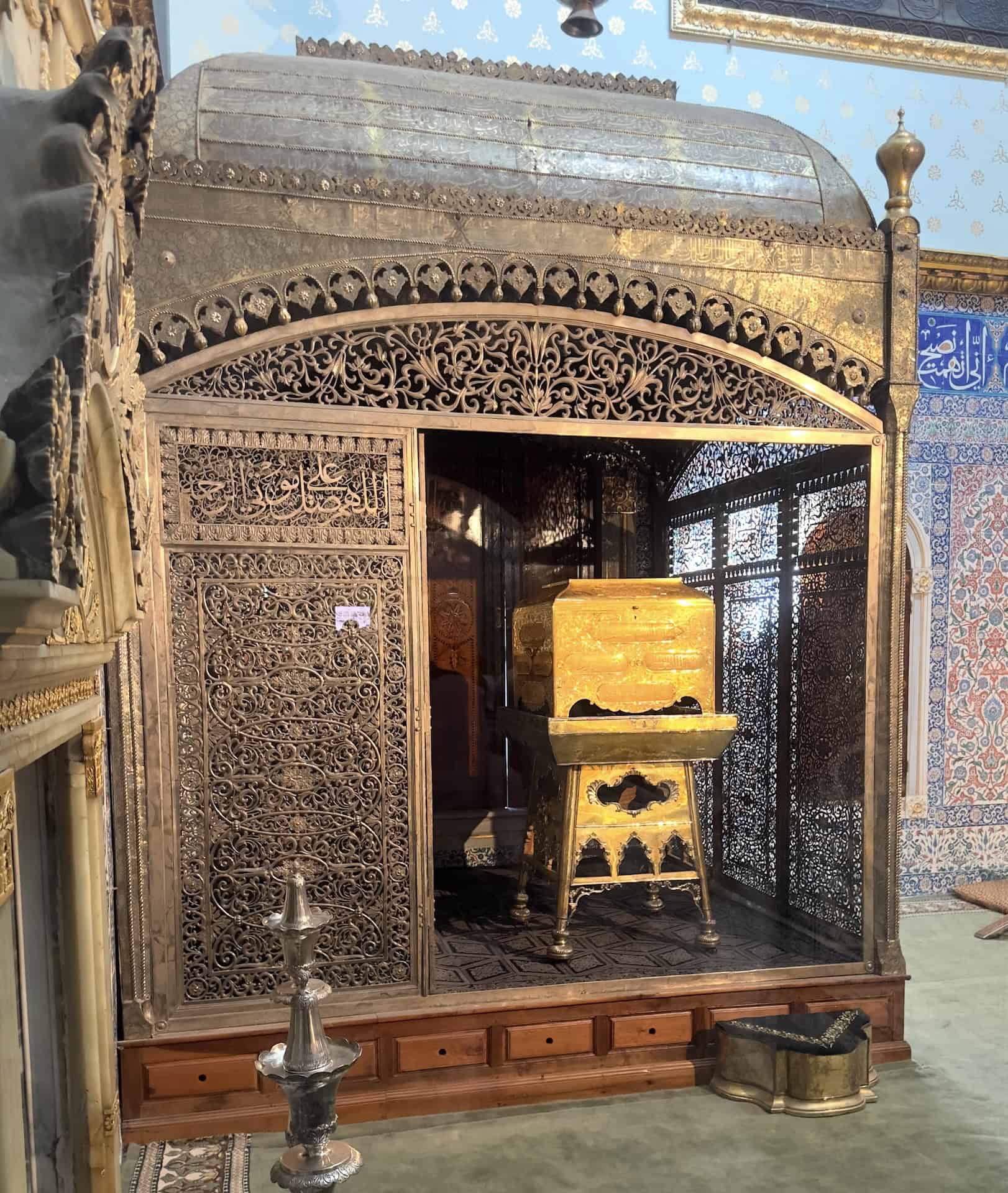
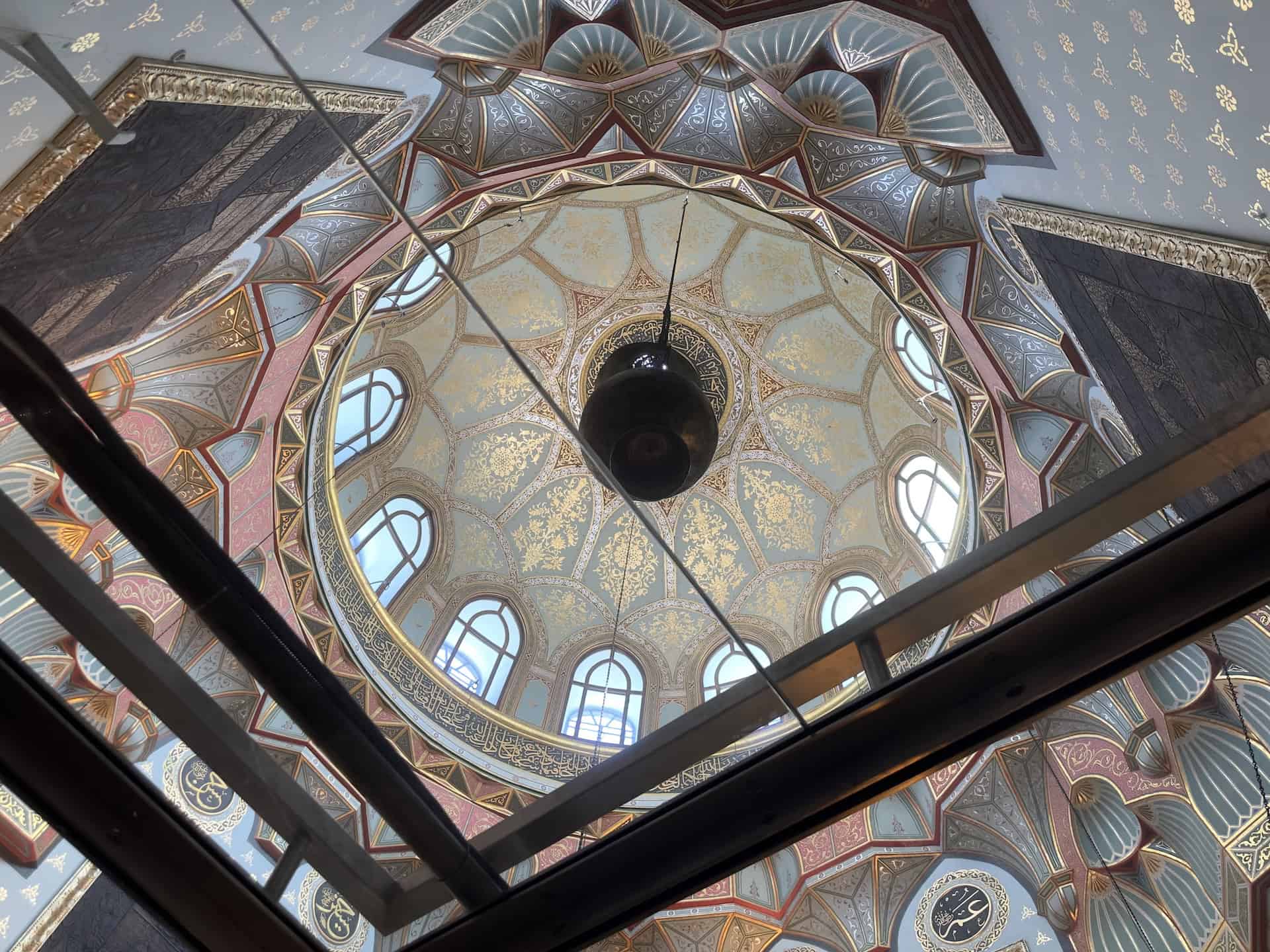
Audience Chamber
Next is the Audience Chamber, also known as the House of Petitions (Arzhane). It’s a domed room containing items related to Muhammad.
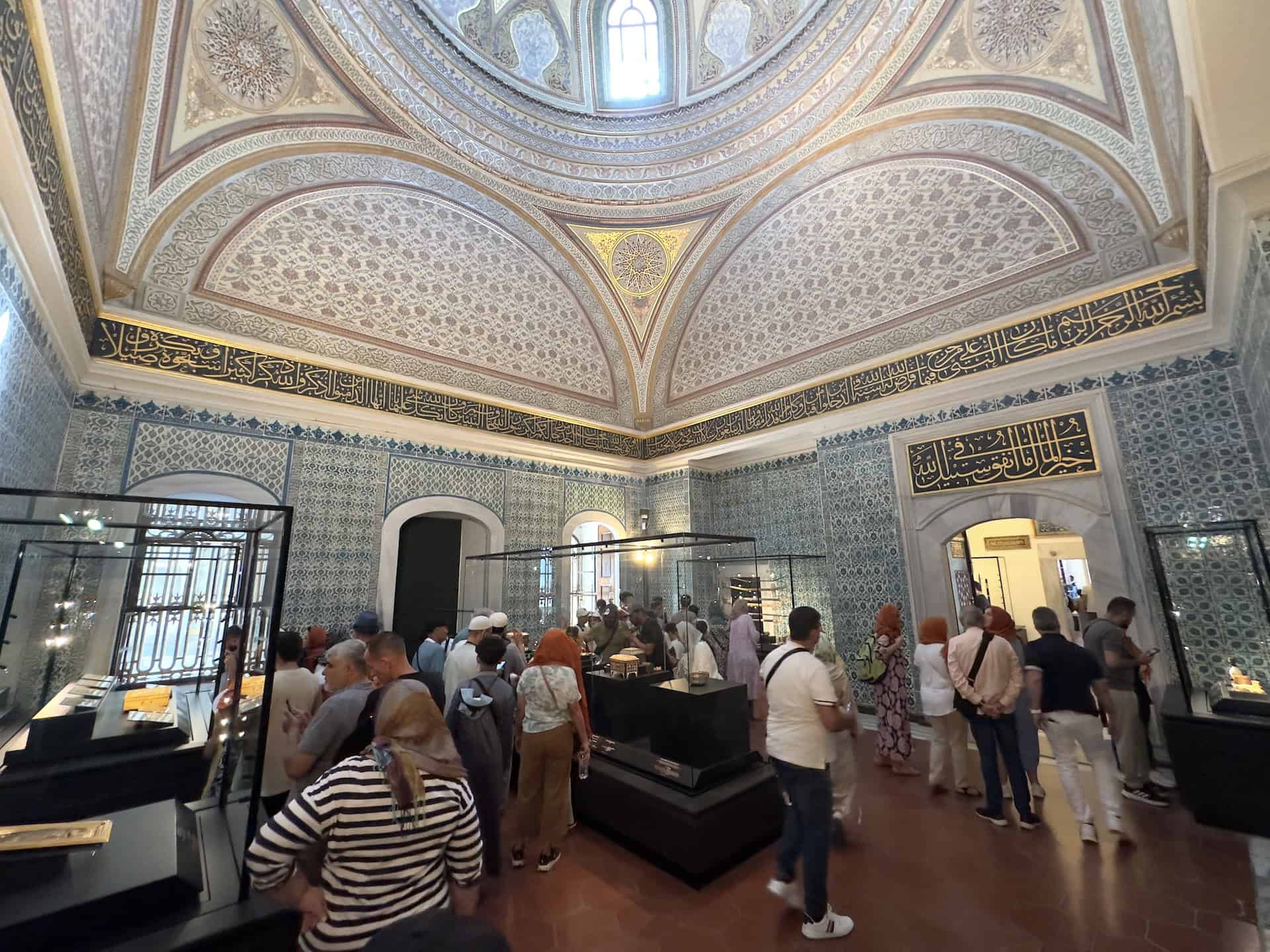
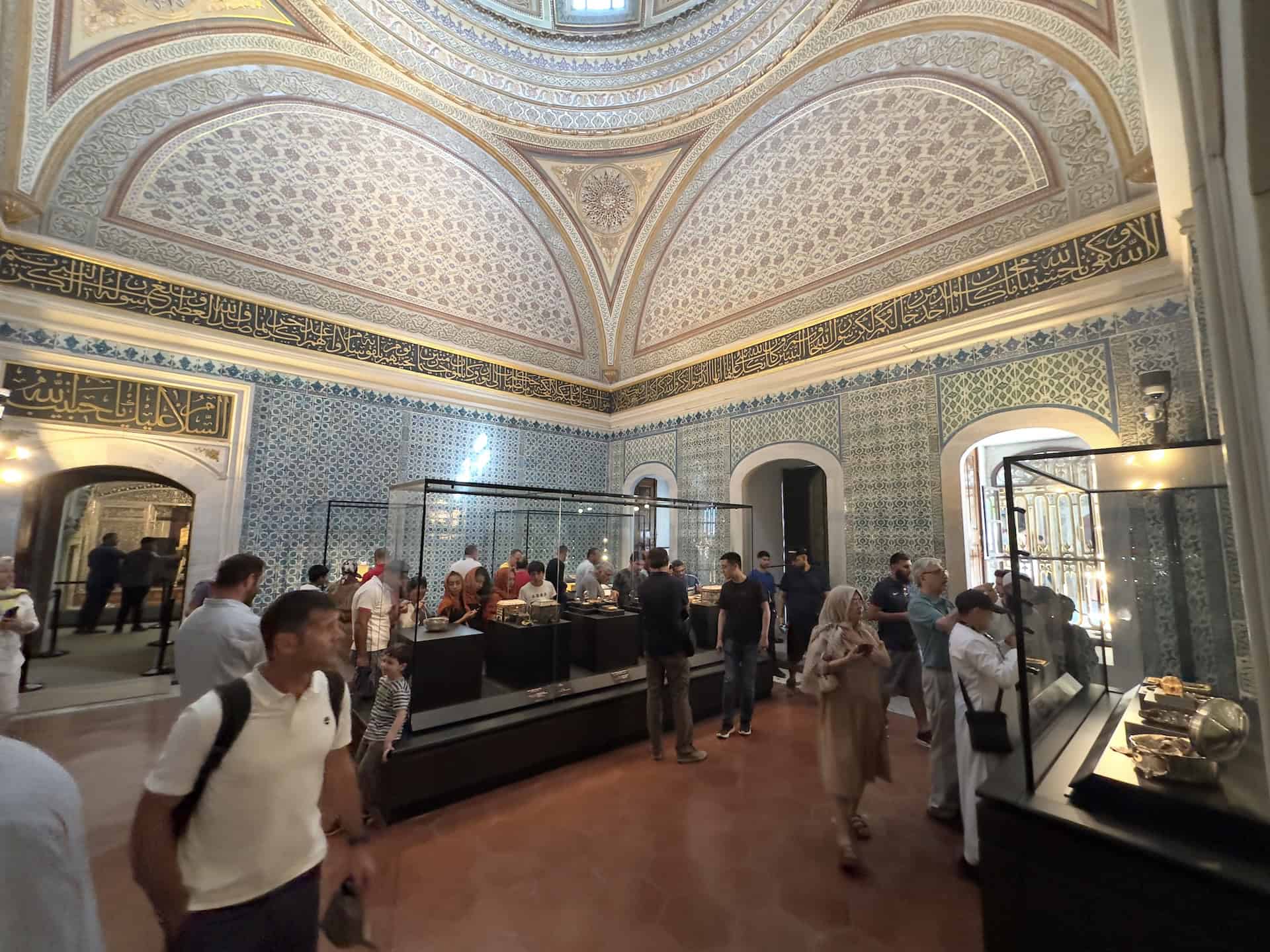
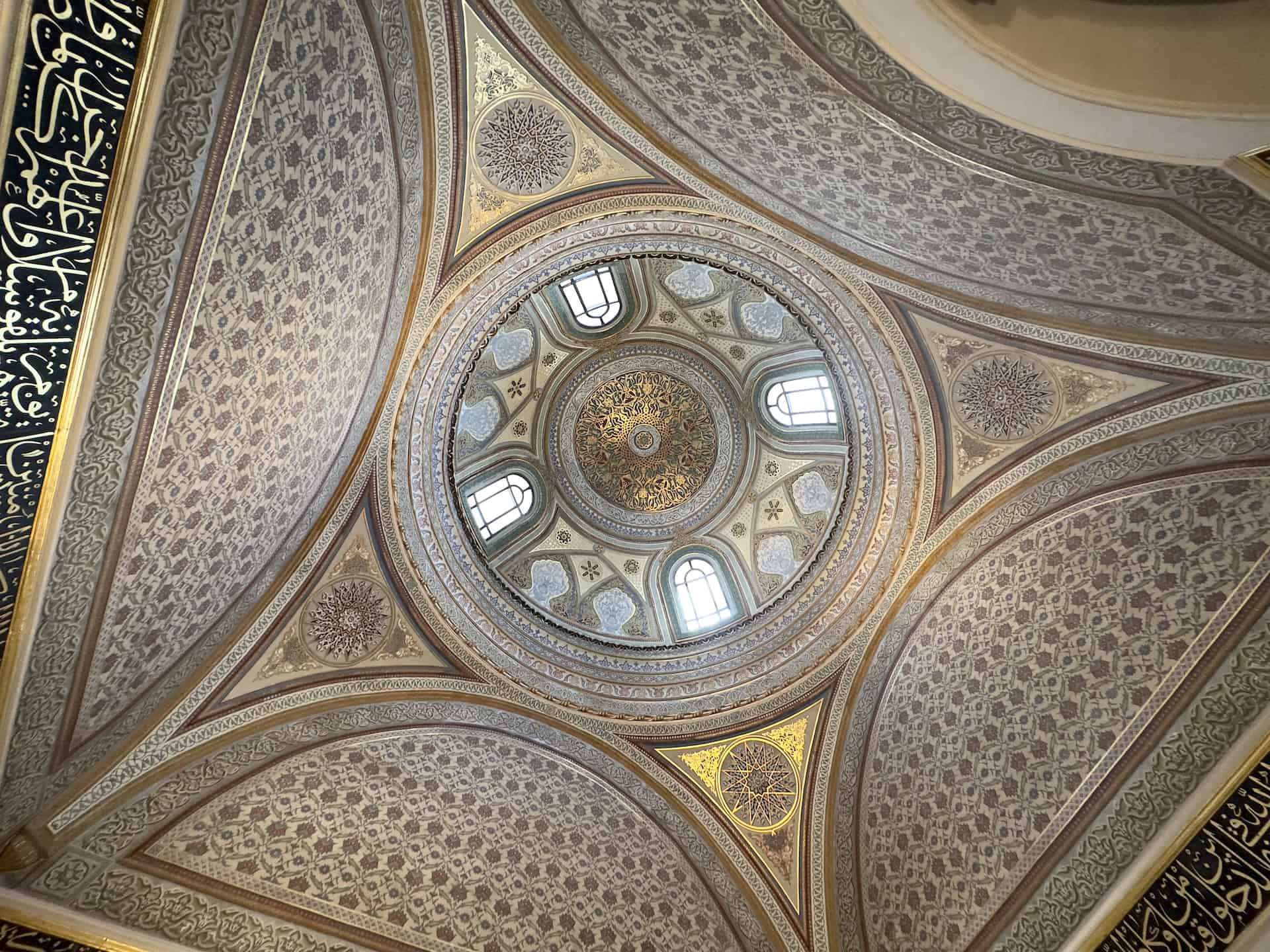
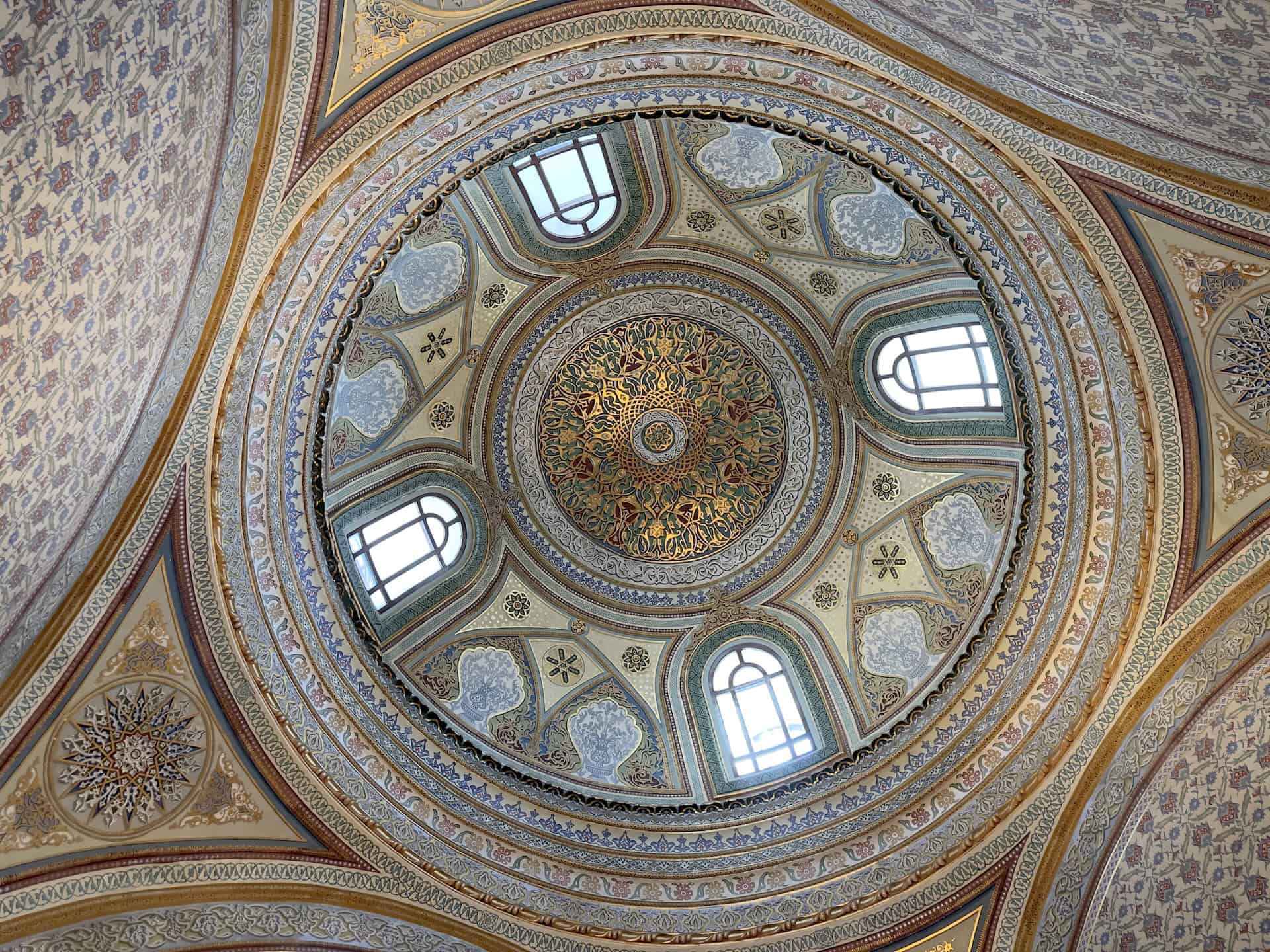
On display are pieces of Muhammad’s teeth, beard hairs, his swords and bow, and reliquaries made by Ottoman craftsmen.
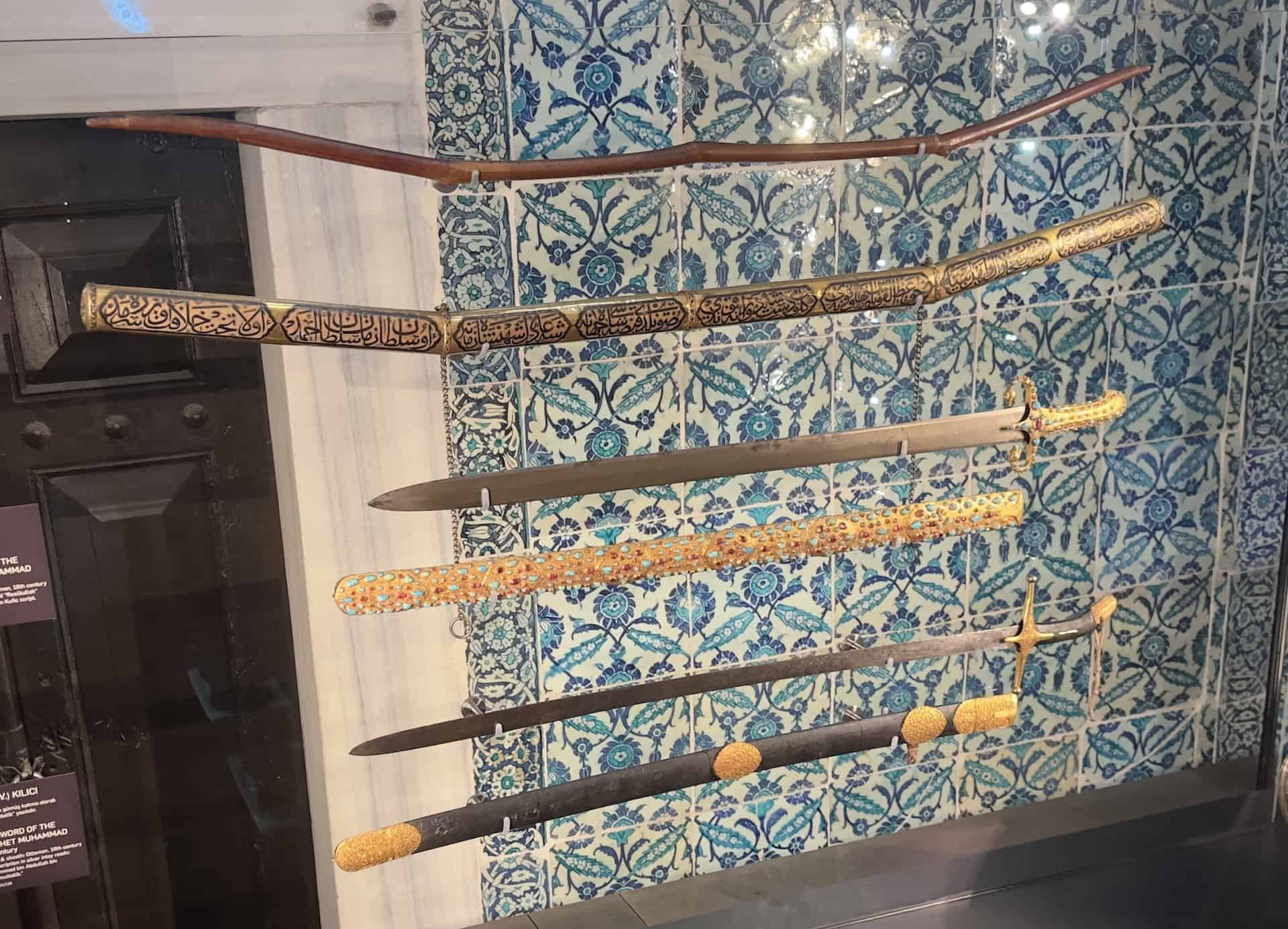

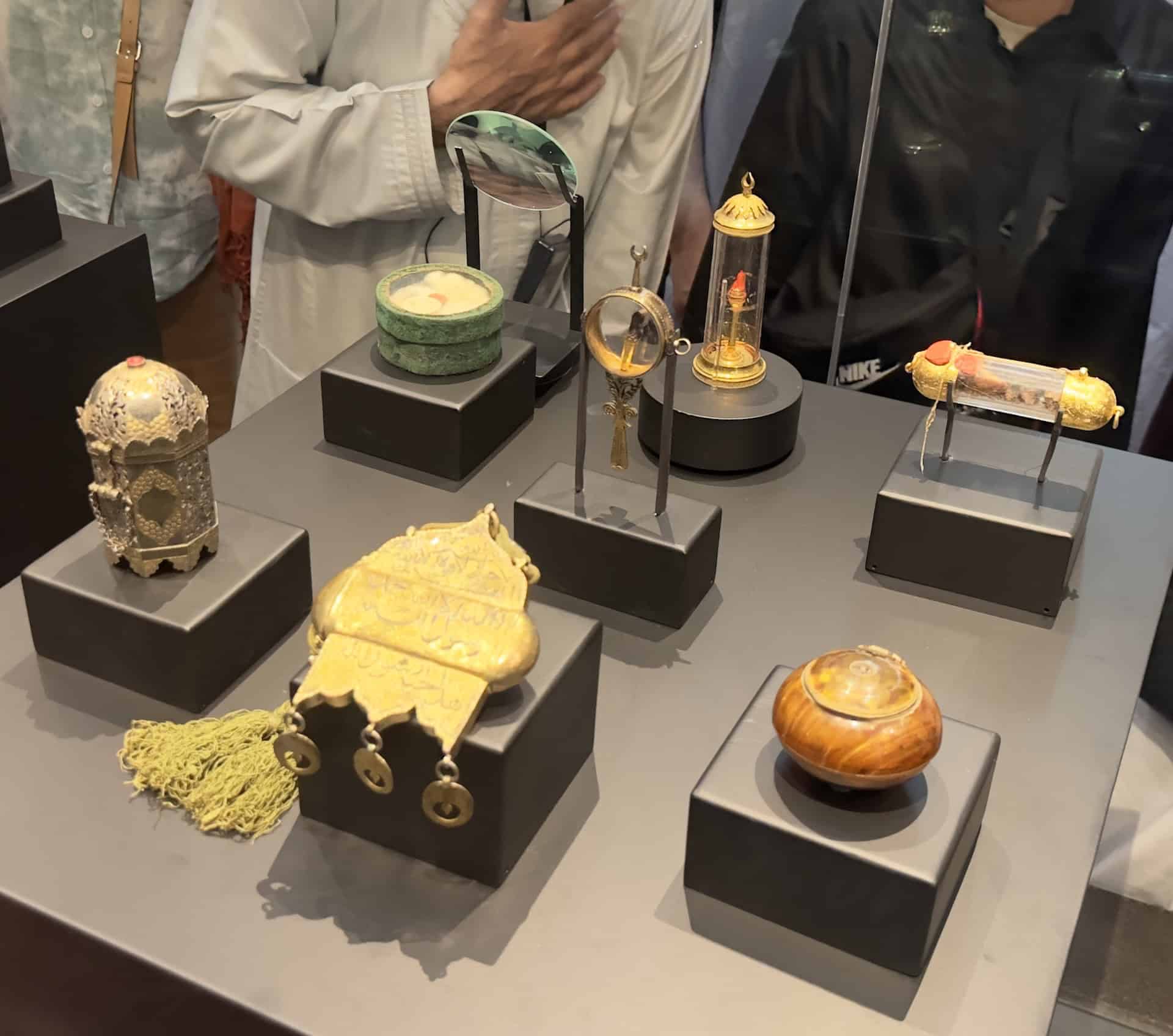
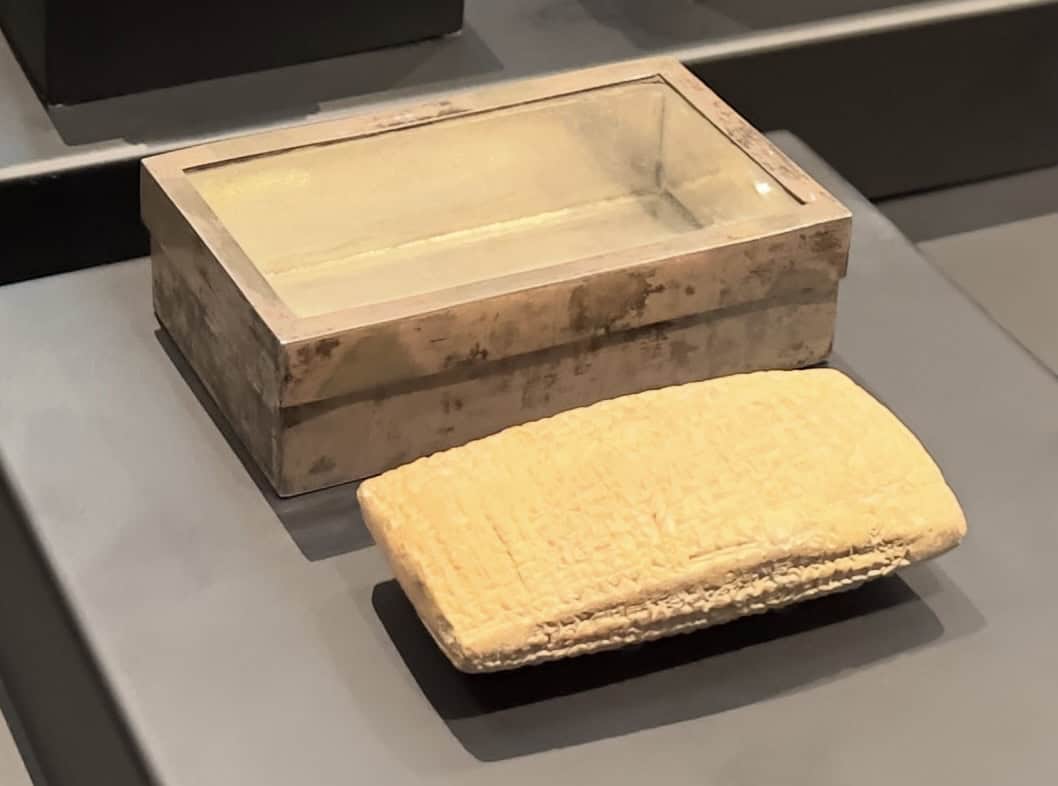
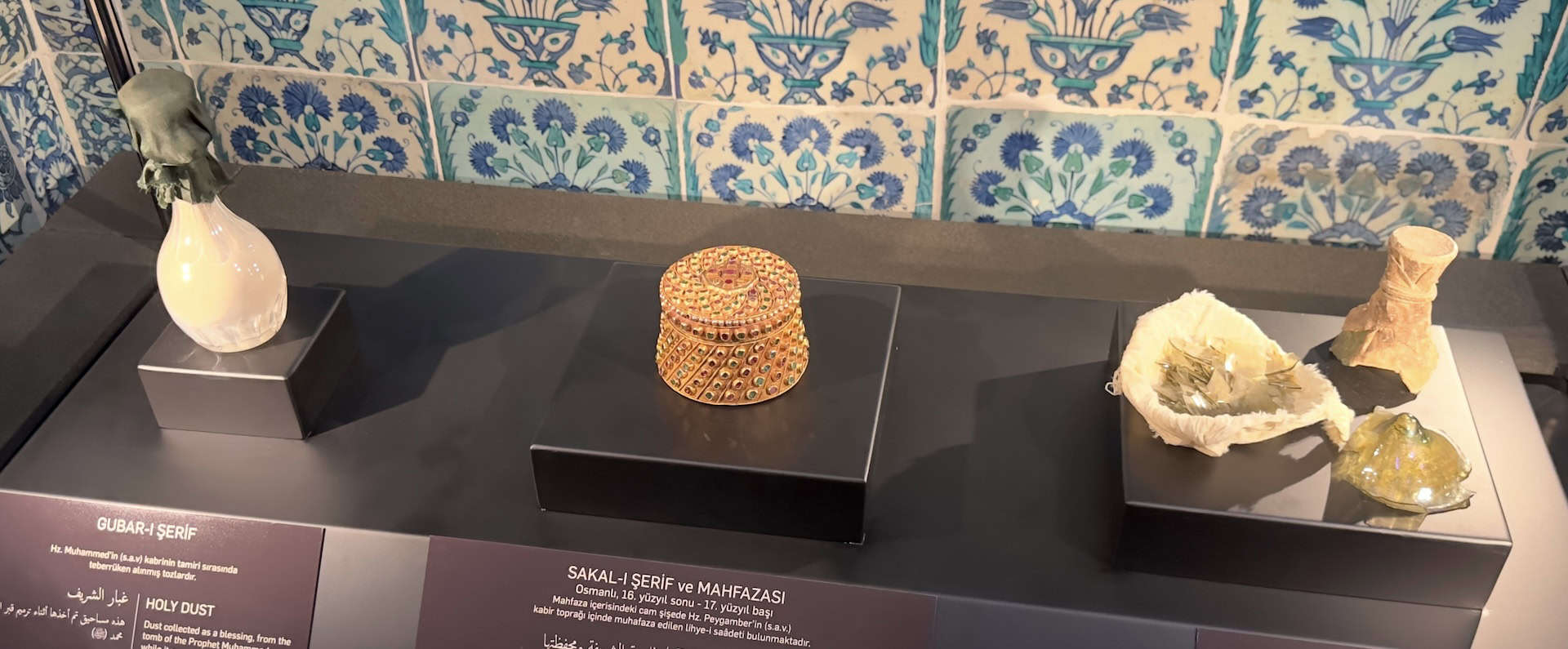
Final Rooms
The final two rooms in the Chamber of the Sacred Relics are very plain compared to the first four rooms. They contain artifacts belonging to people associated with Muhammad.
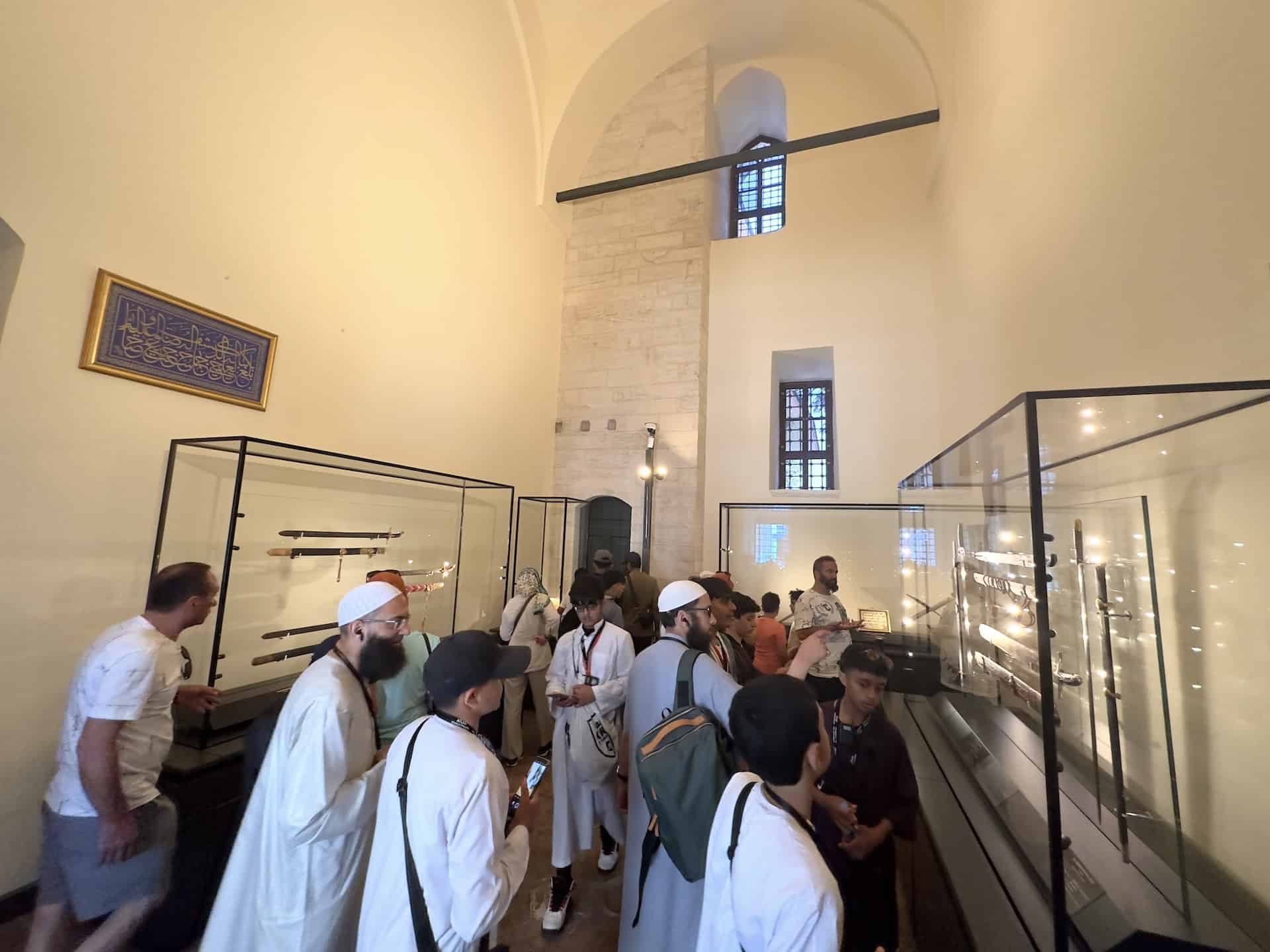
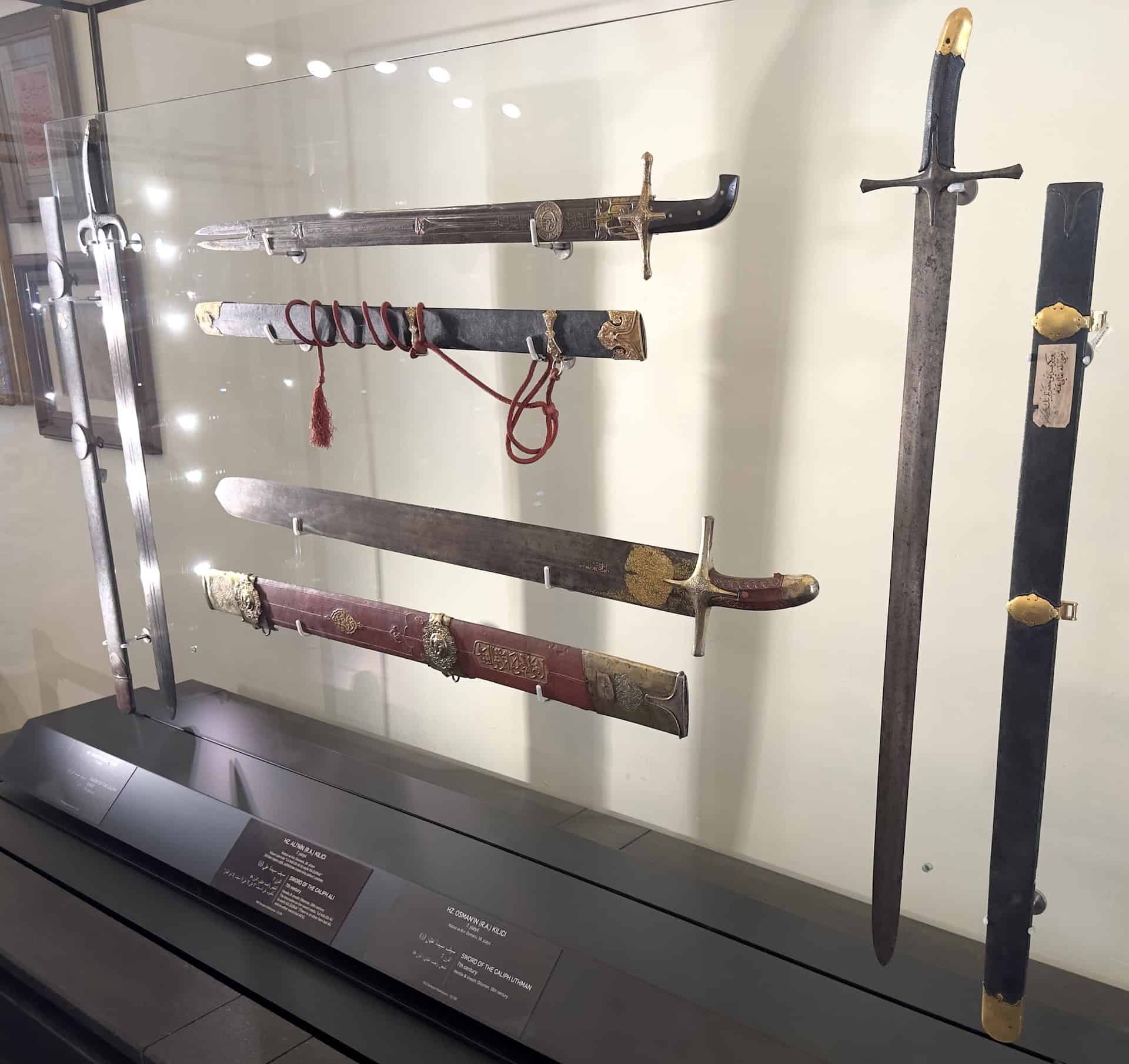
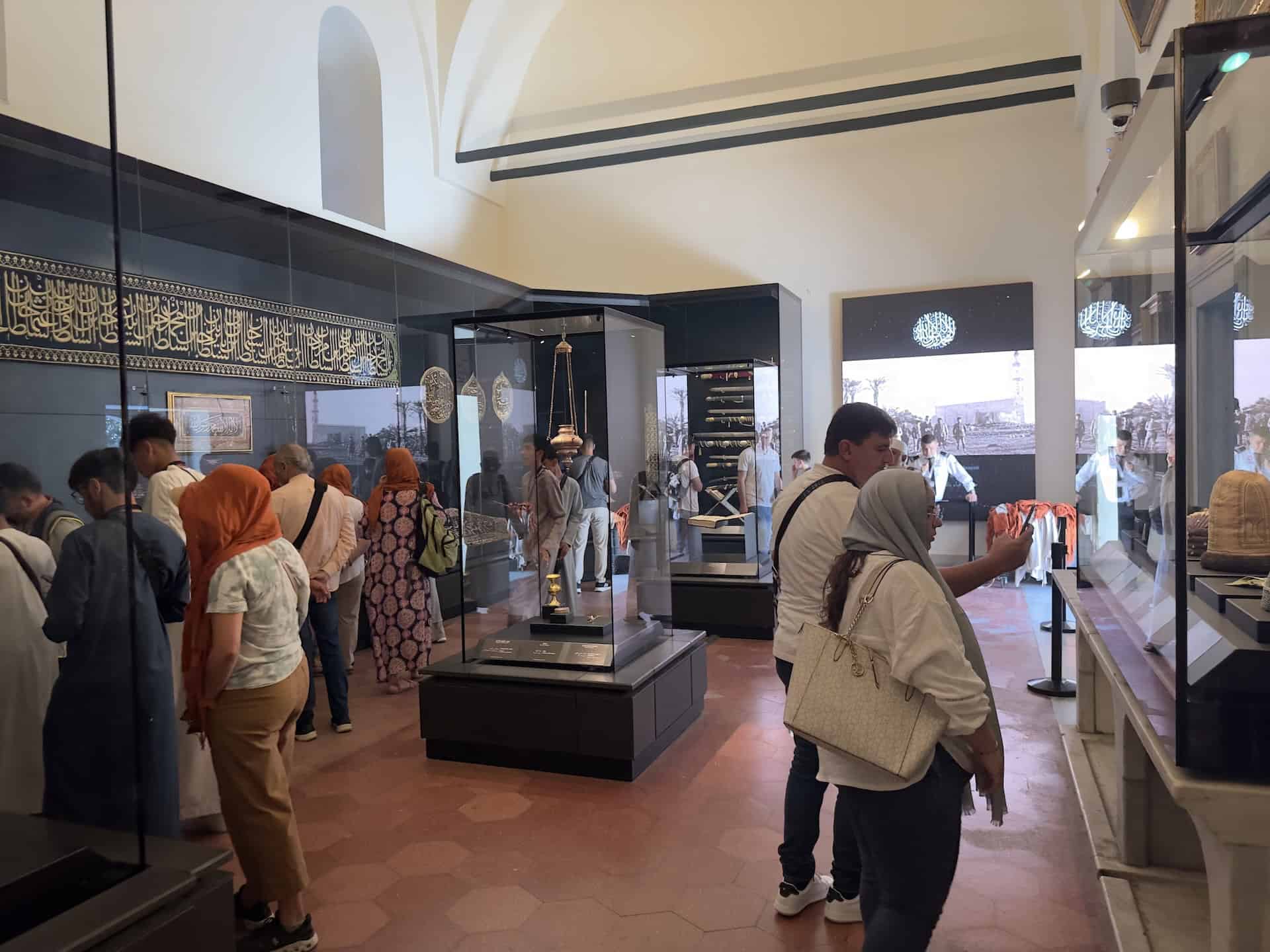
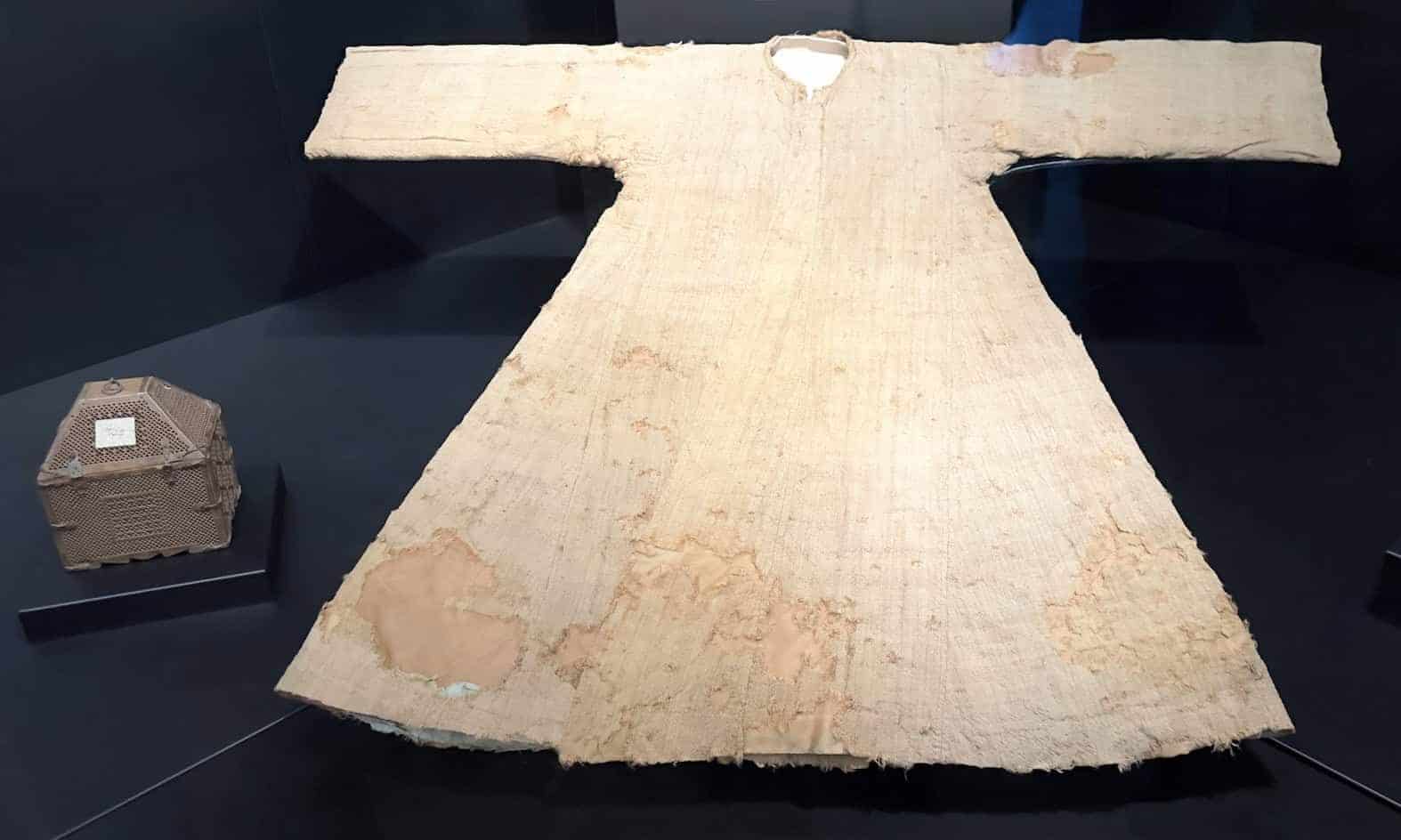

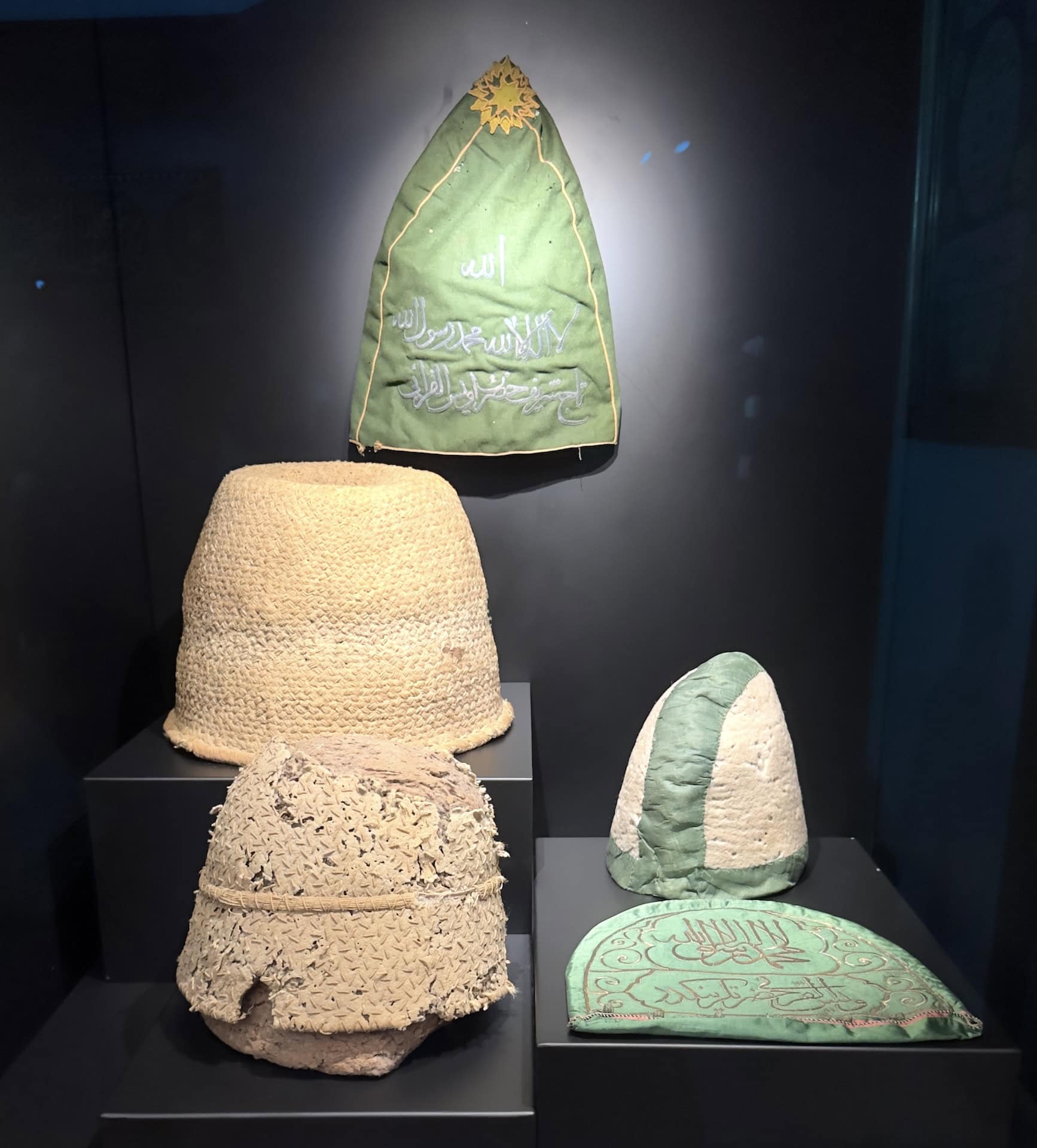
Dormitory of the Treasury
The Dormitory of the Treasury (Hazine Koğuşu) sits on the north end of the 3rd Courtyard. It was built during the reign of Mehmed the Conqueror and was restored by Abdülmecid I after it was damaged by fire in 1856. It was managed by the Treasury Ward and housed staff responsible for guarding the Imperial Treasury. The building underwent a 9-year restoration and reopened to the public on April 20, 2023.
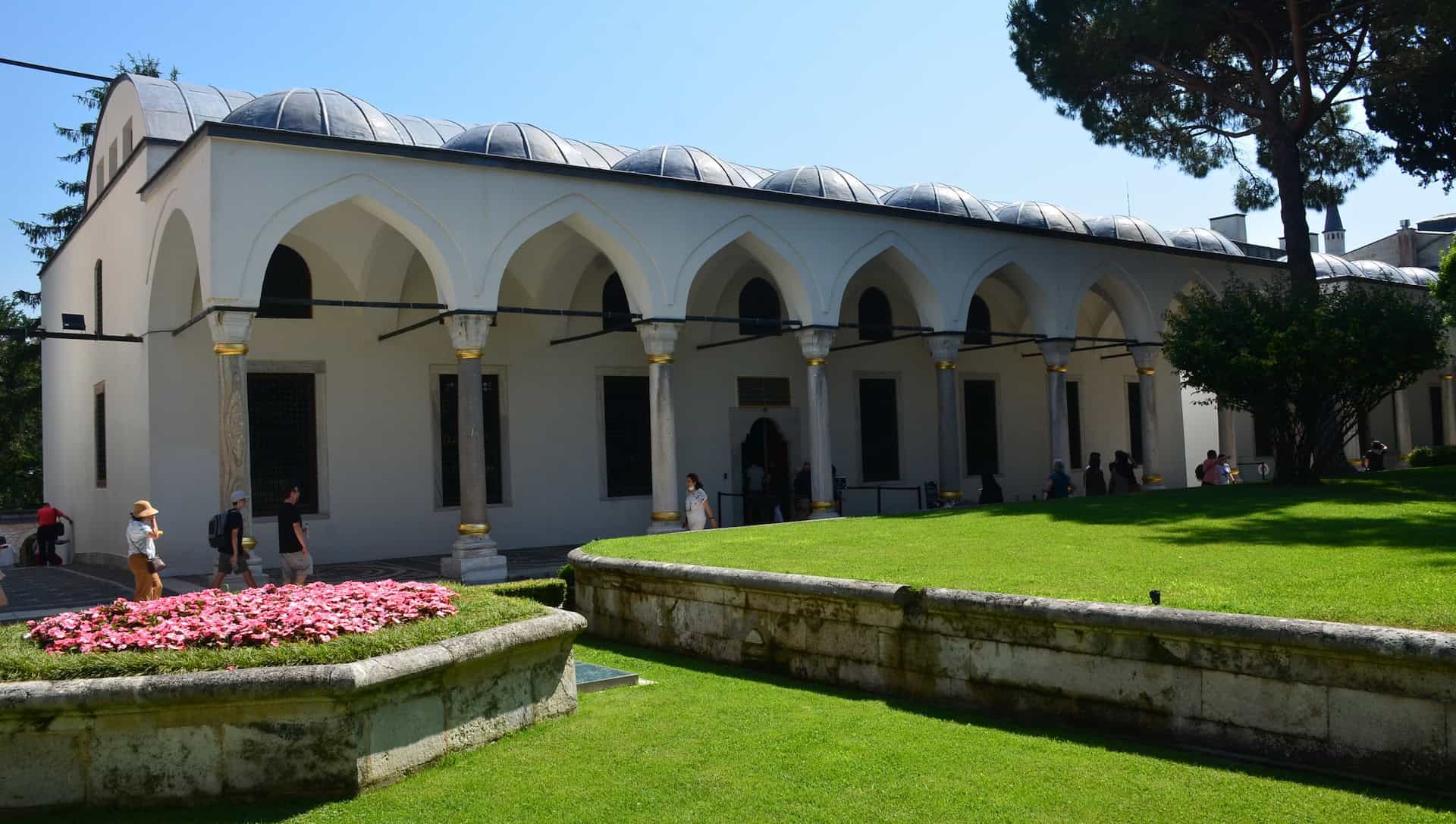
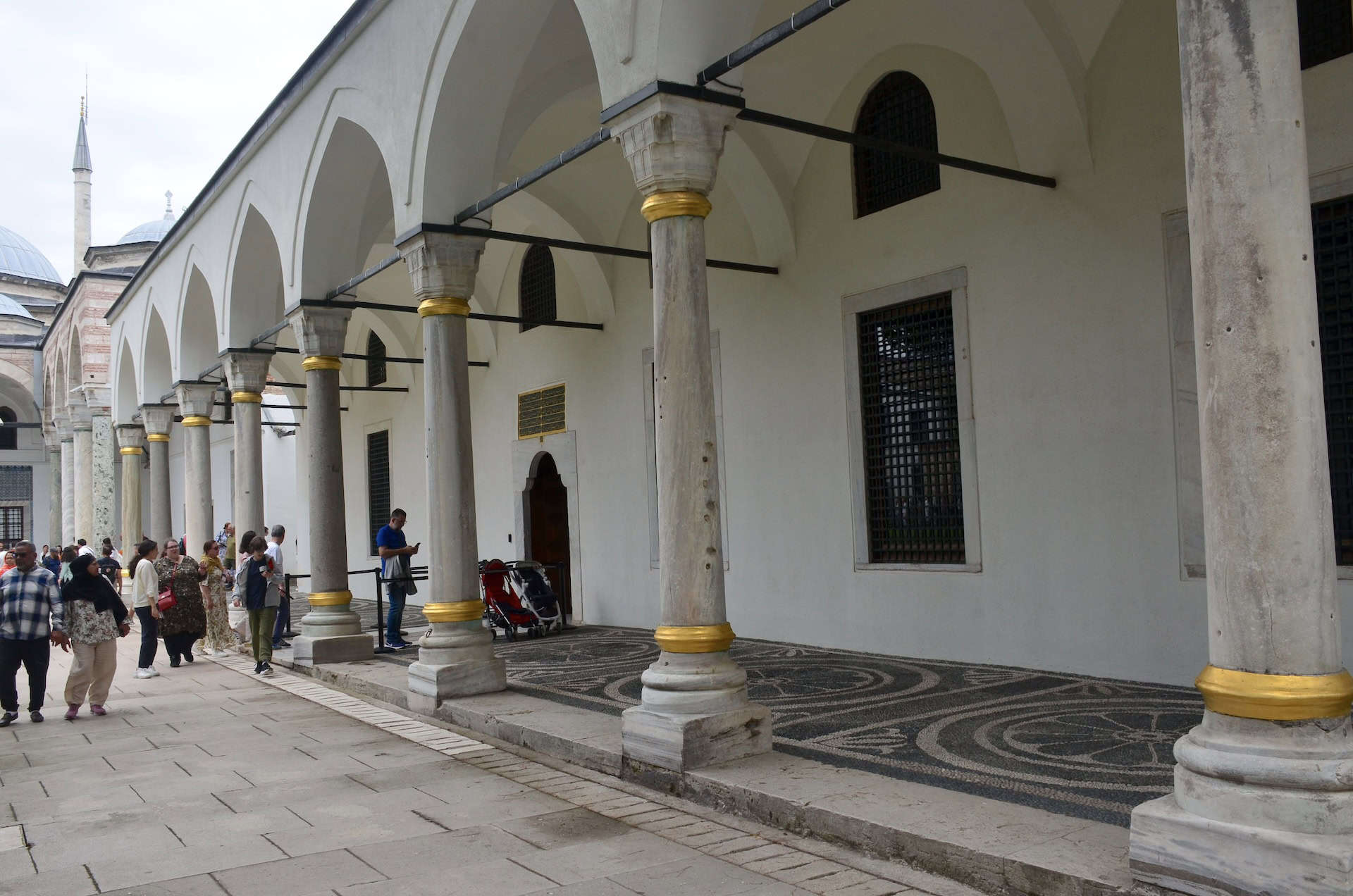
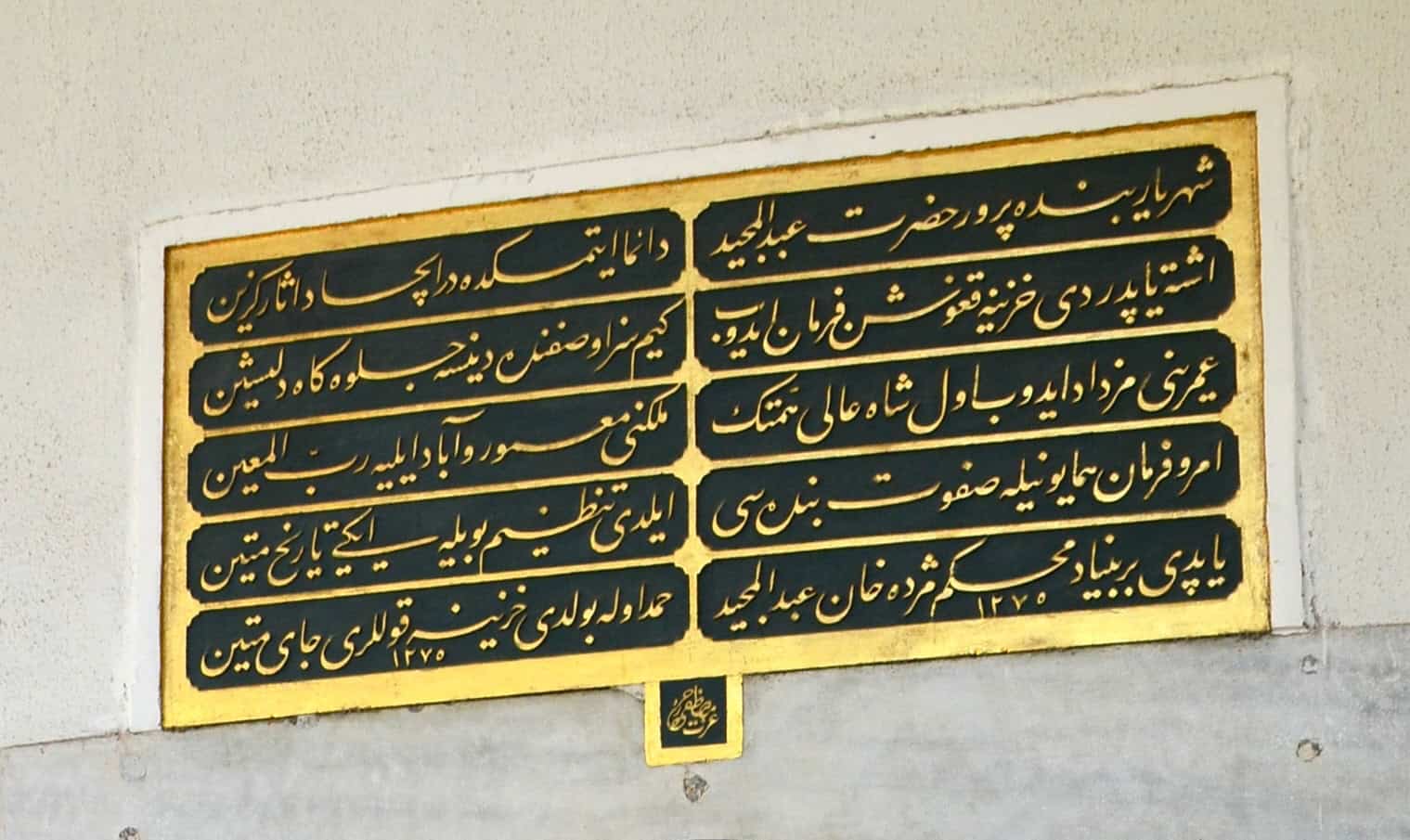
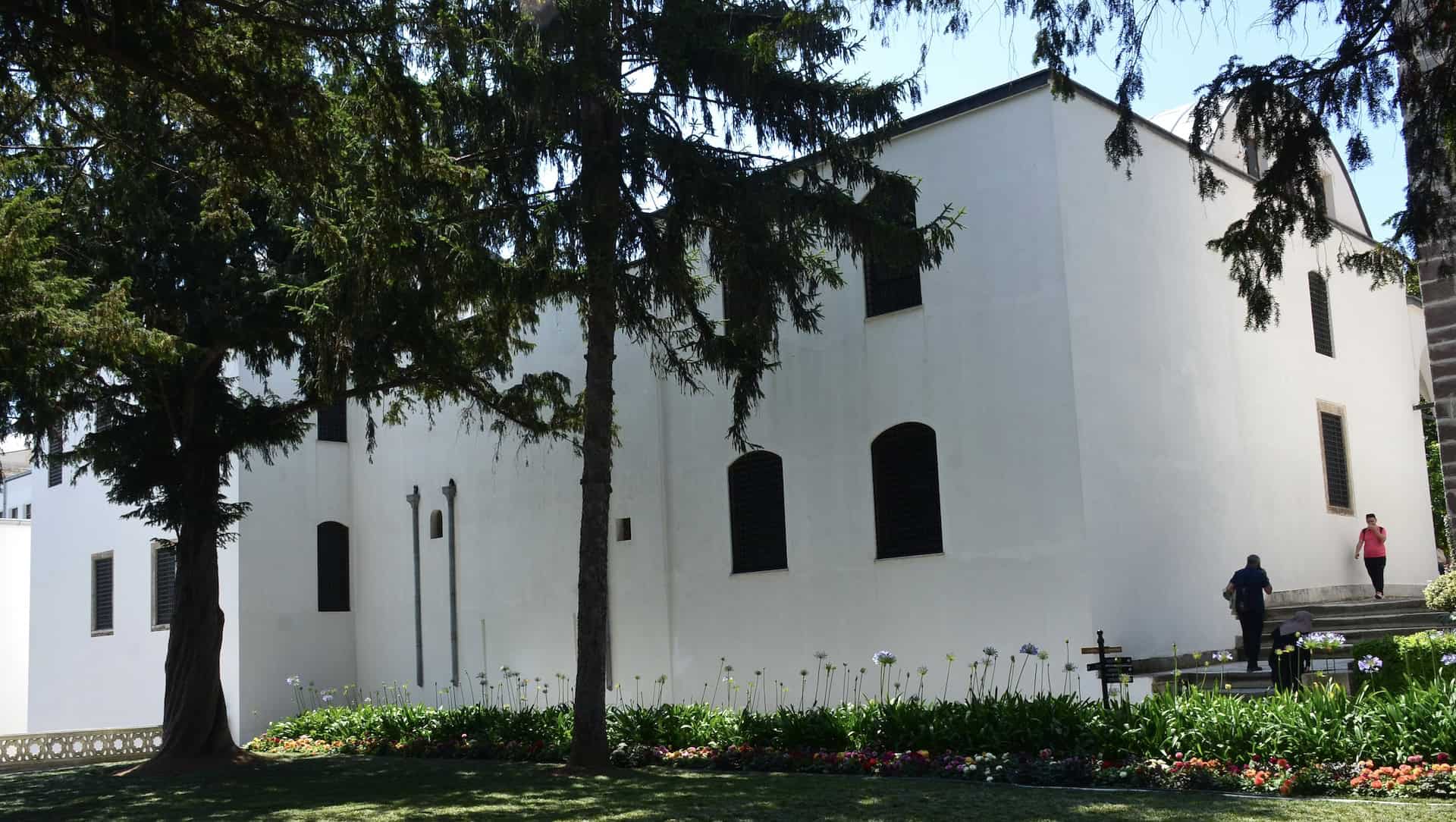
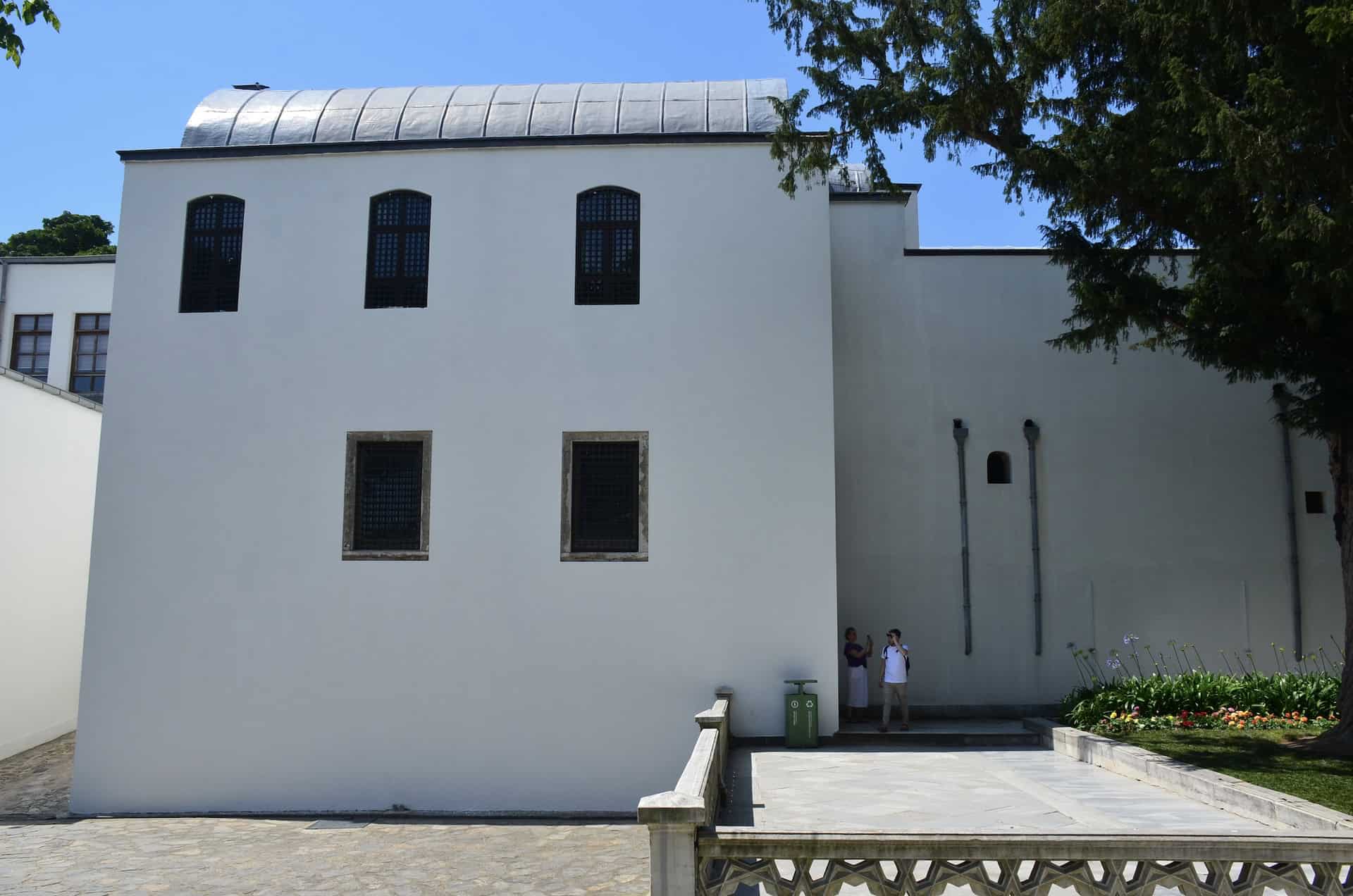
Calligraphy Collection at Topkapi Palace
The Dormitory of the Treasury houses a collection of calligraphy. Some of the finest examples of Ottoman calligraphy and sultan’s tughras are on display.
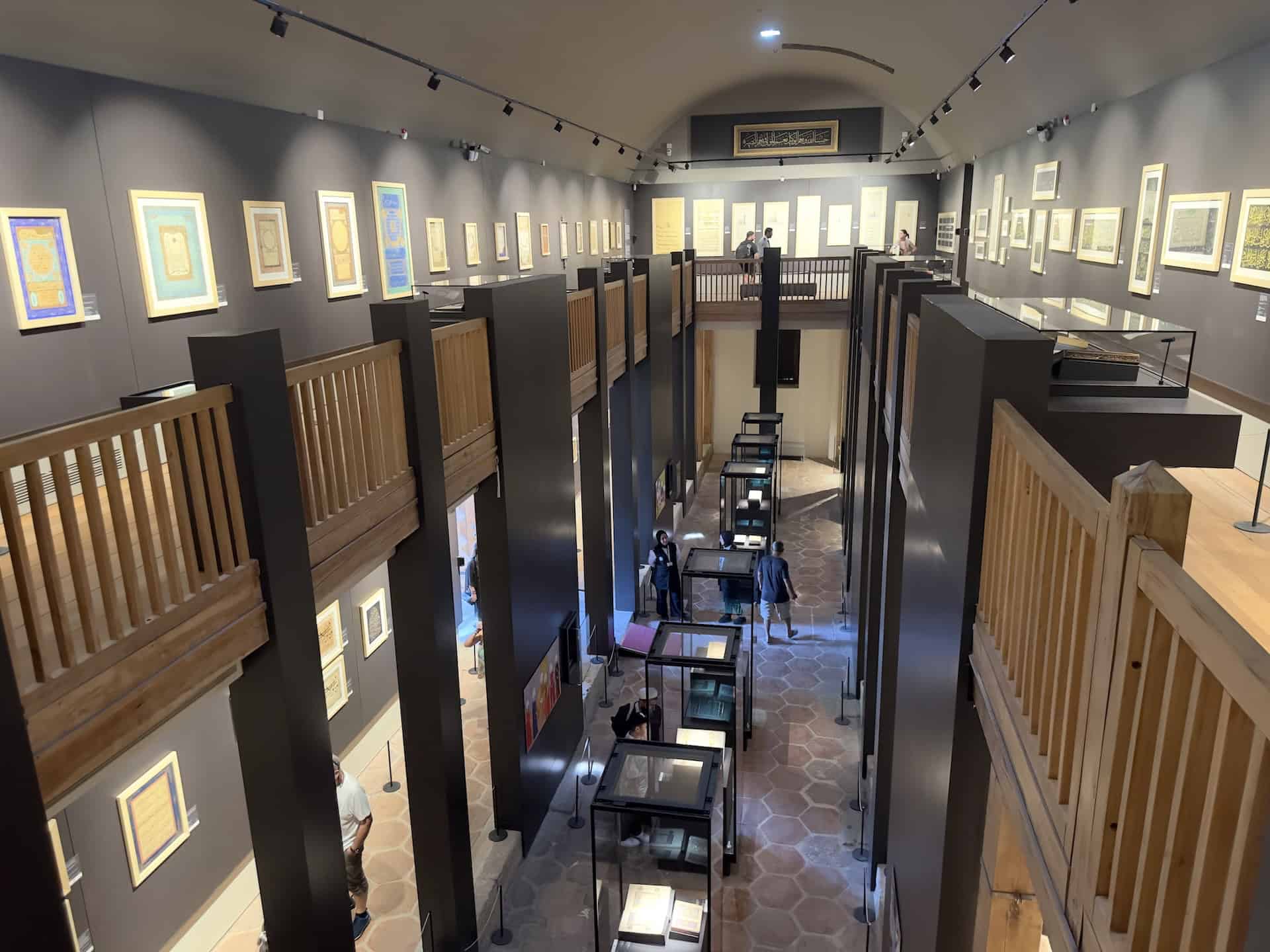
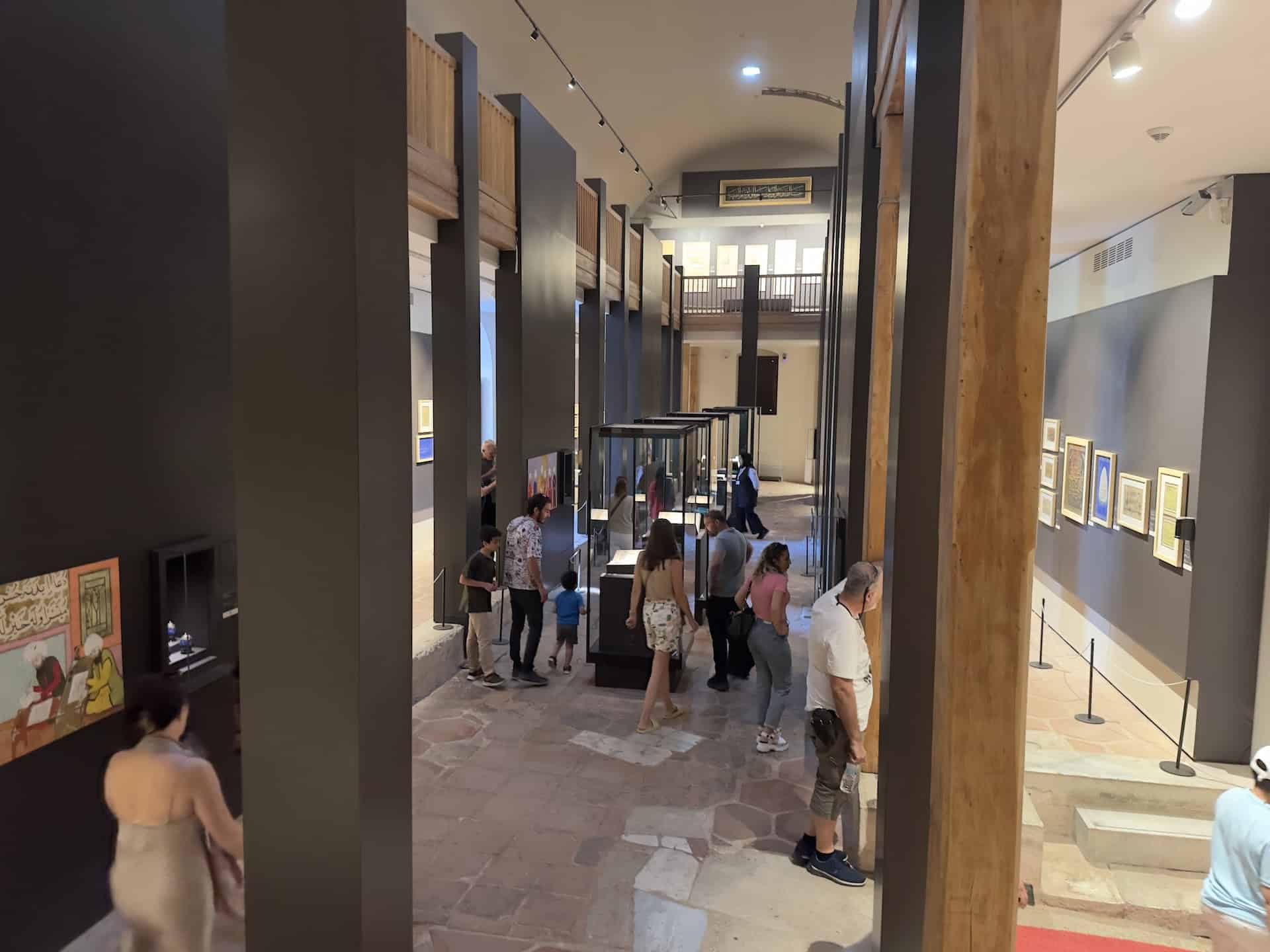

The main room contains examples of calligraphy lining the walls on both the lower and upper floor. In the center are Qurans.

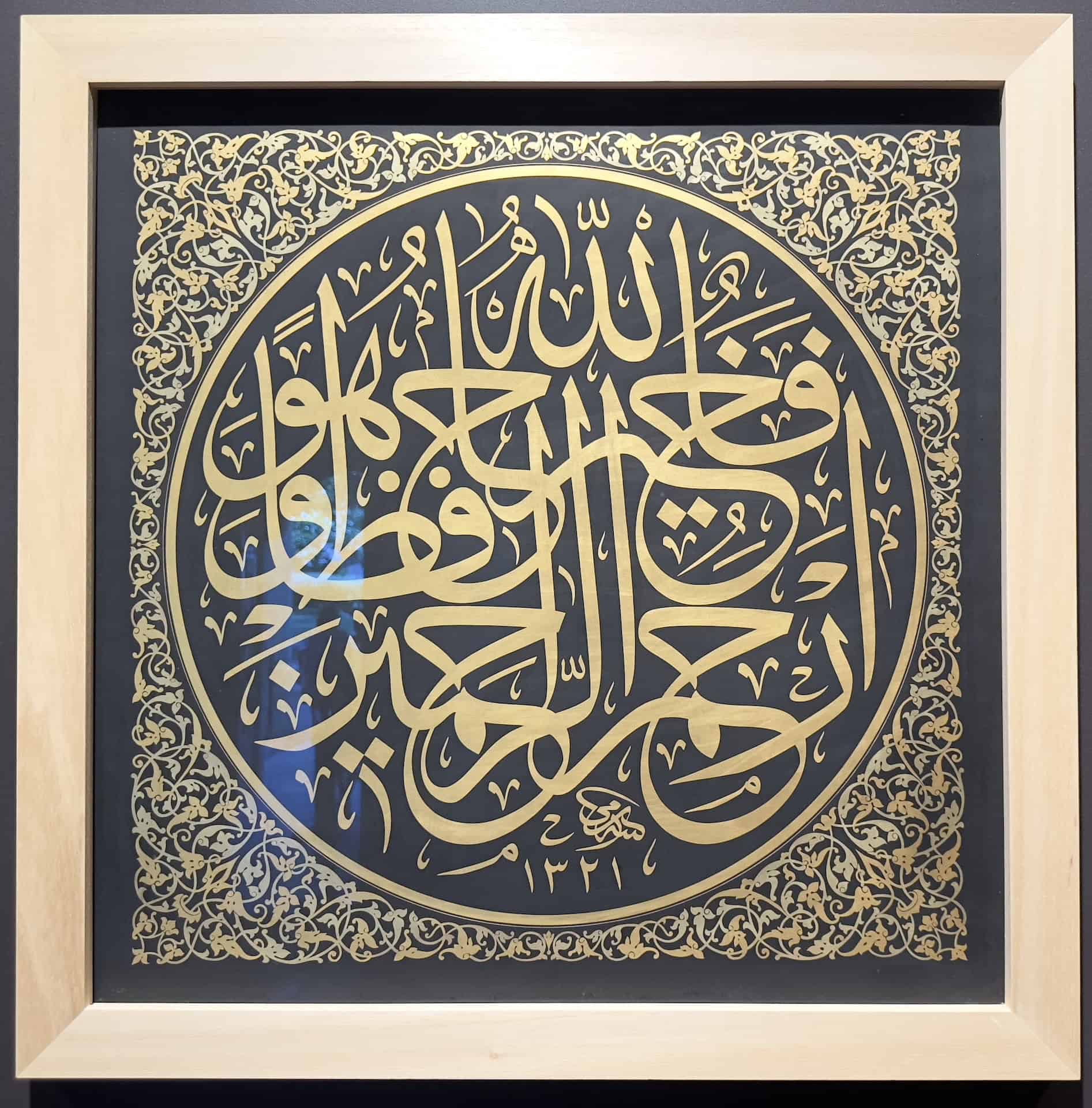
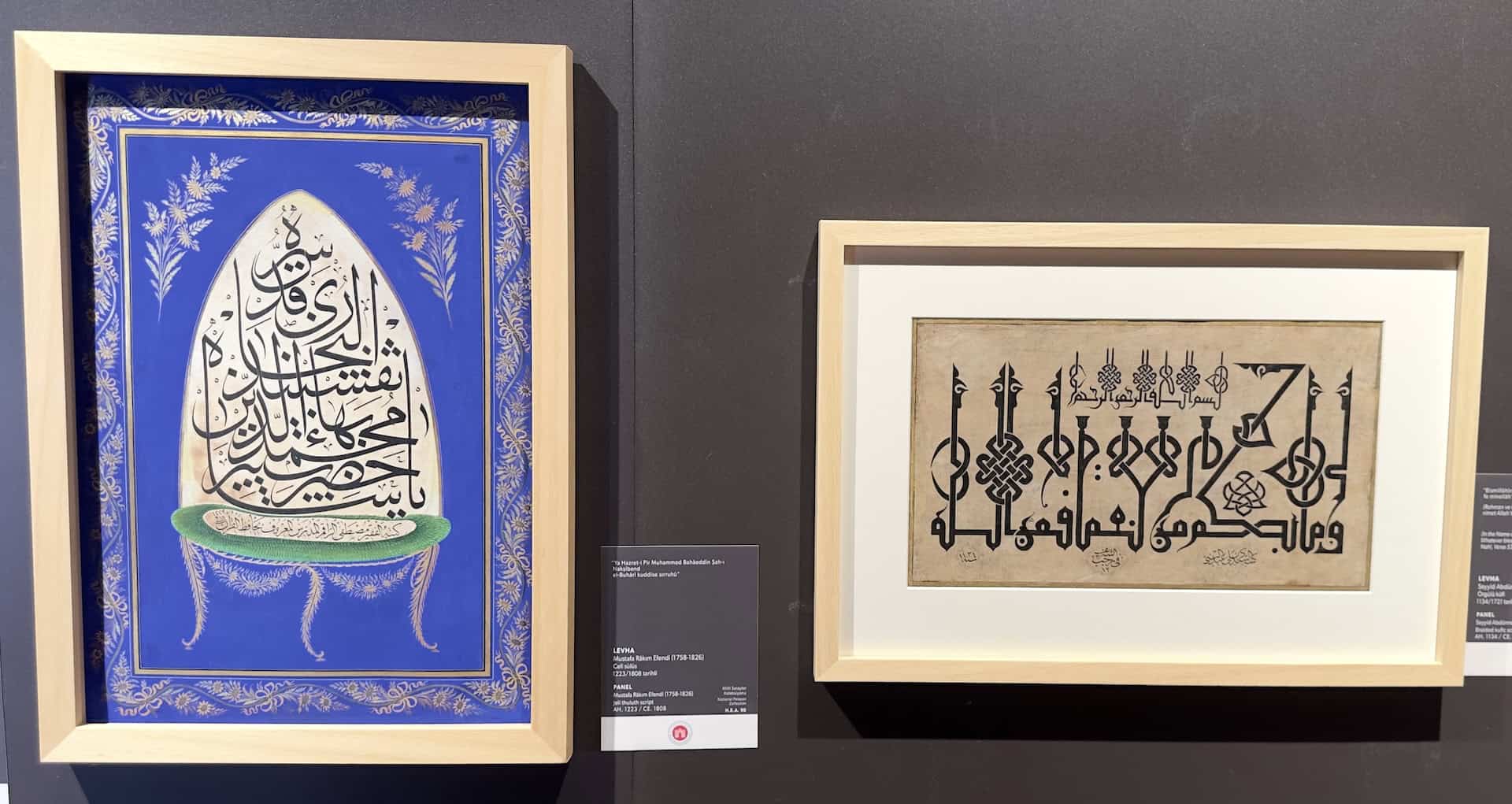
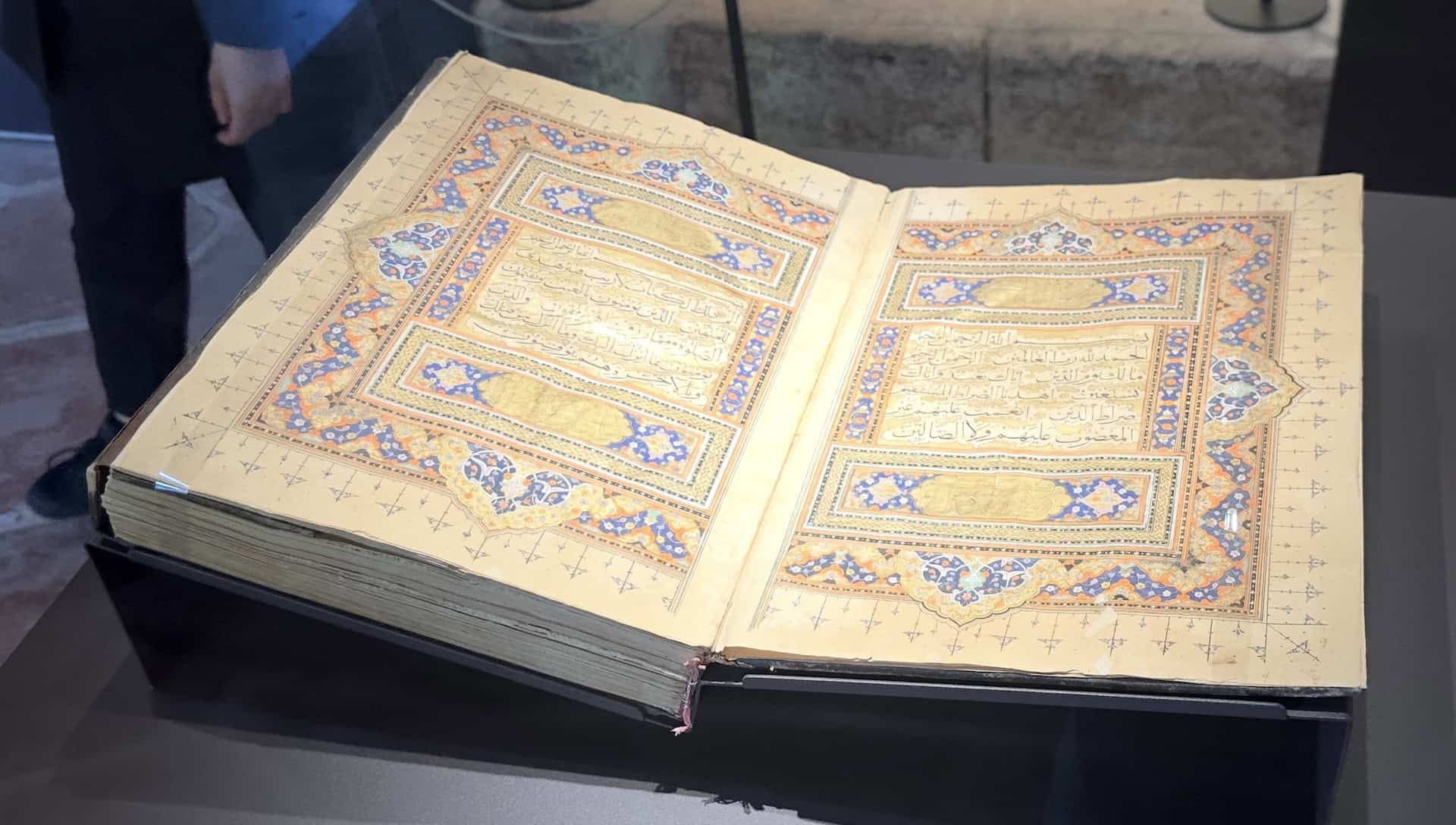
A room on the ground floor displays tughras. Tughras were the calligraphic seals and signatures of the Ottoman sultans. Each sultan had a unique tughra that appeared on official documents. They consisted of the sultan’s and his father’s names as well as other titles.
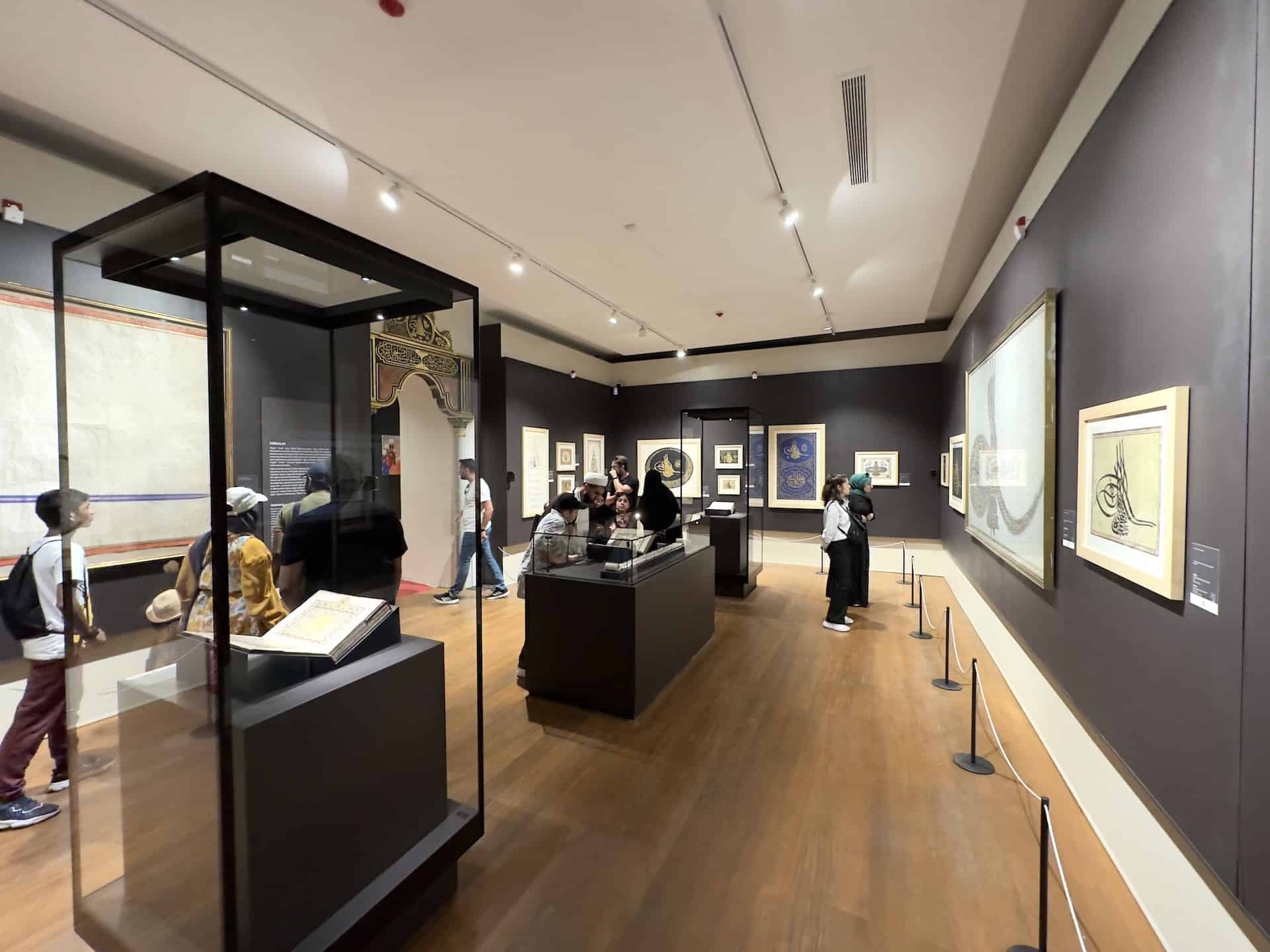
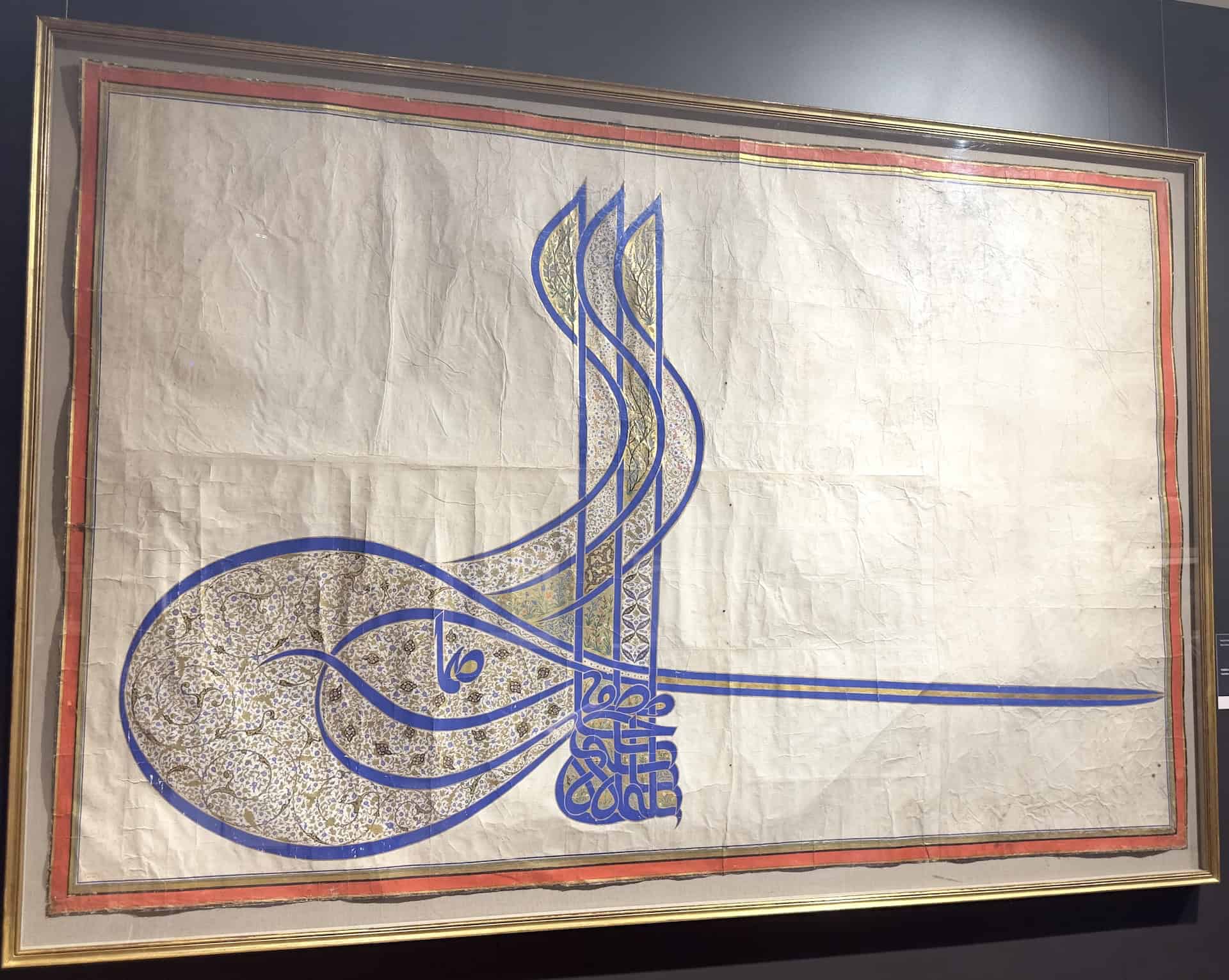
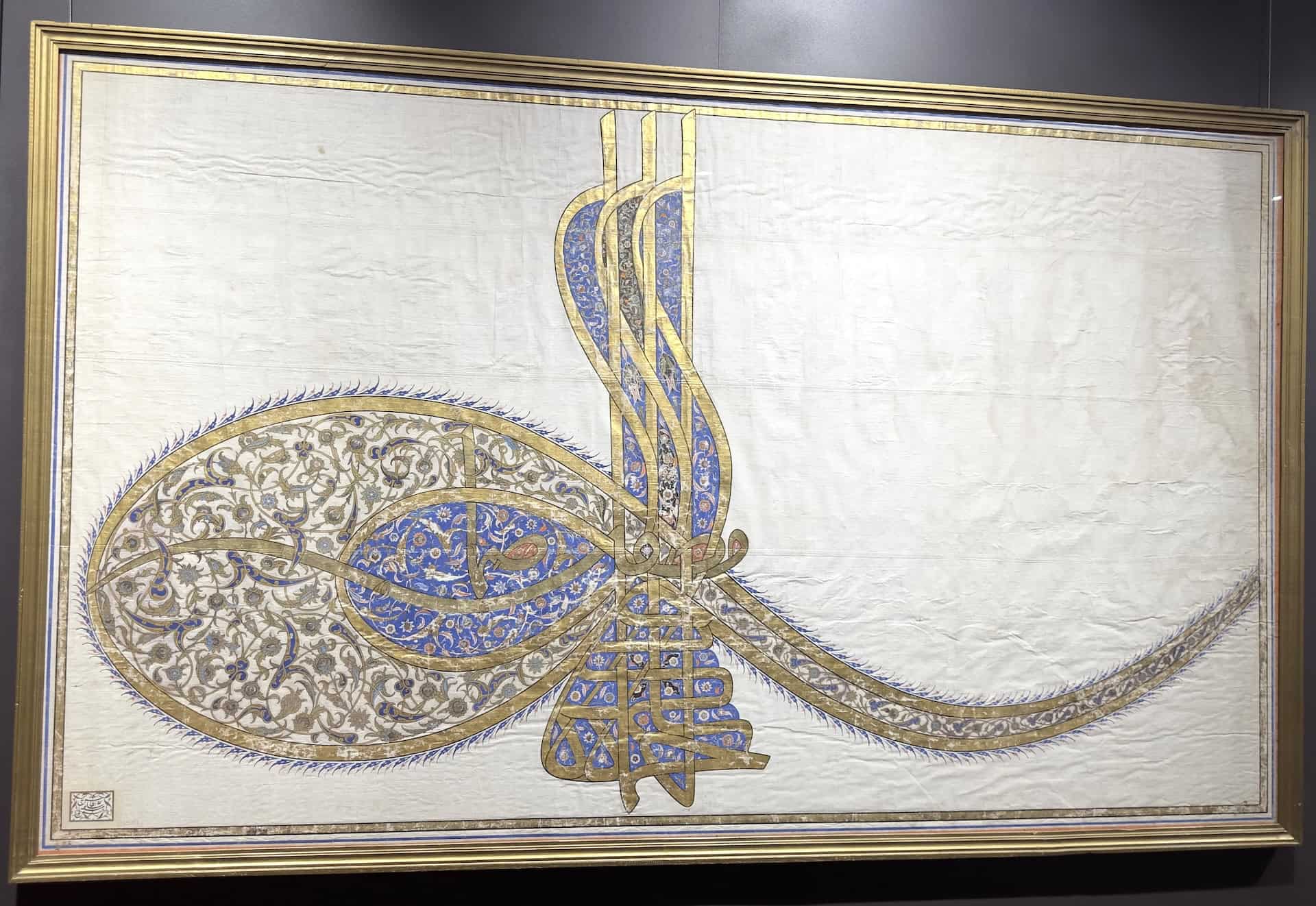
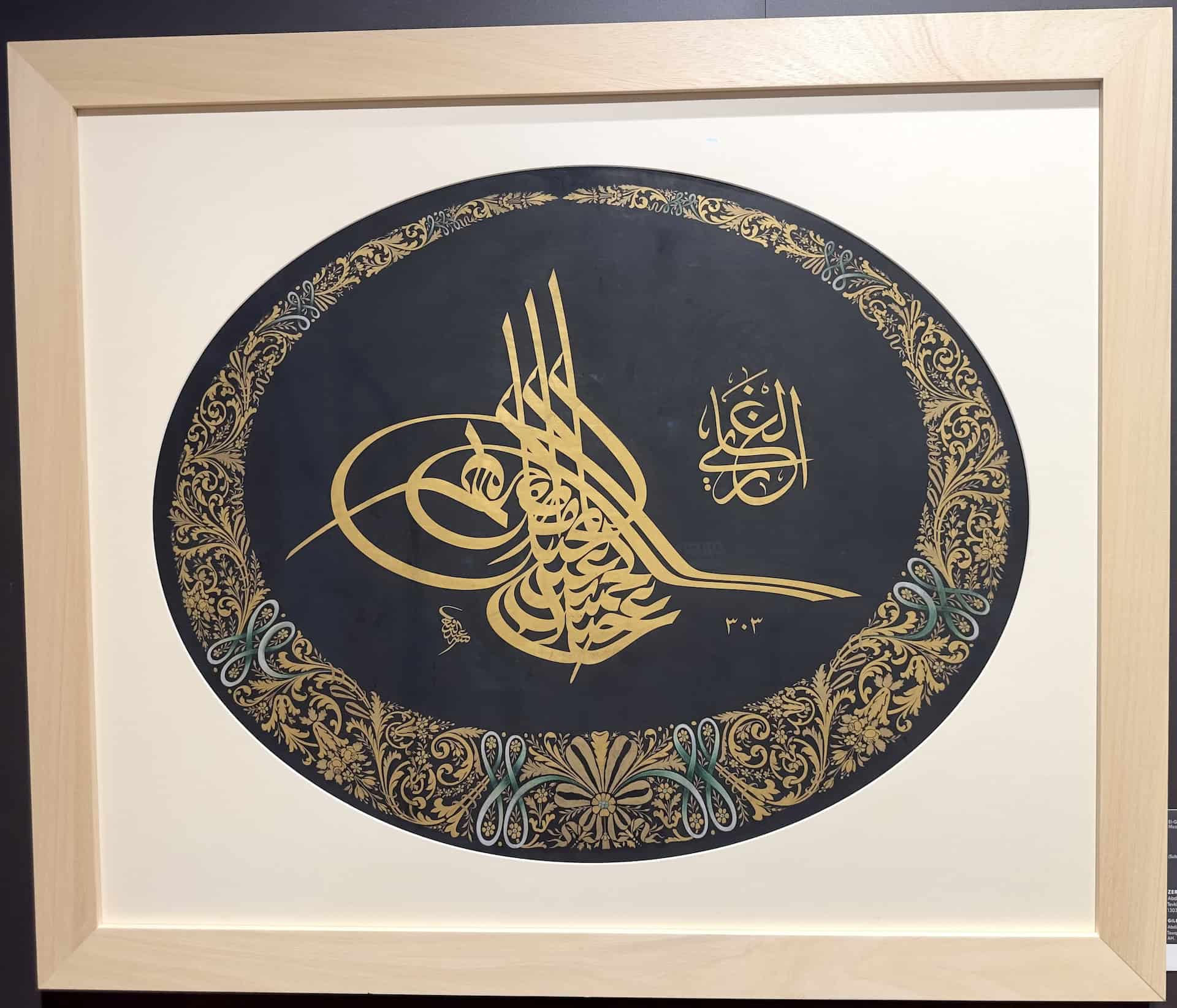
Upstairs is a room displaying more calligraphic panels as well as calligraphy sets and ink pots. The sets include knives, scissors, pens, and pen boxes.

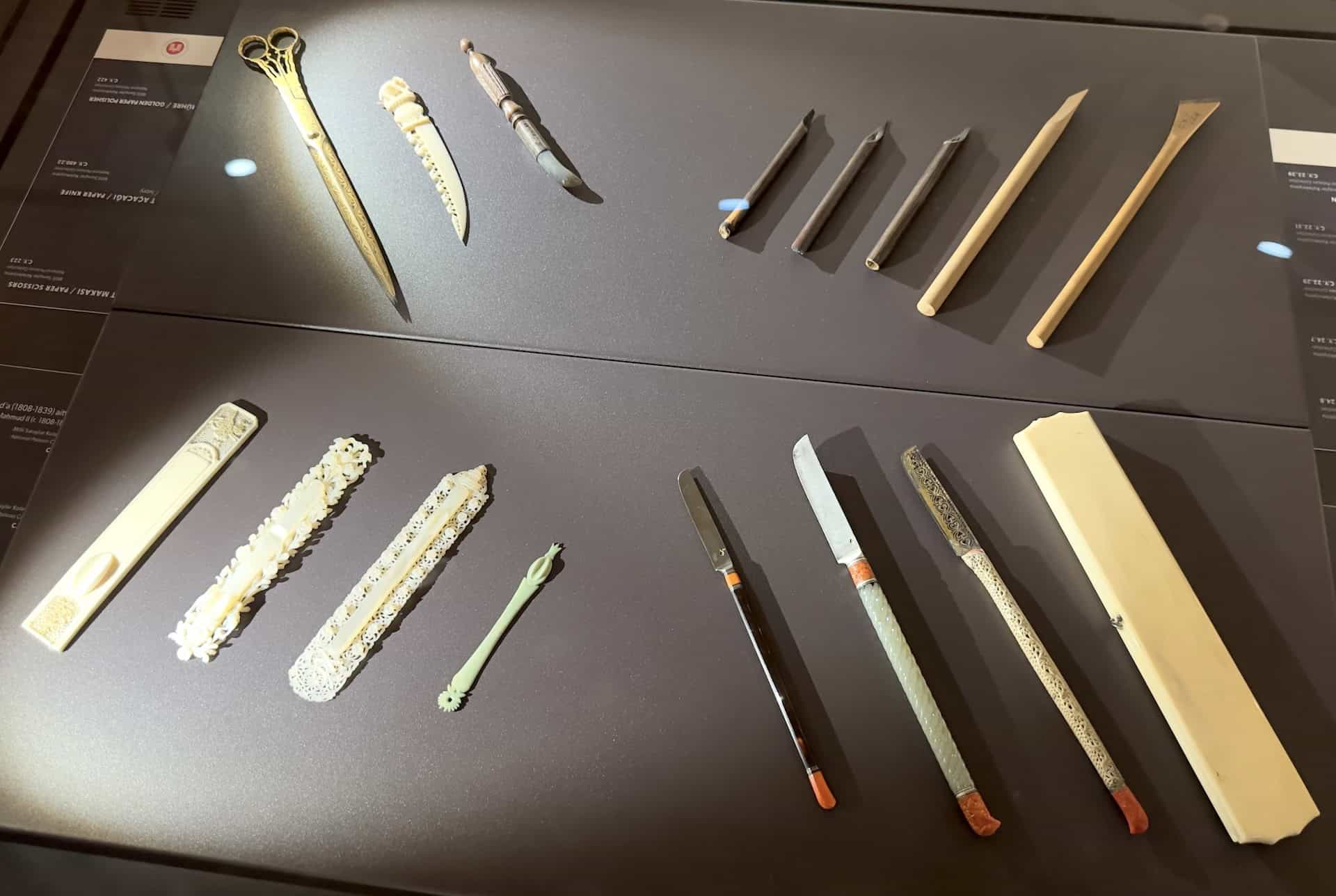
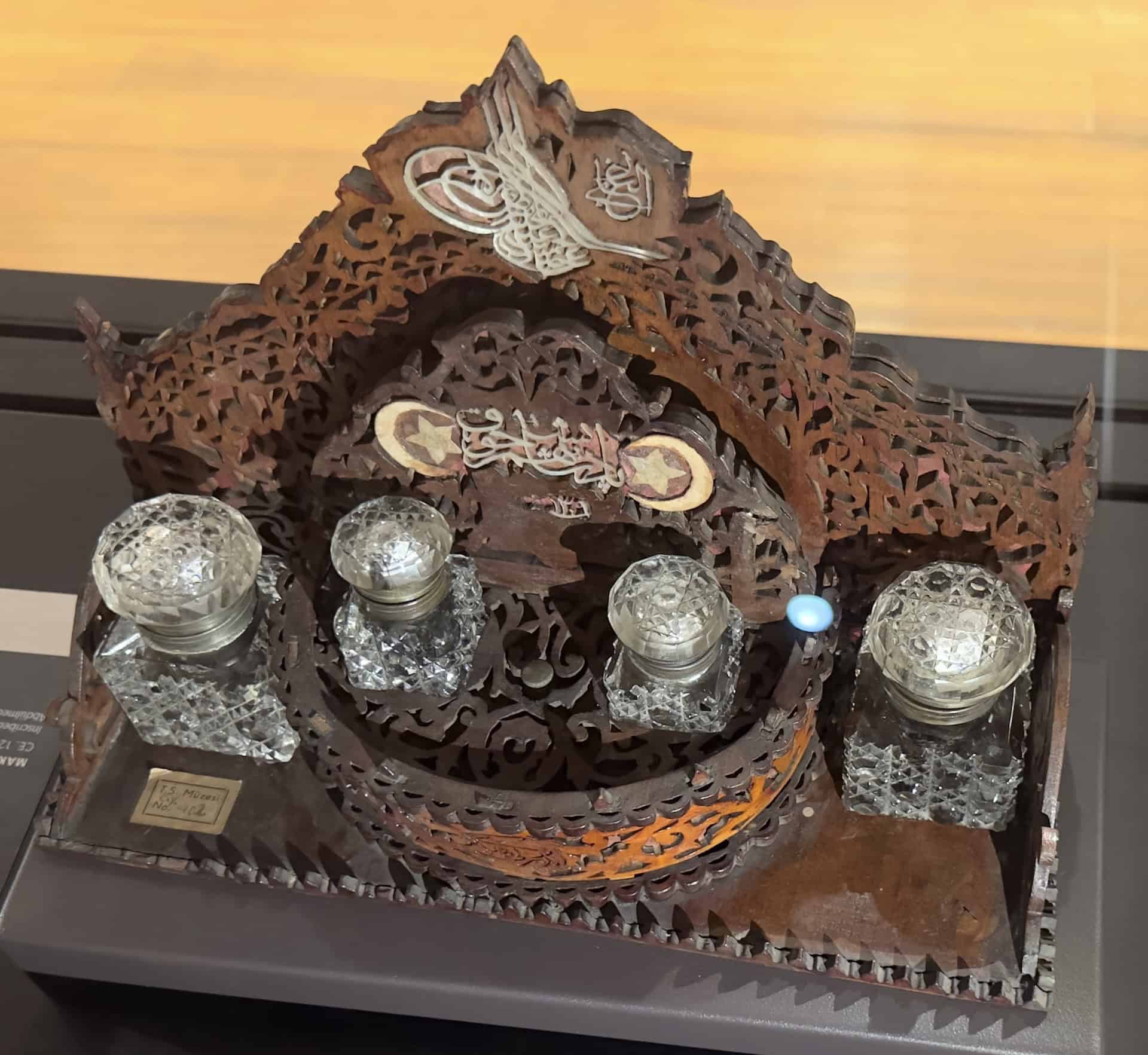
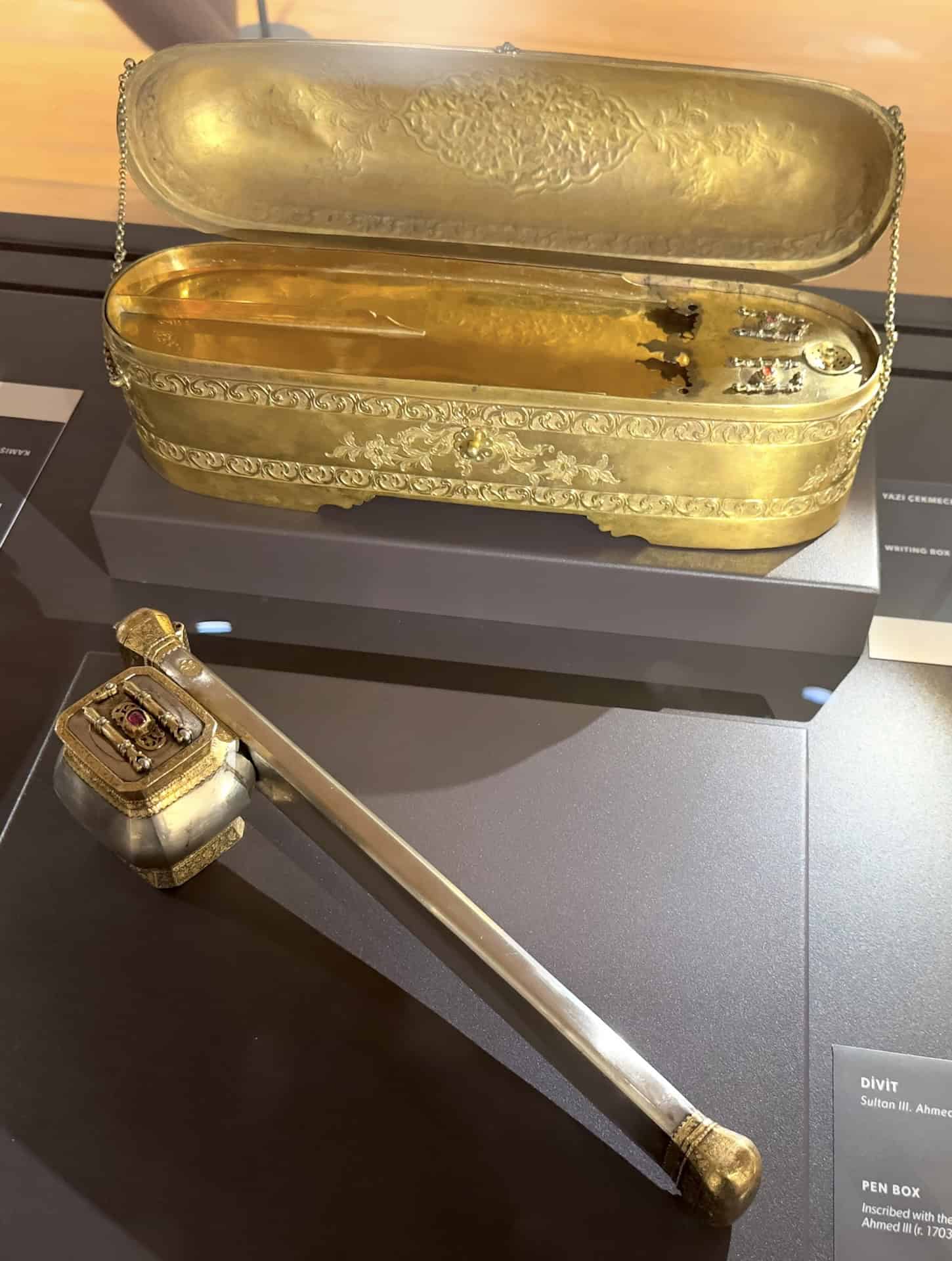

Dormitory of the Pantry Ward
Also on the north side is the Dormitory of the Pantry Ward (Kilerli Koğuşu). The pantry ward was responsible for preparing the Sultan’s meals, setting the table, serving the food, clearing the table, and washing the dishes. They would also meet the food and drink needs of the Imperial Harem, and supply and light candles for the rooms and mosques of the palace.
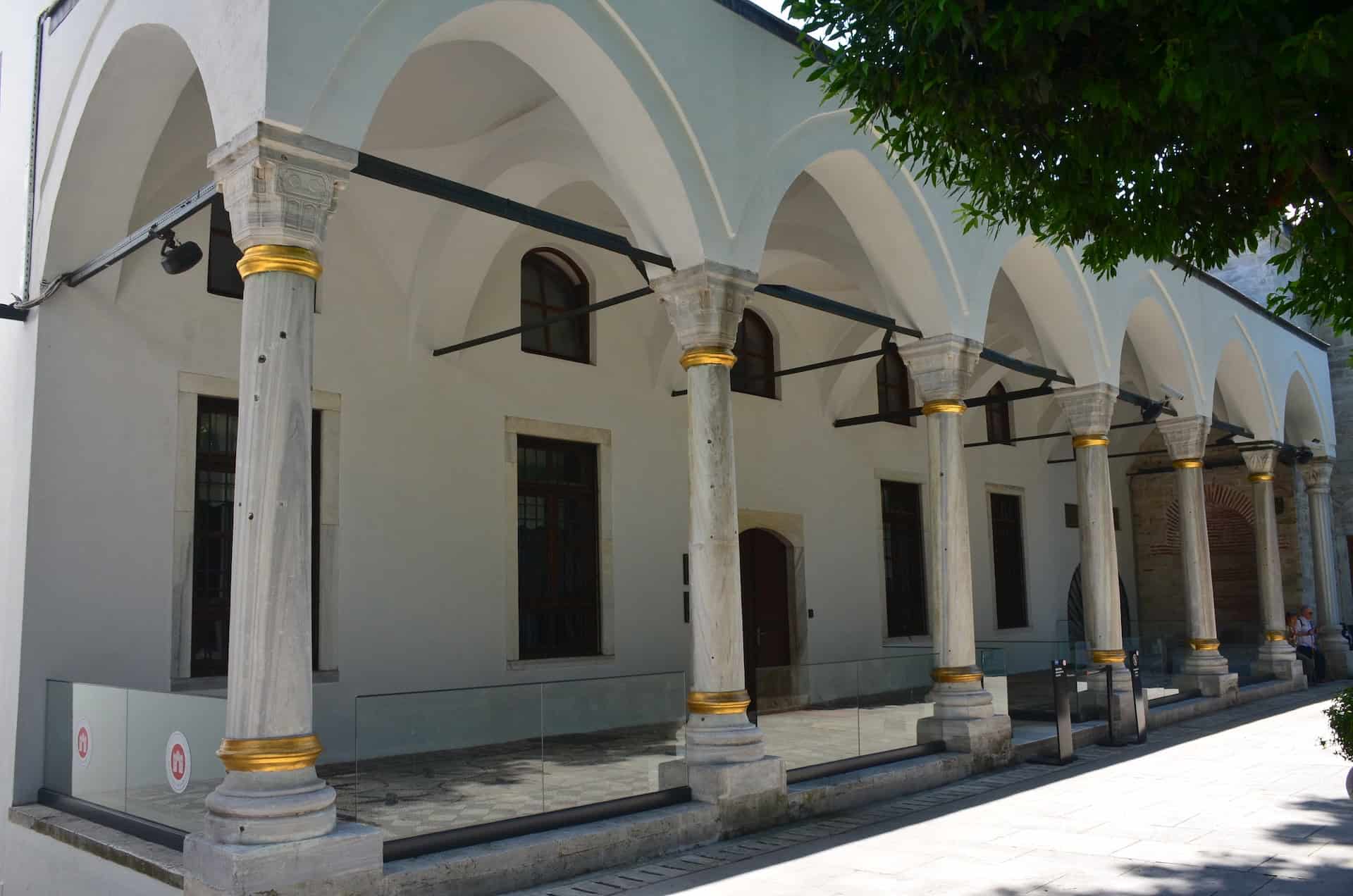
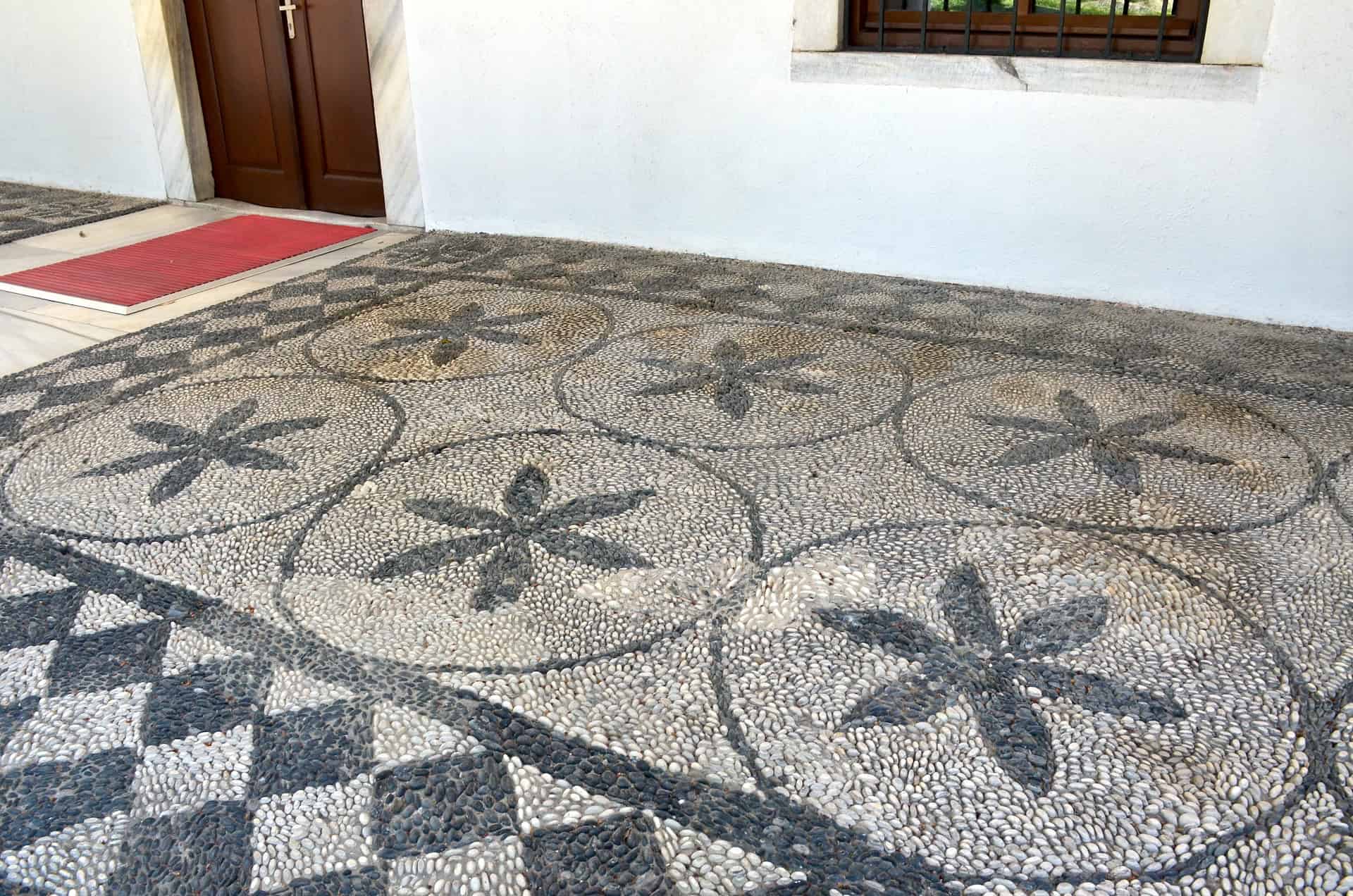
The Dormitory of the Pantry Ward was damaged by fire in 1856 and rebuilt. It’s now used as an office for the Topkapi Palace Museum Directorate. The building sits above an entrance to the 4th Courtyard.

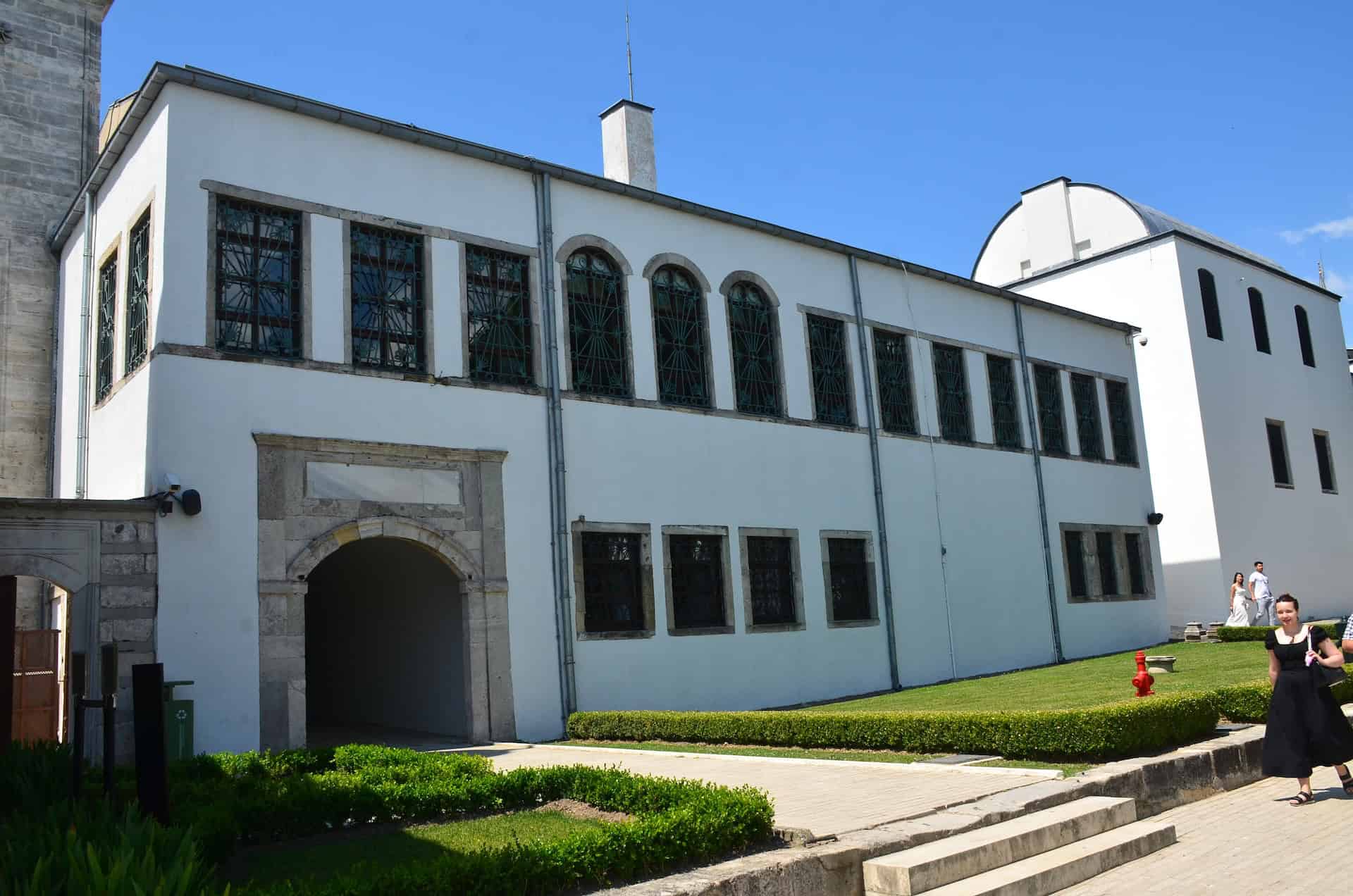
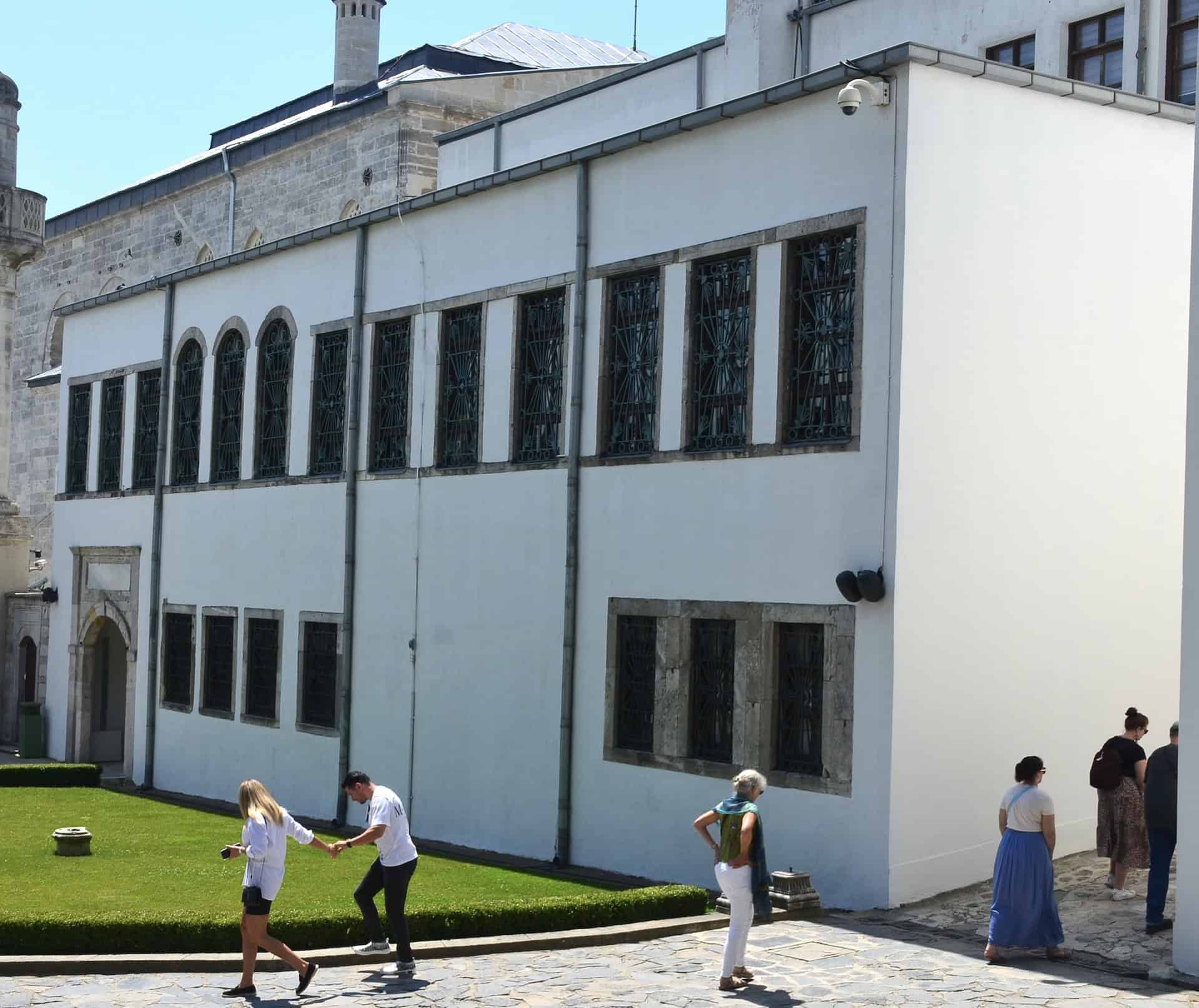
Conqueror’s Pavilion
On the northeast corner is the Conqueror’s Pavilion (Fatih Köşkü), which was built between 1462 and 1463 by Mehmed the Conqueror. It’s one of the oldest surviving buildings in the palace. The pavilion features four chambers accessible via a colonnaded portico facing the courtyard. There’s also a terrace.
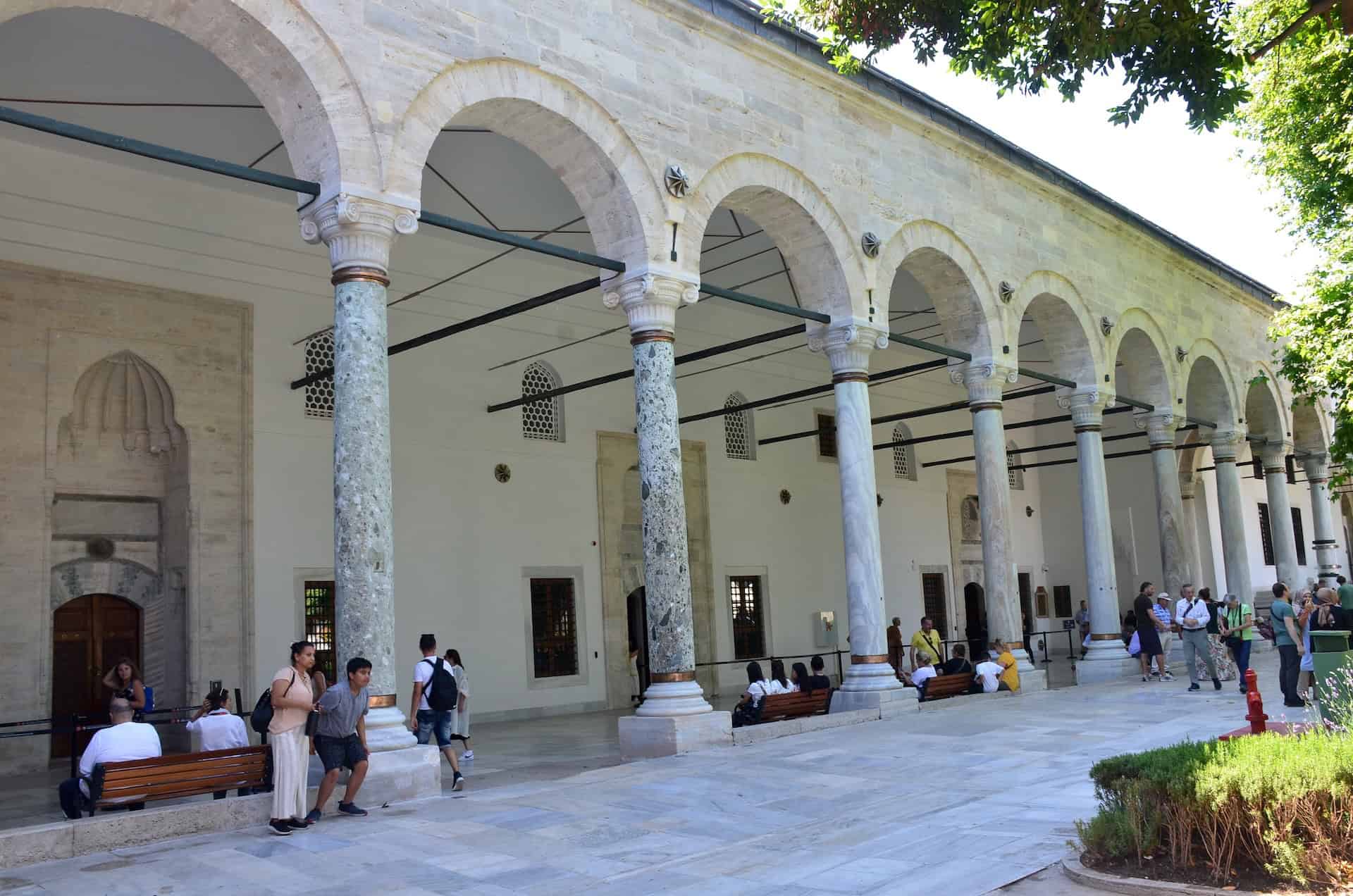
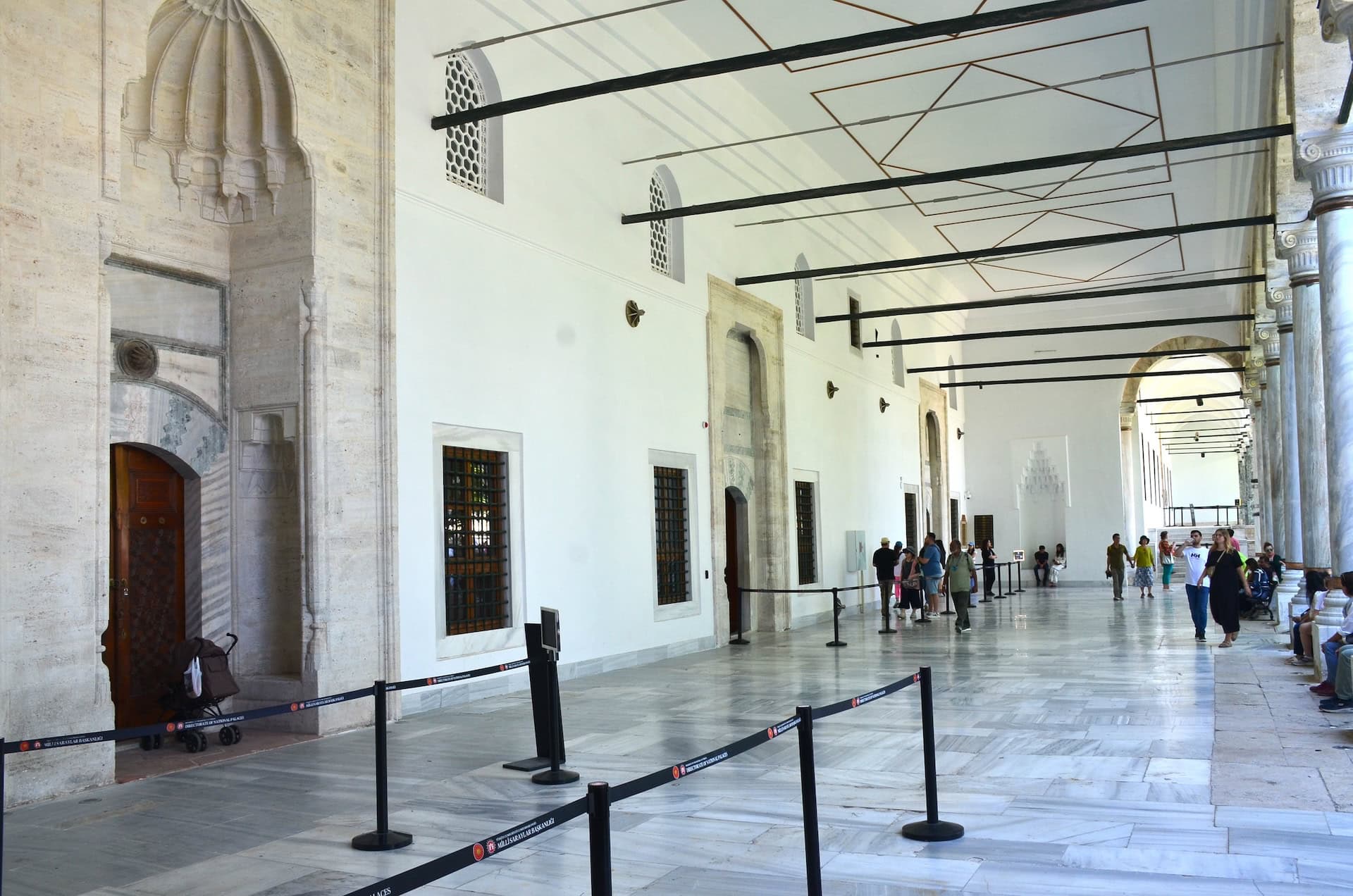

The terrace is open on two sides and contains a fountain in the middle. There are spectacular views of the Bosporus and Asian side of Istanbul.
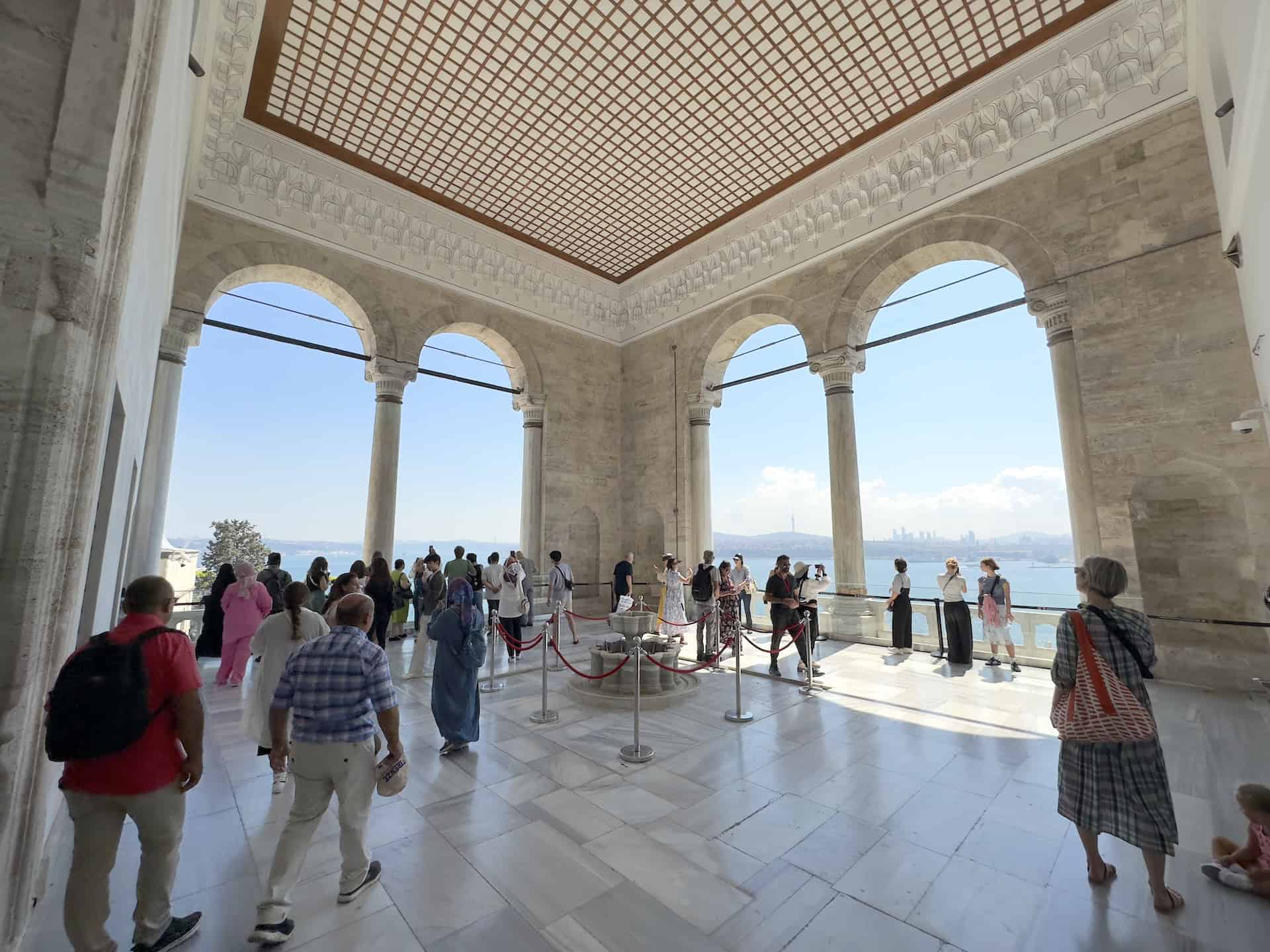
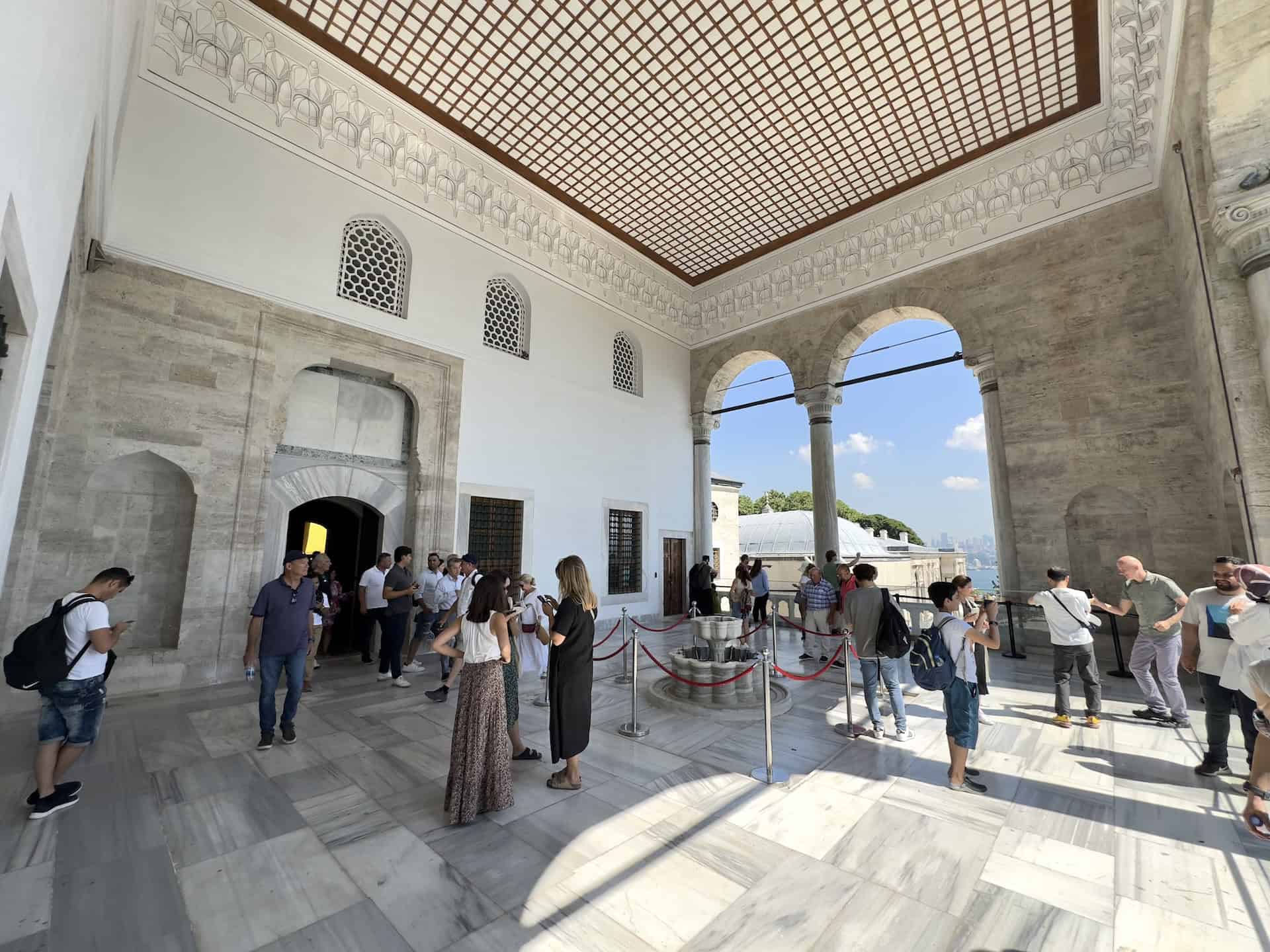
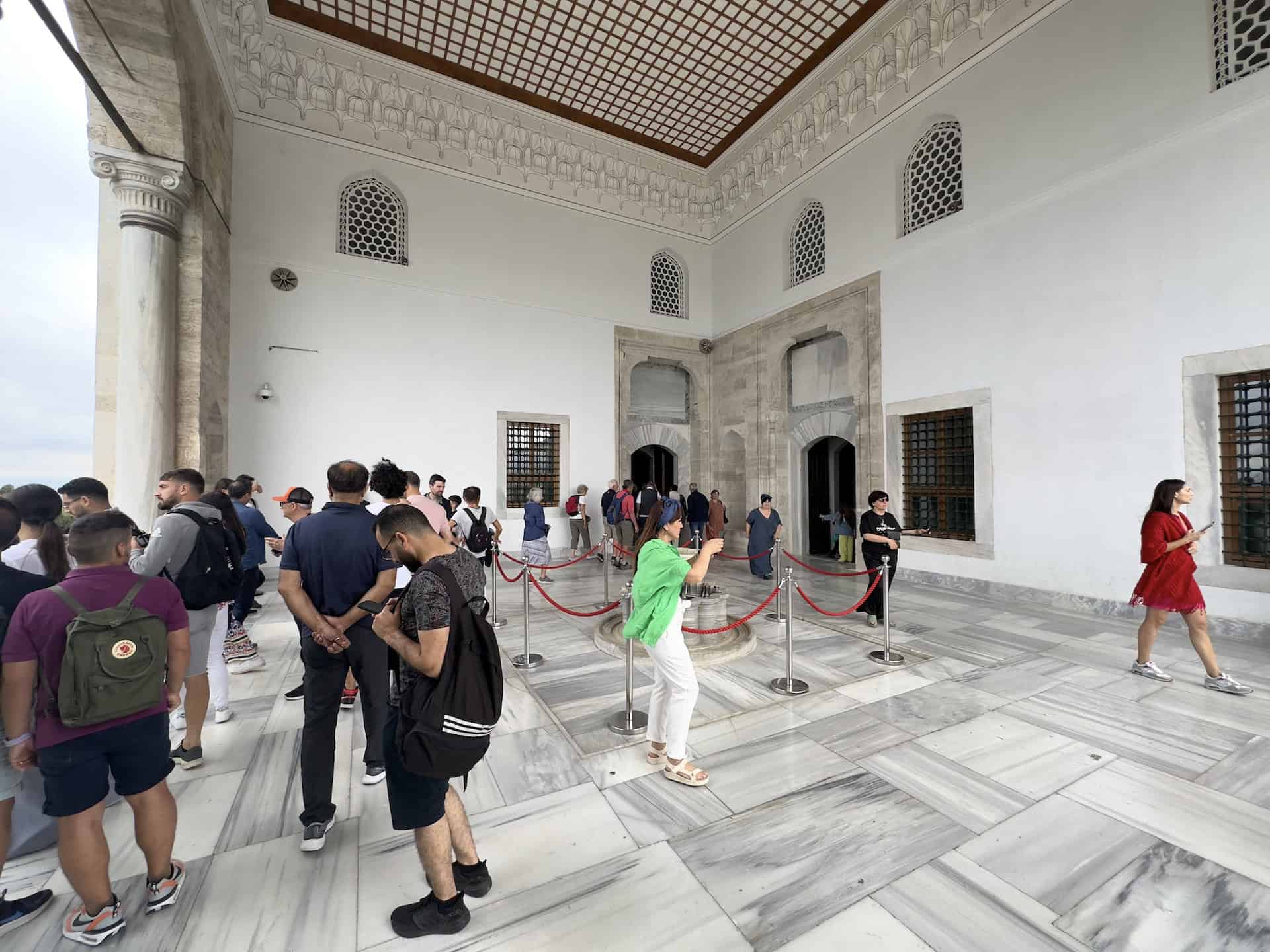

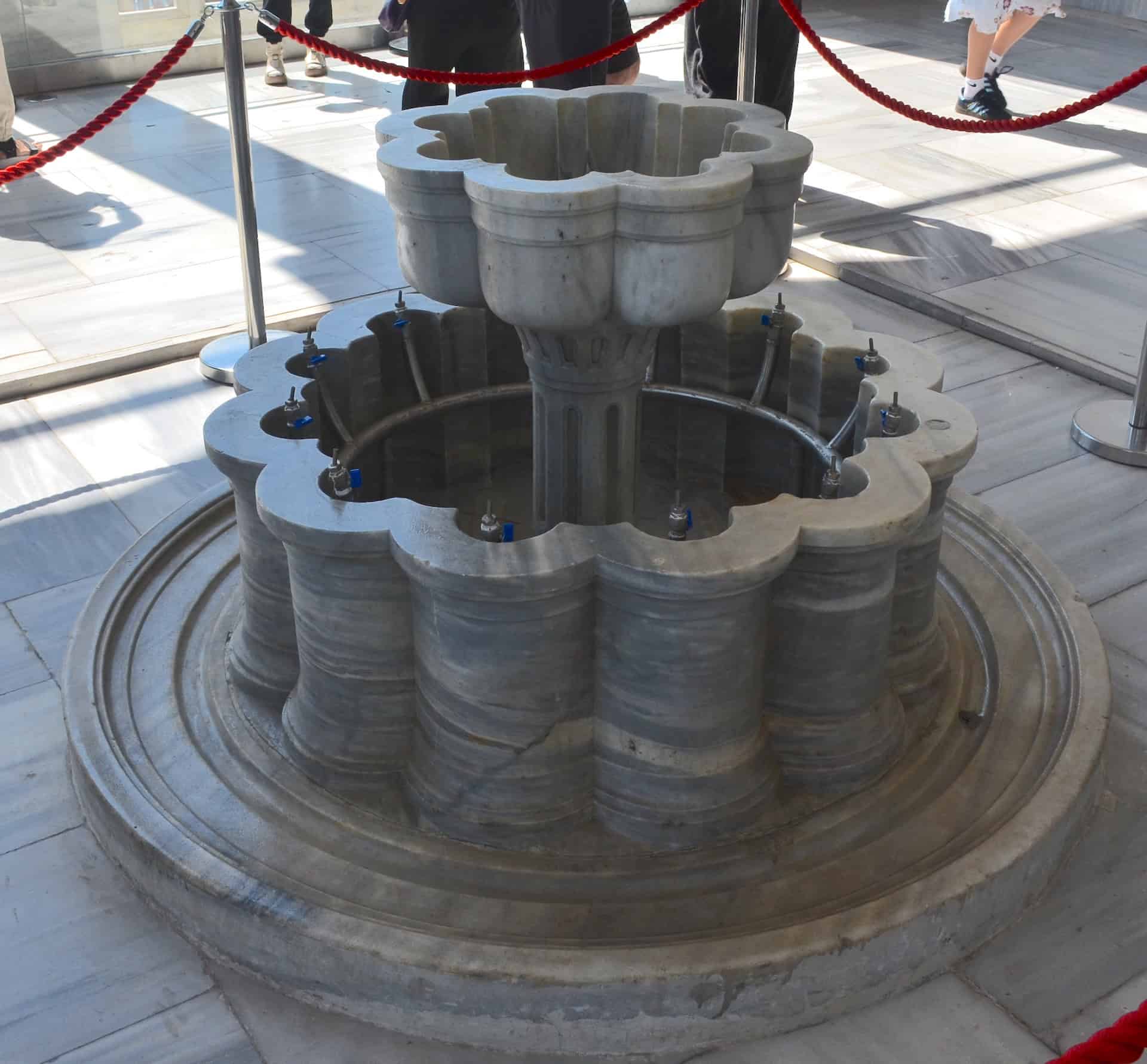

Mehmed the Conqueror used the pavilion as his private apartments. It was later converted to the Imperial Treasury to hold valuable objects belonging to the Ottoman dynasty.
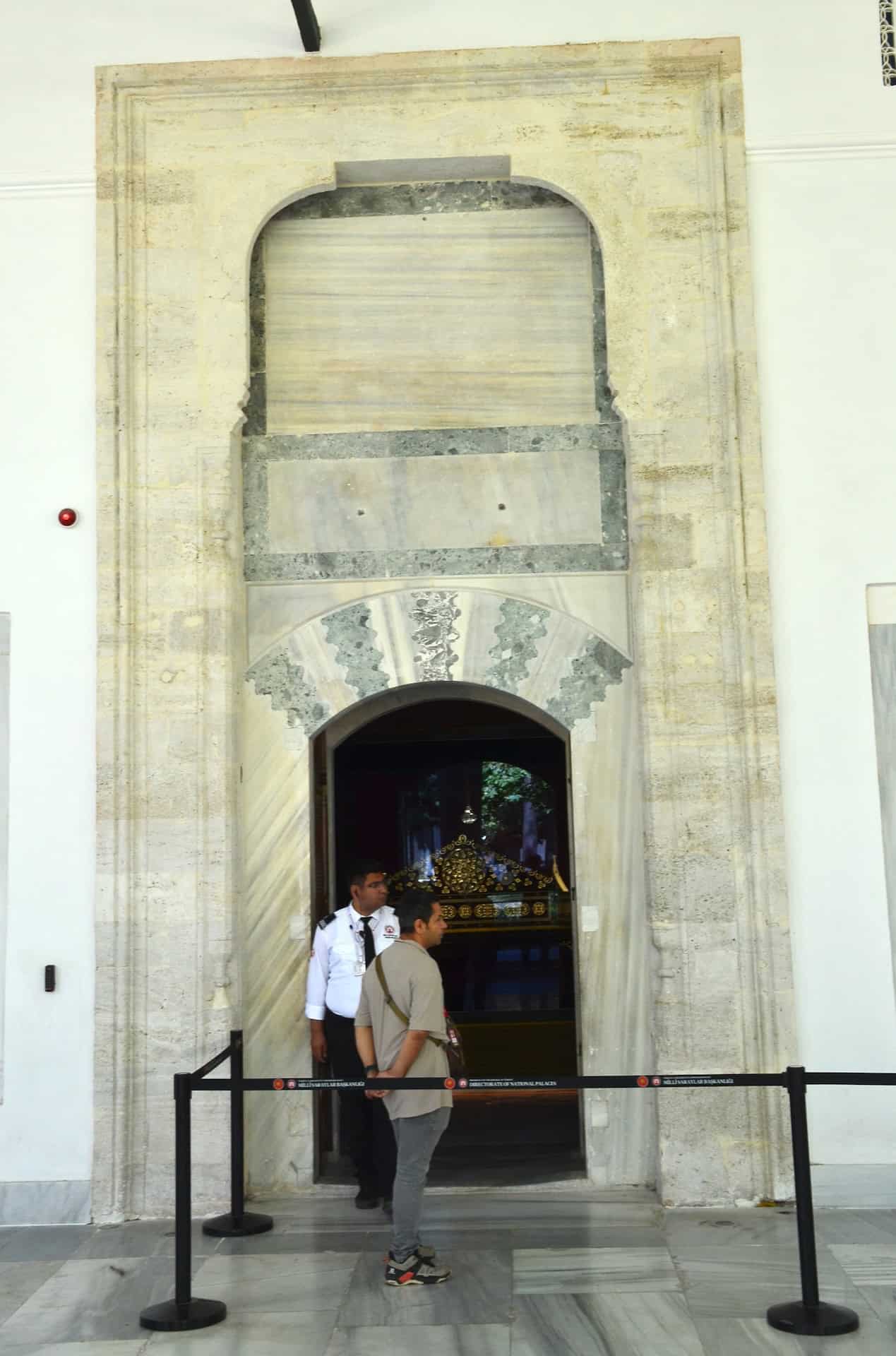

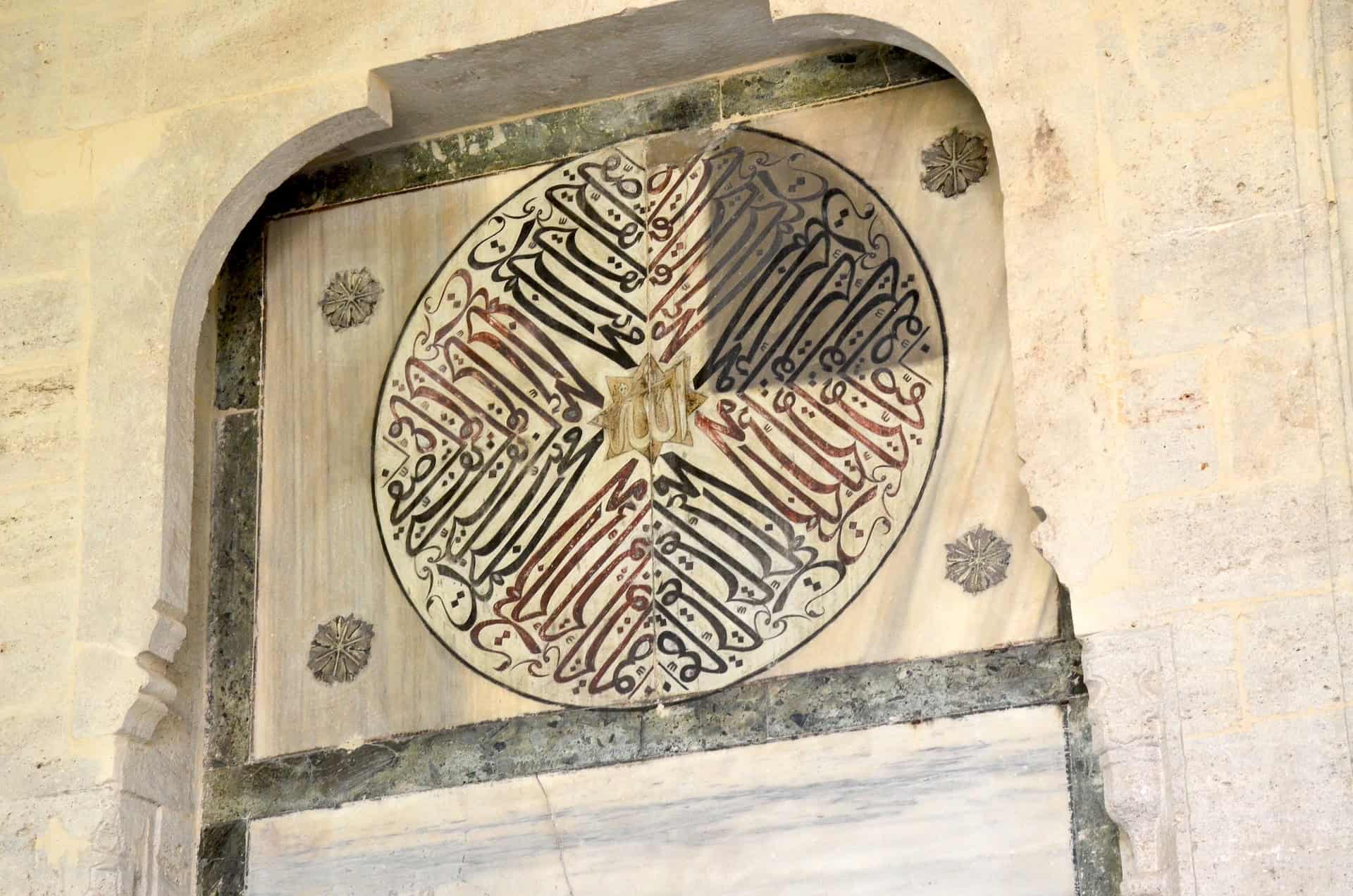

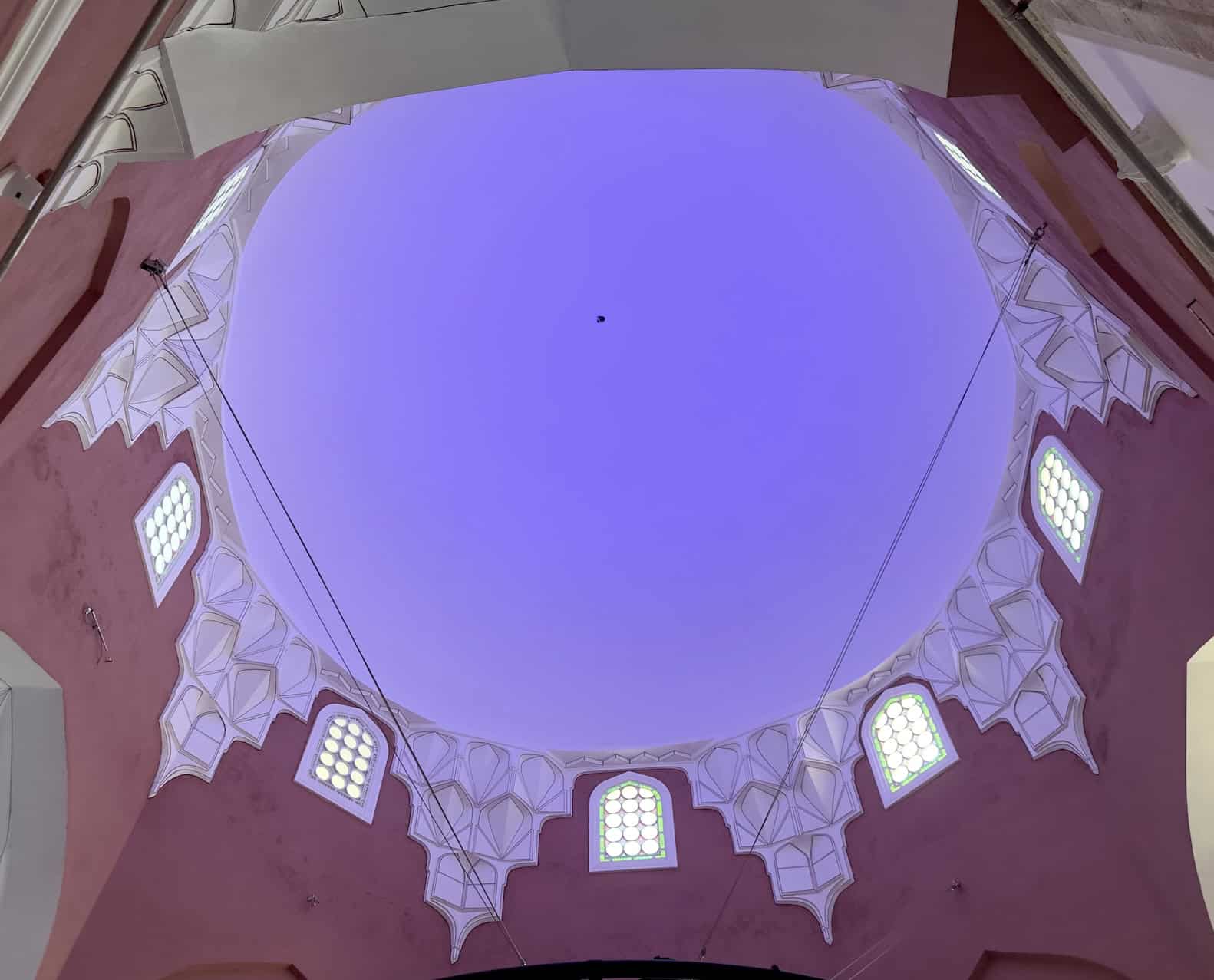
Imperial Treasury at Topkapi Palace
The Imperial Treasury displays several priceless items owned by the sultans of the Ottoman Empire. This includes jewelry, war spoils, and gifts from foreign leaders. It runs through all four rooms of the Conqueror’s Pavilion and passes through the terrace as well.
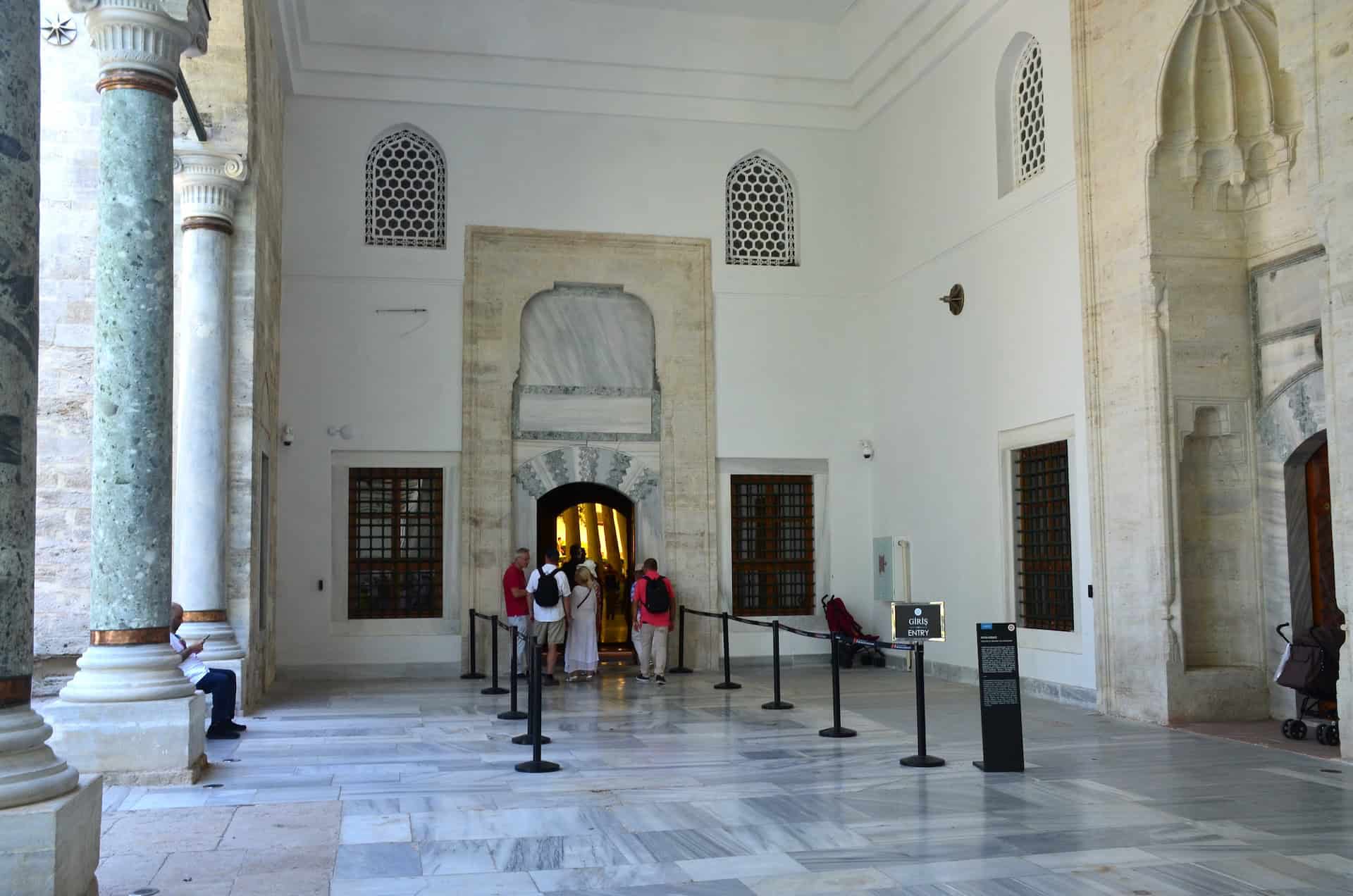
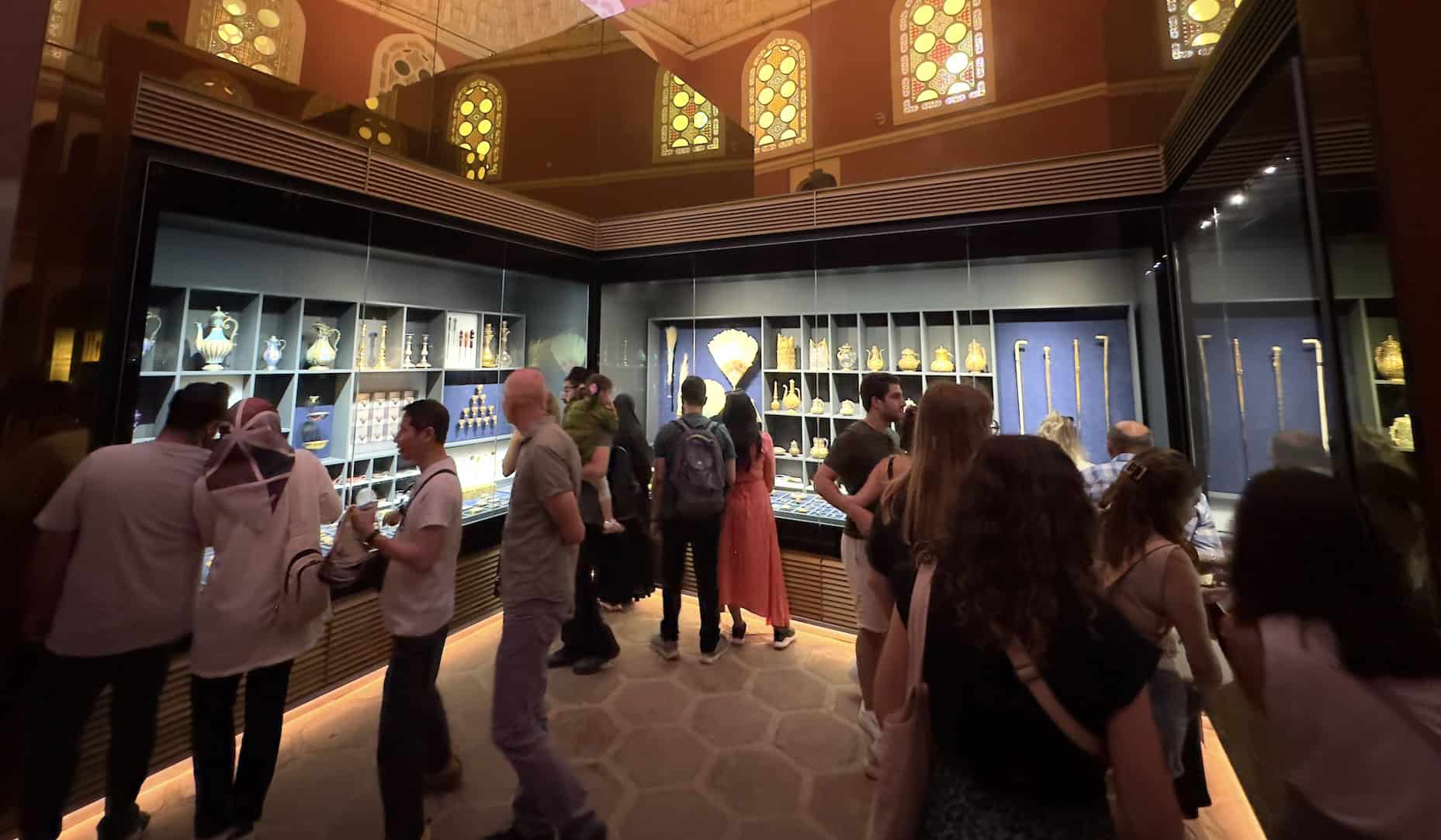
The building underwent a 9-year restoration and reopened to the public on April 20, 2023. I was able to visit in June 2023. The collection is spectacular and well worth seeing.
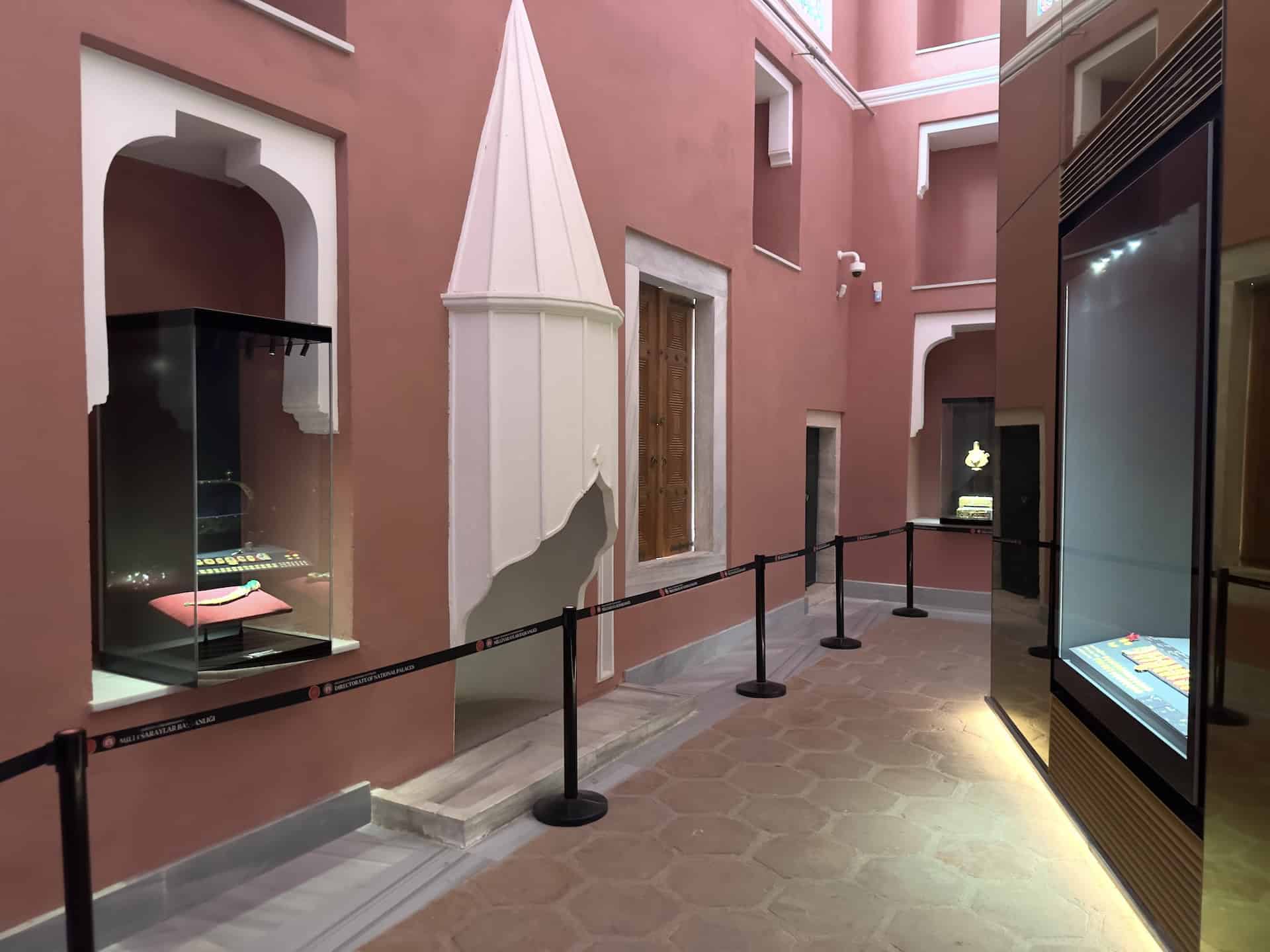
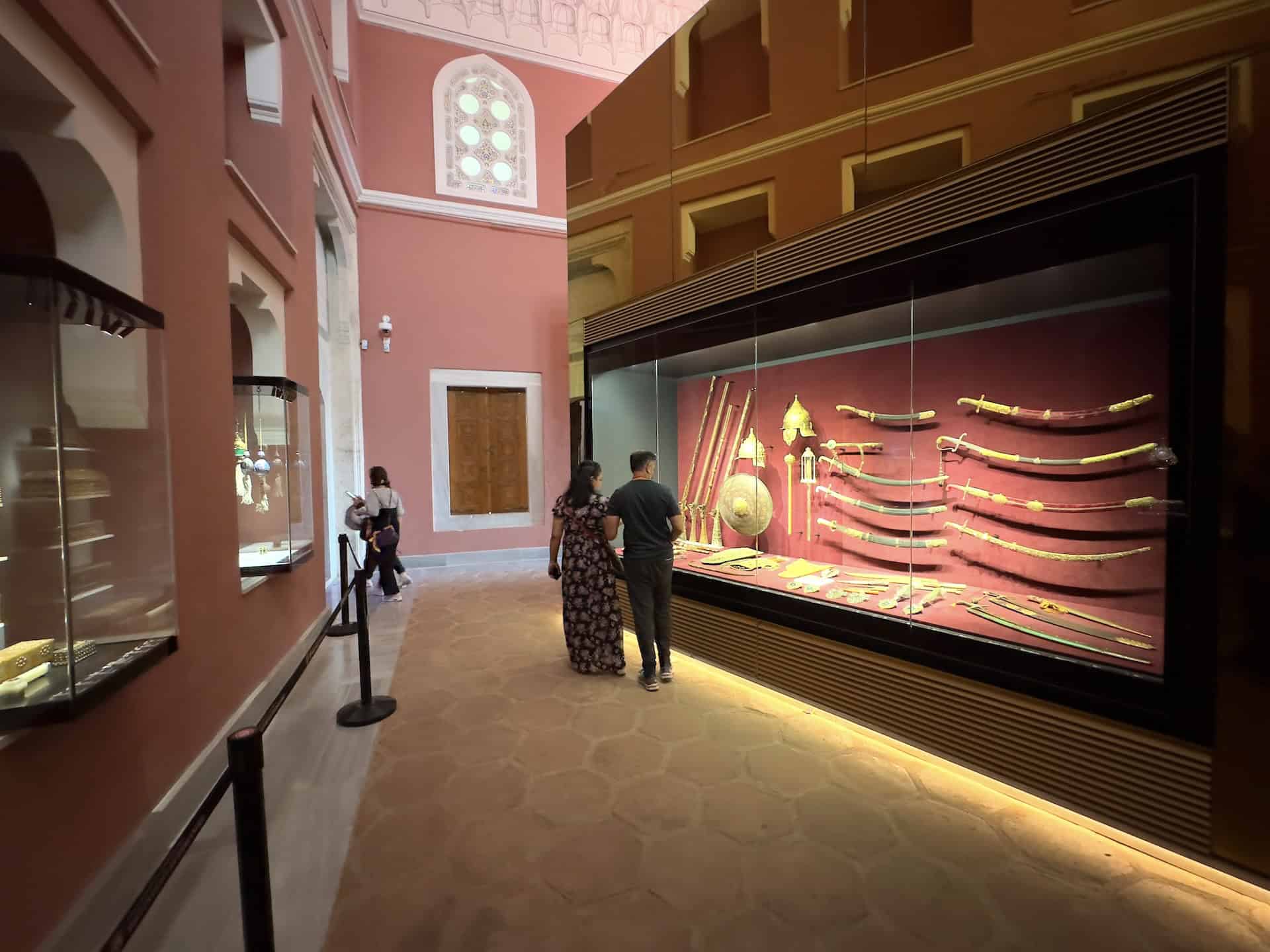

I’ll add photos of some of pieces of the collection here and go into depth about the most important items after the photos:
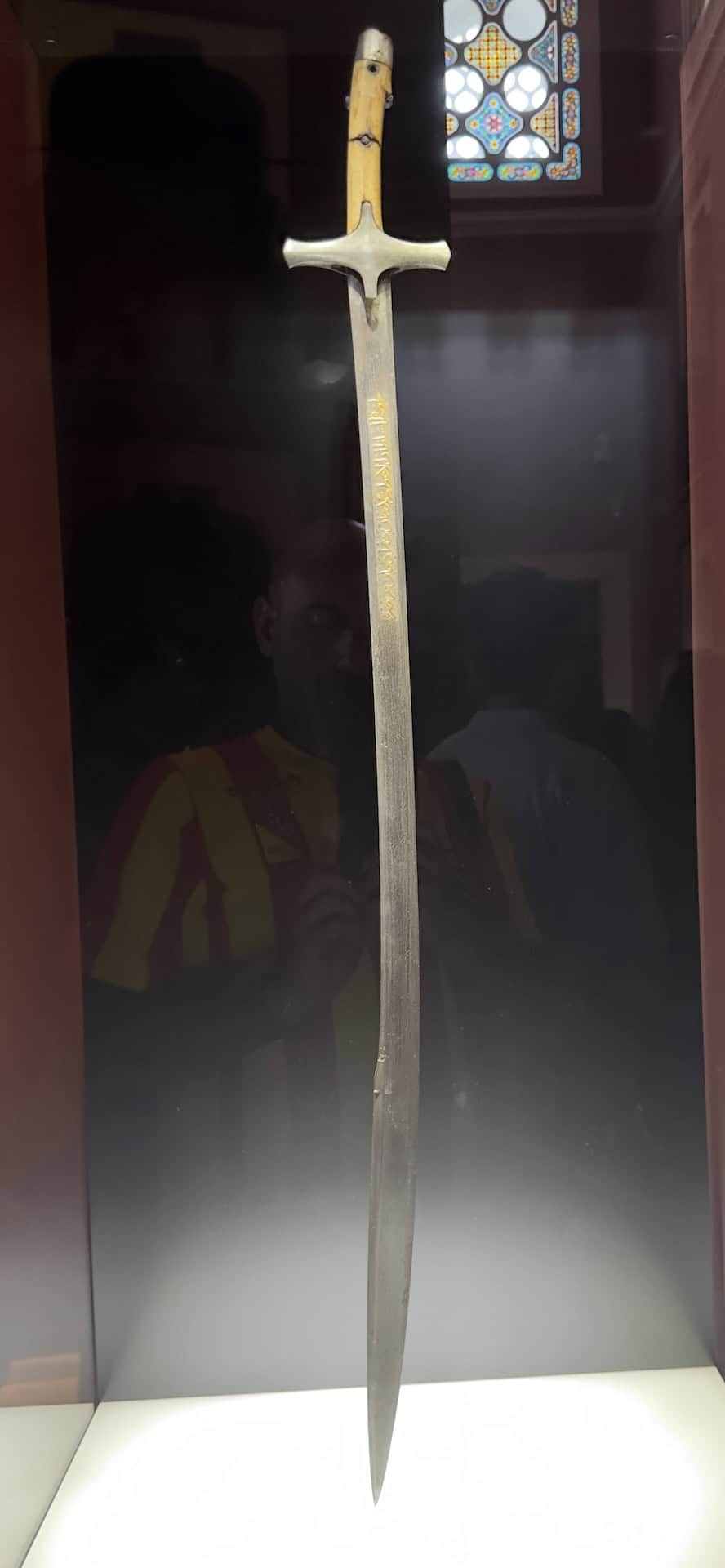
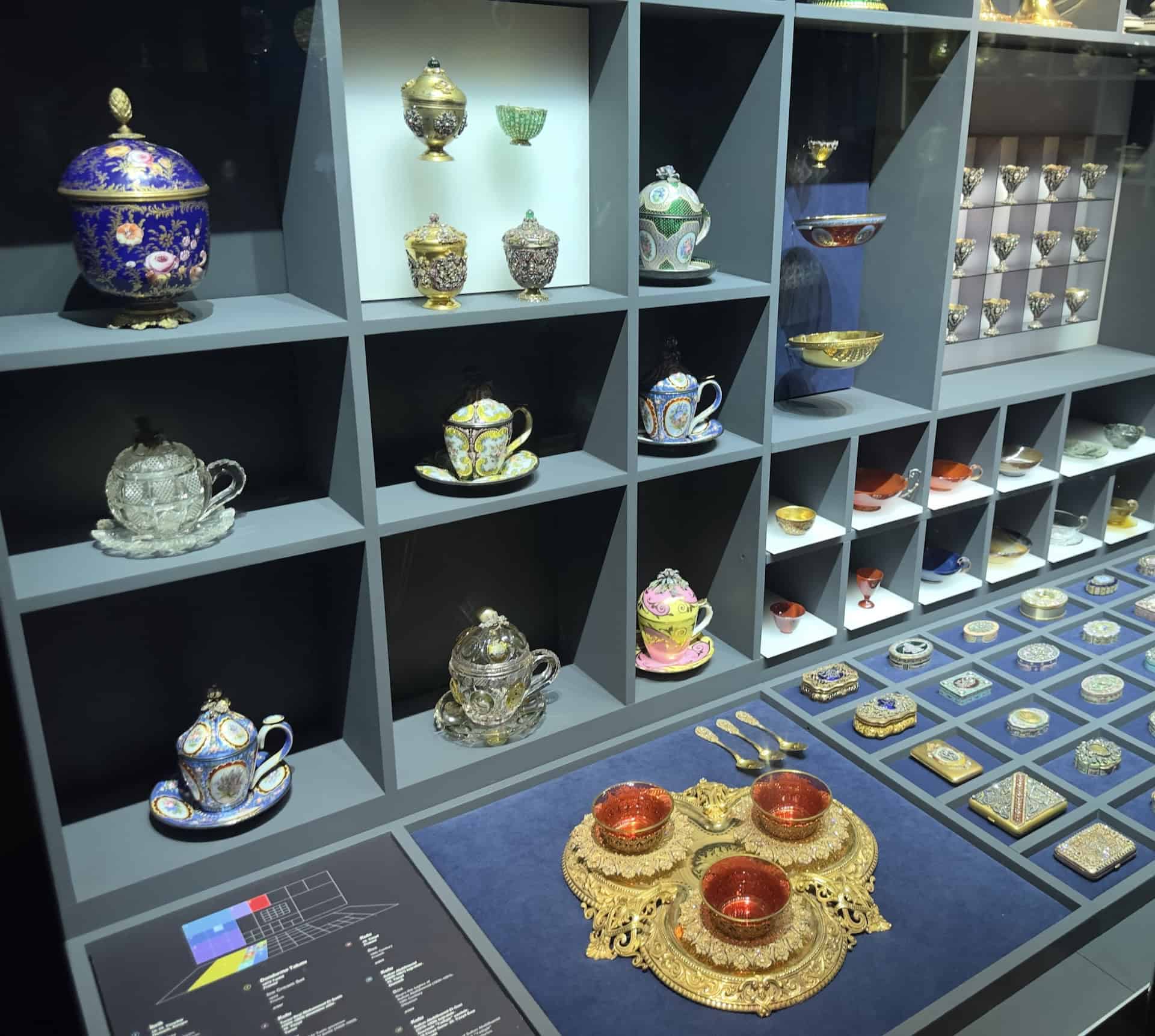

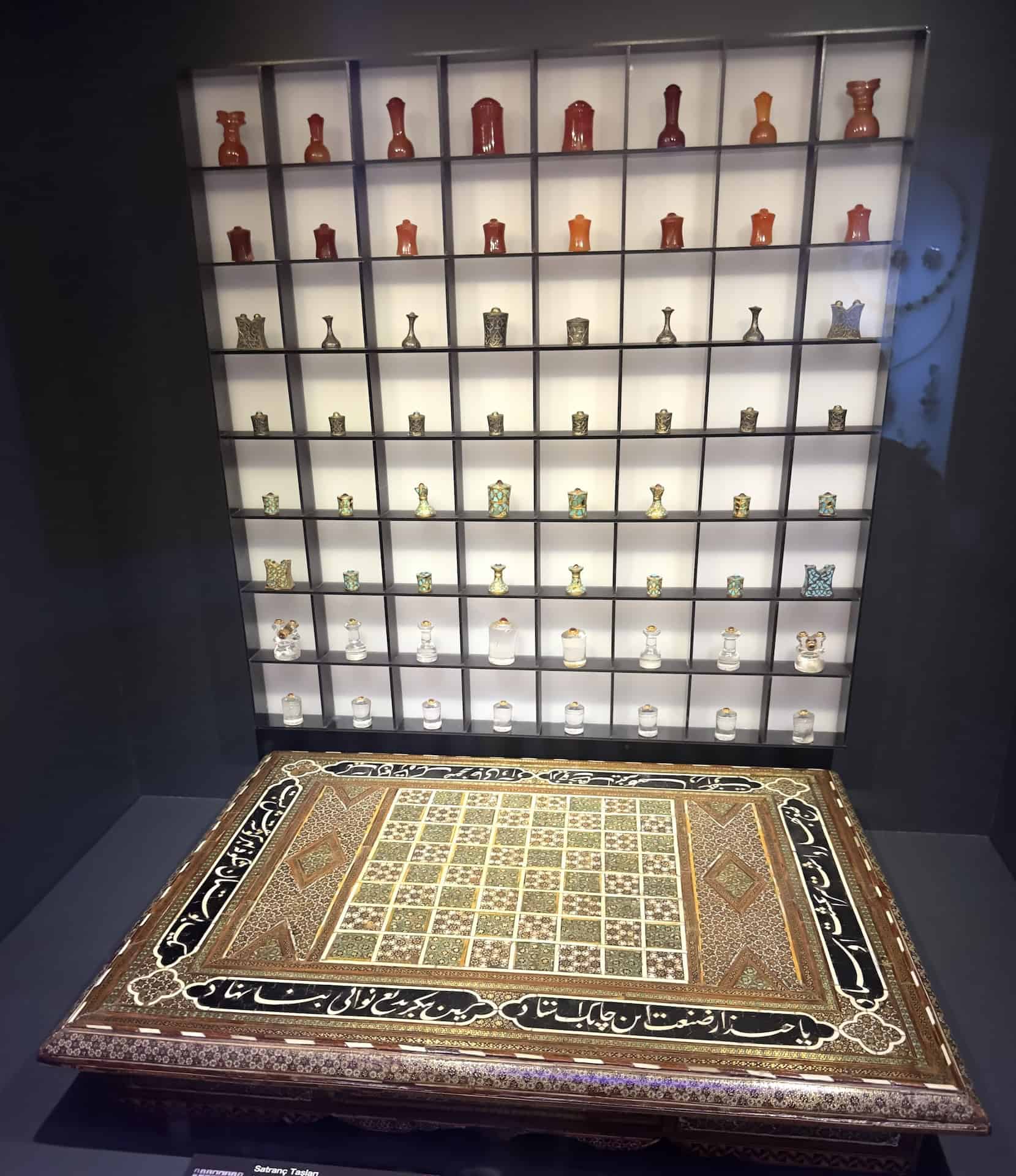
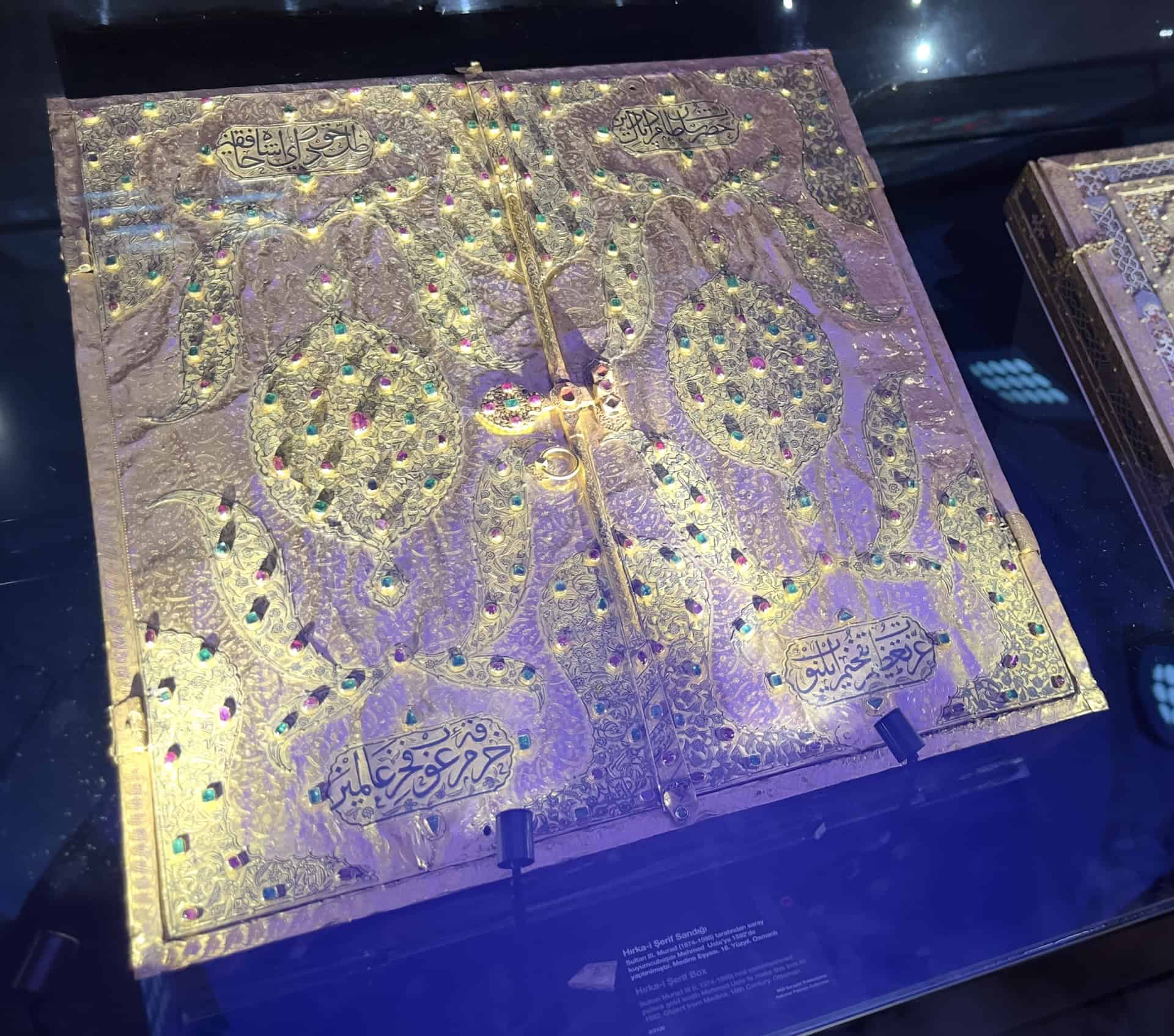
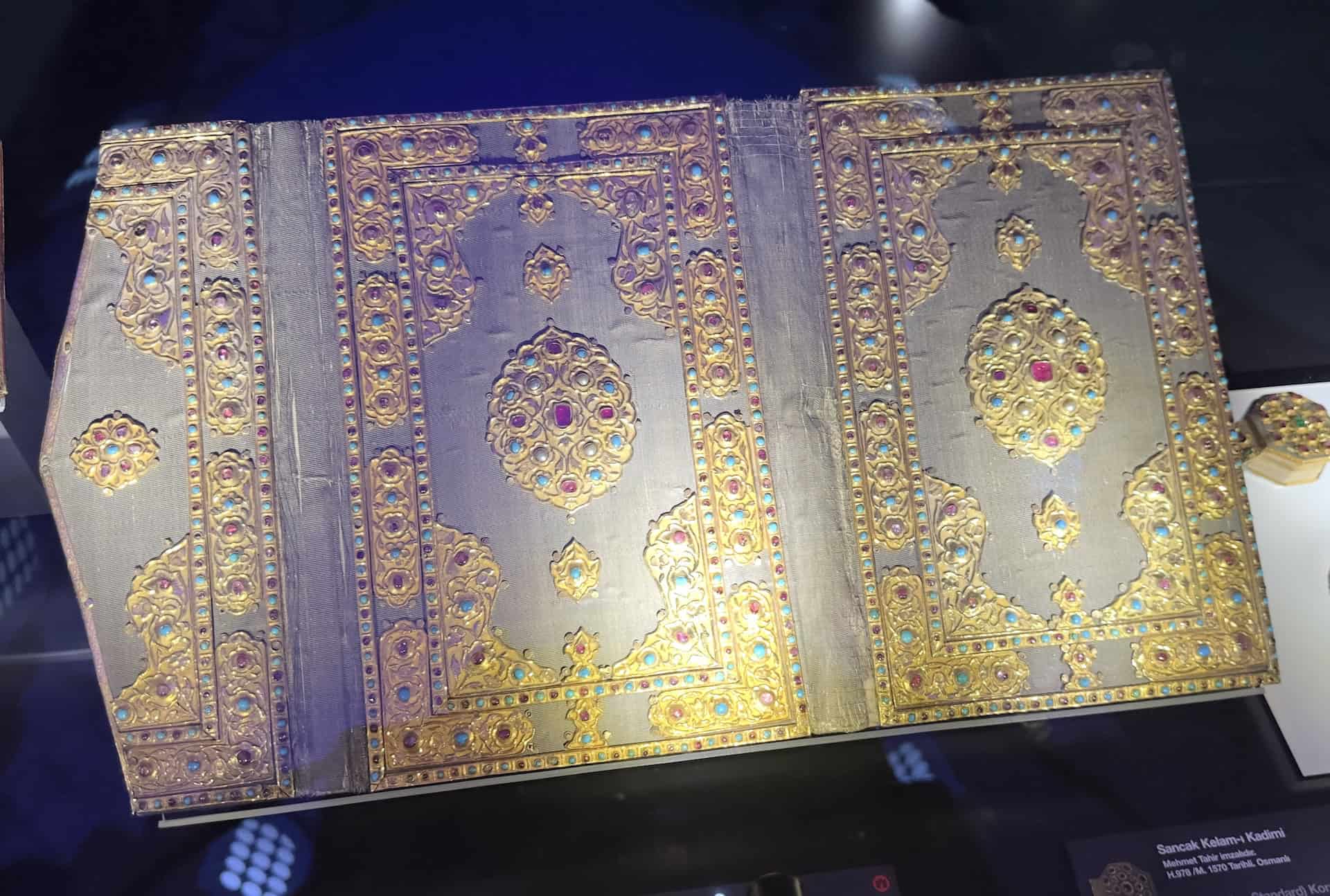
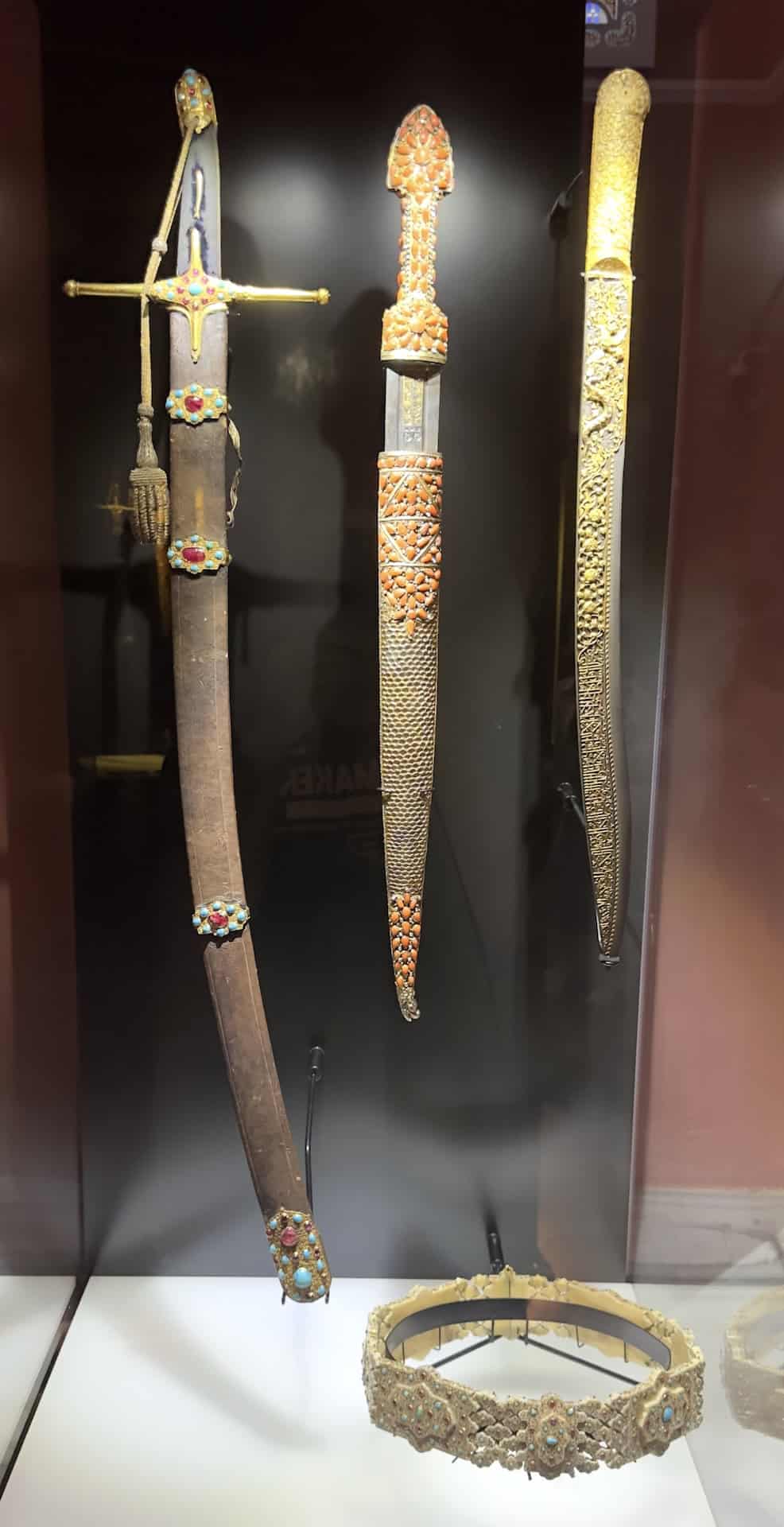
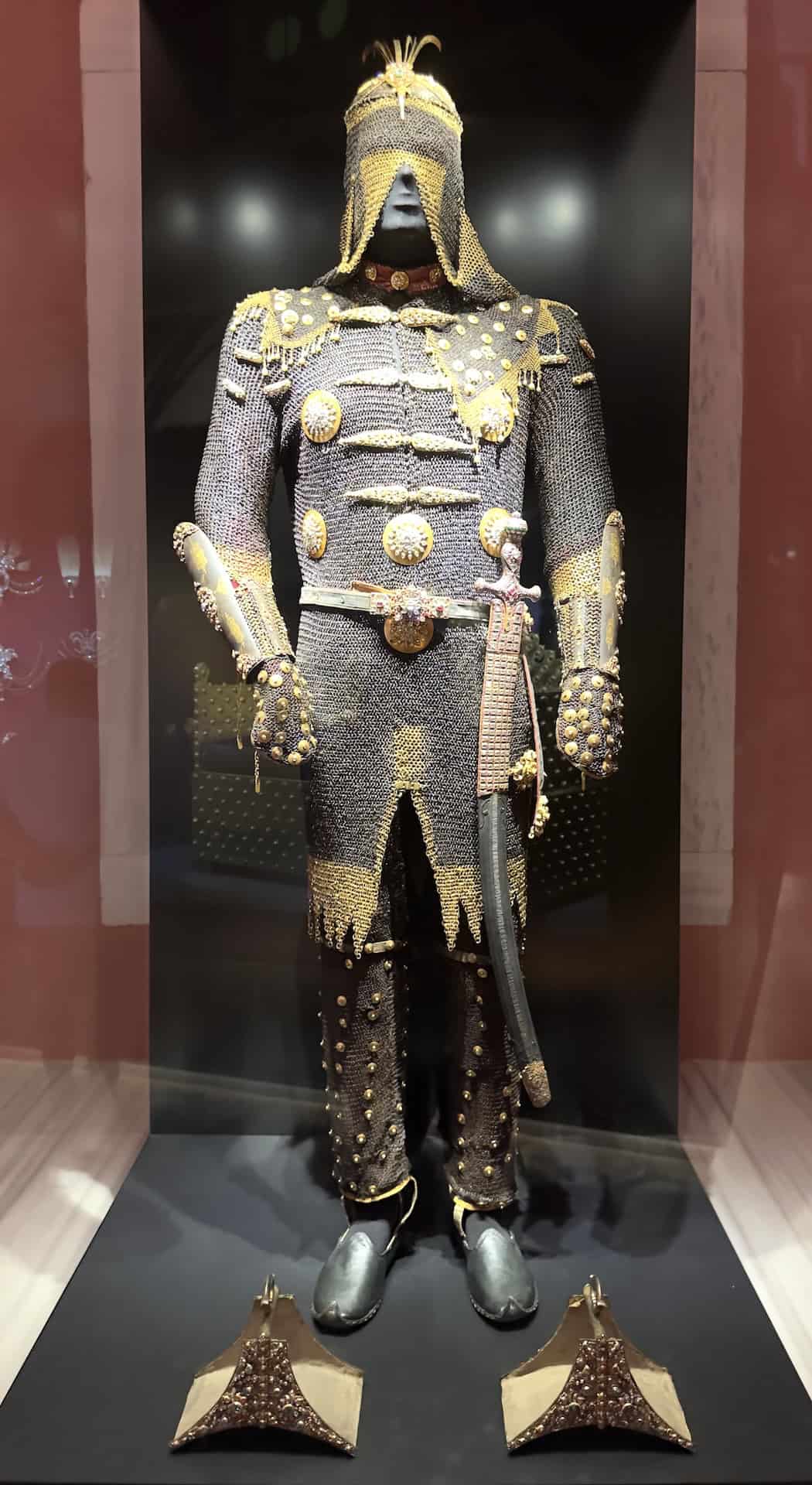


Spoonmaker’s Diamond
The rare Spoonmaker’s Diamond (Kaşıkçı Elması) is in the first room of the Imperial Treasury. It’s an 86 carat diamond and is considered the fourth largest diamond in the world. The diamond is the single most valuable item in the entire Topkapi Palace collection. Its origins or how it came into Ottoman possession are both unknown, but it was first mentioned in the 17th century as a belonging of Sultan Mehmed IV.
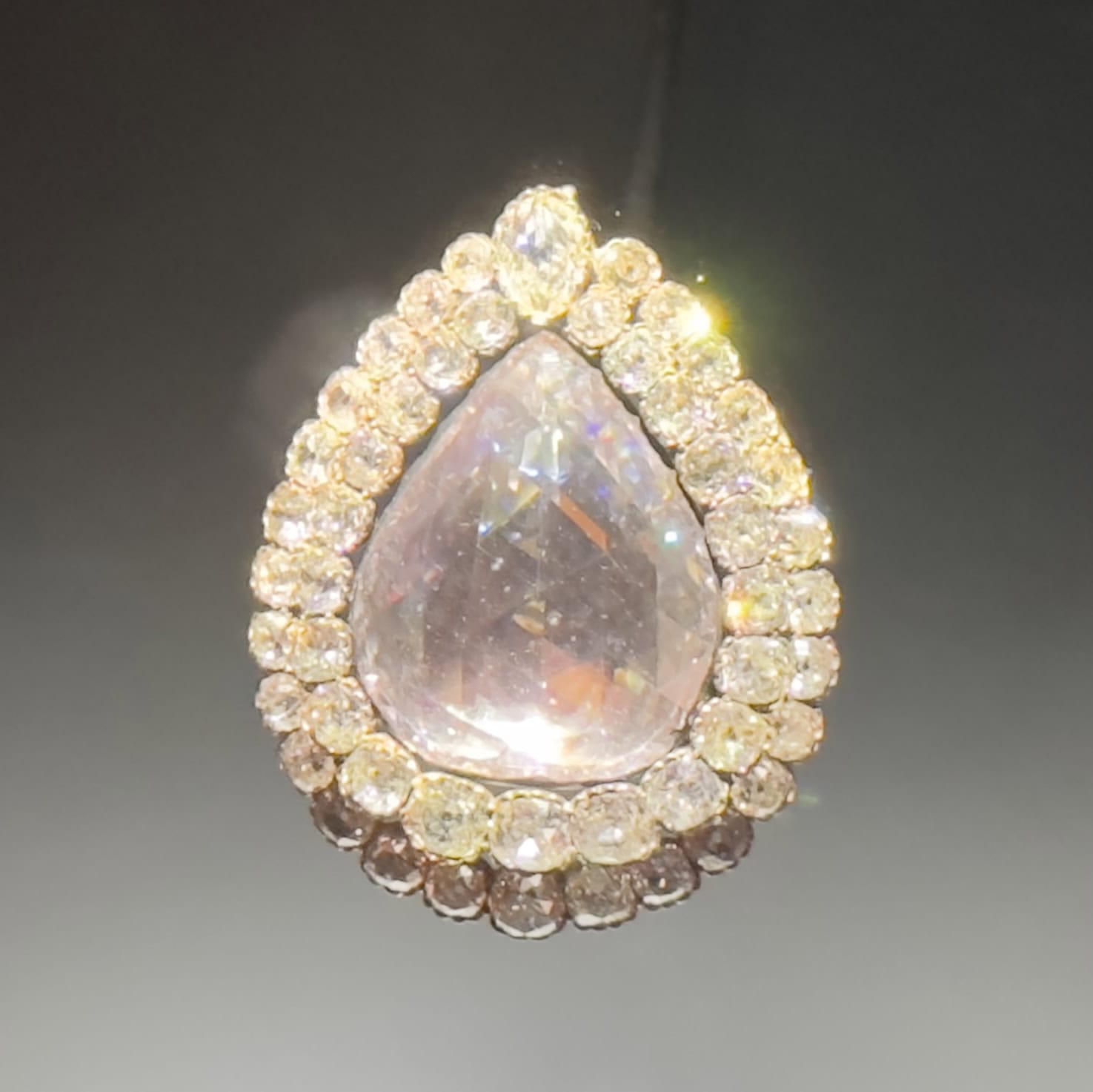
Topkapi Dagger
The famed Topkapi Dagger was made in the mid-18th century. The handle is decorated with three large Colombian emeralds and it also contains several small diamonds. The dagger was meant as a gift from Sultan Mahmud I to Nadir Shah Afshar of Iran (1688-1747), but the Shah was assassinated before it could be delivered. The dagger was also the theme of the 1964 film Topkapi.

Golden Cradle
The Golden Cradle was made in the 16th century, likely during the reign of Süleyman the Magnificent, for an unknown Ottoman prince. It’s 103 centimeters long and 54 centimeters high. The frame is made of gilded walnut wood and lined with purple velvet. No less than 1,475 diamonds, 1,210 rubies, and 520 emeralds adorn the cradle. The knobs at each end have 8 diamonds, 5 rubies, and 15 emeralds each.
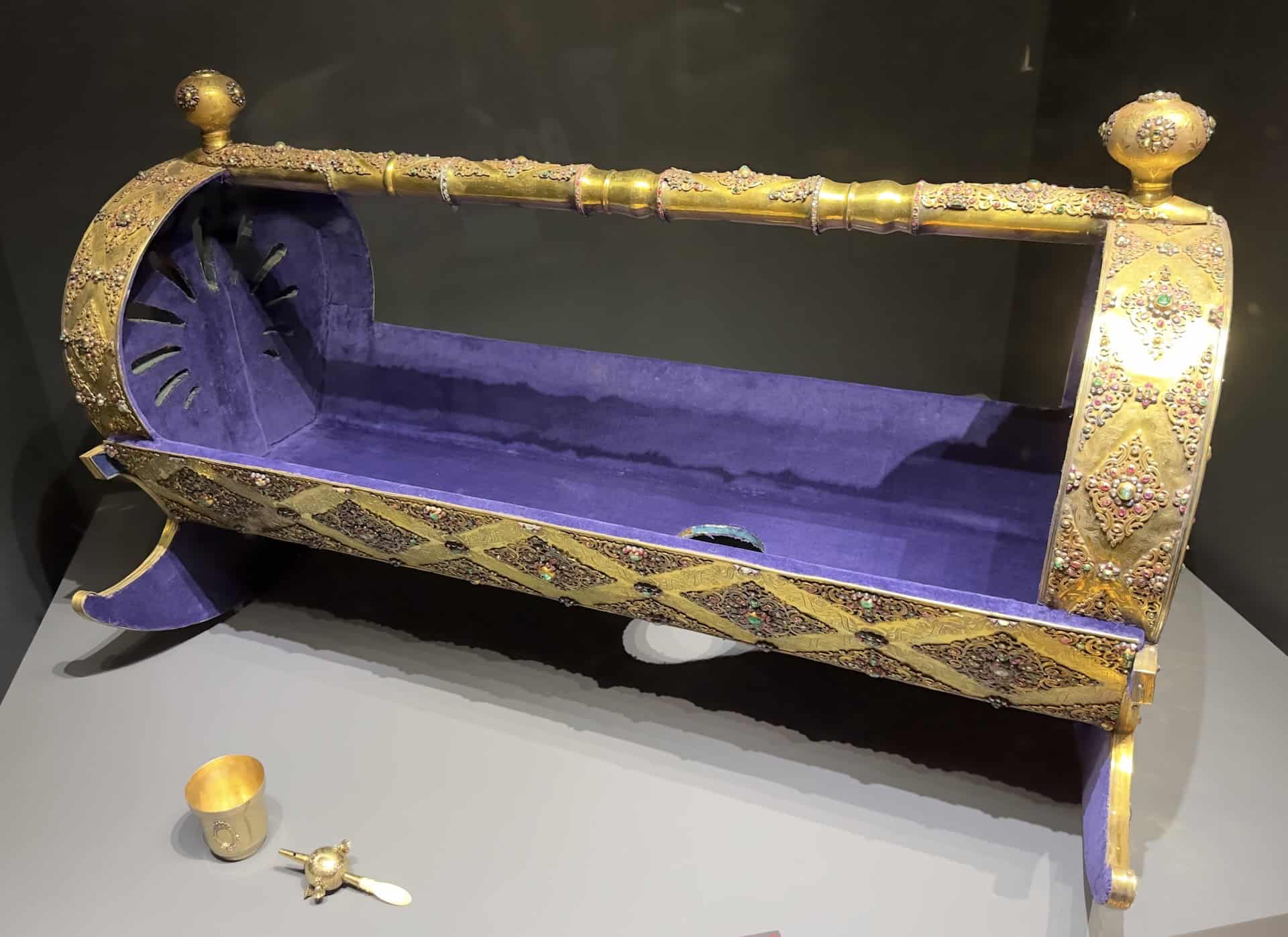
Ebony Throne
The Ebony Throne was made during the reign of Süleyman the Magnificent but belonged to Sultan Murad IV. He used it while on an expedition to Baghdad.
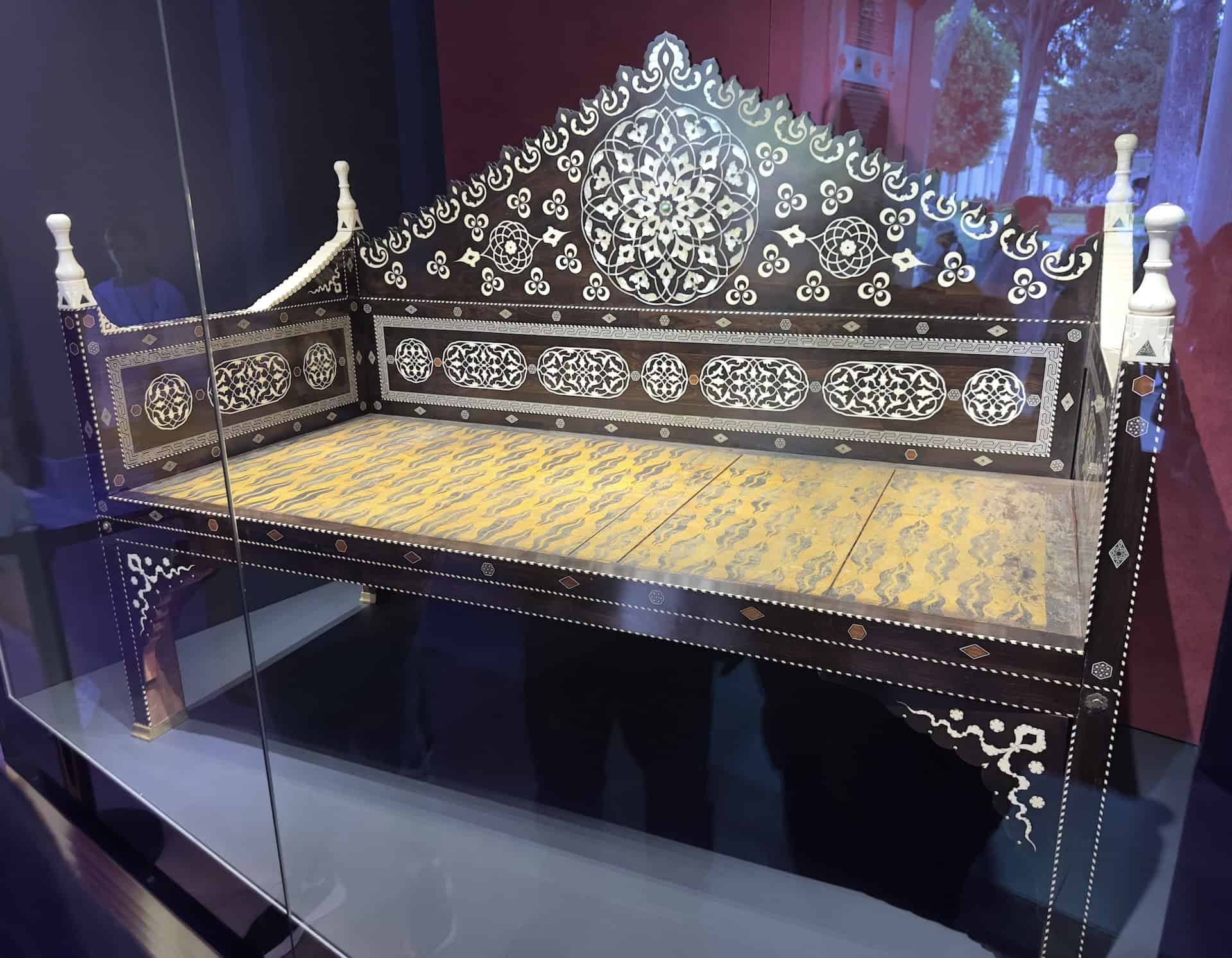
Throne of Nadir Shah
The throne of Nadir Shah of Persia was offered as a gift to Sultan Mahmud I in 1747 and added to the Imperial Treasury in 1758. It was originally believed to have been taken by Sultan Selim I from Shah Ismail during the Battle of Chaldiran. The throne, which was made by Indian craftsmen, is high-edged table resting on four legs with a foot stool. It’s covered with gold and adorned with rubies, emeralds, and pearls.

Dormitory of the Expeditionary Force
On the east side of the 3rd Courtyard is the Dormitory of the Expeditionary Force (Seferli Koğuşu). It was built by Ahmed III in 1719 to house the Expeditionary Force. The building was restored by Mehmed V in the early 20th century.

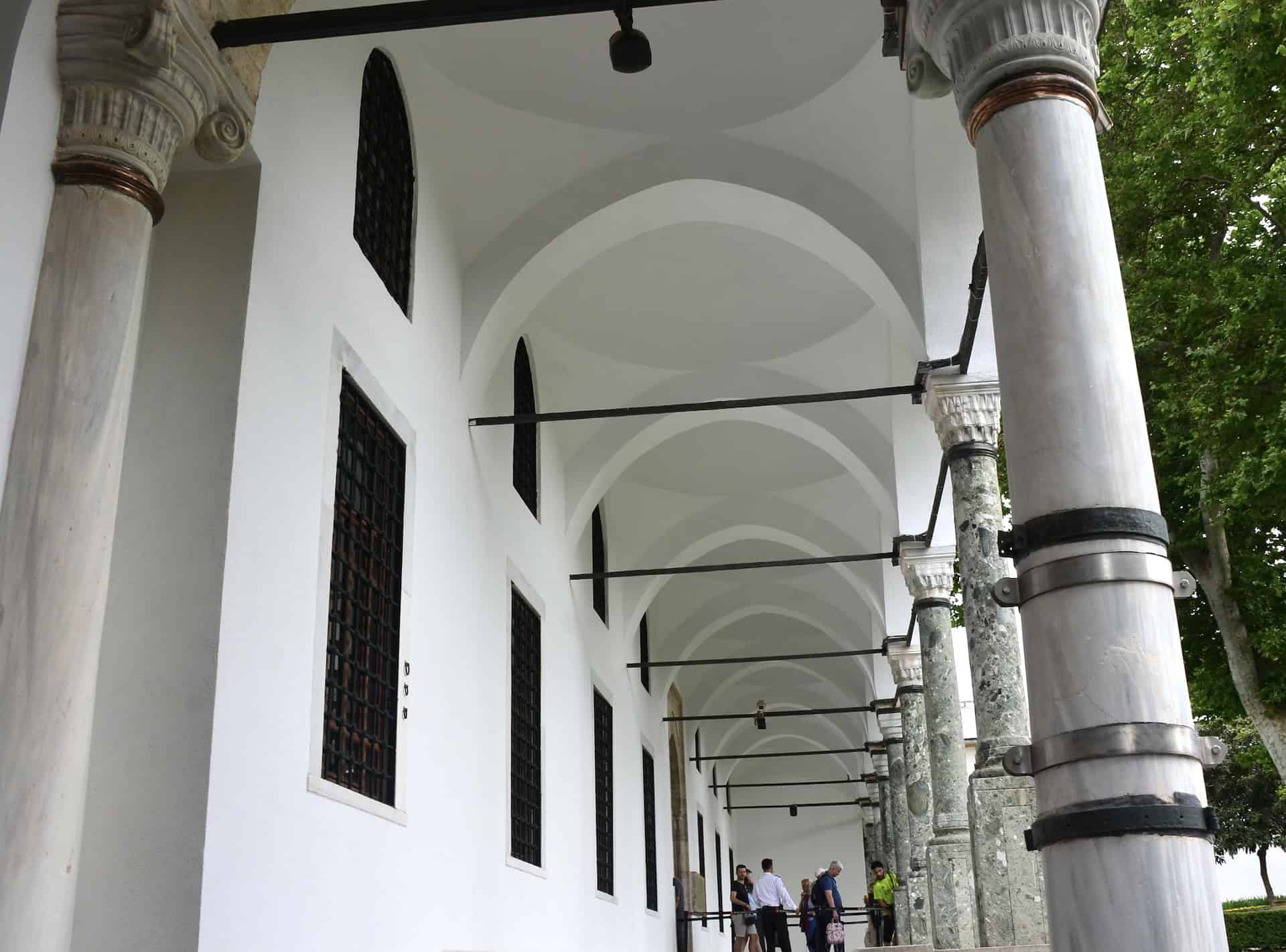
The Expeditionary Force, or Campaigners, were responsible for preparing the garments of the Sultan to wear during battle. It eventually evolved into an arts and trades academy. Many musicians, singers, wrestlers, archers, barbers, hamam attendants, poets, and intellectuals were trained there.
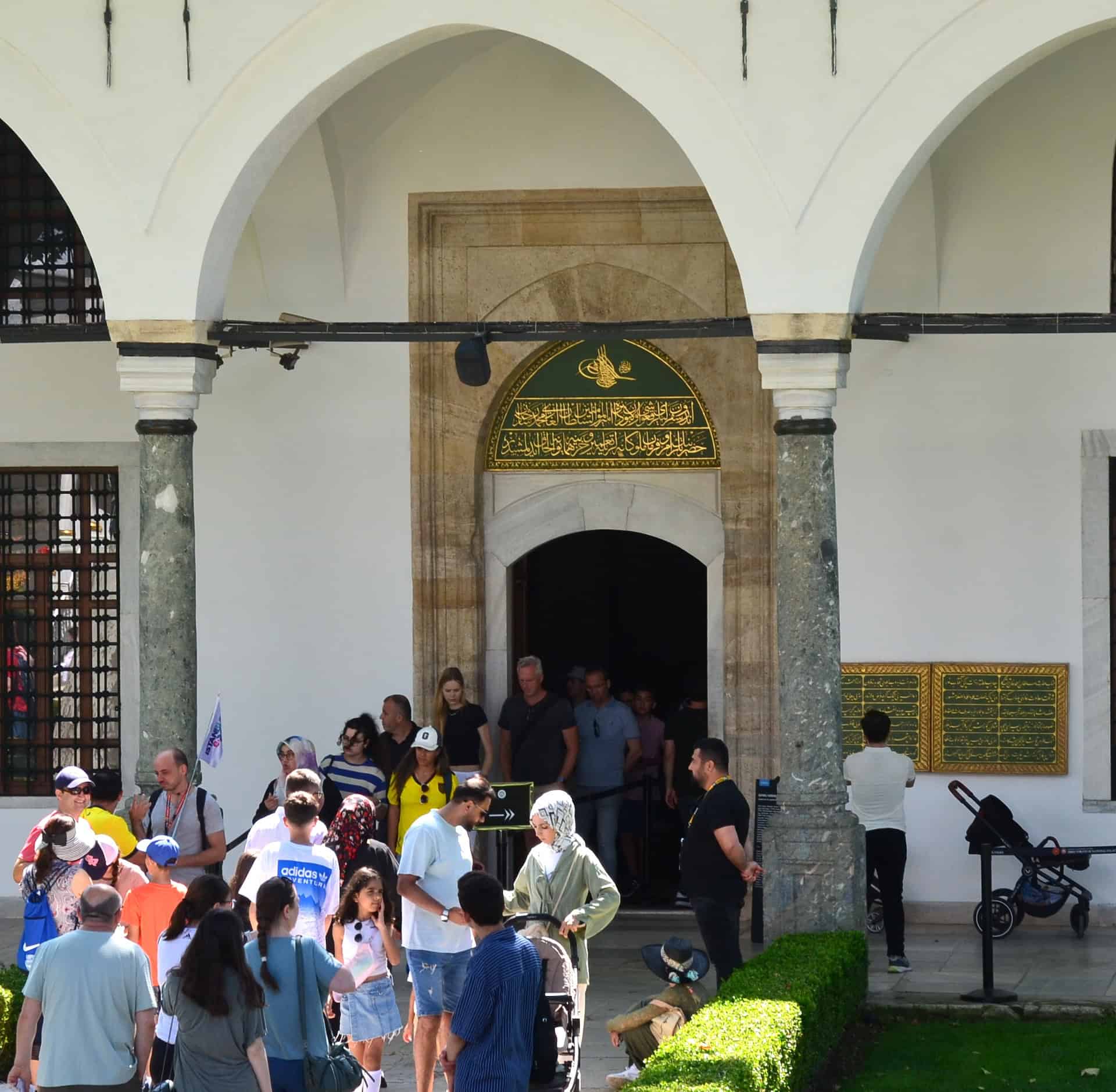
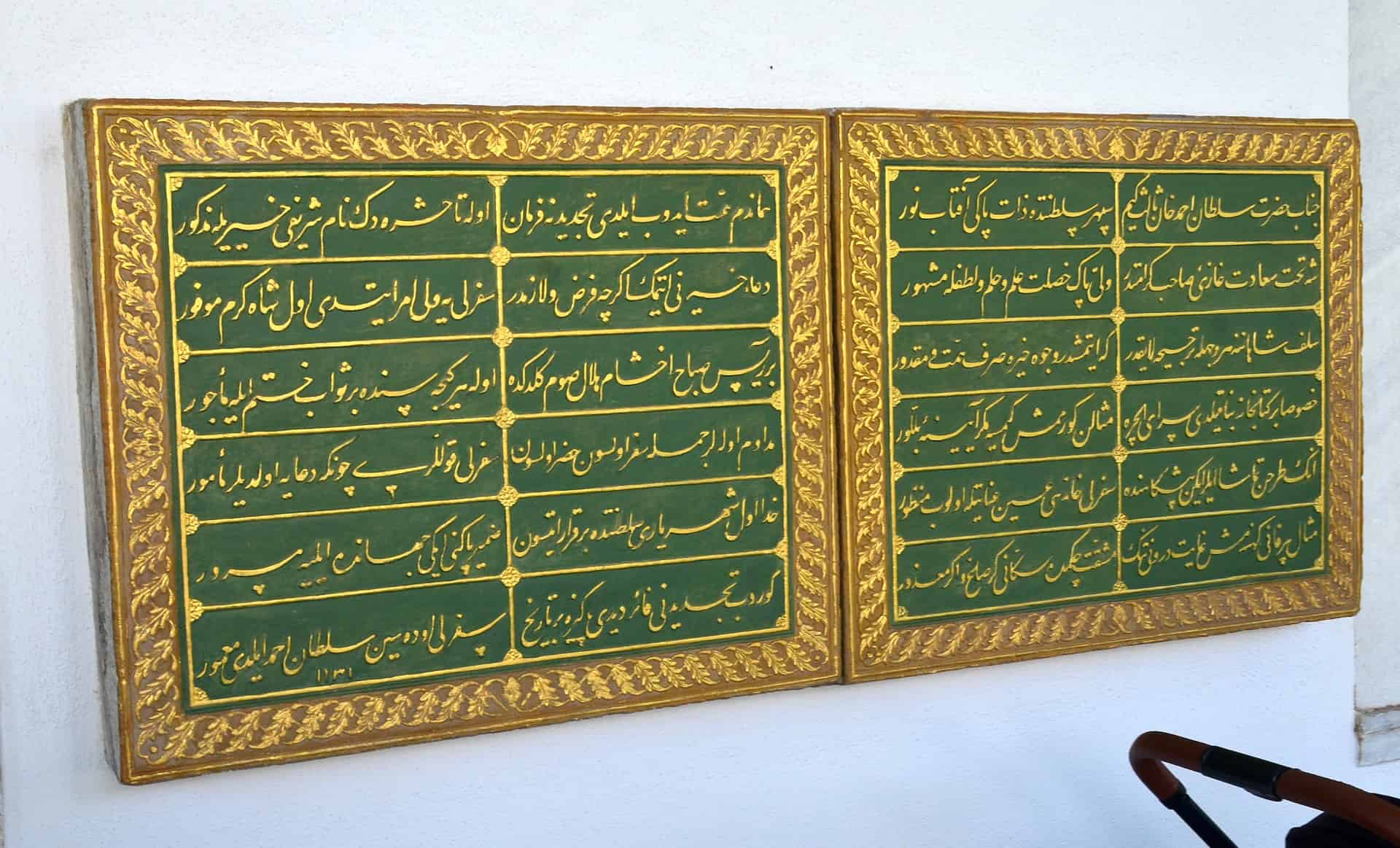
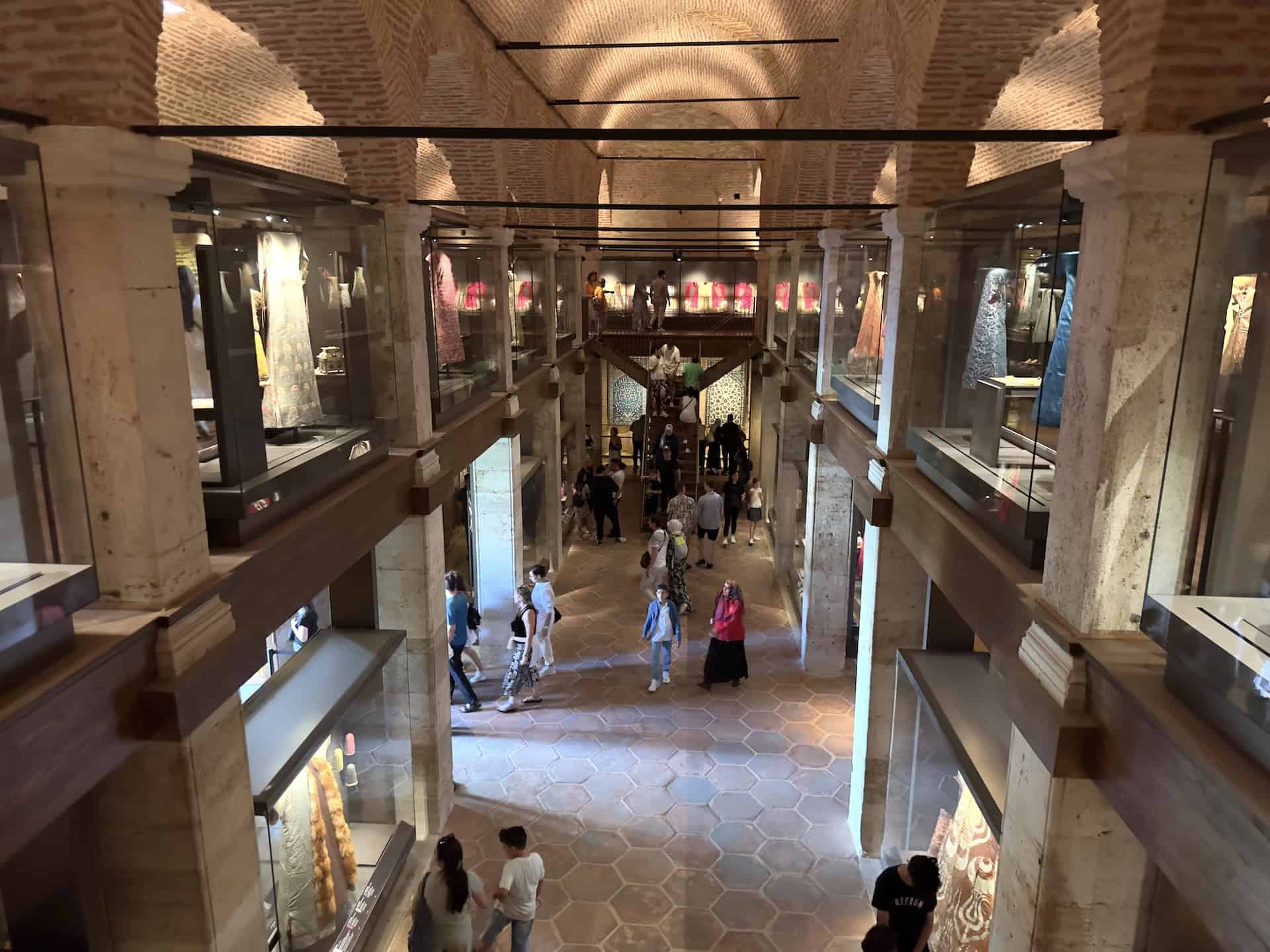
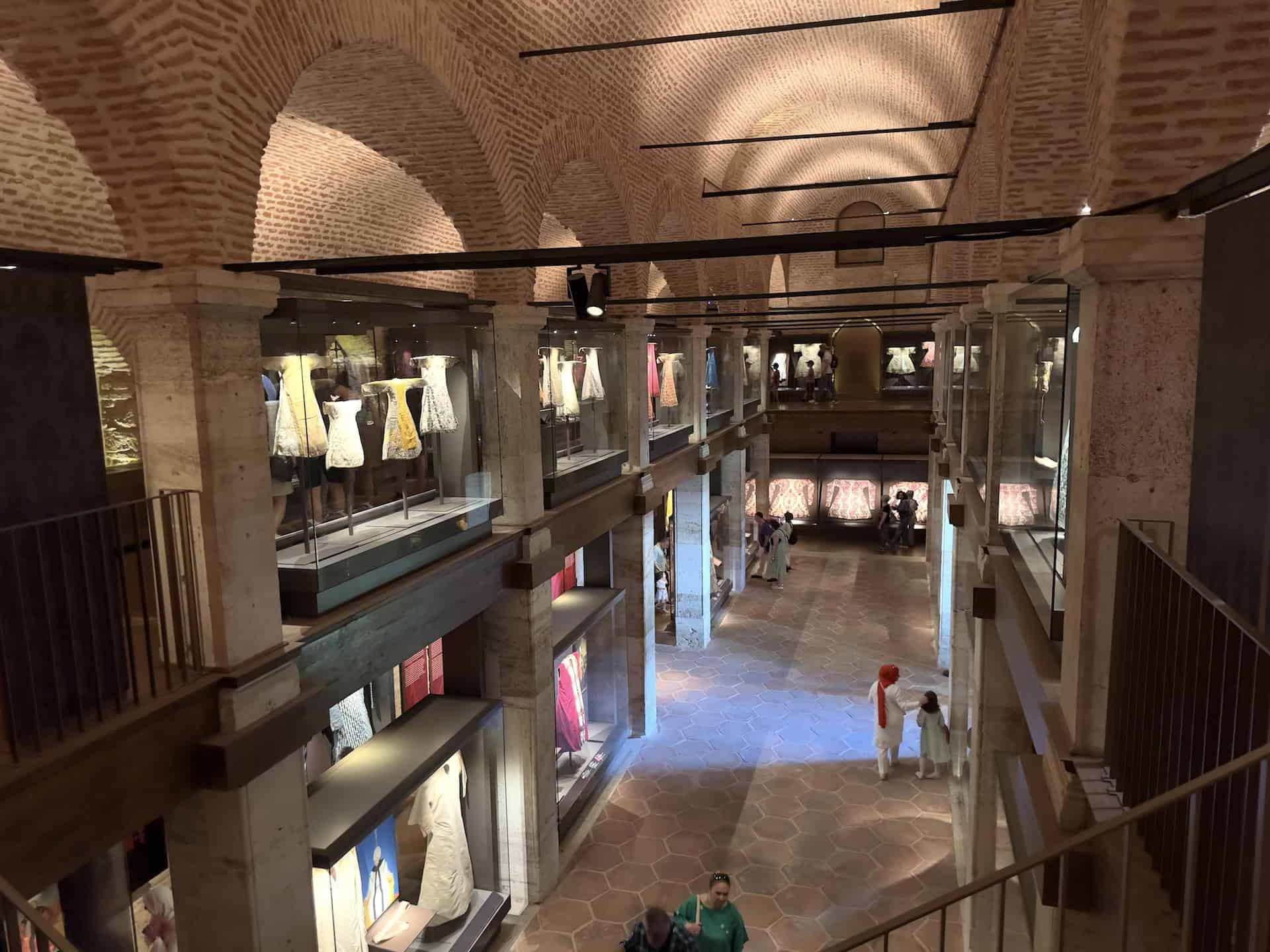
The Dormitory of the Expeditionary Force sits atop the remains of the Imperial Hamam (Hünkâr Hamamı), which was commissioned by Mehmed the Conqueror and completed in 1465. It had hot and cold water fountains and wash basins. The Sultan and his pages would bathe there on Fridays. The hamam was destroyed during an earthquake in 1509 and rebuilt by architect Mimar Sinan (1490-1588) during the reign of Selim II as the Selim II Hamam (II. Selim Hamamı). That hamam was demolished in 1719 to make way for the current structure.
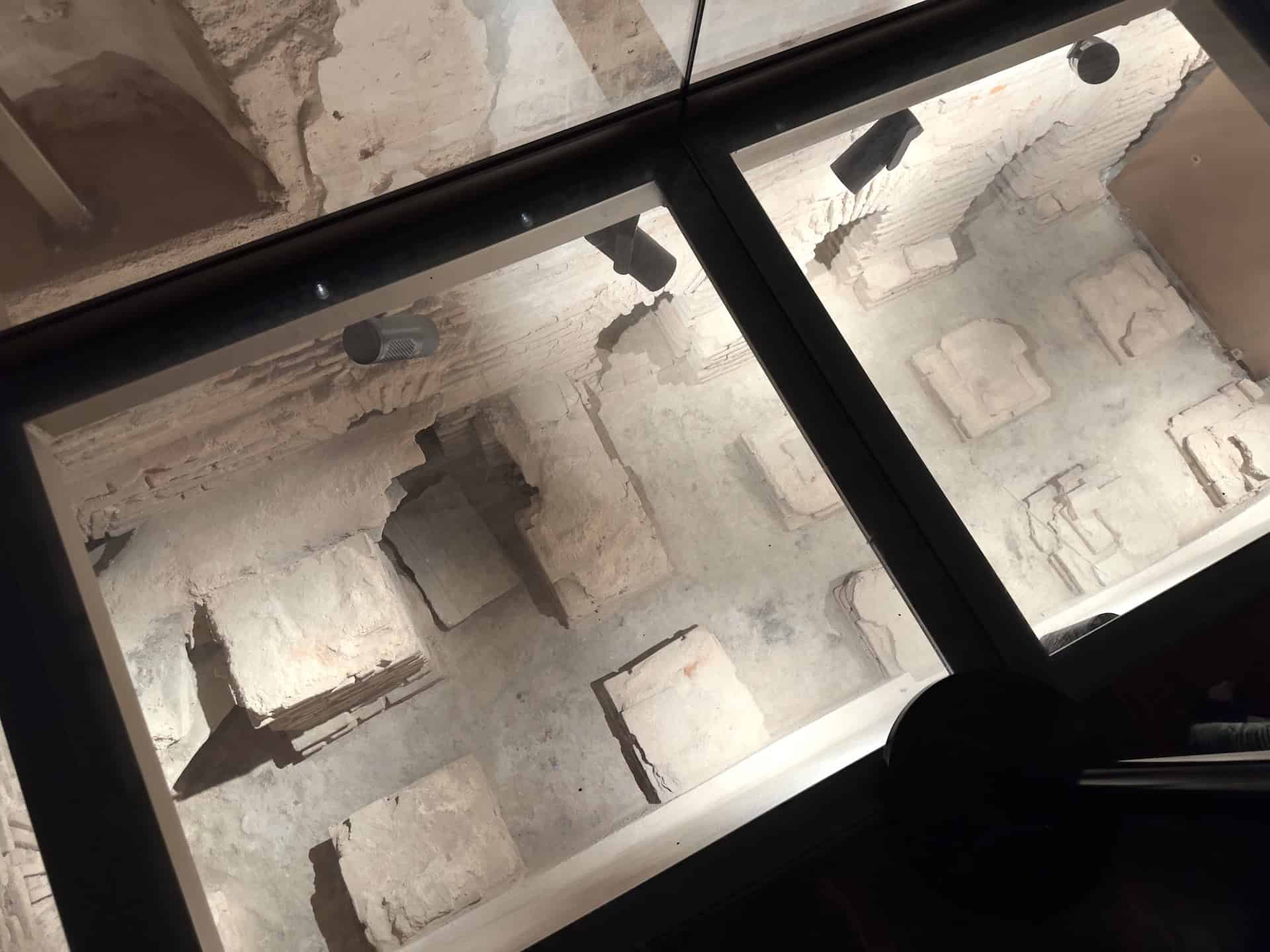
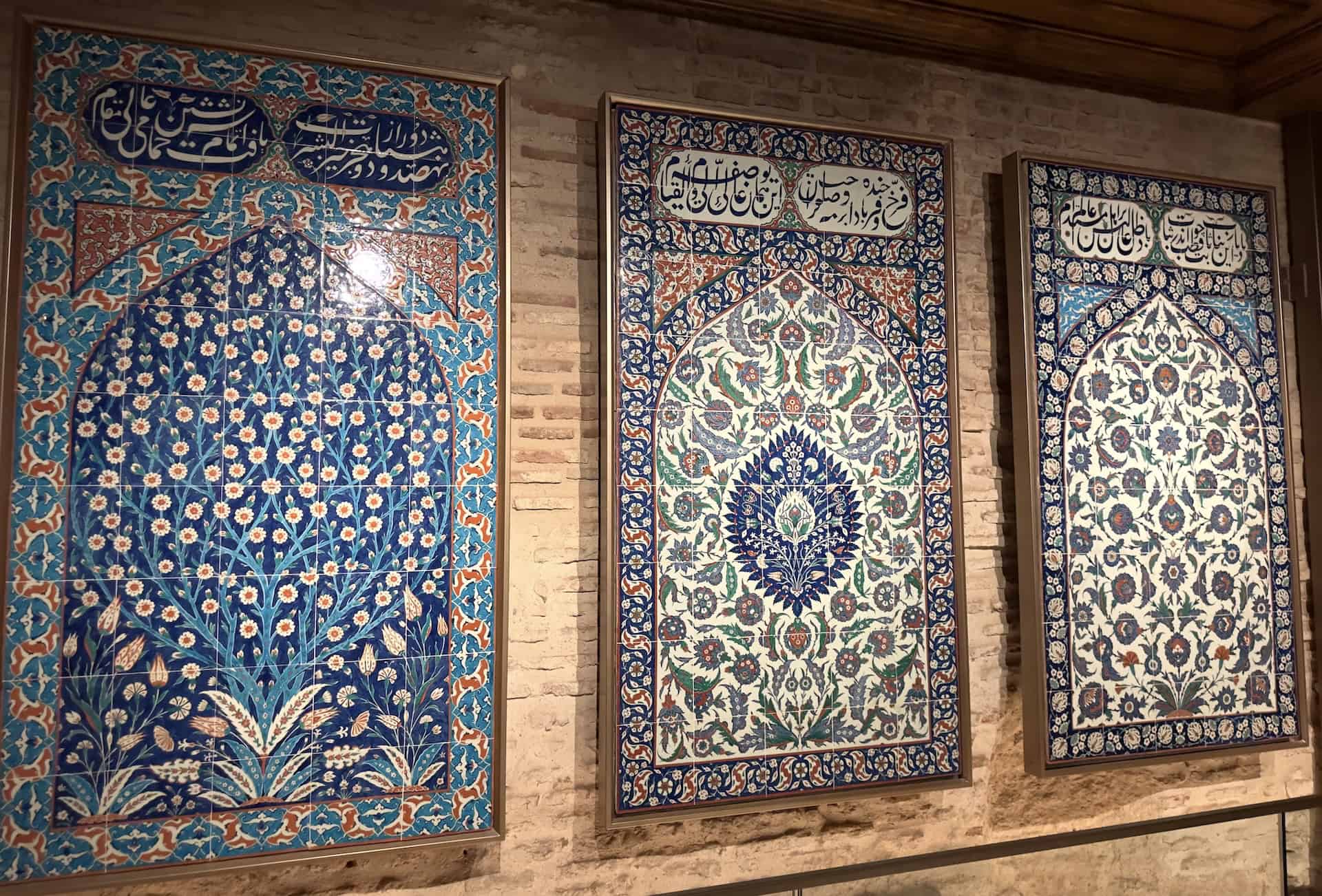
Imperial Wardrobe Collection at Topkapi Palace
The Dormitory of the Expeditionary Forces now houses the Imperial Wardrobe Collection (Padişah Elbiseleri Koleksiyonu), which consists of caftans and uniforms worn by the sultans and their families. The exhibition reopened on April 20, 2023, after a 9-year restoration. It’s beautifully presented over different periods of Ottoman fashion.
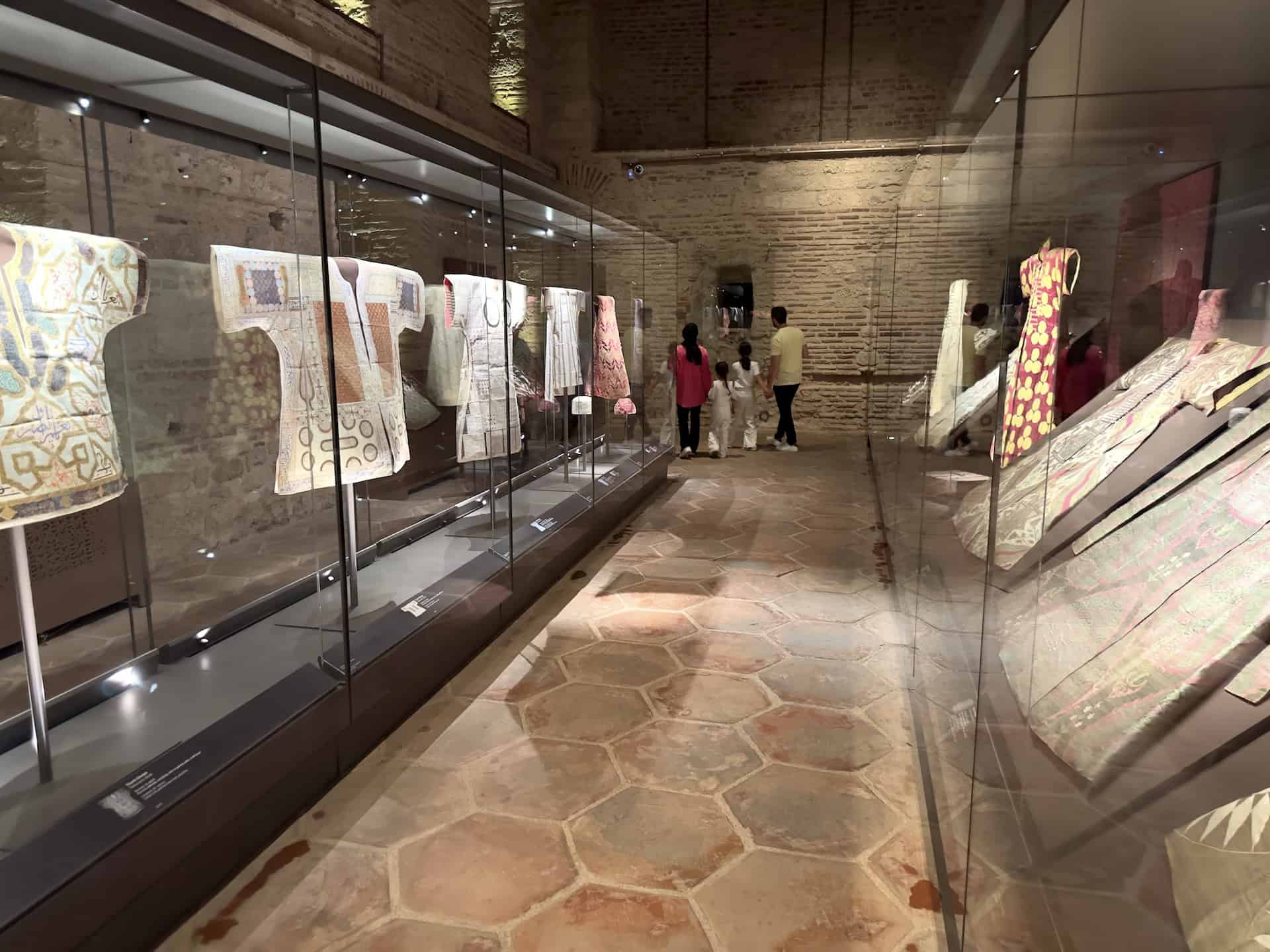
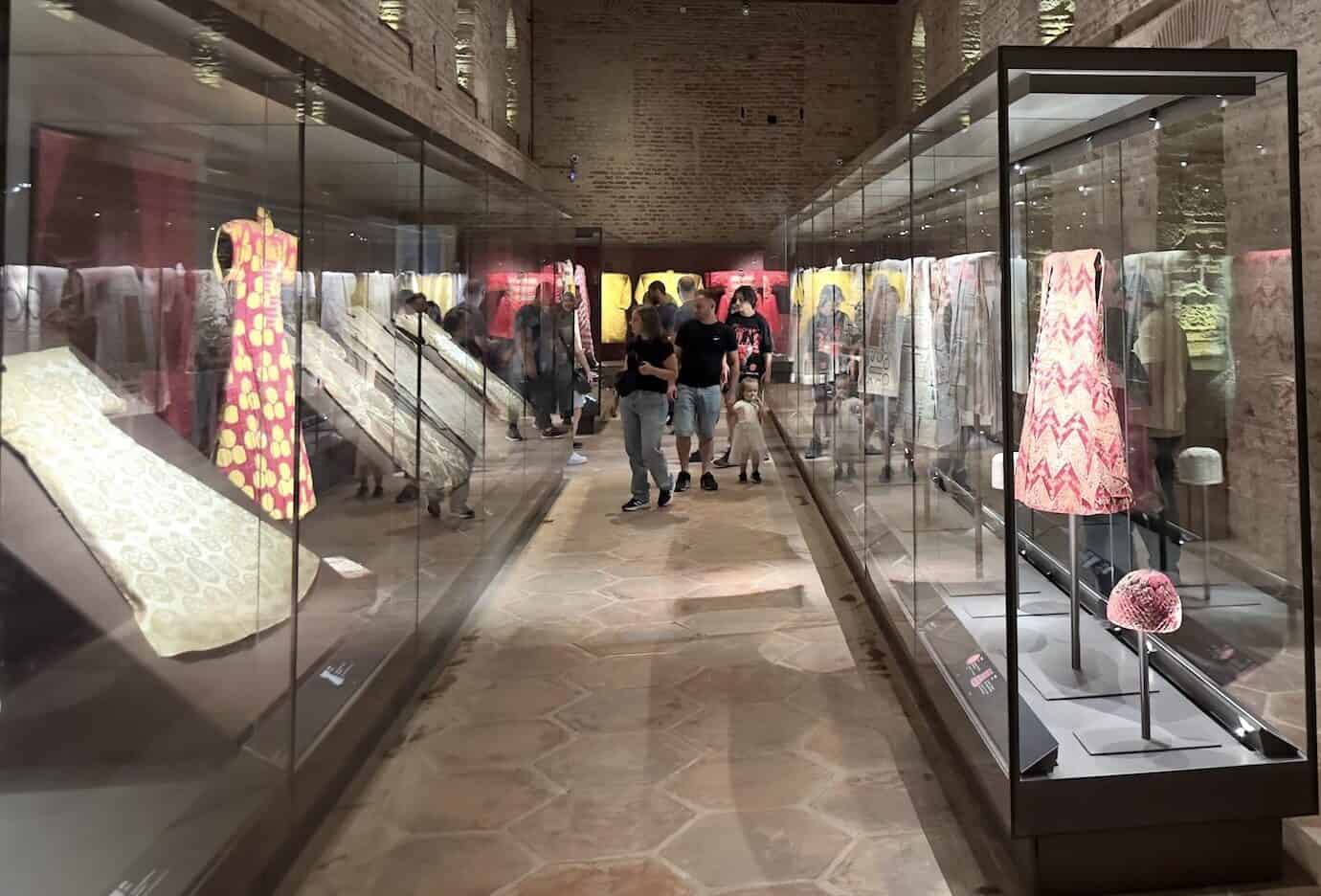
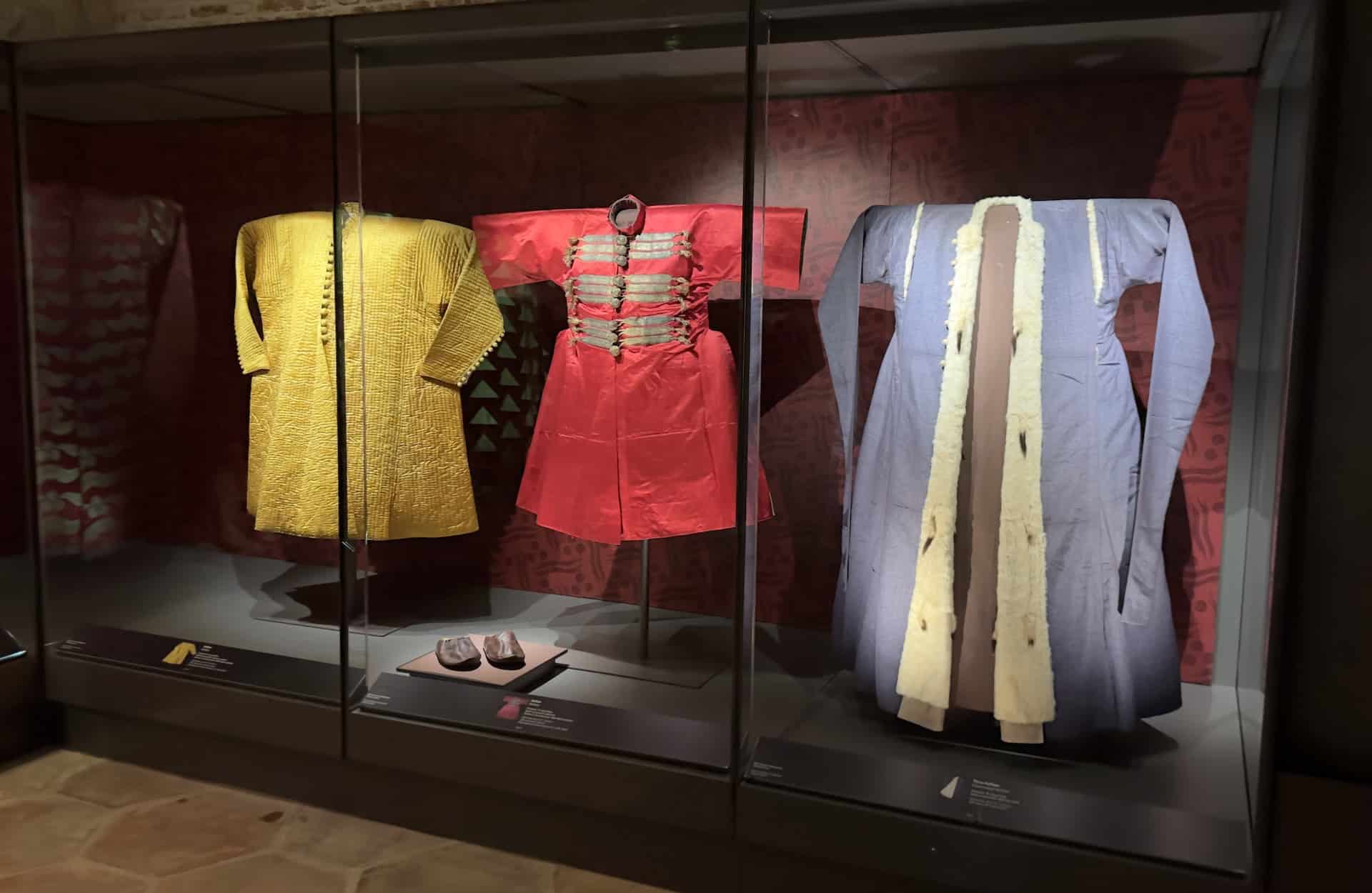
Caftans of the Sultans: 15th through 17th Centuries
Much of the ground floor displays caftans worn by various sultans during the 15th through 17th centuries. The caftans were of Turkic Central Asian origin in style and were made of high-quality materials to present an image of power.
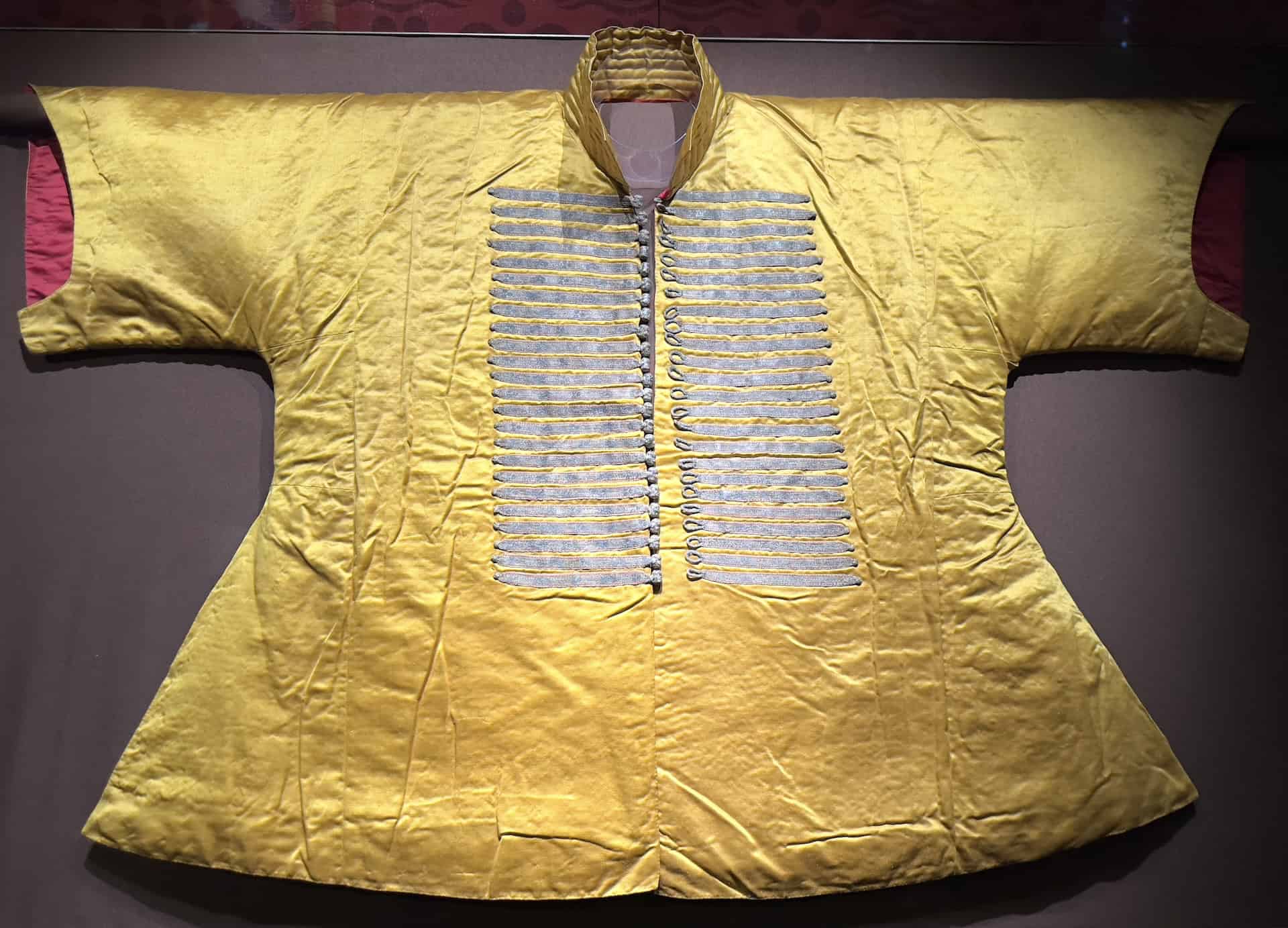
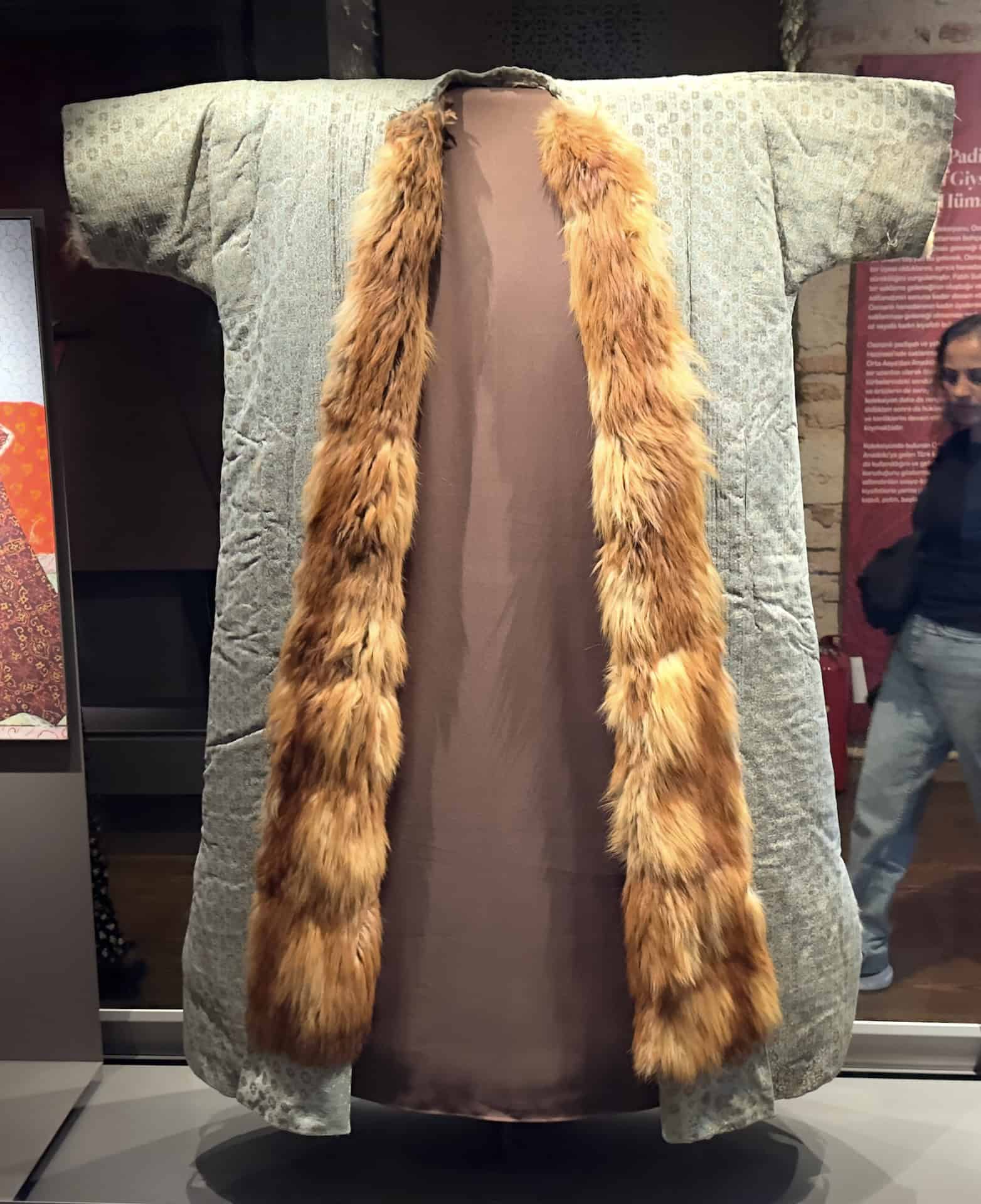

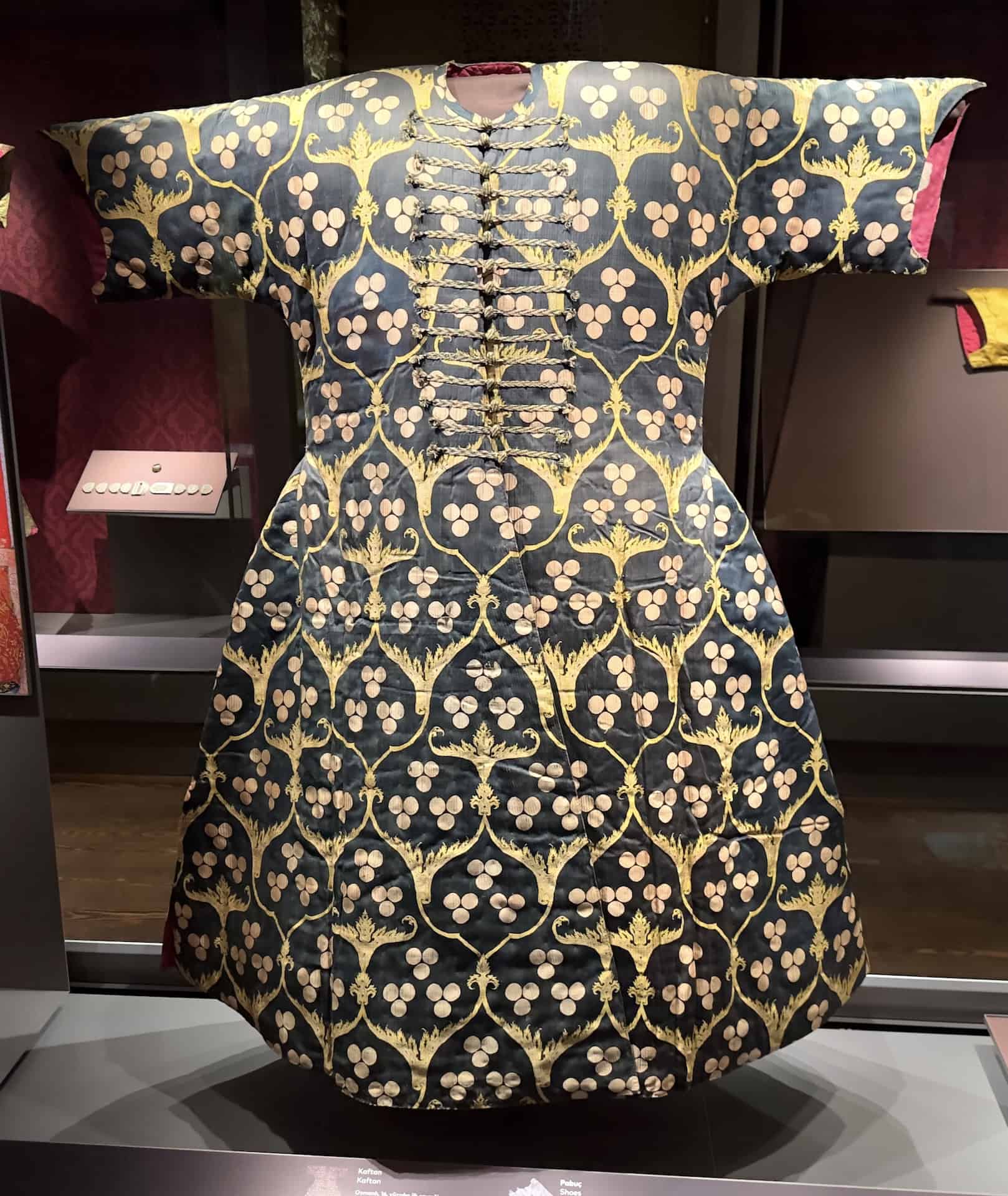
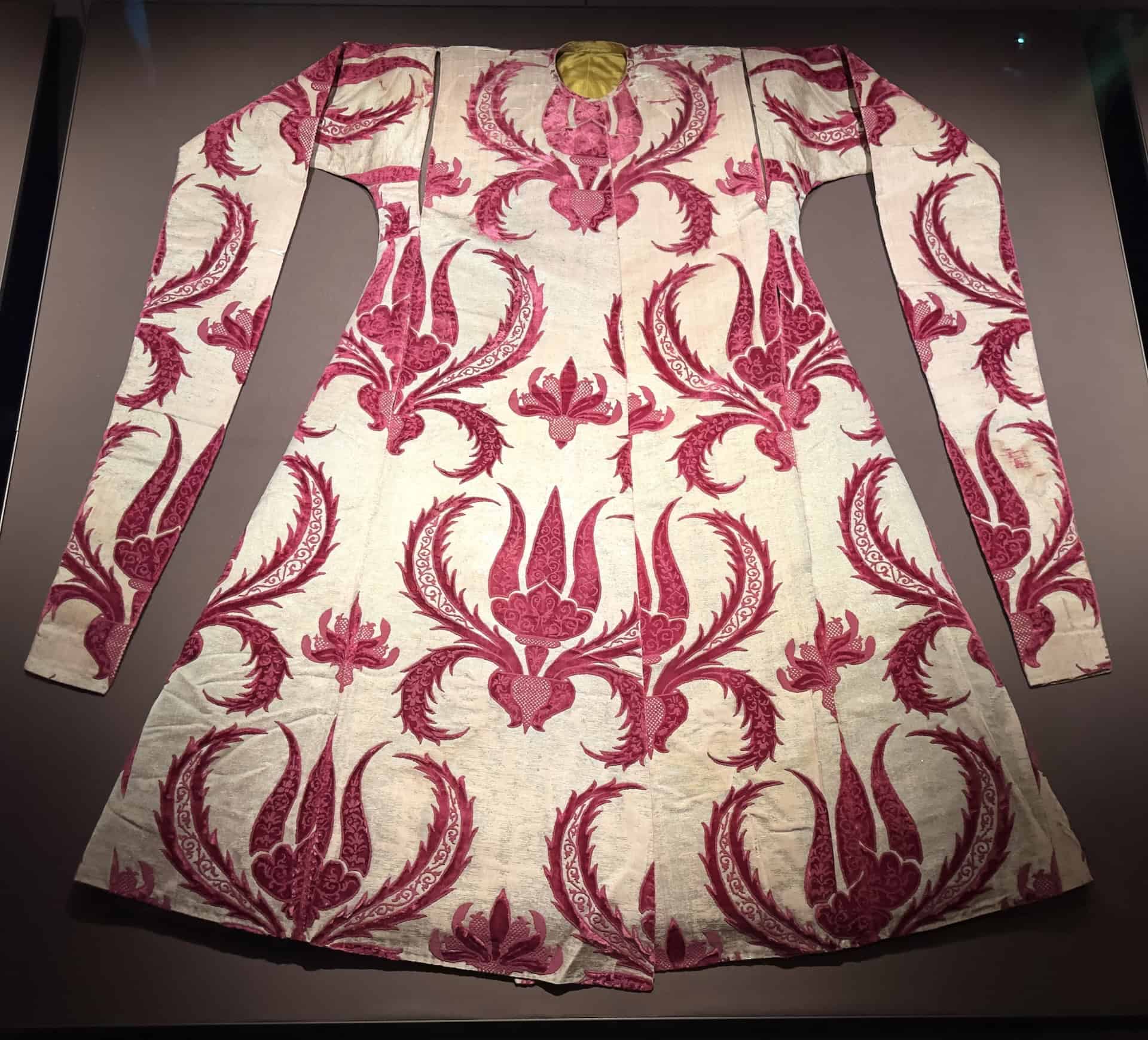
The caftans were preserved by being bundled up in cloth and stored in the Imperial Treasury. This tradition, which began with Mehmed the Conqueror, is called bohçalama, and was meant to preserve the legacy of the sultans long after they died. The first caftans from the 15th through 17th centuries reflect a preference for heavy materials and ornate designs.
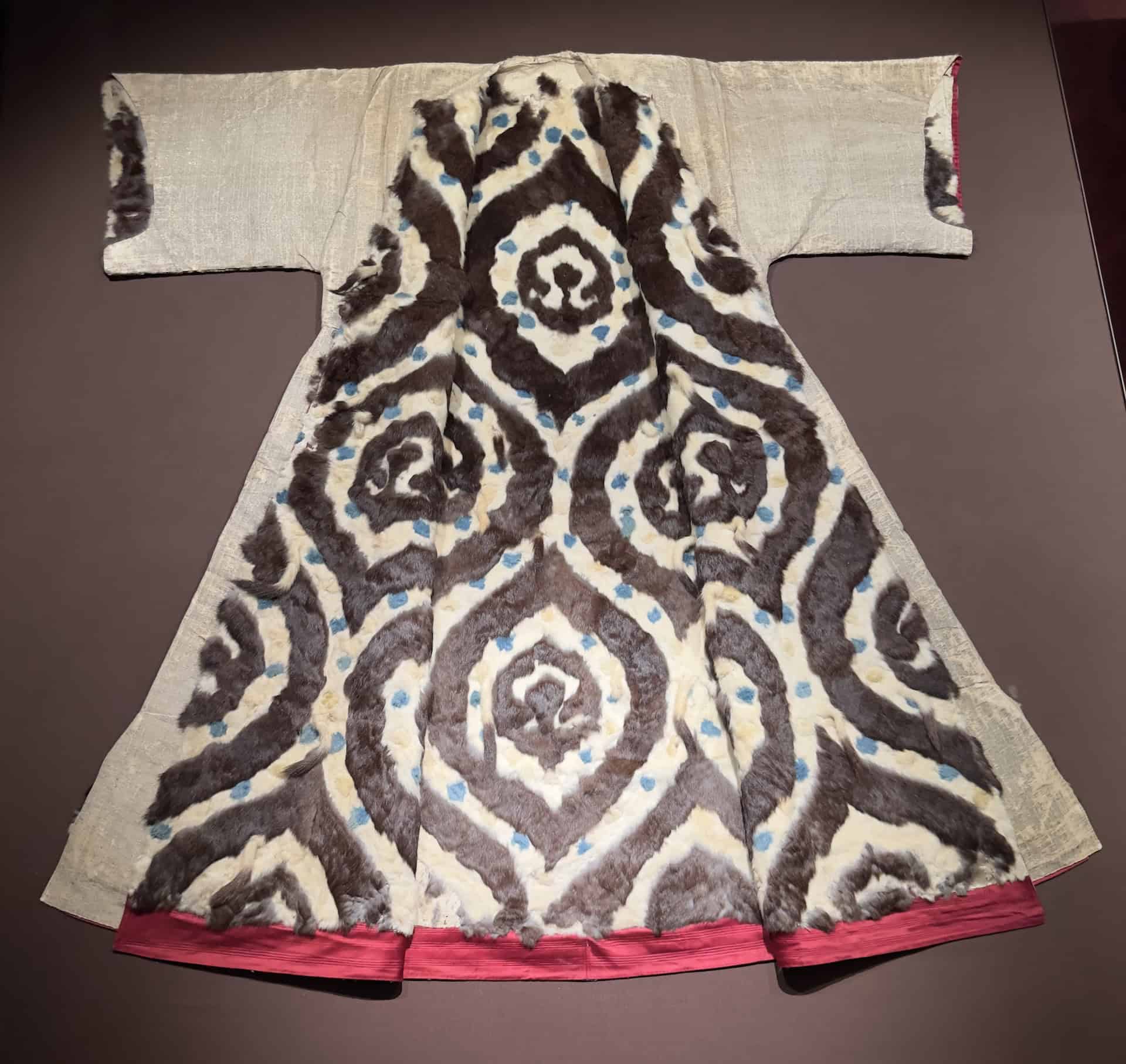
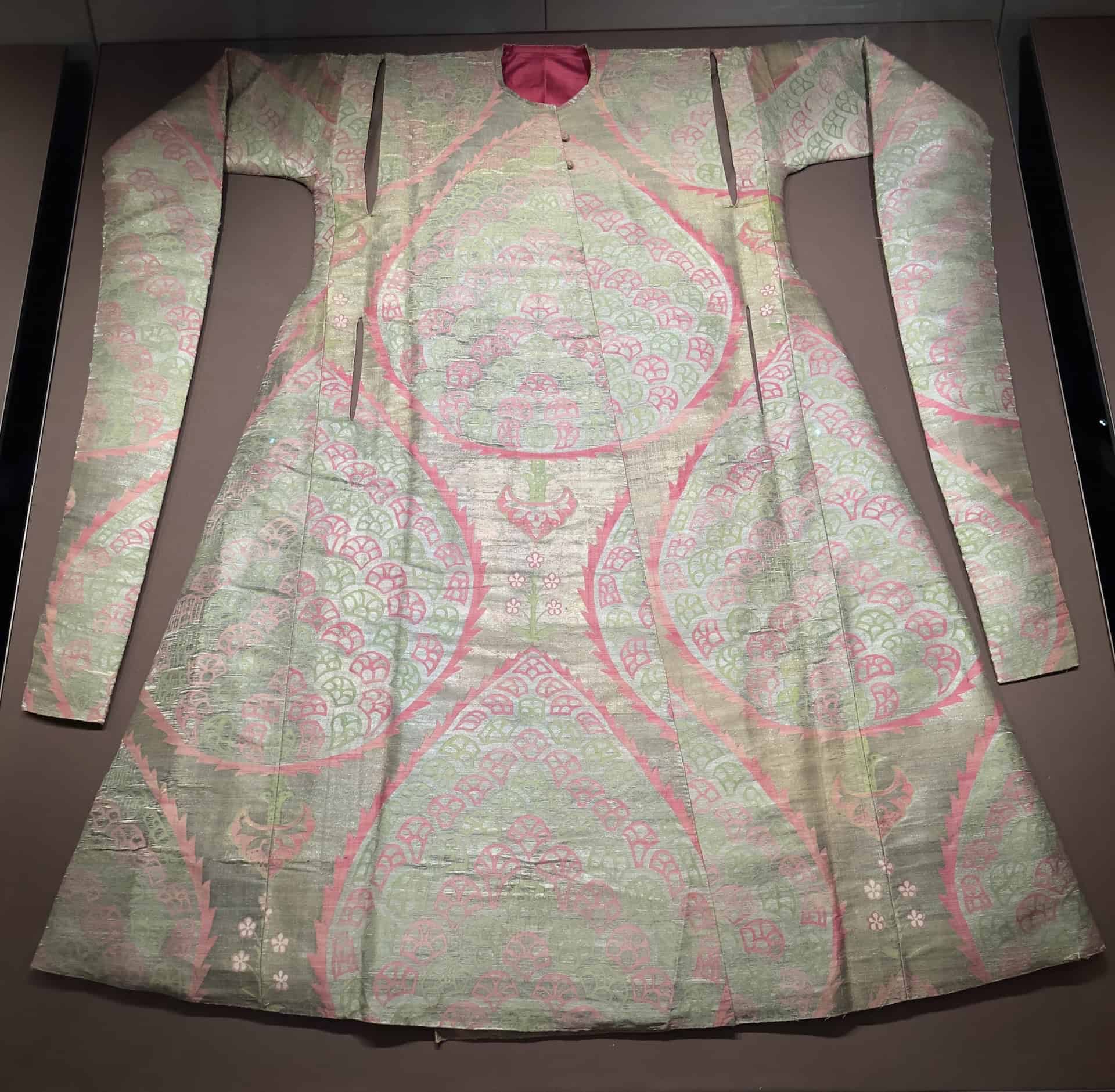
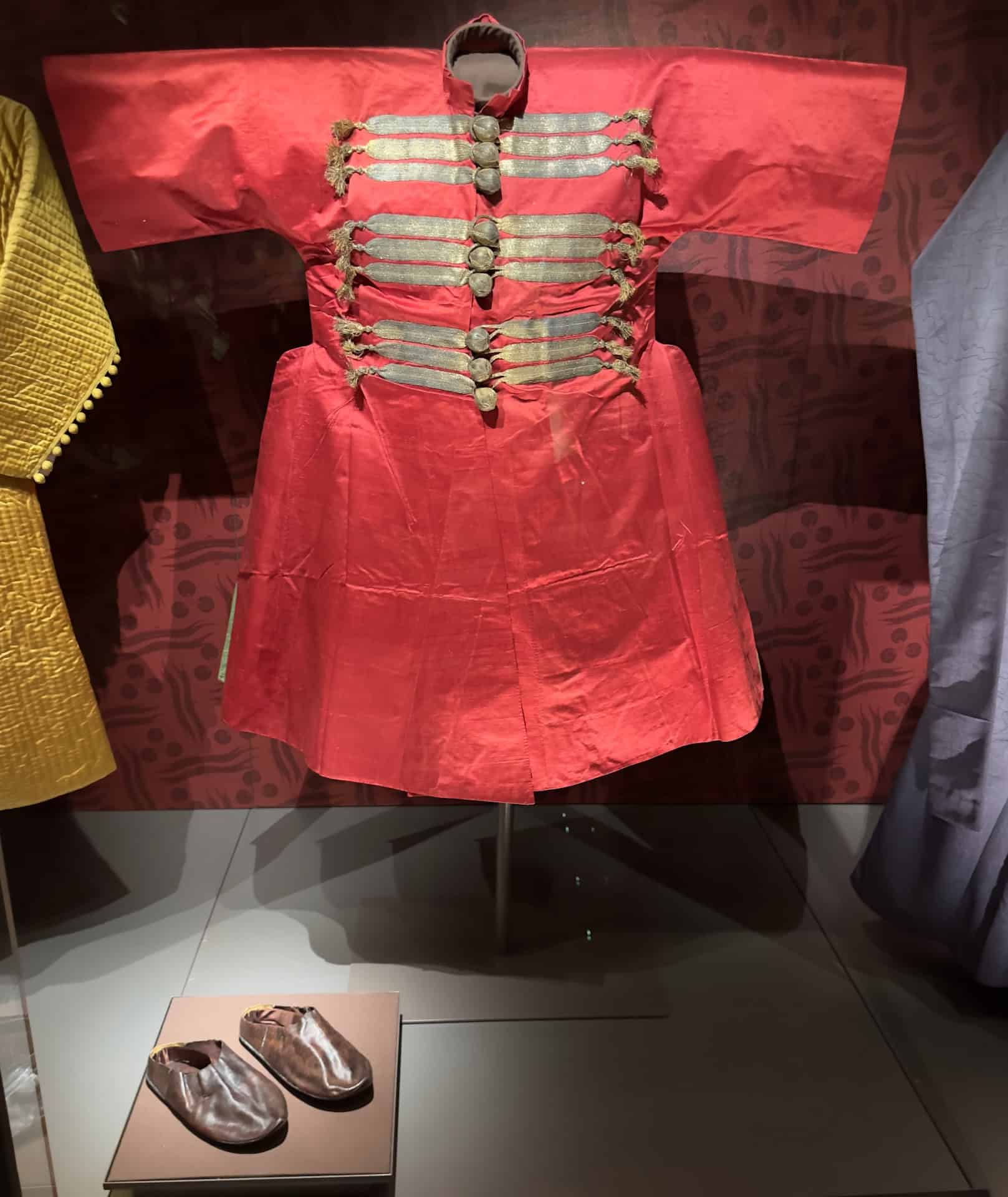
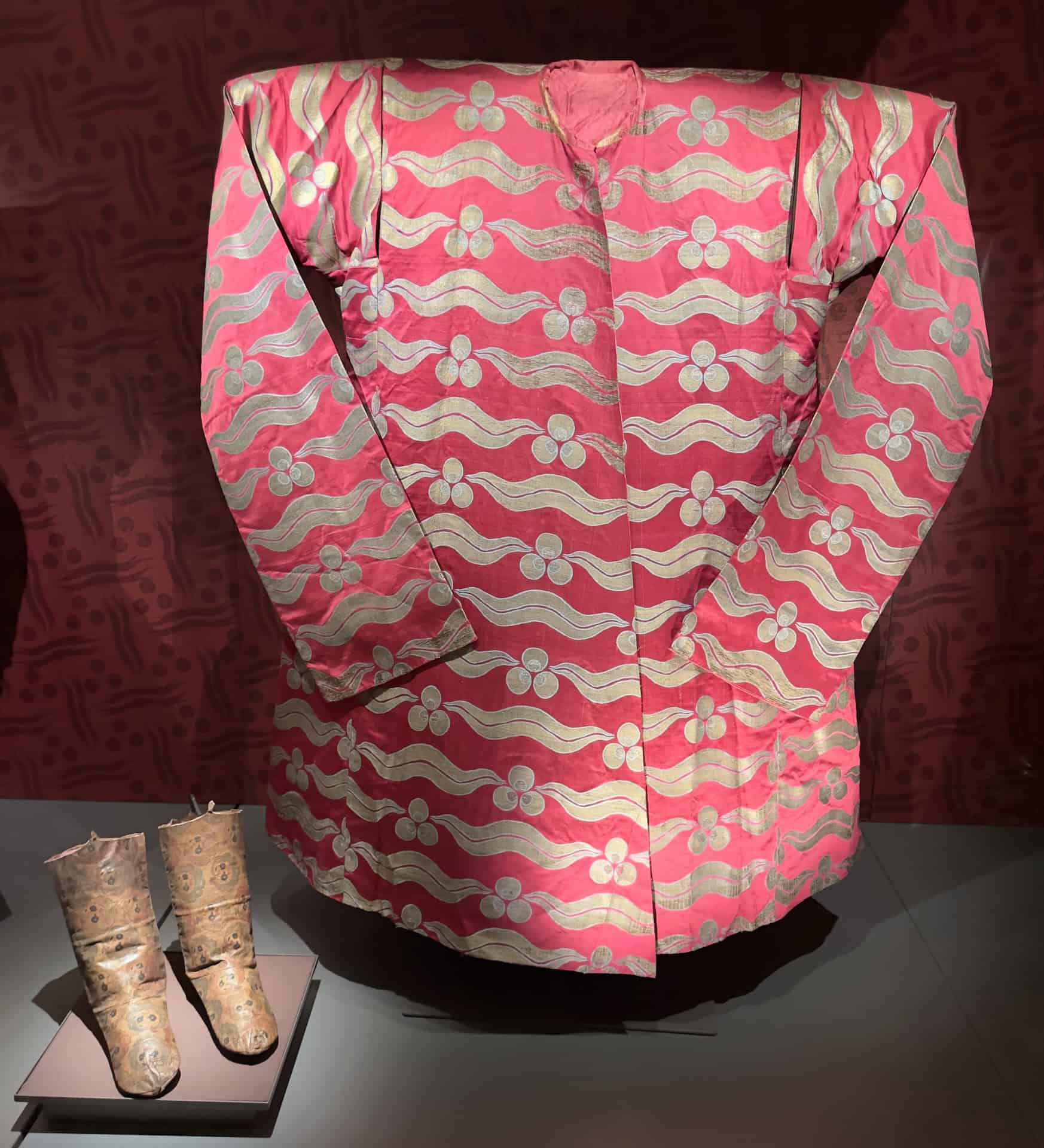
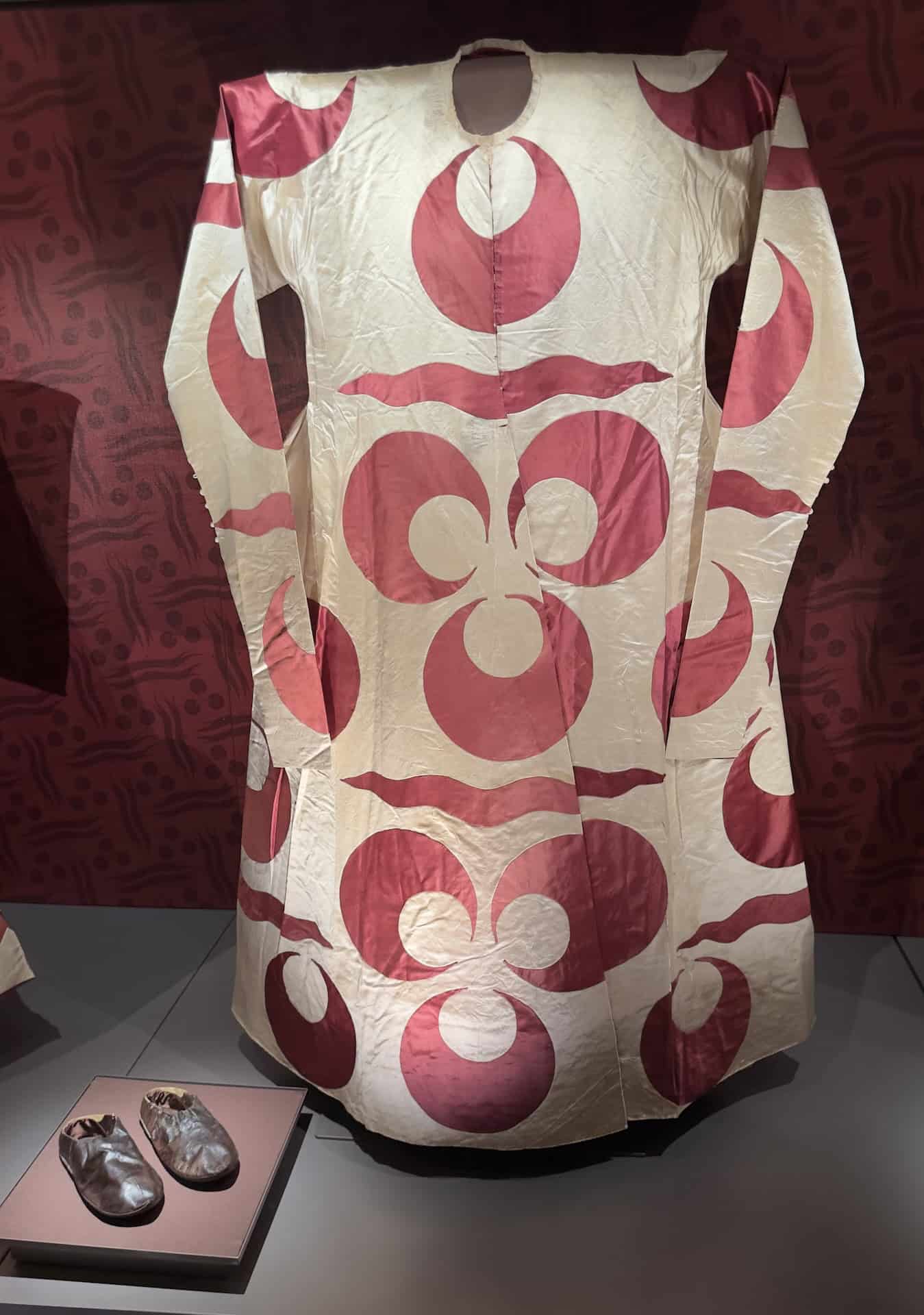
Caftans of the Sultans: 18th Century
The 18th century marked a major change in the production of Ottoman textiles. With industrialization came the ability to mass produce textiles and match the quality of European clothing. During the reign of Ahmed III, preferences shifted from expensive, heavy, and ornate clothing to light and plain.
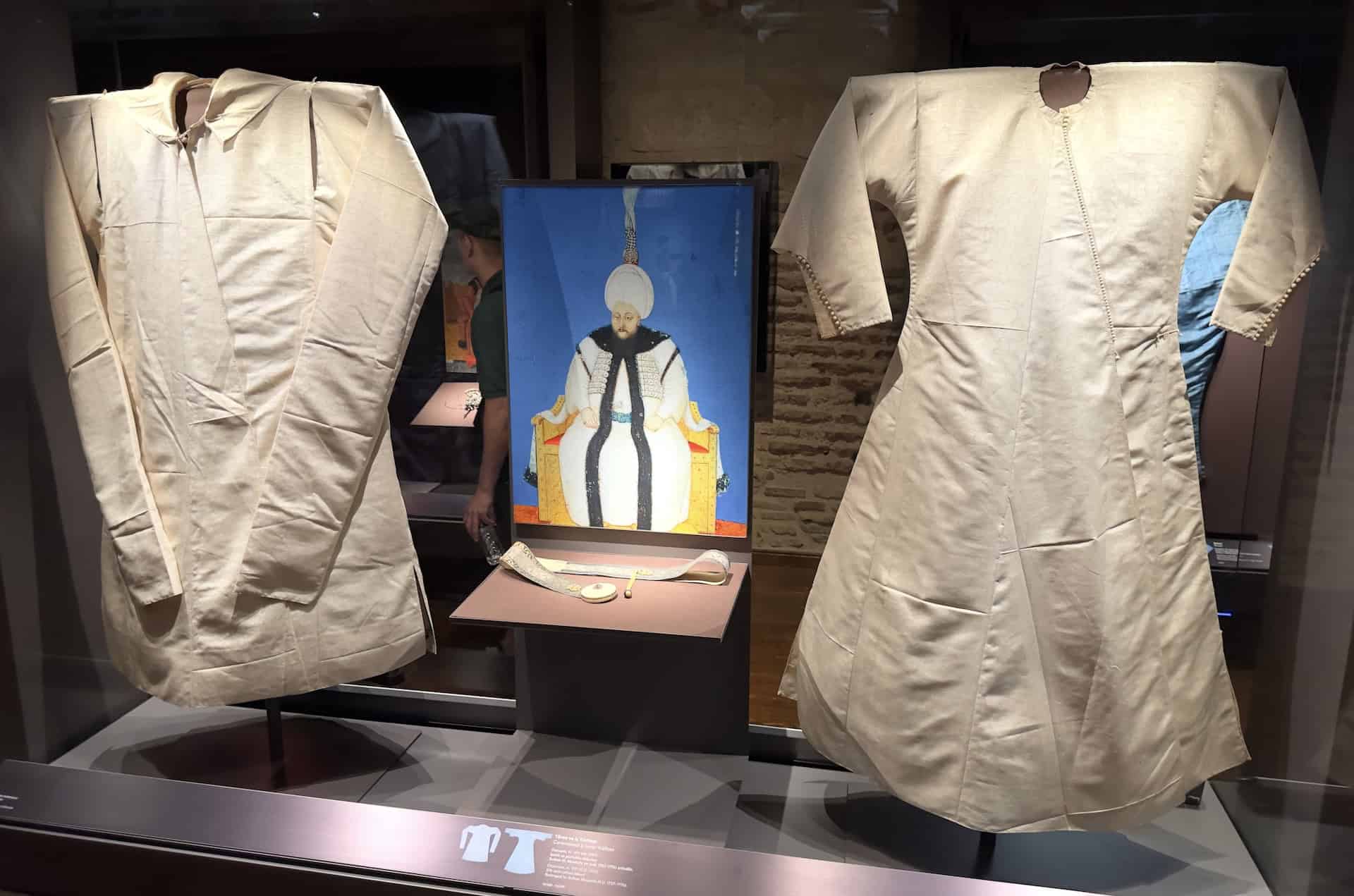
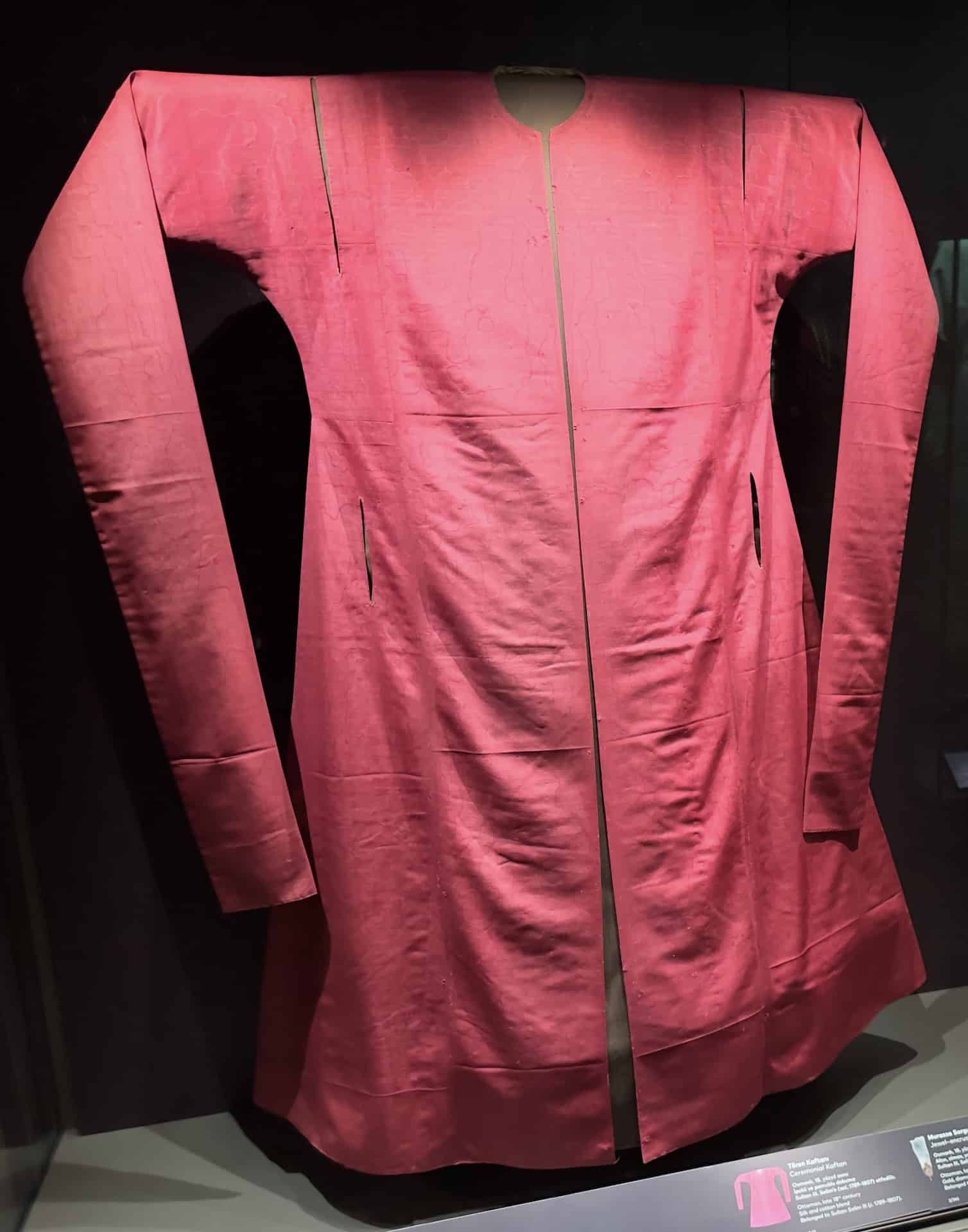
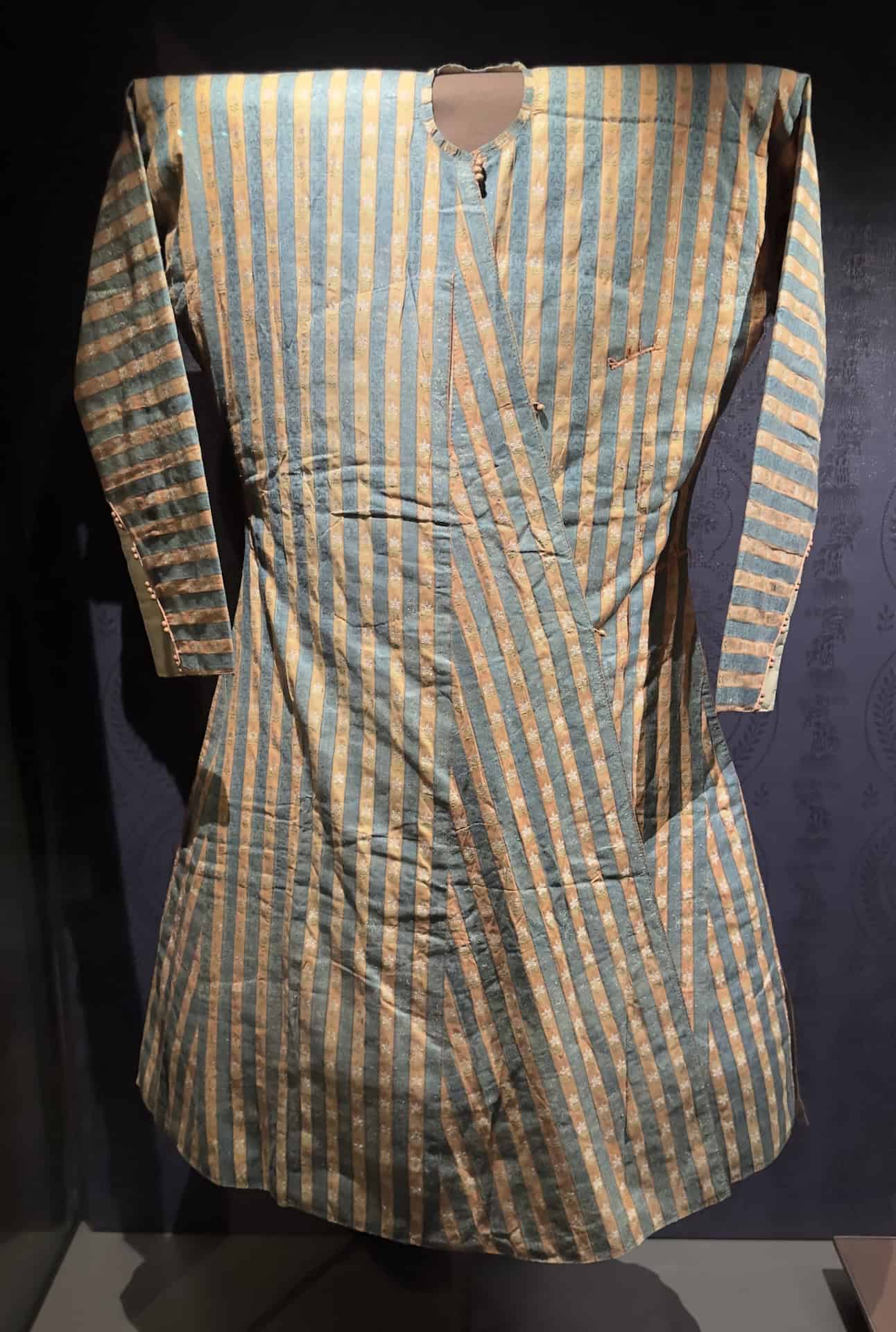
Uniform and Fez Reforms
Another section on the ground floor displays clothing worn by the sultans after the uniform and fez reforms adopted by Sultan Mahmud II in 1826. He shifted from a traditional and religious style of clothing to a Western style.
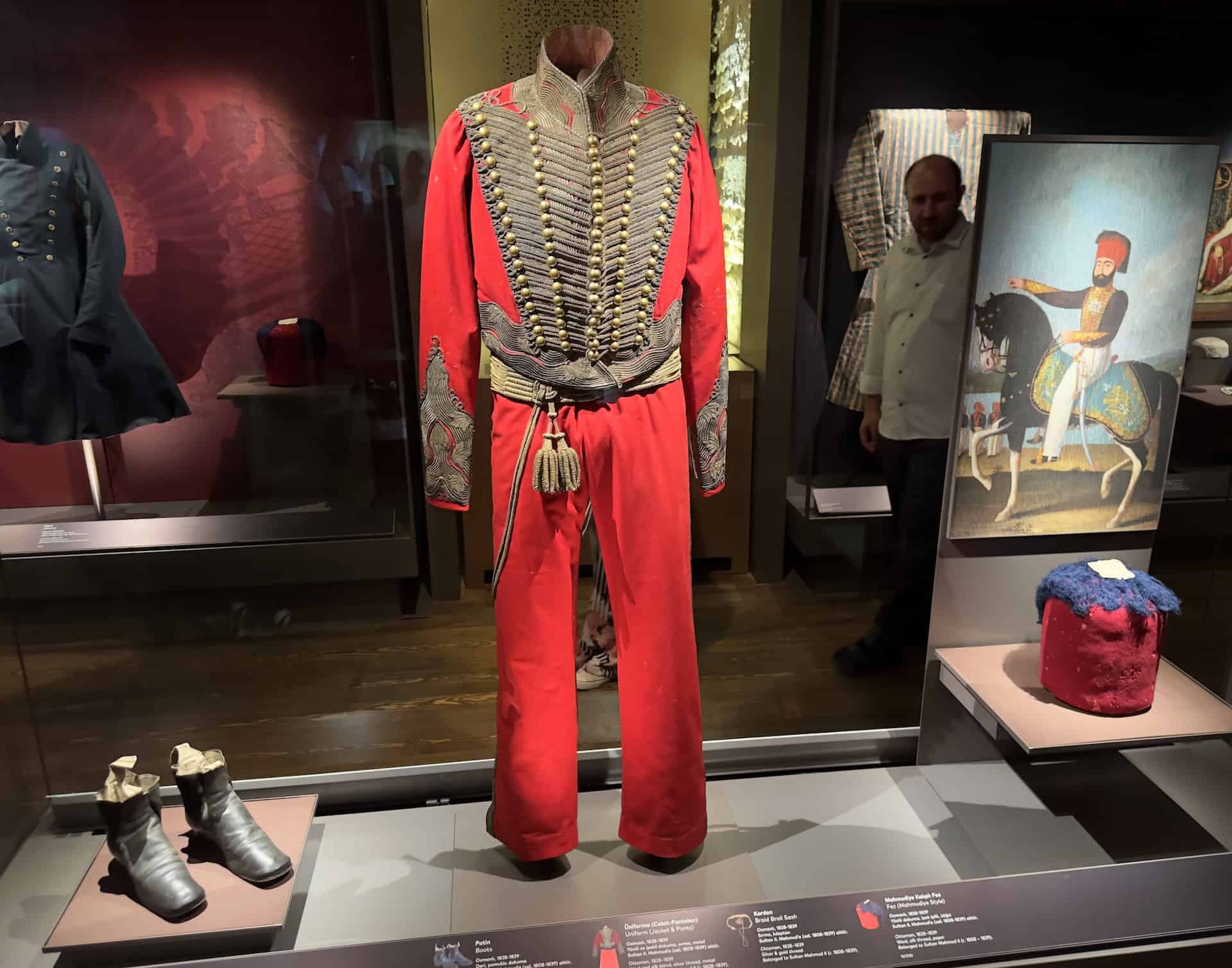
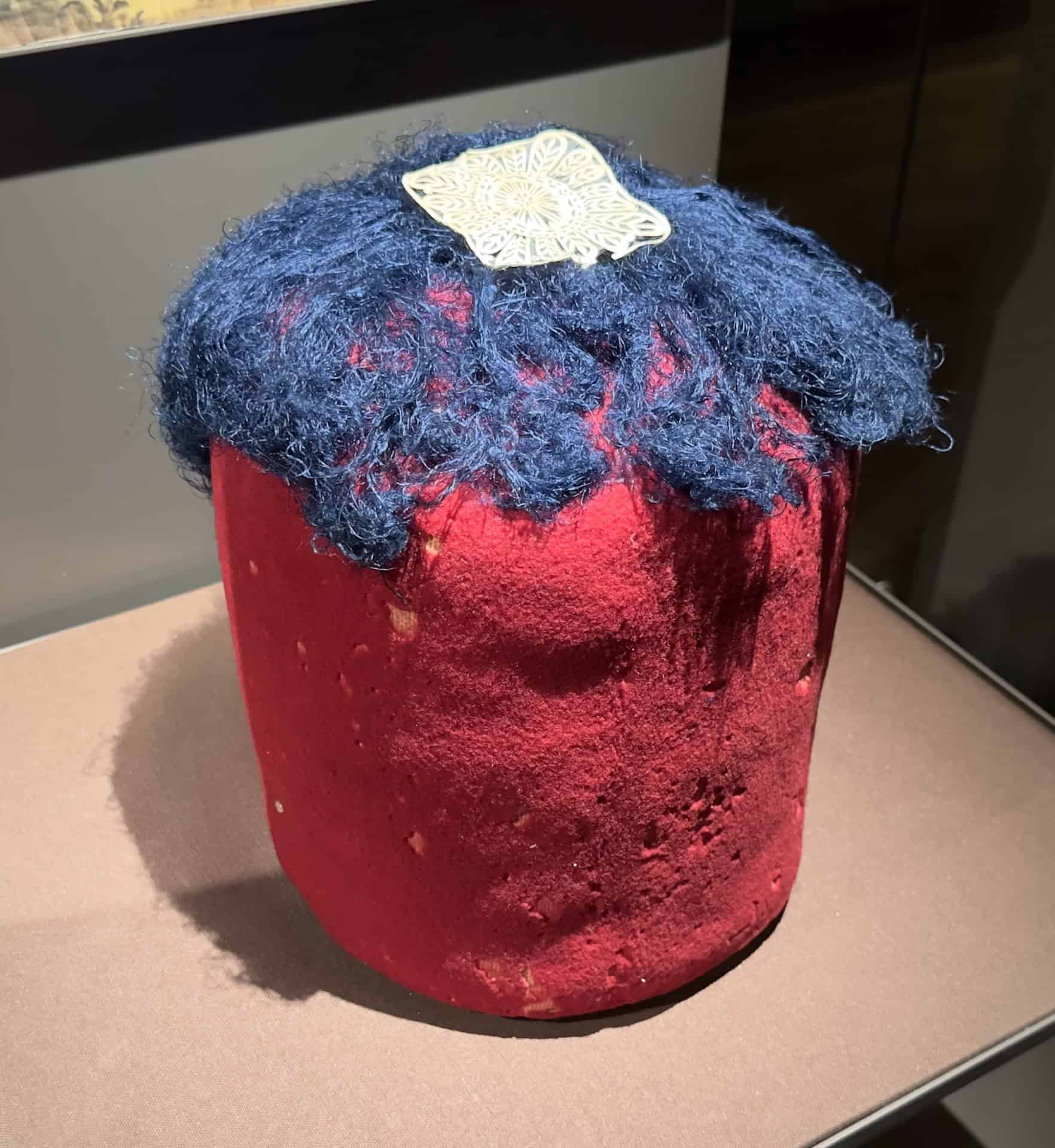
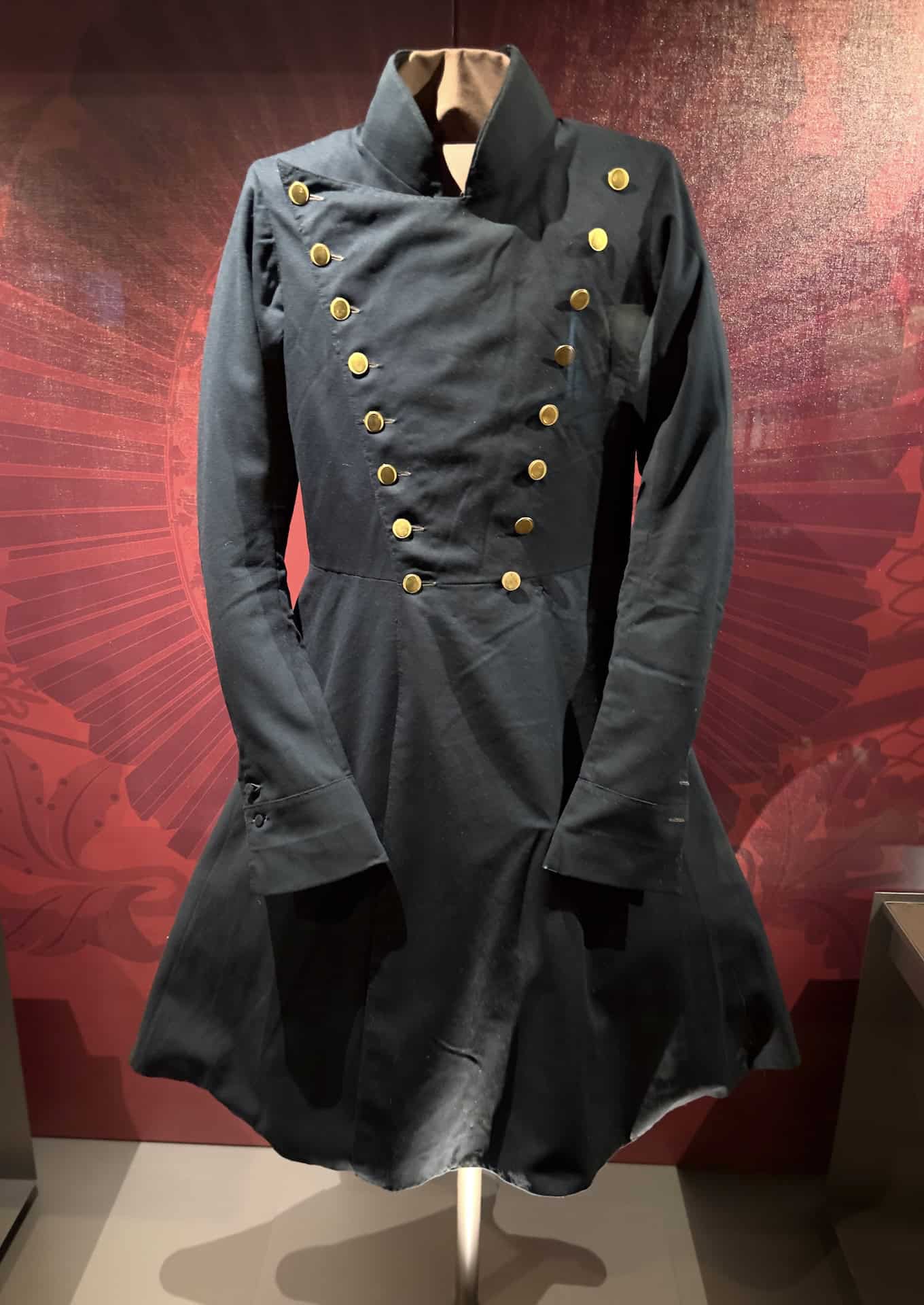
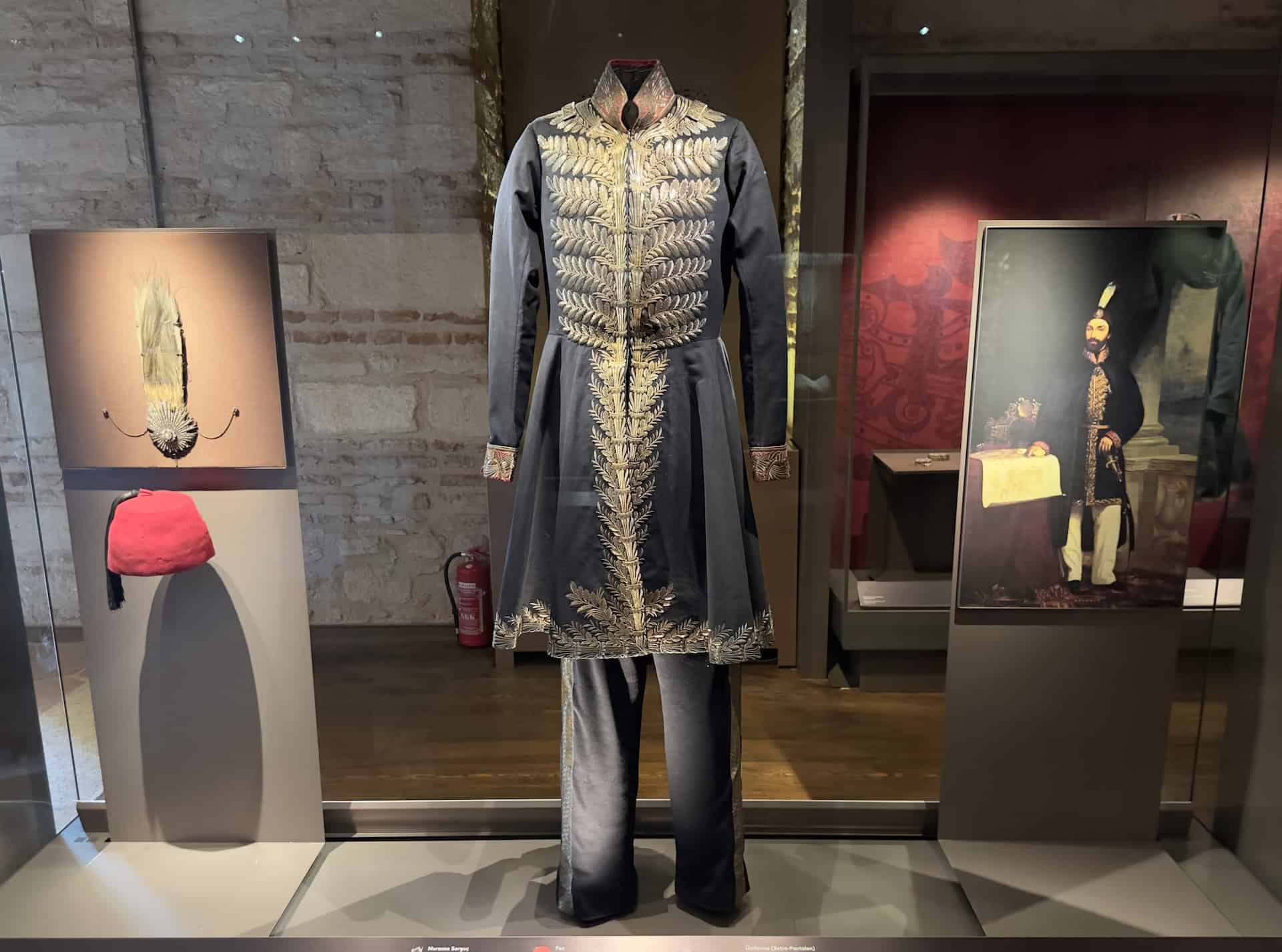
Talismanic Shirts
Upstairs is a small collection of talismanic shirts. Ottoman sultans and princes wore them to protect from misfortune and bad health. They were elaborately decorated with symbols and verses from the Quran chosen by Islamic scholars. Calligraphers would write on the shirts and court miniaturists would add motifs.
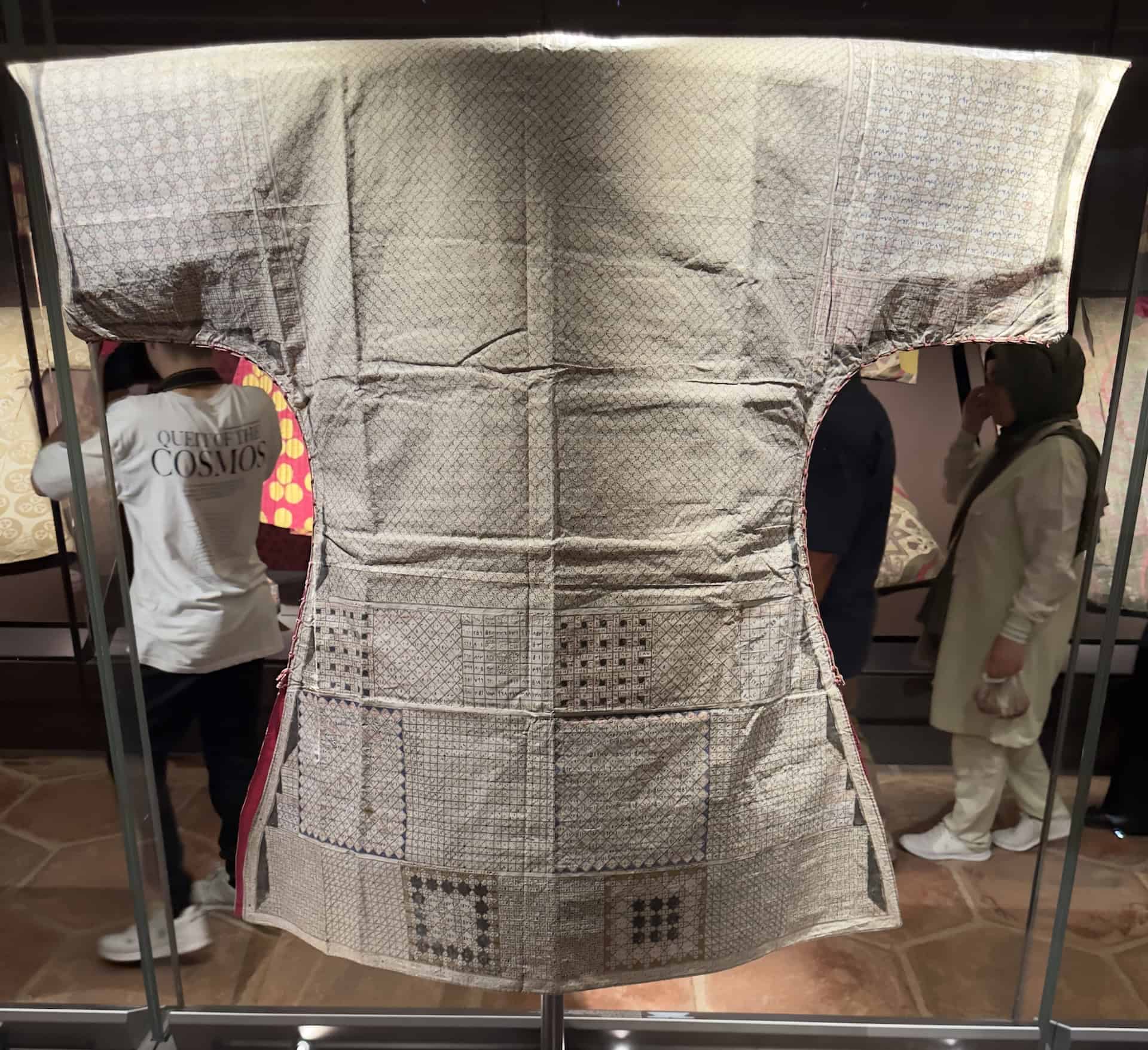
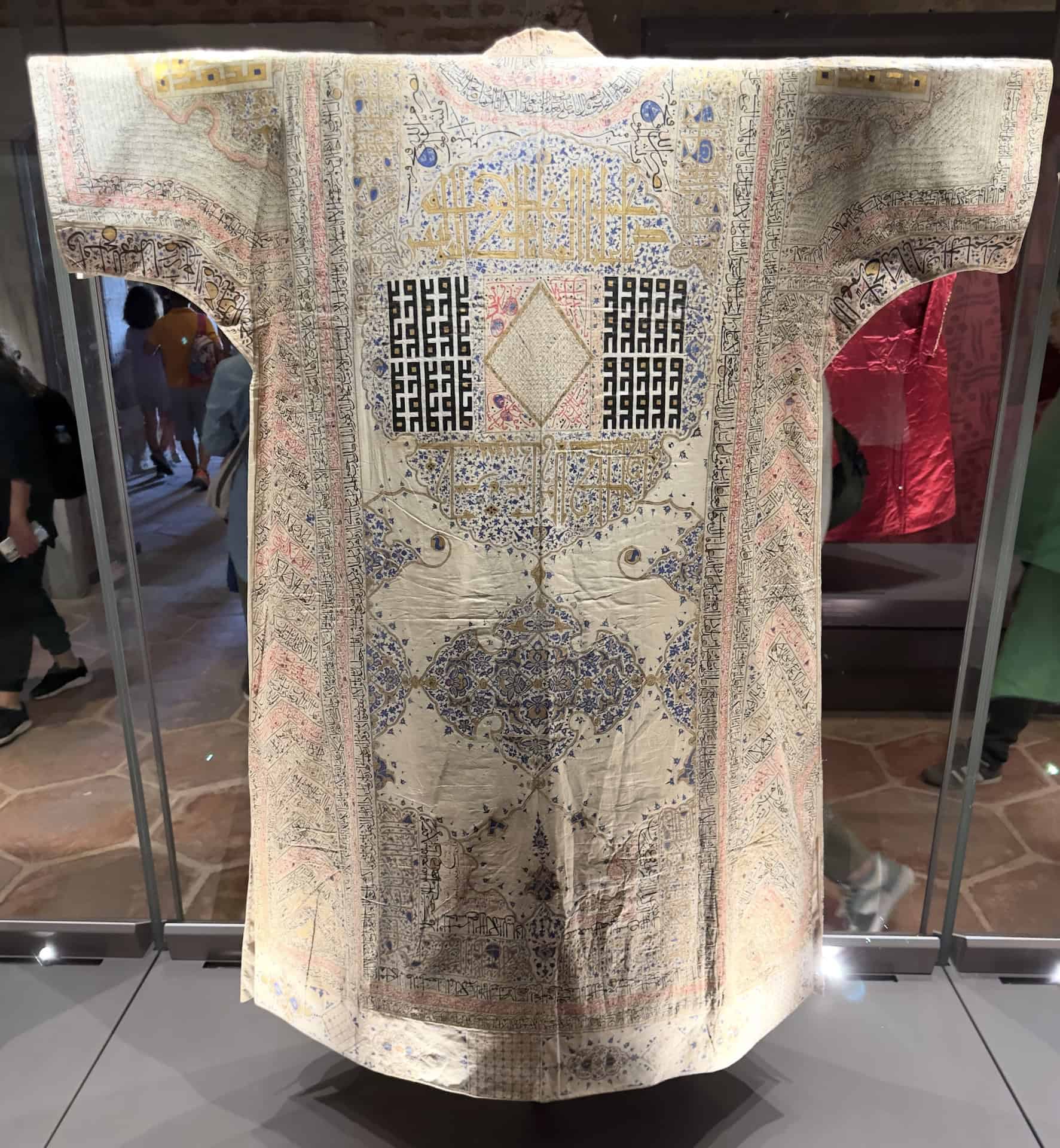
The earliest example of a talismanic shirt in the Imperial Wardrobe Collection belonged to Cem Sultan (1459-1495), the son of Mehmed the Conqueror. The shirt is inscribed in Persian with the details of the person who made it. He began work at 3:57 AM on Sunday, March 30, 1477, when the sun was positioned 19 ° around Aries. He finished the shirt at 12:36 AM on Tuesday, March 29, 1480, again when the sun was 19 ° around Aries. Both dates were considered lucky by the palace astronomer based on the position and movement of the stars.
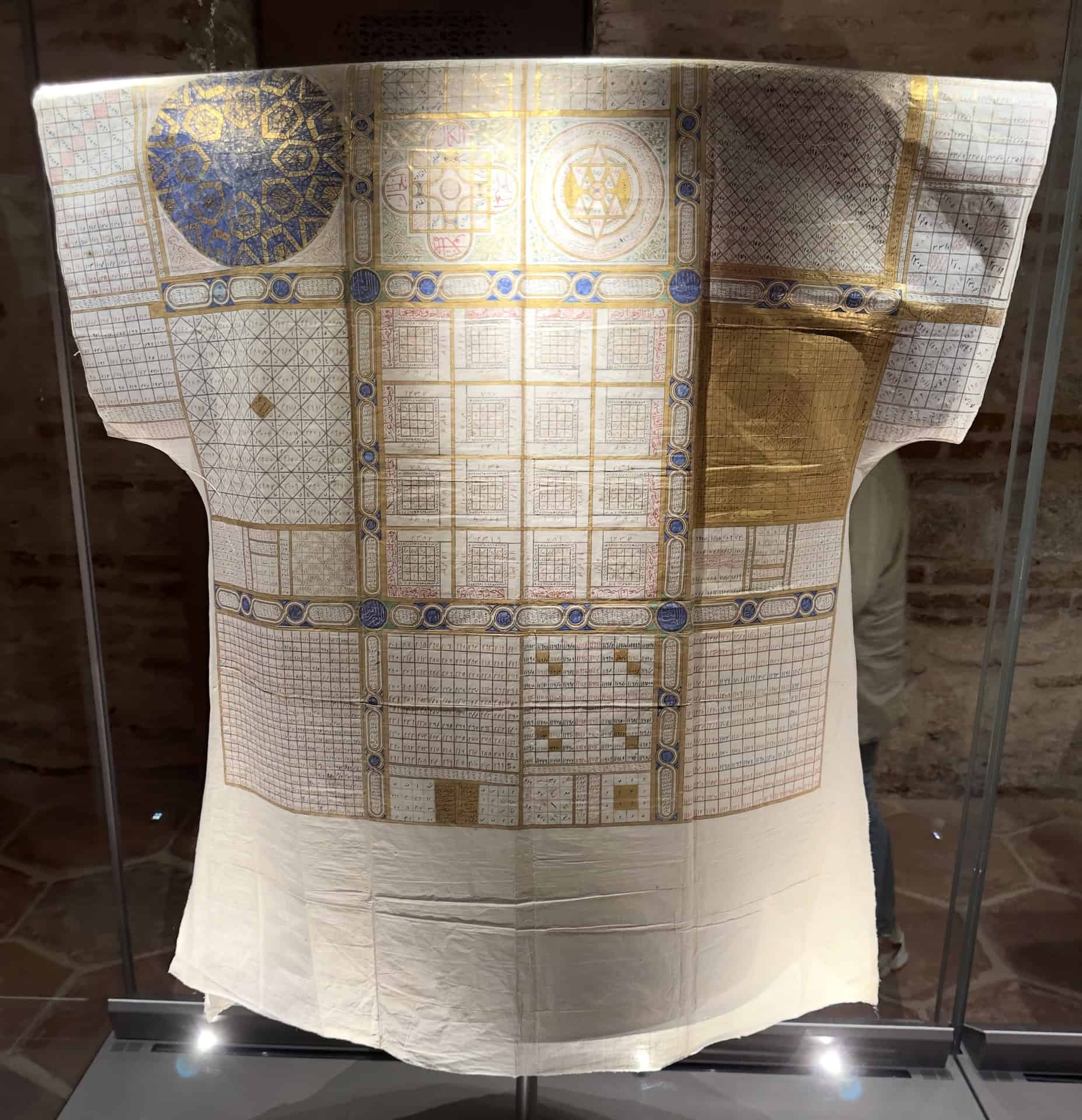
Wardrobes of the Ottoman Princes
Also on the upper level is a collection of clothing worn by Ottoman princes. As potential heirs to the throne and the key to the dynasty’s survival, their lives were taken very seriously.
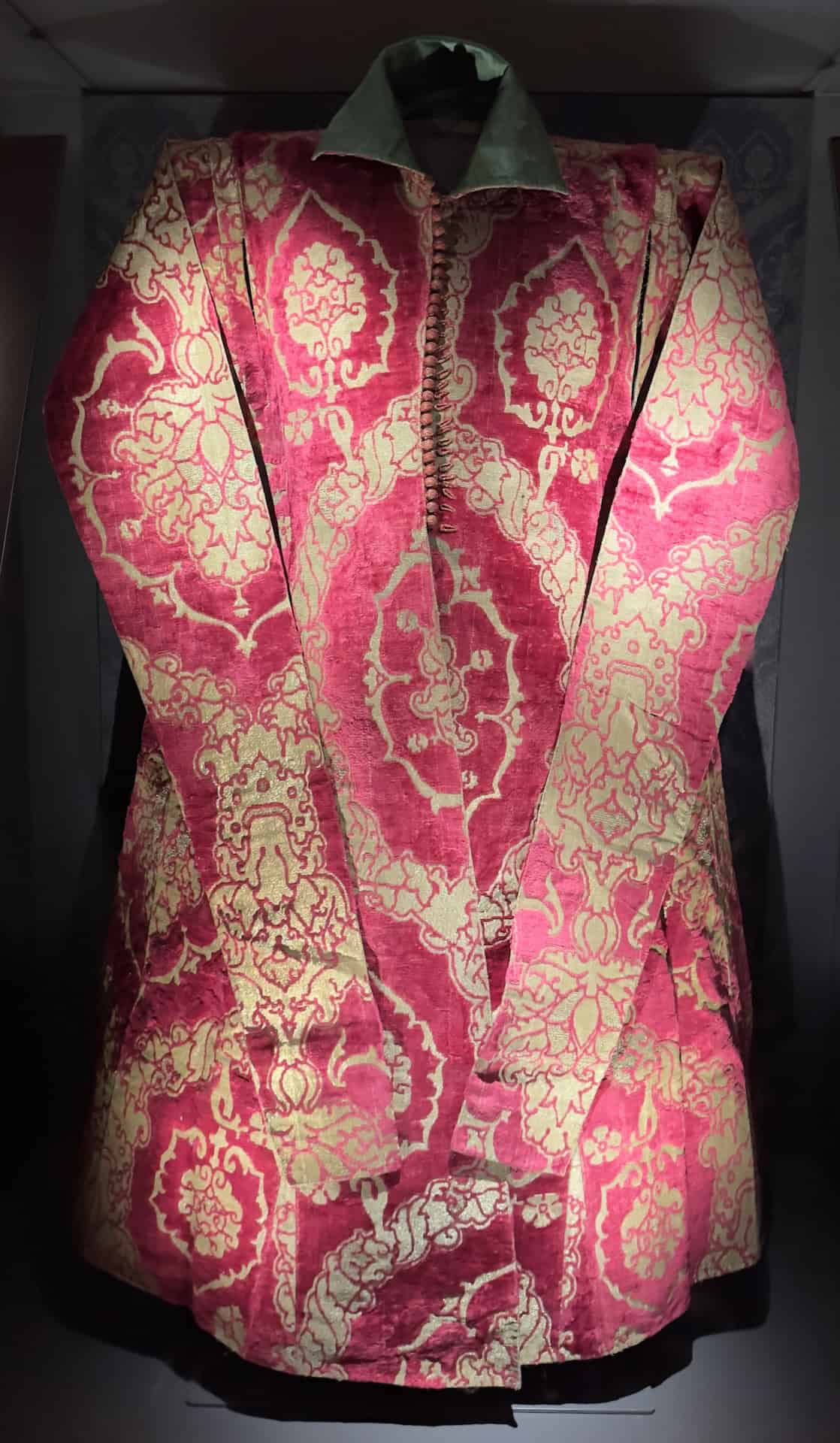
Princes would begin their education at the Imperial Harem and would be circumcised around the age of 13 or 14. Later on, the princes would be appointed governor of a district of the Ottoman Empire to gain experience in ruling.
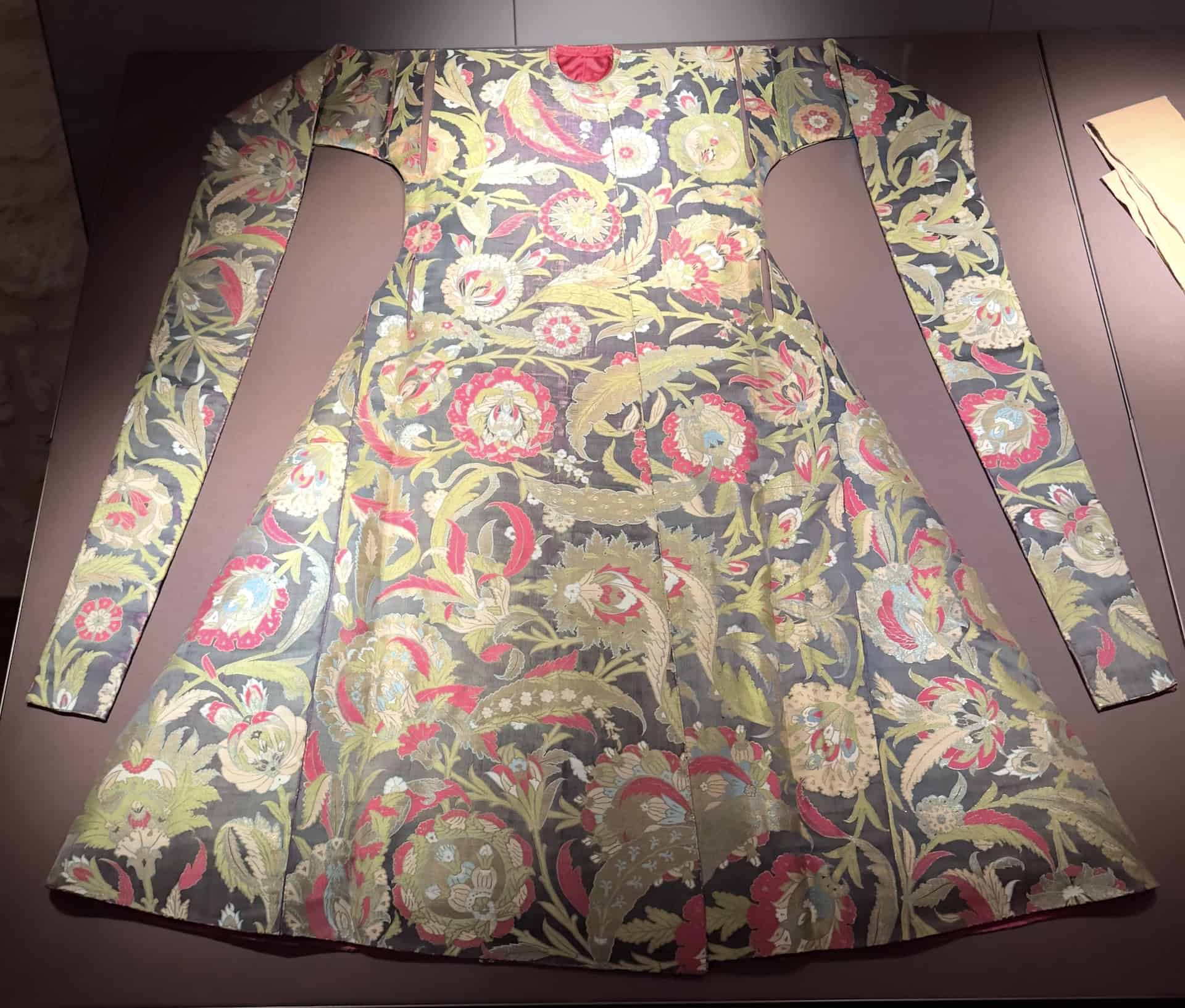
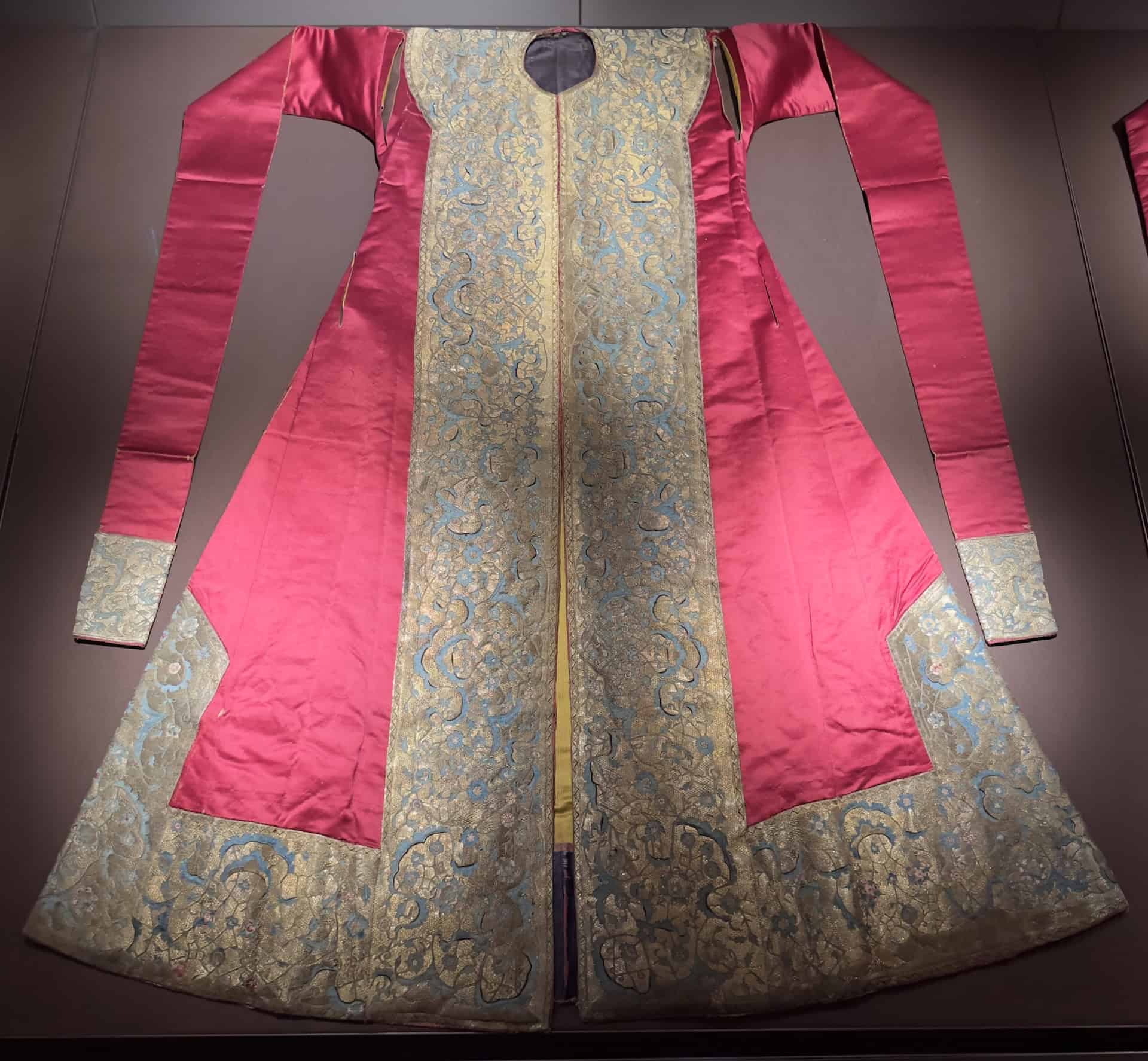
When the Sultan died, the princes would then fight each other over who would succeed him. This tradition was abolished by Ahmed I, who guaranteed the eldest son as the first in line to the throne.
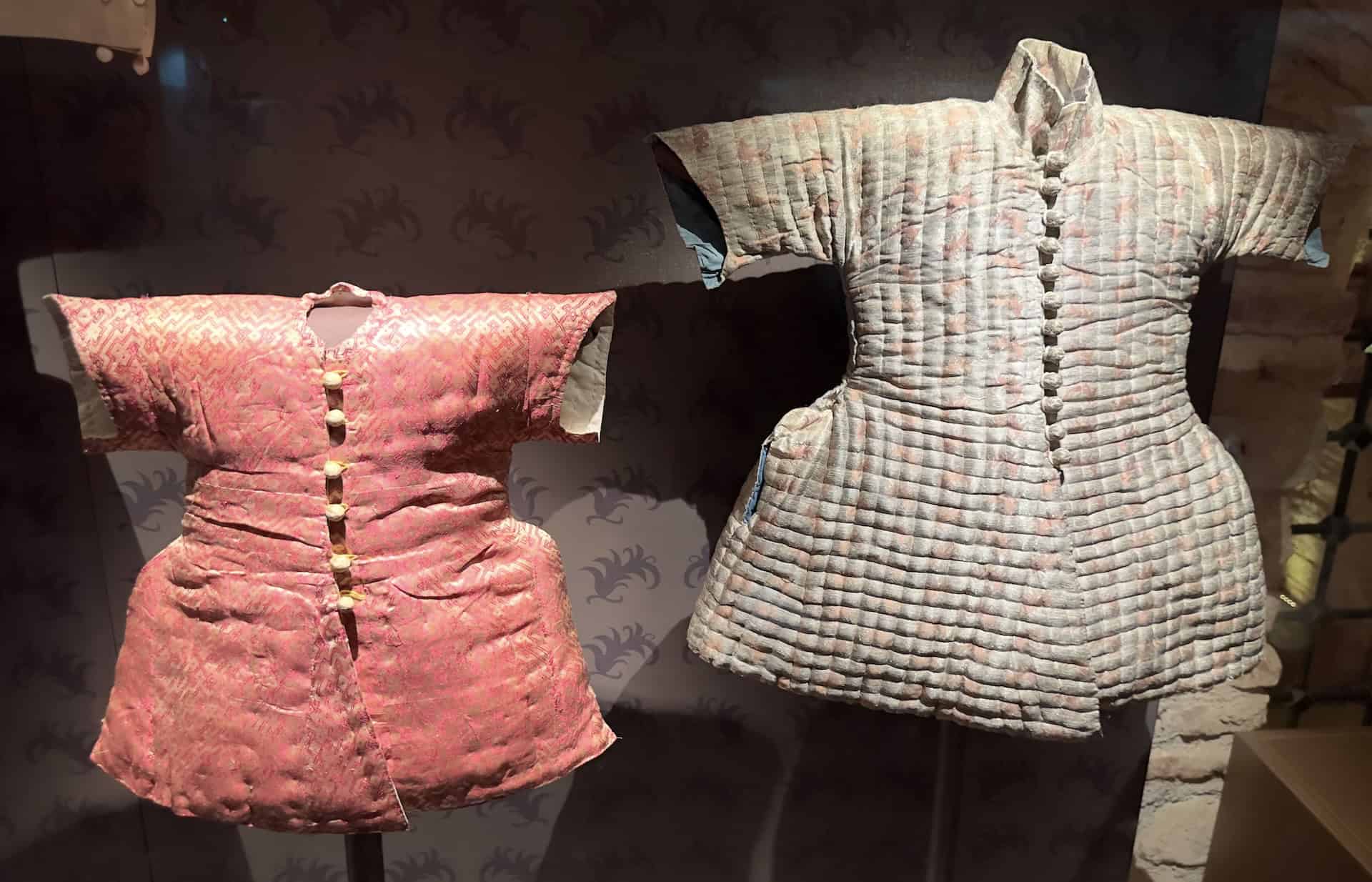
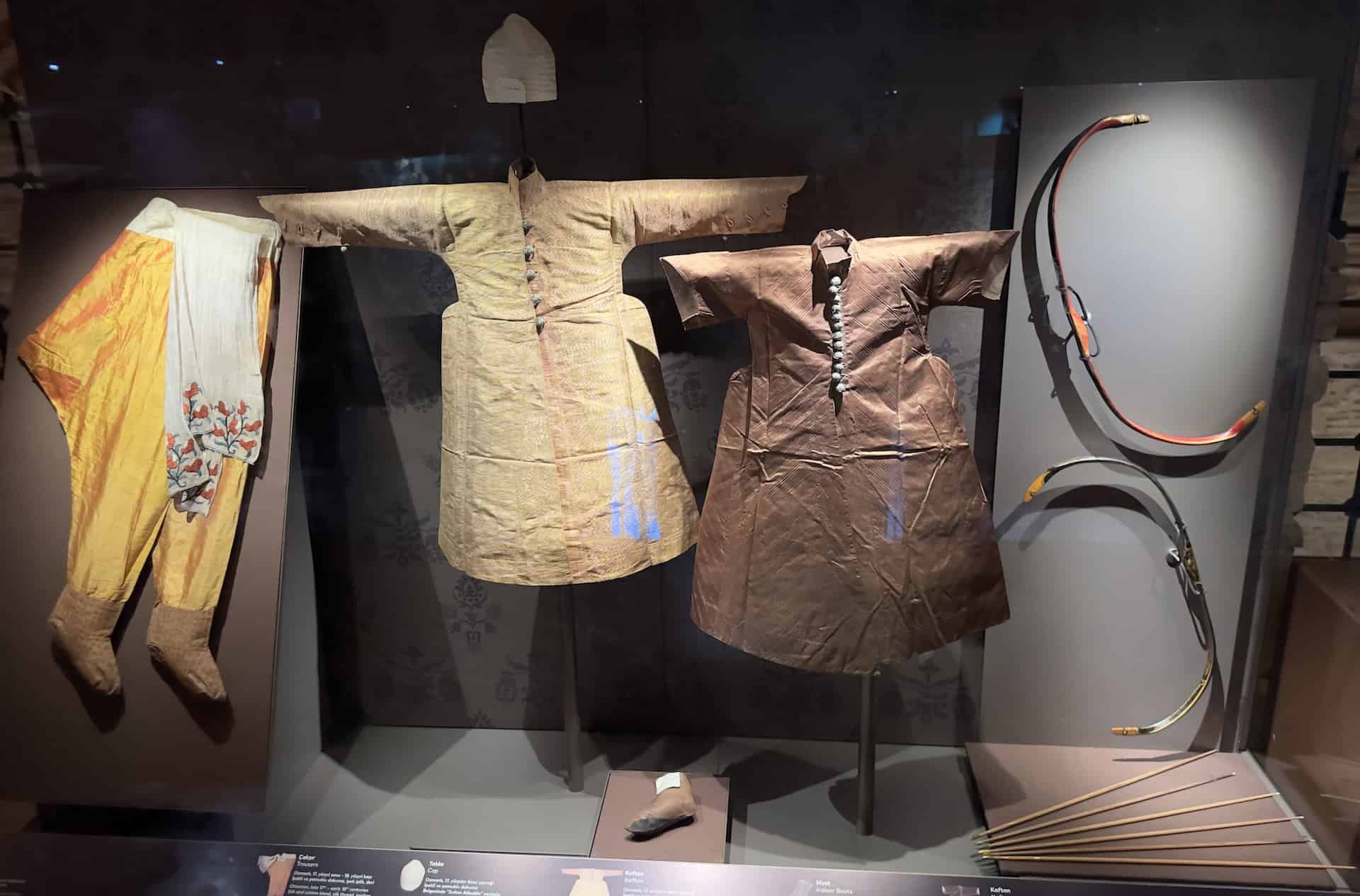
From that point on, the Crown Prince was placed under house arrest in the Twin Kiosk of the Harem. This was known as the kafes (cage). Some were unfortunate enough to have lived out the rest of their lives inside.
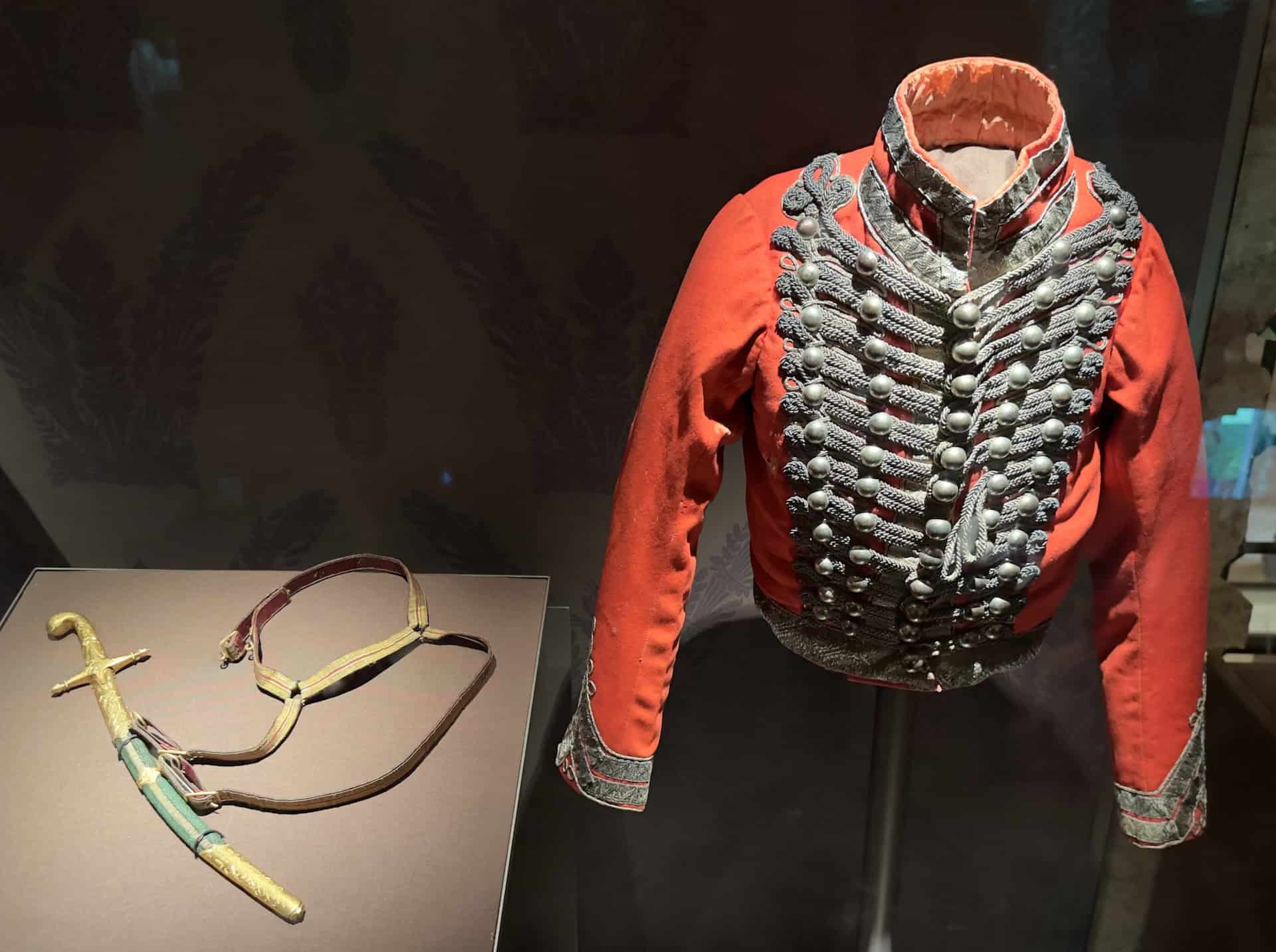
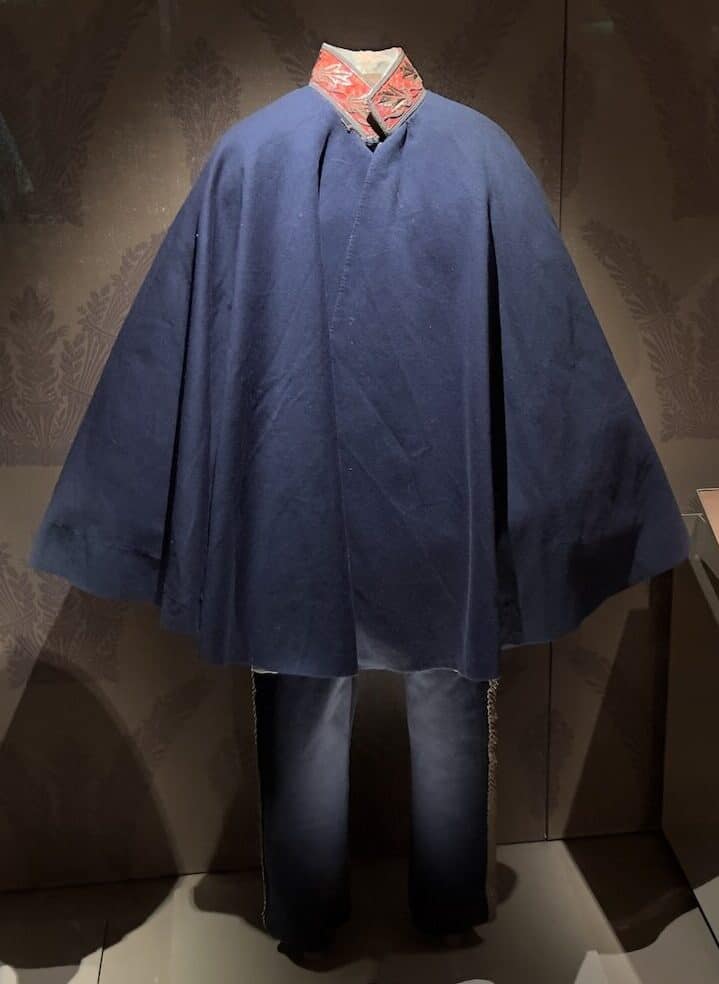
Wardrobes of the Women of the Harem
The final section of the Imperial Wardrobe Collection displays Ottoman robes and accessories worn by the women of the Imperial Harem. The mothers, sisters, daughters, and concubines, all lived in the Harem and followed a strict ranking order.
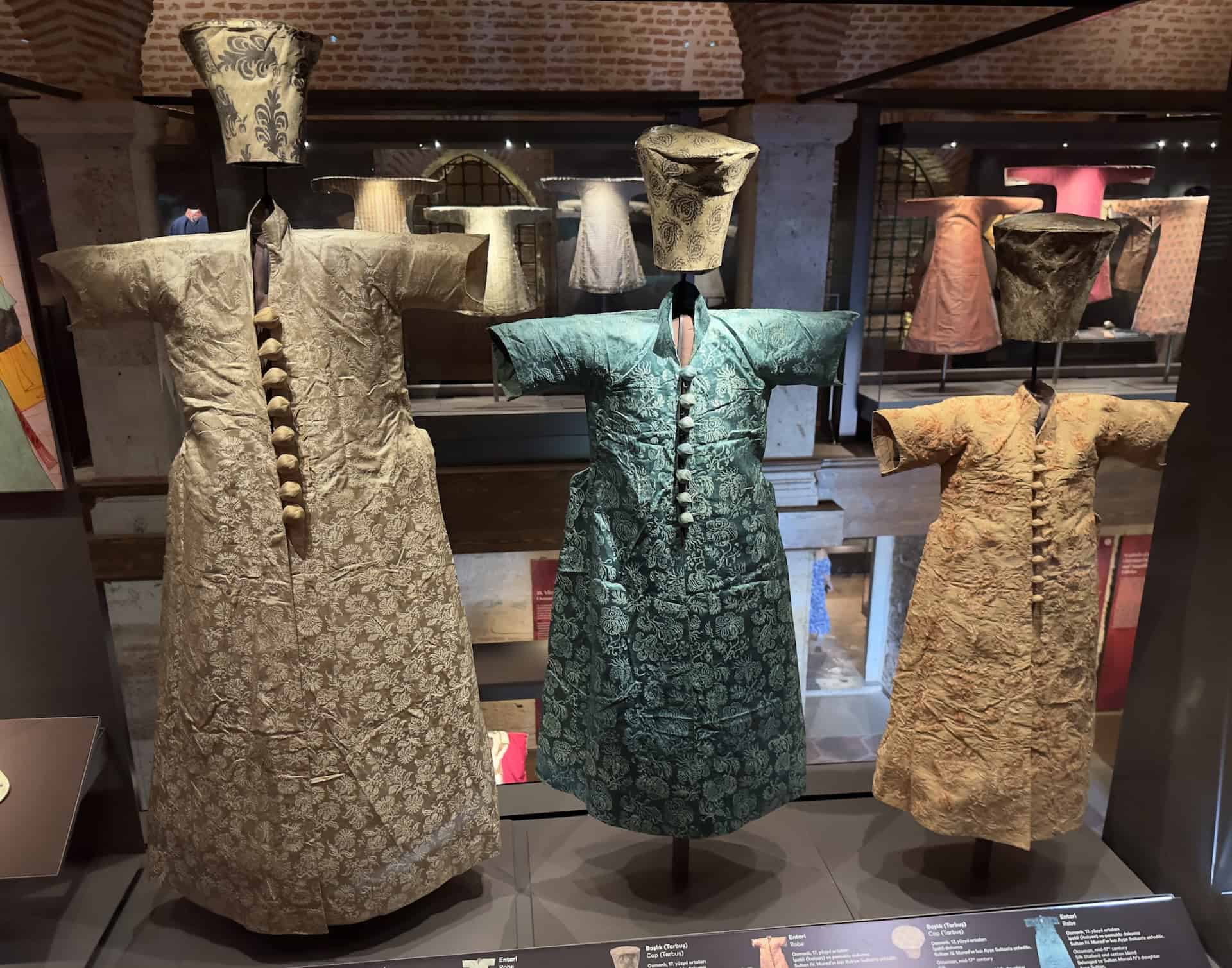
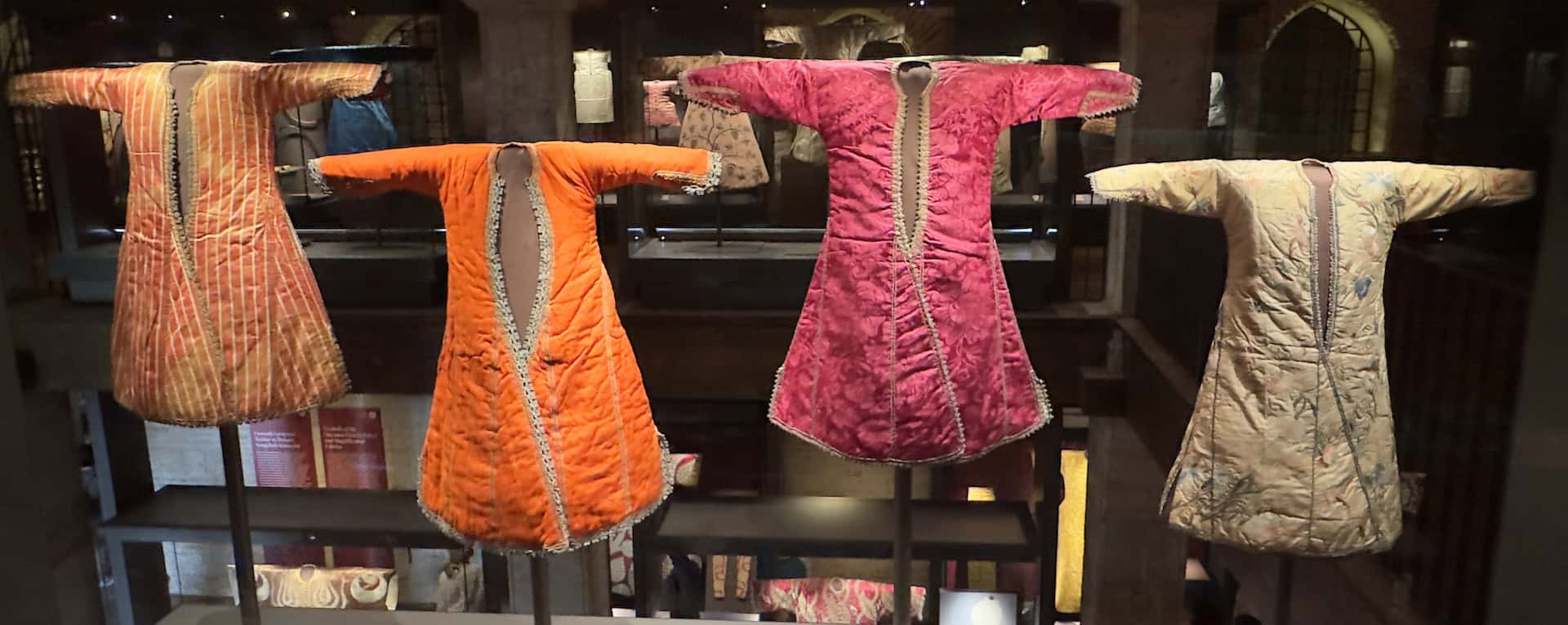
Early Ottoman sultans married young aristocratic women for political reasons. Since Mehmed the Conqueror sultans were allowed to have relationships without having to marry. The sultan’s wives were called hatun until the 16th century. After this, they were given the title of ikbal, kadınefendi, or haseki, based on their status. The woman who gave birth to the sultan’s first son was called kadın.
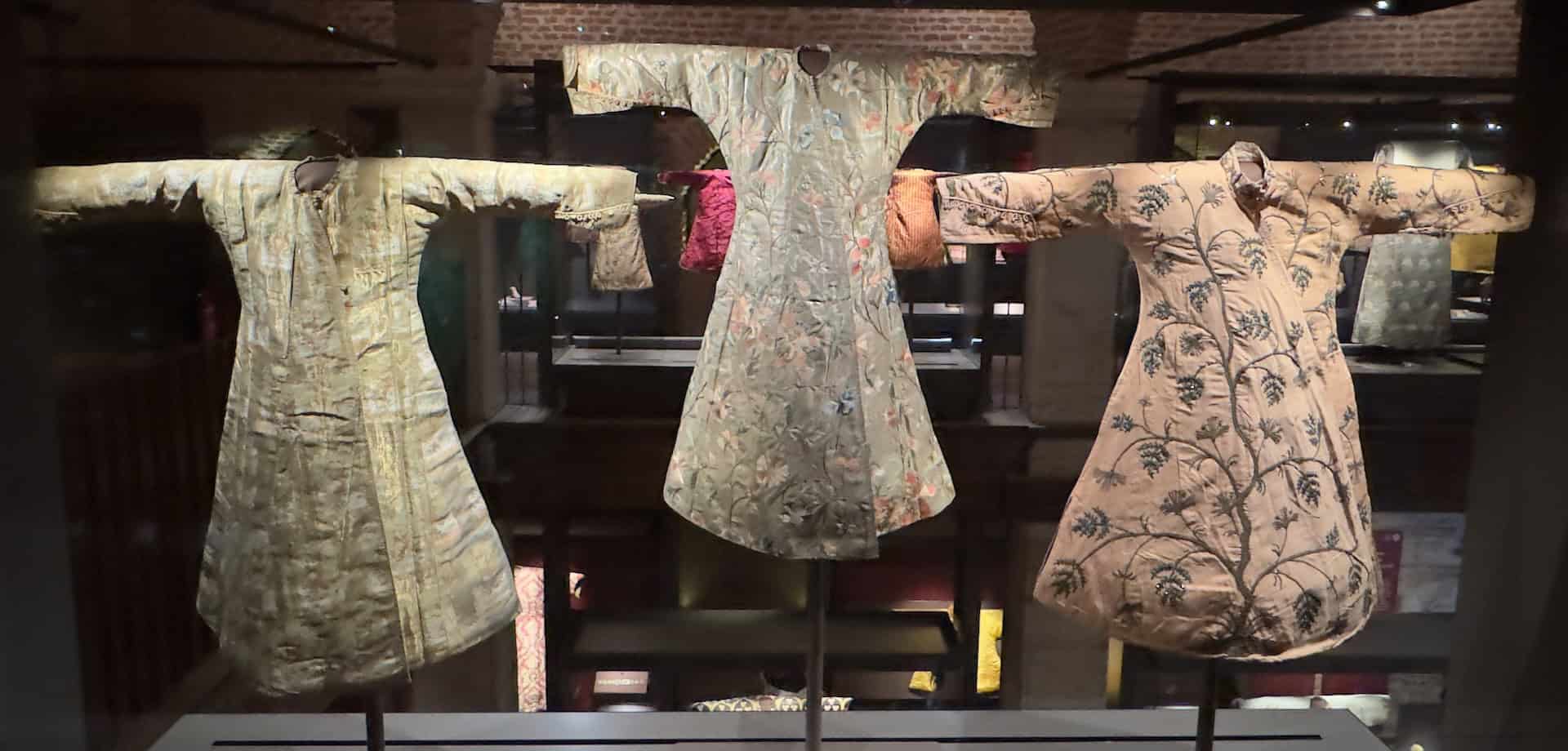
Sultan’s Mother and Daughters
The sultan’s mother was called valide sultan and was the highest ranking woman in the Harem. When a sultan died or was overthrown, his mother, concubines, daughters, and their entire entourage were sent to live at the Old Palace near present-day Beyazıt Square. The daughters were educated when they came of age.
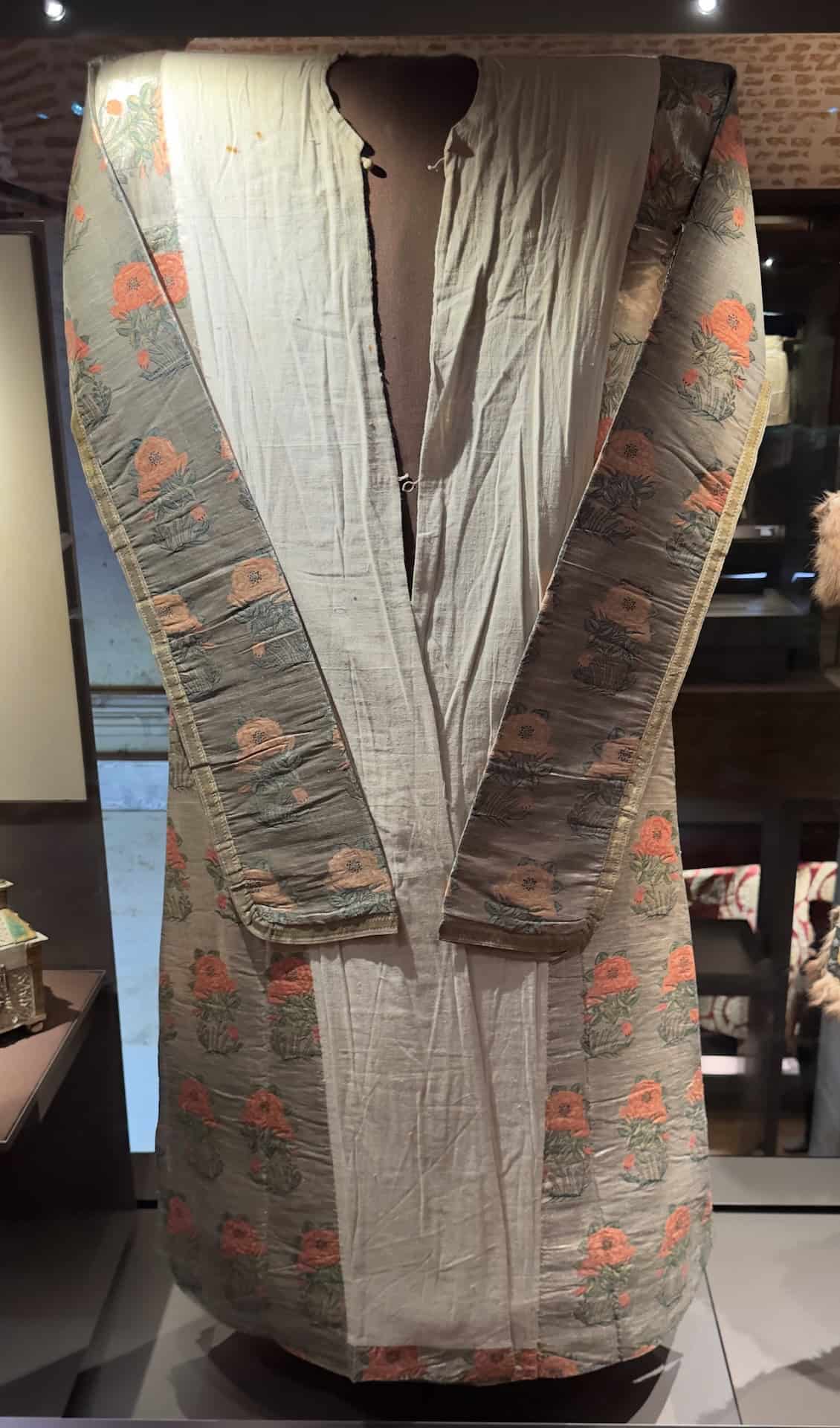
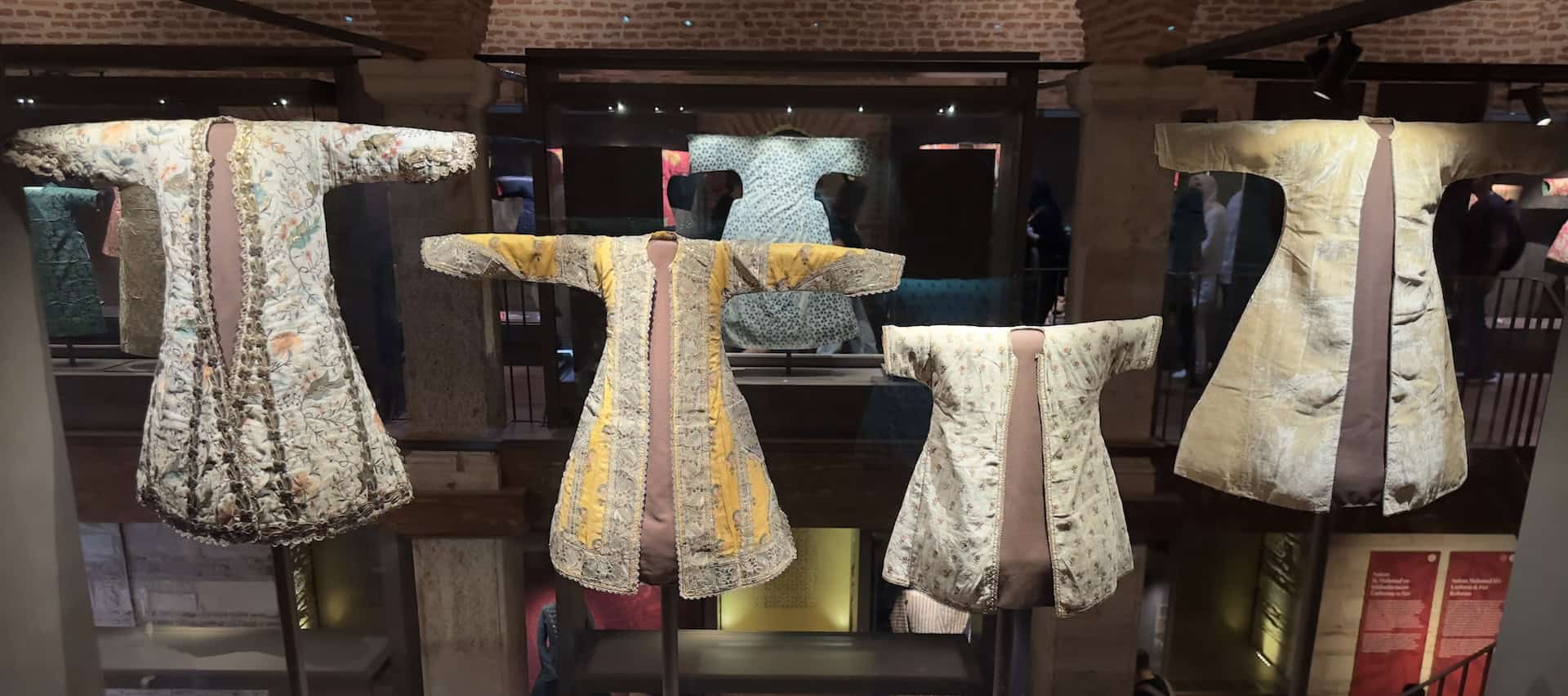
Def-i Gam Hatun Fountain
Back in the center of the 3rd Courtyard is the Def-i Gam Hatun Fountain. According to the inscription, it was endowed by a woman named Def-i Gam Hatun, who served as kethüda (administrator of the Harem), from 1811 to 1812 during the reign of Mahmud II. Her name means “dispersing sorrow”.
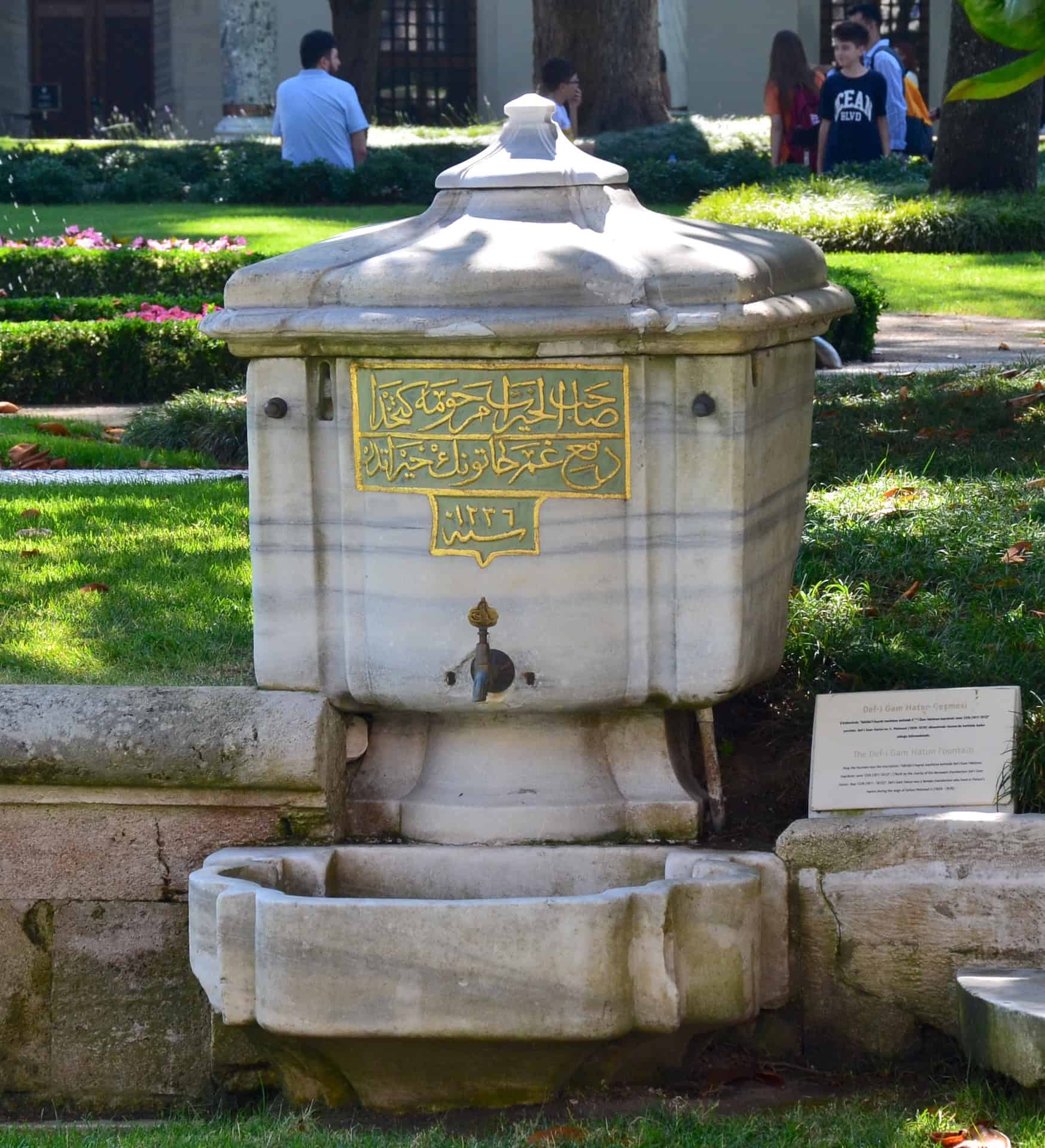
Sundial
In front of the Privy Chamber is a sundial dating back to the reign of Mehmed the Conqueror. It’s aligned in a north-south direction. One inscription states that it was made by Süleyman, the First Clerk of the Treasury. Another inscription states that it was restored by armourer Seyyid Abdullah in 1794 during the reign of Selim III.
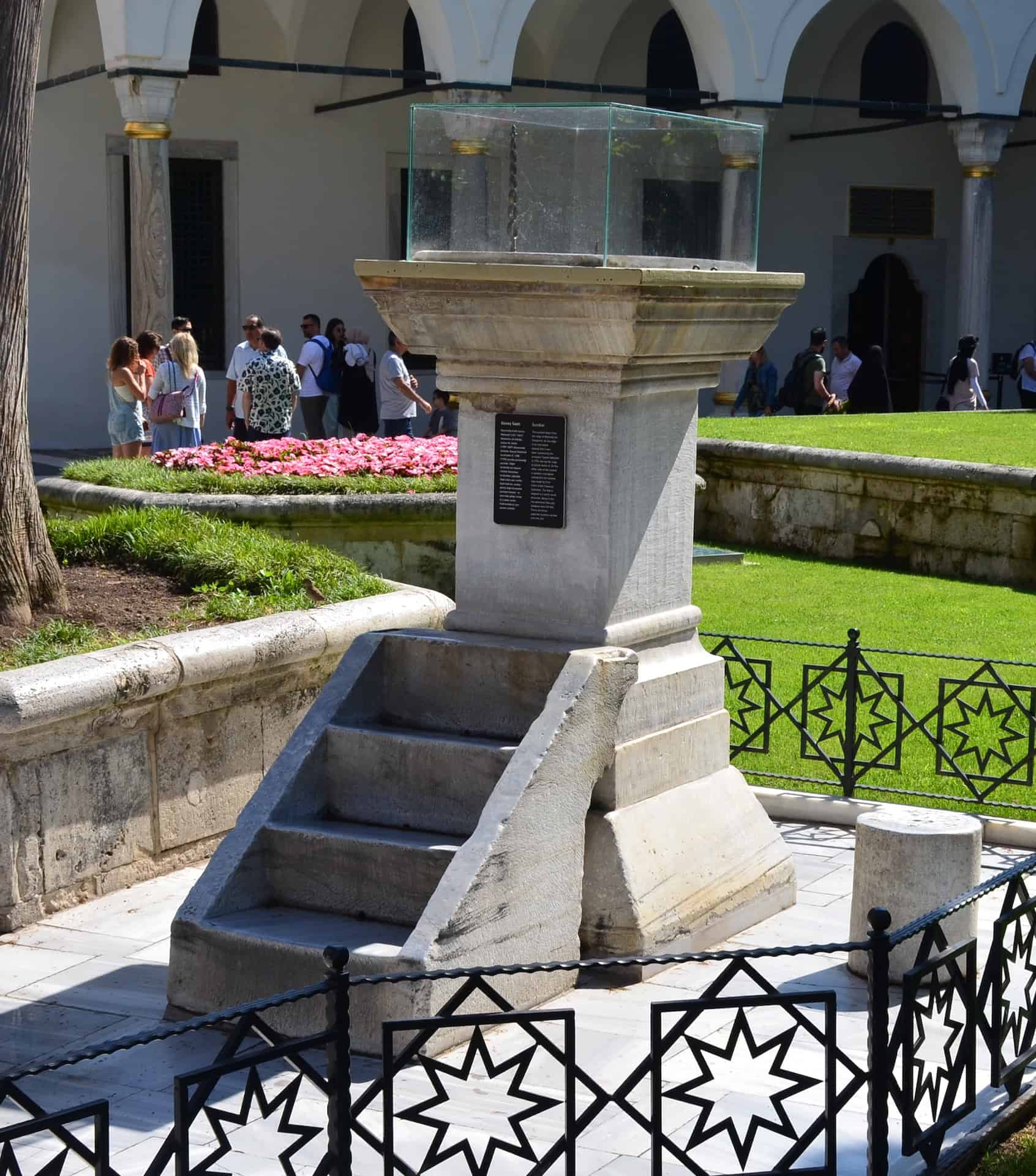
4th Courtyard of Topkapi Palace
The 4th Courtyard (IV. Avlu) of Topkapi Palace was the most private area of the sultans. It was also known as the Imperial Terrace (Sofa-ı Hümâyûn). The 4th Courtyard is roughly divided into three sections – an upper and lower tier as well as the Marble Terrace.

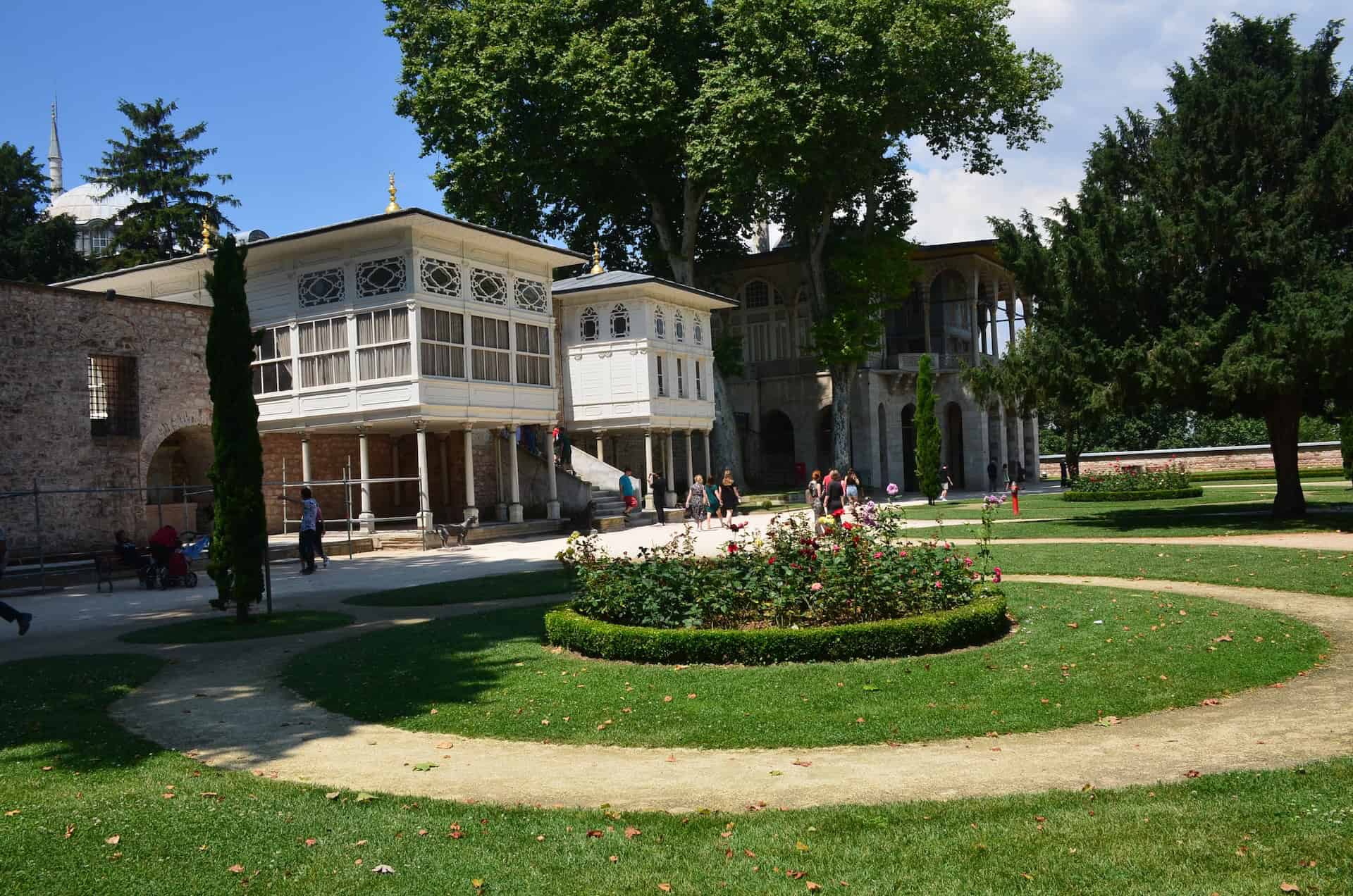
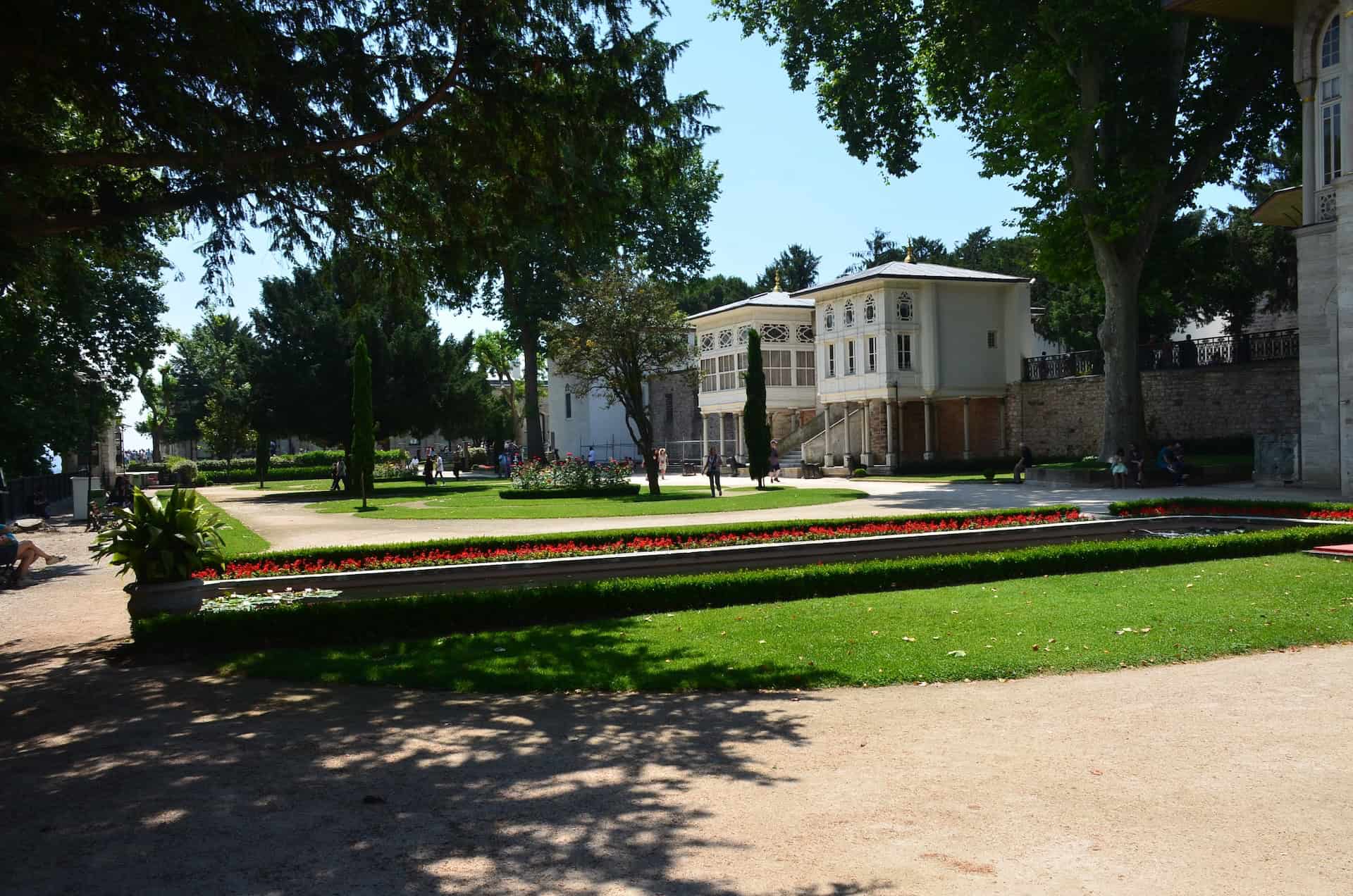
The 4th Courtyard is dotted with several pavilions situated among beautifully manicured gardens. There are a few pools as well as a fountain in front of the Baghdad Pavilion. The lower tier hosted sporting events.
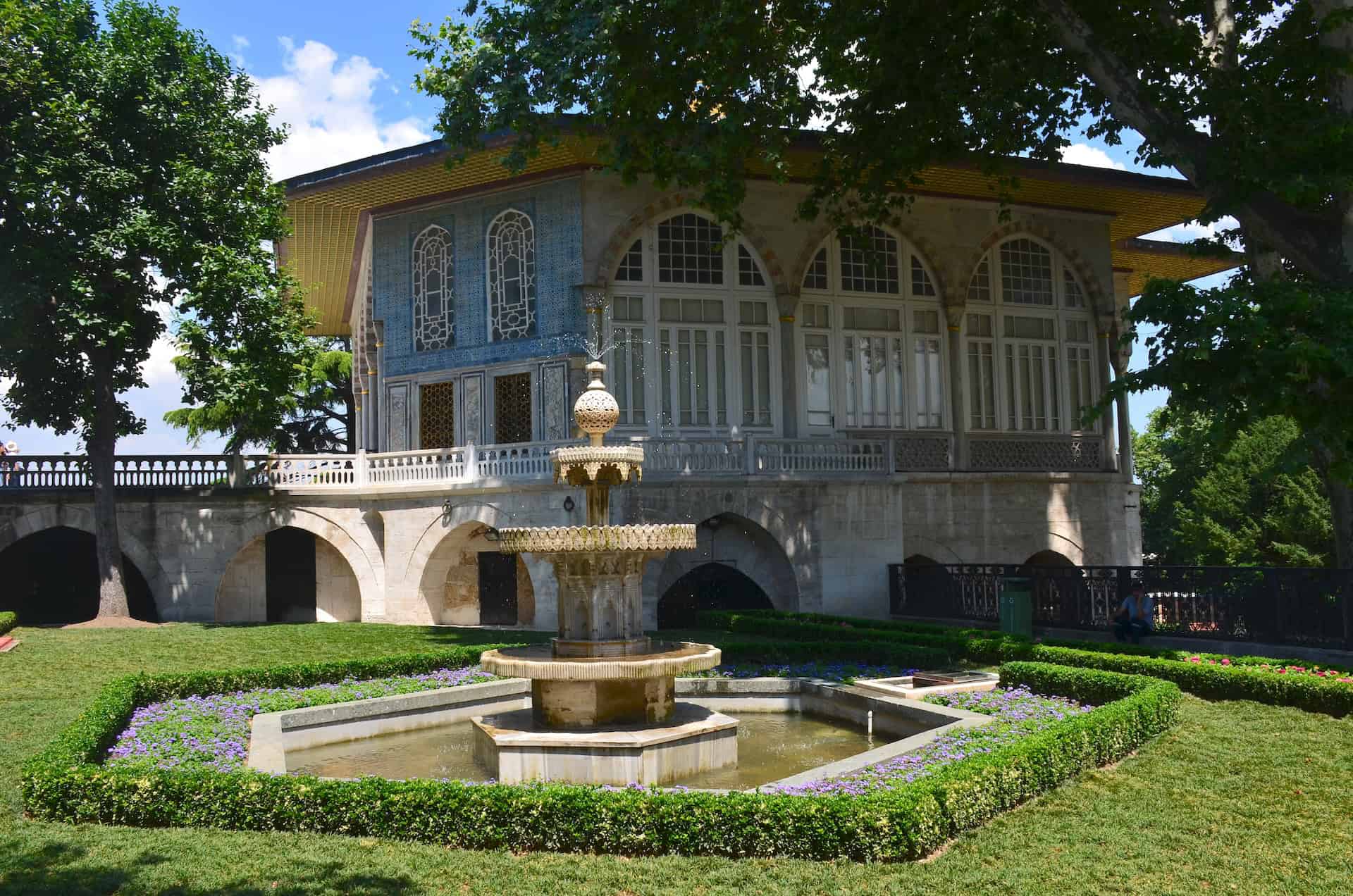
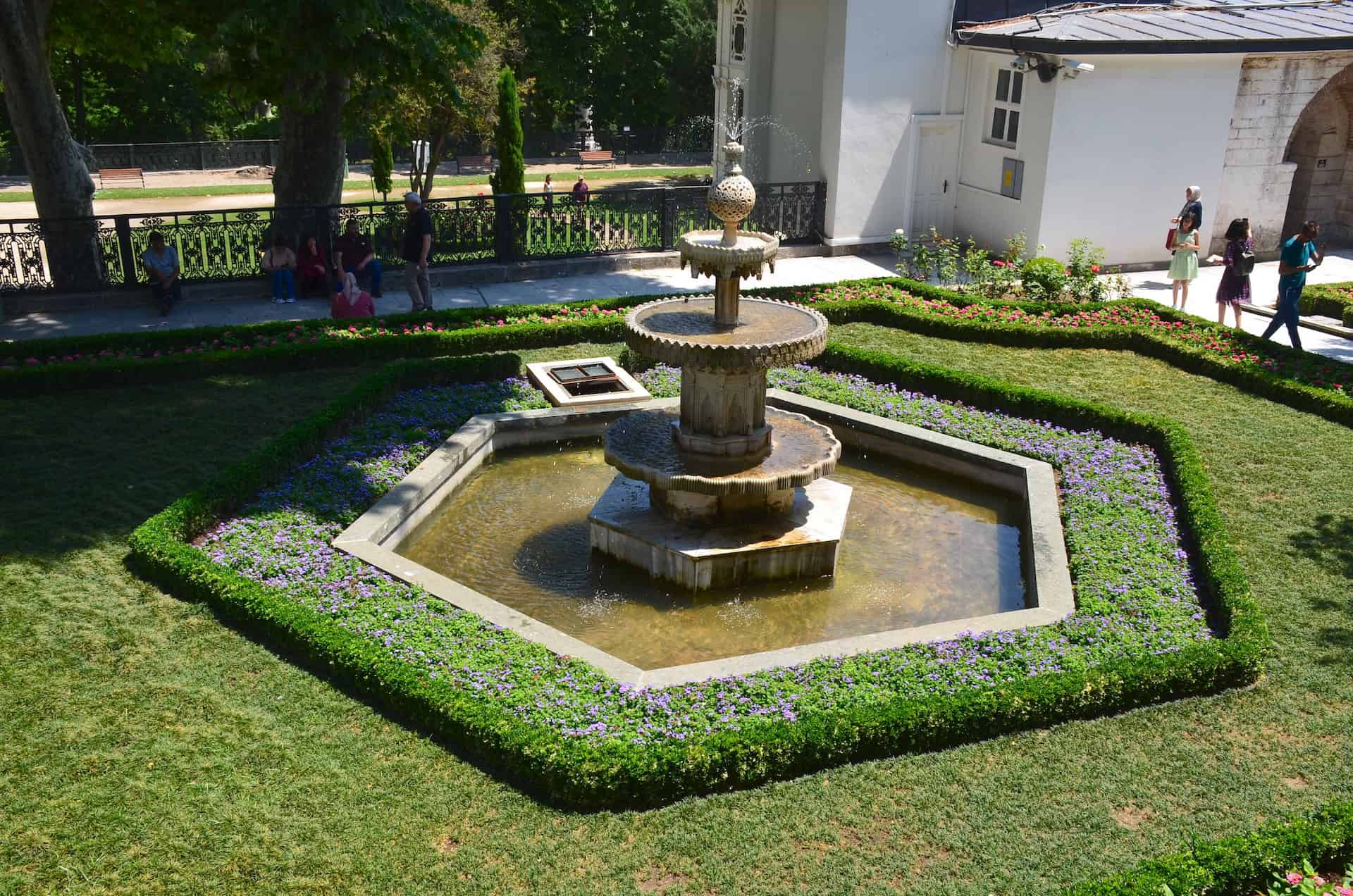
Marble Terrace
The majority of visitors head directly to the Marble Terrace (Mermer Sofa). It’s accessible via stairways on either side of the Yerevan Pavilion. At the top of the stairs to the left is a colonnade built in the mid-17th century during the reign of Ibrahim.
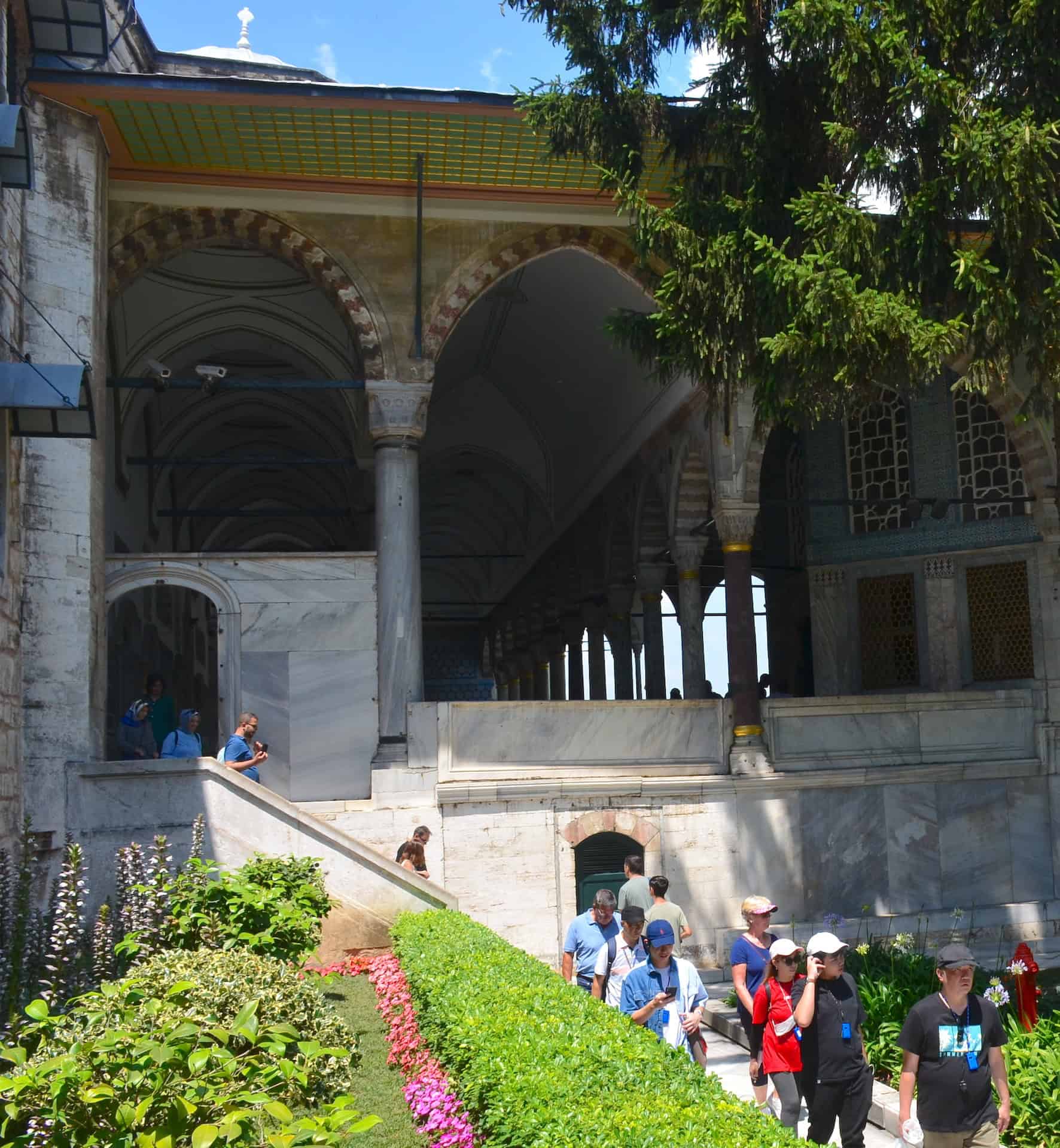
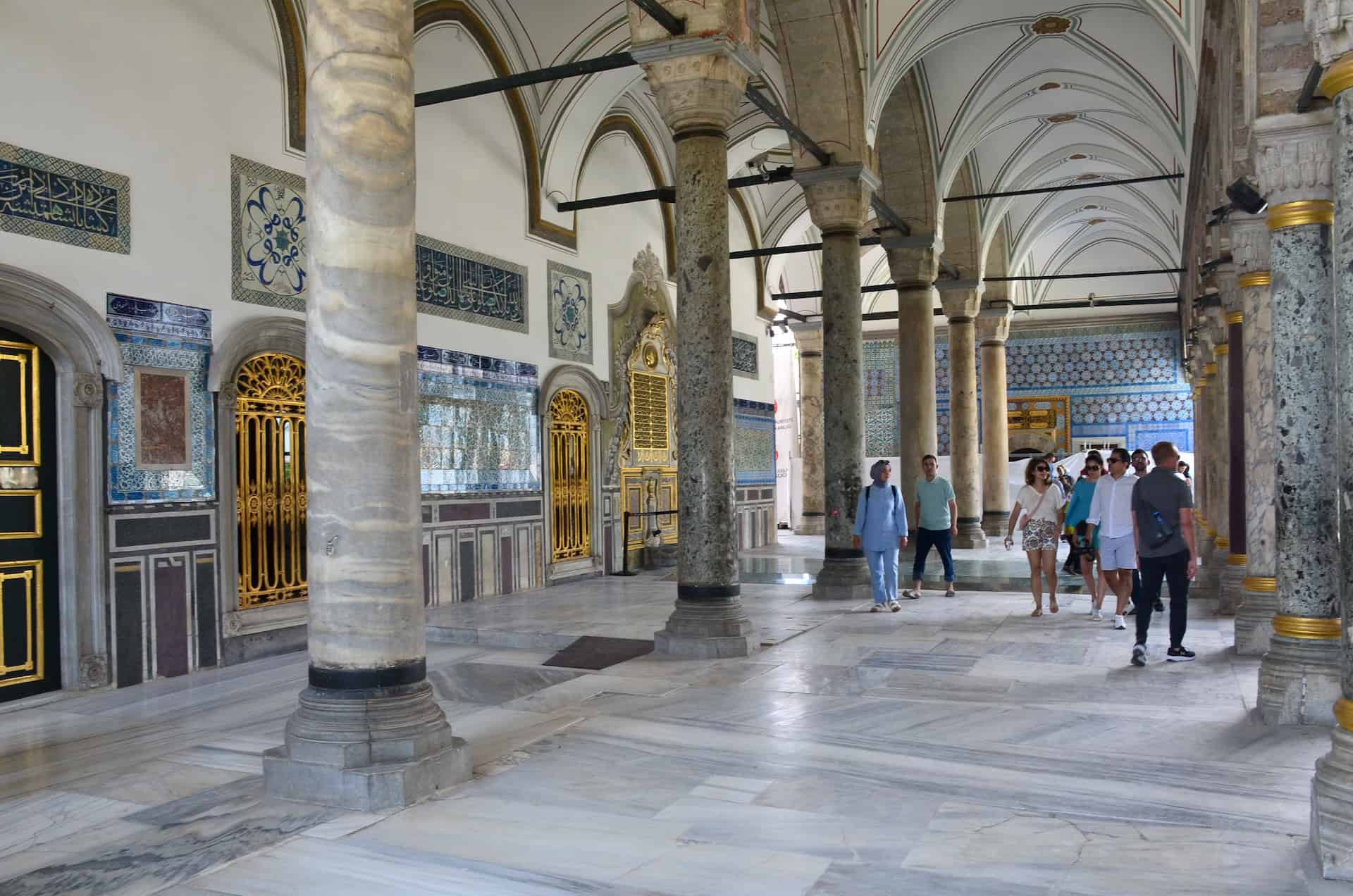
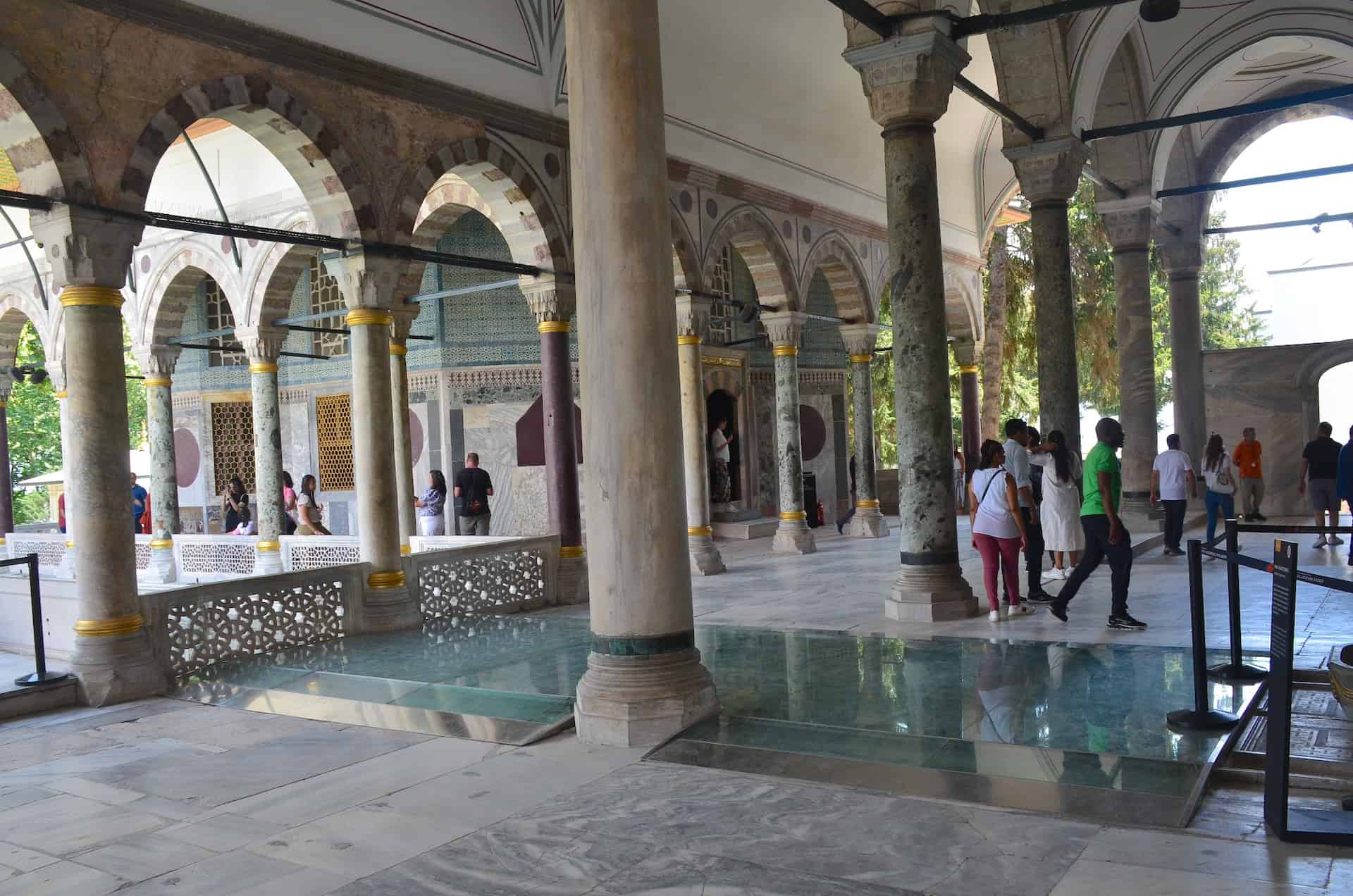
The colonnade opens to the terrace and contains a pool in the center. Some of most of the impressive pavilions at Topkapi Palace surround the terrace.
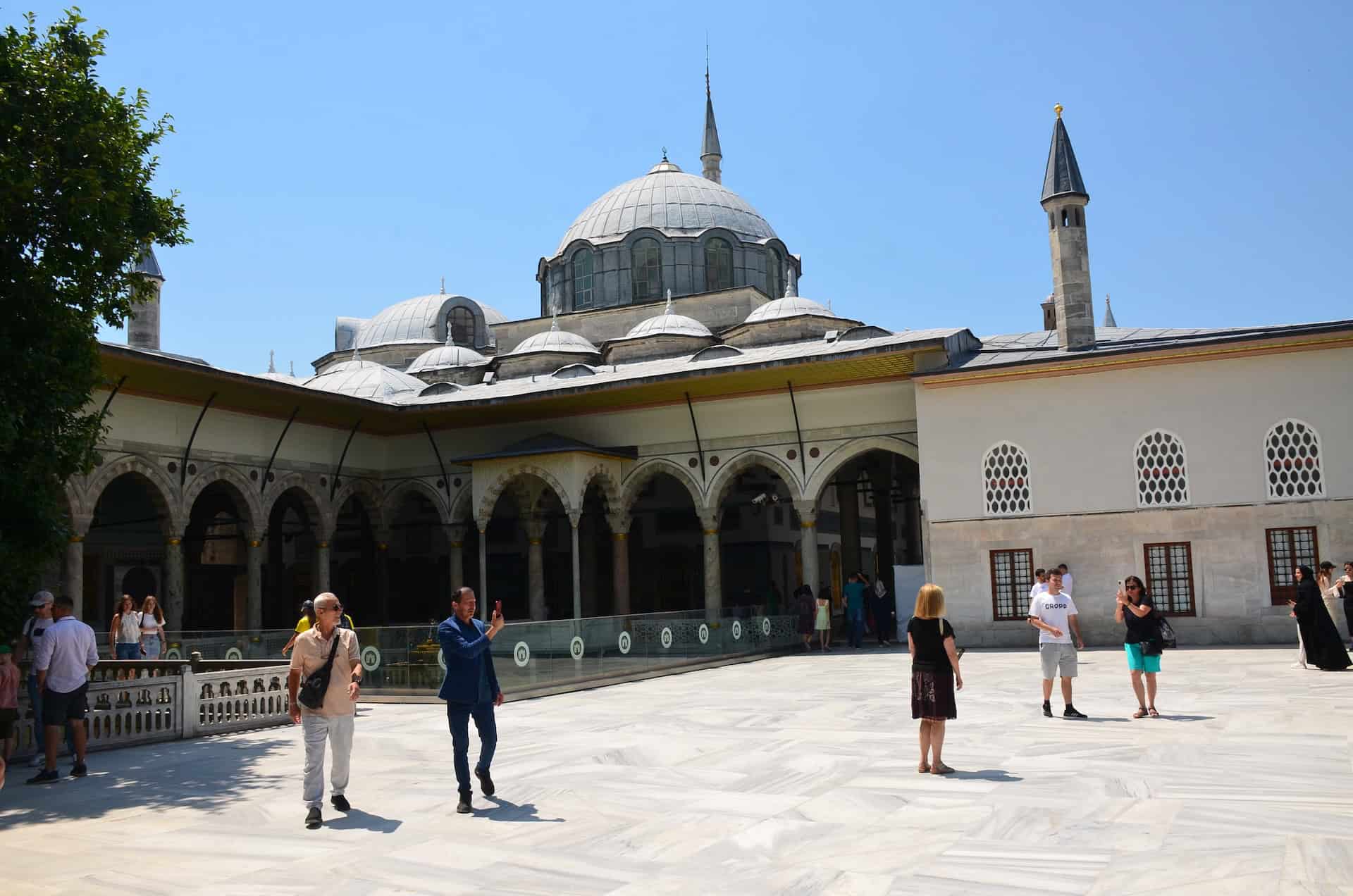
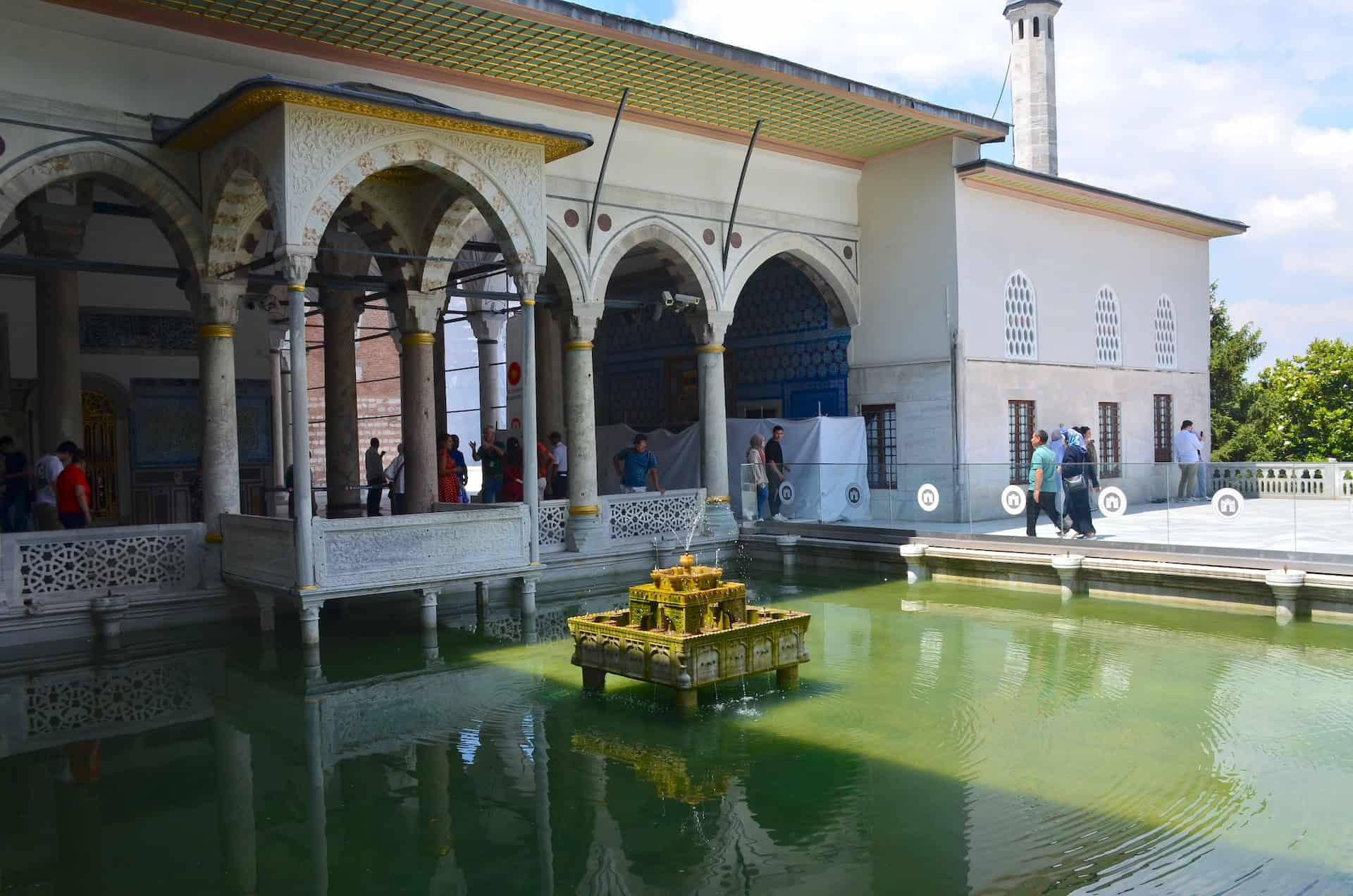
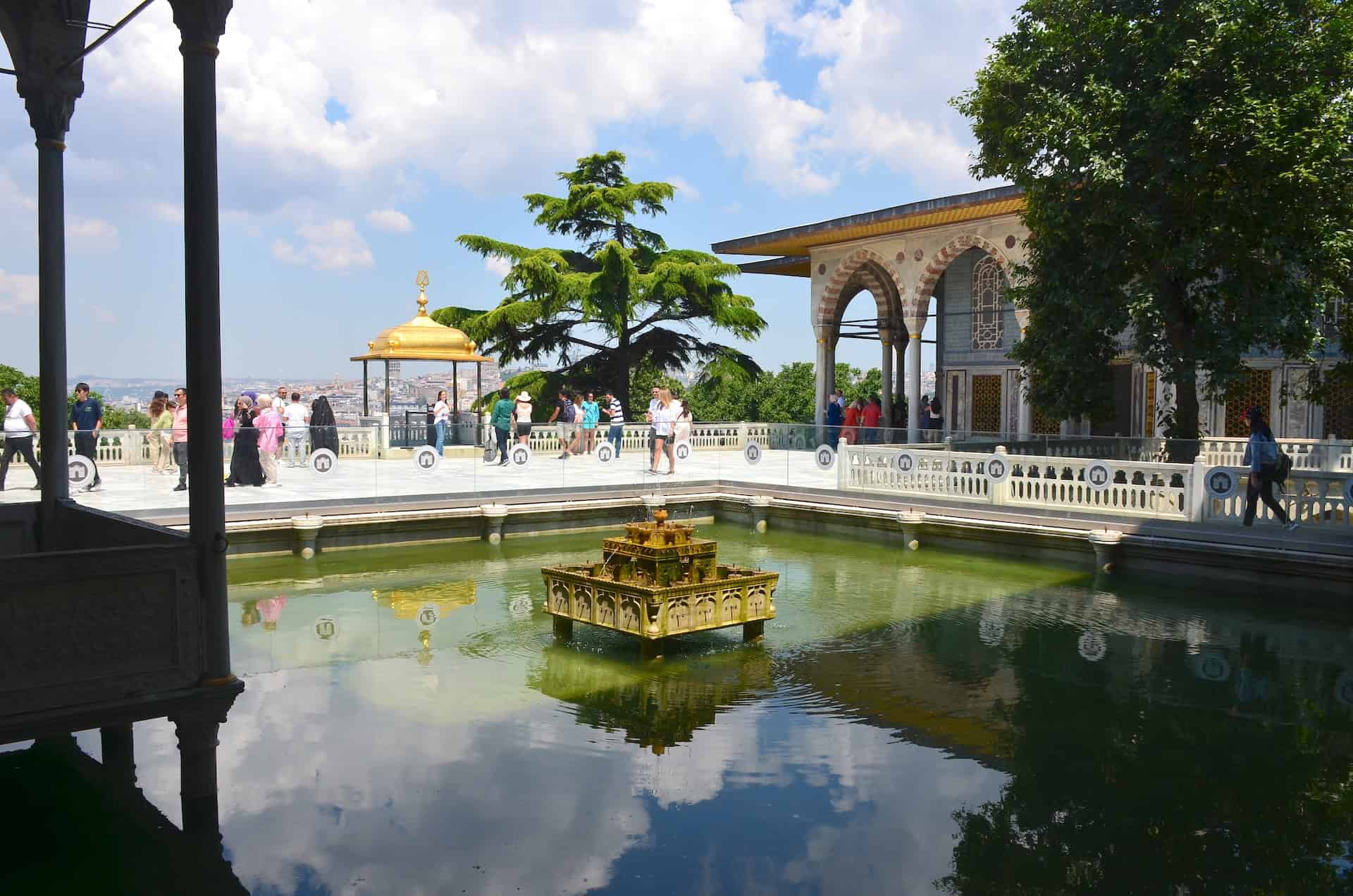
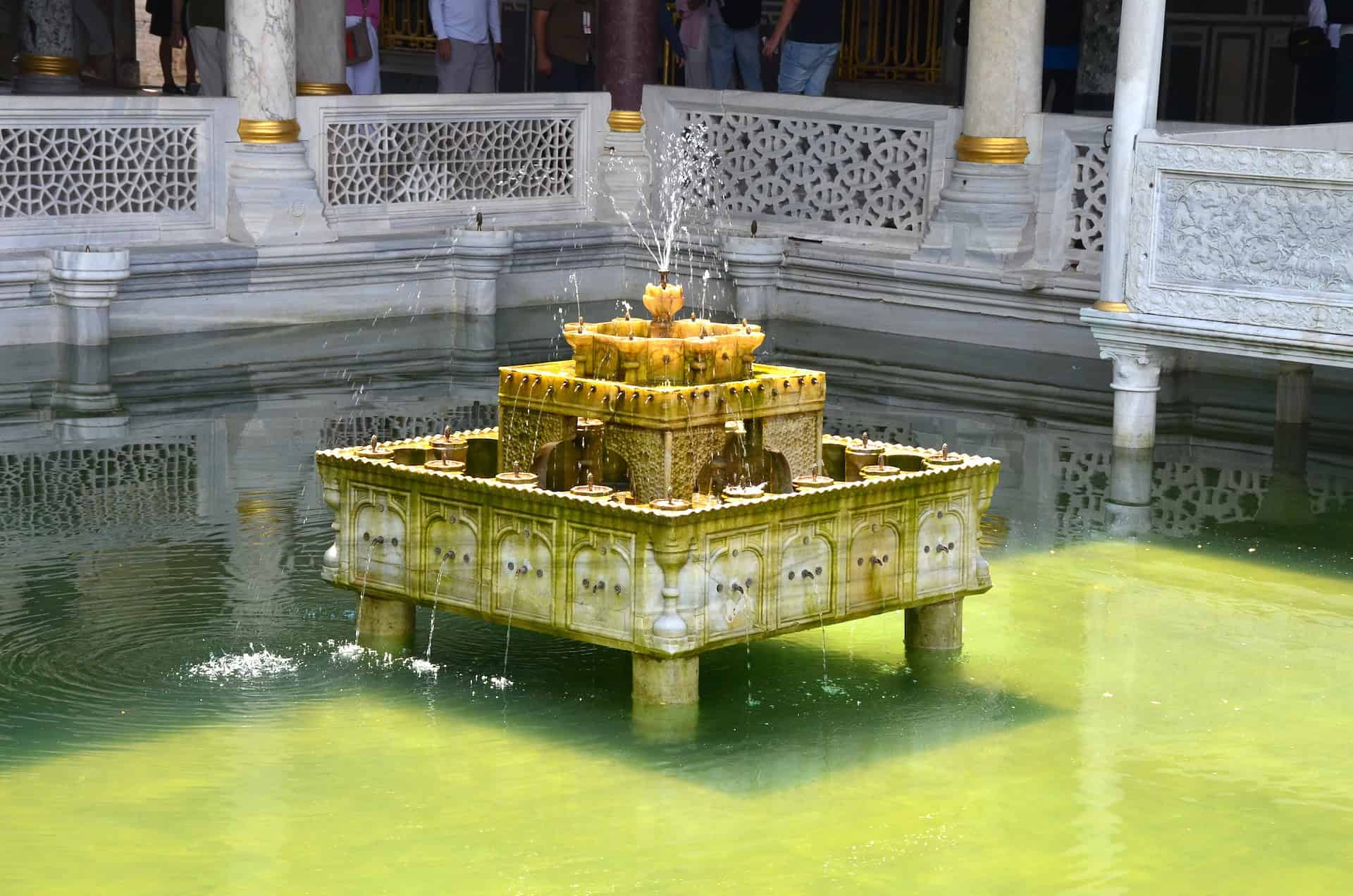
Exterior Walls of the Privy Chamber / Chamber of the Sacred Relics
The south side of the colonnade of the Marble Terrace borders the north and west exterior walls of the Privy Chamber / Chamber of the Sacred Relics. The walls are decorated with fine Iznik tiles.
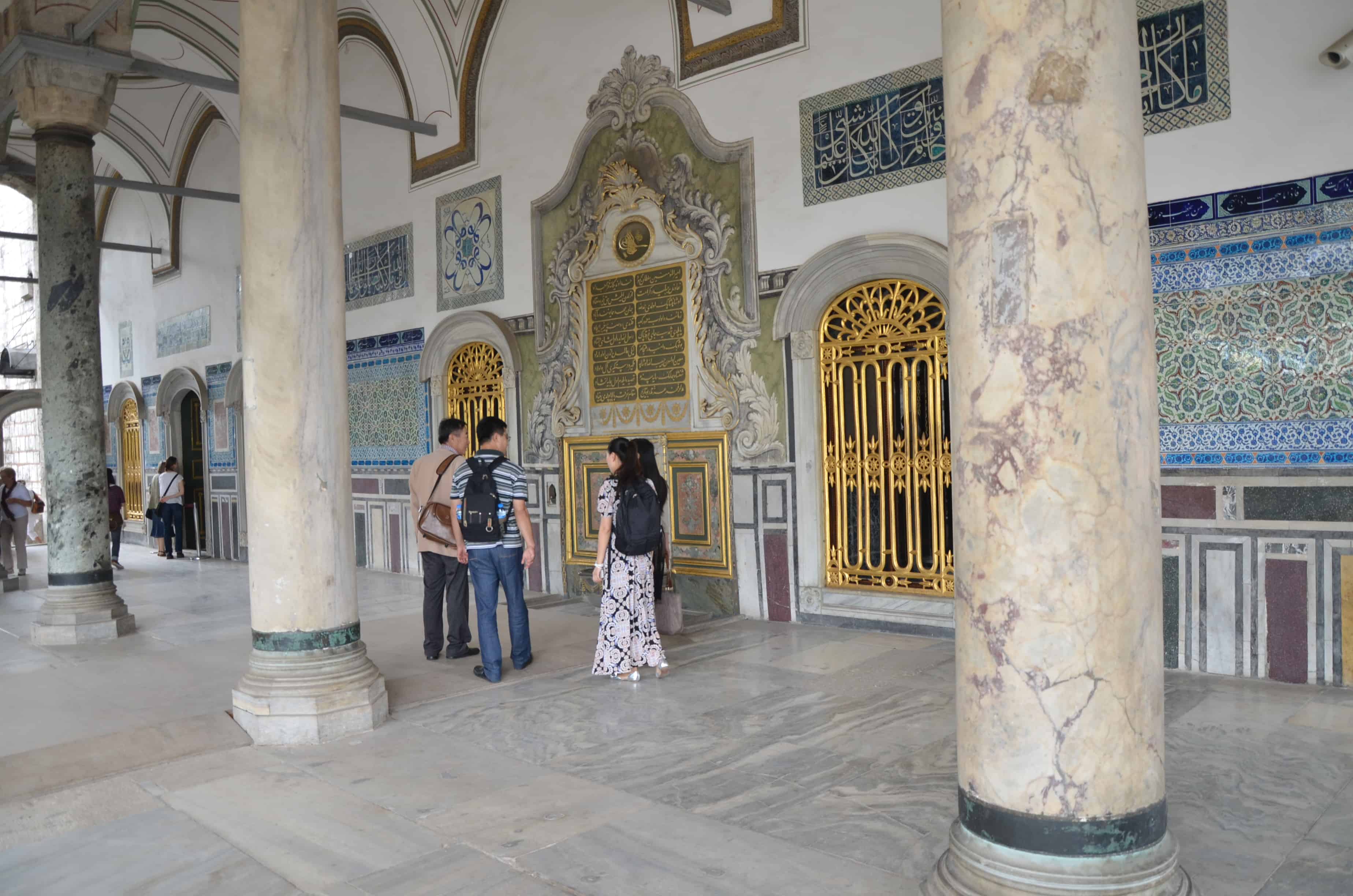
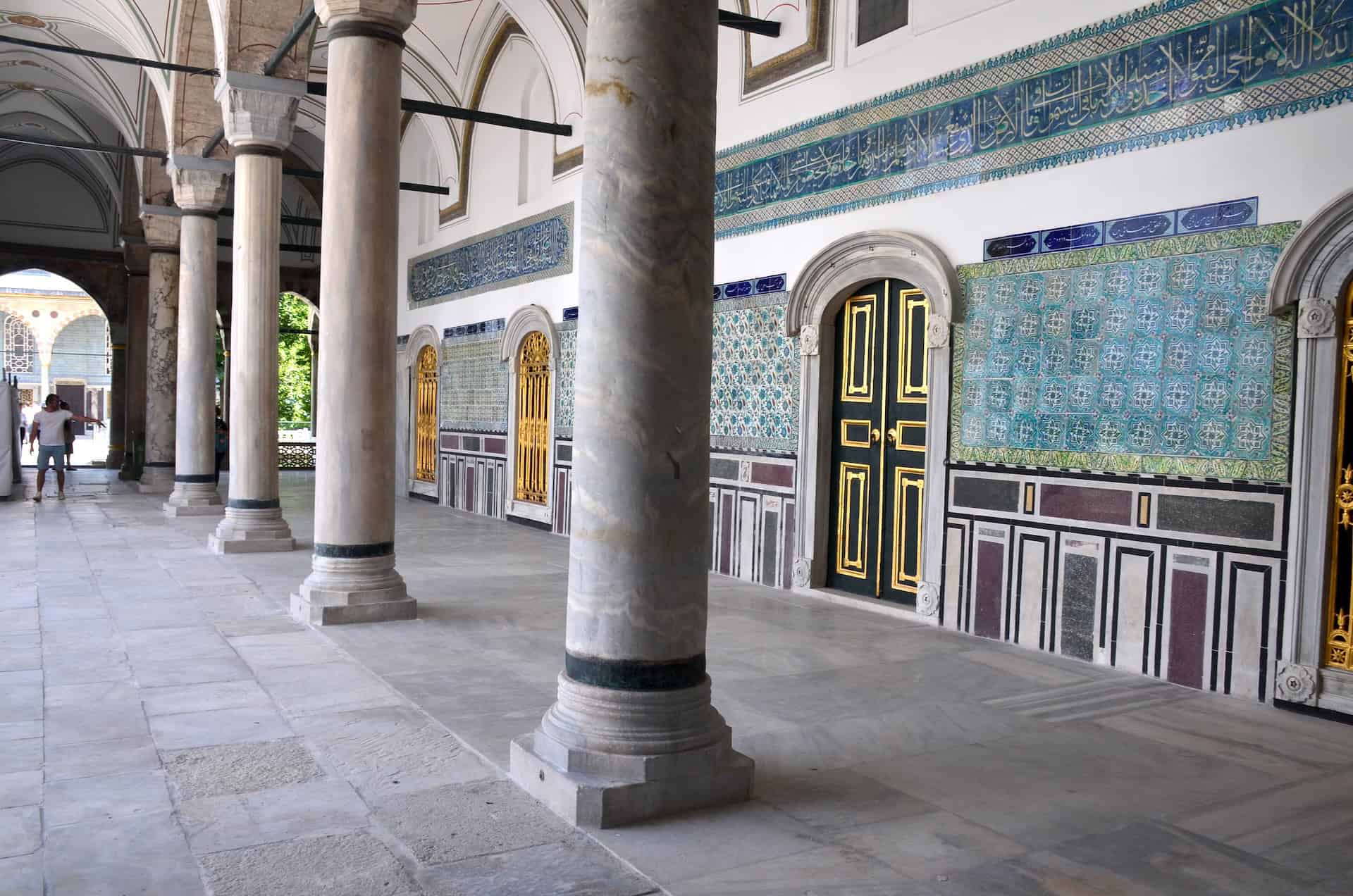
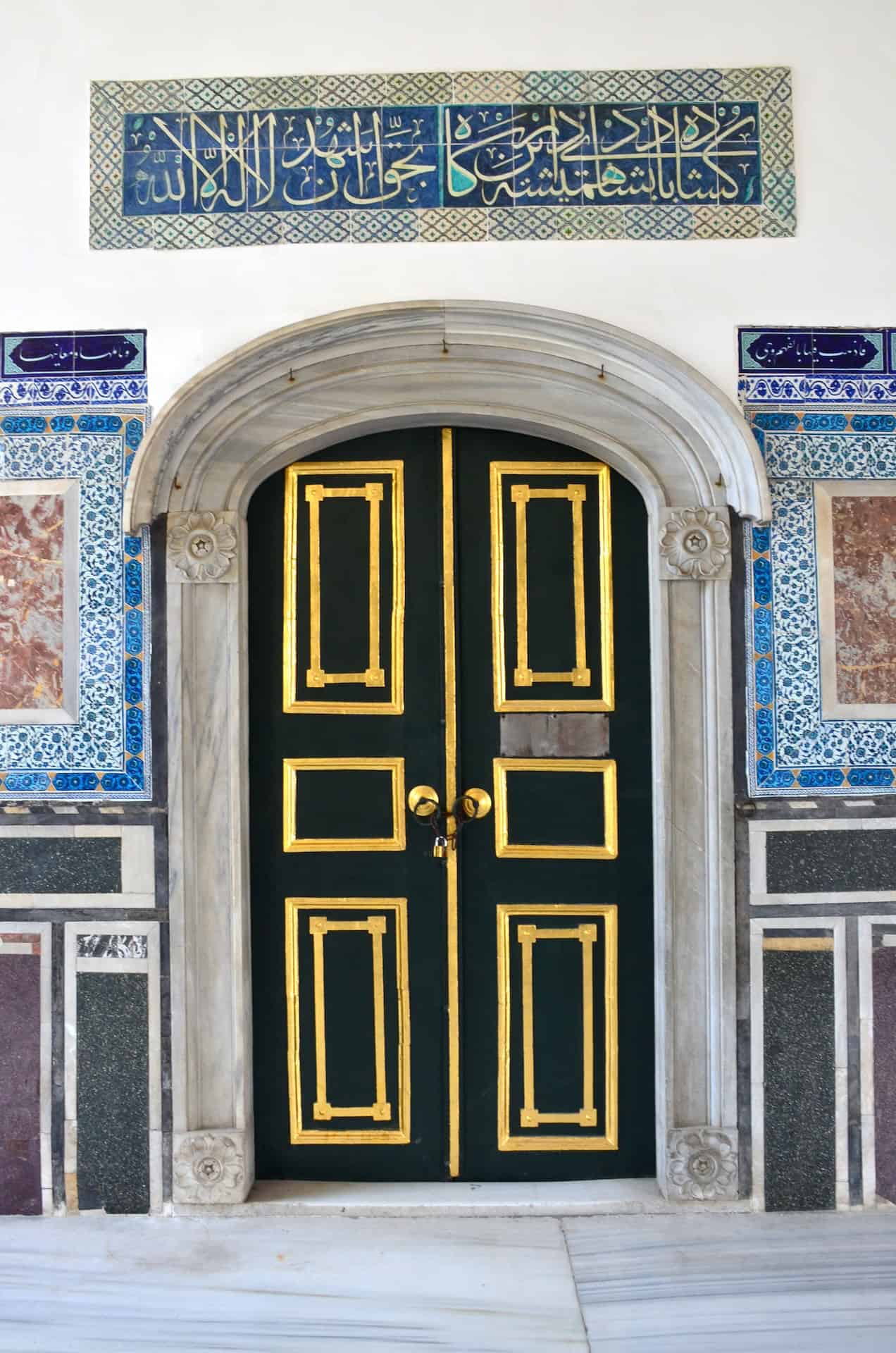
The tiles feature colorful floral patterns as well as religious verses from the Quran. The windows around the building are arched and covered with gilded screens.

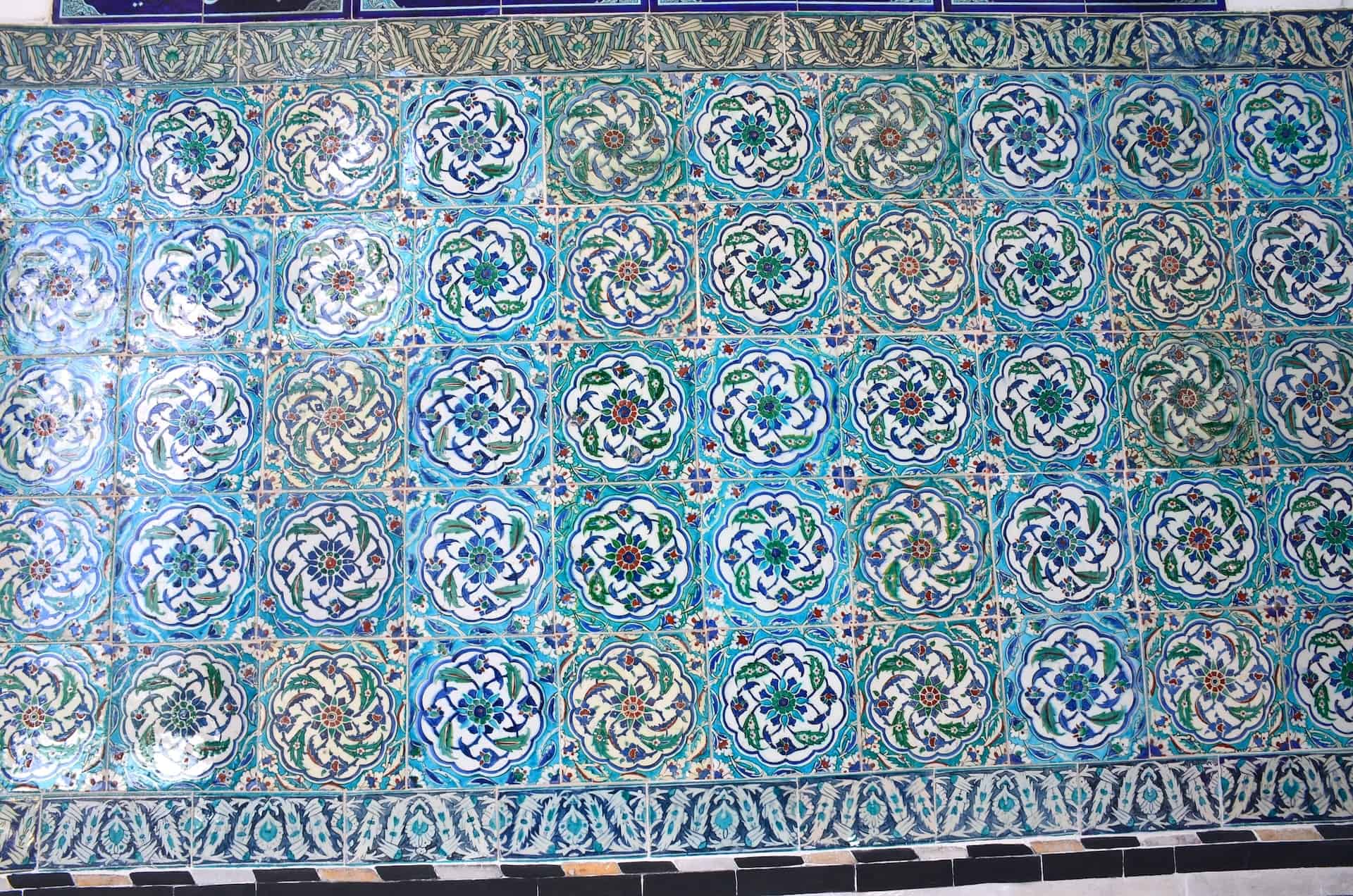
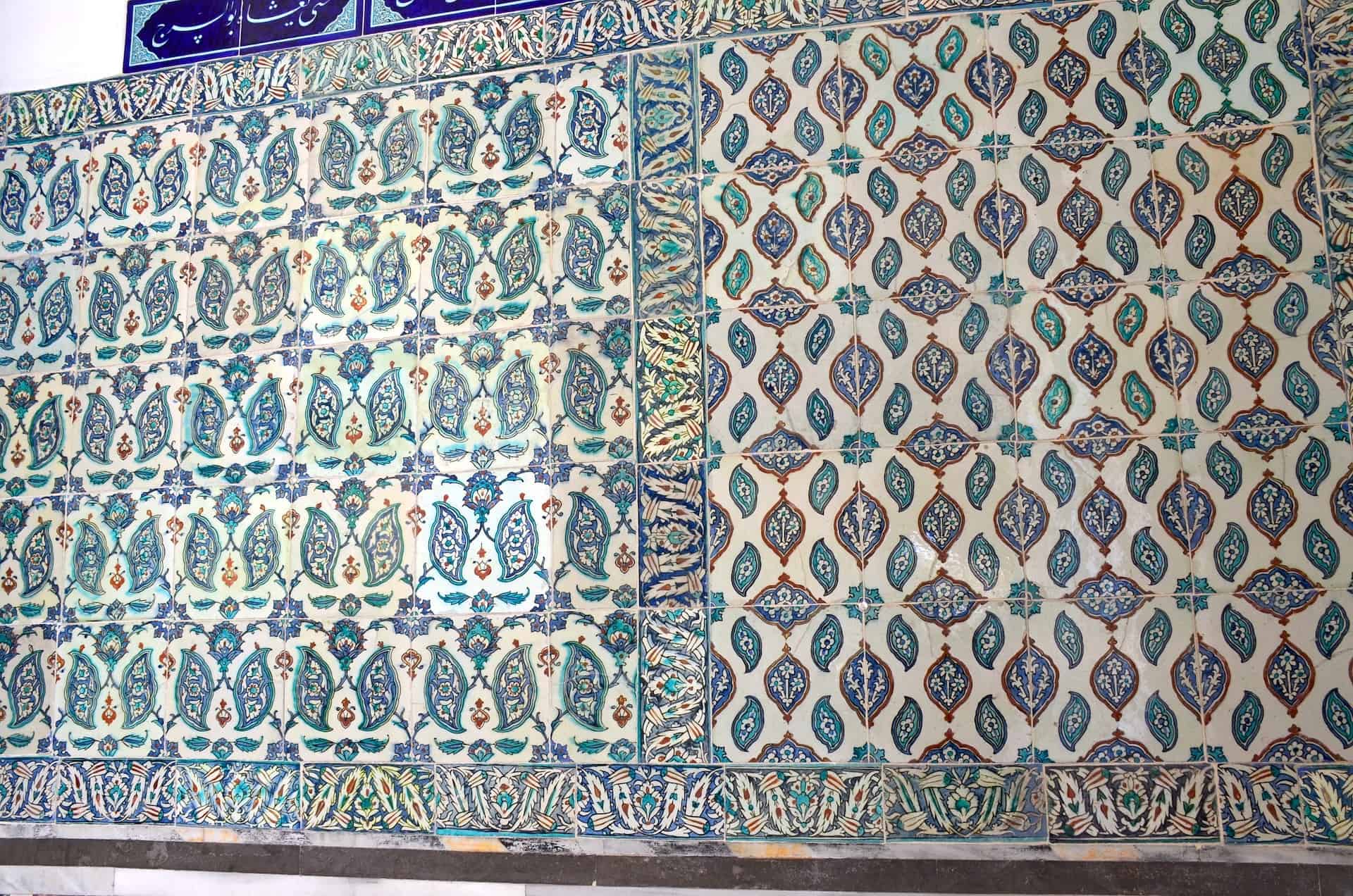
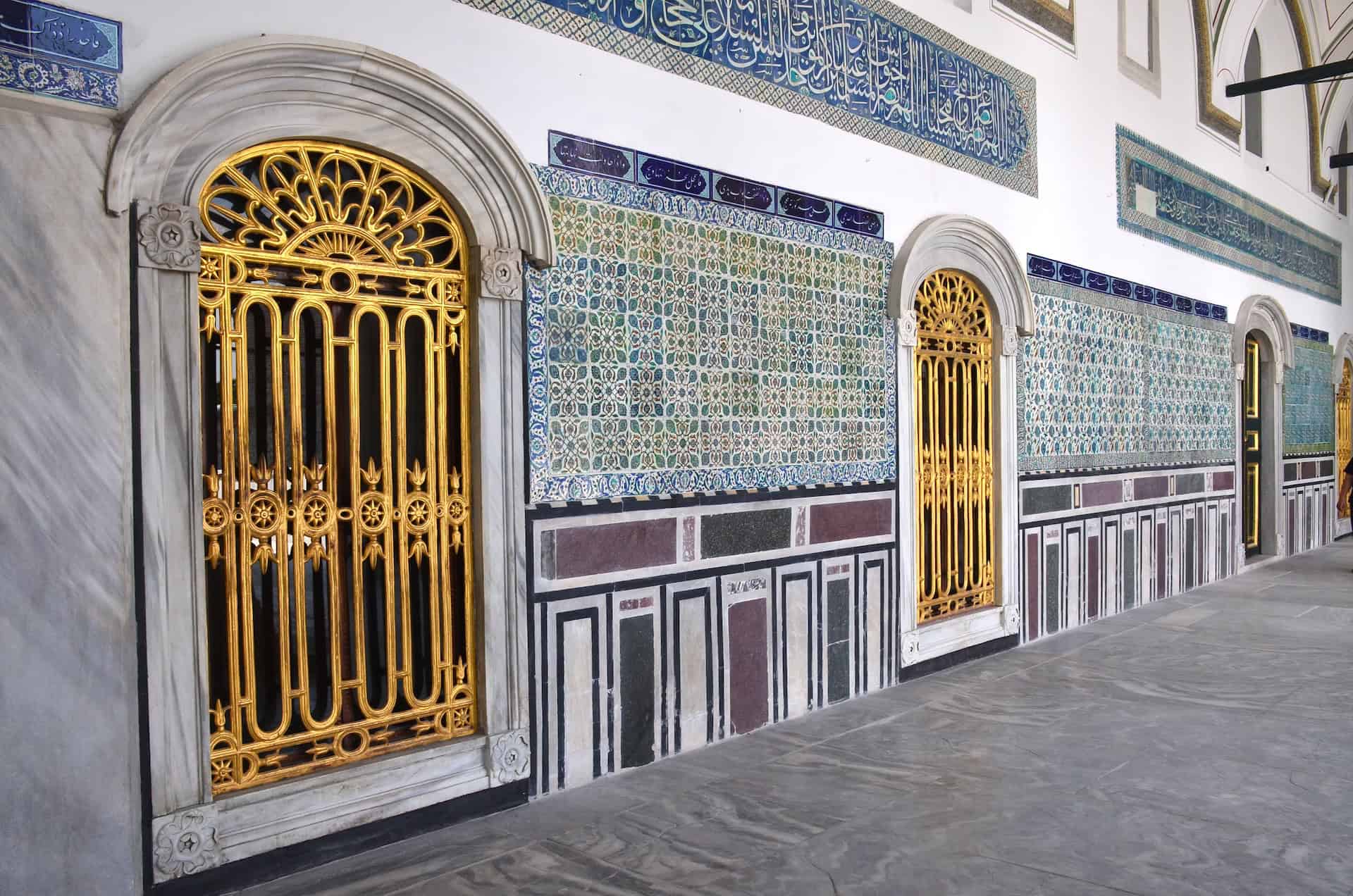
Fountain of the Blessed Mantle
The Fountain of the Blessed Mantle sits on the north wall of the Privy Chamber / Chamber of the Sacred Relics. When the Sultan died, his body was washed at this fountain. The inscription above states that it was repaired during the reign of Mahmud II and features his tughra.
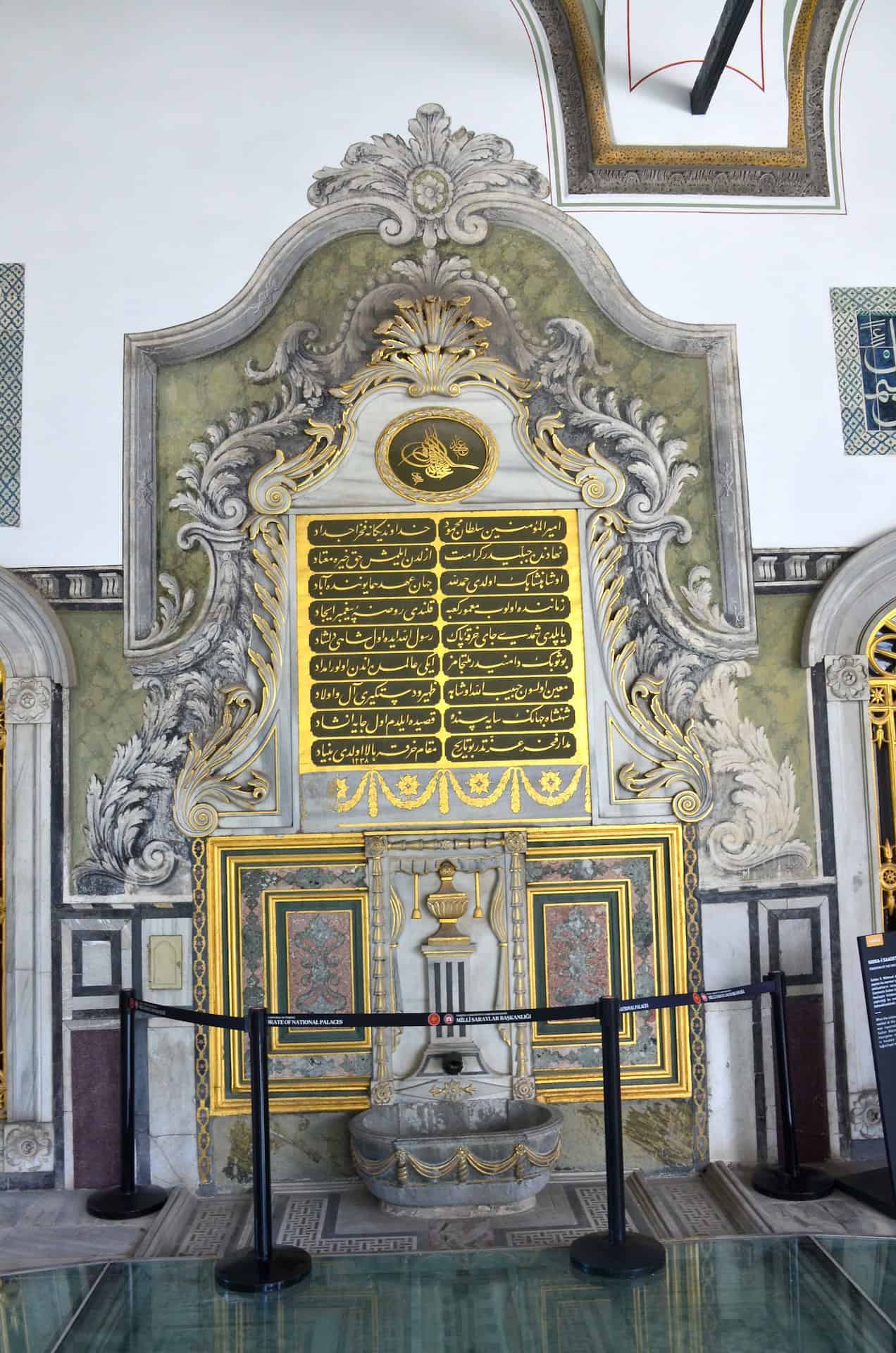
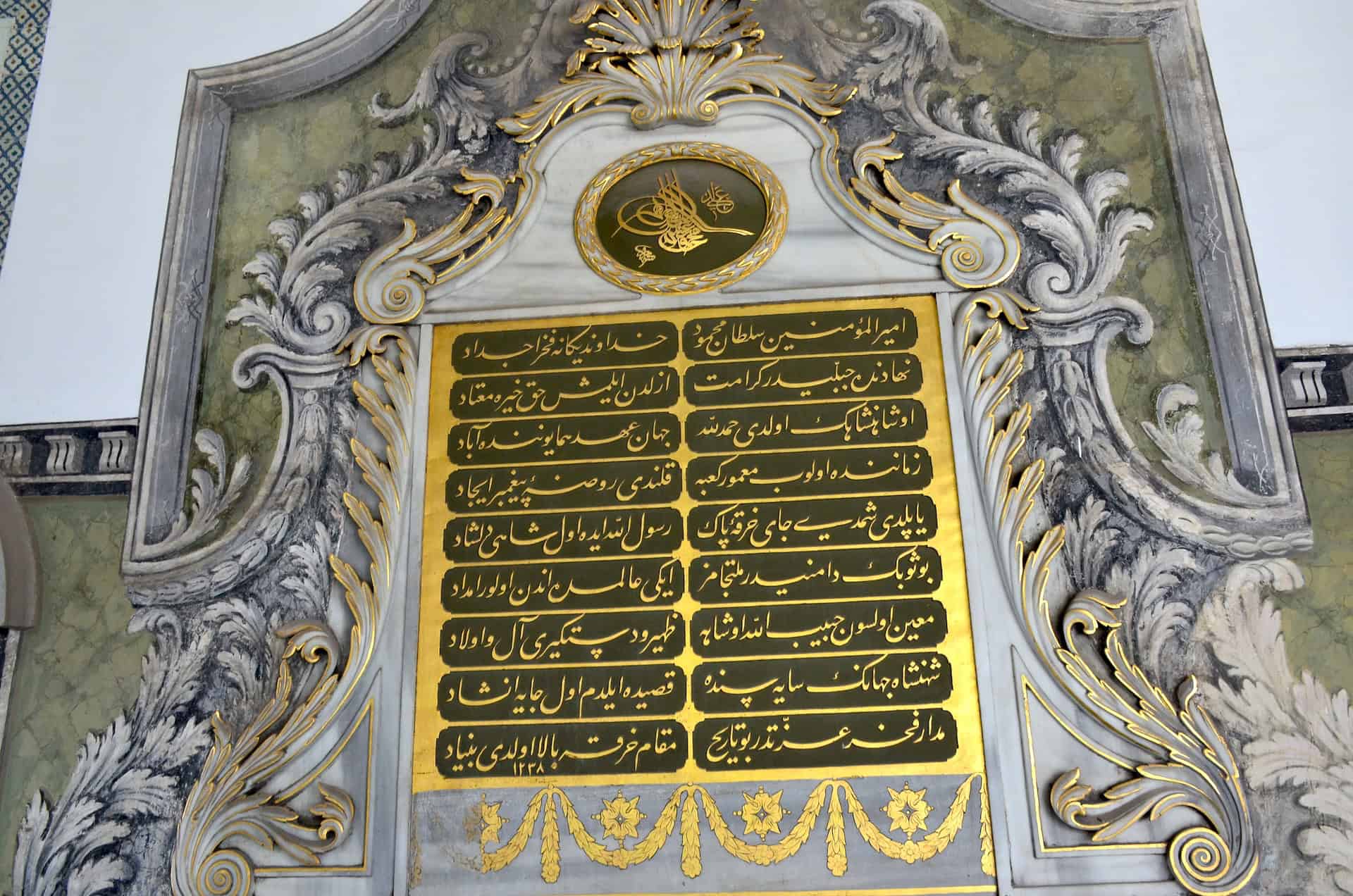
Yerevan Pavilion
On the other side of the colonnade is the Yerevan Pavilion (Revan Köşkü). It was built between 1635 and 1636 by Sultan Murad IV to commemorate the capture of Yerevan. The architect may have been Hasan Ağa or Kasım Ağa.
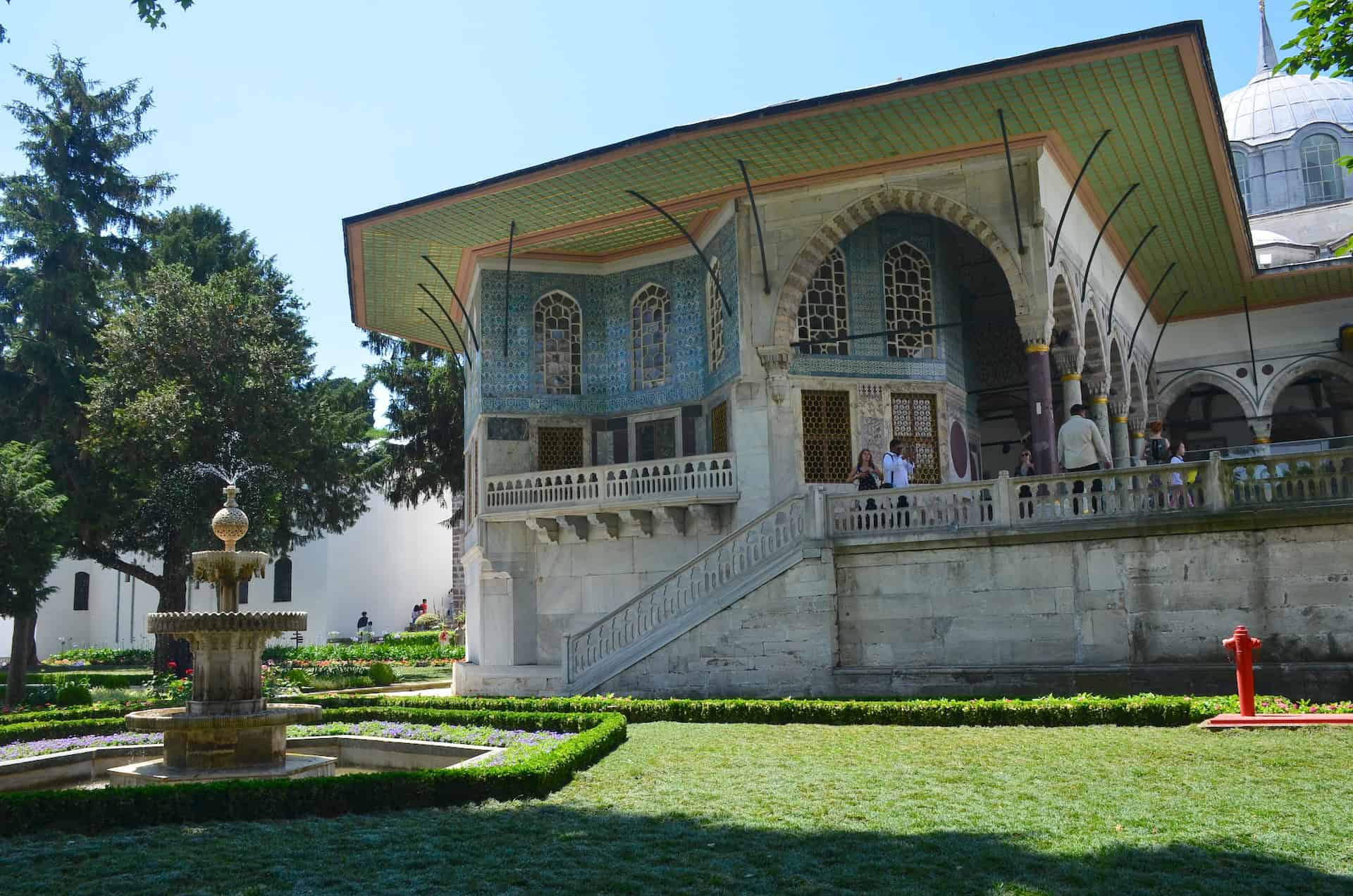
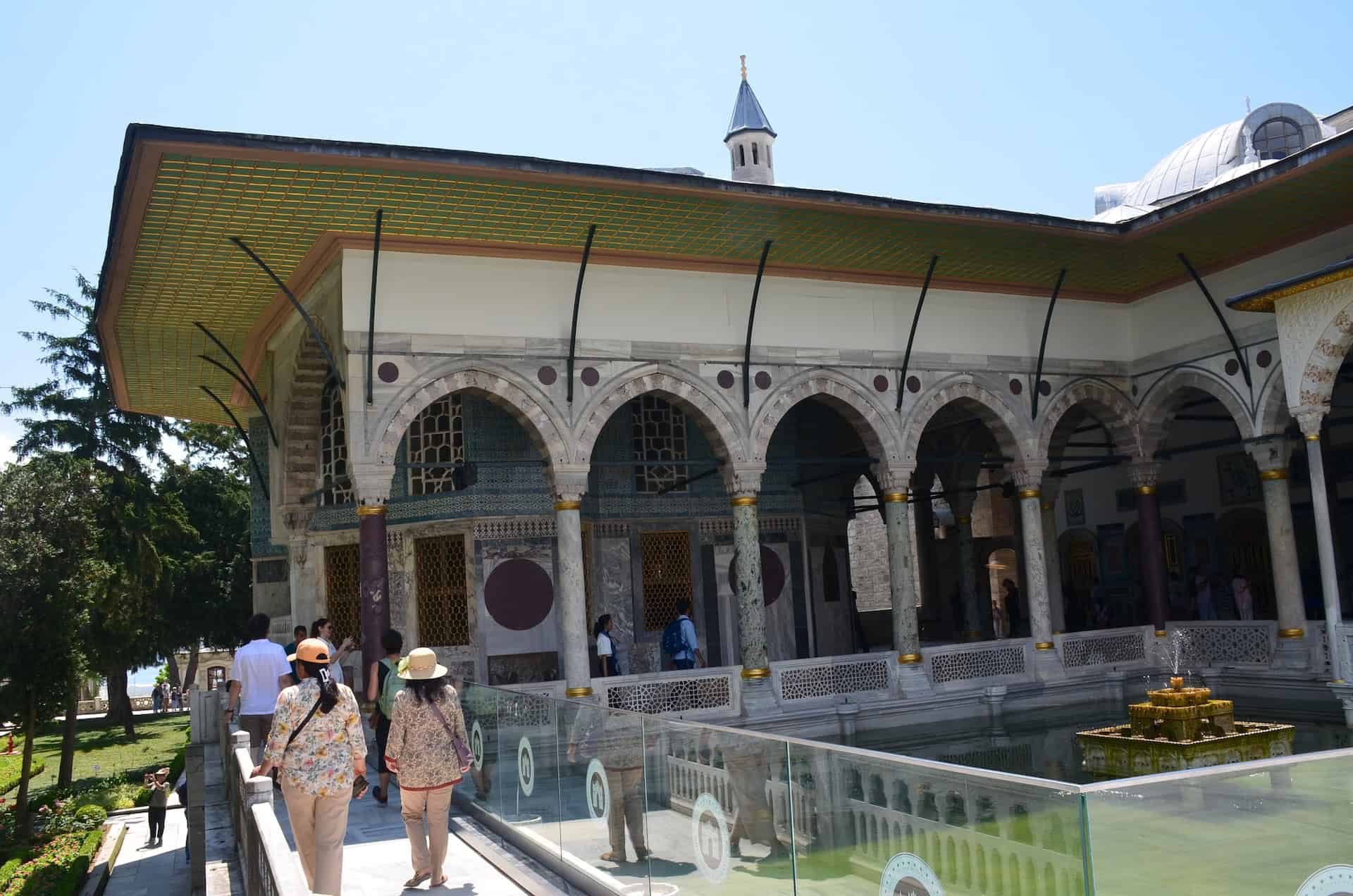
The exterior walls are decorated with Iznik tiles and feature a balcony and kiosk on the north and east sides, respectively. The lower windows are rectangular and sit behind gilded honeycomb screens while the upper windows are arched and filled with stained glass.
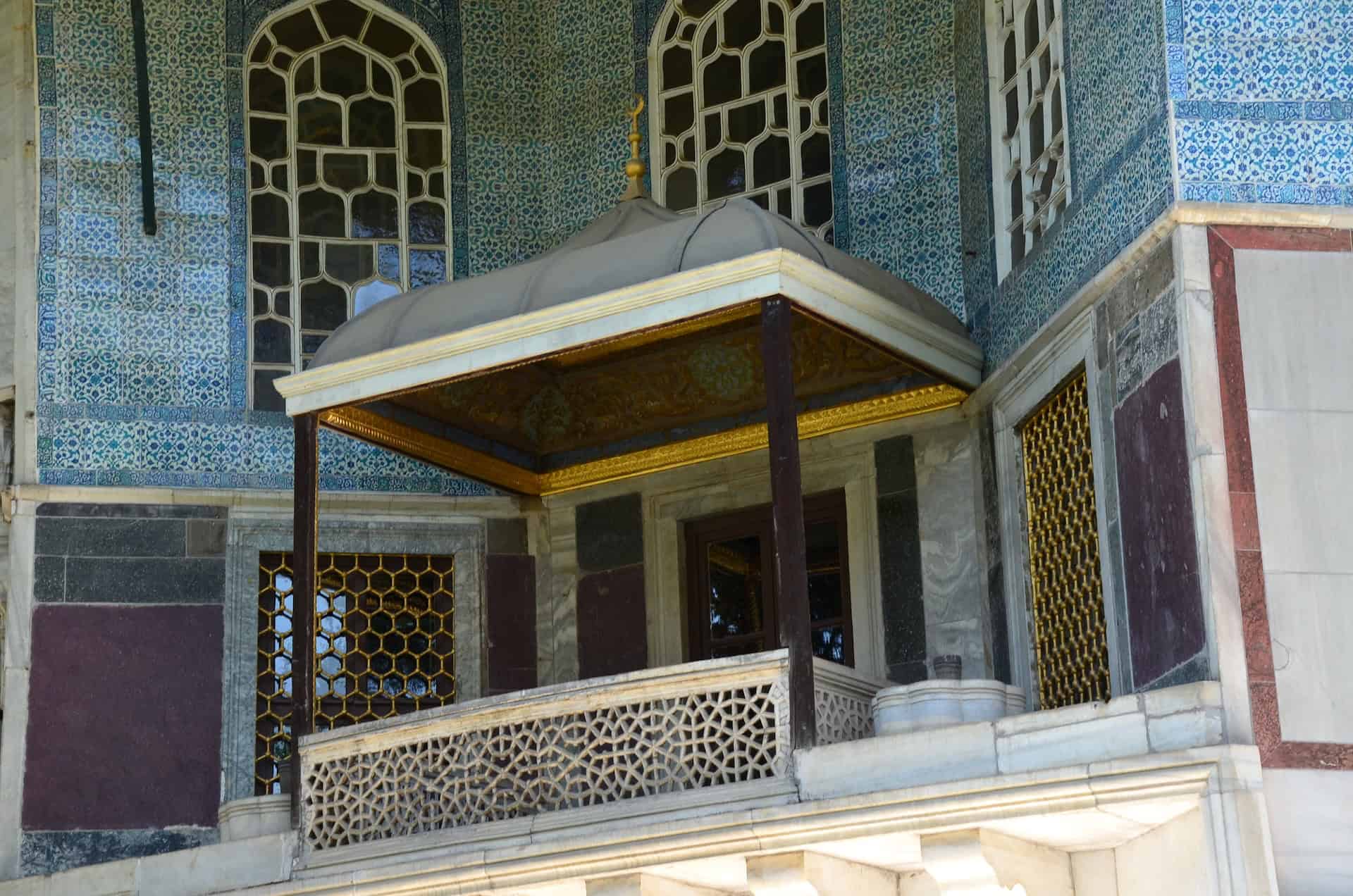
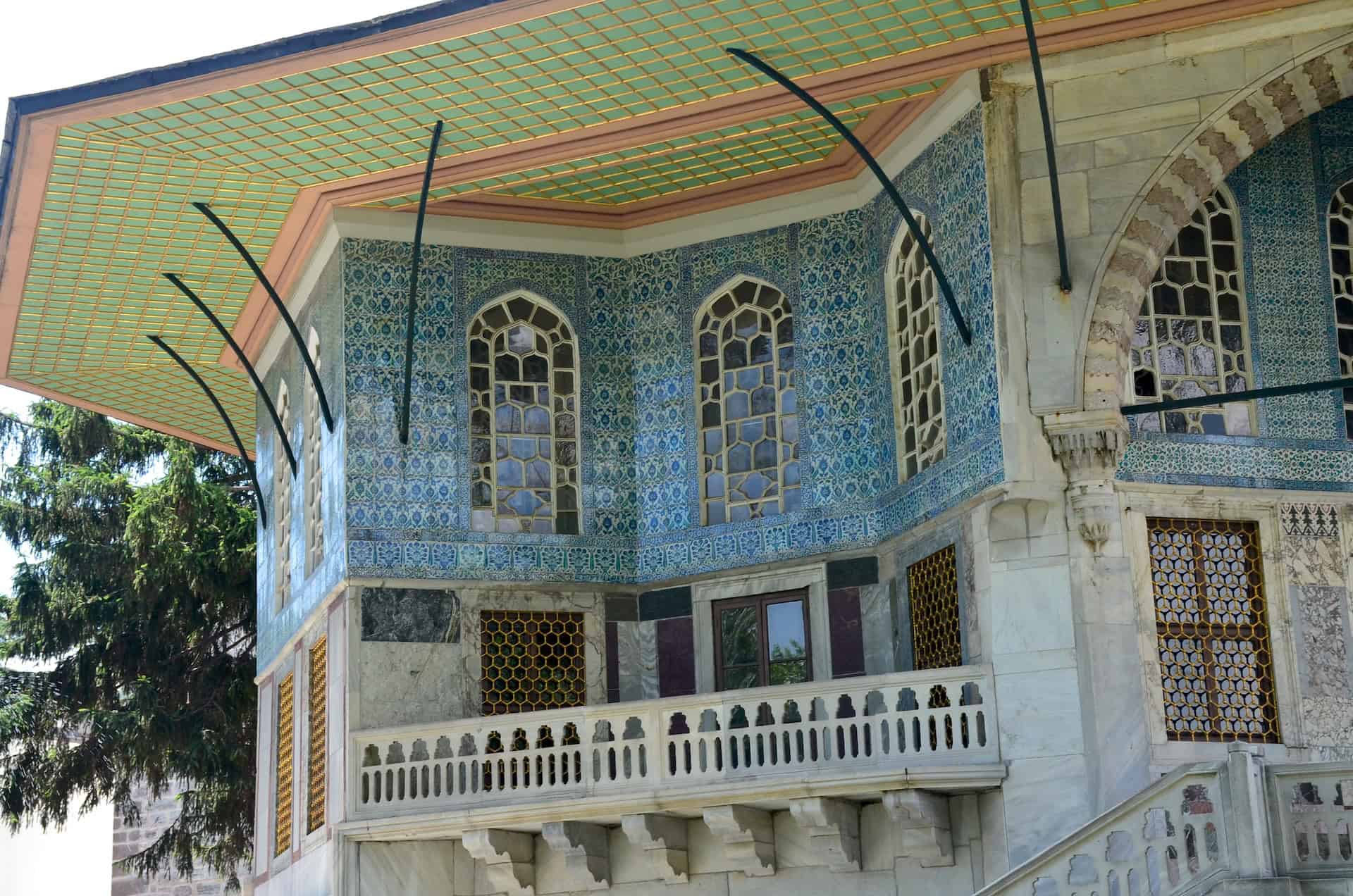
The west and south exterior walls of the Yerevan Pavilion are set with marble. The interior walls are decorated with 17th century Iznik tiles copying a 16th century pattern used on tiles in the Circumcision Room. The pavilion contains most of its original decorations.
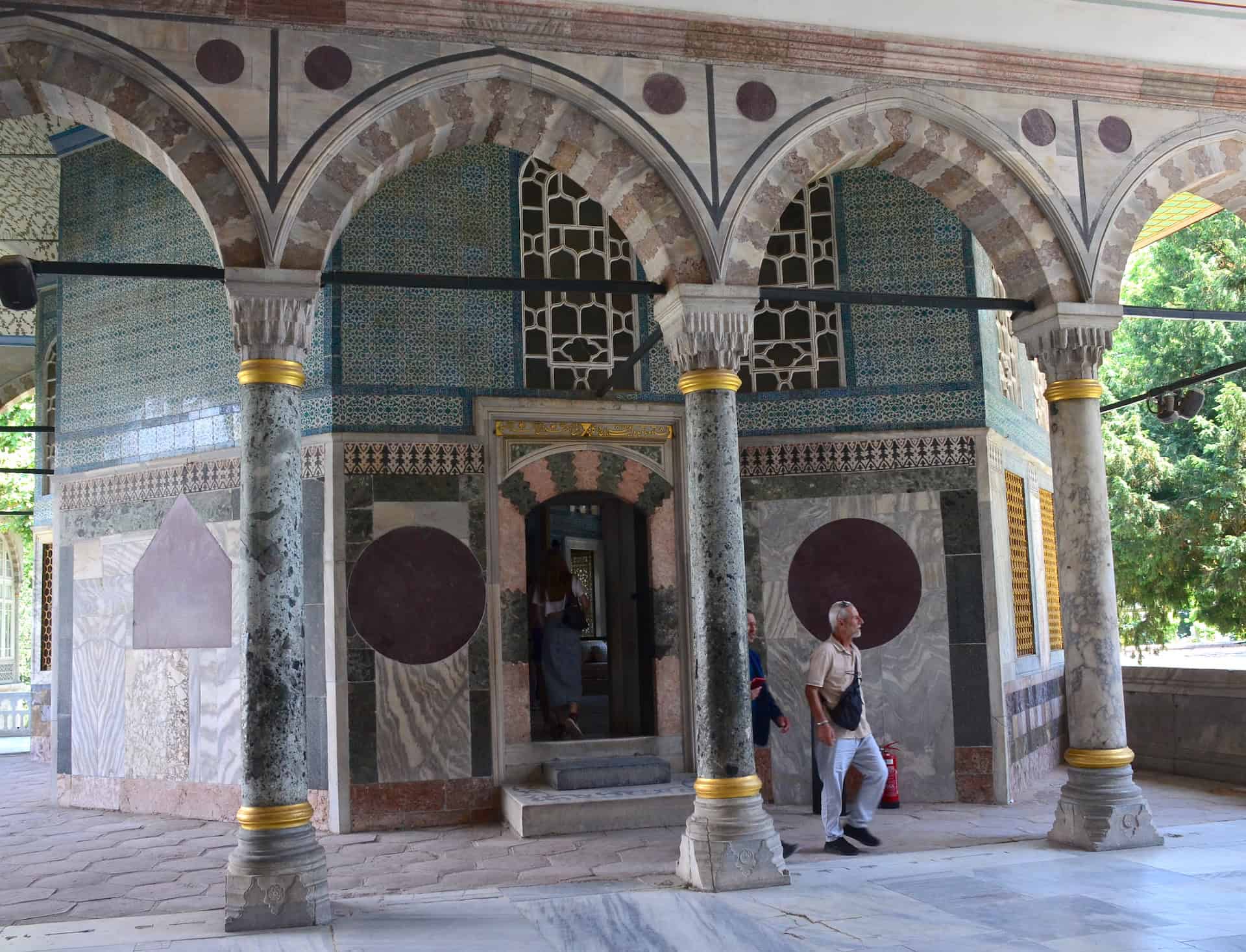
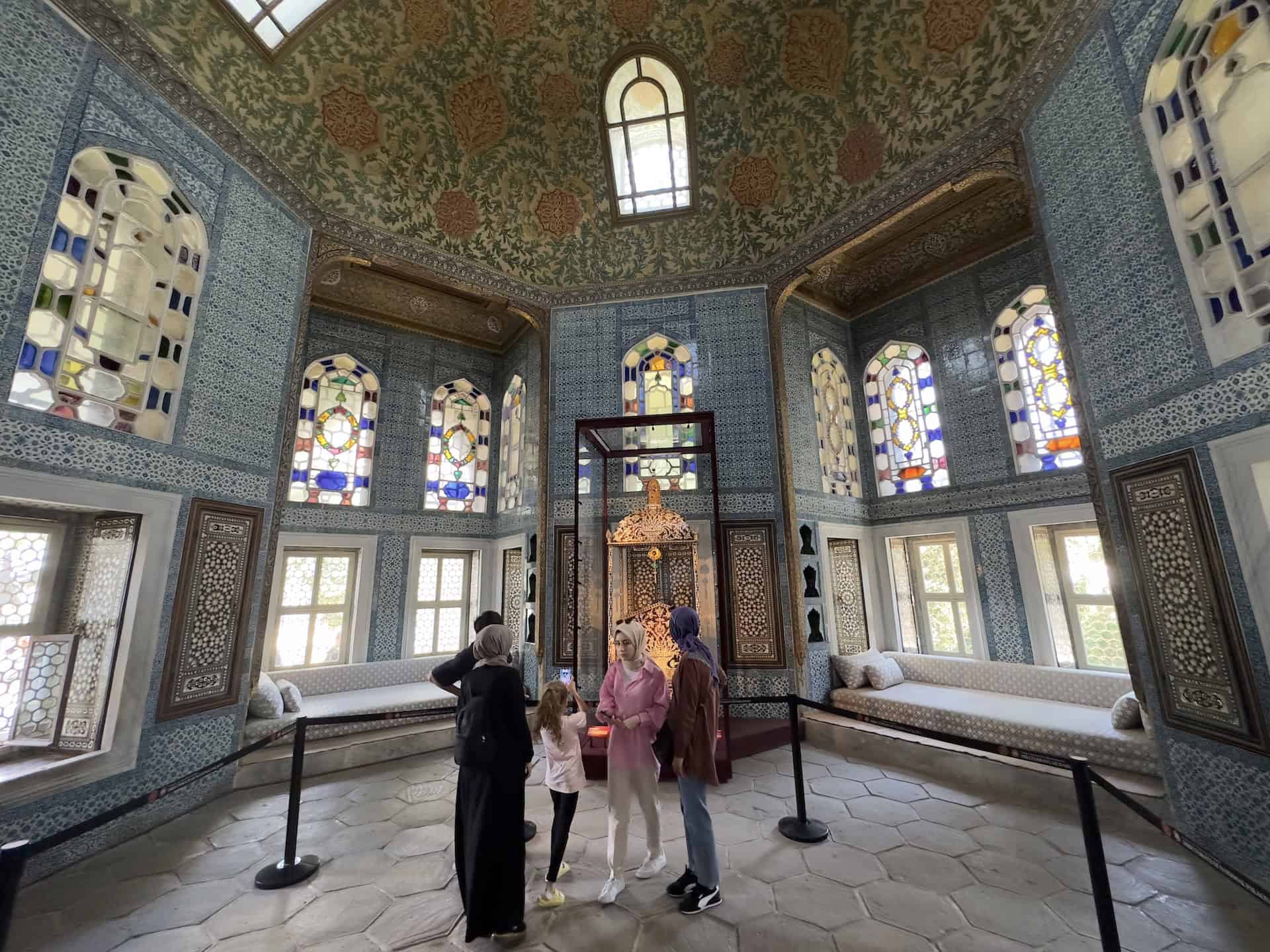
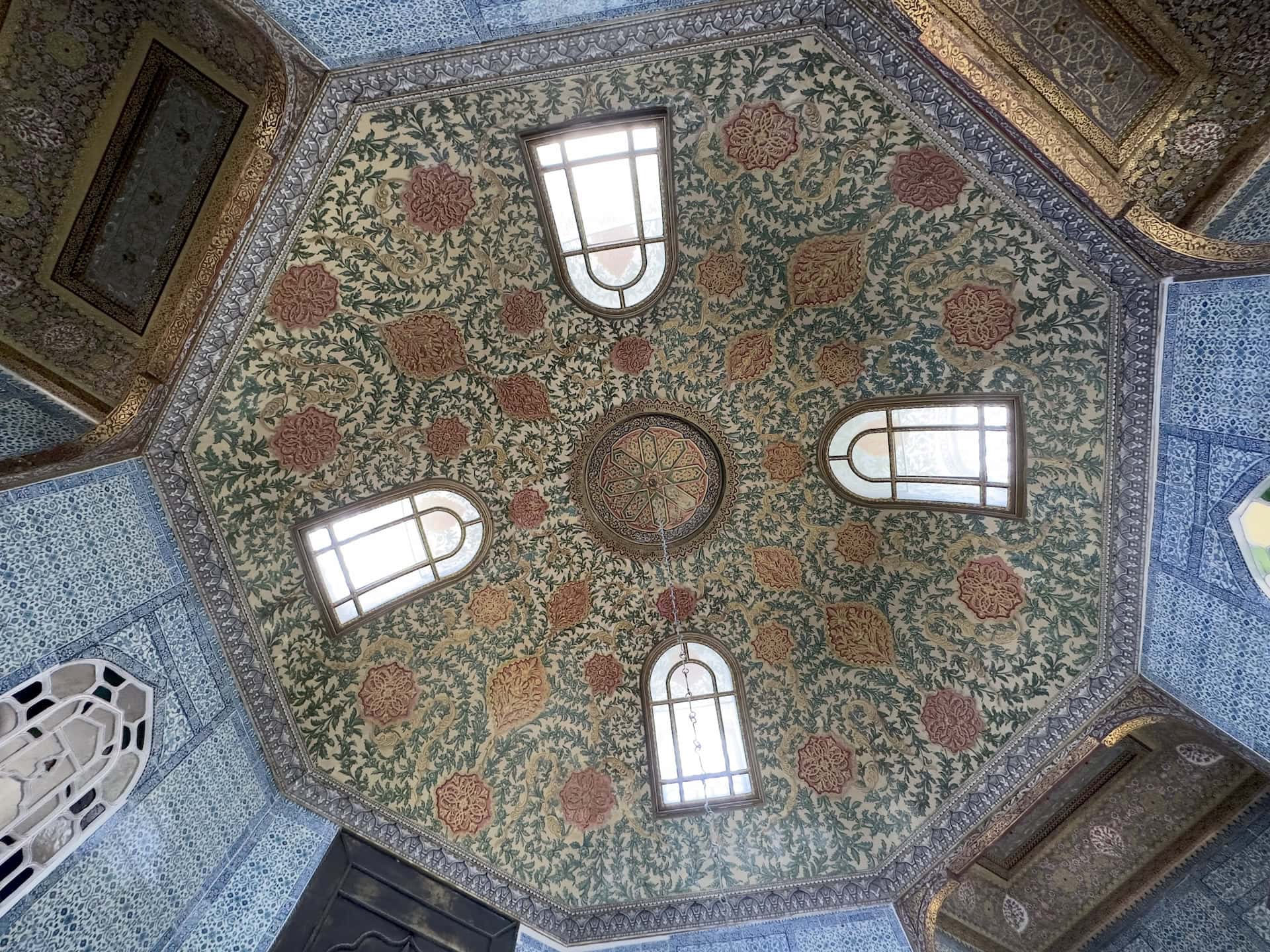
The Yerevan Pavilion was originally used as a religious retreat and as a place to wrap and preserve the Sultan’s turbans. The Sacred Relics were also taken there to display to guests on the 12th day of Ramadan.
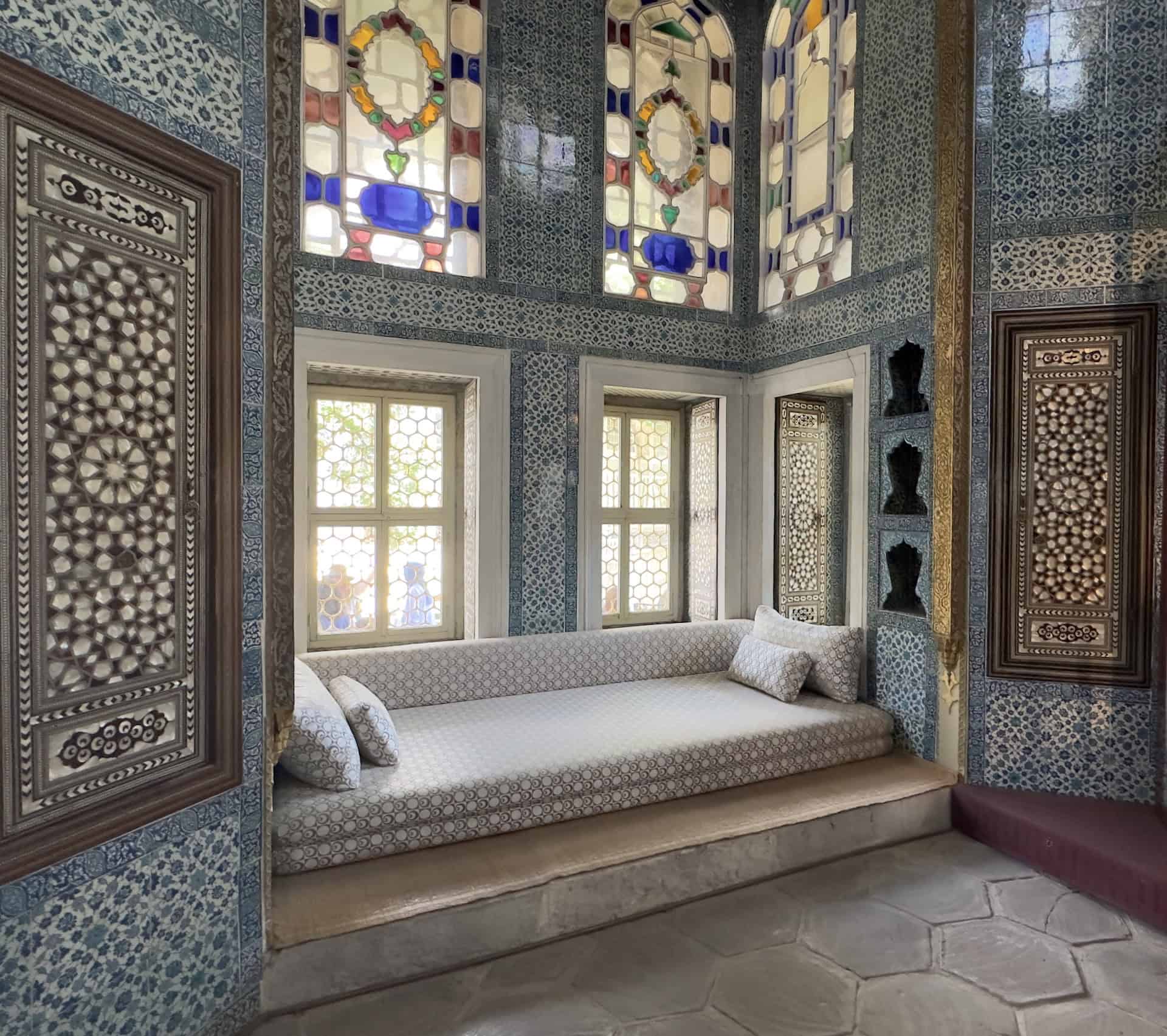
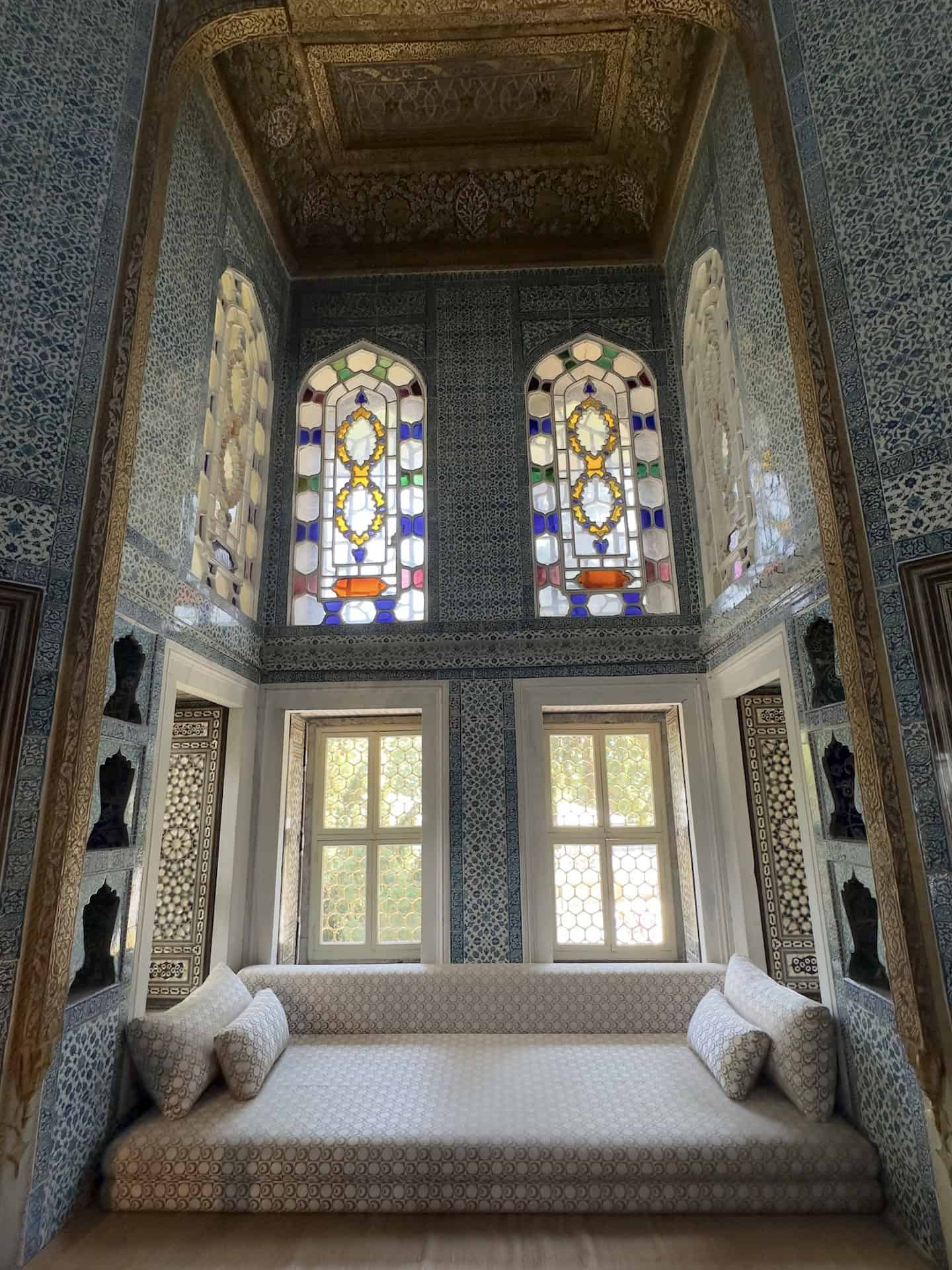
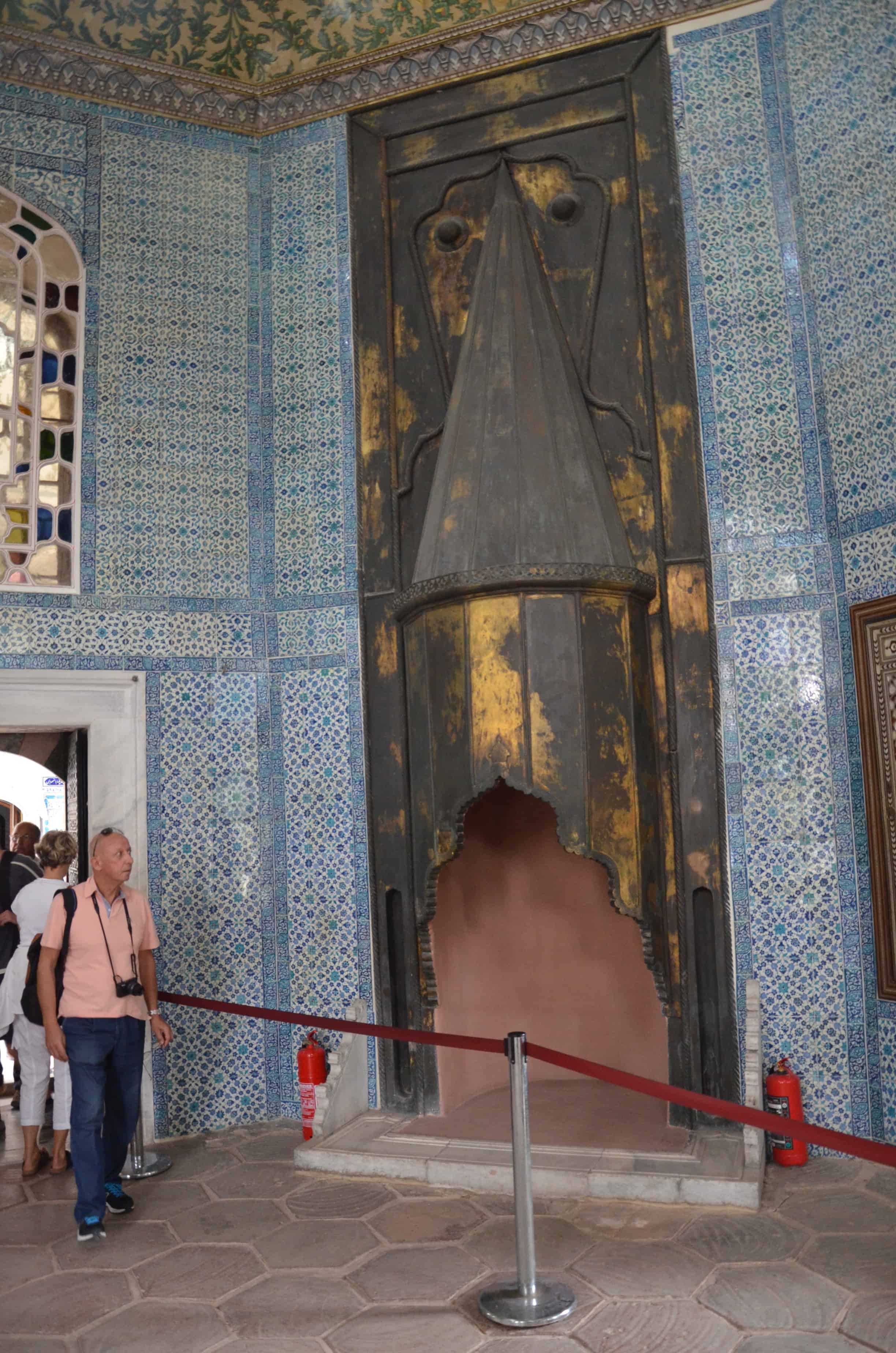
During some of my visits to Topkapi Palace, the Throne of Sultan Ahmed I has been on display inside. The throne was used by sultans during palace ceremonies held on the eve of holidays. It was built in the early 17th century by Sedefkâr Mehmed Ağa (c. 1540-1617), the architect who designed the Blue Mosque. It’s decorated with inlaid jewels, mother-of-pearl, and other fine materials.

Circumcision Room
At the far end of the colonnade is the Circumcision Room (Sünnet Odası). It dates to the reign of Süleyman the Magnificent but its current appearance is from renovations made by Sultan Ibrahim in 1640.
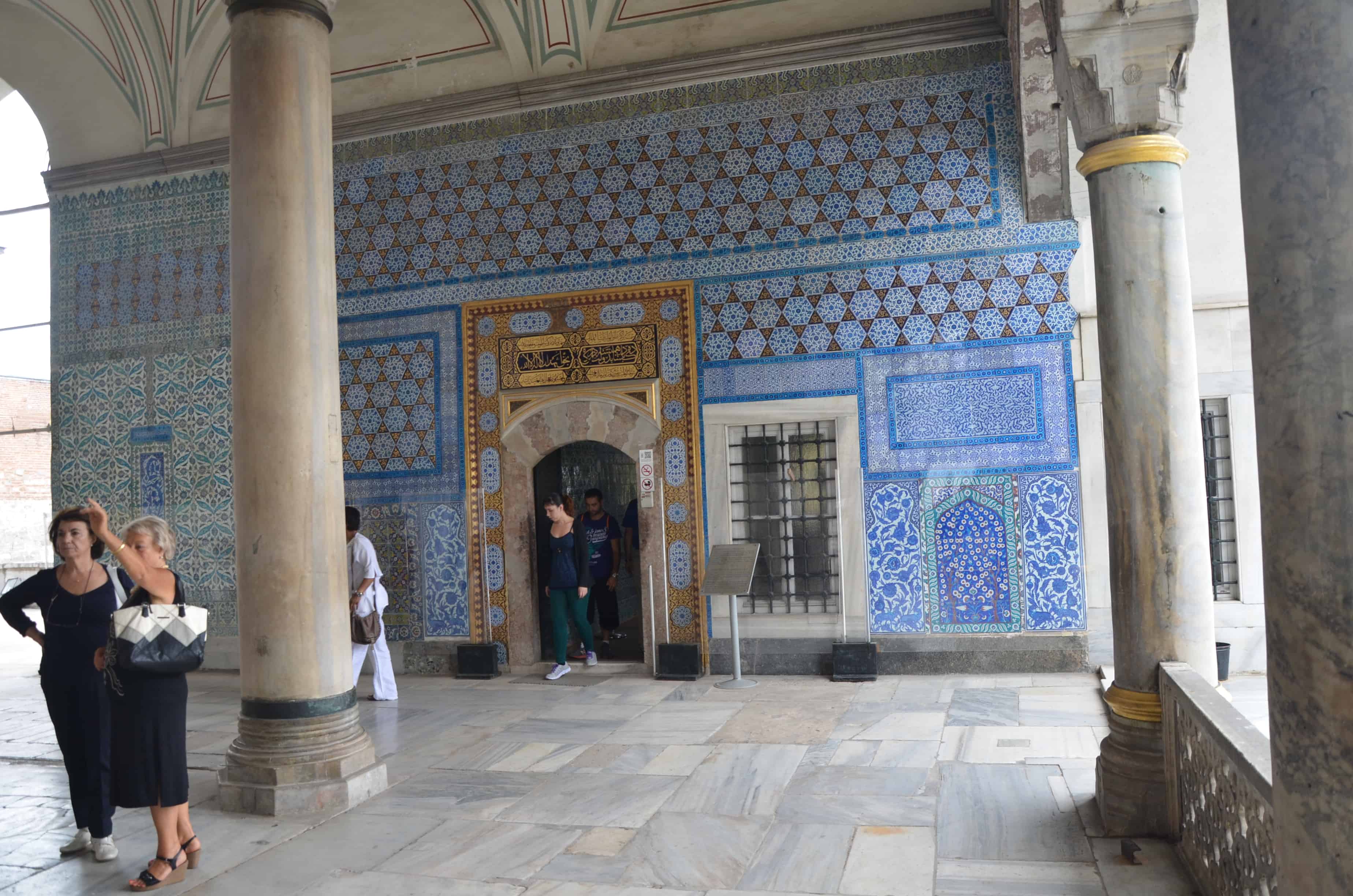
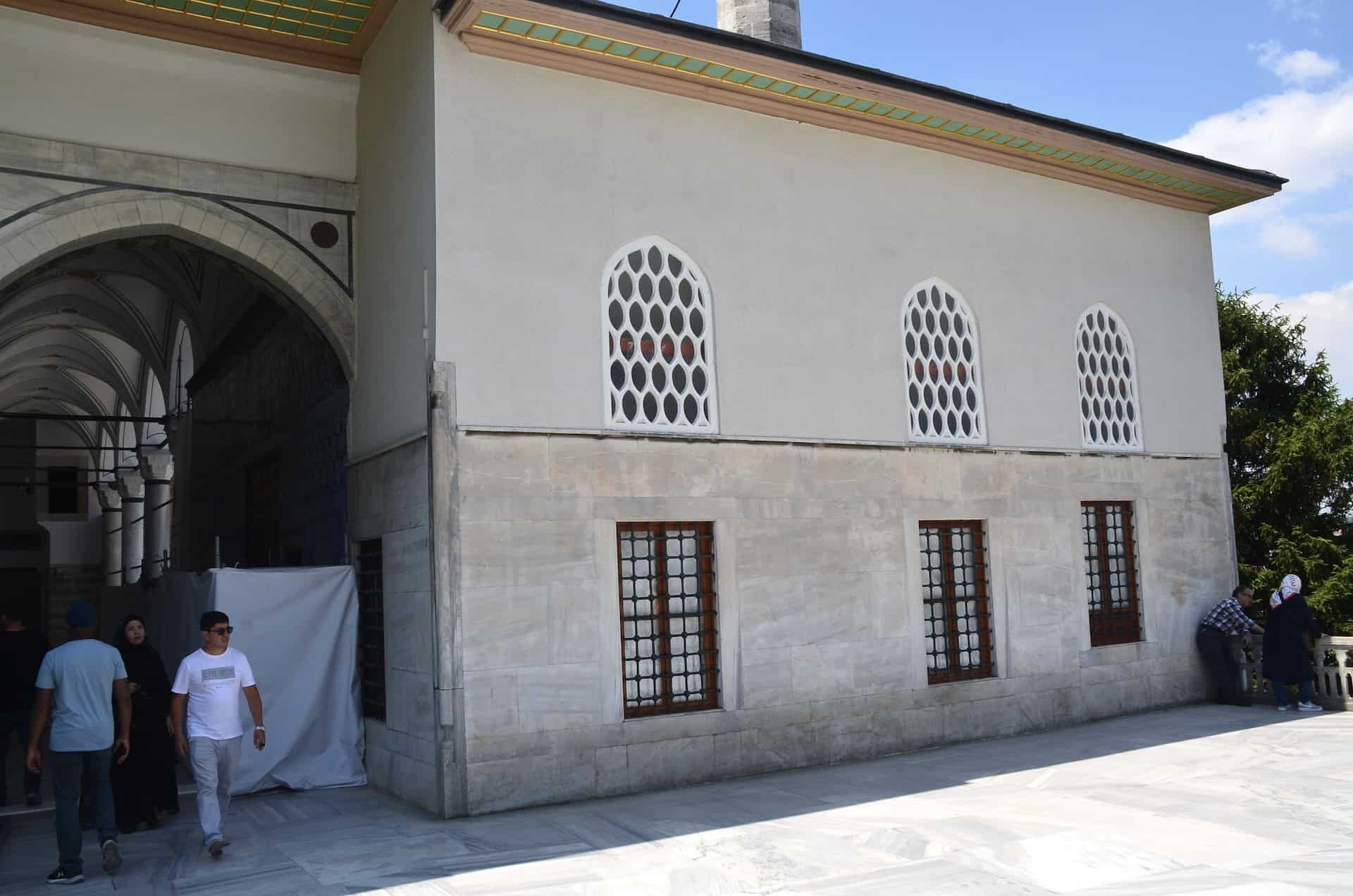
The Circumcision Room was originally the Summer Room (Yazlık Oda) and may have been used as a summer bedroom. The name changed after the circumcisions of Sultan Ahmed III’s sons were performed there. Inside are stained glass windows and a fireplace with a gilded hood.

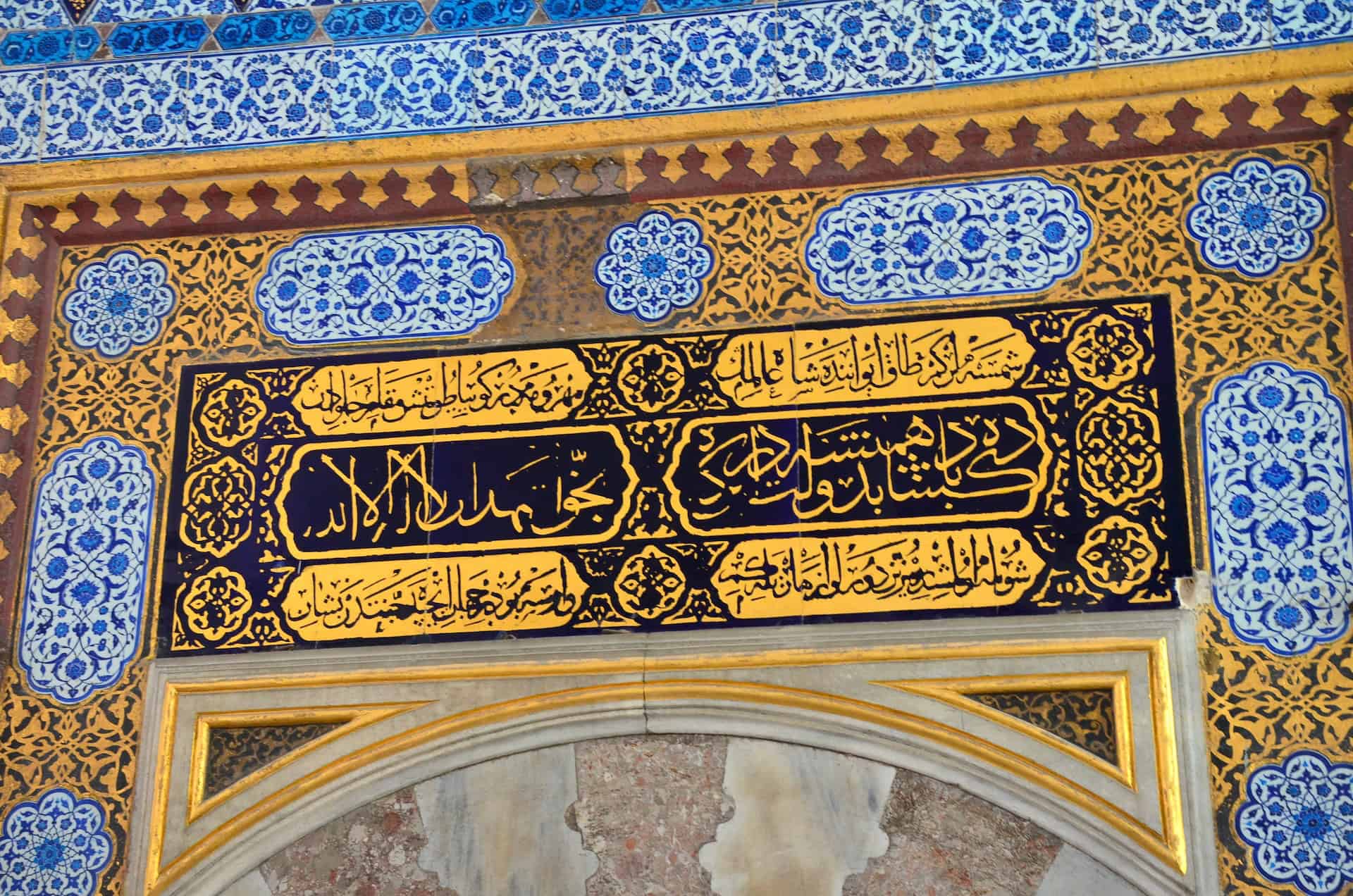
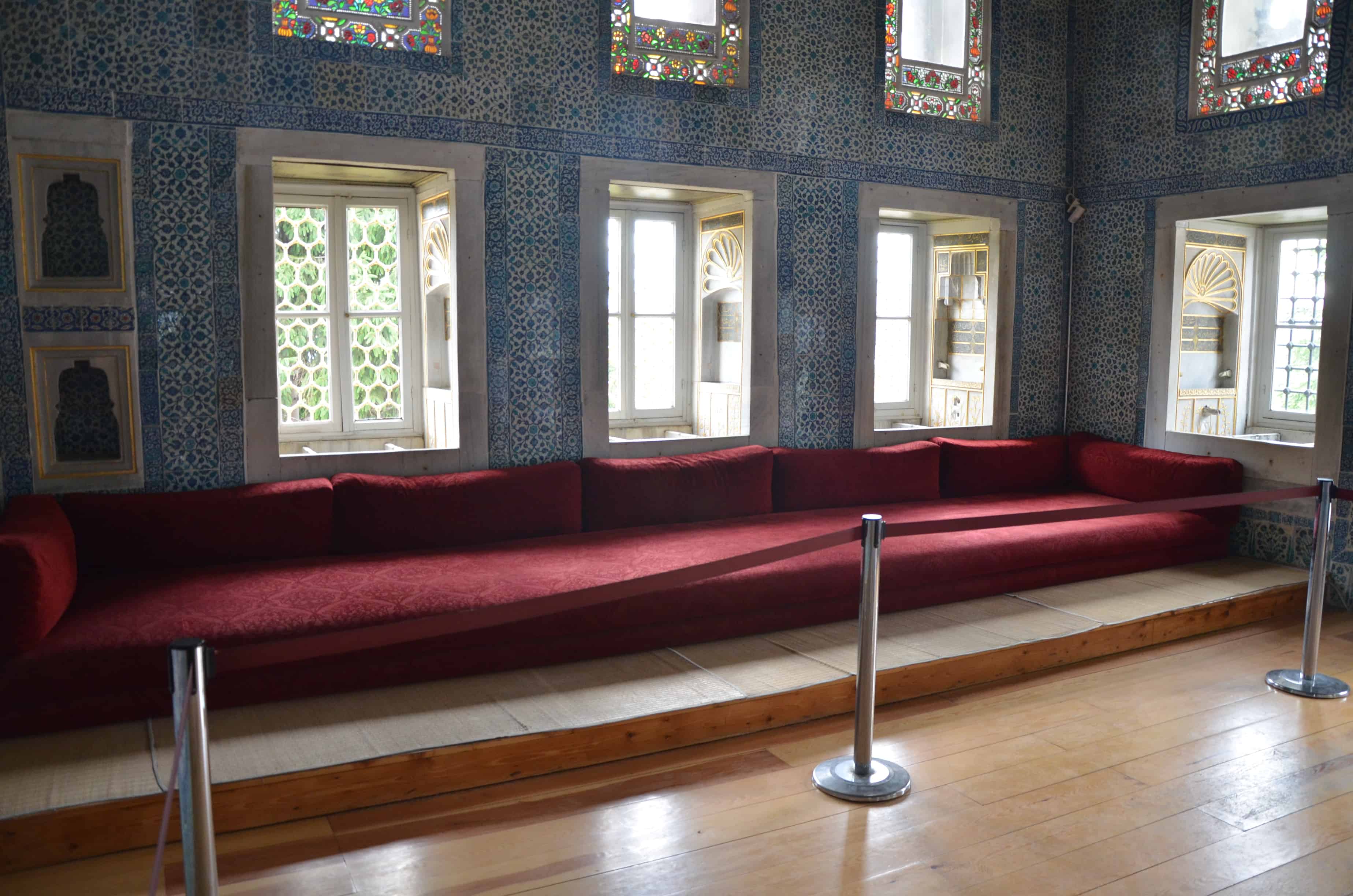
The Circumcision Room is richly decorated with stunning tile work inside and out. The most important tiles are those on the exterior, which are dated 1529 and are recycled from other palace buildings. They once adorned the Imperial Council and Outer Treasury in the 2nd Courtyard and the Audience Chamber in the 3rd Courtyard. The tiles served as prototypes for the tiles in the Yerevan Pavilion and Baghdad Pavilion.
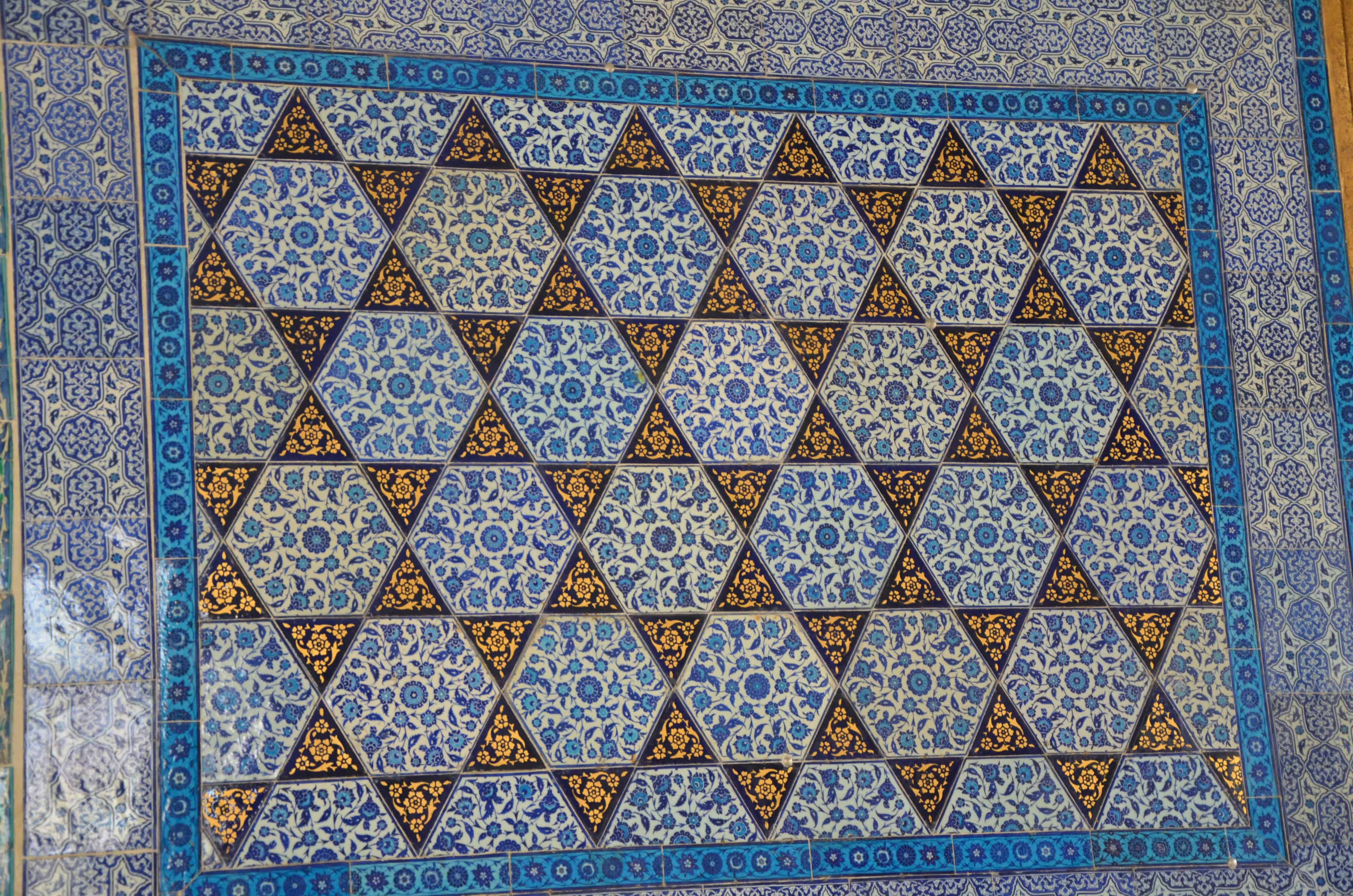
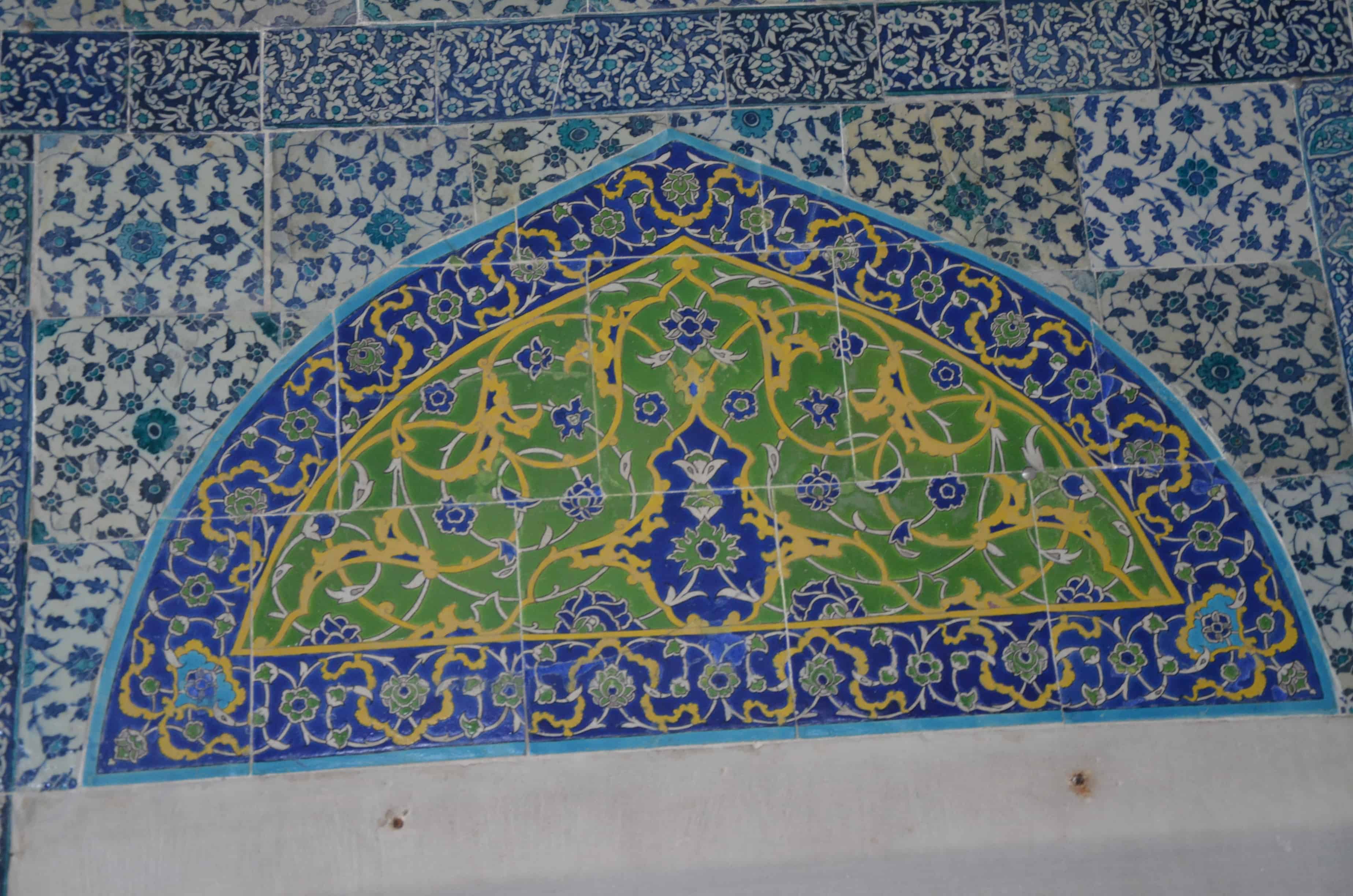
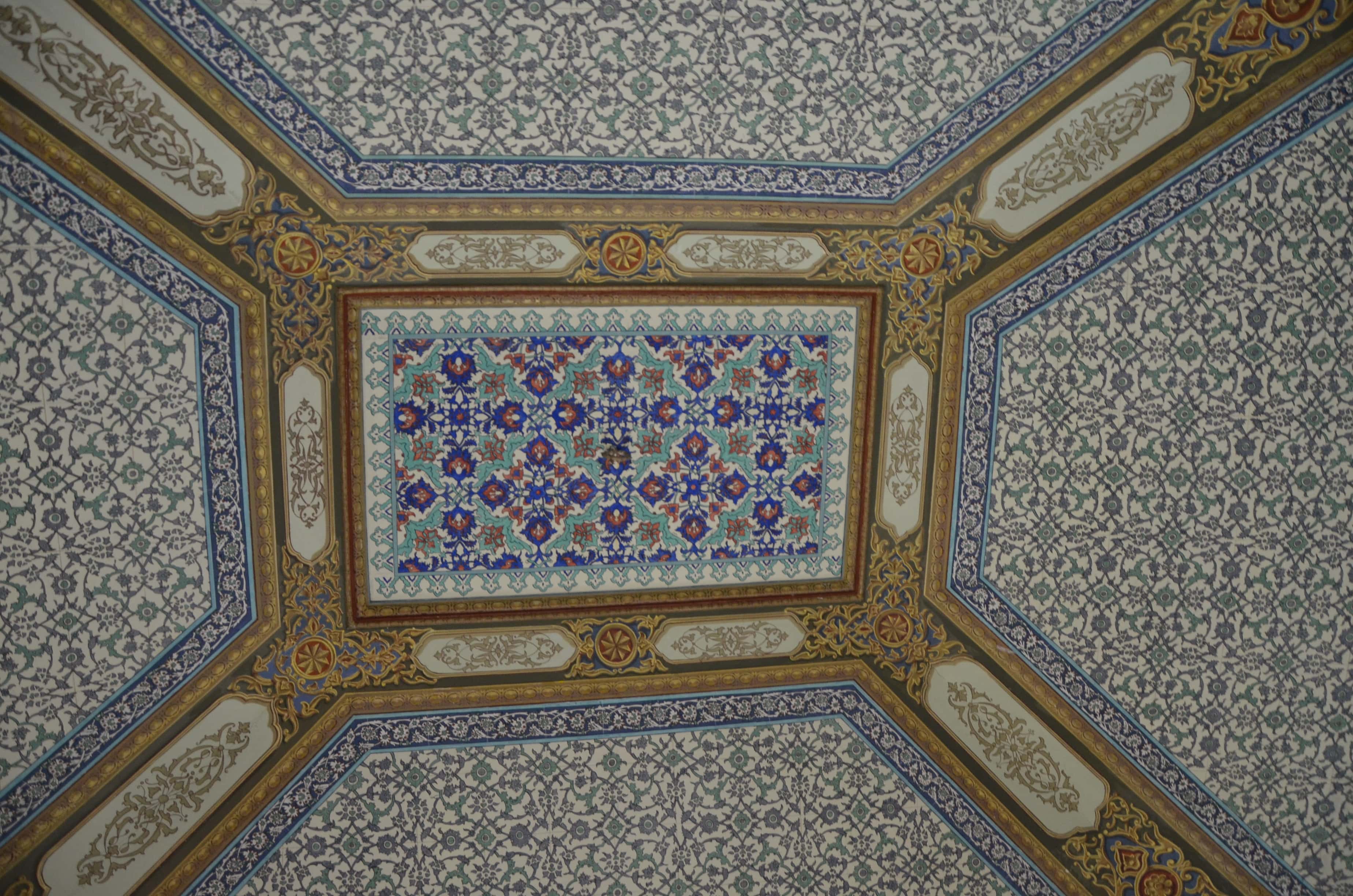
Iftar Kiosk
The Iftar Kiosk (İftariye Köşkü) sits on the edge of the terrace. It’s believed the kiosk was used as a place for the Sultan to break his fast at sunset during Ramadan. The current look with the gilded roof dates to the reign of Ibrahim.
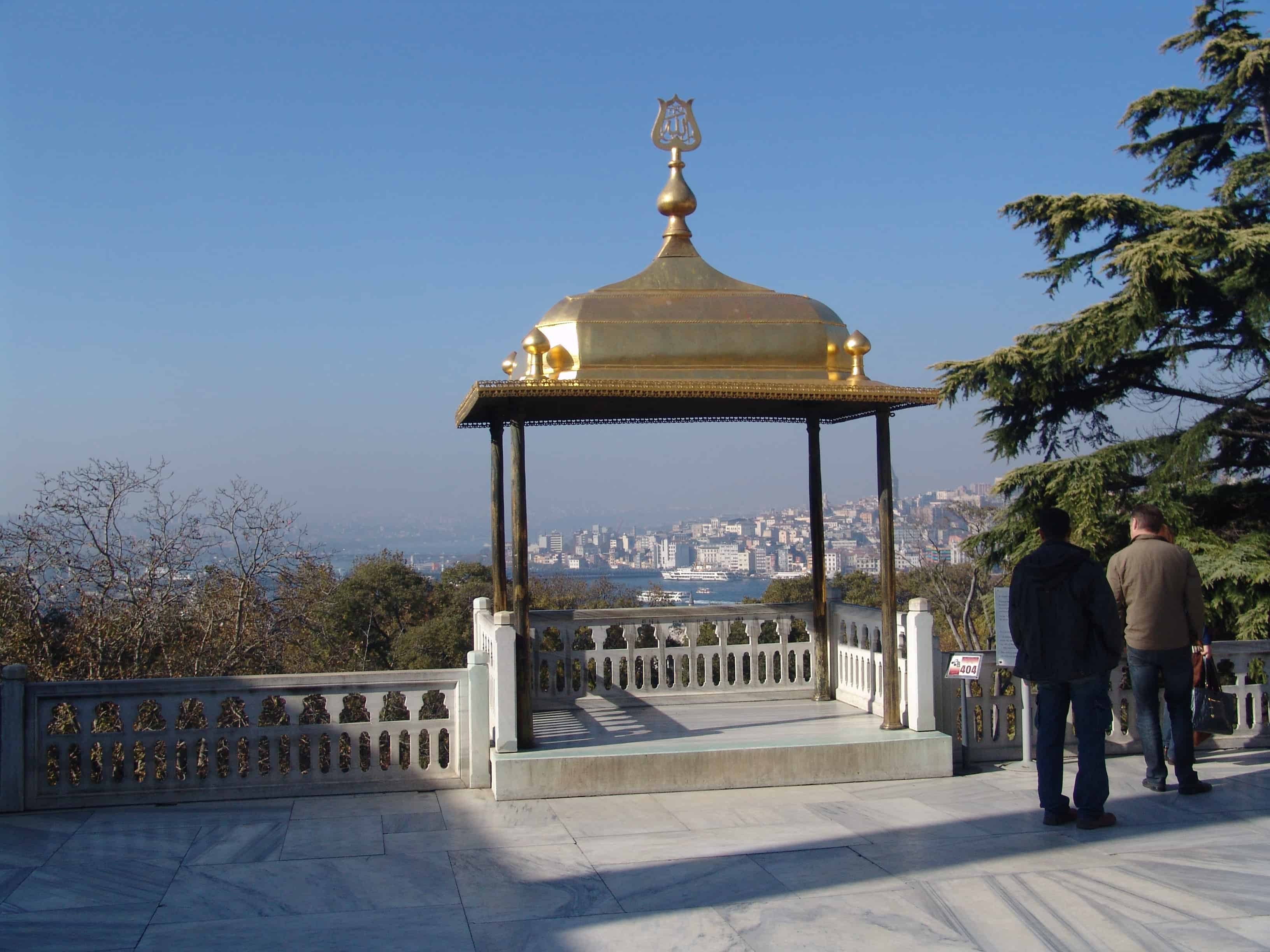

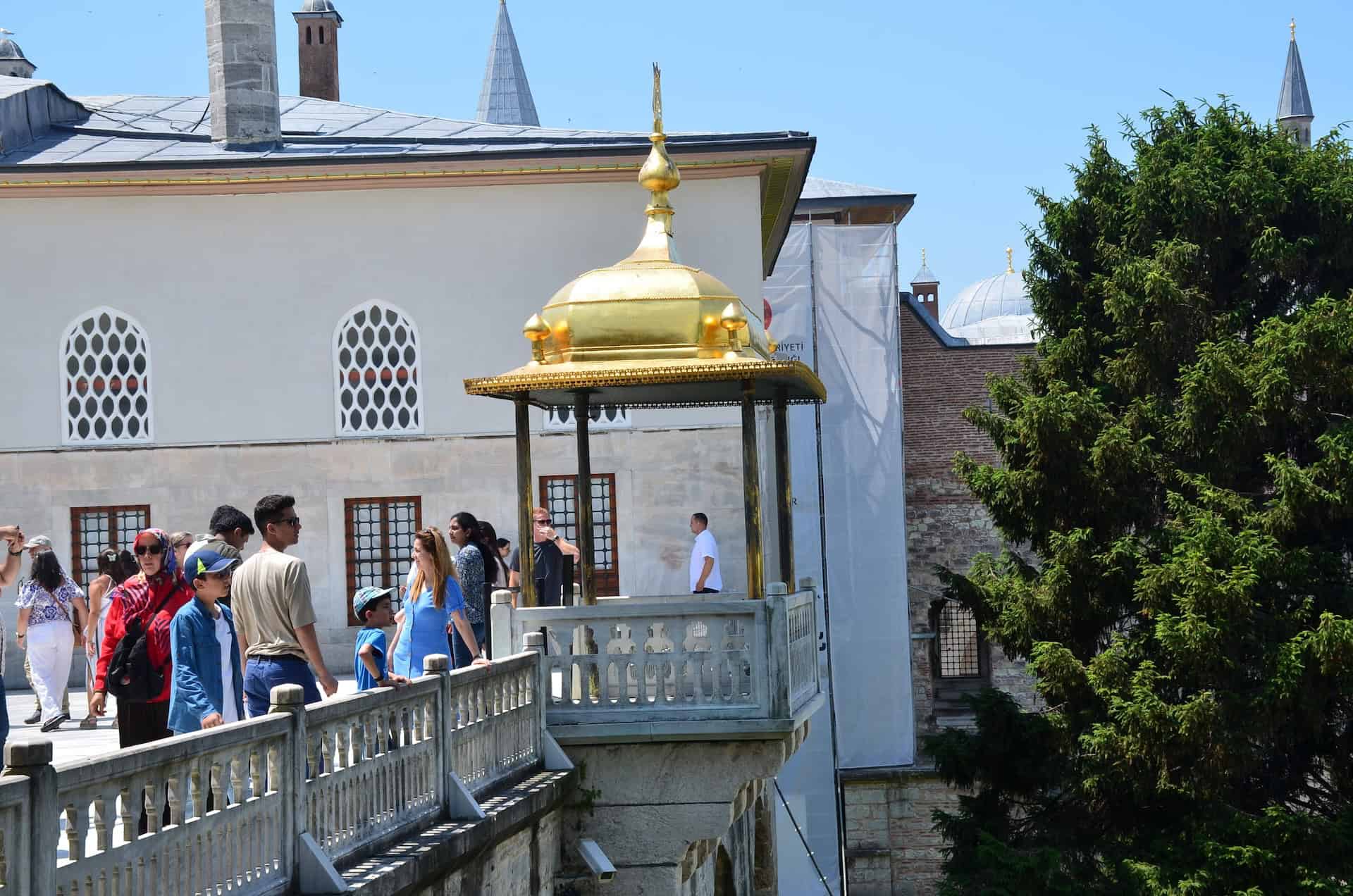
From the kiosk, the sultans were able to watch sporting events in the garden below and look across the Golden Horn. It’s also thought that the Sultan would shower officials with gold coins from there.
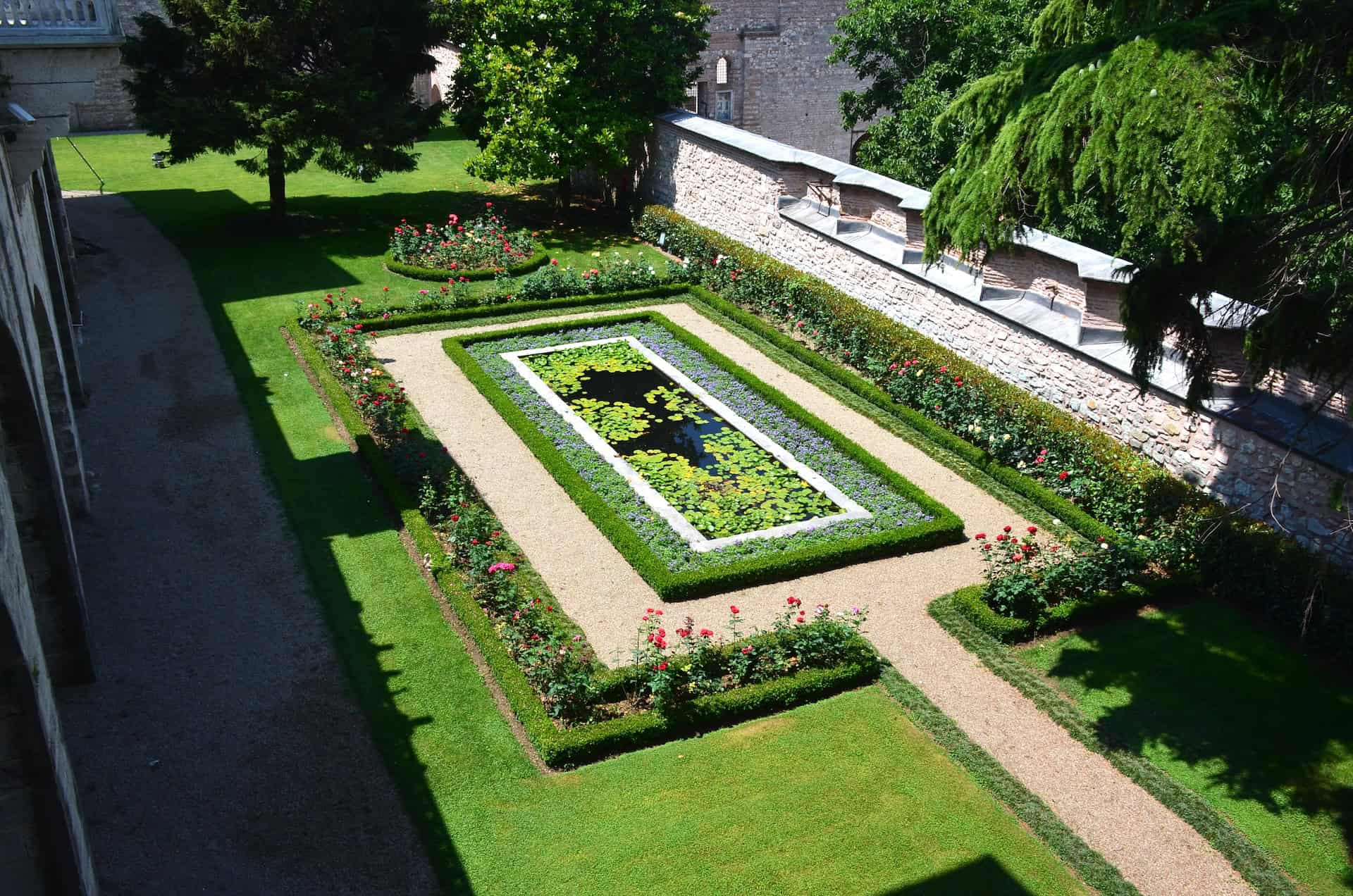
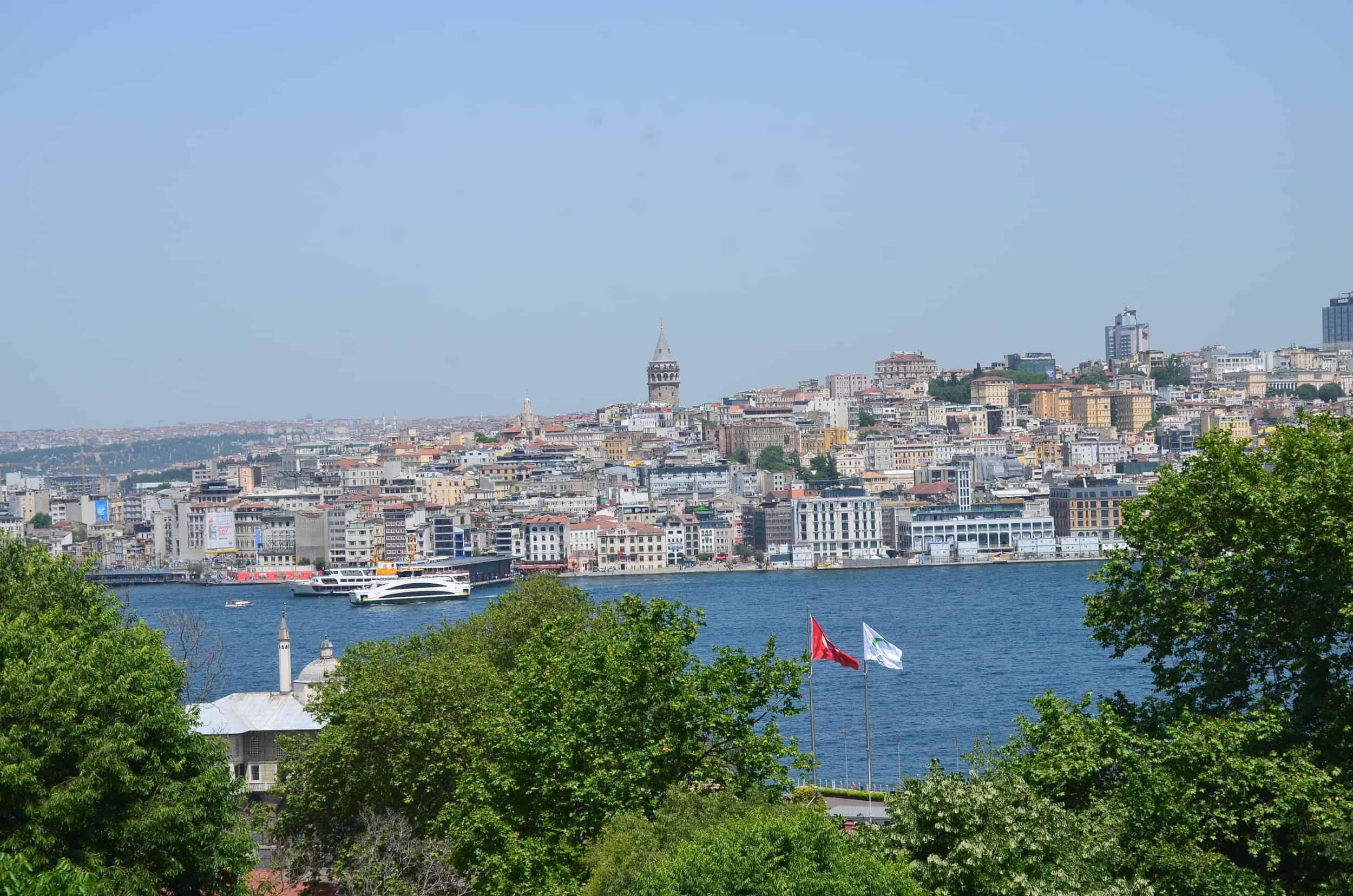
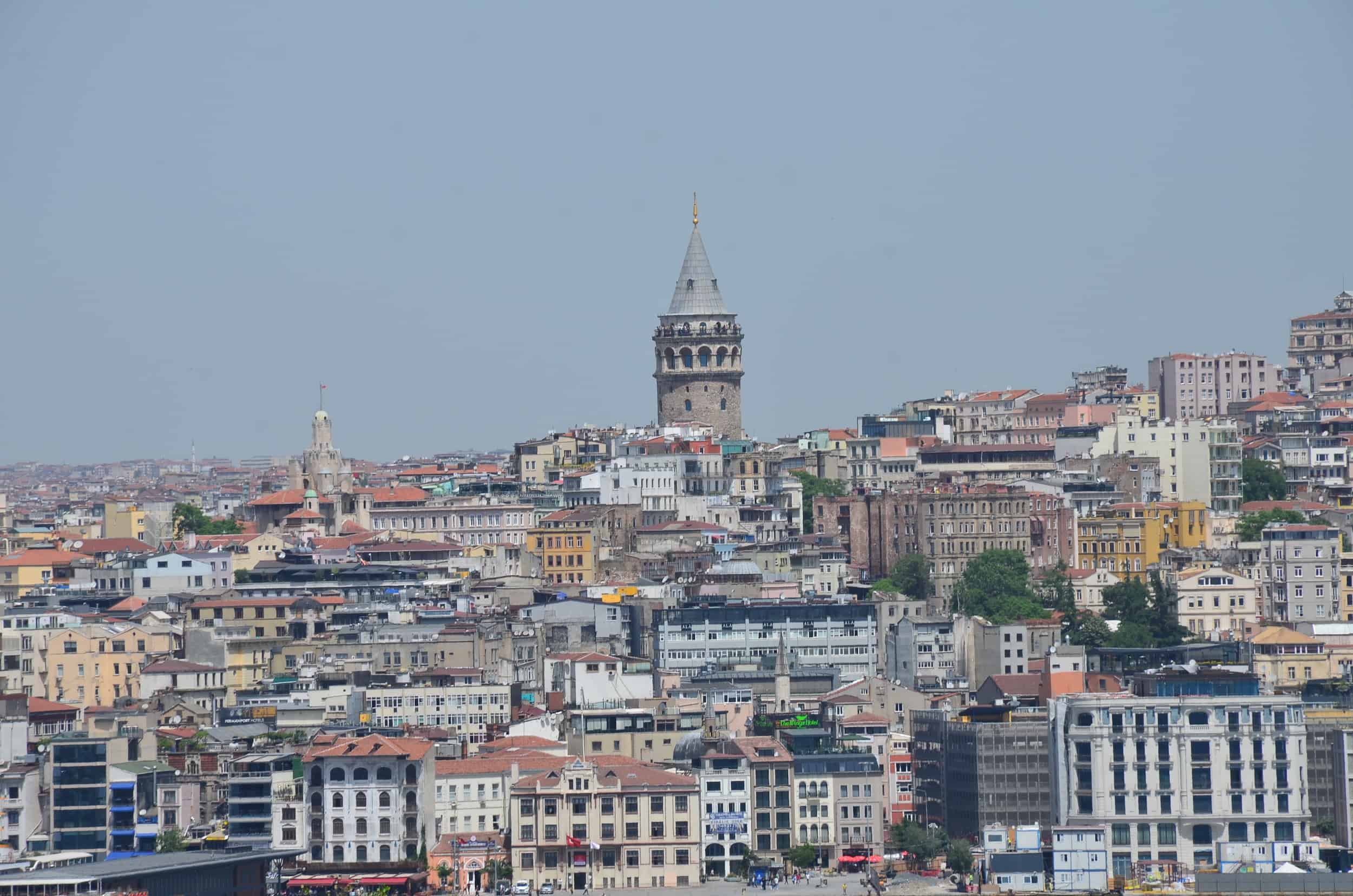
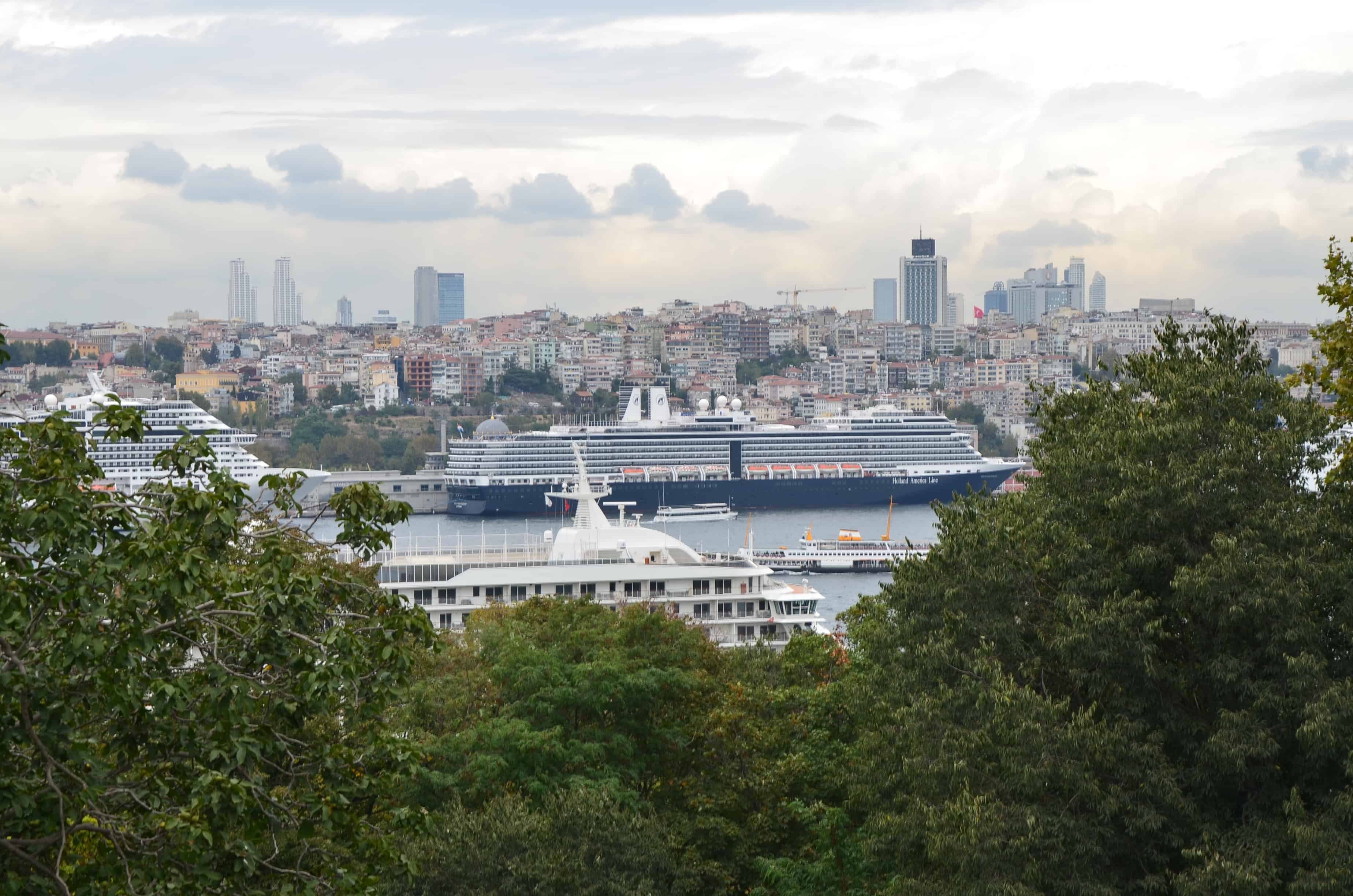
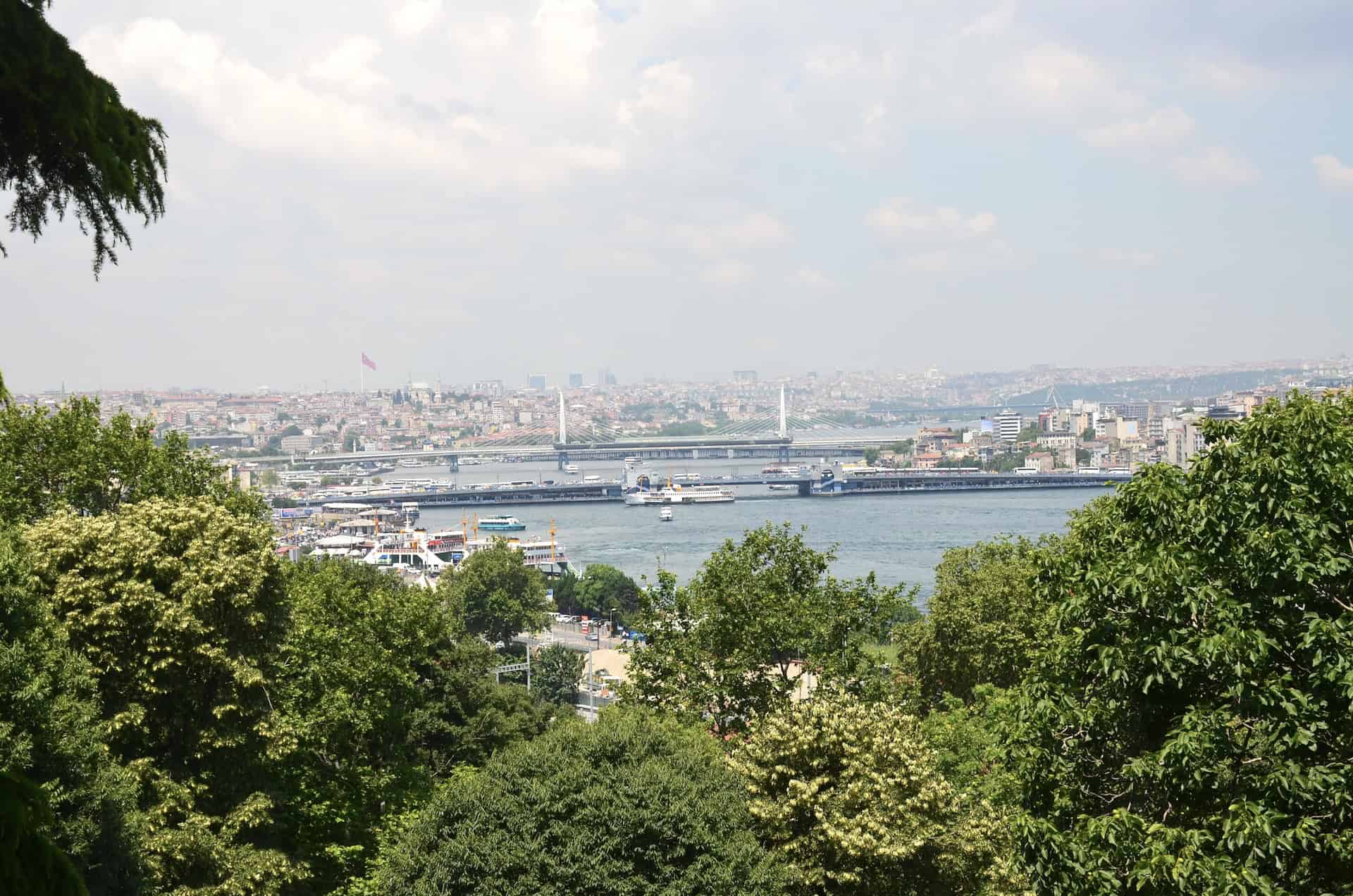
Baghdad Pavilion
The Baghdad Pavilion (Bağdad Köşkü) sits at the north end of the Marble Terrace. It was built in 1639 by Sultan Murad IV to commemorate the reconquest of Baghdad, which was captured by the Safavids in 1624. The architect was Kasım Ağa. In 1733, Sultan Mahmud I established a library in the pavilion containing 360 rare books and manuscripts.


The Baghdad Pavilion has 8 sides with 3 doors and 22 windows. The exterior is decorated with Iznik tiles. The lower windows are rectangular and sit behind a gilded screen while the upper windows are arched and decorated with stained glass.
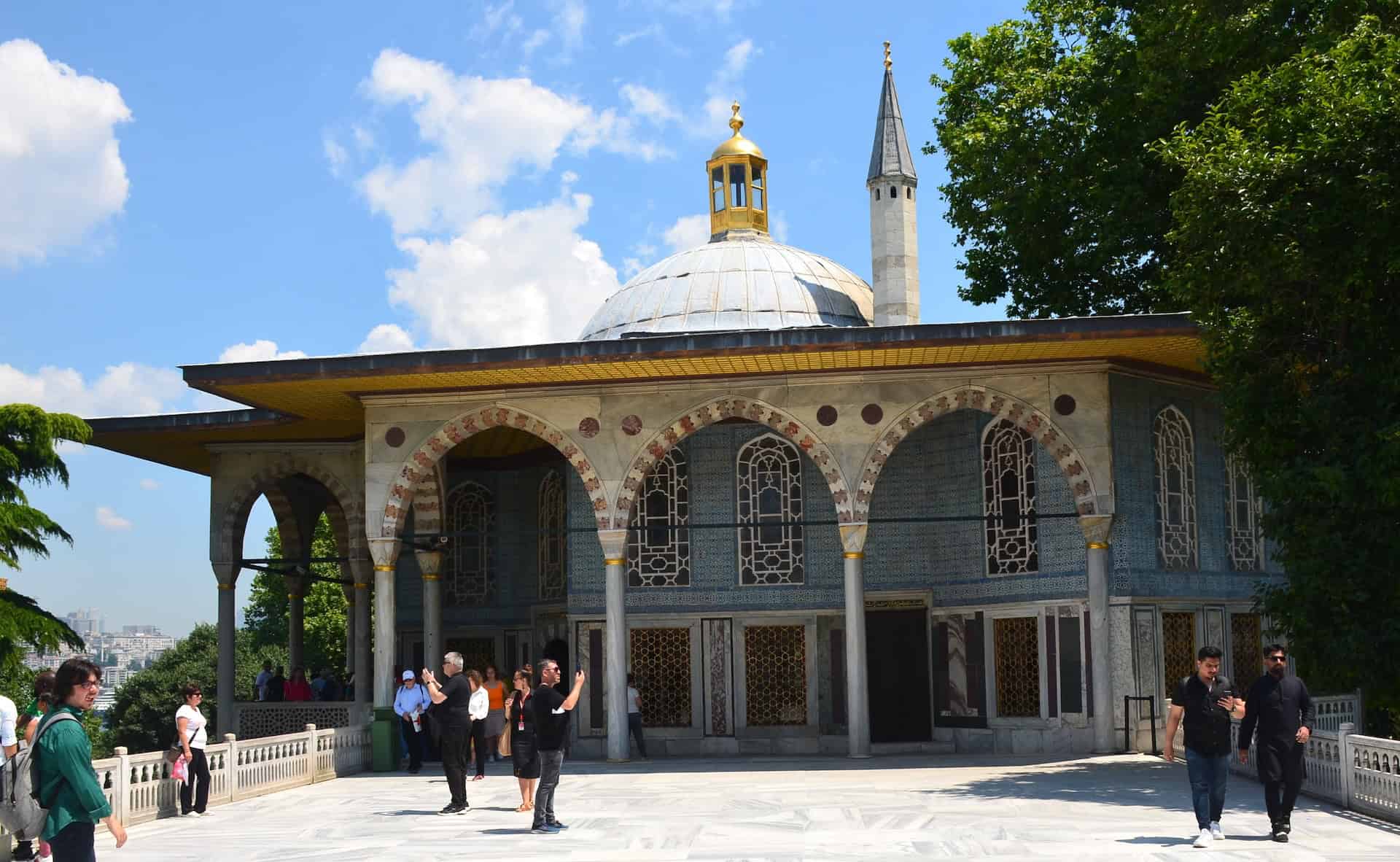
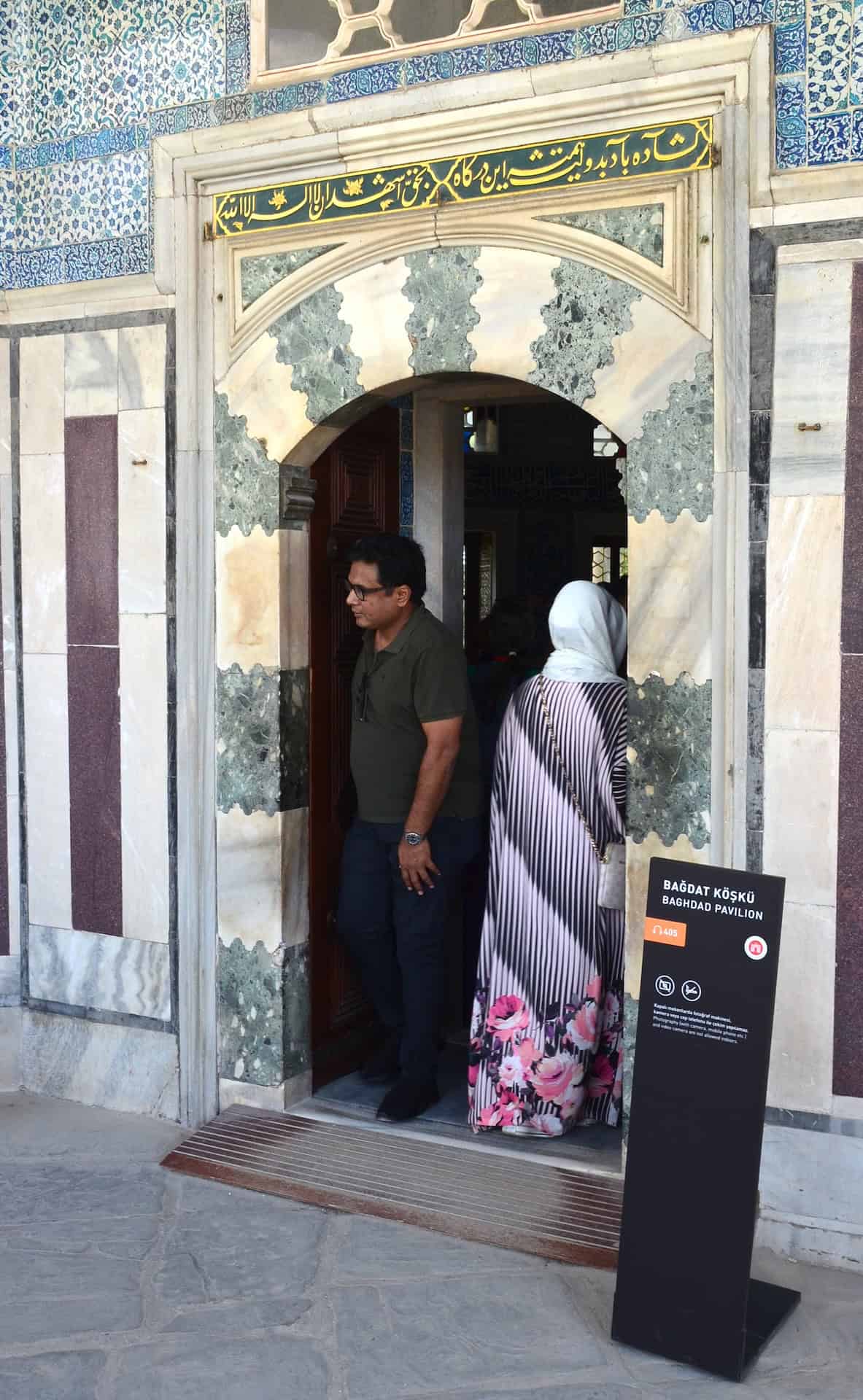
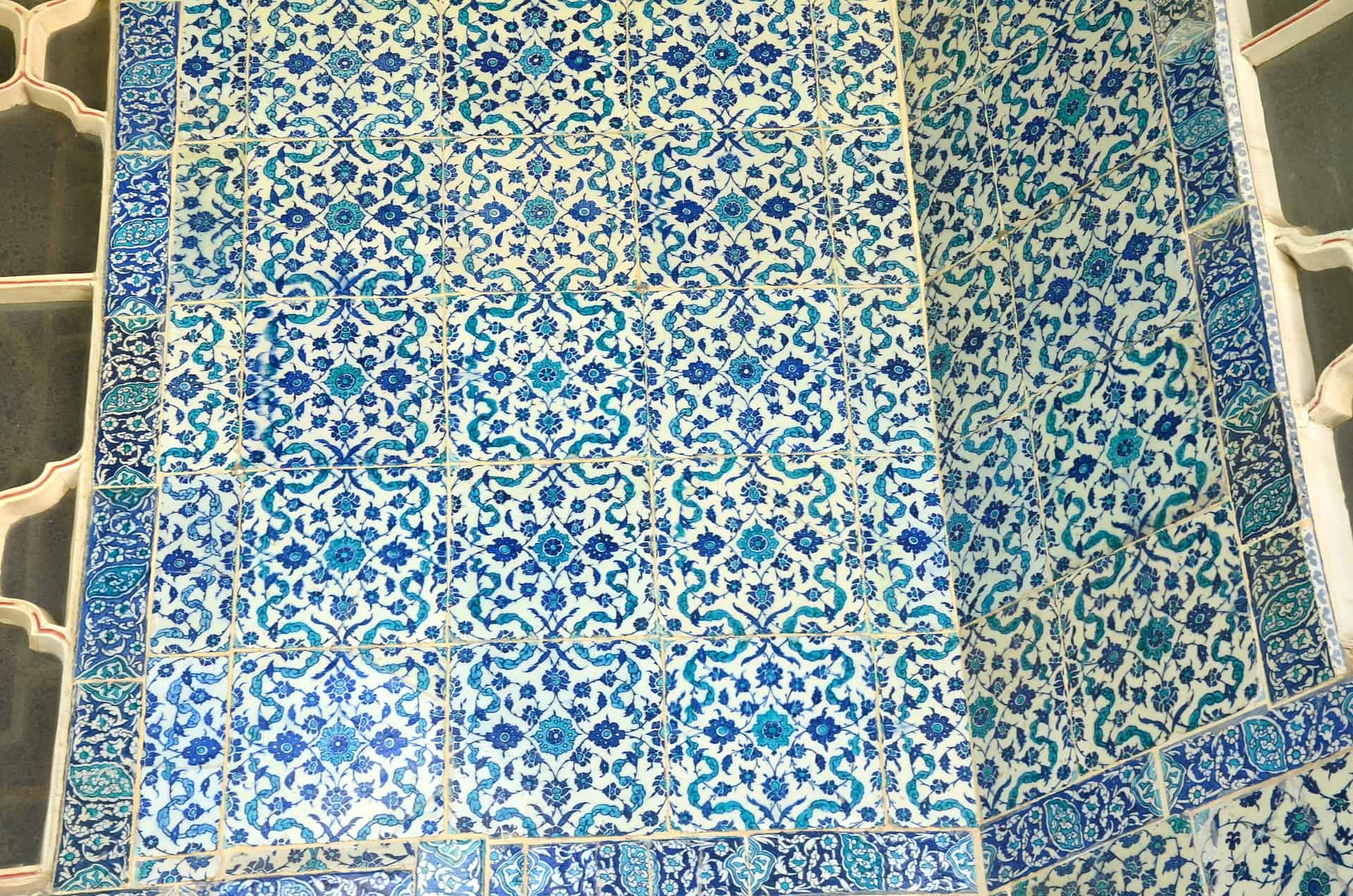

The interior contains 17th century tiles copied from the Circumcision Room. The inscriptions were written by Ottoman calligrapher Tophaneli Mahmud Çelebi. Most of the decorations are original.
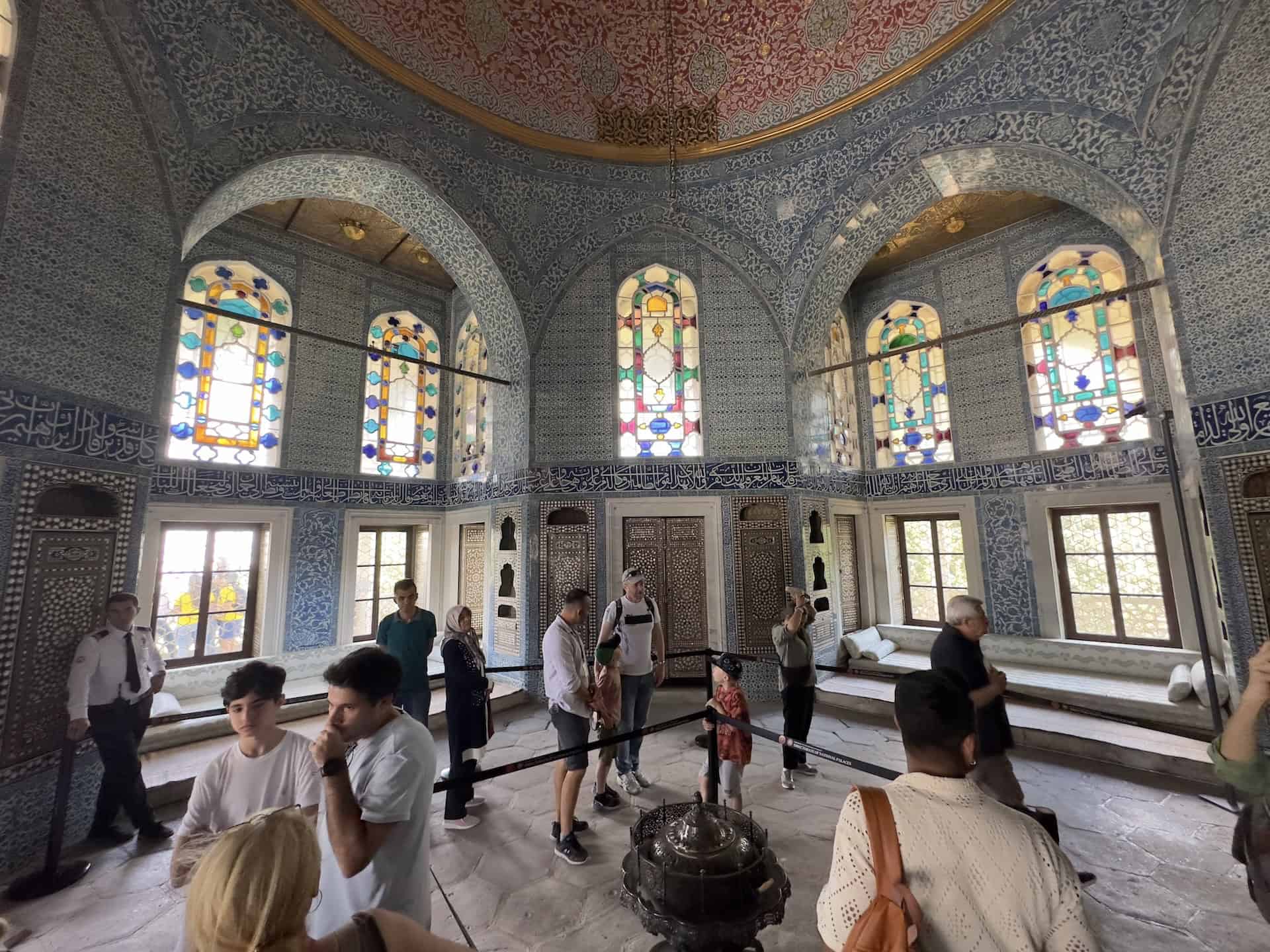
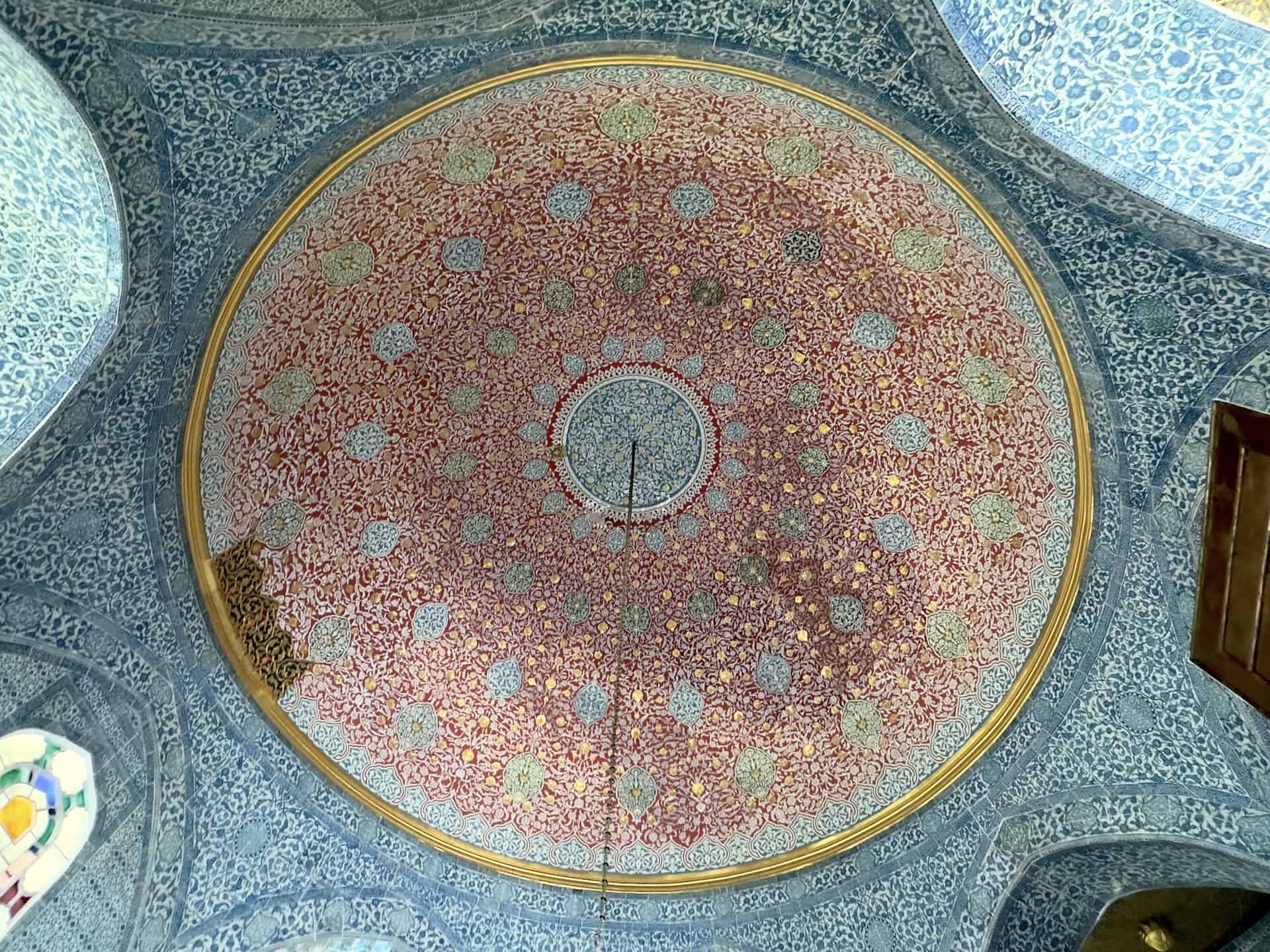

The shelves and cupboards contain 16th century green, yellow, and blue tiles, while the cabinets are inlaid with mother-of-pearl and tortoise shell. There’s also a fireplace with a gilded hood.
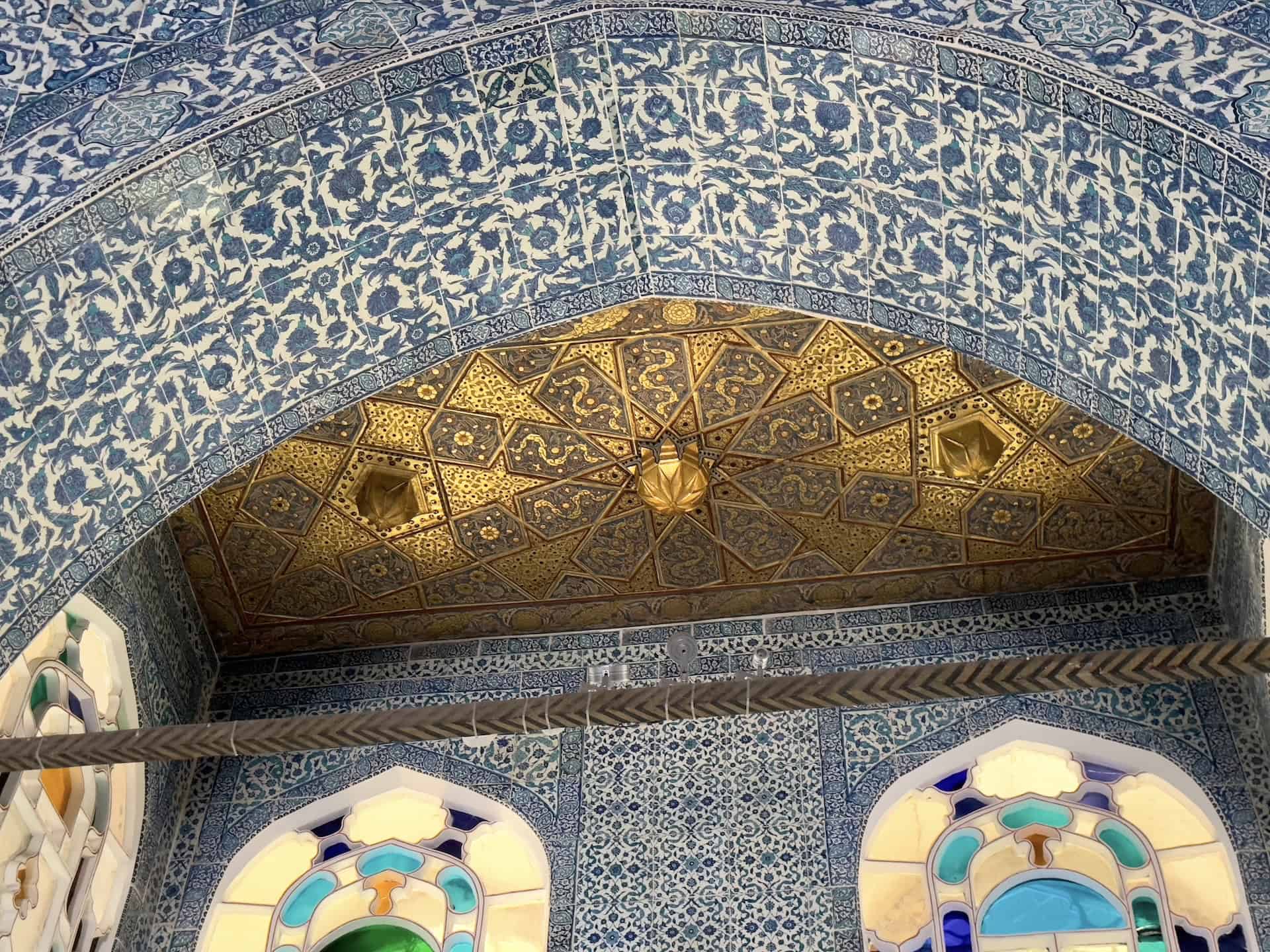
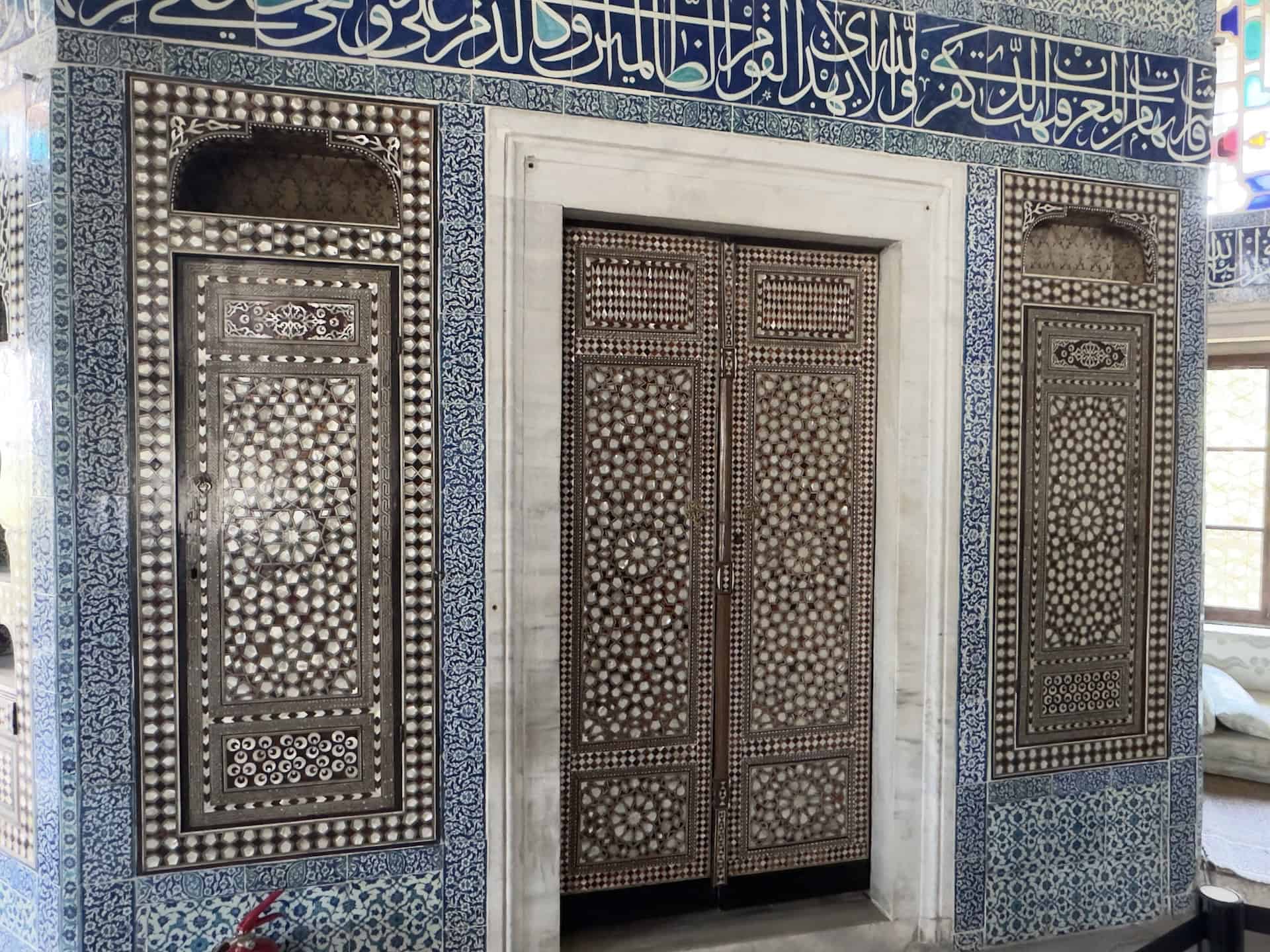
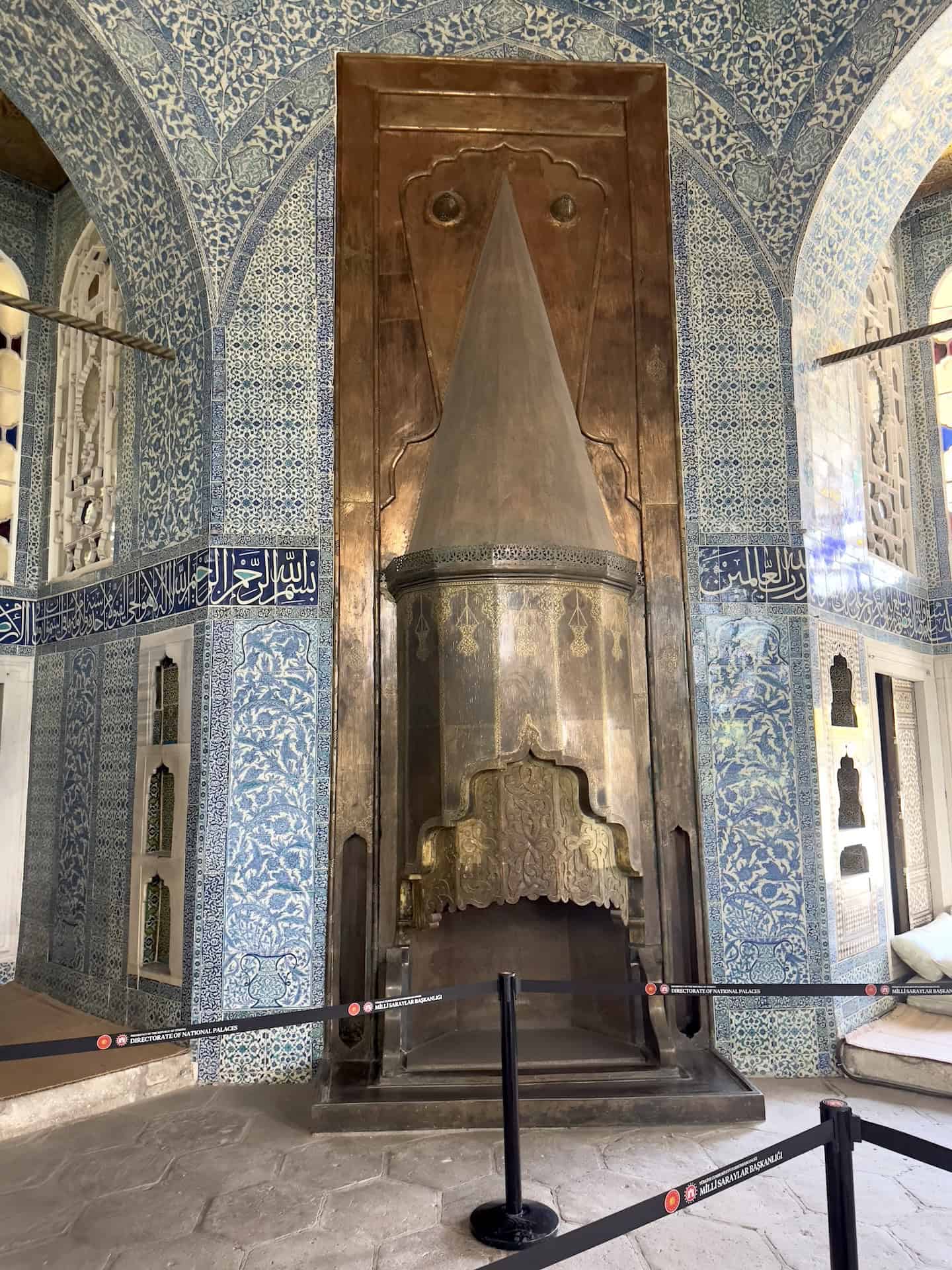
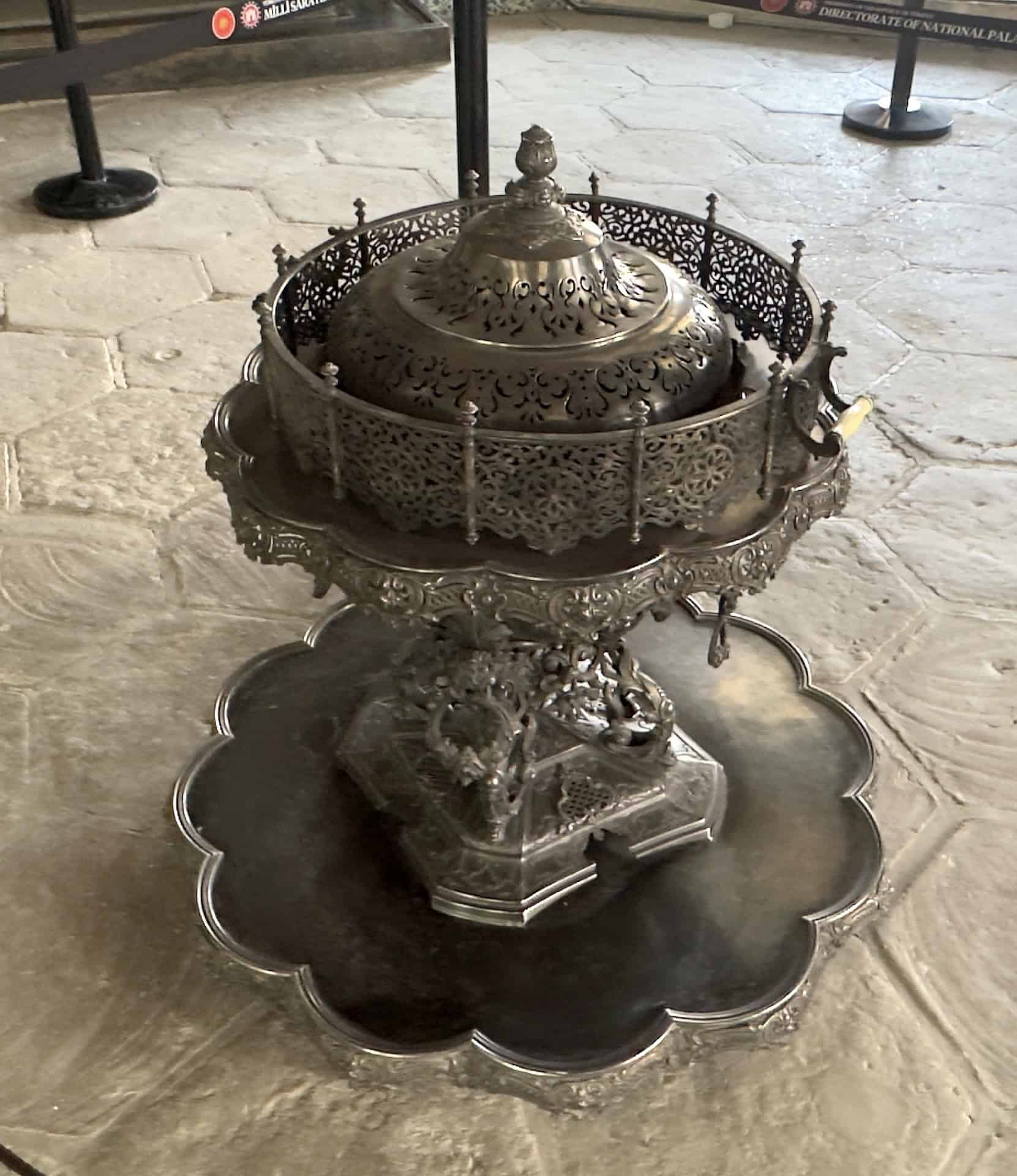
On display in the Baghdad Pavilion during some of my visits to Topkapi Palace was the throne of Mahmud II. It was made in the early 19th century by Charles-Joseph Lemarchand (1759-1826), the furniture maker for the King of France.
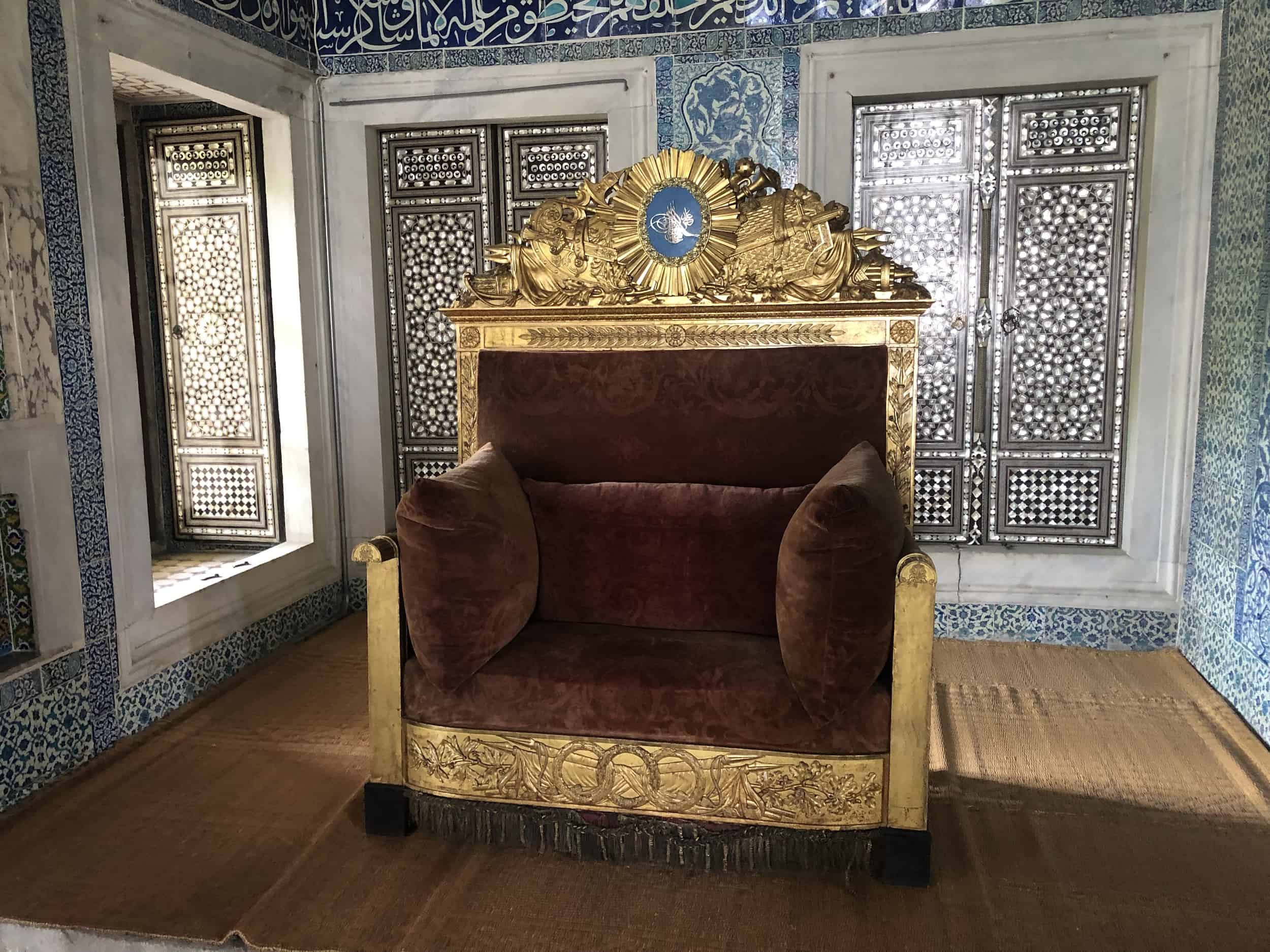
Terrace Pavilion
The Terrace Pavilion (Sofa Köşku), or Sofa Pavilion, was originally built sometime between 1676 and 1683 by Sultan Mehmed IV. It straddles the upper and lower tiers of the 4th Courtyard.
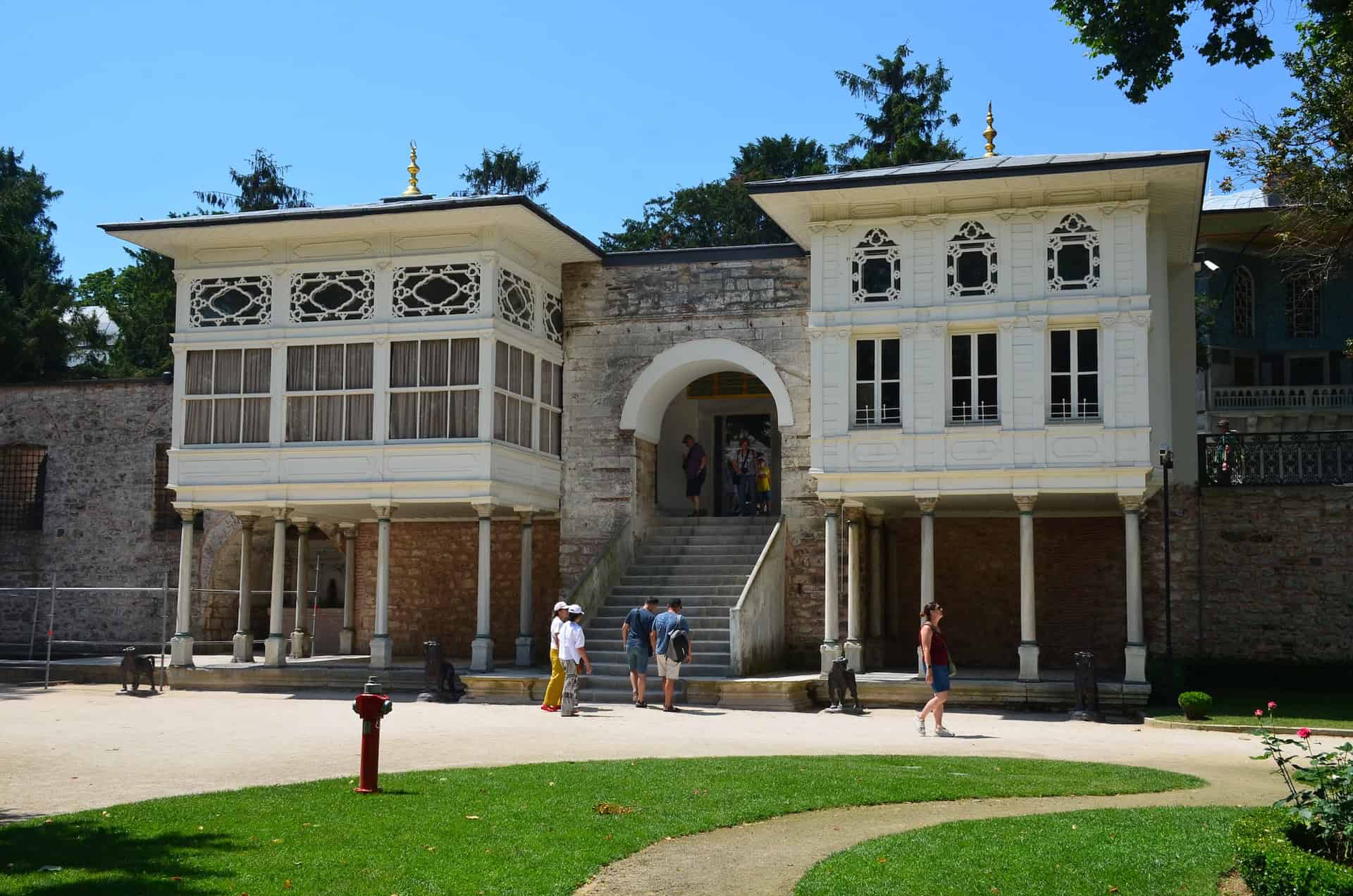
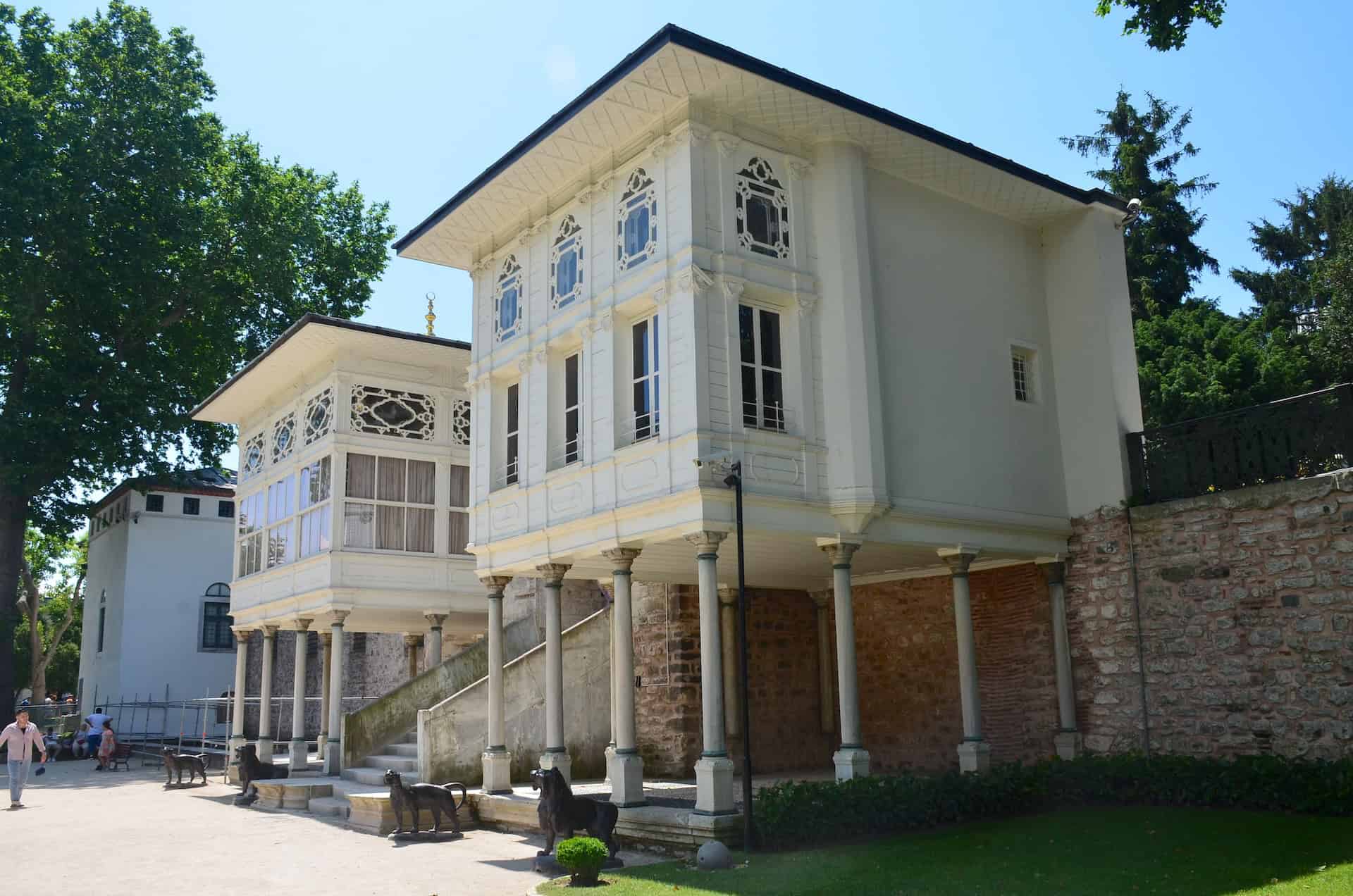
Half of both sections sit on the upper terrace while the other half rests on columns. There’s a stairway between them connecting the two tiers.
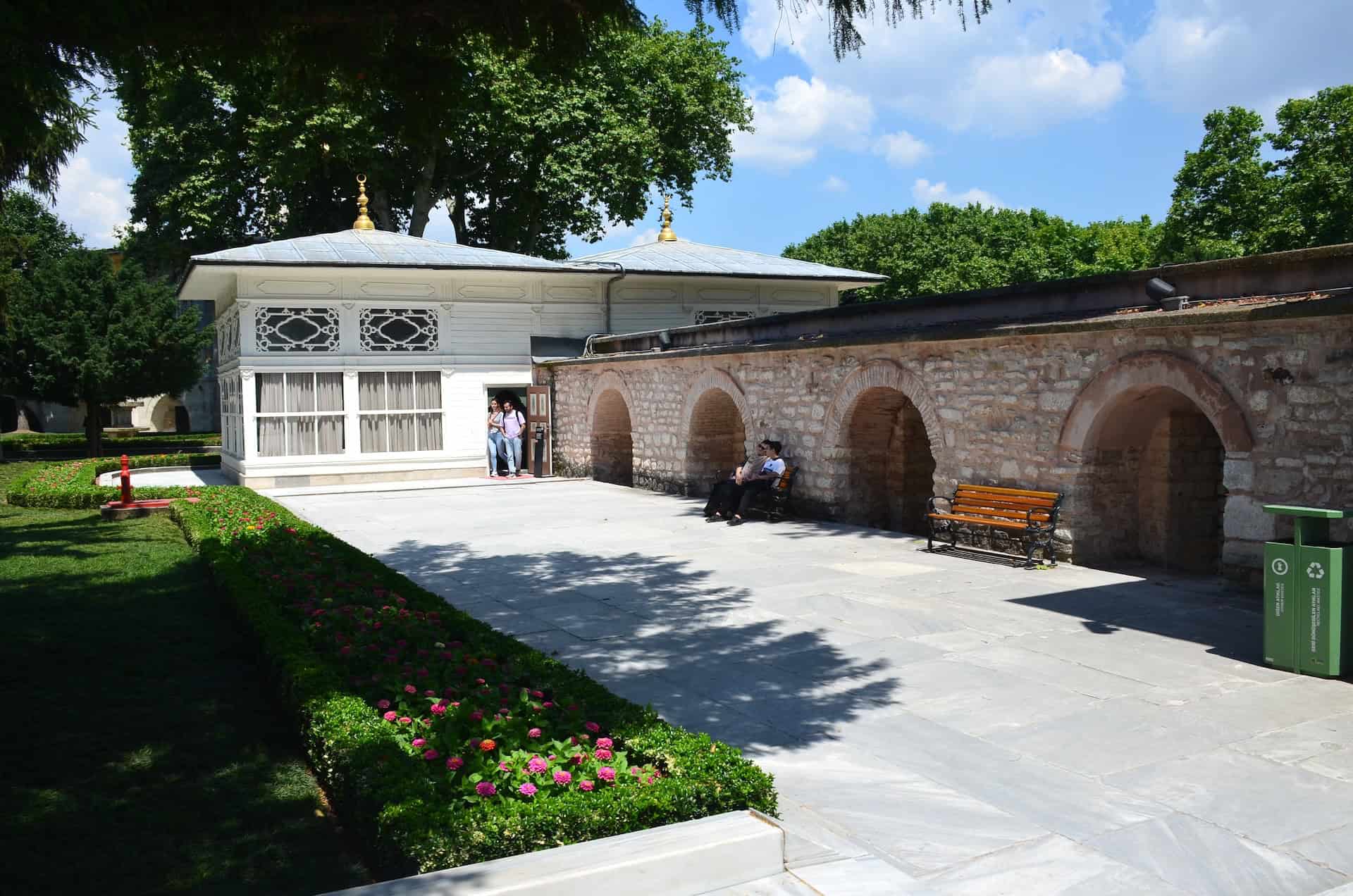
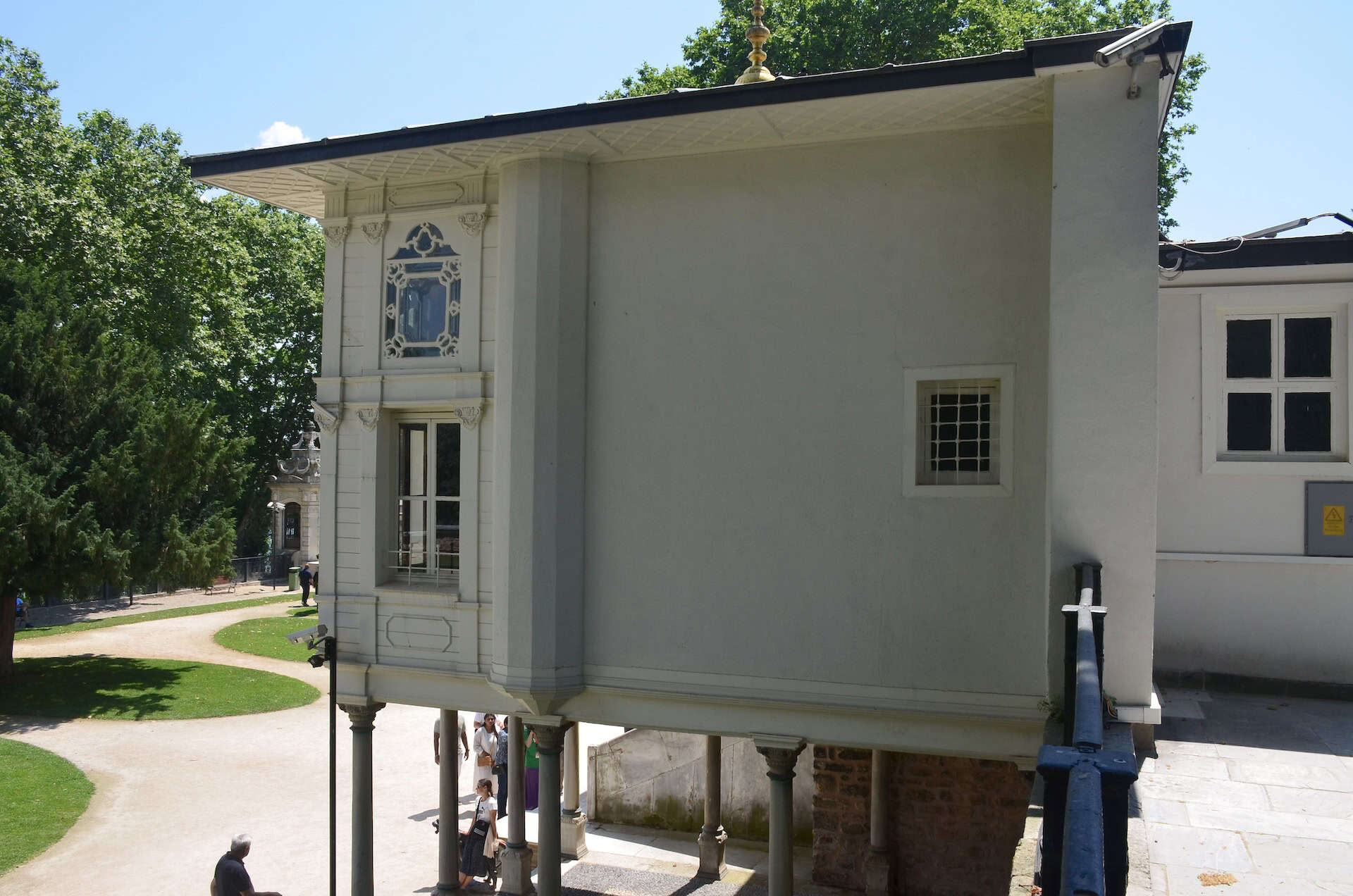
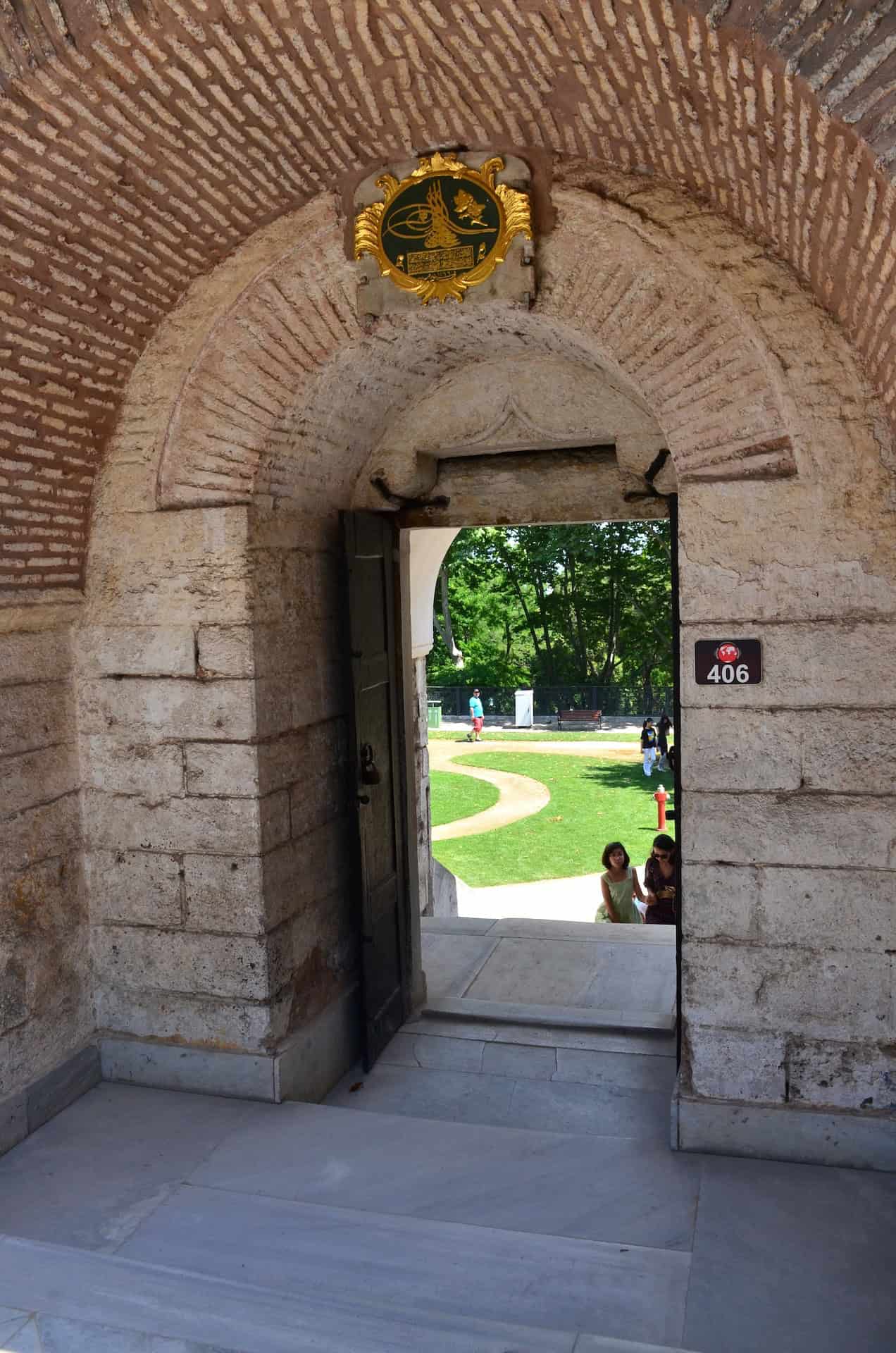
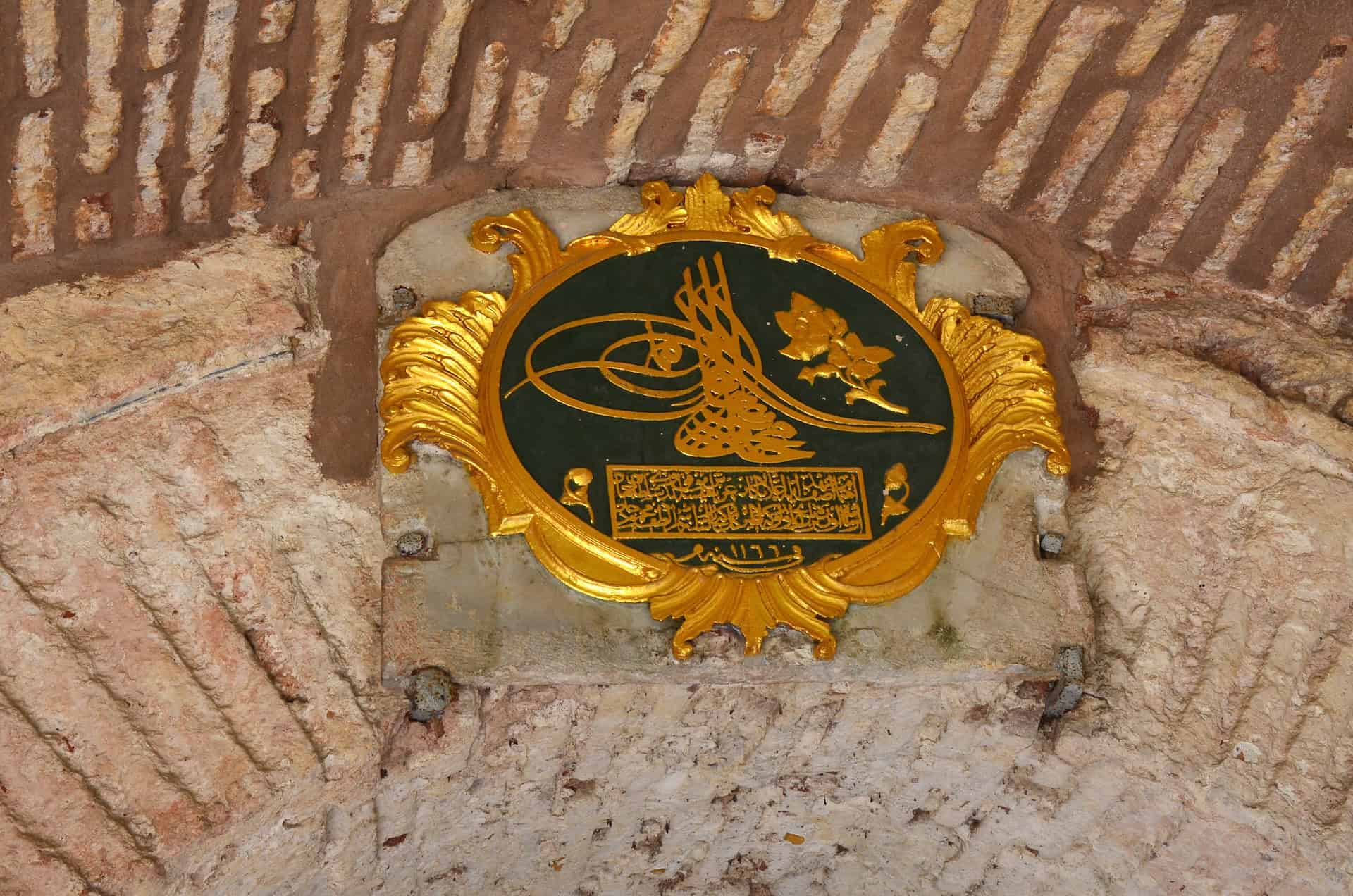
The building consists of two rooms, the Divan Lounge (Divanhane), which was used as a prayer room, and the Sherbet Room (Şerbet Odası). Also known as the Top of the Stairs Pavilion (Merdiven Başı Kasrı), the Terrace Pavilion was used to hold meetings as well as watch sporting events in the field below. It was also used for a short period to house guests.
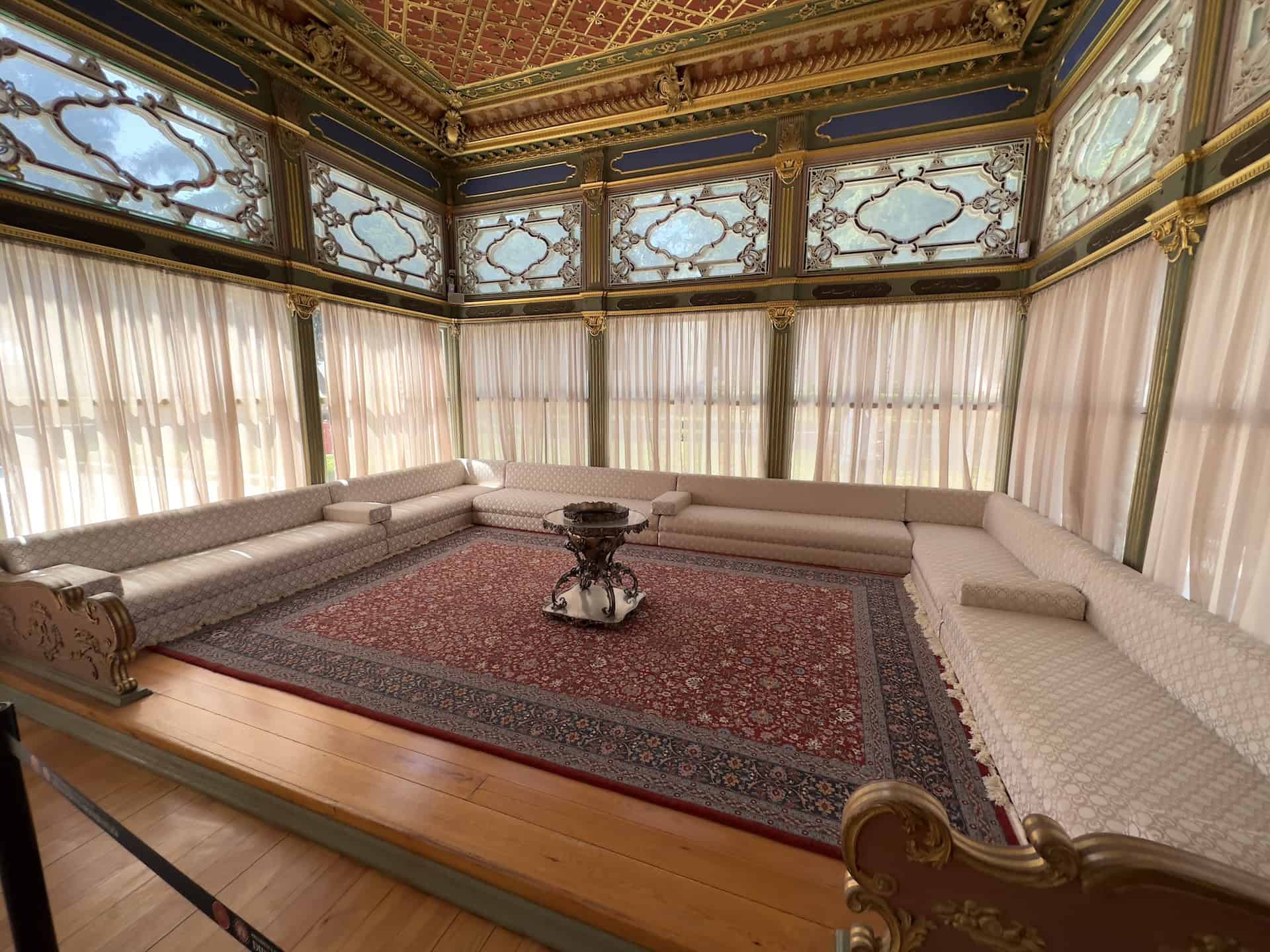
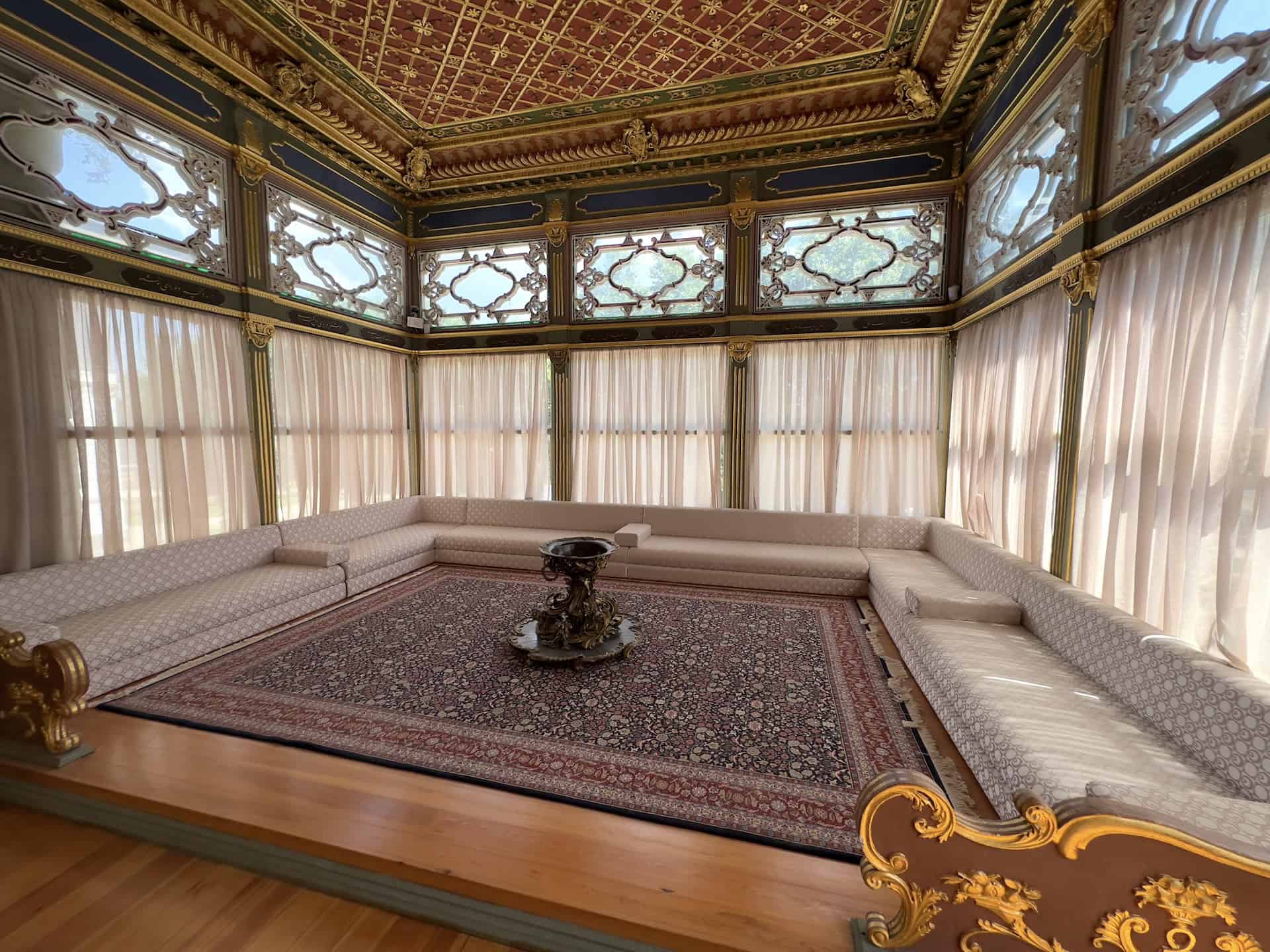
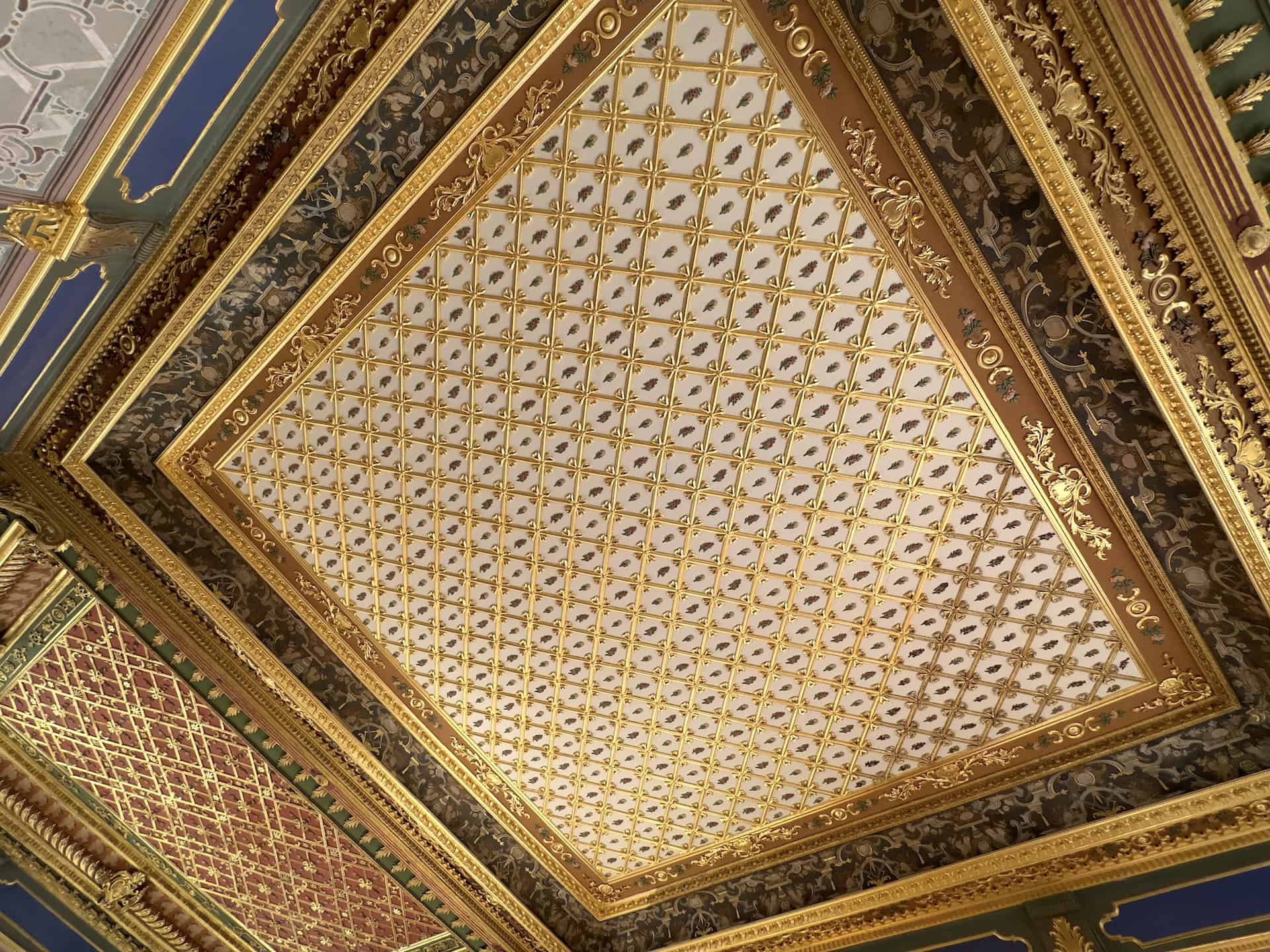
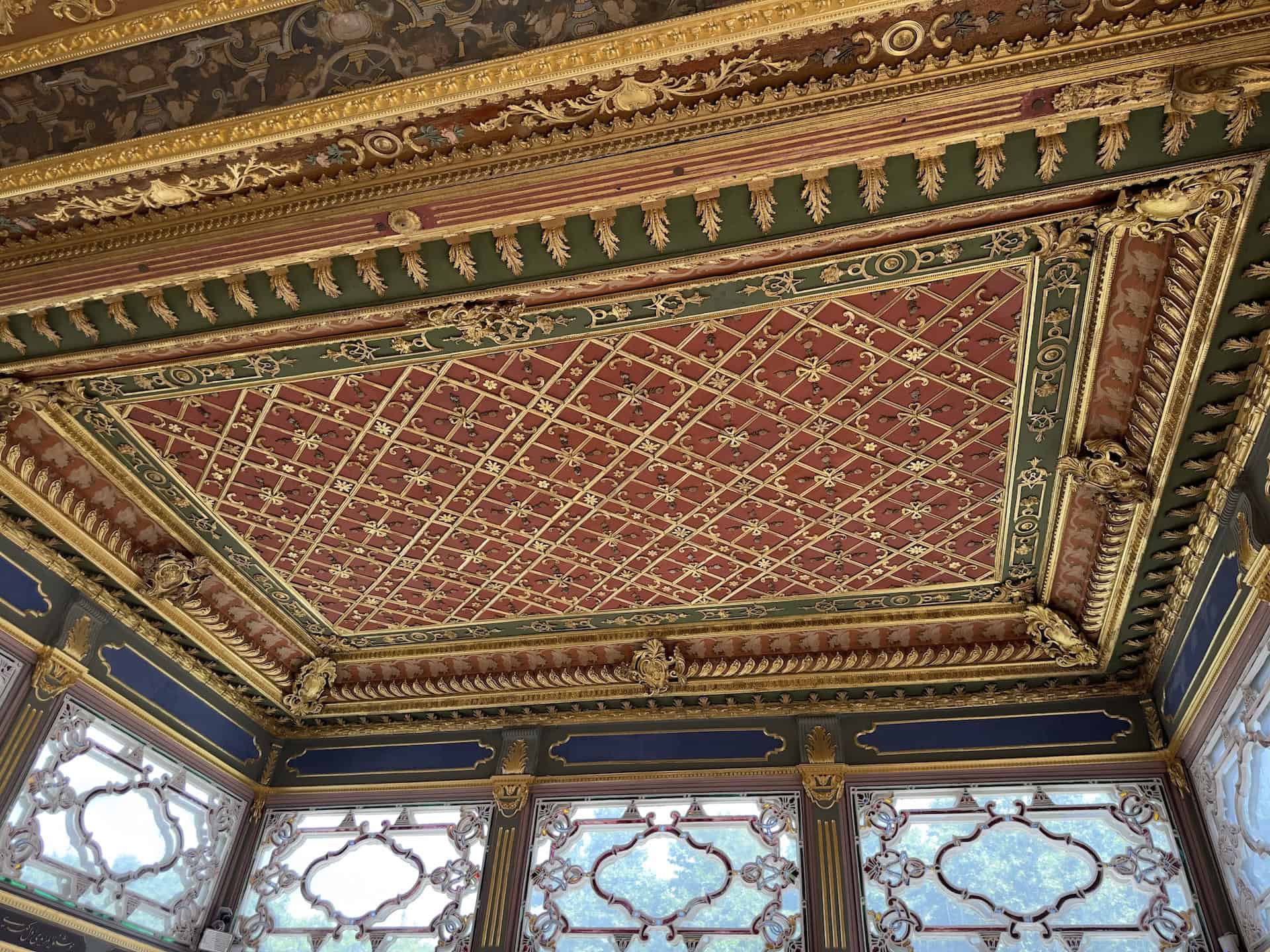
The Terrace Pavilion was restored by Ahmed III in 1704 and rebuilt in the Rococo style by Mahmud I in 1752. It’s the only wooden building in the innermost part of the palace.
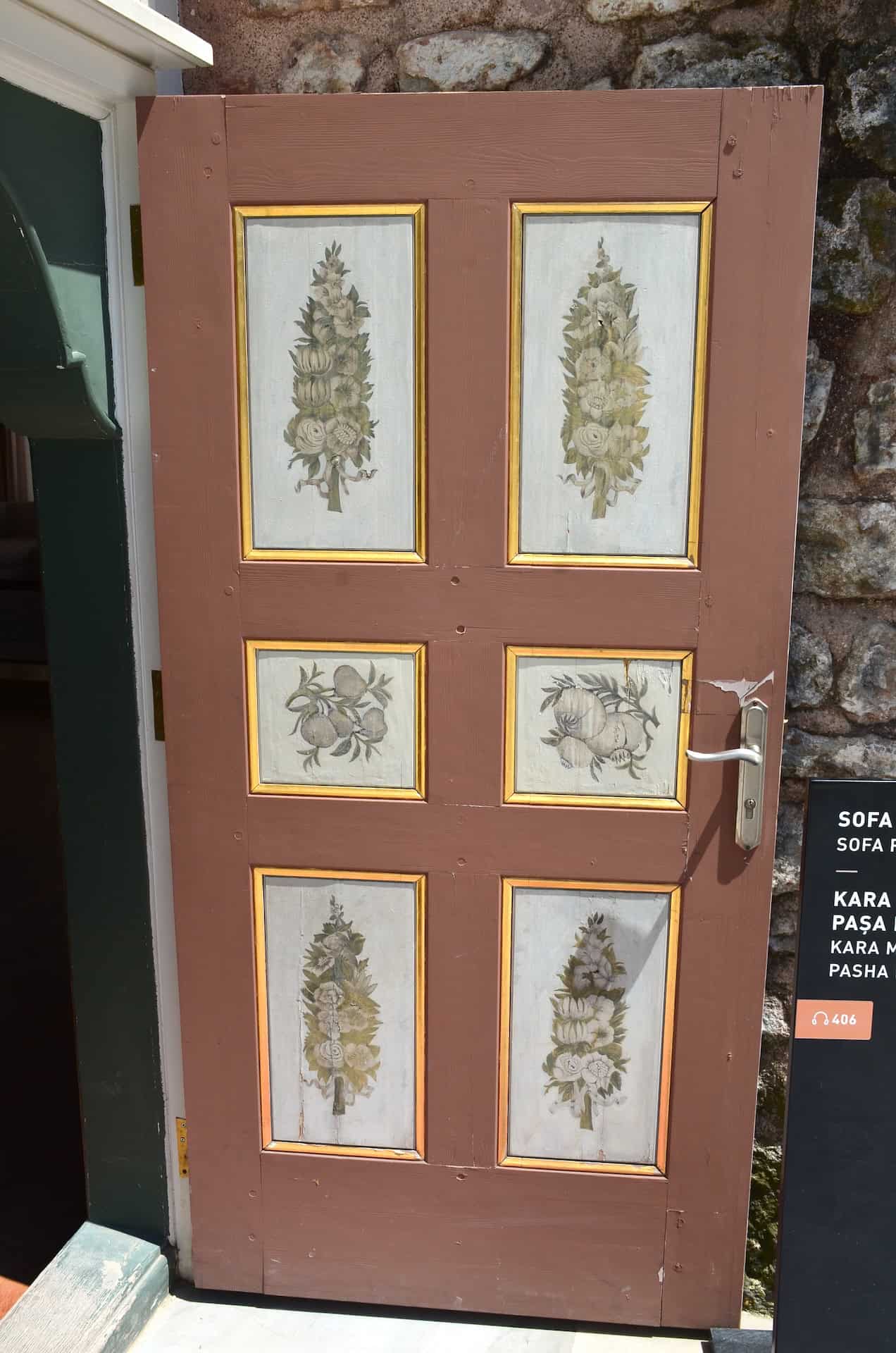
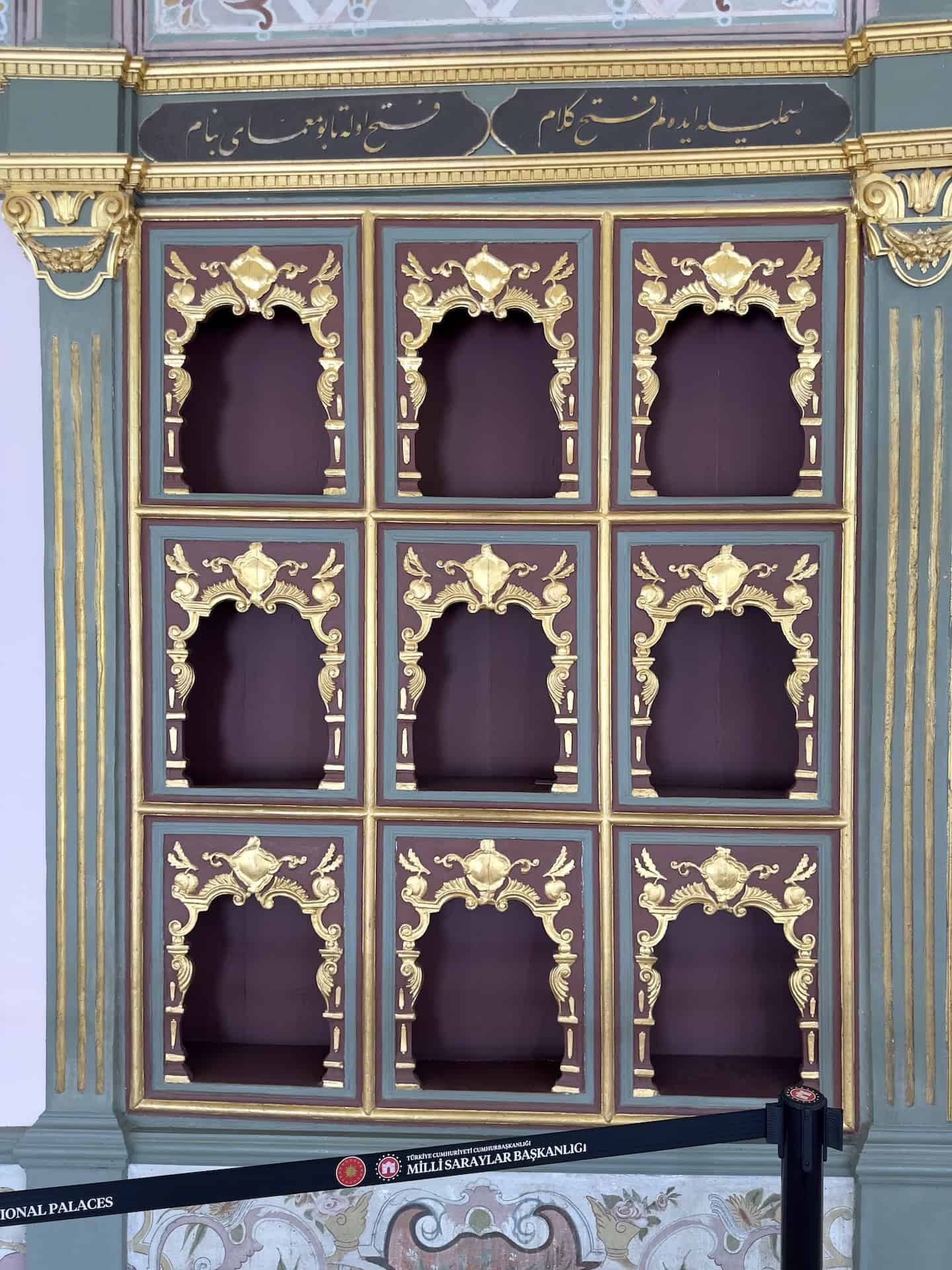
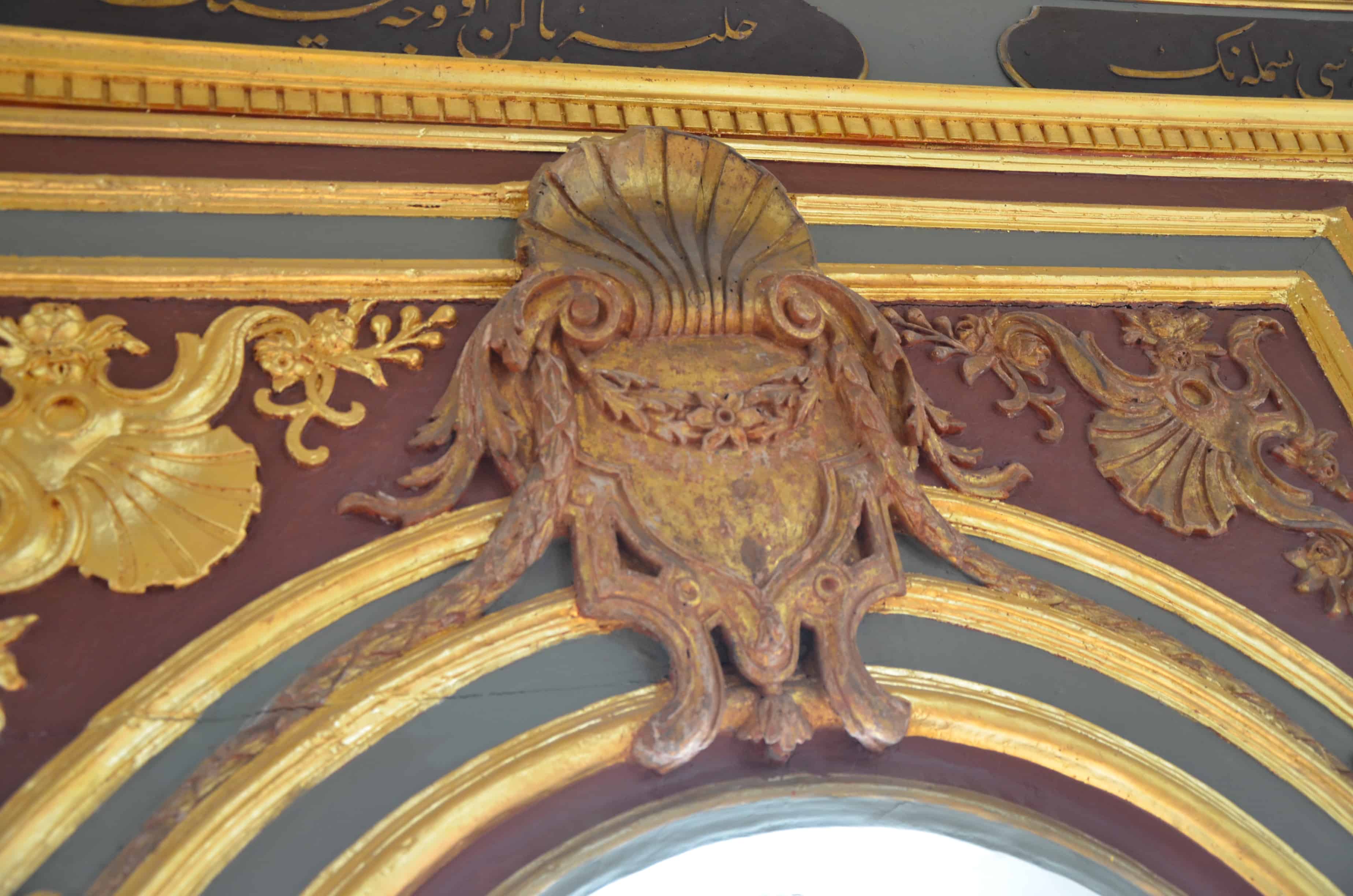
Stone Throne
The small field below the Terrace Pavilion held the aforementioned sporting events at Topkapi Palace. At the southern end of the field is the Stone Throne (Taş Taht), which was made for Sultan Murad IV to watch these events. The inscription on the throne states that in 1636, Murad IV threw an oak cudgel 120 meters.
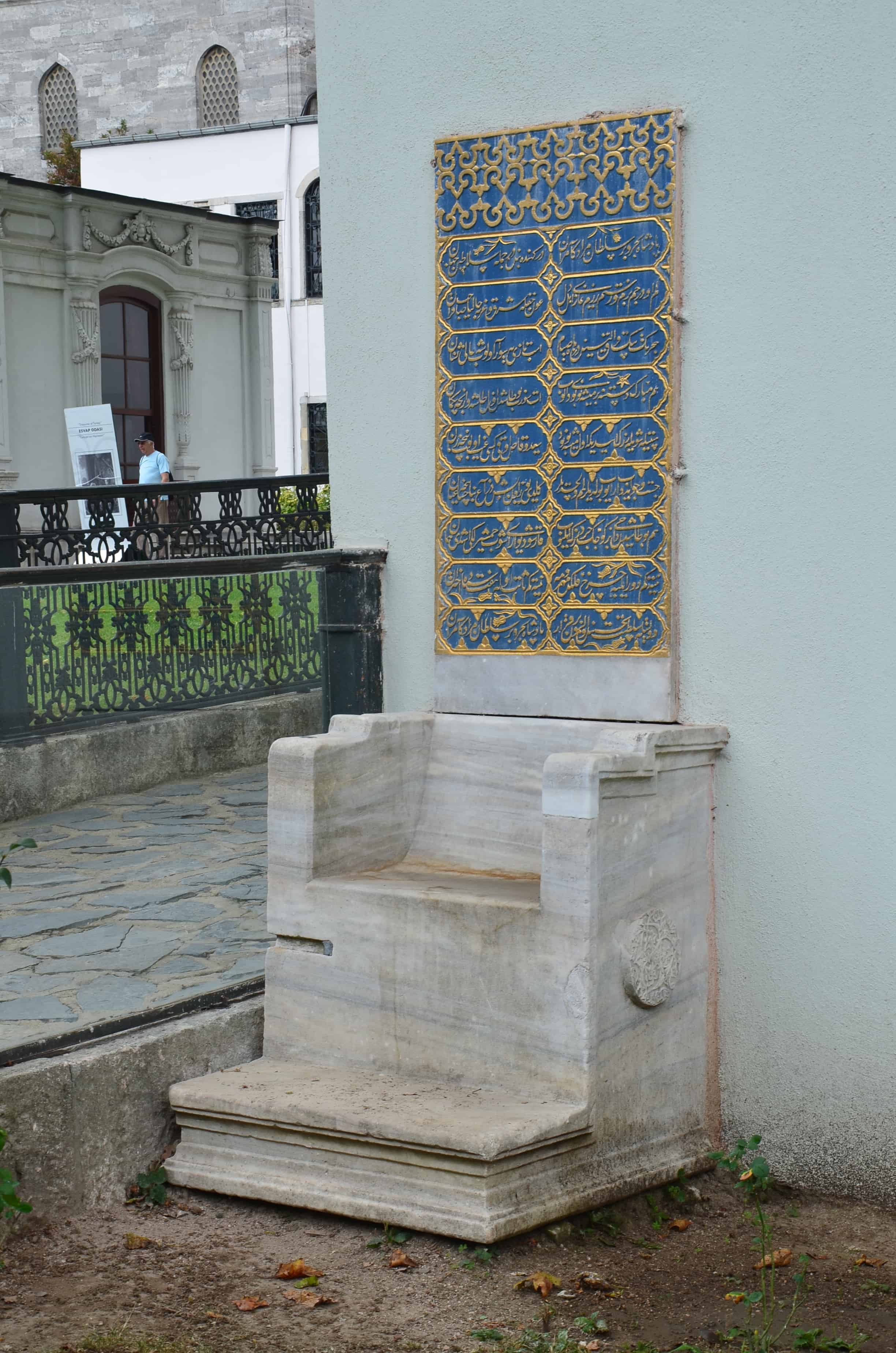
Chamber of the Chief Physician
The Stone Throne rests against the Chamber of the Chief Physician (Hekimbaşı Odası), which was also known as the Tower of the Head Tutor (Baş Lala Kulesi). This building was originally built as a watchtower under Sultan Mehmed II in the 15th century. It’s the oldest building in the 4th Courtyard and the walls are two meters thick.

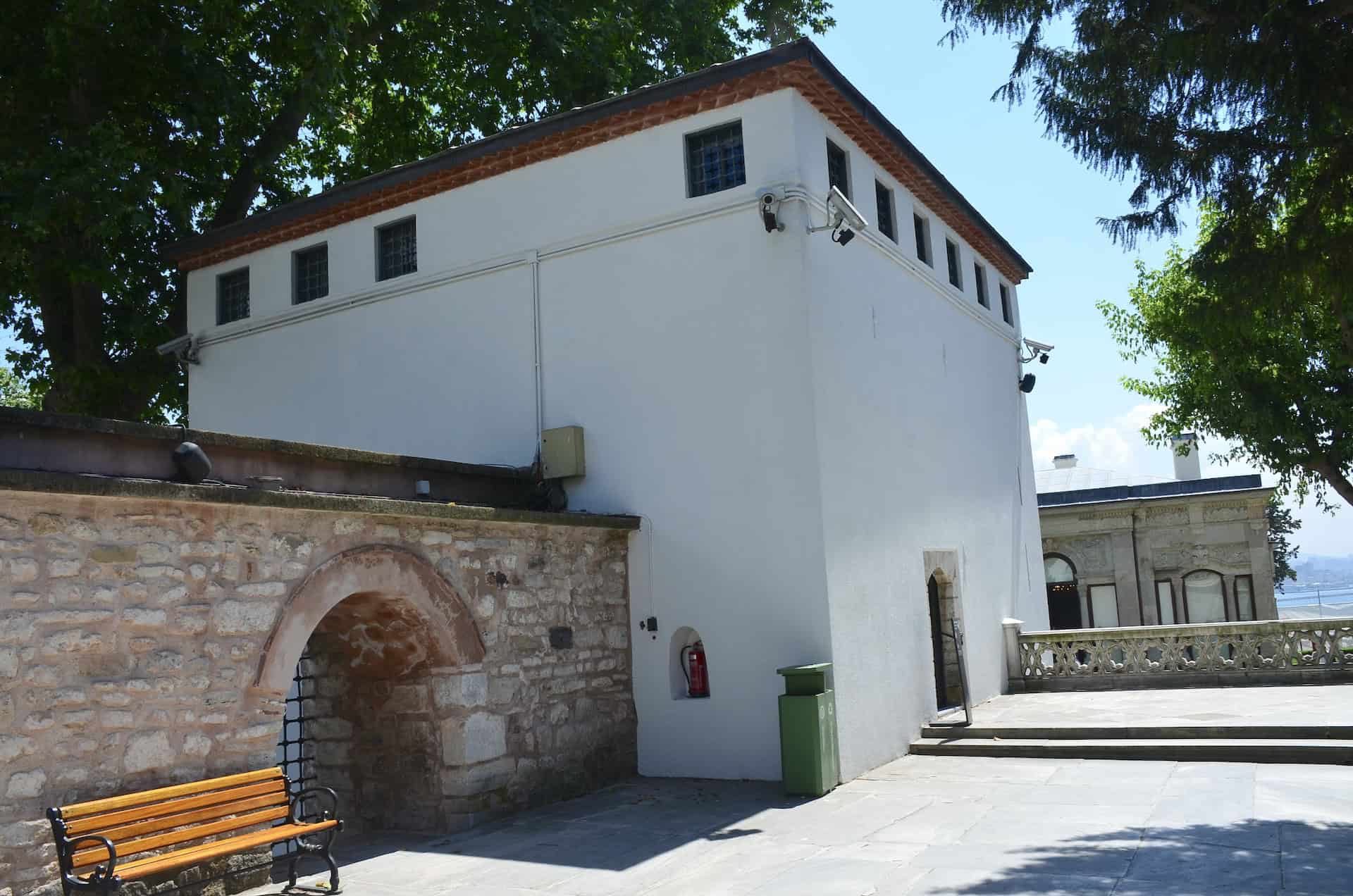
The Sultan and all residents of the Imperial Harem were treated by doctors under the Chief Physician. His private chamber was at the top while the lower level served as the court pharmacy. Under the supervision of the Chief Physician, medicines were prepared, mixed, and sealed in glass bottles or jars before being distributed to patients. The position of Chief Physician was traditionally held by a Jew until the 17th century, and he often accompanied the Sultan on excursions outside the palace. The Head Tutor also lived in the building.
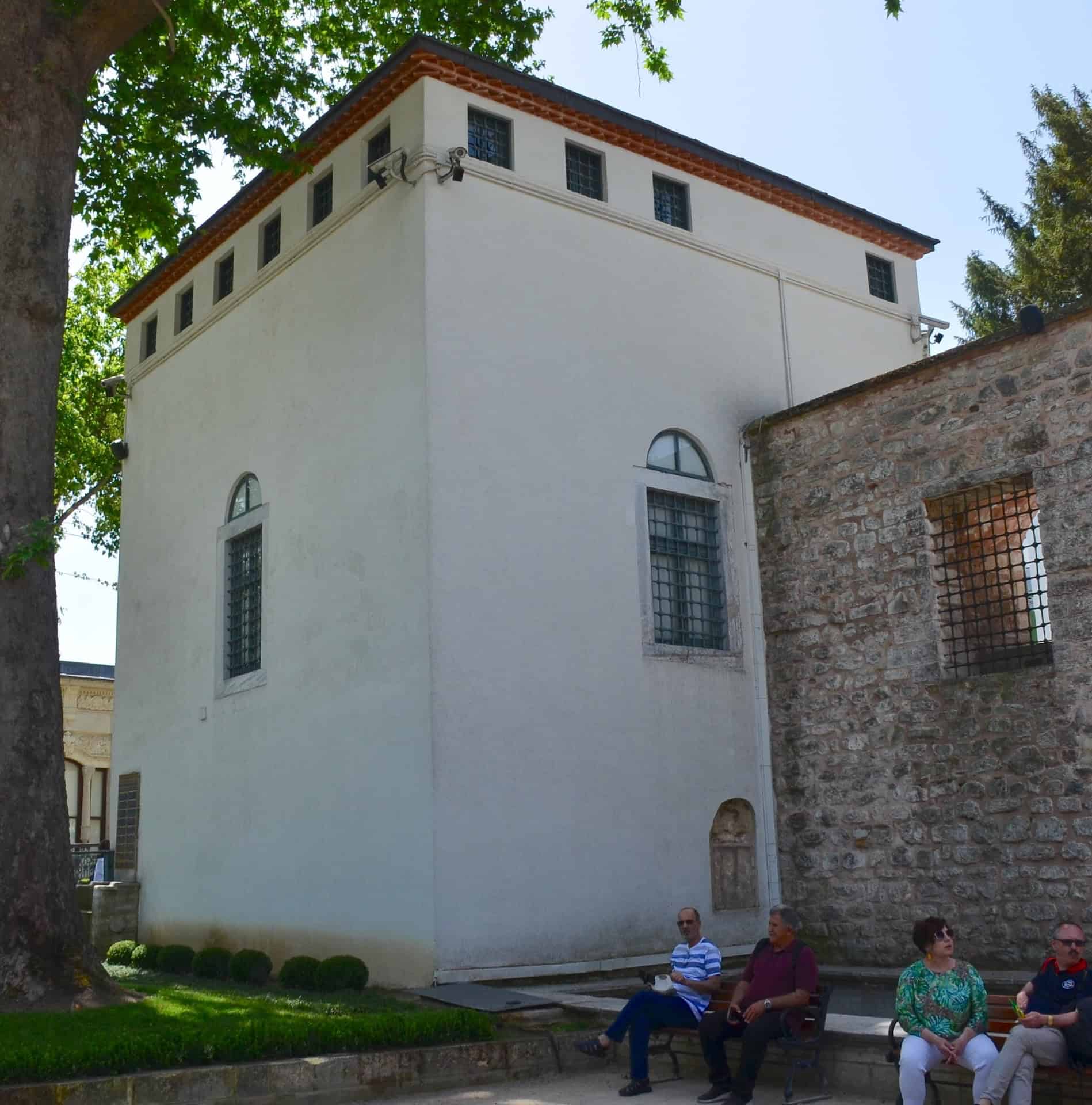
Mecidiye Pavilion
The most recent building on the palace grounds is the Mecidiye Pavilion (Mecidiye Köşkü). It was built between 1858 and 1859 by Sultan Abdülmecid I. The architect was Ottoman Armenian architect Sarkis Balyan (1835-1899), who designed it in the Empire style.
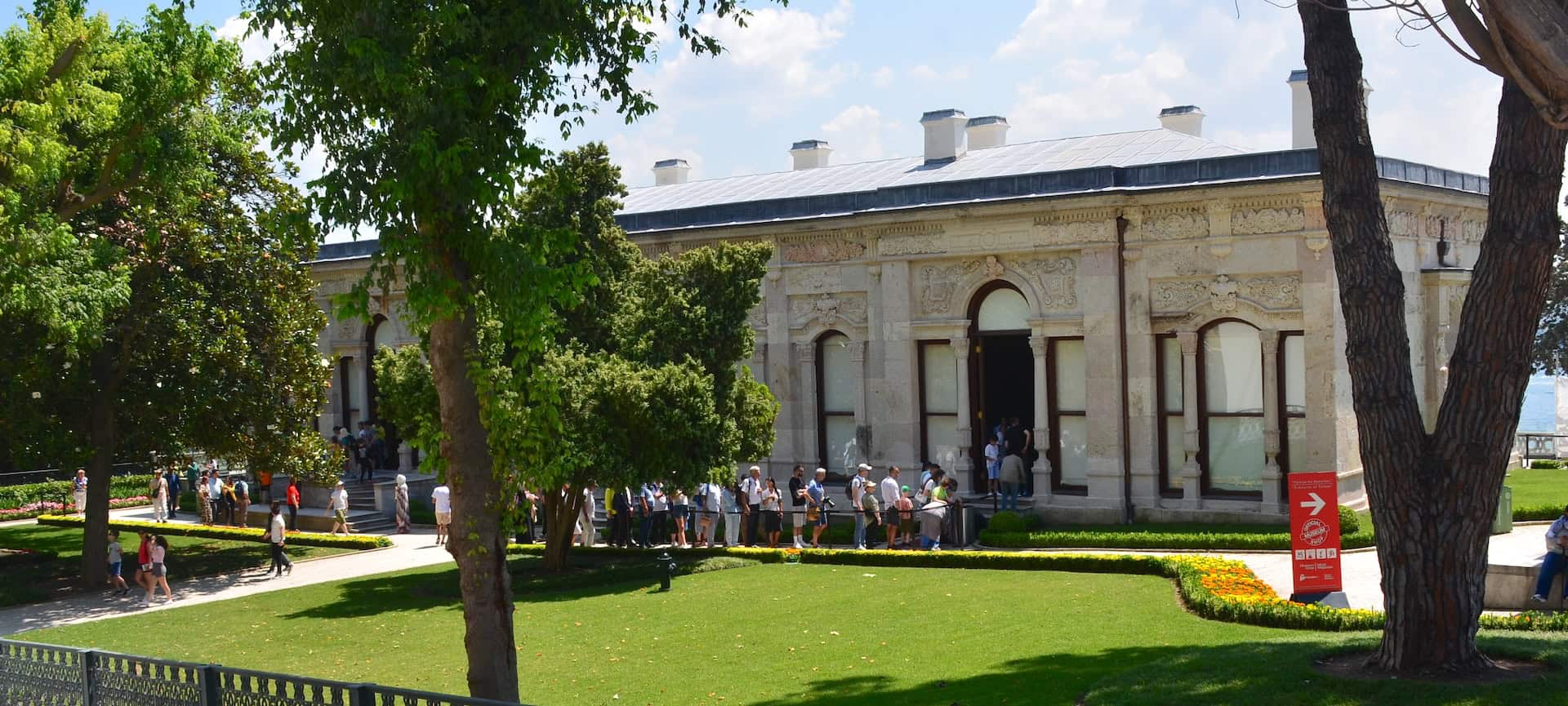
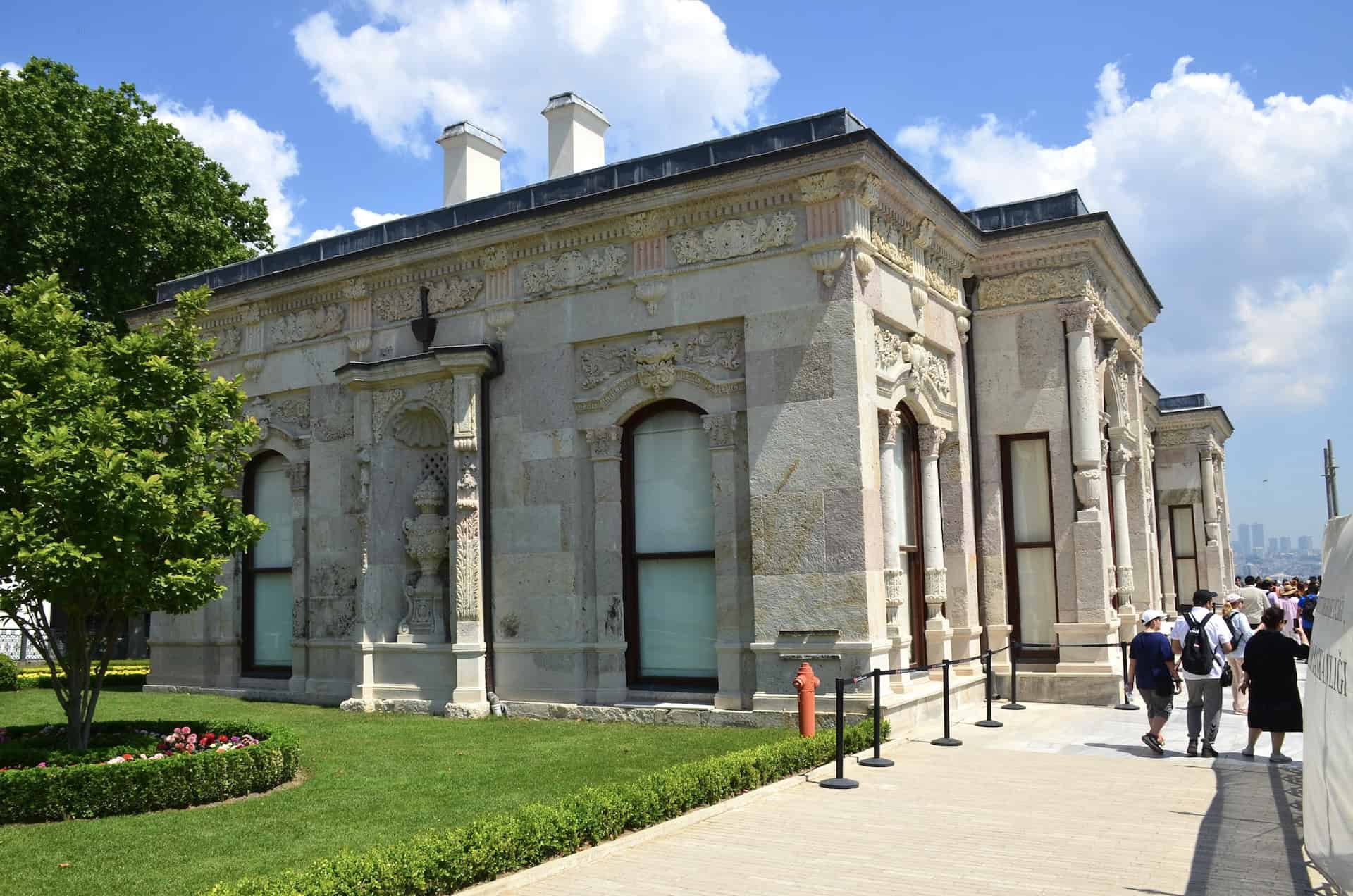
The Mecidiye Pavilion sits atop a Byzantine retaining wall and features a large marble terrace offering spectacular views of the Bosporus. The Tent Kiosk (Çadır Köşkü), which was built during the reign of Mehmed the Conqueror, one occupied the site.
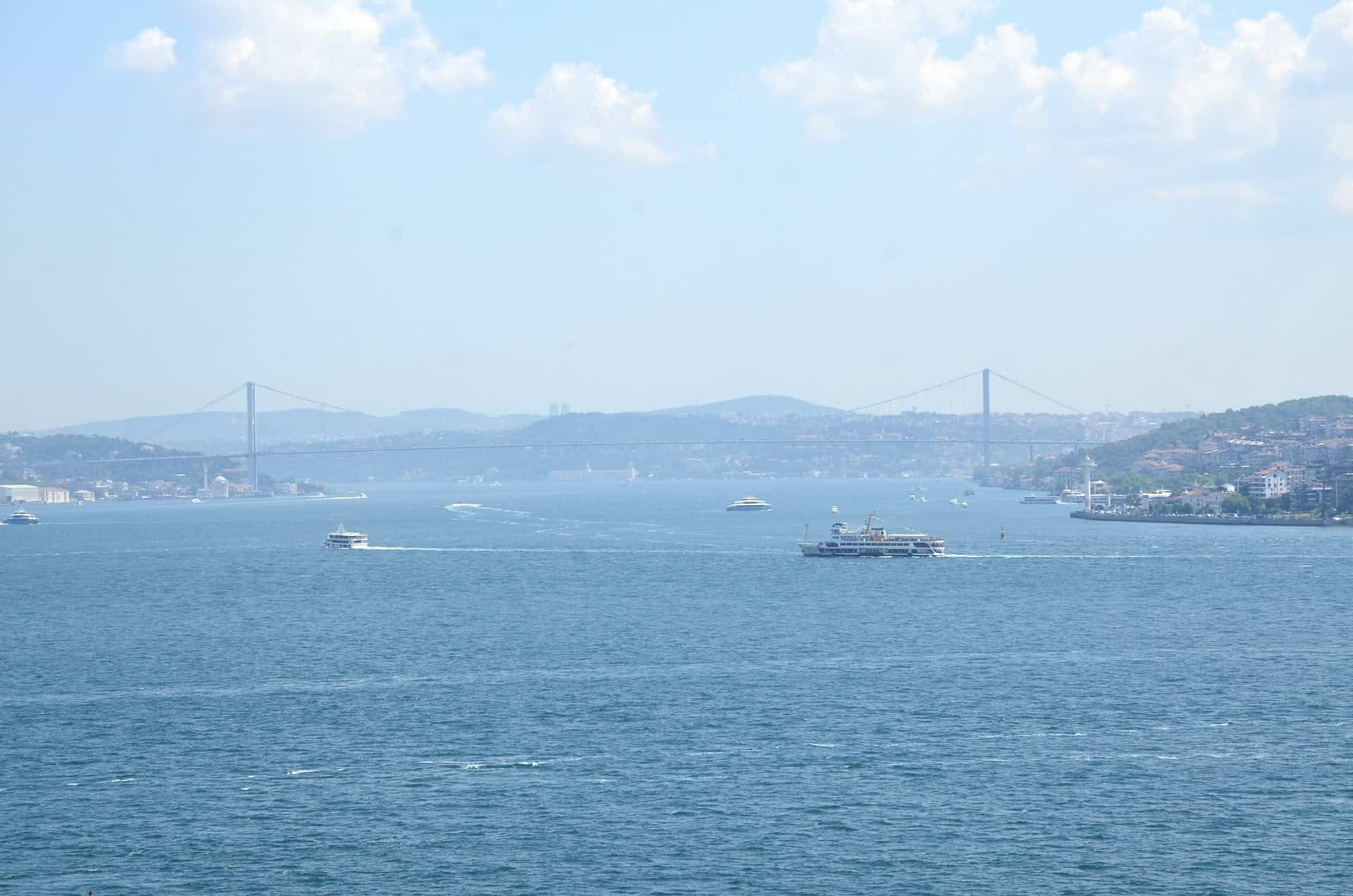
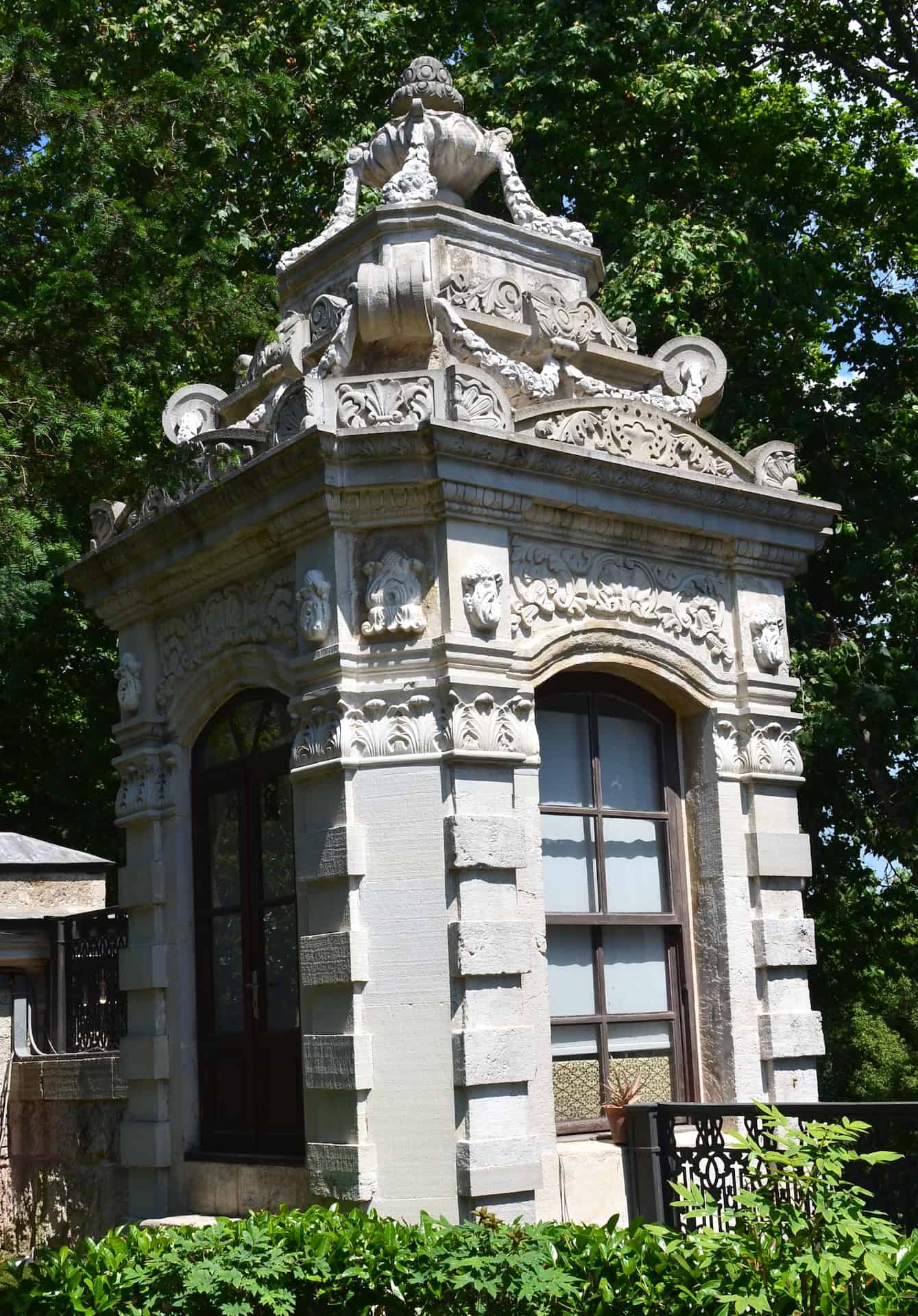
Features of the Mecidiye Pavilion
The Mecidiye Pavilion covers an area of 570 square meters and consists of a Harem and Selamlık. There are six guest rooms, a reception hall, and two reception rooms. The entire pavilion is decorated with the finest French furniture.
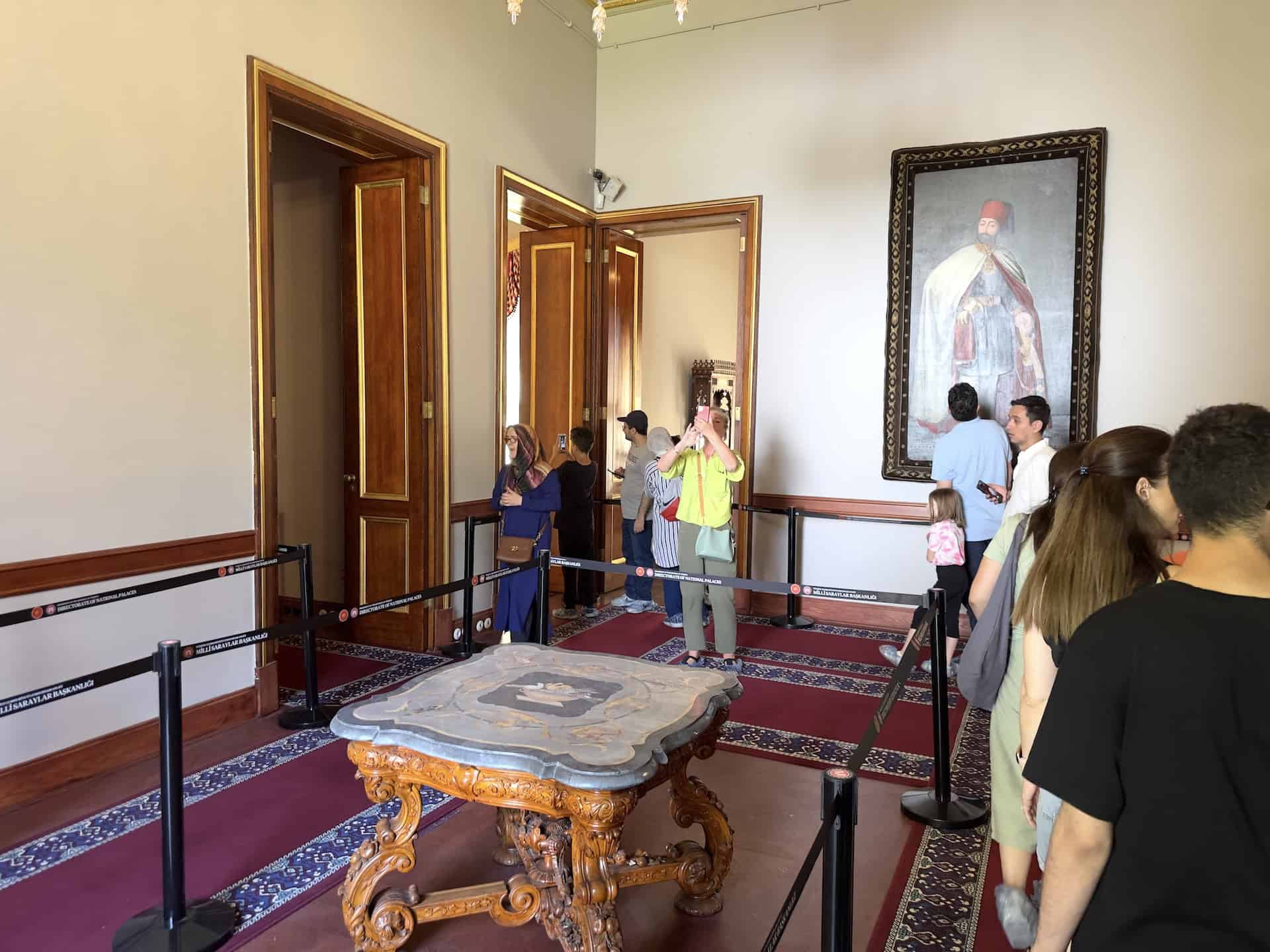
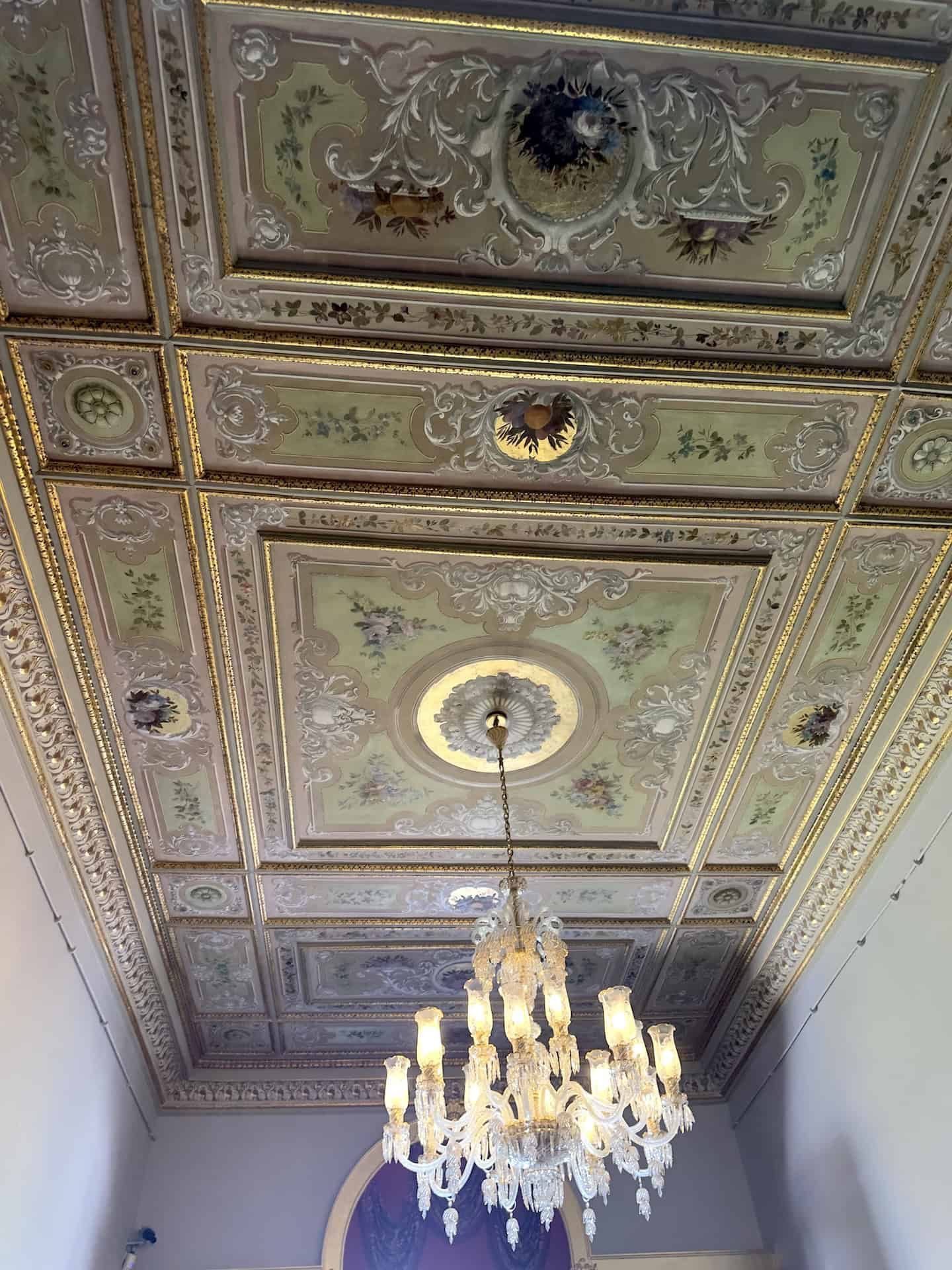
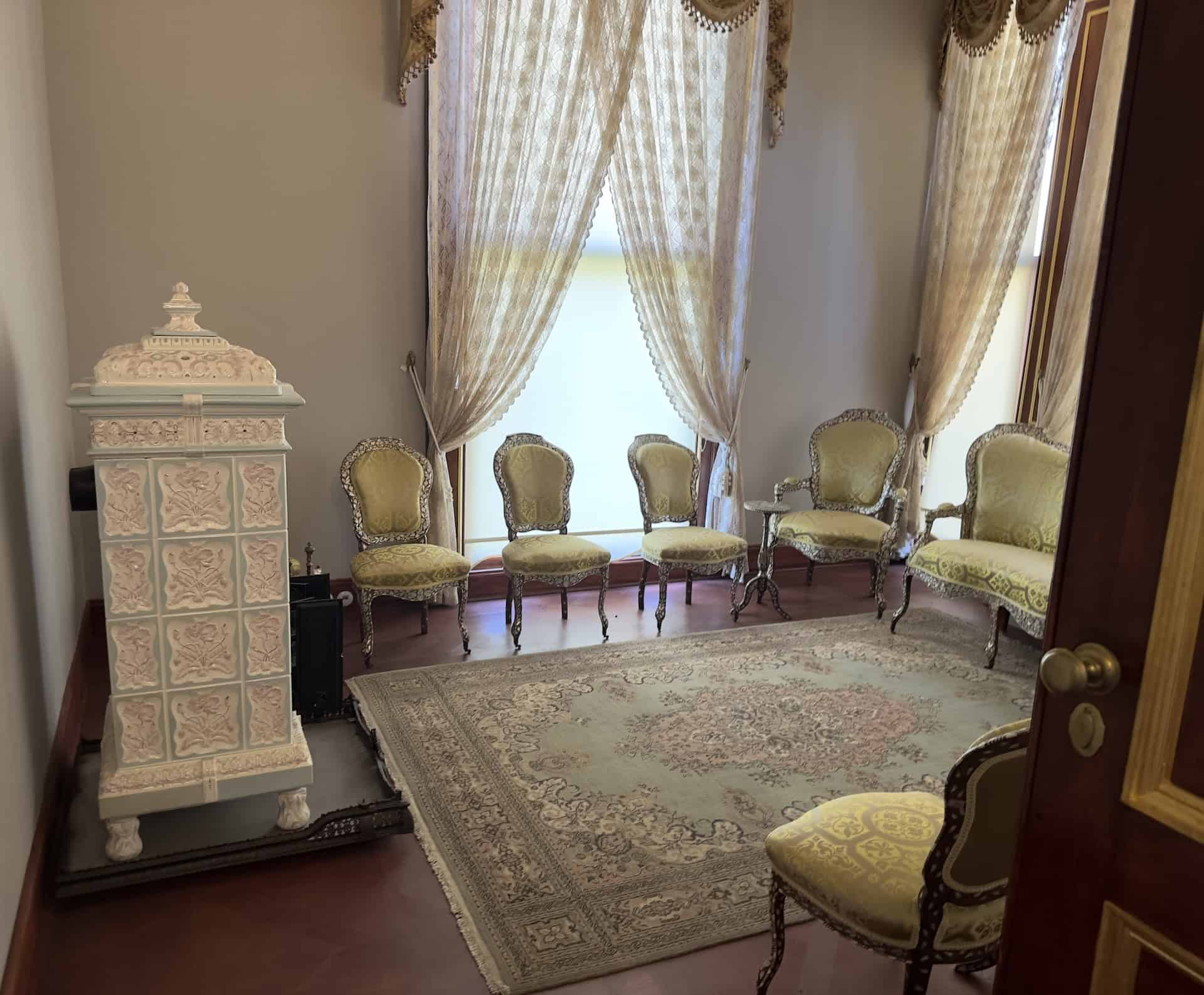
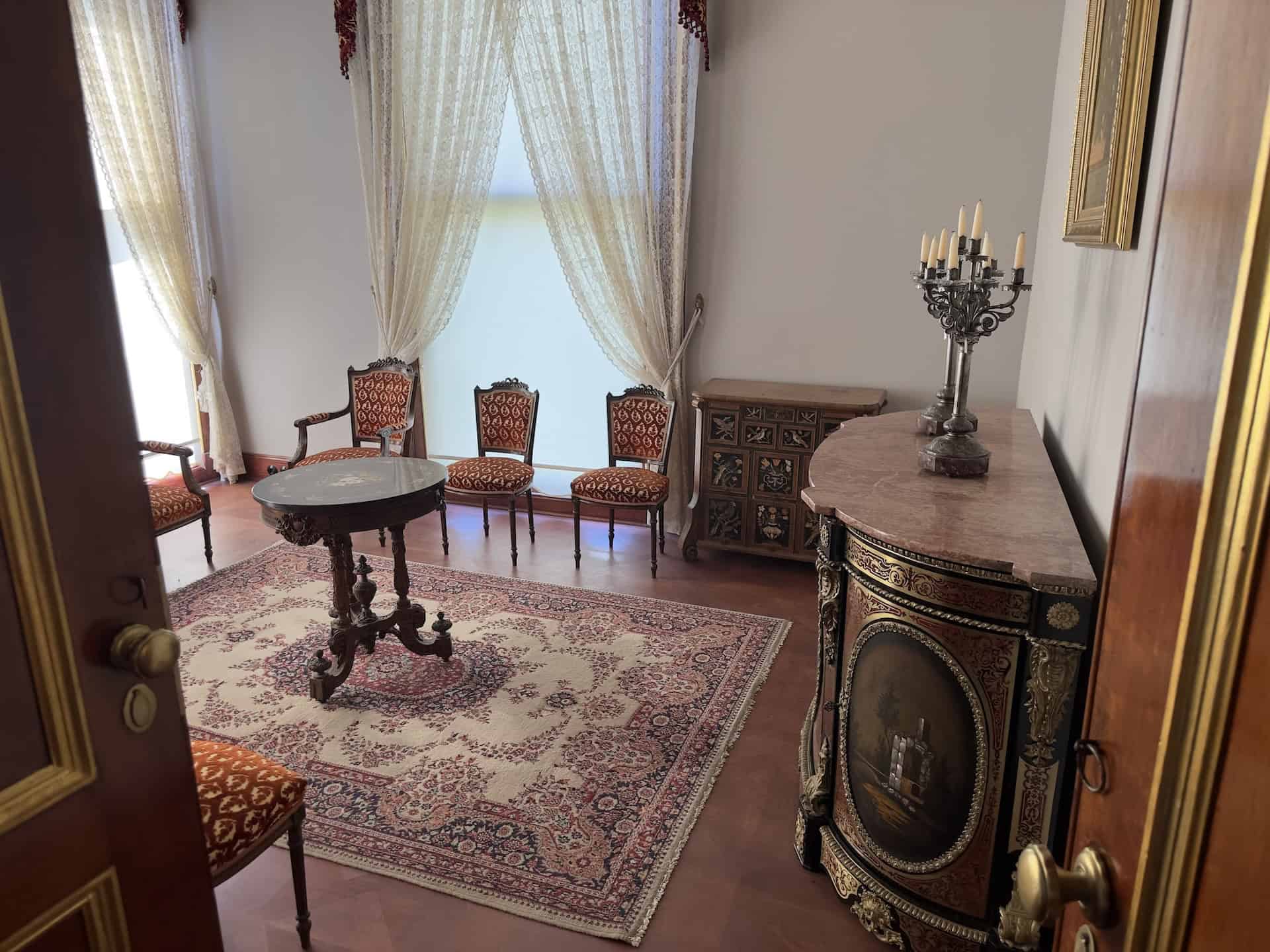
After moving to the newer Dolmabahçe and Yıldız Palaces, the sultans would stay at the Mecidiye Pavilion for religious retreats and official ceremonies held at Topkapi Palace, as well as to meet foreign diplomats.
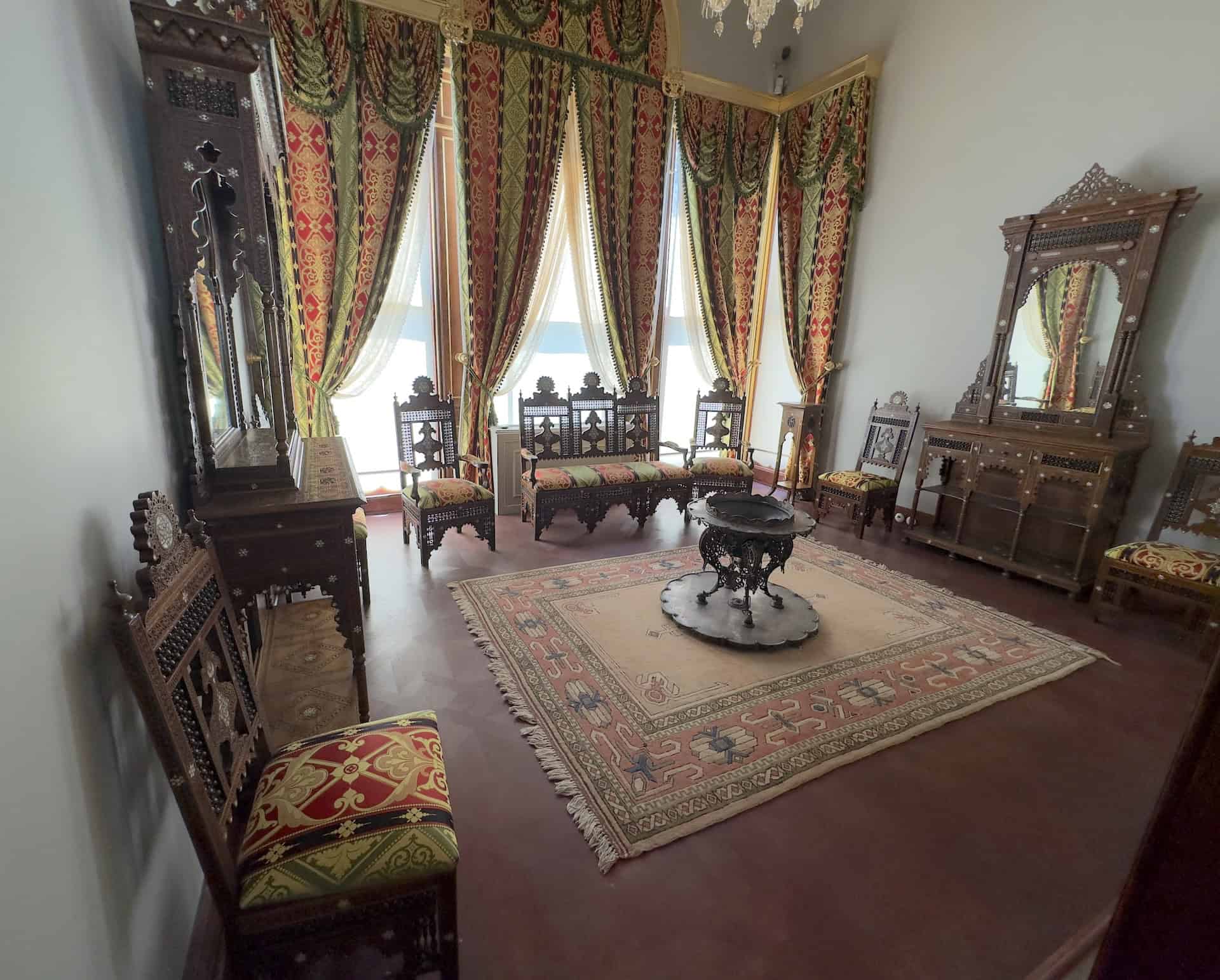
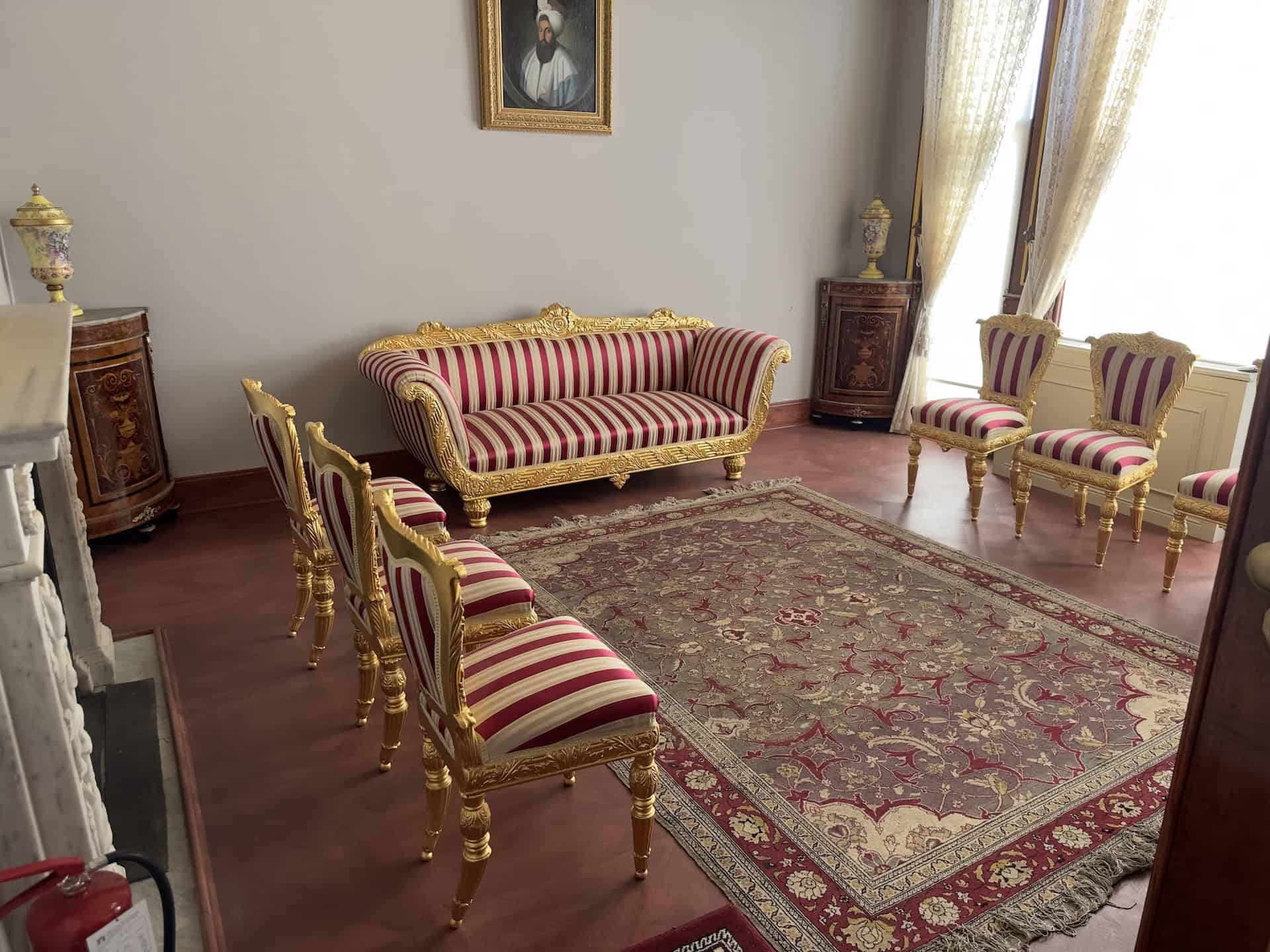
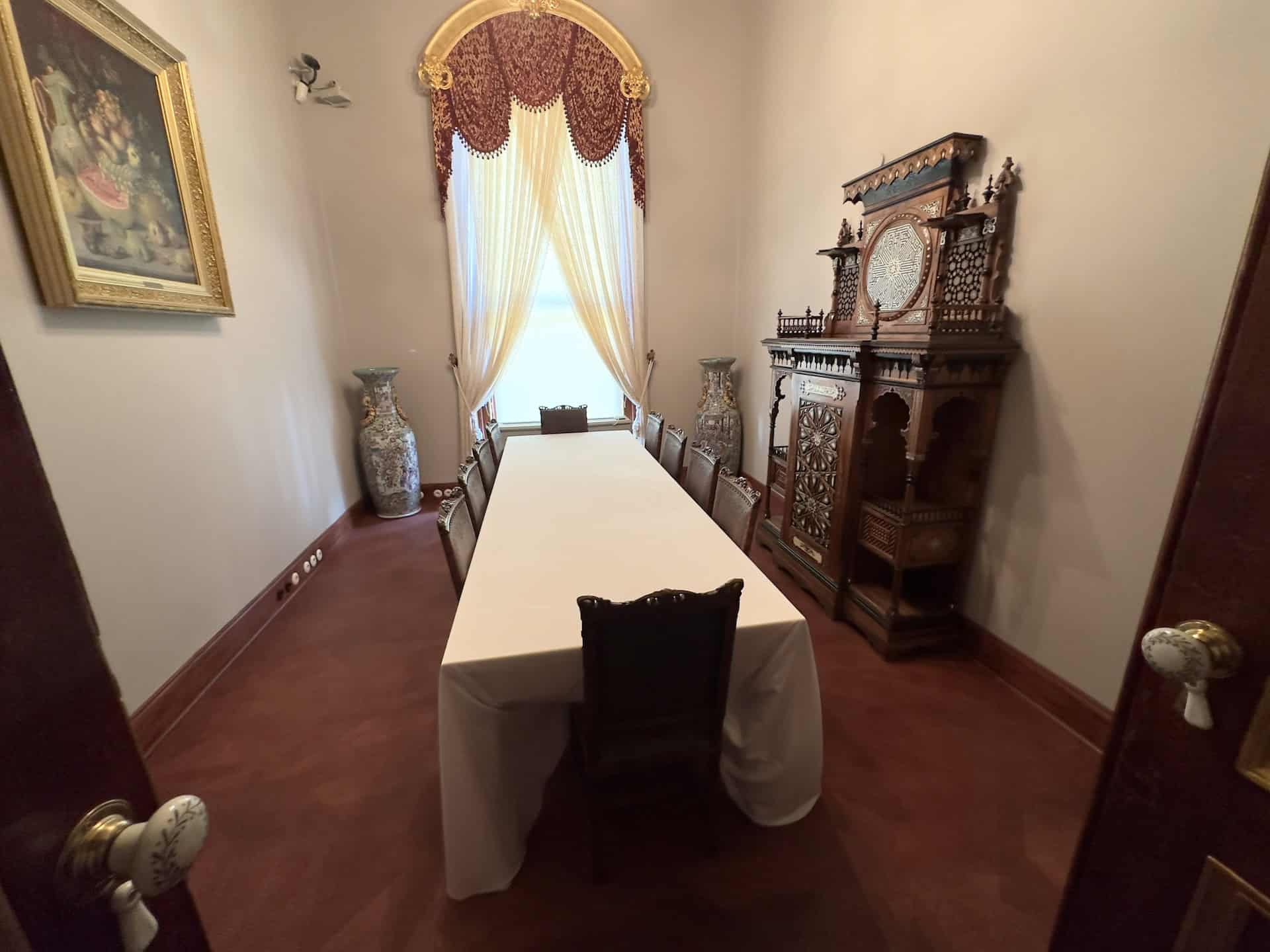
The Sultan would travel by boat to Sarayburnu and enter the palace grounds through the gate in the 4th Courtyard pictured above. Sultan Abdülmecid I himself only stayed one night and never returned, but subsequent sultans visited often.

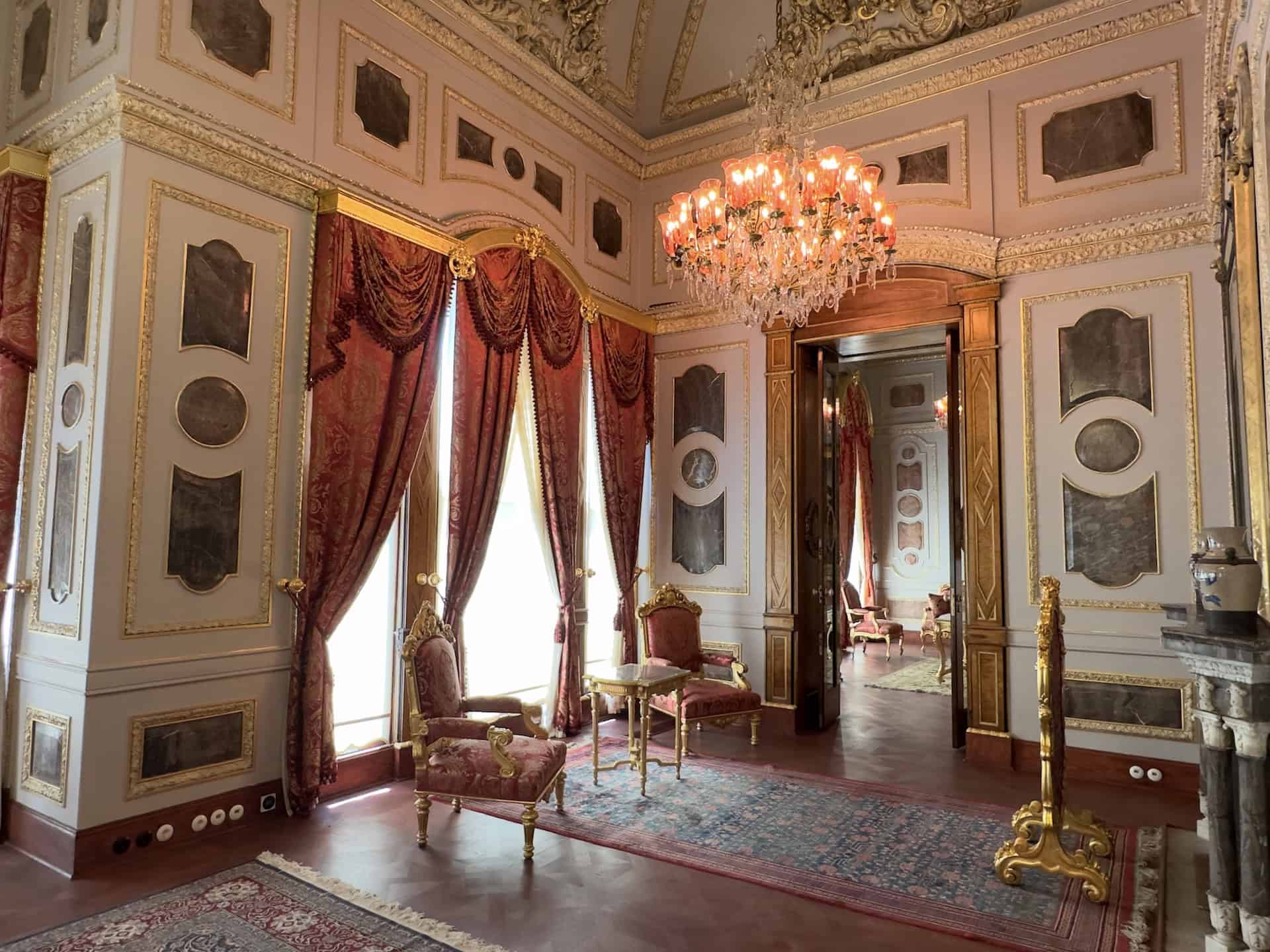
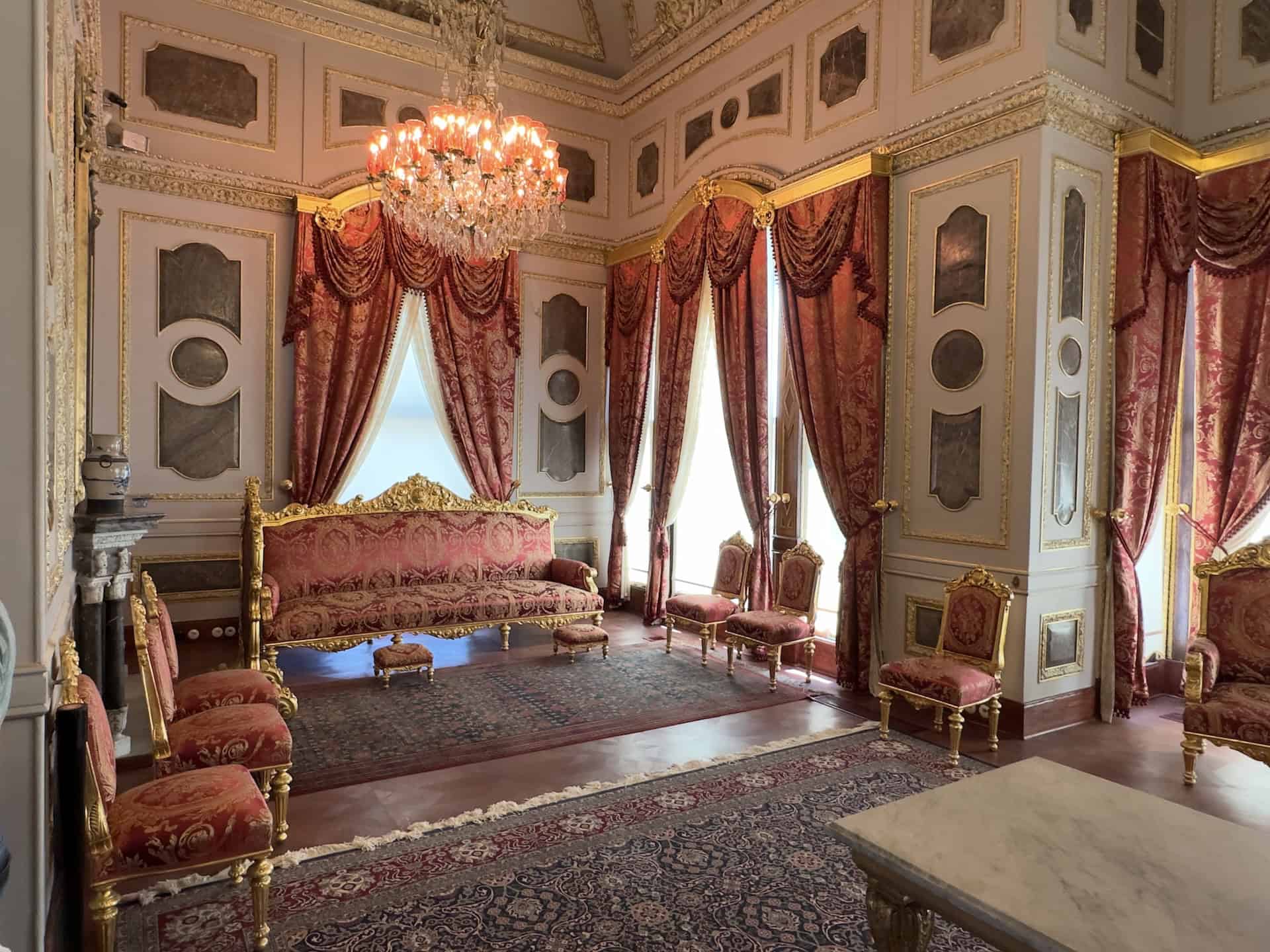
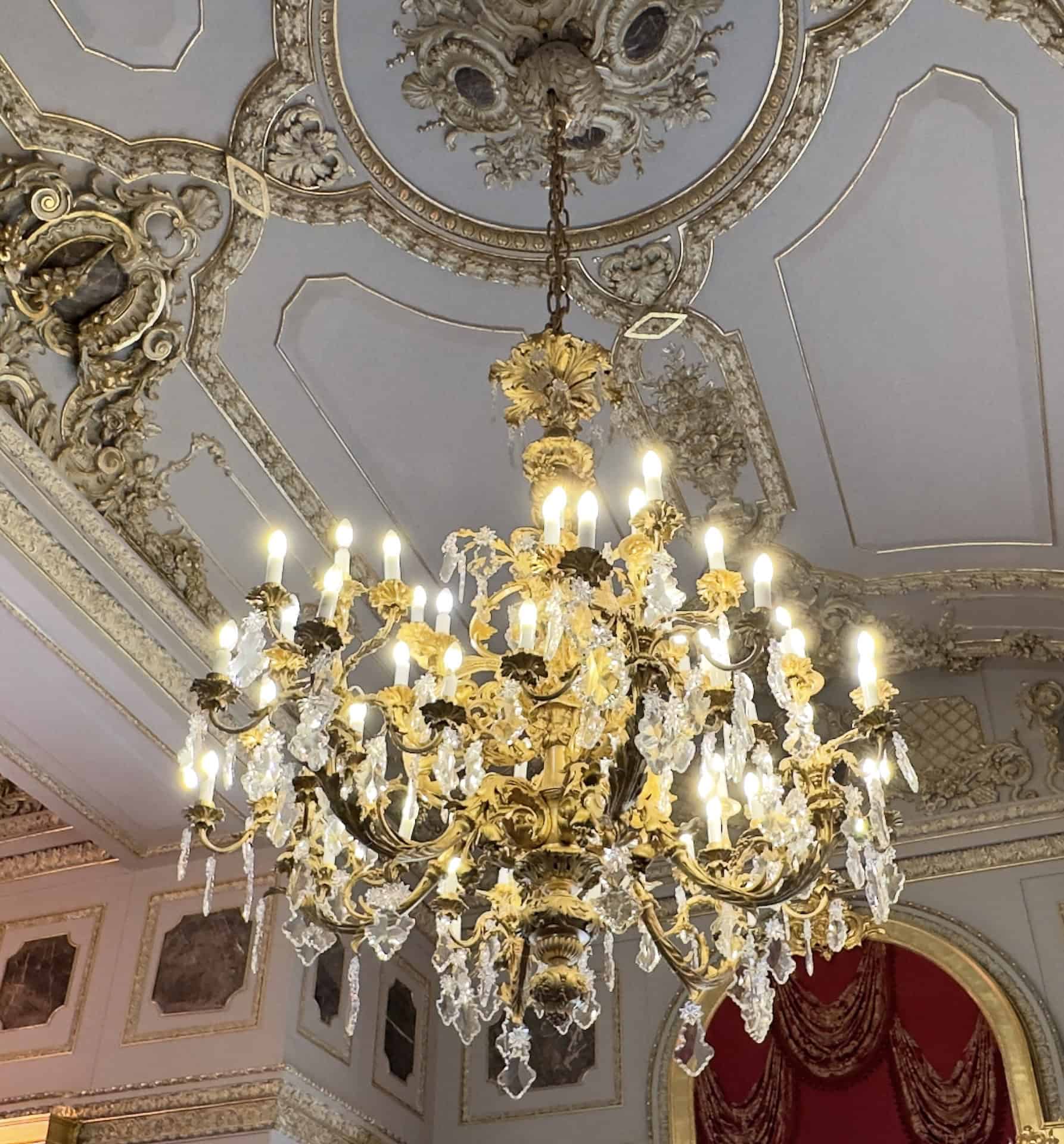
For many years after the palace opened as a museum, the Mecidiye Pavilion served as the facilities for the Konyalı Restaurant. It has since been restored to its original state and opened to the public for the first time ever on April 20, 2023.

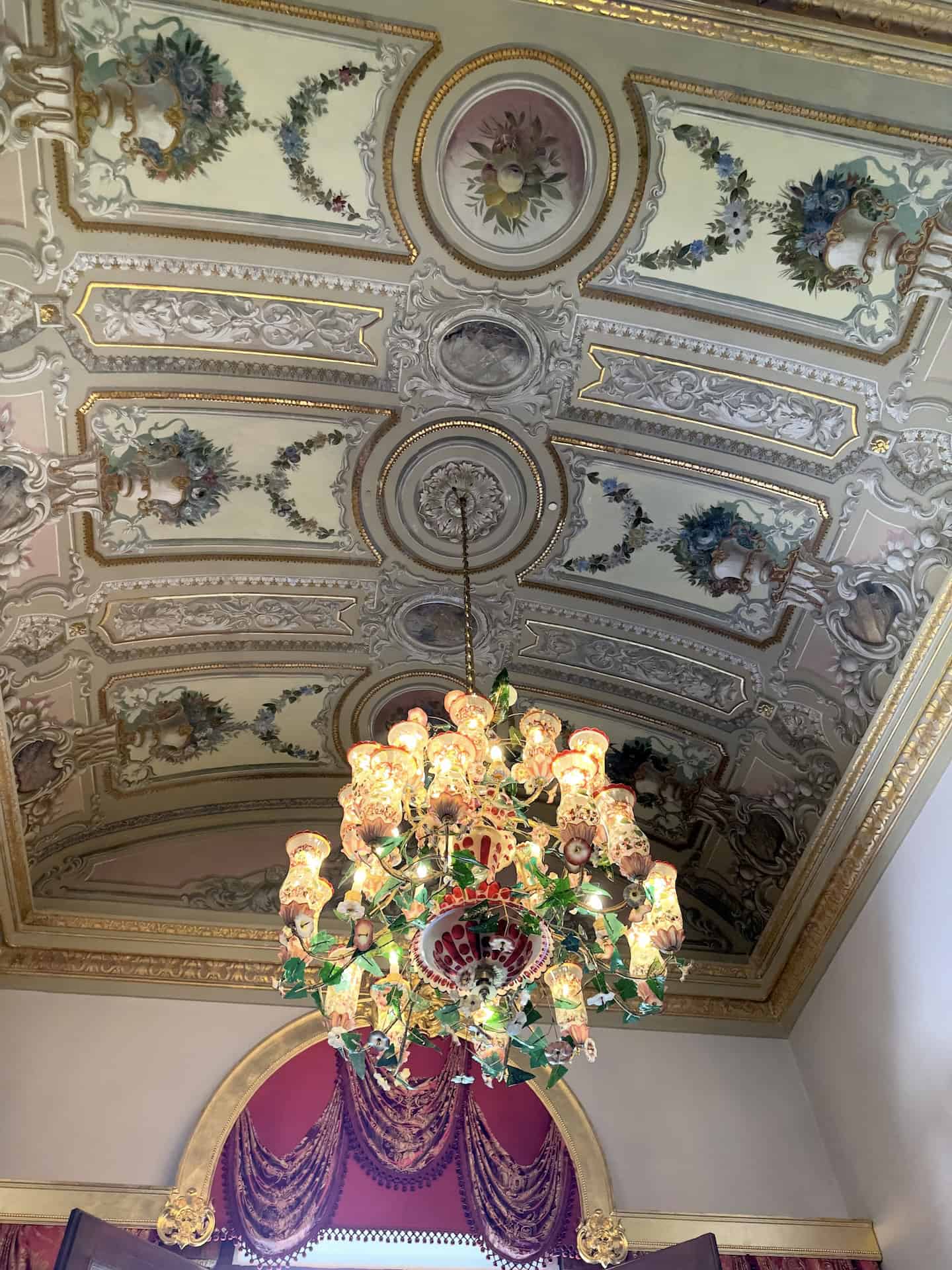
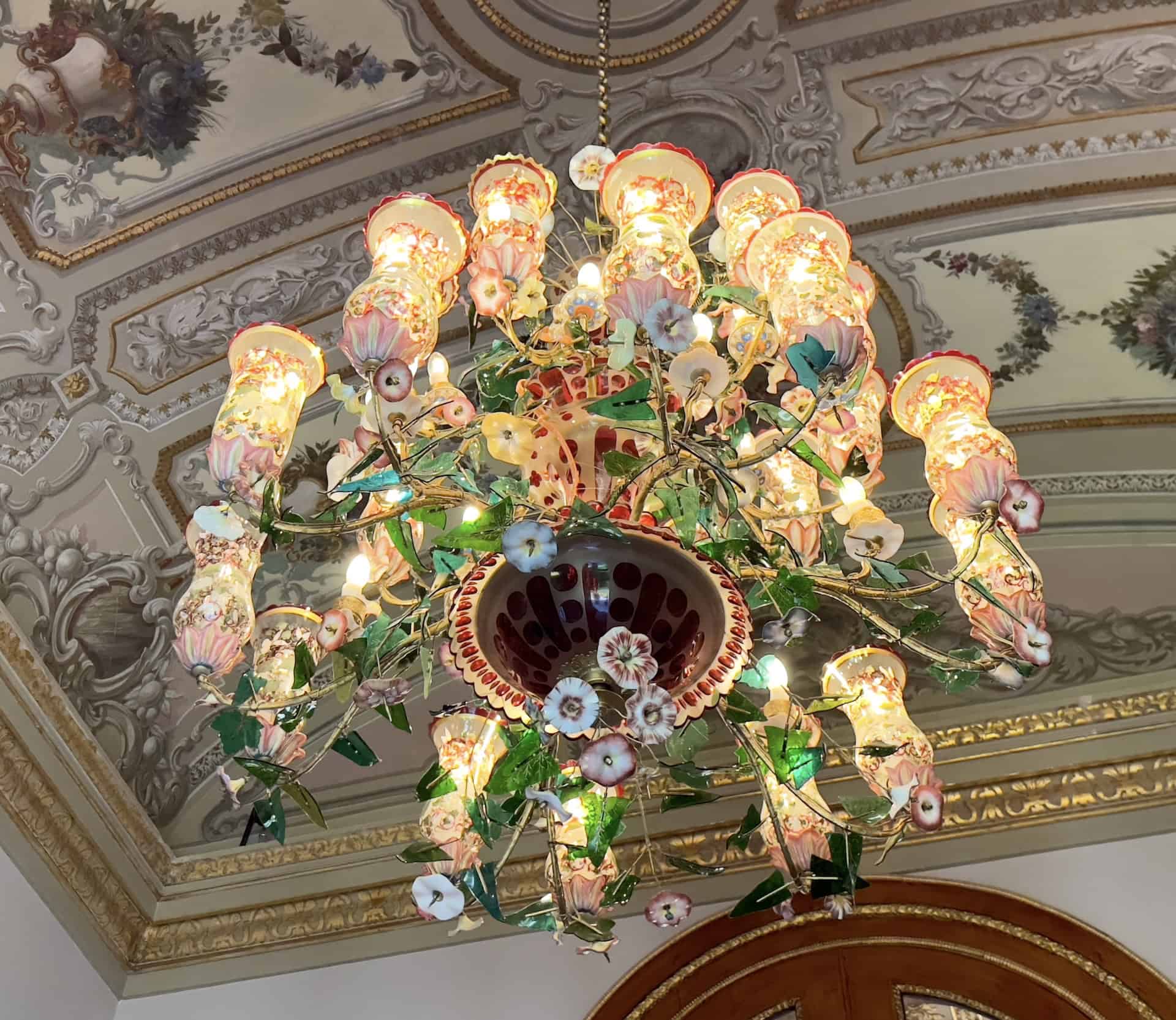

Wardrobe Chamber
The Wardrobe Chamber (Esvap Odası), also built in 1858, is just outside the Mecidiye Pavilion. The Sultan would dress there before visiting the Sacred Relics.
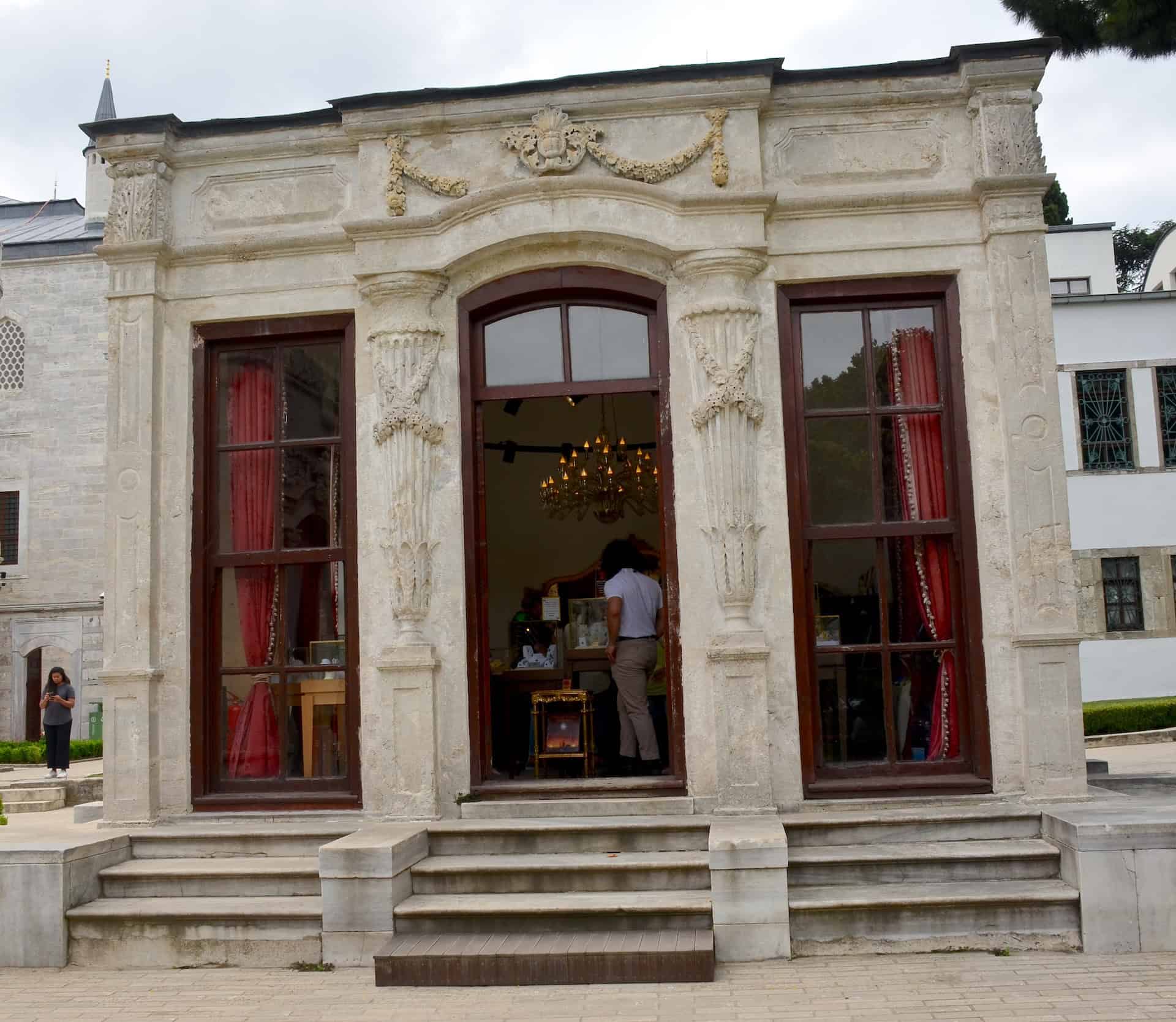
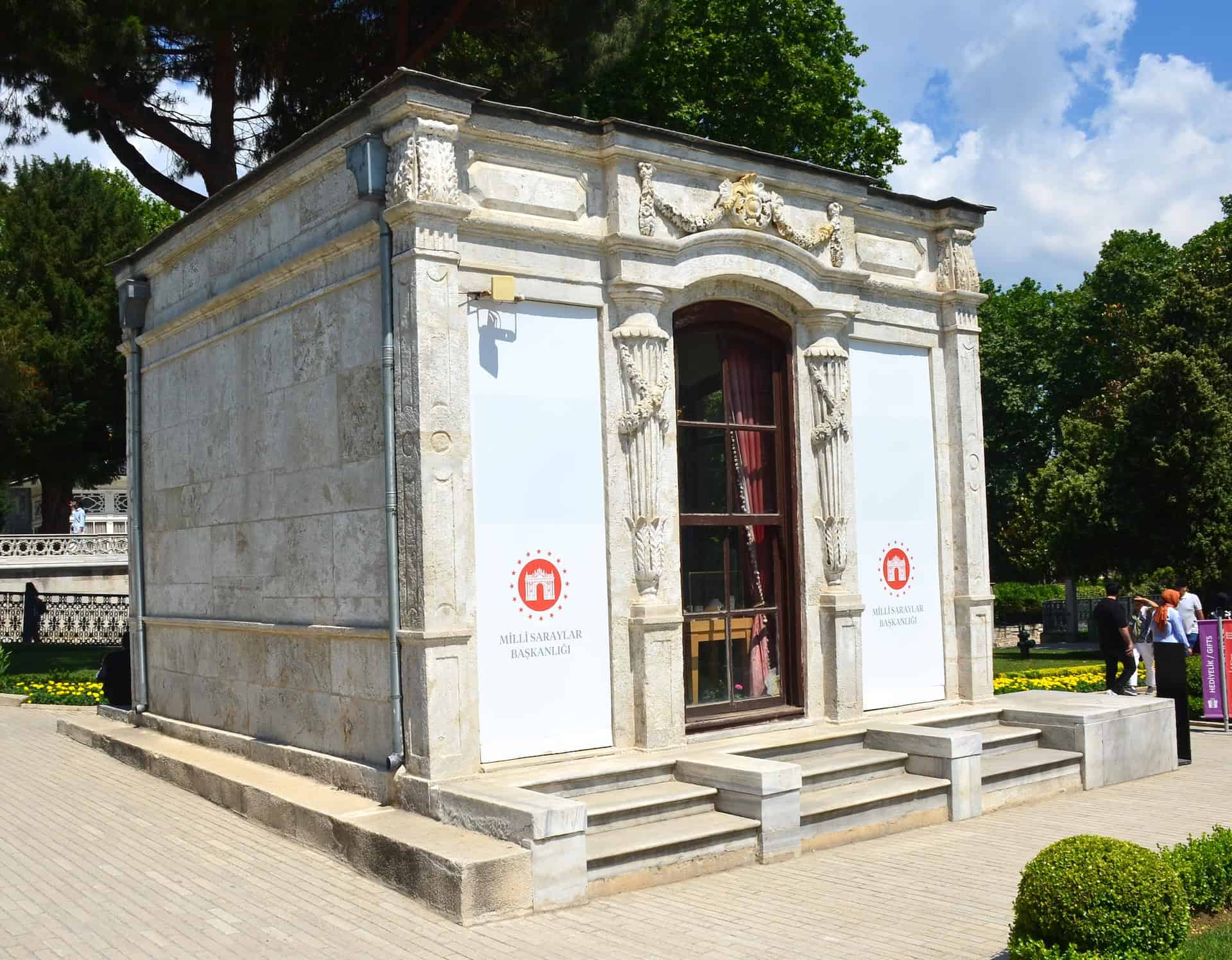
Terrace Mosque
Finally, a few steps from the Mecidiye Pavilion is the Terrace Mosque (Sofa Camii). It was constructed in the early 19th century under Mahmud II for officials of the Treasury Ward to perform their prayers. It stood on the space once occupied by Kiosk of the Swordbearer (Silahdar Köşkü), which was demolished in 1809. The mosque was restored by Abdülmecid I in 1858.
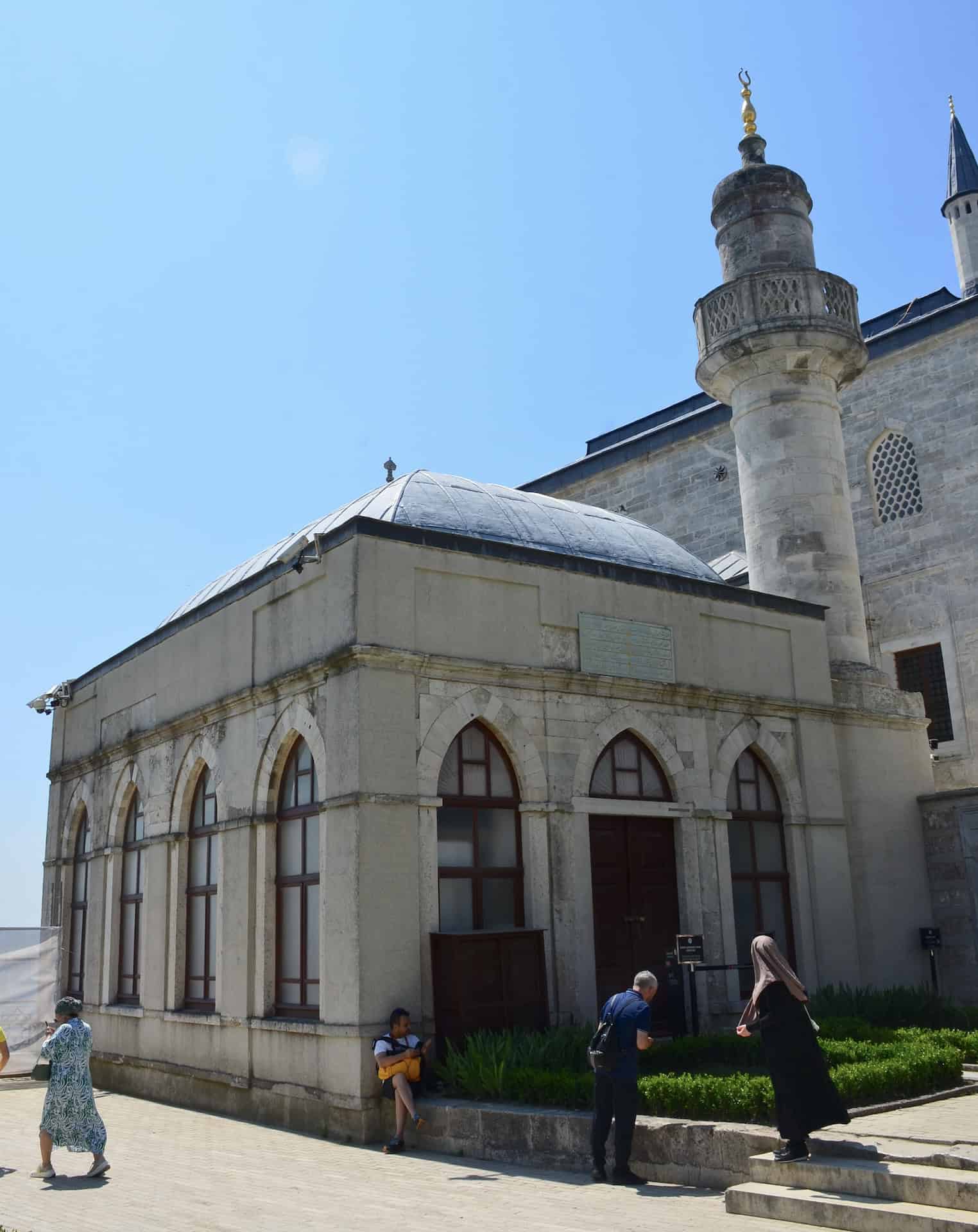

Tourist Exit to Topkapi Palace
The tourist exit to Topkapi Palace is via a gate on the west side of the 2nd Courtyard. Through that gate, you can get one more good look at the Tower of Justice and parts of the Imperial Harem.
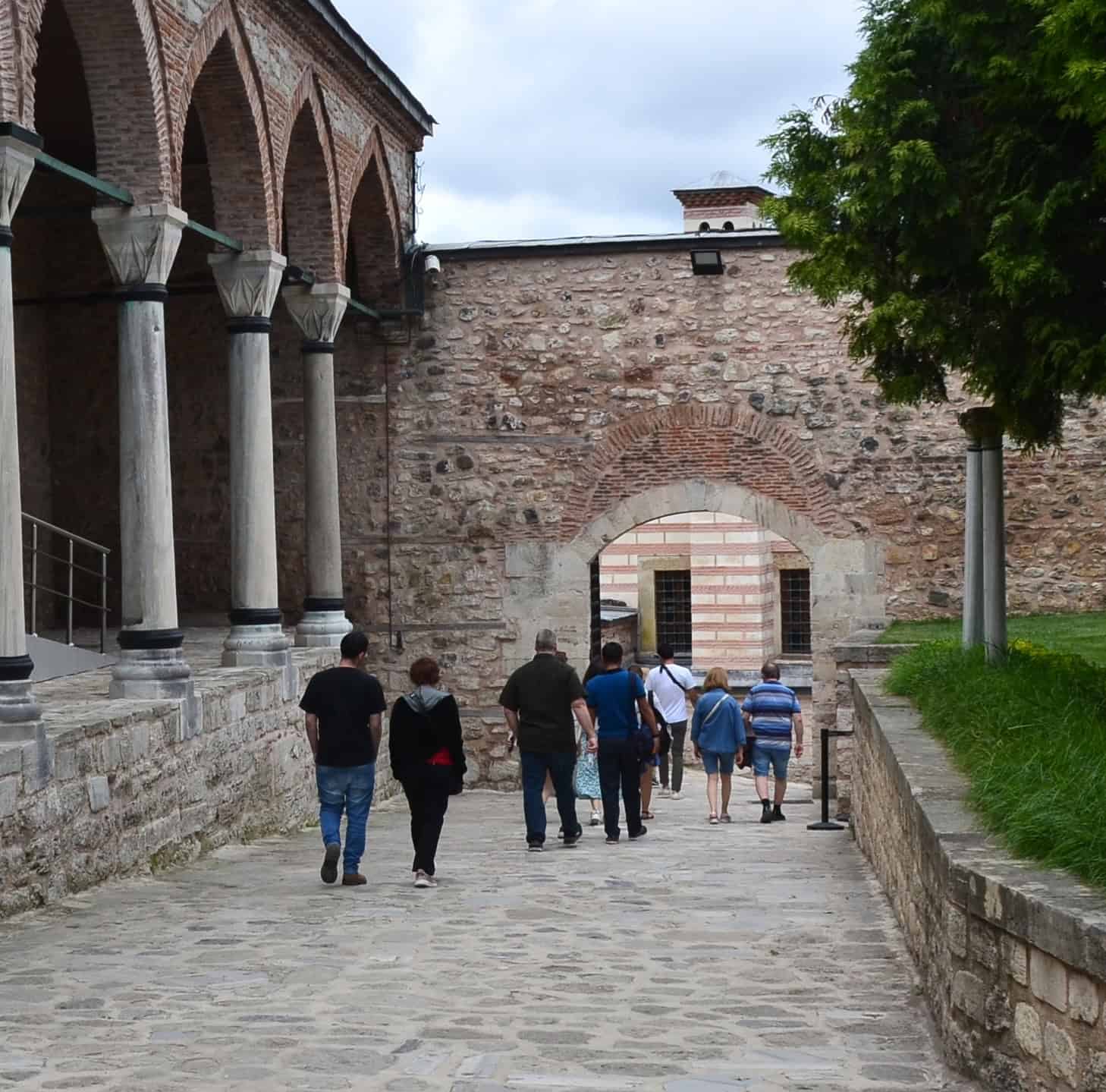
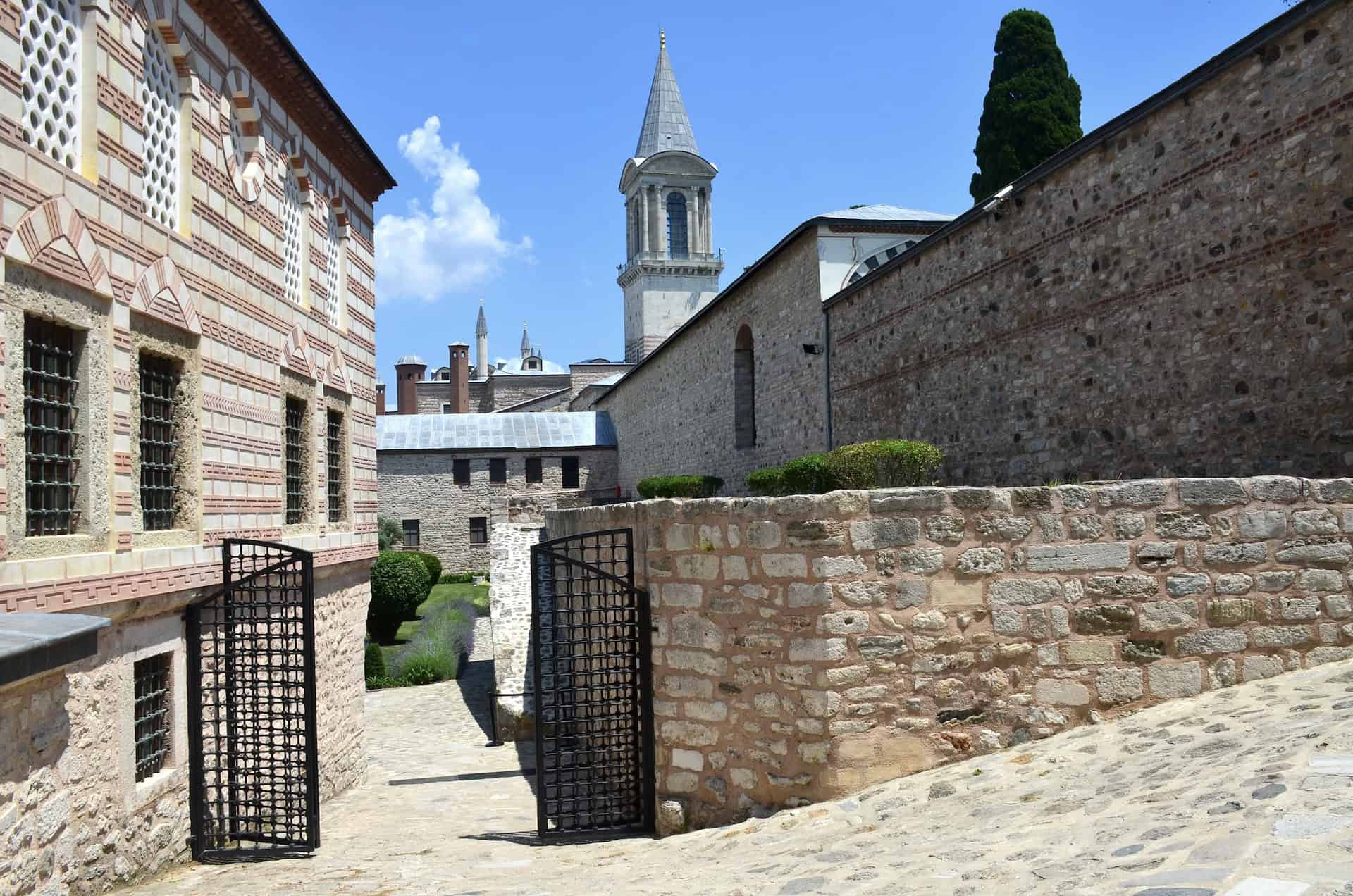
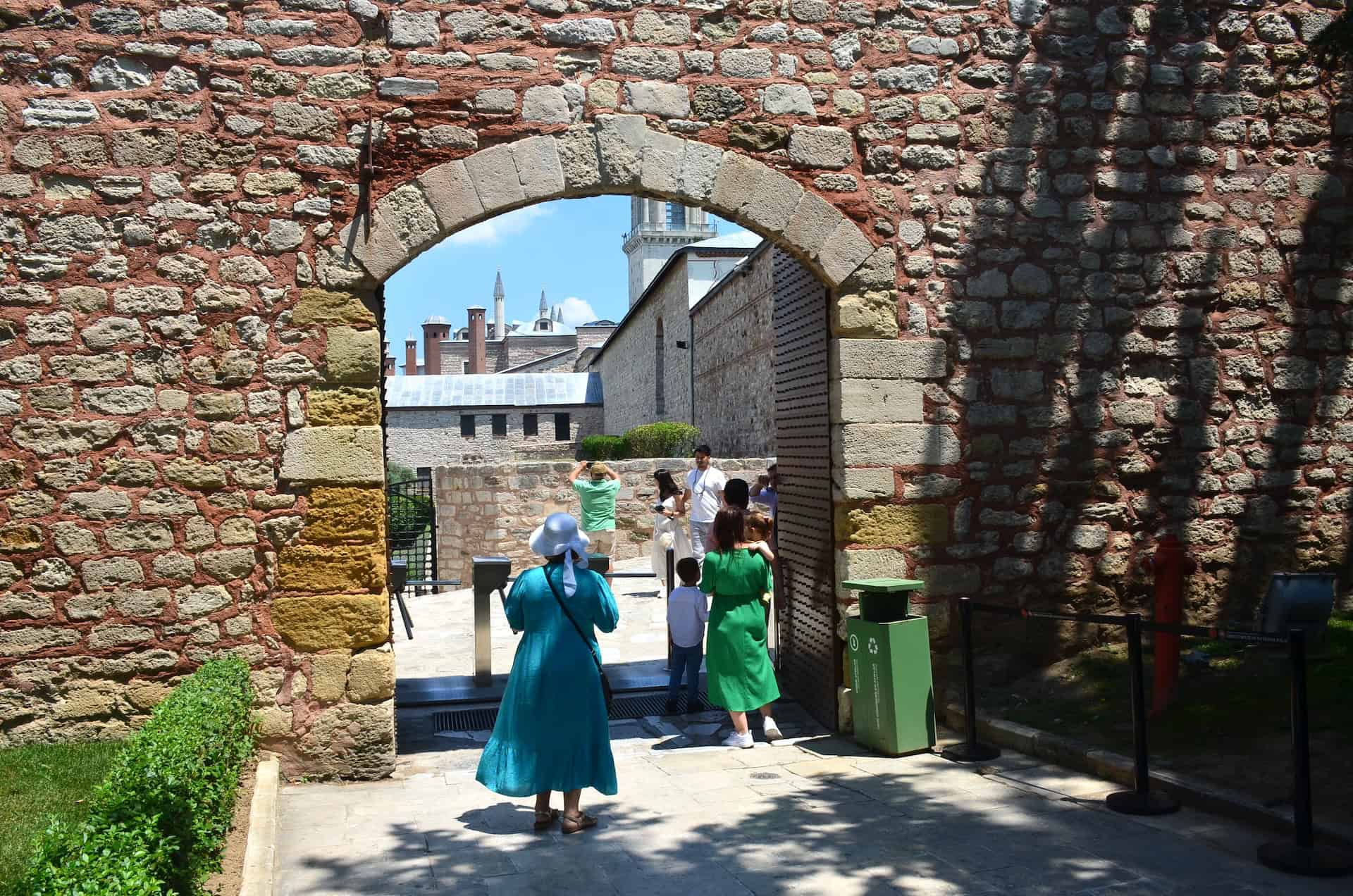
Beşir Ağa Mosque and Hamam
At the exit, you’ll see the Beşir Ağa Mosque (Beşir Ağa Camii) in front of you. It was likely built in the first half of the 18th century by Hacı Beşir Ağa (d. 1746), who was the Chief Black Eunuch of the Harem for 13 years under Ahmed III and 16 years under Mahmud I. The mosque is on a rectangular plan and features two rows of four windows on all four sides. It’s attached to a hamam.
